














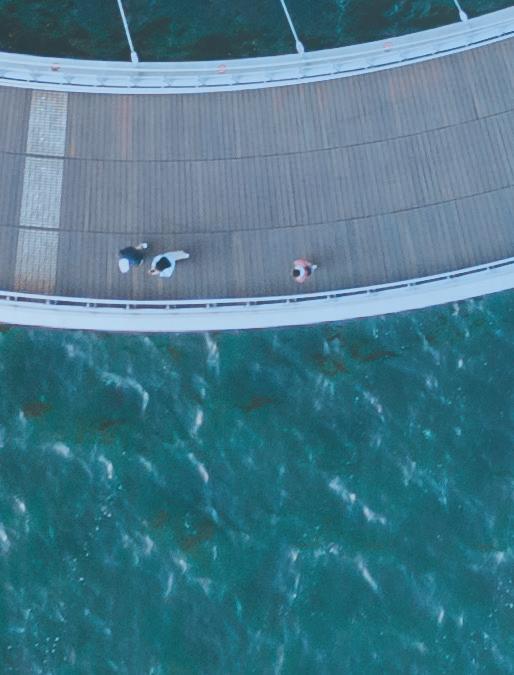


























Sha esbury Road, Cambridge CB2 8EA, United Kingdom
One Liberty Plaza, 20th Floor, New York, NY 10006, USA
477 Williamstown Road, Port Melbourne, VIC 3207, Australia
314–321, 3rd Floor, Plot 3, Splendor Forum, Jasola District Centre, New Delhi – 110025, India
103 Penang Road, #05–06/07, Visioncrest Commercial, Singapore 238467
Cambridge University Press & Assessment is a department of the University of Cambridge. We share the University’s mission to contribute to society through the pursuit of education, learning and research at the highest international levels of excellence.
www.cambridge.org
First Edition © Cambridge University Press 2021
Second Edition © Cambridge University Press & Assessment 2025 is publication is in copyright. Subject to statutory exception and to the provisions of relevant collective licensing agreements, no reproduction of any part may take place without the written permission of Cambridge University Press & Assessment.
First published 2021 Second Edition 2025
20 19 18 17 16 15 14 13 12 11 10 9 8 7 6 5 4 3 2 1
Cover and text designed by Loupe Studio Typeset by QBS Learning
Printed in Malaysia by Vivar Printing
A catalogue record for this book is available from the National Library of Australia at www.nla.gov.au
ISBN 978-1-009-65944-4
Additional resources for this publication at www.cambridge.edu.au/GO
Reproduction and Communication for educational purposes



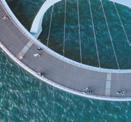





e Australian Copyright Act 1968 (the Act) allows a maximum of one chapter or 10% of the pages of this publication, whichever is the greater, to be reproduced and/or communicated by any educational institution for its educational purposes provided that the educational institution (or the body that administers it) has given a remuneration notice to Copyright Agency Limited (CAL) under the Act.
For details of the CAL licence for educational institutions contact:
Copyright Agency Limited Level 12, 66 Goulburn Street
Sydney NSW 2000
Telephone: (02) 9394 7600
Facsimile: (02) 9394 7601
Email: memberservices@copyright.com.au
Reproduction and Communication for other purposes
Except as permitted under the Act (for example a fair dealing for the purposes of study, research, criticism or review) no part of this publication may be reproduced, stored in a retrieval system, communicated or transmitted in any form or by any means without prior written permission. All inquiries should be made to the publisher at the address above.
Cambridge University Press & Assessment has no responsibility for the persistence or accuracy of URLs for external or third-party internet websites referred to in this publication and does not guarantee that any content on such websites is, or will remain, accurate or appropriate. Information regarding prices, travel timetables and other factual information given in this work is correct at the time of rst printing but Cambridge University Press & Assessment does not guarantee the accuracy of such information therea er.
Please be aware that this publication may contain images of Aboriginal and Torres Strait Islander people who are now deceased. Several variations of Aboriginal and Torres Strait Islander terms and spellings may also appear; no disrespect is intended. Please note that the terms ‘Indigenous Australians’ and ‘Aboriginal and Torres Strait Islander Peoples’ may be used interchangeably in this publication.
Cambridge University Press & Assessment acknowledges the Aboriginal and Torres Strait Islander Peoples of this nation. We acknowledge the traditional custodians of the lands on which our company is located and where we conduct our business. We pay our respects to ancestors and Elders, past and present. Cambridge University Press & Assessment is committed to honouring Aboriginal and Torres Strait Islander Peoples’ unique cultural and spiritual relationships to the land, waters and seas and their rich contribution to society. About the


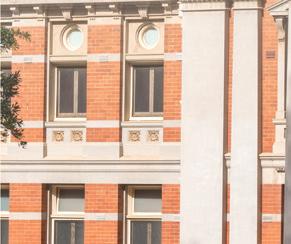
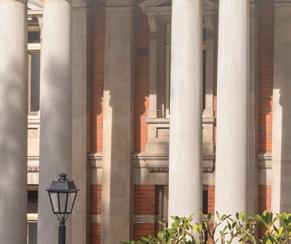







































5.2
5.3 The ways that humans in the production of food and fibre have altered biomes
5.4 The challenges to food production in Australia and the world
5.5 Food security
5.6 The effects of world population growth on global food security
5.7 The solutions for Australia and the world to achieve food security
5.8
5.9
6.2 The perceptions people have of place, and how this influences connections to
6.3
and
6.4 The ways that places and people are interconnected with other places through trade at all scales
6.5 The effects of people’s travel, recreational, cultural or leisure choices on places, and the implications for the future of these places
6.6
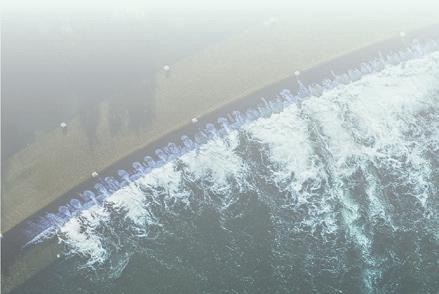
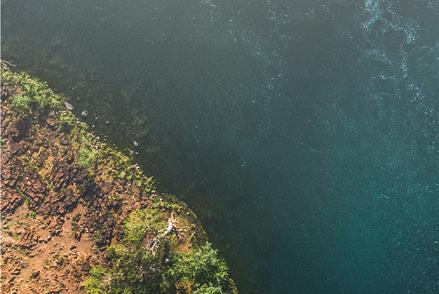
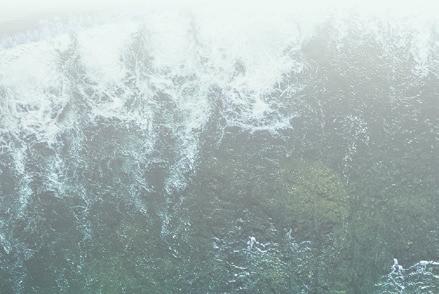





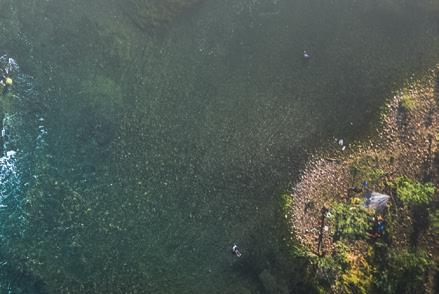

7.4
7.5
7.6

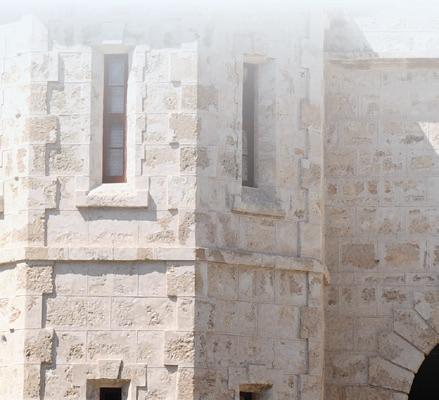
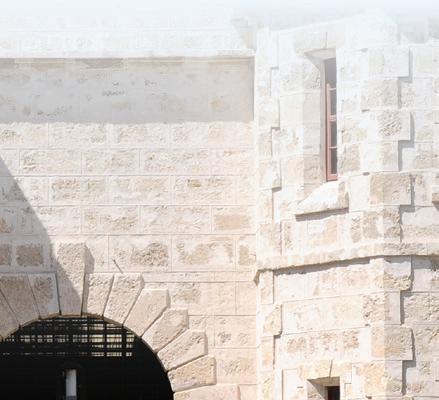
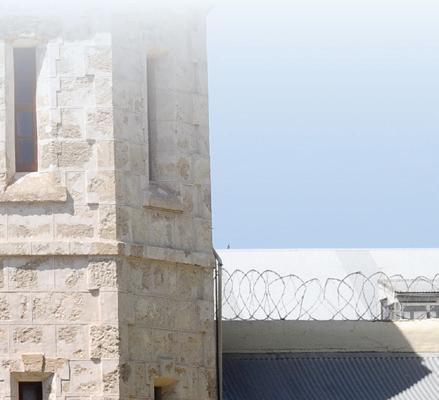
The Key concepts and HASS skills model on page x shows how this book has used an interconnected approach to integrate the subject matter and skills required throughout the Western Australian Curriculum for Humanities and Social Sciences.
This book contains four parts, with each part covering one of the four topic areas: Civics and Citizenship, Economics and Business, Geography, and History.
Each part of the book begins with a range of overview pages introducing you to the subject at hand.

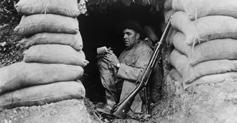

Chapter overview pages provide an introduction, list of learning goals, and digital resources available for the chapter. Some chapters also include a list of skills you will develop by working through the topic.
The pedagogical approach to supporting and developing learning growth that underpins this resource is represented by the Learning SOLO model on page xi, including suggestions for students and teachers on how to use this framework.
All chapters have been closely aligned to the Western Australian Curriculum for Humanities and Social Sciences (HASS) for this year level.
The History topic includes a detailed Historical overview
Each chapter within the History topics also opens with timelines of key events.


Relevant videos can also be viewed on your phone by accessing the QR code in the margin.
Glossary terms are bolded in the text, defined on the page and collated in the digital versions of the textbook for easy reference.
Every chapter also includes many skill-based activities aligned to the curriculum.
The end of chapter activities contain a variety of concluding tasks to consolidate and extend your learning.
A variety of activities explore key concepts and enable you to develop HASS skills while engaging with the topic.
Making connections between the HASS topics: at the end of each topic area we include a range of activities to help students and teachers make connections between the topics and expand their understanding of HASS concepts.
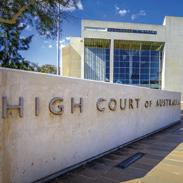

Each chapter section ends with a set of end of section review questions, to check your recall of the material, as well as the ability to interpret it and create arguments. Throughout the Year 9 and 10 books, there are also application questions for students looking for a challenge.
These activities are different for each topic, so they are useful no matter in which order the topics are learned.
At the end of the book is another activity, which brings the four topics together, called Putting it all together: key concepts for your memory bank. The authors have chosen certain key concepts per topic area to highlight in each year of the course from the Western Australian Curriculum. This activity brings these concepts together and can be used to consolidate the year’s learning in HASS, for revision, or as an assessment task.
This series offers a suite of digital tools in the Interactive Textbook and Online Teaching Suite, both powered by Cambridge Edjin.
This series offers a suite of digital tools in the Interactive Textbook and Online Teaching Suite, both powered by Cambridge Edjin.
In the Interactive Textbook, students will find:
• Engaging new videos that aid understanding and support skill development
• Auto-marked quizzes and Scorcher competitions for instant feedback and fun, timed challenges
• Self-assessment tools to rate progress, check answers (if enabled by the teacher), and flag questions for teacher support
• Downloadable worksheets for use in-class or as homework
• A downloadable PDF version of the student textbook for offline access.
In the Online Teaching Suite, teachers will find:
• Full access to the student Interactive Textbook
• Pop-up teaching tips
• Test generator to create and auto-mark custom quizzes
• Task management, monitoring and reporting tools
• Editable and downloadable resources, including:
• Chapter tests with answers
• Work planners for each chapter
• PowerPoint chapter summaries
• General capabilities projects with marking rubrics
• Worksheets with suggested responses
The key concepts and skills model below represents the interconnected approach in the Western Australian Curriculum for Humanities and Social Sciences, designed to integrate subject matter and skills. This book has been written with this framework in mind.
The Humanities and Social Sciences subjects include a range of skills that can be represented broadly as questioning and researching, analysing, evaluating, and communicating and reflecting. Students apply these skills to their everyday learning activities and as part of an inquiry approach to investigate historical and contemporary events, developments, issues, and/or phenomena. Inquiry is not necessarily implemented in a linear fashion and not all investigations will involve all skills. The Humanities and Social Sciences skills are applied across the learning area from Pre-primary to Year 10 and should be taught explicitly.
Propose explanations for events, challenges, developments, issues and/ or phenomena; draw evidencebased conclusions and explanations; and suggest courses of action in response to events, challenges, developments, issues and/or problems
democracy; democratic values; the Westminster system; justice; participation; rights and responsibilities
place, space, environment, interconnection, sustainability, scale, change
Present findings in appropriate forms for different audiences and purposes using subjectspecific terminology; reflect on conclusions/findings to consider consequences
KEY CONCEPTS AND SKILLS
sources; evidence; continuity and change; cause and effect; significance; perspectives; empathy; contestability
Develop questions about events, developments, issues and/or phenomena; collect and organise information, evidence and/or data, from primary and secondary sources
scarcity; making choices; specialisation and trade; interdependence; allocation and markets; economic performance and living standards
Interpret information, evidence and/or data to identify key points or ideas, points of view, perceptions and interpretations; identify the purpose of sources and determine their accuracy and reliability
The Learning SOLO model below presents SOLO taxonomy as an accessible scaffold for use by students and teachers alike, both in and out of the classroom, as an aid to learning growth. Students can visualise how to build on their knowledge using this model. All of the activities in this book have been structured in this way to develop understanding.
Students: this box can help you to understand how:
1 well you have learned something
2 you might clarify and build your learning so that you feel more confident
3 to use your teacher’s feedback to help you build your success
4 to use the different HASS skills to help you improve in class and assessment.
Extended-abstract Communication and reflecting + Questioning and researching + Analysing + Evaluating
Relational Communication and reflecting + Questioning and researching + Analysing
Multistructural Communication and reflecting + Questioning and researching
Unistructural Communication and reflecting
How to use this box:
1 In white writing are the skills you will be using in your HASS classes and in assessments to demonstrate what you have learned.
• You will notice that the higher boxes add on skills to the boxes below them.
• This represents how your learning becomes more complex because you are connecting skills and/or ideas.
2 Use the black writing to help you understand how much you are connecting your skills and your ideas.
For example:
Unistructural – You are identifying something you have learned
Multistructural – You are working with information you have learned
Relational – You are connecting pieces of information that you have learned
Extended-abstract – You are connecting content you have learned with previous learning and learning from other areas
create, evaluate, assess, argue, hypothesise, debate, predict, measure, criticise
analyse, compare and contrast, correlate, question, integrate, structure, explain, deduce, link
explain, articulate, organise, question, choose, determine, make simple judgements, infer
describe, outline, identify, summarise, copy, select, memorise, define, match, retrieve, repeat, find
Teachers: SOLO stands for Structure of the Observed Learning Outcome. You will find supporting information for using this framework in the Online Teaching Suite.
In each section are words that you will use in the learning activities that you do in your classes.
• You will notice that these words are different as you move through the sections.
• The words in each section tell you about changes in how you are learning.
• As you move through each section, what and how you are working is becoming more complex because you are connecting skills and/or ideas.
For example:
Unistructural – You are using your learning and your communication skills to copy, list or identify. These are some of the simpler skills to use.
Multistructural – You are using your communication and thinking skills to start describing and explaining connections in what you have learned.
Relational – You are using your communication and thinking skills to explain and analyse your learning by connecting different parts of what have learned.
Extended-abstract – You are using your communication and thinking skills to assess, debate and evaluate what is important from what you have learned by connecting different parts of your learning with other things you already know.







Sally Davies (lead author) has a degree in Classics and Ancient History and has been teaching Humanities, Ancient and Modern History and English for 25 years. She is passionate about her speciality, Roman (and all other things Ancient) History, but best loves working with young people to engage them in the core skills of critical thinking and problem solving, which the HASS Learning Area does best. She has worked with the School Curriculum Standards Authority as an EST writer, ATAR Chief Examiner and Chief Marker and has written for ACARA. Sally has developed ATAR and General Course syllabuses through her involvement with the Ancient History Course Advisory Committee, which she currently chairs. Sally is Vice President of the History Teachers Association of WA (HTAWA). In this role she writes study skills books, edits the ATAR Good Answer Guides, and facilitates learning for teachers and students.


Emilie Ingate (Civics and Citizenship author) is a senior teacher who has been teaching Humanities and Social Sciences for over 12 years. She has recently added a Certi cate IV in Legal Studies to her Bachelor of Arts in Politics and International studies. She believes Civics and Citizenship is a subject connected in many ways to our everyday lives, hoping to show students the relationships between laws, justice, people, power and decision-making that in uence their lives. She has experience teaching both ATAR and General subjects such as Politics and Law, Modern History and Psychology
Emilie would like to thank her people (too many to mention) who have provided encouragement and reassurance during this process, and she sincerely appreciates her fur family who have calmly sat with her while writing, providing emotional support and distraction via walks.


Anthony Lunt (History author) has taught History for over 30 years, in government, independent and Catholic schools. He has postgraduate quali cations in heritage studies and a PhD in History from the University of Western Australia. Anthony has been a Western Australian Certi cate of Education (WACE) marker for many years, and presented numerous seminars for both students and fellow teachers. He has most recently been teaching at the School of Isolated and Distance Education in Leederville, Western Australia.
Anthony would like to thank his wife, Susannah, for her patience and support during the writing of this book.
Nathan McKenzie (Economics and Business author) is an experienced HASS and Economics teacher with a growing role in pastoral care within the government sector. He has also taught Business Management and Enterprise as well as Workplace Skills Vocational Courses. Having studied Politics, Philosophy and Economics along with Business Management, he is an advocate for Economics being understood as a study of collective and individual behaviour and decision-making, interdependent with the other humanities strands. Nathan is passionate about improving economic and nancial literacy among Western Australian students, helping young people understand the wider picture and their place in it.
Nathan would like to thank his wife Kate, and their children Lachie and Elodie, for their support during the writing of this book.
Jessica Threlfo (Geography author) is a Humanities and Social Sciences teacher, specialising in the delivery of ATAR Geography. She has taught a range of HASS subjects in Western Australian public secondary schools for more than 15 years, with a particular passion for differentiated learning and assessment. Jessica is a passionate advocate for the inclusion of skills-based learning and the use of ICT to enrich Geography education.
Jessica would like to thank her husband Adrian and their two children, as well as her work family, for their support in the writing of this book.
















All Australians are citizens of a democratic country. This provides the opportunity to influence the decisions that impact you.
The age that you can drive, your hours and rate of pay at work, the age that you can drink alcohol are all decisions or laws made by parliaments. Every aspect of your life is affected by laws telling you what you must or cannot do; for example, when driving you must wear a seatbelt, and it is illegal to speed.
Civics and Citizenship studies the political and legal systems that make and enforce these laws and evaluates the effectiveness of these systems. This includes examining Australia’s electoral systems, political parties and independents, as well as how modern communication platforms such as social media can influence voters’ choices. This subject considers the ways young people can actively participate in democracy in Australia, influencing the decisions of parliament. Most importantly, studying Civics and Citizenships provides the knowledge you need to have a say about the issues you care about.
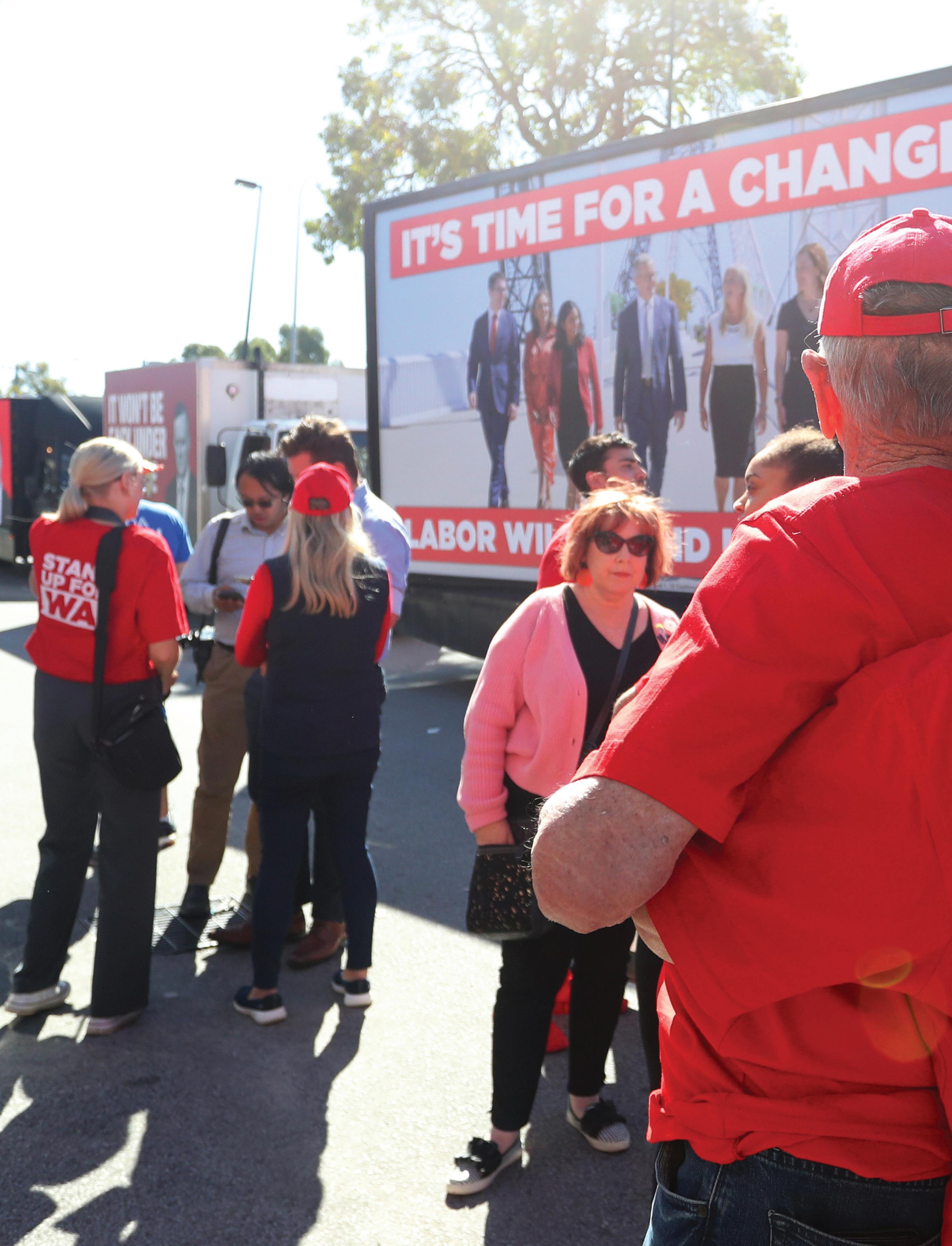
Throughout this unit there will be a focus on developing your understanding of choice, participation and justice Choice is a concept that everyone will be familiar with and affects them day to day. Every choice made has a consequence and in civics and citizenship it is important that choices are made deliberately and after gathering reliable and relevant information. In Civics and Citizenship, the concept of participation allows people to exercise power, the key feature of democratic systems. Open political participation, through voting, protesting, volunteering and engaging with political representatives creates and protects a figurative space for individuals and groups
to have influence in the political sphere and have community issues addressed. Justice is a concept that boils down to ‘fairness’.
Society is in essence unequal and while we are often taught that everyone should be treated equally, this does not always lead to equality or equal outcomes. For example, young people commit crimes. Equality would be having them charged and go to trial in the same courts as adults with the same punishments. This would be a situation much like Georgian and Victorian England. Justice would be to acknowledge that children are not adults and are still learning and may need greater support to make the right choices. In our legal system this can be seen in the existence of a separate Children’s Court with distinct punishments for juveniles.
At the core of this unit is people and as you can see, the people are connected to government, law and justice but are influenced by many external factors. Many influences impact multiple areas individuals and groups. In a democracy
• The people elect their representatives, who should act on their behalf in parliament.
• The people can both help create ideas and support for laws.
At the same time, they are influenced by individuals, groups and media about the governments and laws. They must also follow these laws.
• The people have rights and responsibilities as members of a democratic society, such as voting and following the law.
• If a person comes into contact with the legal system, that system should be able to provide justice through opportunity to have a dispute heard, fair processes, judicial review and impartiality and independence of judges.
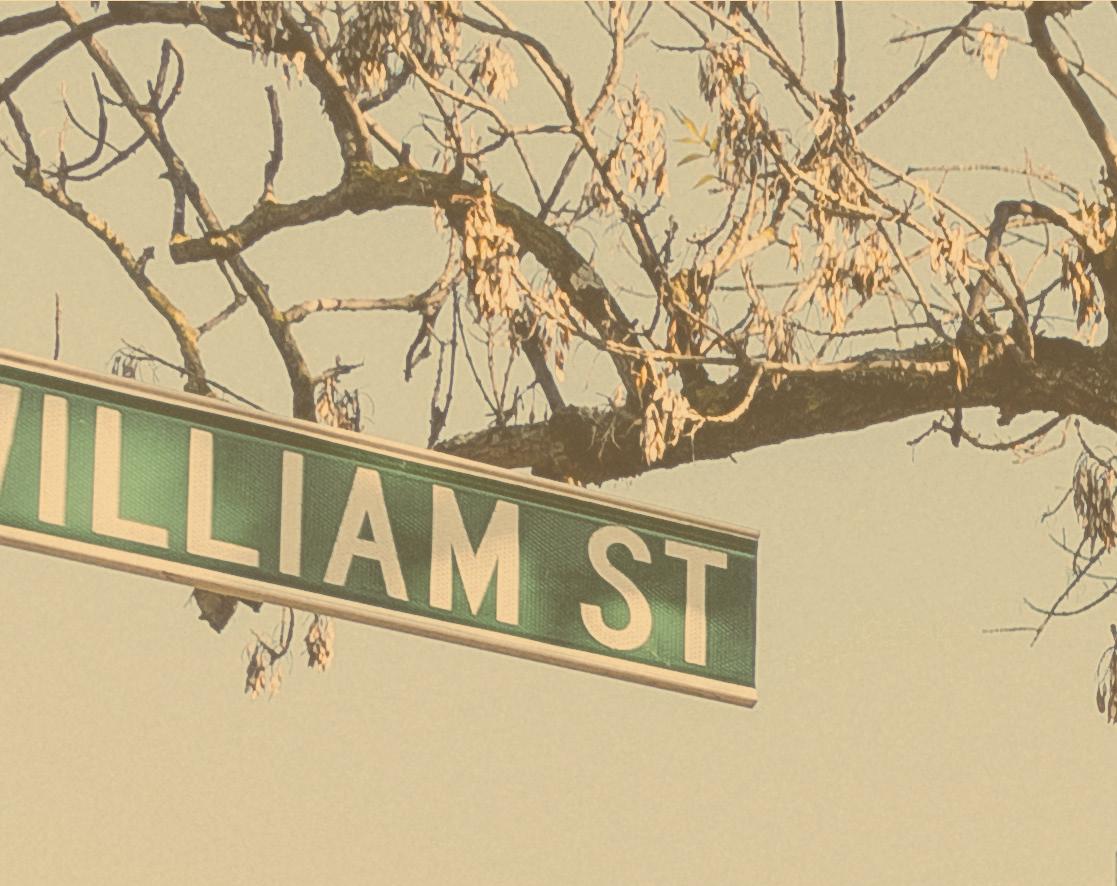















This chapter examines the features of Australia’s political and legal system, in particular the role of political parties and independents, and considers how citizens’ political choices are influenced at election time, particularly through social media and other communication technology and networks. Lastly, it will investigate how young people can be involved and actively participate in local, national and global civics action.
After completing this chapter, you should be able to answer these questions:
• What are the key features of the Australian political system and what is the role of political parties and independents in this system?
• What methods do political parties and independent candidates use to influence voters at election time?
• How can social media and other communication networks impact understanding of political issues?
• What are the ways in which young people can actively participate in civic life (locally, nationally and globally)?
Visit the Interactive Textbook to access:
• interactive Scorcher Quiz
• videos, image galleries and other extra materials.


• What are the key features of the Australian political system?
• What is the role of political parties and independents in this system?
institution an organisation used by political leaders to gain power or rule a country (e.g. a public service department, police or the courts) system of government how the institutions used to gain power and rule a country are organised. There are many different systems of government, including democratic and authoritarian governments liberal democracy a system of government that is a representative democracy and follows the rule of law.
rule of law a concept in which all people, institutions, parliaments and governments are accountable to the law. The laws are applied equally, no matter the status of individuals. No one can be above the law, including the lawmakers.
The power to rule a country is achieved in many ways, including by birth (hereditary monarchy), by force (authoritarian) or by popular choice (democratic). Rulers use institutions, such as parliament, the public service, police, courts and the army, to exercise power and rule a country. How leaders gain power and the institutions they use to rule are known as a system of government. Australia’s system of government is called a liberal democracy. This means that it is a ‘representative democracy’, where citizens, the people, vote to elect representatives to make decisions regarding the running of their country on their behalf. If the people are unhappy with their representatives, they can vote them out at an election. Liberal democracies
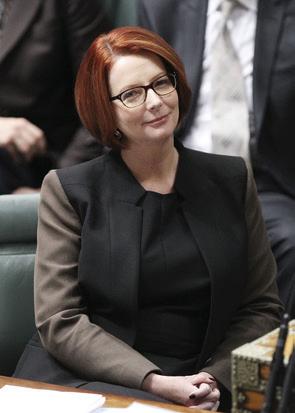

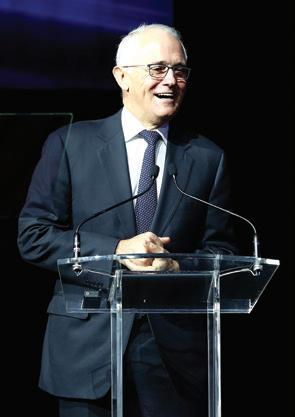
also follow the ‘rule of law’, meaning that in exchange for obeying the law, citizens expect laws to be fair and to apply equally to all members of the community.
In Australia, citizens do not vote directly for the leader of the government, the Prime Minister, they vote for parties or independents. Each political party has a leader who is chosen by the political party members. This leader should represent the values and beliefs of the party. To become Prime Minister, a government must be formed first, and the leader of the political party or coalition with the majority of seats in the House of Representatives (Legislative Assembly in Western Australia) will be appointed Prime Minister by the Governor-General. A Prime Minister may change between elections because a political party may hold a vote to change their leader.


Amazing but true…
Did you know that we have a King of Australia? Charles III is King of the United Kingdom and the other Commonwealth realms, including our nation, and has been on the throne since September 2022. Under the Australian Constitution, the monarch’s role is exercised by the GovernorGeneral as the King’s representative. However, you may be wondering what is the role of a ‘King’s representative’ in democratic Australia? The answer is that although the Australian system of government is based on the idea of liberal democracy, it is also a constitutional monarchy. This means that while the Commonwealth and state/territory governments are chosen by the people through elections, the highest political office – the Head of State – is in fact the King of Australia. He is represented in Australia by the Governor-General and state Governors. However, the Governor-General and Governor roles are mostly ceremonial. In practice, the executive powers of the Head of State are carried out by the Prime Minister and state premiers.
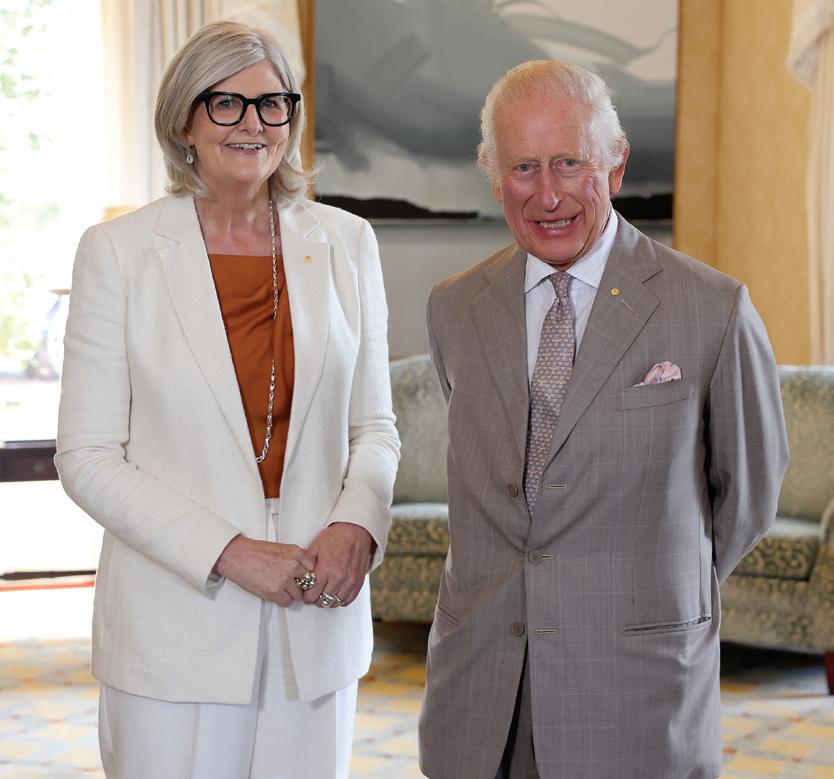
Australia’s political system is democratic, and the concept of democratic values relates to the things that people consider to be important about our way of life as a society. It refers to people having decision-making power over their lives. In a representative democracy, citizens vote for representatives to act on their behalf in parliament and make laws. Many of these representatives are from political parties, and those political parties or coalitions that achieve at least 50 per cent + 1 or 76 seats in the House of Representatives are able to form a government. Having the freedom in a democracy to contribute to these decisions on who leads us is a cherished democratic value. Pop this concept into your memory bank – at the end of this book is an activity that will test your understanding of this, and other key HASS concepts!
At election time, citizens in a representative democracy face the difficult decision of who to vote for. There are many reasons why a voter may choose a particular candidate, such as their performance against the opposing political party, the values and beliefs of the party, the policy of the political party and the campaign they have run at election time. In most democracies, political parties have formed as larger groups have a better chance at forming government and therefore implementing their policy and laws to run the country.
Political parties are groups of people with similar views who join together
with the aim of having their members elected to parliament with the hope of forming or influencing government. Members of political parties in parliament will vote the same way on issues of concerns and draft laws (bills) unless a free or conscience vote is given. In Australia, to register a political party with the Australian Electoral Commission you must meet the following eligibility requirements:
• have a written constitution
• a party name
• nominate a registered party officer
• state if public election funding will be received
• provide evidence of parliamentary membership OR a membership list of at least 1500 members
• pay a $500 application fee.
conscience vote a vote in parliament on bills or issues that can be made by an individual’s own beliefs and values, without following or aligning to party policy
free enterprise a belief that businesses should operate with limited regulation by governments coalition when two or more political parties join together to create a larger group capable of forming government party platform an outline of a political party’s aims, values and the policies they intend to implement if elected to government policy principles that are followed or a proposed course of action to be taken by a group, an individual or a political party

In Australia there are over 500 registered political parties. The three main political parties are:
• the Australian Labor Party (ALP), which is the oldest party in Australia, and traditionally represents the interests of unions and workers
• the Liberal Party of Australia, formed in opposition to the ALP and meant to represent the interests of small businesses and free enterprise
• The Nationals, which often forms a coalition with the Liberal Party of Australia and represents the interests of those living in regional or remote areas of Australia.
Political parties create a party platform that outlines the aims, values and policies of their political party, and indicate what the party would do if elected to government, or what policies it would support. A party platform generally remains consistent across the lifetime of the party and its policy may change from election to election based on changes to what the electorate (voters) want to see happen.
A major party is large enough to win enough seats in the House of Representatives and form government or
opposition (the second largest political party in the House of Representatives). It has strong support nationally from a wide variety of voters.
The Australian Labor Party is the oldest and largest major political party, formed in the 1890s from the trade union movement. It still has strong ties to the union movement and its most current policy and platform while in government has centred on social development. For example, announcing $500 million in funding for women’s health, three-day childcare guarantee, cutting $3 billion from student education HECS debts, no-contact hours for workers and social media bans for those under 16 years of age.

The Liberal Party usually governs in coalition with the National Party, a party formed to represent people living in regional areas. In coalition they are known as the Liberal-National Coalition and have been working together since 1949. While each party may be unable to govern on their own, together they are able to form government. Other minor parties include the Greens.
The Liberal Party was formed in 1944 from a break away from existing parties, the United Australia Party and the Nationalist Party. Often considered the more conservative and traditional party, it values include protection of the family, small business, large corporations and lower taxes. Its current policy features: increasing energy production with a combination of renewables, gas and nuclear energy, allowing first home buyers to access superannuation to purchase homes, lowering the number of international students coming to Australia in order to reduce housing pressure and ending the live sheep export ban.

The Nationals historically support the communities in regional and rural Australia in the halls of Canberra. They protect the interests of farmers and ensure vital infrastructure is provided to country areas to keep them connected. They govern in coalition with the Liberals when they have achieved a majority in the House of Representatives with the Nationals leader becoming the Deputy Prime Minister and the Liberal leader becoming Prime Minister. Current Nationals policy includes increasing gas production, ensuring fairness in supermarket pricing, improving incentives for medical professionals to train and live in regional areas and increasing road and bridge maintenance.
The Greens are an environmental party, founded in 1992, that emerged from the Franklin River dam protest movement in the 1980s. Its four key principles are ecological sustainability, grassroots democracy, social justice and peace and non-violence. Current policy of the Greens centres on taxing large corporations, greater funding for Medicare and dental care, regulating banks to lower mortgages, reducing coal and gas developments, increasing renewable energy and stopping native forest logging.

The Australian Greens originated from various environmental movements in the 1970s and 1980s, and have campaigned to protect unique biomes, such as temperate forests and river ecosystems, from industrial development. Some of their notable campaigns are below.
• Franklin River Campaign: The Greens’ early protests against the Franklin Dam aimed to protect the temperate rainforest biome in Tasmania, characterised by high rainfall, diverse plant species, and rich soils.
• Great Australian Bight: The Greens have campaigned to protect this marine biome from oil drilling, highlighting its unique ecosystems and biodiversity.
• Murray-Darling Basin: The Greens have advocated for sustainable water management in this biome, which includes riverine and wetland ecosystems critical for agriculture and wildlife.
The Greens have since evolved into a political party that advocates for environmental protection and social justice. Visit the following websites to learn about the origins of the Greens as a protest group and the specific environments they aim to protect, then answer the following questions based on your research.
• https://cambridge.edu.au/redirect/11221
• https://cambridge.edu.au/redirect/11222.
Analysis questions
1 Describe the origins of the Australian Greens. What key events and movements led to their formation?
2 Research how many seats the Greens hold in the lower and upper houses of both our Federal Parliament and the Western Australian state Parliament.
3 Analyse the impact of the Greens’ environmental campaigns on the protection of Australian biomes. Research examples of one or more Greens environmental campaigns and:
• Identify issues or environmental changes the Greens have focused on.
• Describe the initiatives or solutions the Greens have proposed.
• Outline the advantages and disadvantages of the solutions proposed by the Greens.
• Assess whether the Greens environmental campaigns have been successful, using examples of the outcomes they have achieved.
Key concepts: democracy, democratic values, participation, sustainability, environment
A more recent development in political parties is that of the ‘micro party’. These parties often have a narrow set of policy ideas and interests and their support is limited. They include parties such as the Animal Justice Party and the Help End Marijuana Prohibition (HEMP) Party. Sometimes referred to as single-interest parties, they only have one main policy platform that is taken to election and often lack wider Australian based policies
HASS skills: analysing, evaluating, communicating and reflecting, questioning and researching
on areas such as foreign policy, health, education and defence.
Political parties are not mentioned largely in the Australian Constitution (the only mention related to replacing Senators vacating their position with members from the same party). However, their existence is important as it is convention (political tradition) for the political party or coalition with the greatest number of seats in the lower house, the House of Representatives, to form government.
That party or coalition’s leader becomes the Prime Minister. That’s right, no-one votes for the Prime Minister, they get the position from leading an electorally popular political party. This unwritten convention is adopted from the British Westminster system.
Being a member of a political party makes standing as a candidate and being voted in more likely. Political parties can provide greater support and funding at election time. Having political party backing can encourage supporters of the party to vote for independent candidates. If a political party becomes government, there is also greater chance that the ideas and policy will become bills and be debated in parliament. However, party membership also means that you are expected to follow the ‘party line’ which means agreeing with and supporting party decisions and voting the same way the party does. An individual who does not have the support of a political party is known as an independent
Independents are individuals who would like to be elected as a representative of their electorate in parliament but whose ideas and policies do not align with any party, and they choose to run as a candidate on their own. An independent’s role in parliament is the same as those who belong to political parties: they can debate on matters of interest and introduce bills, participate in committees, give speeches on areas of public interest and scrutinise the work of the government.
benefit the people in their area. They can choose to vote for or against an idea, not having to follow any political party. However, bills require majority support to pass: if an independent introduces a bill, they are often defeated.
This does not mean an independent lacks influence. In the instance of a minority government, independents may hold the balance of power. A government may spend time and effort persuading an independent to support a bill to ensure it is passed, and in return may promise to support a policy that the independent favours. Independents are becoming more prominent in parliament with 13 independents elected to the House of Representatives and 4 to the Senate in 2022.
independent a member of parliament who does not belong to a political party balance of power a situation of having enough representatives and/or senators to determine which of the two largest parties or coalitions will win a vote in Parliament.
An independent can be a Senator and represent a state or territory or a member of the House of Representatives and represent an electorate. An independent is often seen as representing the interests of the electorate that they live in and represent, presenting issues relevant to the area and supporting bills and motions that will
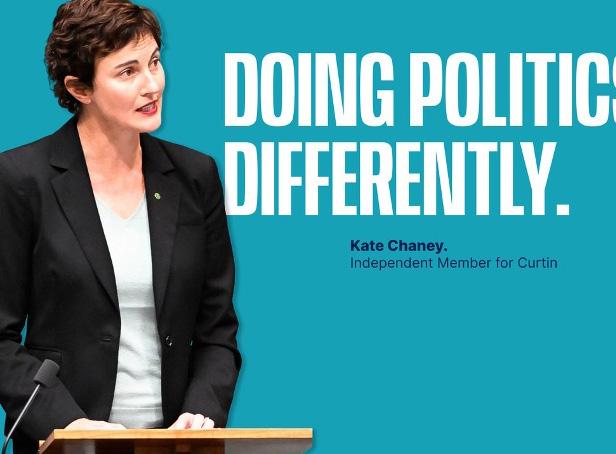

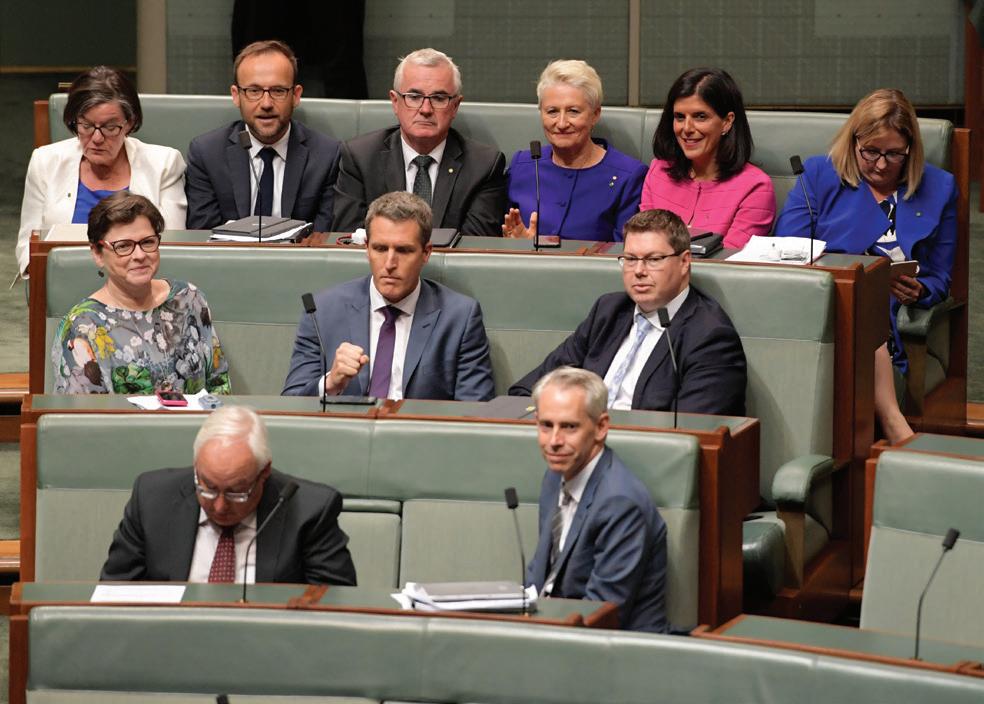
Compare and contrast a micro party and an independent
Research the key ideas and policies of a micro party and an independent candidate. A good place to start is the Western Australian Electoral Commission at https://cambridge.edu.au/redirect/11223.
Identify the main goals and values of each group and summarise your findings in a short paragraph on each.
In your summary, compare the key ideas and policies of the micro party and the independent candidate, and contrast their approaches to addressing issues in Western Australia.
Analysis questions
1 Recall the primar y goals of the micro party.
2 Identify the issues the independent focuses on in their campaign.
3 How do the policies of the micro par ty and the independent candidate reflect their values and priorities?
4 How do the goals of the micro par ty differ from those of the independent candidate?
5 Compare the similarities in their approaches to political issues.
6 What might be the advantages of being a micro party compared to being an independent?
7 Suggest some challenges an independent might face that a micro party might not.
Key concepts: democracy, democratic values, participation, the Westminster system
motion of noconfidence A government in a Westminster system such as Australia must maintain confidence of the lower house (Representatives). A motion of noconfidence can be called against the government and a vote taken from all members. If a government cannot achieve a majority then they are expected to resign or call a dissolution of the House to move towards election.
crossbench a term used to describe independent or minor party members that are not members of the governing party. They sit in the bottom of the U-shaped benches in the Houses of Parliament.
HASS skills: analysing, evaluating, communicating and reflecting, questioning and researching
As has been previously mentioned in this chapter, to form government in Australia, a political party or coalition must win 76 out of the 151 seats in the House of Representatives. With support increasing for minor parties and independents, the likelihood of a hung parliament and minority government hangs over each election. A hung parliament is when no major party or coalition has a majority of seats in the House of Representatives. Effectively, this means no government can be formed. In the 2010 election, Labor and the Liberal-National Coalition both won 72 seats, leading to a hung parliament. However, it is still possible in this situation for a political party or coalition to form government with the support of independents and/or minor parties. This is known as a minority government. In 2010, three independents and one Greens MP
made agreements with Labor for support in return for addressing bills and issues of concern to them. Labor was able to govern as it could guarantee support for its budget and 76 votes in the 151-seat House of Representatives if a motion of no-confidence was called against them.
Independents and minor parties can also have such numbers that they have what is known as ‘the balance of power’, usually in the Senate. A balance of power situation can exist when the votes of the crossbench are essential to the passing of or opposition to a bill. This situation occurs mostly in the Senate where greater numbers of minor parties and independents are elected due to the proportional voting system used. An extraordinary amount of power that can determine if a bill succeeds or fails rests on a small number of votes. Balance of power is a contentious issue as many Senators follow party lines when supporting or opposing bills, in contradiction to their
designated role of representing state and territory interests. Also, as the Senate has equal representation for each state, states with smaller populations such as Tasmania and Western Australia can have as much influence on the passage of bills as Senators in more populous states such as Victoria and New South Wales.
Figure 1.2.9Minority Labor Government under former Prime Minister Julia Gillard, who gained the support of the Greens and Independents, Rob Oakeshott, Tony Windsor and Andrew Wilkie. From the top left: Treasurer Wayne Swan, Greens Senator Rachel Siewert, Greens Senator Christine Milne, Greens Senator Sarah Hanson-Young and Greens MP Adam Bandt; from the bottom left: Prime Minister Julia Gillard and Leader of the Greens–Senator Bob Brown.

1.2 Review questions
Recall
1 Identify a system of government.
2 Describe two features of a liberal democratic system of government.
3 Describe what a political party’s purpose is and list the three main political parties in Australia.
Interpret
4 Explain how government is formed in Australia and how the prime minister is determined.
5 Explain the difference between a ‘major’, ‘minor’ and ‘micro’ political party. Provide one example for each.
Argue
6 Why might a voter choose to vote for a minor or micro party when these often do not win seats in parliament?
7 Discuss one argument for and one argument against the statement: ‘an independent has limited power to make and change laws in parliament’.
Apply 1.2 questions
1 Do you think the Australian political system is reflective of community beliefs, values and choices? In developing your response, consider how positions of power such as the Queen, Governor-General and Prime Minister are chosen and the variety of parties that are elected to parliament.
2 Using the Australian Electoral Commission (AEC) website, choose a registered political party and then conduct research about the political aims and goals of this group, its leader/s, logo and slogan. Explain who you think would vote for this political party and why.
Key concepts: democracy, democratic values, the Westminster system, participation
skills: questioning and researching, analysing, evaluating
• What methods do political parties and candidates use to influence voters at election time?
ideology a set of beliefs about how a country is best run and its political system organised interest/pressure groups groups of people formed to promote change to the law in a particular area or issue media organisations that publish or broadcast information
How should I vote? This is the question facing voters in a representative democracy at election time, and the choice that you will be faced with in the near future. Shaping this choice are many factors, including a citizen’s personal ideology, which is their belief in how a country or state is best run. This includes the issues and policy areas they believe are most important and how they balance their own self-interest with the needs and welfare of the community as a whole. A person’s ideology is shaped by many influences, including their family background, living situation and life experiences such as education, work and travel.
At election time, many groups in the community actively seek to shape the choices of voters. Political parties, as described earlier in this chapter, seek to have their candidates elected to parliament. Interest groups, such as the students inspired by Greta Thunberg who formed ‘School Strike 4 Climate’, aim to influence who is elected and their decisions in parliament or government.
They do this through methods such as petitions, protests, lobbying and the use of the media. In Western Australia, ‘Keep the Sheep’ is an example of an interest group that is hoping to remove the ban on live sheep exports from Australia imposed by the Albanese government.
Pressure groups represent particular sections of society and aim to influence the law for that particular group. They may also use direct action such as protests, lobbying directly to politicians, advertising or court action to achieve their aims. These can divide into sectional and cause-based pressure groups. Sectional pressure groups often represent key professional or economic interests such as the Minerals Council of Australia, the Australian Medical Association, the Property Council and the Australian Christian Lobby. Their membership is based on those who belong to the profession, faith or industry. Cause-based groups are as they sound, centred on areas of concern to the wider public and not limited in their membership: anyone can support the cause. The Australian Conservation Foundation, Climate 200 and GetUp! are examples of cause-based pressure groups.
Conduct some classroom research on important areas of interest to you by ranking the following from 1 (the most important) to 6 (the least important).
Education, Health, Getting a job, Preventing political corruption, Defence of the nation, Climate change
1 Individual responses can be collated to determine the top three areas of importance by totalling the results for number 1 (and perhaps number 2).
2 Consider and explain why the class results were as they were. What personal factors may have influenced the choices? You may think of things such as lifestyle, education and occupation of family and media watched.
3 Take the survey home and ask parents, caregivers, grandparents or other adults to see if the results are similar or different. As above, consider why they might be same or different (age, education, gender, jobs, media). This is an example of an opinion poll often conducted to gather ideas about what Australians think at a particular time. It can be used by parties to create, change and adapt policy.
Key concepts: democracy, democratic values, participation, rights and responsibilities
HASS skills: questioning, research, analysing, evaluation and communication
1 What impact on politicians views do you think wealthy lobbyists and profession-based pressure groups have in contrast to the impact of more grassroots community and cause-based pressure groups?
2 What are the strengths and weaknesses of a political system that allows lobbyists special access to politicians?
3 Watch the Big Deal and the Drum videos on lobbyists:
• https://cambridge.edu.au/redirect/11367
• https://cambridge.edu.au/redirect/11368
Can you find some examples of lobbyists who are working in Australia today? Are they working on behalf of clients or their own organisations? What are they lobbying for?
Key concepts: democracy, democratic values, participation, rights and responsibilities
HASS skills: analysing, evaluating, communicating and reflecting, questioning and researching
campaign an organised series of events and advertising with the aim of having voters choose a particular candidate
Interest groups, pressure groups and political parties will run dedicated campaigns that use a variety of methods to sway voters’ choices at the polling booth. A campaign allows a candidate, political party or interest group to put forward a message to persuade voters to vote in a particular way. Traditional forms of campaigning and advertising during election time include mail drops,
advertising in newspapers, placards and signs in public spaces and appearances at community events. These campaign methods provide opportunities to present information about a political party’s perspective on issues and policy it wants to implement if elected and persuade voters to choose its candidates. An interest or pressure group does not usually aim to get specific candidates elected but may try to convince voters which parties they should and should not vote for.


Smear campaign
A smear campaign aims to frame the opposing parties in a negative or bad light.

Bandwagon campaign
Uses elements of group influence and pressure to encourage people to vote for a candidate or party.

Endorsement campaigns
Character references from easily recognisable people/celebrities. This could also include other politicians.

Informational campaigns
These campaigns provide impartial and unbiased information related to the election such as how to vote and identifying misinformation.

Issue-based campaigns
Issues-based campaigns focus on areas of concern in the community.


Personality-based campaigns
Highlight the key positive characteristics of a candidate (particularly the leader).

The only requirement when publishing a political advertisement is to mention who authorised the advertisement. There is no limit on how many ads can be produced, how much can be spent and no requirement that equal time or space must be given to each party or candidate. In 2022, the Liberal party spent $132 million in election campaigns and the Labor party, $116 million. Clive Palmer’s United Australia Party spent $123 million. There is a ‘blackout’ rule, in which political ads on television, newspaper and radio cannot be broadcast from the Wednesday prior to an election day until the close of the polls. This law does not apply to social or online media.


1 Should Australia introduce laws to criminalise misleading political campaigns before an election? Justify your response with t wo arguments.
2 Should ads by organisations other than political par ties be allowed during election campaigns. Provide two arguments for and against the banning of third-party campaigning material.
Key concepts: democracy, participation, rights and responsibilities
HASS skills: analysing, evaluating, communicating and reflecting

Other methods used to influence voters at election time include traditional media such as television and radio. Advertisements, varying in length, will be played at particular times of the day to target viewing or listening audiences. Leaders of the major parties will also engage in televised public debate, where they are asked questions from a debate host or audience members on topics of interest. How the leaders respond to questions and conduct themselves during the debate can influence voters to choose their particular party representative at election time.
Opinion polls are surveys conducted by organisations about the feelings and perceptions of the public on their interest in political issues, the performance of political parties and their leaders, and who they intend to vote for. Media organisations and political parties hire companies to survey voters. Voters
are asked several questions, and the information is used to determine which political party or leader is most preferred. Political parties can modify and change campaign strategies based on the results of these surveys to appeal to a greater number of voters. It is important to note that opinion polls are generated from a small proportion of the community, even if the survey targets a number of different demographics (such as age, gender, location and occupation).


Making thinking visible 1.1
Setting the scene: Western Australia votes 2025
1 Create a mind map that identifies influences on voters when it comes to deciding who to vote for. In your mind map, consider political party policies, events (COVID-19), different campaigning strategies, socioeconomic influences (jobs, income), gender, age, cultural background and anything else you think might influence voting.
2 Share your mind map with a partner – compare and contrast your ideas.
3 Now work with your par tner and use both of your mind maps to decide which factors have the greatest influence and which have the least influence on voting. Rank these using numbers (start with # 1 for the factor you think has the greatest influence) in both of your mind maps.
Key concepts: democratic values, justice HASS skills: questioning and researching, analysing

1.3 Review questions
Recall
1 What is an election campaign?
2 Describe two methods that a political party or interest group may use in an election campaign to influence voters.
3 Outline how opinion polls are used during election campaigns.
Interpret
4 Which type of political election campaign do you think is the most effective in influencing voter choices (smear, bandwagon, issue, endorsement, personality or informational)? Justify your response with two pieces of evidence.
5 List the advantages and disadvantages of using media such as television and radio for an election campaign.
Argue
6 ’A debate by political party leaders during the election campaign is the best way to determine who a voter should choose.’ Discuss one argument in support of this statement and one argument against this statement.
7 Opinion polling
• Imagine you work for a polling company. You have been hired to gather data about community concerns and issues, so that a political party can use the information to develop party policy.
• Identify five issues to survey voters about.
• From the issues you have identified, create 15 questions that utilise a Likert scale, such as in the example below: For example: Do you think taxes should be increased?
Strongly agree AgreeNeutral Disagree Strongly disagree
• Survey 10–20 people and prepare a report for your employer that identifies how people feel about issues of concern in the community.
Key concepts: democracy, democratic values, participation, the Westminster system
HASS skills: analysing, evaluating, communicating and reflecting, questioning and researching
• How can social media and other communication networks impact understanding of political issues?
Media outlets such as television, radio and newspapers, used to be the main source of political information, and were traditionally the biggest influences on a citizen’s voting choices. However, this influence is diminishing as more and more voters use digital sources to access the news. An emerging method used by candidates, political parties and interest groups is posting on social media. Accounts are created on platforms such as Facebook, Instagram, TikTok, Bluesky and X, where posts can be quickly uploaded to thousands of followers to update the public on the activities and locations of candidates. Social media has its advantages, such as its low cost and easy operation, allowing political groups and voters to engage and discuss content. It has been said that social media is attractive to those with short attention spans and that the advent of mass amounts of easily accessible content has led to a greater use of social media for knowledge due to the overwhelming nature of seeking out and factchecking existing content. It has also been argued that the nature of social media content is not necessarily accurate and far more polarising of public opinion. The power and influence of social media can

1.4.1 A tweet from Western Australian Premier Mark McGowan showing him meeting with business groups
be seen in statistics that state that more than half of voters will get their political information from social media. Many will also use podcasts for political information, with up to two million people per day listening to a podcast. Researchers state that hosts of podcasts develop a sense of trust with their subscribers, making them a force of influence. However, social media and other communication technologies also have their disadvantages. Refer to Case study 1.1 and the ‘fake news’ article.


In 2019, political parties and the candidates they had selected for election fell prey to a number of problems through social media. Melbourne-based Labor candidate Luke Creasy and Tasmanian Liberal candidate Jessica Whelan were forced to resign their candidacies over Facebook posts made in 2017 and 2012. Luke Creasy made lewd comments and jokes about rape, while Jessica Whelan was criticised for Islamophobic comments. The candidates chose to resign, even after denouncing their past posts and being questioned as to whether they were appropriate potential political representatives if they had previously expressed prejudiced and discriminatory views.
Australian MP Angus Taylor suffered an embarrassing mistake on his Facebook page (later these were reported on Twitter) when he was promoting the introduction of new carparks in his electorate: he accidentally used the same account to congratulate himself on his achievement when he clearly meant to go into another account not in his name. He commented on his own post, ‘Fantastic. Great move. Well done Angus.’ Questionable digital footprints are not the only concern with social media as a campaign platform during election time. Foreign influences (groups from other countries) have increasingly been used to influence voters on social media. These groups can disguise their identities by creating false profiles and post false content as well as ‘troll’ individuals by making controversial comments to generate conflict and mistrust.
The fact that these digital sources, particularly social media, aren’t as strictly edited as traditional media has led to criticisms of ‘fake news’ (misleading or false reports or information). In 2025, Meta, the owner of Facebook and Instagram, decided to reduce factcheckers on both platforms, adopting a model like X and Wikipedia that allows other users to make notes regarding accuracy and make corrections to false or misleading posts. Both the 2016 and 2020 US presidential elections and the 2016 and 2019 Australian federal elections featured accusations that ‘fake news’ affected voters’ choices, distorting the results of the elections. In Australia during the 2016 election campaign, Labor was credited with the ‘Mediscare’ campaign in which it claimed a Liberal government would increase doctor fees. In the 2020 Queensland election, Clive Palmer’s United Australia Party claimed Labor would introduce a ‘death tax’. Clive Palmer did not provide evidence of his source for this claim.
Australian politicians are currently not able to use the social media platform TikTok on their government devices. However, this does not mean they cannot join and create content for the app on personal devices and this has become an emerging trend. The content allows politicians to produce relatable political information and news for the 1.7 million voters aged 18–24 in Australia. One key factor that needs to be considered on TikTok is authenticity and ensuring that the persona presented onscreen is genuine. As political advertising is banned on TikTok, each interaction must be sincere and avoid being seen as ‘cringe’.
Analysis questions
1 Do you think politicians should expand their social media presence to other platforms such as Discord and Reddit? Why or why not?
2 If the Prime Minister did an AMA on Reddit (Ask Me Anything), identify three questions you would ask them.
Key concepts: democracy, democratic values, participation
Section 1.4 review



HASS skills: analysing, evaluating, communicating and reflecting, questioning and researching
The Independent Member for Warringah has commented that social media provides access to her electorate in a direct but local way. Explain how independent and minor party candidates can use social media effectively to appeal to voters.
5 Discuss which method of campaigning is more effective: social media or traditional media. Provide evidence to support your ideas.
1 Choose an Australian political party, interest group or politician and investigate the social media profiles of this person or group (Facebook, Instagram and Twitter pages). Identify and describe two to three key posts that stand out and explain the target audience, message and purpose of the post and the features or elements that would appeal to voters and influence them to vote for that group or candidate.
Key concepts: democracy, democratic values, participation
HASS skills: analysing, evaluating
• What are the ways in which young people can actively participate in civic life (locally, nationally and globally)?
For the Western Australian election in 2021, those aged 18-24 enrolled to vote totalled 167 631, however only 134 865 or 80 per cent voted, making it one of the lowest participation rates for different age brackets in the state. Those aged 70 years and above had a larger number of voters (267 817) and a matching participation rate of 93.3 per cent. Is there an explanation for such disengagement of youth in the political system? How can young people participate and contribute to civic life in Australia and globally?

In 2026, Canberra will hold a National Youth Parliament that will allow 150 young people to represent their electorate at a three day event at Parliament House. This is the first time that the House of Representatives will hold such an event that allows for young people to discuss public issues and contribute to Australian democracy.
The Y Western Australia also holds an annual youth parliament in each state’s parliament house. Those aged 15–25 can apply and are able to formulate bills, debate and then vote on them. This program provides a chance for young people to be heard and provide insight on a wide range of issues relevant to their lives. Representatives selected spend time in committees developing bills, debating motions and other issues. Successful bills are passed onto relevant ministers and opposition for consideration.
The Environment Minister, Sussan Ley, then took the original decision back to the full bench of the Federal Court on appeal in 2022. While the judges agreed that the impacts of climate change were not disputed, they did not agree that the minister had a duty of care, overruling the original decision as they believed it was up to governments to pursue policy that considered future generations, not courts. However, the youth argued that this was the reason they took the case to the courts to begin with: ineffective government policy.
In 2021, eight teenagers with the support of Sister Brigid Arthur, an 86-year-old nun and former teacher, took the Morrison government Environment Minister Sussan Ley to court on behalf of all Australian children. They pursued the case with the aim of stopping the expansion of a coal mine in NSW that would endanger their future by contributing to climate hazards that would lead to illness, economic losses, injury or death. The Federal Court initially found in favour of the young people, after being presented with evidence from the CSIRO, Intergovernmental Panel on Climate Change, the Bureau of Meteorology and climate scientist Will Steffan. The children had argued that the minister had a duty of care to not take actions that could lead to harm of others.
The judgement did not affect the approval of the coal mine expansion and Ley approved this four months later.
Dr Sophie Scamps, the federal member for Mackellar has introduced the Wellbeing of Future Generation Bill into parliament in February 2025. The introduction of this bill was prompted by the fact that Dr Scamps believes that young people today will be the first generation worse off than their parents due to climate change and environmental destruction. The basis of the bill lies in sustainability, that the needs and wellbeing of current generations should not impact the needs and wellbeing of future generations.

The Australian of the Year Awards aim to recognise those who are changing lives and society for the better. The person should have had a positive impact on those around them and pioneered in an area of work that has been both challenging and a triumph.
Young Australians of the Year must be between 16–30 years old.
The four criteria to be assessed include:
• significant contribution to the Australian community and nation
• an inspirational role model for the Australian community
• demonstrated excellence in their field
• the Local Hero award acknowledges a significant contribution at local community level.
The Western Australian Young Australian of the Year in 2025 was Jack Anderson. He began a student-driven charity organisation, ThrivEd at 18 years old. This organisation developed and donated educational materials to disadvantaged schools. Over time ThrivEd merged with another group and became Elucidate Education that aims to support students across Australia and globally.
Young Australian of the Year for 2025 is Dr Katrina Wruck. Her profit-for-purpose organisation, Nguki Kula Green Labs, is developing breakthroughs in consumer goods through the use of green chemistry. She also promotes STEM in her community engagement programs and is currently examining how to break down ‘forever chemicals’ to reduce contamination.

1 Identify and describe two ways in which you think both award winners featured here have contributed positively to society.
2 Identify which of the two winners would be an inspiration to you, and explain why.
3 Explain why you think the Young Australian of the Year Award was introduced.
Key concepts: participation
HASS skills: evaluation, communication
What does it take to be a Young Australian of the year?
Use the website at https://cambridge.edu.au/redirect/11226 to investigate previous winners of the Young Australian of the Year Award.
1 Identify the key areas of community work or innovation the winners have been involved in.
2 Identify the types of values and characteristics these people would have (e.g. determination, motivation)
3 Describe the types of qualifications or education they have.
4 Check if your local community has other Australia Day awards such as the Community Citizens of the Year Award. Investigate if the criteria are similar to the national awards. See if you can find out about the winners of the youth awards through further research.
5 Do you think most Australians embody the skills, values and characteristics of the people you have researched? How can we encourage more people to move towards helping the community? Create a draft proposal for developing community action and awareness for young people to implement in schools across the country.
Key concepts: democratic values, participation
HASS skills: questioning, research, analysing, evaluation and communication

Figure 1.5.4 Awer Mabil is a South Sudanese refugee born in Kenya, who settled in Adelaide and now plays for the Australian men’s national soccer team. He is co-founder of the humanitarian charity Barefoot to Boots, which aims to improve health, education, and gender equality among refugees, as well as equipping young refugees with sports equipment. In January 2023 he was named Young Australian of the Year.
1.5 Review questions
Recall
1 Identify the percentage of young Western Australians aged 18-24 that voted in 2021.
2 Identify three roles that delegates to youth parliaments can be involved in.
Interpret
3 Describe why the Federal Court reversed its decision about governments having a duty of care to protect future generations.
4 Explain how someone can be selected as a Young Australian or Young Western Australian of the Year.
Argue
5 How can we get young people involved in the electoral system? People aged 18 to 24 years old are enrolled to vote at a rate of approximately 85 per cent. Youth engagement and voting is one of the hardest issues those involved in civic education struggle to achieve. Research the following questions, either through a survey of young people or through online information:
• Why do you think that young people have been reluctant to vote in the past?
• How might we encourage young people to vote and what issues concern them?
• How do young people vote when they are able to?
Key concepts: democracy, democratic values, participation, rights and responsibilities
HASS skills: evaluating, communicating and reflecting, questioning and researching

In November 2020, the United States held its presidential election, contested by incumbent Republican President Donald Trump and Democratic candidate Joseph Biden. In the successive weeks, the world watched on in fascination and at times horror as claims of election fraud were made, with refusal to accept official results leading to protestors using force and violence to try to disrupt the official declaration of results and committing acts of domestic terrorism. While in a democracy it is important that voters have access to information and are politically informed and active, it is just as important that they are media and campaign literate. The widespread access to and use of social media networks allowed both Trump and other media companies and conspiracy groups to present information to the public that was not accurate.
These people took the information at face value and believed its content, which had negative
consequences when they acted on it. This is why it is important for voters to critically analyse and evaluate election campaigns and their content; through examination, we can avoid making uninformed political decisions. Social media companies acted after the event and banned Trump.
Would this situation have occurred in Australia? Our system allows citizens a greater choice of political parties and independents to choose their representatives from, which means there is a wider representation of views within the Australian parliament as opposed to the (in practice) almost entirely two-party choice in the United States. Greater representation in parliament can support democracy. However, our system does not allow voters to elect a head of state or the Prime Minister, raising questions about the level of democracy in Australia and whether our inability to fully participate limits the power and influence of people within their political system.

That just about wraps up this topic. How did you feel you went working through the chapter? Before you attempt the following activities, visit the Interactive Textbook to rate your confidence with this topic via a downloadable checklist.
Research one of the 19 major, minor or micro political parties that stood for election during the 2025 Western Australian election. Find out:
1 The date of origin/creation of the party 2 Its current leader and deputy leader 3 Its main political purpose 4 Its policy on key areas like health, education, business
5 Whether it won any seats in the Legislative Assembly and Legislative Council
6 How many first preference votes it received.
Figure 1.7.1First preferences by generation and party, AES survey 2022
Source: Australian Election Study 2022, Australian National University
1 Identify key differences/changes you notice in voting patterns as people get older.
2 Explain why you believe millennials are more likely to vote for the Greens and Baby Boomers for the Liberal Party.
3 Assess why voter preference for the ALP has not changed between generations.
Read the article at https://cambridge.edu.au/redirect/11227.
1 Identify the group that the Gen Z party is hoping to represent in parliament.
2 Describe why the founder of the Gen Z party believes it can overcome the problem of gaining supporters.
3 Outline four of the Gen Z party’s policies.
4 Explain the difficulties the Gen Z party is likely to have in gaining voter support.
5 Investigate one of the mentioned micro parties and its policies. Assess why it may not have gained enough political support to have its members elected to parliament.
Small groups of students research, develop and implement plans that have impact within their local community. This could be providing practical solutions to problems or advocating for change.
1 Students should brainstorm local issues – consider environmental (protecting black cockatoo habitat) or economic (sustainable and affordable housing).
2 Students then research the issue and key problems. This might also include contacting relevant community groups.
3 Students can then research and propose a solution through a detailed presentation, providing data and statistics, in addition to interviews or statements from stakeholders.
The Nxplorers program is a good place to start for guidance and ideas.
It’s party time! Create a political party and hold an election, doing the following steps:
1 Form small groups based on an issue members feel strongly about.
2 Name your political party and outline its party platform.
3 Prepare materials such as posters, pamphlets or a Facebook profile page and launch your campaign (present to the class).
4 Hold an election.
5 Reflect on the election result. Did the party with the best platform win? What factors decided the vote?
Key concepts: democracy, democratic values, participation, rights and responsibilities, the Westminster system
HASS skills: analysing, evaluating, communicating and reflecting, questioning and researching
Civics and Citizenship in Year 9 examines the ways that Australians can organise during elections and the influences that can affect us during election campaigns. Topic 2 dives into the Western Australian legal system, its structure, principles and problems. The court hierarchy will be investigated and the framework it provides for our system of appeal and common law and precedent. This court system is guided by principles of justice that ensure fairness for those who use the system. These principles of justice have been incorporated into the legal system through its operations and the rights of defendants, witnesses and victims. However, no system is perfect, and this chapter will also look at how citizens can become victims of miscarriages of justice when the principles of justice are broken, examining different case studies within Western Australia that highlight the negative impact when someone is jailed for a crime they didn’t commit.
HASS skills: Questioning and researching
Key concepts: Justice, participation, rights and responsibilities KEY CONCEPTS AND HASS SKILLS .
HASS skills: Communicating and reflecting, analysing, evaluating
Key concepts: Democracy, democratic values, Westminster system
The Western Australian Humanities and Social Sciences (HASS) curriculum includes a variety of skills that apply across all subject areas, along with key concepts specific to each subject. These HASS skills and key concepts are interconnected. The diagram in Figure A shows how the connection between these skills and ideas can be applied in Civics and Citizenship. This integration develops understanding of how to use what you learn about civics in real-life situations. It’s all about seeing the big picture and how everything fits together.






Aboriginal and Torres Strait Islander Peoples should be aware that this chapter may contain the names and images of people who have passed away.


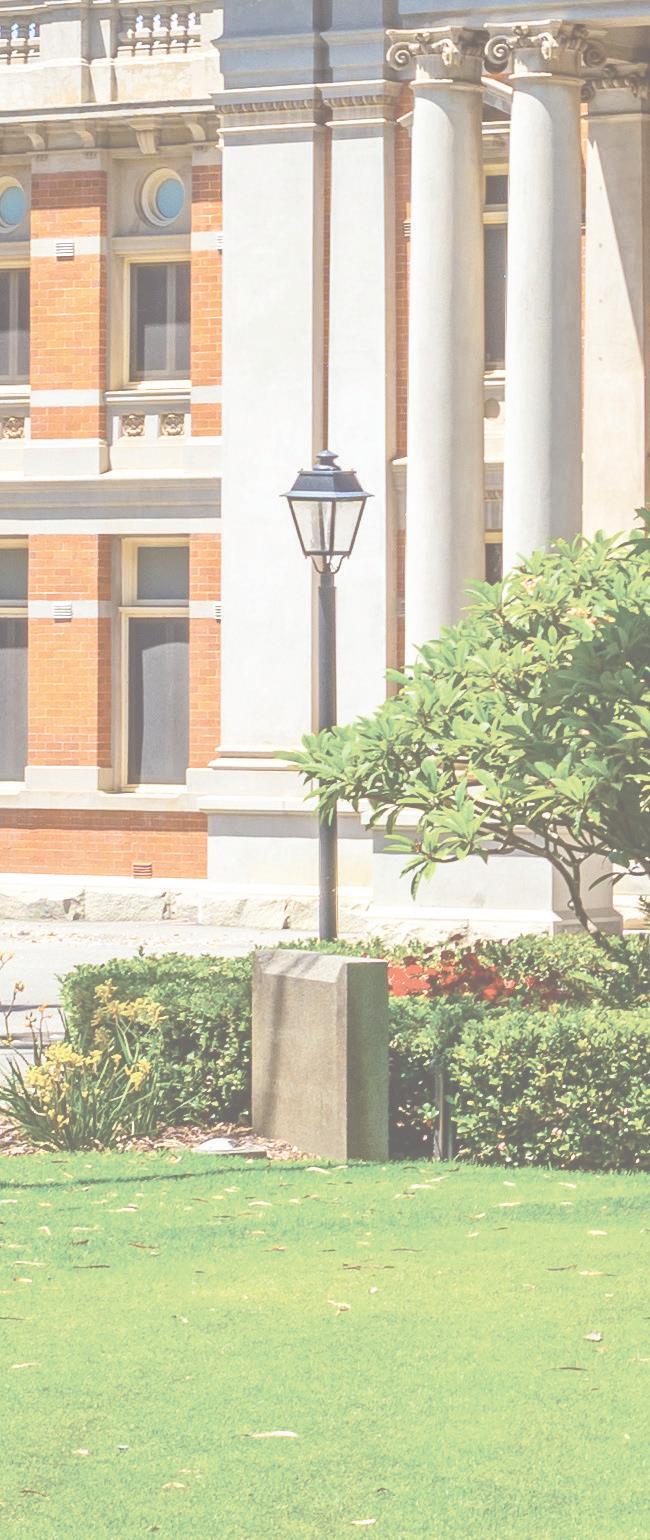



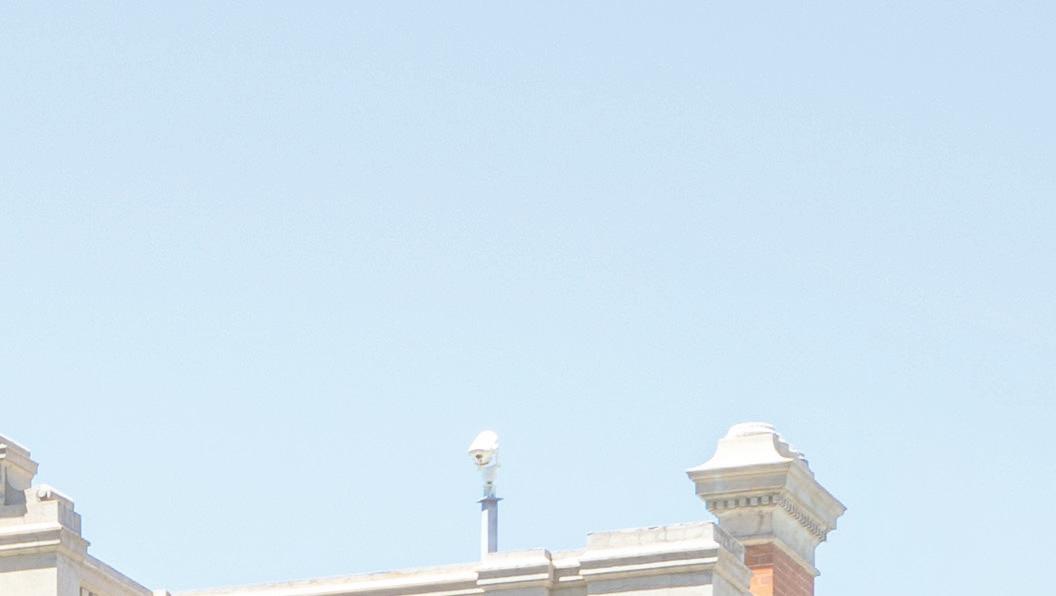



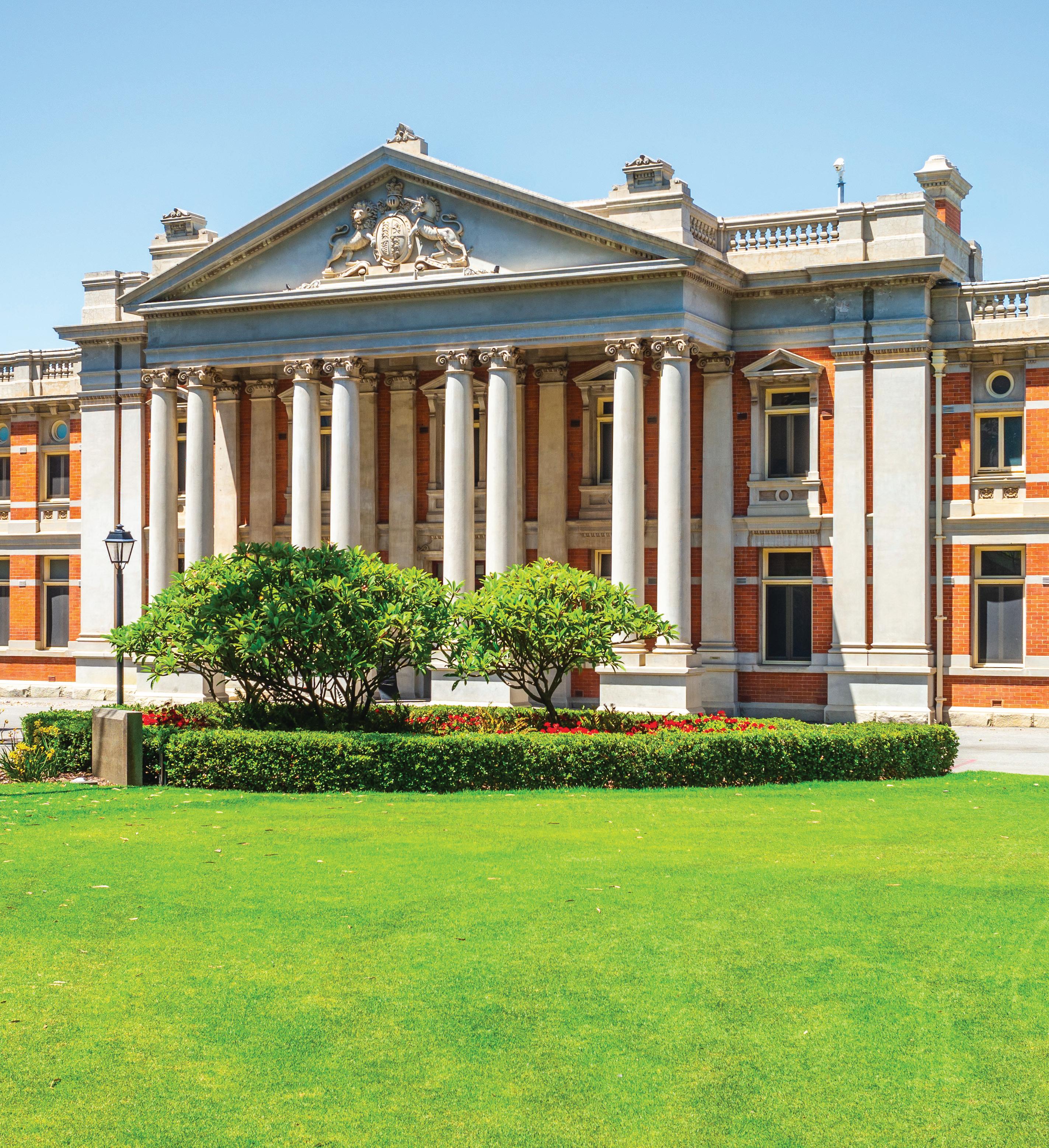

Australia’s court system is hierarchical, with the High Court at the top, followed by federal courts and state/territory courts. The doctrine of precedent ensures consistency by requiring lower courts to follow higher court decisions. Key principles of the justice system include equality before the law, an independent judiciary, and the right of appeal. However, factors like bribery, coercion of witnesses, trial by media, and barriers to accessing justice can undermine these principles. Notable cases of wrongful convictions highlight these issues and the varying experiences people have with the justice system.
• How is the Western Australian court system structured?
• How do courts resolve disputes and make law through their judgments?
• What is precedent?
• What are the principles of justice that underlie the Australian legal system?
• How are the principles of justice implemented in the court system?
• What factors can undermine the achievement of justice in the courts?
Visit the Interactive Textbook to access:
• interactive Scorcher Quiz
• videos, image galleries and other extra materials.
• How is the Western Australian court system structured?
• How do courts resolve disputes and make law through their judgments?
• What is precedent?
court an institution for parties to present a case including evidence before an adjudicator who will decide the outcome
adversarial system a system in which two parties present a legal case before an impartial adjudicator who will make a decision in favour of one party adjudicator a tribunal, magistrate, judge (alone) or judge and jury who decides the outcome of a legal case presented to them criminal law law that applies to all people in a community where negative actions and behaviour are deemed contrary or against the values of society. They include theft, burglary, and arson. The consequences are given by the courts and include fines, imprisonment or community service. civil law law that applies only to those who seek a remedy. These are disputes between individuals or individuals and organisations. A wrongdoing has been committed against a party and that party seeks compensation or damages from the person accused of the wrongdoing. This is referred to as tort law
Imagine you are walking home from school. On the way home, a dog suddenly appears and runs towards you. The dog seems aggressive and as you start to run, it bites you on the leg. A person runs up to you and apologises for the dog, grabs it by the collar and pulls it off you. You are injured and your leg is bleeding. What happens next?
Firstly, if a dog attacks a person or another animal, it is an offence against the values of society. The applicable law is the Dog Act 1976 and, in the example above, the owner guilty of the offence could be fined in excess of $3000.
If you require medical attention or therapy to recover from the injury, who would you expect to cover the costs? If the owner of the dog simply walked away and refused to provide assistance, how would you react? What could you do?
In Australia, institutions exist that provide forums for society to resolve offences committed by
individuals, and for individuals to resolve disputes with others. These institutions are known as the courts . Courts in Australia use an adversarial system of dispute resolution. Parties (individuals, organisations or authorities) may take a dispute to the court to present their evidence before an adjudicator to make a decision. There are many different types of disputes that can come before a court but the two main types reflect the laws made by parliaments: criminal law and civil law . The police are generally responsible for investigating crimes and collecting evidence to charge an accused person with a criminal offence. Other government agencies have the power to do this in certain areas, such as environmental protection, taxation and parking. An individual who has been wronged by another, but it is not covered by criminal law can seek a remedy through civil law. These wrongs may include the dog bite example already mentioned, as well as trespass, nuisance, breaching duty of care or breaching a contract. In both civil and criminal cases in Australia, two parties will be given an opportunity to present their case and evidence before an adjudicator, who will decide based on the evidence and law.
Reflect on the case described in the Setting the scene video and the proposition below:
‘It is important for individuals to have the right to take disputes against their government to the courts’.
On your own, or with the person sitting next to you, consider the following:
1 E = Excited
What excites you about this proposition? What’s the upside?
2 W = Worrisome
What do you find worrisome about this proposition?
3 N = Need to know
What else do you need to know or find out about this proposition? What additional information would help you to evaluate things?
4 S = Stance or suggestions for moving forward
What is your current stance or opinion on the proposition?
Key concepts: democratic values, justice HASS skills: questioning and researching, analysing
In December 2024, Western Australia introduced new laws that gave police greater search powers in relation to knives and other weapons after amendments to the Criminal Investigations Act 2006 (WA). The changes to the law allow police officers to require a person to stop and
undergo a metal detector scan without a warrant in designated areas (Protected Entertainment Precincts). This applies to anyone of any age. Refusal to take part in a metal detector scan, without reasonable excuse, is an offence with a maximum penalty of 12 months imprisonment and a fine of $12 000.

warrant a document issued by legal or governing authorities that allows police to conduct an arrest, search a property or place or other action.
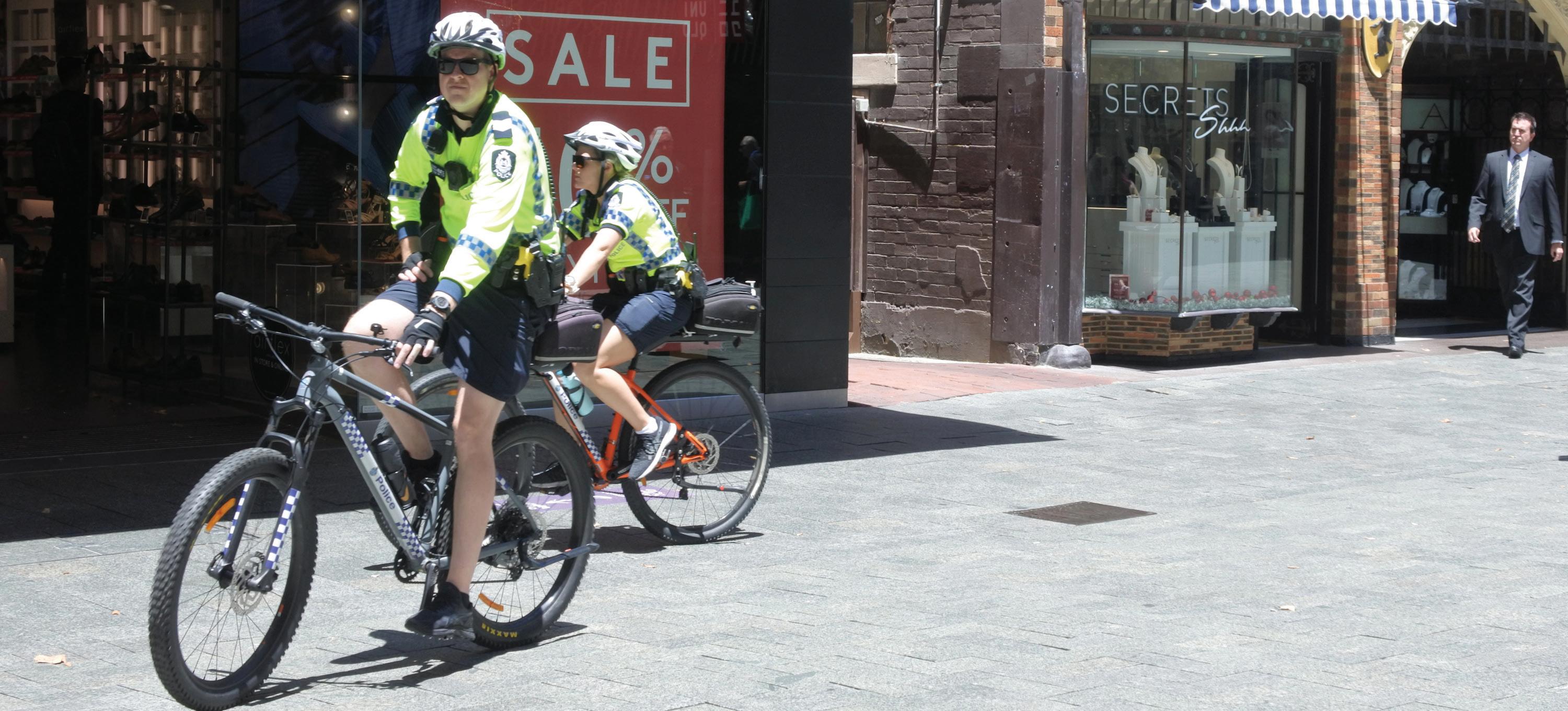
damages a monetary form of compensation for loss or injury.
defamation a branch of civil law in which individuals can seek compensation for written or verbal content about them that has led to the ruin of their reputation hierarchy a system where groups or institutions are ranked according to the authority or power they have jurisdiction the authority given to a legal institution to make judgments regarding certain areas of law or in particular locations (for example, the Western Australian Magistrates Court can only hear simple offence cases that have occurred in Western Australia) indictable offences serious offences defined as crimes in the Western Australian criminal code that must be heard before a judge or a judge and a jury. The punishments are more severe.
simple offences (called summary offences in some other states) less serious offences (not listed as crimes in the Western Australian criminal code) that can be heard by a magistrate. The punishments given are not as harsh.
Former Senator Linda Reynolds is suing Brittany Higgins a former employee for defamation after three social media posts that Reynolds claim damaged her reputation and contributed to deterioration of her mental and physical health. Reynold’s is seeking damages of more the $500 000 for the hurt and loss of her reputation. The verdict in this case is yet to be decided.

The first reason is specialisation. Each court is responsible for particular cases. These cases may be organised according to seriousness, financial amounts claimed or types of cases heard. This is known as their jurisdiction. For example, the High Court hears cases regarding the Australian Constitution. No other court can hear cases about this document, so the High Court is a specialist in this area. It is also at the top of the hierarchy and the courts below it must follow its decisions. Another example is the Magistrates Court, which is at the bottom of the hierarchy, and deals with less serious offences that have not caused significant harm to society or individuals. Each court has its own jurisdiction that determines the types of cases that can be heard in that court.
In the Western Australian court system, just as there are different cases and laws to be applied in criminal and civil cases, there are also different courts that people may go to.
The Western Australian court system is arranged as a hierarchy. In a hierarchy the most powerful within the system is at the top of the hierarchy and the least powerful at the bottom. This is an overly simplistic description of a court hierarchy, as there are several reasons why the courts are organised in this way.
The seriousness of offences relates to two main categories specified in the Western Australian criminal code (the main criminal law in the state). Serious offences such as robbery are termed indictable offences, or crimes in the narrow legal sense. All other offences are called simple offences such as driving without a licence, or not keeping a dog under control. Magistrates Courts deal with simple offences that generally have imprisonment terms of less than 3 years and civil claims less than $75 000. In contrast, the District Court of Western Australia deals with all but the most serious indictable offences, with imprisonment terms of between 3 and 20 years and civil claims more than $75 000 but less than $750 000. The Supreme Court of Wester n Australia will deal with the most serious indictable offences, such as arson and murder, with imprisonment terms beyond 20 years up to life and civil claims more than $750 000. Some offences are categorised as either way offences and can be heard in the District or Supreme Court. Further in the chapter you will learn about the other reasons for the court hierarchy: the right to appeal and precedent.
Did you know that the Supreme Court of Western Australia, established in 1861, is one of the oldest continuously operating courts in Australia? It has jurisdiction over the entire state and handles the most serious criminal and civil cases. The court’s main building, located in Perth, is a beautiful example of Federation Academic Classical architecture and is a heritage-listed site. This historic court has played a crucial role in shaping the legal landscape of Western Australia for over 160 years!
State Administrative Tribunal
Children’s Court of WA
Supreme Court of WA
High Court of Australia
Federal Circuit and Family Court of Australia
Family Court of WA
District Court of WA
Magistrates Court of WA
Figure 2.2.4 The court hierarchy in Western Australia ➜
Specialist courts
Western Australia also has other specialist courts, such as the Children’s Court, the Coroner’s Court and the Family Court of Western Australia. These courts exist to hear particular cases that cannot go to the Magistrates Court, District Court or Supreme Court.
The Children’s Court hears cases where the accused is between the ages of 10 and 18 years. In the Australian legal system, children are treated differently to adults under criminal law, including how they are sentenced. The rule of law is not always applied, and the law is not applied equally. A child, if found guilty, will not face imprisonment in an adult jail, but may be sent to a youth detention centre, where they will continue their education.
Warden’s Court of WA
Coroner’s Court of WA
In 2022 it became public that some juveniles were held in Unit 18 – a secure section in Casuarina, an adult prison. In 2023, a young indigenous inmate, Cleveland Dodd, died within the unit. An inquest into his death outlined that he had spent up to 22 hours a day in solitary confinement for many of the 93 days prior to his death. Unit 18 was established to house the most highrisk offenders. Many staff have been subjected to assaults and violence that then leads to lockdowns of inmates of up to 24 hours. Many juvenile inmates also suffer from neurological conditions and trauma.
What do you think? Is justice about equality?
The rule of law states that the law must be applied equally. The establishment of a Children’s Court aims to provide justice rather than equality. The sentencing options and outcomes are different for those aged 10–18 who have committed crimes as compared to those over the age of 18. To learn more, visit the link at https://cambridge.edu.au/redirect/11228.
1 Define the concept of ‘rule of law’.
2 Investigate how children who have committed crimes in the past have been treated. The following website at https://cambridge.edu.au/redirect/11229 offers some useful sources and commentary.
3 In Queensland, the government implemented the Making Queensland Safer laws in December 2024. Whereas jail time used to be a last resort for children who committed crimes, the new laws mean that children who commit certain serious offences will face adult sentencing. This include the offences of murder, manslaughter, grievous bodily harm and dangerous operation of a vehicle. The following website at https://cambridge.edu.au/redirect/11230 details the new laws and see the related ABC news video on the debate at https://cambridge.edu.au/redirect/11231.
a Discuss this change to the laws with the move to victim-based sentencing.
b Are these changes to Queensland laws aimed at delivering justice for victims, or are they a reactive response, rather than a proactive strategy to prevent crime?
4 The United Nations has given 14 years as a minimum age for criminal liability. In Australia, the age is predominantly 10 years. Researchers into the issues surrounding child crime outline the following as disadvantages that impact many from birth and lead them down a path of trouble: poverty, homelessness, violence and abuse, health and mental health issues, disabilities and learning problems, dropping out early from school and for many, systemic racism and intergenerational trauma. An article outlining the concerns of many around the world can be found at https://cambridge.edu.au/redirect/11232. Consider a campaign for or against raising the age for criminal liability. If children can be treated as adults in the justice system, in what other areas can children be considered adults? For example, voting, applying for a loan, driving, drinking alcohol?
Key concepts: participation, rights and responsibilities, justice HASS skills: questioning, researching, analysis, evaluation and communication


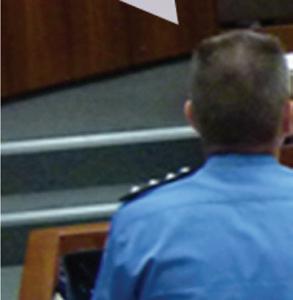

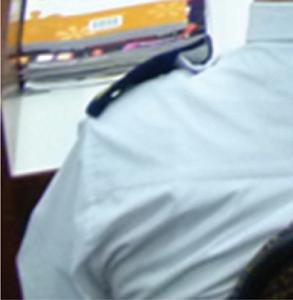

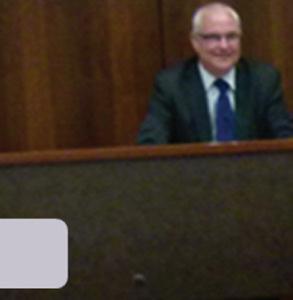







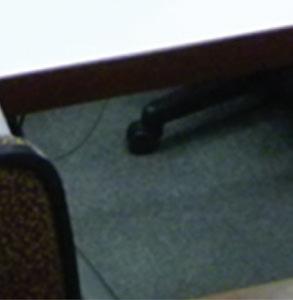
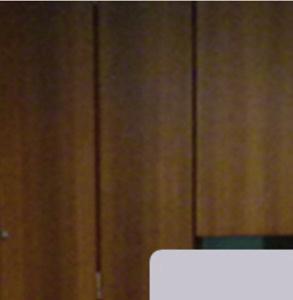





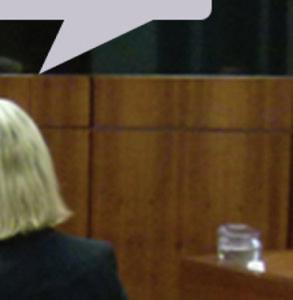

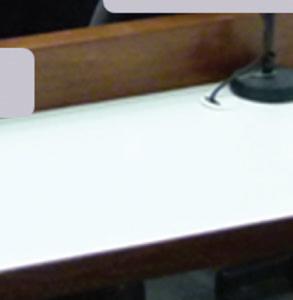
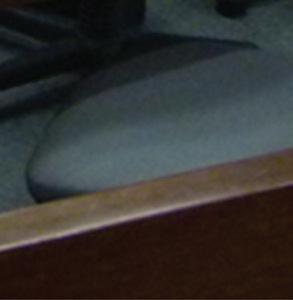




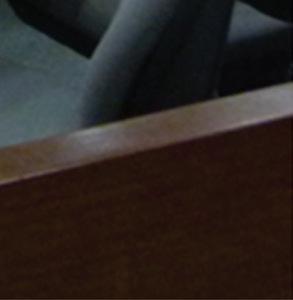
Figure 2.2.5 This labelled photo demonstrates the layout of the Magistrates Court in Western Australia. The JSO is the Judicial Support Officer, who helps with the administrative tasks in court, such as managing documents and swearing-in witnesses. The CJS Officer is the Community Justice Services Officer, who advises the court of the suitability for communitybased sentencing options, and so is not usually present at the trial, but may be present at sentencing.
The Coroner’s Court has a more investigative rather than adversarial role, and its purpose is to determine the cause of death for individuals when it is unknown. The court is not responsible for determining guilt or liability, but it may make recommendations to help prevent similar deaths in the future.
The Family Court of Western Australia specifically handles cases regarding family disputes and issues; these include divorce, child custody and support payments. These matters are separate from criminal and civil law and have additional parties impacted, such as children, and are dealt with by the Family Court due to the sensitive nature of such disputes.
Wardens Court exists under the Mining Act 1978 (WA) and oversees disputes in relation to mining tenements, landowner rights and applying for exemptions from statutory (law) rules.
START court is a specialised branch of the Perth Magistrates Court where those living with mental health issues can access an alternative process in the justice system. Participation in this program is voluntary and participants must indicate a plea of guilty to engage with the START court or they will need to attend another court for trial. The program is approximately six months long and aims to set up strategies and supports for the participant, such as counselling, GP services and employment services.
The Wardens Court in Western Australia is a special court that deals with issues related to mining. This court plays a crucial role in the state’s economy, especially because mining is one of the biggest industries in Western Australia.
The Wardens Court helps resolve disputes between mining companies and other parties. For example, if two companies disagree about who has the right to mine a particular area, the court will decide who is correct. By resolving these disputes quickly and fairly, the court ensures that mining operations can continue without long delays. This is important because delays can be very costly for mining companies and can affect the overall economy.
The court also makes sure that mining companies follow the rules set out in the Mining Act 1978 (WA). These rules are designed to ensure that mining is done safely and sustainably. When companies follow these rules, it helps protect the environment and the health of workers. It also makes Western Australia a more attractive place for investors, who want to be sure that their investments are safe and well-regulated.
Decisions made by the Wardens Court can affect the amount of money the state government collects from mining companies. This money, known as royalties, is a significant source of revenue for the government. It is used to fund public services like schools, hospitals, and infrastructure projects. By ensuring that mining companies pay their fair share, the court helps support the state’s economy.
The court’s work also supports the development of new mining projects. When disputes are resolved and rules are followed, it creates a stable environment for new projects to start. This leads to job creation and stimulates local economies, contributing to the overall economic development of Western Australia.
Analysis questions
1 Identify the main functions of the Wardens Court in Western Australia.
2 Explain how the Wardens Court helps resolve disputes in the mining industry.
3 Discuss the impor tance of the Wardens Court in ensuring compliance with the Mining Act 1978 (WA).
4 Analyse how the decisions of the Wardens Court can impact the state’s economy.
5 Evaluate the role of the Wardens Court in supporting the development of new mining projects.
Key concepts: participation, rights and responsibilities, justice, specialisation and trade
common law judge-made law; decisions of cases recorded as reference for future cases statute law laws made by elected parliaments precedent a decision from a previous court case that may be binding or persuasive on other courts in deciding future cases with similar circumstances
HASS skills: analysing, evaluating, communicating and reflecting
The Australian court system is responsible for making common law, which is different to statute law Common law is created by courts from all the decisions made within those courts. These decisions build up over time and are used to assist magistrates and judges to make decisions. To ensure consistency in decision-making according to the law, past decisions
are referred to in similar cases to make judgments. These judgments are written down and used by judges in future cases. This is also called precedent. When a judge is presented with a new situation and makes a decision that differs from previous judgments, this is called a new precedent. As Australia has a court hierarchy, precedent from higher courts is binding on lower courts. This means lower courts must follow the decisions of higher courts.
In the Australian court system, a party who has been wronged is responsible for bringing a case before the courts. For a criminal offence, a police prosecutor or public prosecutor will bring the case before the court on behalf of the crown or state. They will have to gather enough evidence against the accused person, who is known as the defendant. The prosecution will present their case before

the court using physical or testimonial evidence. The defence will have an opportunity to present their evidence or to question the evidence of the prosecution. In a Magistrates Court, a magistrate will decide as to whether the defendant is guilty or not guilty based on the evidence, and in a District or Supreme Court, a judge or jury will make a decision based on the evidence. To make a decision, the magistrate, judge or jury must be convinced beyond a reasonable doubt that the defendant committed the crime.
In a civil case, an individual who has been wronged must bring the case to court. They are known as the plaintiff. The process is similar to a criminal trial. However, unlike a criminal trial, there is often no jury involvement and the plaintiff must only prove on the balance of probabilities that the defendant committed the wrongdoing.
The difference in the standard of proof that must be achieved by the prosecution (criminal) or plaintiff (civil) in a trial is related to the consequences if found guilty. An indictable criminal trial can result in a term of imprisonment, jail time. A civil trial often ends in compensation and damages, payment for injury and loss or costs. The outcome in a criminal trial is considered far heavier and damaging, a loss of freedom and ability to live a full and prosperous life in comparison to a monetary loss. In the past, the outcome for a guilty verdict could be death (a sanction that was removed in Australia in 1973 and in Western Australia in 1984).
This is why it is very important to ensure that if someone is to be found guilty of a crime, there can be no doubt that they committed the crime based on the evidence. If there is a doubt, then they should be acquitted.
prosecutor the legal representative (lawyer, barrister) who presents the case against an accused person in a criminal trial on behalf of the state defendant a person who is accused of a criminal offence or a civil wrongdoing against another testimonial evidence oral evidence given by a witness magistrate the impartial adjudicator in a Magistrates Court judge the impartial adjudicator in a District or Supreme Court jury a group of 12 people chosen at random from the electoral roll who listen to evidence and determine whether a defendant is guilty or not guilty beyond a reasonable doubt a standard of proof in a criminal trial in which the adjudicator (magistrate, judge or jury) must have no doubt or there can be no other logical explanation based on the facts and evidence presented in court that the accused committed the crime plaintiff a person who has brought a civil case before the courts against an individual they believe has wronged them balance of probabilities a standard of proof in a civil trial in which the adjudicator (magistrate or judge) must determine based on the facts and evidence which party’s case is more likely
2.2 Review questions Recall
1 Describe the adversarial system.
2 Distinguish between criminal law and civil law, and provide an example of each.
3 Identify the highest, most powerful court in the Australian court system.
4 For the following criminal offences, identify which court in Western Australia would hear the case:
a arson
b robbery
c driving without a licence
d murder e not keeping a dog under control. Interpret
5 Explain why Australia’s court system is organised as a hierarchy.
6 Why does Australia have specialist courts such as the Coroner’s Court, START Court and Family Court of Western Australia?
7 Why is there a different standard of proof in criminal and civil trials? Argue
8 ‘Children should not be criminally liable until they have reached the age of 14.’
Discuss two arguments that are for the above statement and two arguments that are against the statement. Apply 2.2 questions
1 Precedent uses past decisions to help determine future judgments in court. Read the following case.
An individual cuts through a chain link fence and enters premises by breaking a window. Once charged and found guilty in court, the magistrate sentences the individual to a community service order as it was the first time they had committed a crime.
What sentence do you think is most likely to be given in the following cases, taking the precedent above into account? Give reasons.
a Another individual cuts through a chain link fence and enters premises where they are caught and charged.
b Another individual aged 12 cuts through a chain link fence and enters premises before being caught and charged.
c Another individual watches as someone else cuts through a chain link fence to enter premises before being caught.
d Another individual is caught vandalising premises with spray paint.
2 Investigate a specialist court in the Western Australian court system. Choose a court from the list below:
• Family Court of Western Australia
• Children’s Court
Now answer the following questions:
• Coroner’s Court
• START Court
a What is the jurisdiction of this court (i.e. what cases can it hear)?
b What are the key roles within that court?
c What type of sentences or outcomes are decided in this court?
d Why is this court important within the court hierarchy?
Key concepts: justice, participation, rights and responsibilities
• Drug Court
• High Court.
• What are the principles of justice that underlie the Australian legal system?
• How are the principles of justice implemented in the court system?
The rule of law is considered a governing principle within society. The basis of this principle is that everyone should follow the laws, including the lawmakers, and everyone is treated equally under the law (meaning nobody is above the law). In the Australian legal system, a number of principles are followed to ensure that the outcomes in the courts are just and fair.
The rule of law is one such principle that helps achieve justice . Justice is a concept centred on fairness. In a legal sense, this means that individuals who use or come into contact with the court system must be treated fairly, or equitably, and that they cannot be disadvantaged in any way.
The rule of law ensures that no one can be punished unless it is in accordance with the law, and that everyone is treated equally in the courts. This equality includes everyone having their opportunity to go before a court, and every person having the same process and rights when they enter a courtroom. This is called natural justice or due process
principle an accepted rule that is followed justice equity or fairness in the way in which people are treated. Justice can be applied across social, economic, cultural and political areas in society. natural justice/due process to ensure fairness, a trial must follow strict rules and procedures, including protecting the rights of an accused, witnesses and victims in court
judiciary the branch of government charged with administering the law and judging the validity of laws created by parliament. This is also known as the court or legal system. independent freedom from influence or authority of another separation of powers a concept in which the three branches of government (legislative, executive and judiciary) are separate and independent of each other, with each responsible for their own role, to ensure there is no influence across branches or abuse of power impartial unbiased or unprejudiced. Not giving favour to any party in a court.
Justice is an important part of understanding the rule of law and how it is applied. The concept of justice relies on the ideas of equality before the law, the importance of judicial independence and objectivity leading to the law being perceived as fair. In Civics and Citizenship, ‘justice’ can also refer to the legal system and laws of a country, and the fairness with which people are judged and punished under that system. Pop this concept into your memory bank – at the end of this book is an activity which will test your understanding of this, and other key HASS concepts!
An independent and impartial judiciary is a principle of justice that requires the court system to be separate from other government institutions and unbiased in processes and judgments. An independent judiciary stems from the principle of separation of powers and requires the judiciary to not be influenced by the other branches of government (legislative and executive) in its conduct and decisions.
The judiciary is required to enforce the laws created by parliaments and to determine the outcome of cases without the influence of those parliaments. That means an elected official in parliament should not change the processes and procedures in courts for the benefit of themselves or others or encourage a magistrate or judge to make a particular decision.
The independence of the judiciary in Australia has been influenced in recent years by the introduction of mandatory sentencing by parliaments. Mandatory sentencing imposes a minimum sentence for particular crimes. It does not give the judge or magistrate the ability to take into account any mitigating circumstances that might reduce or change a prison term.
In Western Australia mandatory sentencing applies to (not an exhaustive list):
• repeat burglary offences; after two convictions, a third guilty outcome must result in 2 years jail time
• assault of a public officer
• reckless driving while engaged in a police pursuit.
Such actions can lead to disproportionate sentences that do not fit the crime, disproportionate impacts on Indigenous offenders and an increase in the burden on our prison system. Research has found that mandatory sentencing does not reduce crime in a meaningful way.
The Law Society of WA states;
Politicians proposing mandatory sentencing laws claim to be responding to the public calling for harsher sentences, with the courts perceived as too lenient on crime. However, the judge is the only person who has all of the evidence of a case and an offender’s circumstances available to them, and mandatory minimum sentences unnecessarily limits the judge’s options to consider all the circumstances.
Figure 2.3.2 Briefing paper, Mandatory Sentencing, The Law Society of Western Australia, July 2020
The judiciary is also required to be impartial, and this means that the magistrate, judge or jury must have no bias when they are conducting their duties in court. They must have no favour for any party in court or make prior judgments before hearing the evidence.
This principle is often represented as Lady Justice (see Figure 2.3.3). Justice wears a blindfold so she cannot be swayed by the appearance, wealth or gender of those before her. She carries a set of scales that represent the two parties’ evidence being weighed up before a judgment can be made. The sword she carries represents the potential punishment that results from judgment, but it is held below the scales as it should only be used after the evidence is weighed.
Social media can be a positive in the legal system, providing a method of quick and up-to-date reporting on the status of trials. This kind of communication helps create openness and transparency within the courts, making it accessible to many people. Judges have also been issued guidelines and directions in using social media, which state that while permissible it must be done with caution. They must balance the confidence the public must maintain in them with connecting
to people in the community. Witnesses may even use social media to assess what has been said prior to their giving of evidence. The biggest problem at present is uneducated juries whose social media and online activity is often unknown and unregulated. Juries may use the internet and social media to conduct research outside of court. Others have been found to be posting about trials before they have concluded, and sharing content about the trial with friends. In the UK, a juror posted a poll on social media to gain advice about submitting a guilty or not guilty verdict. These actions can lead to mistrials and jurors being charged with contempt of court and being fined. The right to a trial by jury has been protected by the Magna Carta since 1215 and the Australian Constitution under section 80 since 1901.

Activity 2.2
Create a table to highlight the advantages and disadvantages of having a trial by jury – some examples have been provided; you may like to research this topic to find more ideas.
Juries are chosen from our peers and can make decisions based on common sense.
Juries do not understand all the complex evidence that may be presented and cannot make an accurate decision.
Key concepts: participation, rights and responsibilities, justice
HASS skills: questioning, researching, analysing, evaluating and communicating
judicial review principle of justice in which a case is tested on its legality and if it was conducted in fair and just matter presumption of innocence a concept in which an accused/defendant cannot be considered guilty until the evidence finds them to be so. They are innocent until proven guilty
onus/burden of proof a legal concept in which a party has the responsibility of presenting evidence to a certain standard to have an accused found guilty. In a common-law system such as in Australia, in most cases this onus falls on the prosecution and plaintiff
probative value through examination is able to demonstrate a fact scrutiny observation and examination of activities and behaviours to ensure validity
The right to appeal is another important principle of justice. This right is protected by the court hierarchy and law. Remember the court hierarchy? Courts are arranged from most to least powerful, enabling specialisation of cases and binding precedent of higher courts on lower courts. The court hierarchy also allows for judicial review and the right of appeal. A trial, despite due process, may have been unfair to the defendant. In these circumstances, an accused has the right to have their case reviewed by a higher court. This is called an appeal. A defendant can appeal to a higher court when a principle of justice has not been followed. This might be where the judiciary or the judge was biased, or the trial process was not followed, such as evidence being withheld from the defence or the law not being applied correctly. An accused person cannot simply have their trial reviewed if they are unhappy with the outcome. If a trial is reviewed and found to be unfair, the accused can seek a re-trial that may provide a different outcome.
Other than the principles of justice, individuals have many legal protections within the court system to ensure that justice is achieved. Some have been covered previously in this chapter, such as due process, right of appeal and different standards of proof in criminal and civil trials. An accused person has the right to a trial without unreasonable delay and also has the right to the presumption of innocence. This means that an accused is considered innocent until the evidence proves them guilty.
In Western Australia, propensity evidence is similar factual evidence or other evidence of tendency to act, behave or be perceived or seen in a particular way. This means any previous acts, words or statements showing an accused has committed something similar to what they are on trial for can be presented in court. Propensity evidence can be admissible in a court if the evidence has a ‘probative value’ and its admission into court is seen as outweighing the risk of an unfair trial. Bradley Robert Edwards (the Claremont Serial Killer) had multiple pieces of potential propensity evidence submitted to the court prior to the trial, including previous attacks on women.
According to Section 80 of the Australian Constitution, if a serious crime is committed (known as an ‘indictable offence’) the accused has the right to a trial by jury. This right stems back to the Magna Carta written in 1215. The Magna Carta is a royal charter of rights that has become the cornerstone of the British legal system, upon which Australia’s legal system is largely modelled.
A jury of ‘one’s peers’ is thought to provide valuable community insight within the legal system as well as fulfil an important duty of all citizens to participate in the good order of society. A jury is not without its limitations and is often considered the part of a trial in which impartiality is hardest to ensure.
An accused person does not have to prove themselves innocent. This links to the right to silence, where an accused person is not required to speak in court in their own defence. The onus of proof is on the prosecution or plaintiff, who must present evidence that can reasonably prove the defendant guilty.
An important right that an individual has is an open and transparent courtroom in which the public can view the courtroom and its processes. Cases are often reported on by the media. This ensures that the judiciary is acting fairly because their actions are open to public scrutiny. However, some cases are closed to the media and public due to the sensitive nature of proceedings. This includes trials in the Children’s Court and cases in the Family Court of Western Australia.
However, it is important to note that in some cases equal treatment would produce an unfair outcome.
To achieve justice, some individuals must be treated differently in order to be treated fairly.
An example of this is the provision of an interpreter in court if an individual does not understand the court proceedings due to language barriers. Another example is the provision of legal representation by government agencies such as Legal Aid WA. If an accused is unable to afford a lawyer, they may be able to apply for one through the services of Legal Aid, rather than representing themselves in court where they may not understand the process or system.
Issues in the justice system: Dietrich and the limited right to representation
For many years, those accused of a crime in the legal system would have to represent themselves in court if they could not afford a lawyer. Olaf Dietrich was charged and convicted of drug trafficking in a Victorian
Court. He had no legal representation because when he applied for assistance, he was told that unless he entered a plea of guilty they could not represent him. He appealed his convictions to the High Court of Australia in 1992. A majority of judges agreed that the principle of a right to a fair trial existed and incorporated the right to legal representation. The High Court justices outlined that if an accused through no fault of their own, is unable to obtain legal representation, the judge can order the trial to be stayed (delayed) until they can get representation. This would ensure fairness. In Western Australia, Legal Aid often provides one-time assistance through duty lawyers in the Magistrates Court and if an individual requires ongoing help, they must apply for a grant of aid that will judge the application on grounds of merit (appropriateness), means (income and assets) and matter (priorities of Legal Aid).
1 Identify the three branches of government.
Define the term ‘justice’. 3 Identify and describe three rights an individual has in the Western Australian court system.
4 Describe the principle of an independent and impartial judiciary.
5 Explain why the right of appeal is essential to the achievement of justice. 6 How does an open and transparent court system ensure fairness?
7 In non-common law systems, presumption of innocence might not be a principle that is followed. Is the presumption of innocence an essential legal protection to ensure justice and fairness in the Australian court system? Write a paragraph that states your argument or proposition and provide reasons and examples to support your ideas. Apply 2.3 questions
1 To achieve justice, some individuals must be provided with extra services or assistance so the court process is fair. Use the Legal Aid WA website to learn how the organisation works to provide legal assistance to different groups in Western Australia and the different services it provides and summarise this information in a paragraph.
Key concepts: justice, participation, rights and responsibilities
HASS skills: questioning, researching, analysing and evaluating
• What factors can undermine the achievement of justice in the courts?
miscarriage of justice where a person has been wrongfully convicted and often imprisoned for a crime they did not commit, due to problems within the investigation, trial or appeal processes remand a person charged with a crime, awaiting trial who has not been granted bail may be held in a detention facility
Sir William Blackstone is attributed as saying, ‘It is better that ten guilty persons escape than one innocent suffer.’ A legal professor and practising lawyer, Blackstone made this comment about the fairness of legal systems and argued that wrongfully convicting an innocent person is far worse than allowing many guilty people to be free. This concept is woven into Australia’s legal system through the principles of justice and legal protections given to those who enter the court system. The principles and legal protections aim to ensure individuals are not treated unfairly or endure a sentence or punishment for a crime that they did not commit. If a person is wrongfully convicted and found guilty of
a crime they did not commit by way of the principles of justice not being followed, this is known as a miscarriage of justice.
Individuals are entitled to trial without unreasonable delay and to be able to understand the court processes and proceedings. This means a person should not wait for a long time (particularly if they are held in remand) before they have their day in court and, when their day in court arrives, they should be aware of what is happening during the trial.

It would be unfair to continue a trial if an accused does not understand what is happening to them. In the instance of an accused who does not understand or speak English well, or it is a second, third or fourth language to them, they may have difficulty understanding the language used in court and the trial process. To ensure justice is better achieved and there is a fair outcome, an interpreter would be required to assist the individual in translating what is being said in court. A second example may be an individual who is overwhelmed by the court system and trial process and
may require a lawyer to speak on their behalf. Lawyers in Australia can be quite expensive and many people cannot afford the costs associated with hiring a lawyer to represent them in court. In Australia, individuals have a limited right to legal representation. As we saw in Section 2.3, this means that a person who can’t afford a lawyer can apply to government-funded organisations such as Legal Aid WA to have a lawyer represent them in court. If someone is ineligible for legal aid, their case must be stayed until they can get adequate representation.
The Aboriginal Legal Service of Western Australia (ALSWA)
The Aboriginal Legal Service of Western Australia (ALSWA) is an important organisation that helps Aboriginal and Torres Strait Islander Peoples with legal issues. Understanding the work of ALSWA is essential for studying Civics and Citizenship because it shows how legal systems can support justice and equality.
ALSWA offers legal assistance in various areas, including criminal law, family law, and civil rights. For example, if an Aboriginal person is accused of a crime, ALSWA can provide a lawyer to represent them in court. This ensures that everyone has access to legal representation, which is a key principle of justice.
ALSWA also advocates for the rights of Aboriginal and Torres Strait Islander Peoples. They work to change laws and policies that are unfair or discriminatory. By doing this, ALSWA helps to create a more just and equal society. This advocacy is an important part of Civics and Citizenship because it shows how individuals and groups can influence government decisions and promote human rights.
Another important role of ALSWA is educating Aboriginal communities about their legal rights and responsibilities. They provide information and resources to help people understand the law and how it affects them. This education empowers individuals to make informed decisions and participate fully in society.
ALSWA’s work ensures that Aboriginal and Torres Strait Islander Peoples are treated fairly within the legal system. They offer services like the Custody Notification Service, which ensures that anyone taken into police custody has access to legal advice. This helps protect the rights of individuals and ensures that they are treated with respect and dignity.
Analysis questions
1 Identify the main services provided by ALSWA.
2 Explain how ALSWA advocates for the rights of Aboriginal and Torres Strait Islander Peoples.
3 Discuss the impor tance of legal education provided by ALSWA to Aboriginal communities.
legal representation a lawyer such as a barrister or solicitor acts on behalf of an accused in court stayed to be held off; in a court system it means a trial is delayed
4 Analyse how ALSWA’s work contributes to a fair and just legal system.
5 Evaluate the impact of ALSWA’s advocacy on government policies and laws.
Key concepts: participation, rights and responsibilities, justice
HASS skills: analysing, evaluating, communicating and reflecting
manslaughter a crime of unintentional death. An individual’s actions while not being malicious have led to the death of another. plea in court an accused must enter a guilty or not guilty statement regarding the crime they are charged with that will determine if they go to trial compensation a payment made to an individual when another has wronged them expert witness an individual such as a psychologist or a medical expert who is highly trained in a field or occupation and can provide information in a case regarding technical knowledge forensic evidence evidence gained at a crime scene, such as DNA, fingerprints, bullets and firearms, as well as computers and hard drives, that can establish key facts in a crime and connect suspects or individuals to crime scenes
Read through Case studies 2.1 to 2.6 and the text about miscarriages of justice in the Western Australian legal system, then complete the activities that follow at the end of this section of the chapter.
Gene Gibson
In February 2010, the body of a young man, Josh Warneke, was found on the side of a road heading into the town of Broome in the Kimberley region of Western Australia. Gene Gibson, a young Kiwirrkurra man, was 18 at the time and became a person of interest to police. He was charged with Josh’s murder in 2012. In 2014, Gene pleaded not guilty to murder, but later pleaded guilty to manslaughter. He was sentenced to seven years and six months in prison.
A number of factors related to access were breached in the case of Gene Gibson that resulted in him suffering a miscarriage of justice. Gene was from the remote town of Kiwirrkurra and spoke the Pintupi language. When initially interviewed, Gene had no interpreter present and no lawyer. Once a lawyer was obtained, Gene was advised of his right to remain silent and to stop answering questions. The police continued the interview. Any admissions Gene made to police were unable to be used in court. Gene’s lawyers appealed his conviction in 2017, based on cognitive impairments that significantly limited Gene’s ability to understand the nature and implications of his guilty plea, the legal process and advice given to him as well as the case against him. The Court of Appeal found Gene was likely to agree with figures of authority when questioned rather than seek clarification when he did not understand, leading to him accepting police suggestions about his behaviour and actions with regard to Josh’s death. On 12 April 2017, the Western Australian Court of Appeal quashed (cancelled) Gene’s convictions on the basis he had suffered a miscarriage of justice. Gene was awarded $1.3 million in compensation for his wrongful imprisonment.
A miscarriage of justice can also occur in the police investigation process prior to a trial. Police are tasked with investigating crimes when they occur and collecting both physical and testimonial evidence from crime scenes and witnesses. On occasion, police may rely on expert witnesses or forensic evidence and testing to charge a person with a crime. All evidence police gather in a criminal trial must be provided to the defendant and their legal team. While a defendant does not have to prove their innocence in court and has the right to

remain silent, their lawyers are able to question the evidence presented before the court to test its reliability.
Police often have many lines of inquiry to follow in an investigation. In order to close the case studies mentioned in this lesson, police pursued a single suspect and used tools at their disposal to gain admissions or manipulated evidence to infer that the suspect was likely to have committed the crime. If the police and prosecution do this and do not provide information stating as such, or withhold evidence collected, a miscarriage of justice can occur because the evidence has been obtained in an unfair and unaccountable way.
Scott Austic
Scott Austic was convicted in of the murder of Stacey Thorne in 2009. Stacy was Scott’s former partner who was stabbed in 2007. Stacey had been pregnant with Scott’s baby at the time of her death. Scott had told police that he had been to Stacey’s the night of the murder but had returned home. A text message Scott had sent Stacey previously, stating he would do anything so that she did not have the baby, gave police a motive for murder. Evidence presented to the court included a knife with Stacey’s blood on it found in a field between the houses; a cigarette packet at Scott’s house with Stacey’s blood on it and a Jim Beam can with Scott’s DNA on it found outside the front of Stacey’s house. A jury found Scott guilty of Stacey’s murder.
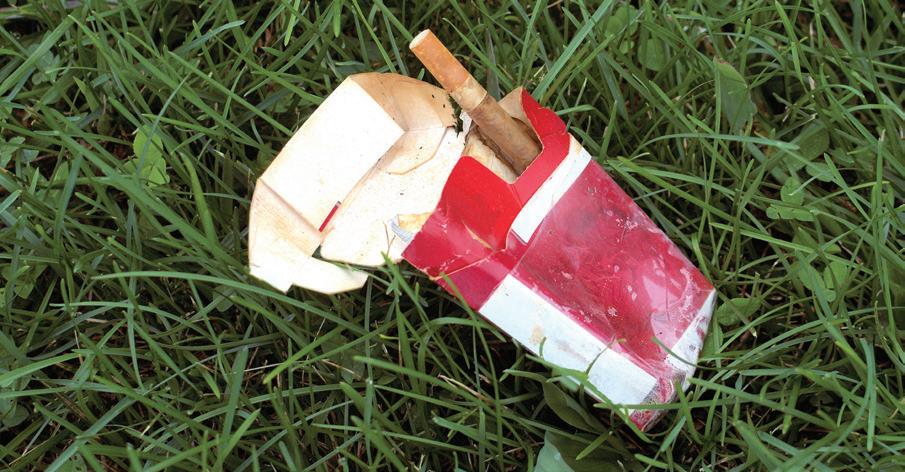
Scott’s family sought the assistance of forensic examiner, Dr Clint Hampson who found some of the evidence presented in court was contradictory to what had been logged on the day investigations began. Firstly, the cigarette packet did not appear on the table until the day after investigations began and was not in initial video footage of the house. The Jim Beam can was also called into question as initially the search by five officers had not found the item. Lastly, the location of the knife in the field was examined again as trained SES volunteers had previously searched the field and found no knife. It was also questioned later in the re-trial if the weapon found could have caused Stacey’s injuries, with a forensic expert claiming the wounds were too deep for the knife presented to be the murder weapon.
In 2020, the Criminal Court of Appeal found that the evidence may have been planted and the integrity of the investigation was compromised. Scott was not acquitted but was subject to a re-trial. The jury in the new trial found Scott not guilty in November 2020. Scott had been in jail for 12 years.
In 2022, the Western Australia parliament introduced laws that allow those convicted of crimes to make direct appeals to the Court of Criminal Appeal if fresh and compelling evidence is found. Previously, they would have had to appeal to the Attorney General to have the case heard or to the Governor for mercy.
Andrew Mallard was convicted in 1995 of the 1994 murder of jeweller Pamela Lawrence in her Mosman Park jewellery store. He was sentenced to life imprisonment. Colleen Egan, a journalist, took up Mallard’s fight to free himself and uncovered some unjust actions by police and prosecutors. Andrew suffered mental health issues and was interviewed at least once after a short stay in Graylands Psychiatric Institute. Mallard in those interviews believed he was assisting police with his theories and drawings of the murder weapon, a wrench. The police subsequently had forensic tests done on a pig’s head to determine the accuracy of Mallard’s statements. While the pig’s head test showed that a wrench could not have been the weapon used, this information was not provided in court and the prosecution continued to state a wrench was the weapon used. Mallard had appealed his conviction, but the judges of the Western Australia Court of Appeal dismissed the defence evidence regarding polygraph tests favouring Andrew, and they dismissed Mallard’s mental health issues and claims the police had withheld evidence. Eventually, Mallard was granted special leave to appeal to the High Court of Australia and in 2006 his conviction was quashed. He had spent 12 years in jail. Further evidence in the case was found later: a hand-print at the crime scene that belonged to convicted murderer Simon Rochford, who died shortly after police questioned him regarding Pamela Lawrence’s death.

alibi a statement that claims an individual was somewhere else when a crime was committed bribery the payment of money or giving advantage or benefits to someone in an official position to influence them to behave or act in a way contrary to their duties
coercion the use of force or threats to persuade an individual to do or say something
Being caught up in the justice system can be quite overwhelming and witnesses may be influenced or coerced into providing information that is inaccurate and can either falsely accuse an innocent person of a crime or place a guilty person away from a crime scene, providing them with an alibi. A public official, such as a police officer or judge, may be bribed by a suspect or an accused person into altering or withholding evidence or providing a particular outcome in a trial. This information may show that a suspect could not have been at the crime scene or find them to be not guilty. This is illegal activity and not only causes a miscarriage
Case study 2.4
of justice to occur, but individuals involved can be charged with additional crimes. Coercion may be used against witnesses by suspects and police alike to encourage and influence witnesses to make particular statements or admissions about criminal activity. For example, suspects may be told false information during interrogation. This causes a miscarriage of justice to occur as witnesses may not have made statements implicating themselves in a crime if they did not have a reasonable belief that harm, violence or disadvantage would be forced upon them or someone they know, unless they did or said what they were told. This often impacts the most vulnerable in society, such as people with disabilities, Aboriginal and Torres Strait Islander Peoples, and young people.
Processes and procedures have not always provided for the protection and rights of suspects and witnesses. Coming into contact with police can be quite intimidating for people, for both guilty and not guilty individuals. In 1961, Darryl Beamish, a 19-year-old deaf man, wrote confessions about the murder of Jillian Brewer and was convicted by a jury to a death sentence. Beamish spent 15 years in jail after his death sentence became a life sentence. He attempted to appeal his conviction six times, claiming that his confessions had been obtained through intimidation and threats from police.
John Button was convicted of the murder of his girlfriend and fiancé, Rosemary Anderson, based on a confession given to police that Button says was given after he was punched, denied food and water and after police repeatedly rejected his denials, telling him that he would be treated with leniency if he confessed. Gene Gibson also encountered this during his interviews, often deferring to authority, the police, who made suggestions that a not guilty plea would result in a large jail sentence whereas a guilty plea would mean only a small one. Both Beamish and Button were denied access to family during their interrogations. Notorious serial killer Eric Edgar Cooke made confessions as to his guilt in the deaths of Jillian and Rosemary, yet judges said this could not be used as Cooke was an ‘unscrupulous liar’. John Button eventually had his conviction overturned in 2002, and Darryl Beamish had his conviction overturned in 2005.

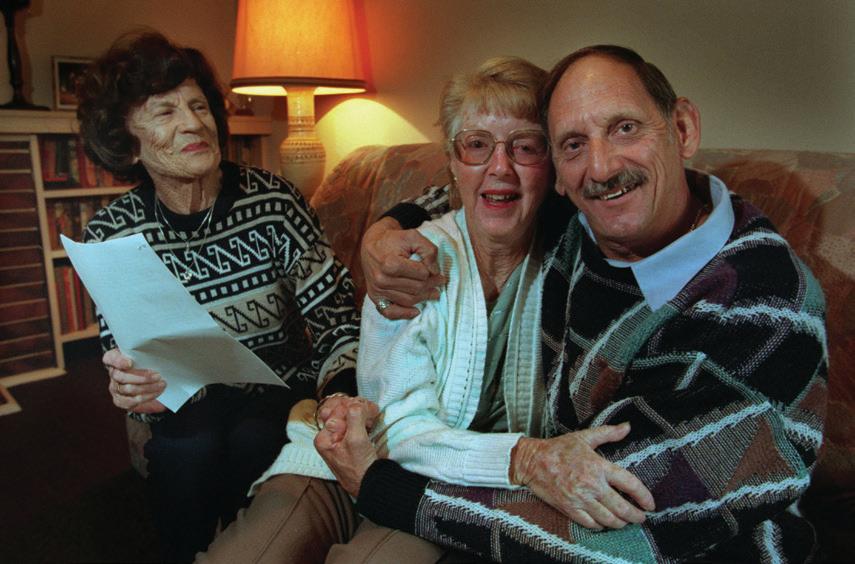
Two rights an individual has in court are the right to a trial by jury and an open and transparent trial process. Often these can have conflicting outcomes for the accused. An open and transparent court system utilises the media to a great extent. High-profile police investigations are reported on by news and media organisations while the investigation is ongoing. Suspects may be subjected to
Lloyd Rayney
scrutiny by the media and those that watch or read about the case may be influenced to believe a particular perspective about a case, a suspect or an accused. If any of the public who viewed related media are called to be a juror on a case, they may have developed a bias against the accused and cannot be impartial. If they cannot be impartial in listening to the evidence, they would be breaking the principle of justice, independent and impartial judiciary, and a miscarriage of justice could occur.
In 2007 the body of Corryn Rayney was found in Kings Park in Perth. During the investigation, police publicly named Lloyd Rayney, Corryn’s estranged husband, as the only suspect under investigation. In 2010, Lloyd, a lawyer, was charged with her murder. As both Corryn and Lloyd were members of the Western Australia court system, they were well known, and so as not to make the case unfair for Lloyd, a judge from the Northern Territory was brought in to hear the case. Rayney’s legal team also requested and was granted a judge-only trial due to the nature of media and police reports surrounding the investigation, and they believed any jury selected could not be relied upon to be impartial. Lloyd was found not guilty and the prosecution appeal upheld this decision. Lloyd Rayney has successfully sued the Western Australian police for defamation and the ruin of his reputation based on their actions.
Lehrmann was charged with the rape of Brittany Higgins and a trial began in the ACT Supreme Court in 2021. The trial was eventually abandoned due to actions of a juror who conducted research that was brought into the jury deliberations. Due to the possible deterioration of Brittany Higgin’s mental health, no new trial was scheduled. Lehrmann continued to maintain his innocence. However, as no criminal trial was conducted, he had not been found not guilty.
Due to media surrounding the case and an interview that Brittany Higgins did with Lisa Wilkinson, Lehrmann sued Channel 10 and Lisa Wilkinson for defamation, even though his name had not been publicised. In response to the defamation claim, Channel 10 and Lisa Wilkinson pursued a defence of truth in their reporting. As the case was being heard in a civil court, the claim only needed to be proved on the balance of probabilities. The Justice examined all the evidence presented and found many witnesses, including Lehrmann, to be unreliable. He was also found to have been recklessly indifferent to whether Higgins had consented or not. On the balance of probabilities, Justice Lee found the rape was more likely than not, to have occurred.


This case highlights the difficulties with media and jurors surrounding criminal cases, as Higgins was unable to receive justice due to a mistrial and Lehrmann found that seeking justice through civil means may not lead to the expected outcome.
1 After reading each of the case studies (maybe in pairs or groups), identify and describe the major causes of miscarriages of justice in Western Australia.
2 Investigate miscarriages of justice in other jurisdictions – suggestions include Sue Niell Fraser in Tasmania, Darryl Bromley in SA. Did the same issues arise there as have happened in Western Australia?
3 Discuss some possible options to help prevent miscarriages of justice (for example, police officers and detectives need to attend university law courses at the beginning of accepting such roles.)
4 Investigate if any changes were made after each of the above miscarriages and if anyone was held accountable for the problems that happened.
Key concepts: participation, rights and responsibilities, justice
Section 2.4 review Go online to access the interactive section review and more!
2.4 Review questions
Recall
1 Describe the concept of a ‘miscarriage of justice’.
2 Outline the right to legal representation.
HASS skills: questioning, researching, analysis, evaluating and communicating
3 Distinguish between an expert witness and forensic evidence.
4 Describe the concept ‘trial by media’.
Interpret
5 Explain, using an example, how lack of access to resources can create a miscarriage of justice.
6 How are bribery and coercion of witnesses different?
7 Using an example, explain how the principle of rule of law can be broken by either manipulation or withholding of evidence during an investigation or trial.
8 Discuss, using an example from the text, the extent to which the principles of justice can be broken in the Western Australian court system.
9 Do some further investigation into one of the cases in which a miscarriage of justice has occurred in Western Australia and find out whether changes were made. Discuss whether the Western Australian system has enough adequate protections to ensure justice is achieved.
1 Using websites such as ‘Law Society of WA’ or ‘Law Reform Commission’, investigate suggested reforms or changes to the Western Australian legal system that would improve just outcomes:
a Outline the idea suggested.
b Describe the actions required to implement the suggestion.
c Explain how it would improve the achievement of justice in Western Australia.
Key concepts: justice, participation, rights and responsibilities
HASS skills: questioning and researching, analysing, evaluating, communicating and reflecting
For citizens and individuals to respect and abide by the laws they must have confidence that the legal system is able to provide justice for them. The legal system needs to provide avenues for dispute resolution, access to resources such as legal representation, interpreters and evidence, as well as impartiality and independence from those making the decisions. Cost continues to be a barrier to access justice. Legal fees can often be beyond the incomes of many members of our society. The principles of justice also often aim to protect the rights of the defendant, but witnesses and victims are also deserving of rights, supports and protections. Time and delays
are also significant issues when one believes that trials should be prompt and without delay.
In 2023–24, a criminal case to be heard in the Supreme Court of Western Australia was expected to take 56 weeks, in the District Court 64 weeks, and in the Magistrates Court, up to 23 weeks. Those awaiting inquests from the Coroner could expect to wait up to 129 weeks. Such barriers to the courts show that a serious reinvestment in justice is required, including where the causes of crime are addressed to reduce the pressure on the courts and prison systems, and civil disputes have alternative methods to guide resolutions such as mediation and arbitration.
That just about wraps up this topic. How did you feel you went working through the chapter? Before you attempt the following activities, visit the Interactive Textbook to rate your confidence with this topic via a downloadable checklist.
1 Research the trial process in a Western Australian court, such as the Supreme Court or District Court, including:
• the rights of individuals in the court
• the roles of individuals in the court (including judge, prosecution, defence, bailiff, judge’s associate, jury, defendant)
• the steps in a trial for an indictable offence
• the rules of evidence that determine what can be presented in a trial
• how a person can appeal or have their case reviewed.
2 Use your research to develop your stance on Western Australia’s justice system. Do you think the interaction of principles of justice, legal protections and rules of evidence ensure justice is achieved?
3 Create a resource informing students about a day in court and their rights (possible resources include letters to a politician or newspaper, a petition, a website or a social media page).
The rate of recidivism (or return to detention) in Western Australia for adults was 37 per cent and 47.3 per cent for youth offenders in 2023–24.
People are jailed as a consequence of the crimes committed and often because they would pose a safety risk to the community if they were not to be jailed. As you can see, the time in jail is often not a deterrent to offenders and they can re-enter the system after committing further crimes.
4 Investigate some of the reasons that might lead to re-offending and possible actions and programs that could be implemented in detention to prevent re-offending.
Julian Assange has said that ‘one of the best ways to achieve justice is to expose injustice’, but many people often think they will not be able to make a difference and would rather accept injustice because they fear the consequences or repercussions of exposing it.
1 In two to three paragraphs, explain why it is important to continue to expose injustice.
The UN believes the most appropriate age for criminal liability is 14 years.
1 List arguments for and against the above proposition.
Winston is a six-year-old black labrador that is specially trained to support victims of crime, witnesses to crime and other court users in the Children’s Court of Western Australia in Perth. There is significant evidence to show the use of therapy dogs in courts can reduce stress and improve memory and speech function. Winston is on a 12 month trial and visits the children’s court up to 23 times a week. Thirty-six children who worked with Winston were surveyed about their feelings before and after their interactions with him.
To learn more, access the information sheet at https://cambridge.edu.au/redirect/11233.
2 Write a letter to the department advocating for a greater rollout of therapy dogs into courts more generally. Try to find data, statistics and evidence from other interstate or overseas schemes that have trialled such programs.
3 With a partner, develop and record a short podcast that either analyses a miscarriage of justice and its outcome or discusses a controversial legal issue. With your partner, outline the different points of view about this issue and the stakeholders involved and what changed or needs to change. Present your point of view about the issue.
Key concepts: democracy, democratic values, participation, rights and responsibilities, justice
HASS skills: questioning and researching, analysing, evaluating, communicating and reflecting
Civics and Citizenship has many connections with other subjects in the Humanities. Have you considered how what you have learnt about the government, political parties and justice relates to the other topics you will cover this year? Here’s a sample:

Globalisation, social media and the rise of fake news
You will study the concept of globalisation and its causes, such as improvements in technology, that have allowed greater communication across national borders. Consider how globalisation and social media have also influenced the increased distribution of questionable material and fake news and the effect this has on voters. Choose one of the issues below and consider:
1 How this information is distributed and/or restricted.
2 What influence it has or could have had on voters and elections:
• Chinese censoring of international social media such as Facebook and Twitter
• Russian interference in the 2016 US election
• banning of social media during the 2021 Ugandan election




• blocking of social media and the internet in Myanmar during the 2021 coup
• China and its influence on Australian political parties









• President Donald Trump and Twitter during the 2020 election campaign and election fraud.
Additional content available: Extra Making connections activities for Geography, History and Economics and Business




















Juukan Gorge and Rio Tinto and the government
In 2020 Rio Tinto destroyed two rock shelters at Juukan Gorge caves as part of its mining operation in the Pilbara, Western Australia. The rock shelters were 46 000 years old and of great significance to Aboriginal Peoples. Rio Tinto claimed this had been approved by the state government. However, many people protested its action.
Consider:
1 What does Rio Tinto do that changes the natural environment? What impact does this have on plant, animal and cultural life?
2 Could the Traditional O wners of the land take Rio Tinto to court over this destruction?
Murray-Darling Basin Authority – government plans to fix biomes
The Murray-Darling Basin covers 14 per cent of Australia, is home to two million people, and the area produces up to 40 per cent of Australia’s agricultural produce. The Murray-Darling Basin Authority (MDBA) was implemented by the former Liberal Howard government to handle the everincreasing environmental issues developing because of human use in the area.
Find out
1 what environmental impacts human use has had in the Murray-Darling Basin
2 the aims of the MDBA
3 how successive governments have handled the MDBA
4 the processes and procedures implemented by the MDBA to protect agriculture in the region, reverse the damage and conserve water and the environment in the area.
Colonisation of Australia and the evolution of a national justice system
• Investigate significant events like European arrival, the Gold Rush, Federation, and World War I and how these impacted democracy, rights and responsibilities, and the rule of law.
• Divide into small groups and select an event or period (e.g., the Eureka Stockade, the push for Federation, women’s suffrage) to research. Find out how it contributed to the development of the principles of justice in Australia.
• Create a presentation or poster that illustrates the connections between this event and the evolution of democracy and justice. Include key dates, significant figures, and quotes from primary sources.
• Identify how this event influenced modern democratic practices and values in Australia.
• Reflect on how other events between 1750 and 1918 contributed to the development of democracy in Australia.
• List the lessons we can learn from this period about the importance of civic participation and the protection of rights.
Have you ever wondered where all the goods you or your family buy come from? Are more goods purchased from overseas manufacturers or from Australian manufacturers? How does buying these items satisfy your wants and needs? Is more, better? Do you use a credit card or cash to make your purchases? Do you think about the consequences of your purchases on the community, the environment and the economy? If you do, who should be responsible for making sure that producers are acting in a way which is best for everyone?
Economics and Business, at its simplest, is a study of how people
and different groups make decisions. Economics and Business looks at the ways individuals and other groups in the community, such as government and businesses, make decisions about how limited resources will be used to satisfy our needs and wants. What will we buy? What will businesses make or produce? What goods will the government provide? These decisions about what we want and need are limitless, but the resources used to make these products are limited. The decisions made by individuals, government and businesses are interrelated, and decisions made by any one of these can impact on the others.
Figure A Economics and business is intertwined with every aspect of our lives.

In this unit you will focus on economic decision-making at individual, business and national levels, and you will look at the various forces shaping these decisions. These decisions will impact on the health of both the Australian and global economies, as well as the wellbeing of our society and environment today and into the future. This unit will help you appreciate how interruptions to global interconnections, such as during the COVID-19 pandemic, global conflict or political change, can impact people both at home and overseas. You will learn about how you can manage your finances, including through saving and investing, and about the risks and rewards associated with how you use your money. This should mean you will have a better understanding of your role in the economy, and how current decisions and actions can impact on your future. You will become well-informed and critical decision-makers who can contribute to a prosperous but sustainable future, both nationally and globally.
After completing this unit, you should be able to answer these questions:
• How do the key participants within the economy interconnect?
• How does Australia trade with the rest of the world?
• What factors connect different economies?
• What is the impact of global economic change?
• What role do transnational corporations have on our lives?
• How do businesses create products which succeed in the market?
• How do Aboriginal and Torres Strait Islander businesses develop opportunities in the market?
• Why do we save and invest?
• What is the relationship between risk and reward?
Figure B Hundreds of people queue outside an Australian Government welfare centre, Centrelink, in Melbourne on 23 March 2020, as jobless Australians flooded unemployment offices around the country. Then Prime Minister Scott Morrison warned the coronavirus pandemic would cause an economic crisis akin to the Great Depression.


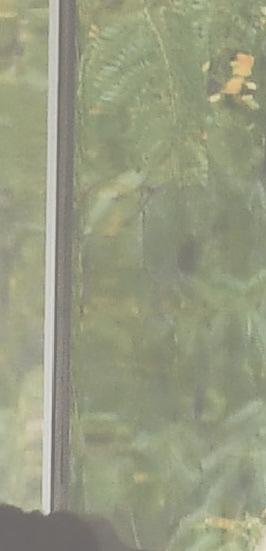






Aboriginal and Torres Strait Islander Peoples should be aware that this chapter may contain the names and images of people who have passed away.

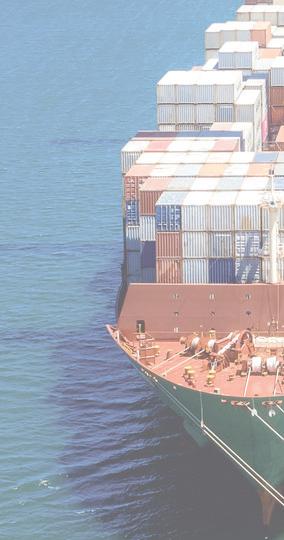


In this chapter, you will investigate how Australia engages with the rest of the world. We look at the nature and importance of trade to the individual and the economy and the composition and direction of Australia’s trade.
In this chapter we also focus on economic decision-making on a national level and the various forces shaping these decisions. This includes taking into account domestic issues, the Asia–Pacific region and the global economy. We examine why and how participants in the global economy are dependent on each other, including the activities of transnational corporations in the supply chain, and the impact of global events on the Australian economy. By looking at Australia’s geographical position and wealth within the broader global community, we can get a better understanding of how Australians are globally connected.
After completing this chapter, you should be able to answer these questions:
• How do the key participants within the economy interconnect?
• How does Australia trade with other nations and what is its place within Asia and the global economy?
• How has Australia’s interdependence with other economies changed over time?
• What is the outlook for Australia’s global interconnections as a result of COVID-19?
• What are transnational corporations and how do they influence the world?
Visit the Interactive Textbook to access:
• interactive chapter Scorcher Quiz
• videos, image galleries and other extra materials.

• What are the key sectors of the economy and how do they interact?
Australia, like most developed nations, operates an open, mixed market economy. This means that while consumers and producers are free to interact in many circumstances, both the Australian Government and the overseas sector are important participants in the economy. In fact, in 2024 the Australian Government spent $734 billion, or just over a quarter of the total money spent in the economy that year. Much of this money goes towards providing essential


services and infrastructure to help maintain and improve Australia’s standard of living.
The structure of the economy can be represented with a diagram known as the five-sector circular flow model. This diagram illustrates the interconnection between various participants in the economy and can also be used to show the effect of changes to flows of money from one sector to another.

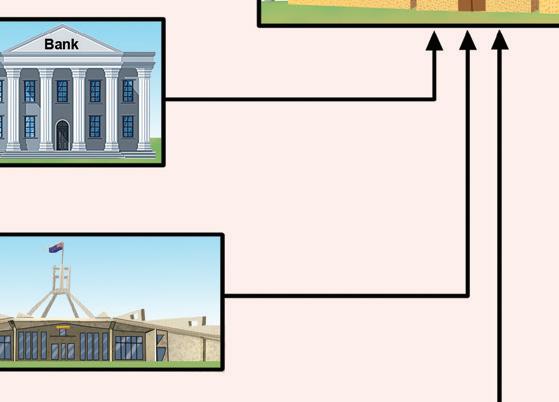



The key participants in the economy are:
• Households and consumers: individuals like you and households like yours, who purchase goods and services in the economy and provide labour to businesses. They have a dual role in the economy. On one side, they are consumers, who demand goods and services; and on the other, they own the means of production (labour) through which the goods and services are produced. In other words, households and individuals work to earn an income, which they use to consume Australian- and overseasmade products. Not all income is used to purchase goods and services, however. Some of it is saved, and a portion is withheld by the government as tax.
• Businesses and producers: organisations that sell goods and services with the goal of making money or profit. Firms use factors of production (land, labour and capital) to produce goods and services, creating value and wealth. They demand labour from households and individuals in return for a salary or wages. They also offer goods and services
to households, other firms or the government. Businesses often borrow from financial institutions such as banks, which allows them to start up or expand. Australian businesses interact with the overseas sector by selling goods and services produced here to residents of overseas countries.
• Governments: provide most of the rules as to how the other participants in the economy should interact. They offer goods and services (mostly public goods and services like roads or national security) yet also demand goods from firms, and labour from households and individuals. The government taxes individuals and businesses based on their income and revenue.
• The government can place limits on or prohibit the consumption of certain goods, such as single-use plastic bags. The government can also put tariffs on imports or provide subsidies for production of certain goods and services. The government also has the ability to redistribute wealth through social services, such as welfare payments, and via the creation of large-scale infrastructure, such as roads and hospitals.

exports goods and services sold to another country
imports goods or services bought from another country
• The financial sector: a vital part of the Australian economy and includes organisations such as banks, credit unions and other lenders. Consumers use this sector as a means to retain some of their income in savings, while the lenders use this money to provide loans to households and businesses. Interest rates represent the cost of borrowing money – lenders will charge a percentage of a loan in interest, in return for the risk associated with lending the money and to make a profit, while savers earn interest in return for depositing their money with the financial organisation.
• It is a two-way relationship. Lenders rely on savers to provide money for them to in tur n lend out to businesses and households.
• The overseas sector: this will be the central focus of this chapter. Australia is considered a medium-sized economy by global standards and relies on trade with other economies in order to maintain and improve the standard of living of its residents. Australia produces many goods and services, some of which are bought by residents of other countries. These are known as exports and provide revenue to Australia. Many goods and services which are produced overseas are also bought by Australians as imports These cost money but add value to people’s lives. These other countries with which Australia trades are known as the overseas sector.
Figure 3.2.3 Australia’s ‘big four’ banks are worth a combined $360 billion. ➜

Expansions and contractions
This activity works best if you use balloons. Consider the Australian economy to be like an inflated balloon. As money enters the economy through government spending, investment from financial institutions or selling exports, the economy expands. As money leaves the economy through taxation, savings or import spending, the economy contracts. Using a partially inflated balloon, demonstrate by inflating or deflating what would happen to the economy in the following scenarios:
1 The government cuts income tax rates.
2 Banks offer cheaper loans to businesses.
3 Australia sells more iron ore to China.
Key concepts: making choices, specialisation and trade, interdependence
Section 3.2 review
4 The government increases the goods and services tax (GST).
5 Banks offer higher interest rates on savings.
6 People lose trust in banks to protect their money.
HASS skills: analysing, communicating and reflecting
3.2 Review questions
Recall
1 Explain what type of economy Australia has.
2 Describe the main participants in the Australian economy.
3 Explain the difference between imports and exports.
Interpret
4 Write a paragraph explaining how the five-sector circular flow diagram works.
5 Describe the relationship between consumers and producers.
Argue
6 What is more important to Australia’s economy – imports or exports? Justify your answer.
7 Should the government spend more money to help grow the economy? Why, or why not?
Apply 3.2 questions
1 Explain, with reference to the circular flow model, the impact on the economy of the following situations:
a The price of iron ore (a key export) increases.
b Consumers’ income rises by 5 per cent.
c The government increases the company tax rate by 5 per cent.
Key concepts: making choices, specialisation and trade, interdependence, economic performance and living standards
HASS skills: analysing, evaluating, communicating and reflecting
trade route a route, often covering a long distance, used by people buying and selling goods free trade international buying and selling of goods, without limits on the amount of goods that one country can sell to another, and without special taxes on the goods bought from a foreign country globalisation the increasing interconnection between nations and people through the development of trade, technology, travel and communication specialisation where countries tend to produce certain goods that they are best at producing and then trade them with other countries
• Why do countries trade?
Countries have traded for centuries, and trade routes have developed since ancient times to move goods from places of production (such as factories) to places of commerce (such as markets). Commodities that were only available in some locations were so desired that fortunes were made and lost on the delivery of these traded goods. Trade routes developed and became vital, not only for the movement of goods and services, but also for the spread of technology, culture, wealth and knowledge.
Today, trade continues to be critically important, with many countries relying on it as a major factor in raising living standards, providing employment and higher incomes, and enabling consumers to enjoy a greater variety of goods and services.
International trade is the buying and selling of goods and services across international borders. Countries sell goods and services produced domestically to buyers overseas – these are called exports. Countries also buy goods and services from countries overseas to use domestically – these are called imports.
International trade has created a rapid improvement in living standards around the world as free trade and globalisation have opened markets for goods and services that 20 or 30 years ago were not available.

Consumers and households now have access to a vast range of products from overseas, including cars, clothes, cosmetics, electronics and food. The range of goods and services is so wide that no one country could, or indeed should, manufacture and provide all these products. As we will see, some countries have a natural advantage in producing certain goods and services and tend to specialise in the production of a few things, while importing the goods and services that they are not so good at producing.
Therefore, the importance of trade cannot be underestimated. Consumers want greater choice of goods and services at lower costs while businesses want to import raw materials at cheaper prices to reduce their costs of production to be more competitive in markets. Governments place importance on trade because it can improve the profits of Australian industries and provide jobs and income for all Australians. This in turn can assist in improving living standards.
One of Australia’s productive advantages is valuable natural resources such as iron ore, which is exported to other countries where it is used to produce steel. Often this steel is then used in the manufacturing of final goods such as cars, which Australia imports. This twoway trade is beneficial to all participants in the trading relationship.
Amazing but true …
Australia is the world’s largest exporter of iron ore. Western Australia accounts for about 98 per cent of Australia’s Economic Demonstrated Resources (EDR) of iron ore, which is currently around 900 million tonnes. Around 80 per cent of this is exported to China.
Some examples of countries and regions that have specialised exports include:
• New Zealand – dairy, eggs, honey and meat
• Canada – mineral fuels, oil, vehicles and machinery
• Japan – vehicles, machinery, electrical goods
• European Union – machinery, vehicles, pharmaceuticals
• Indonesia – coal briquettes and palm oil.
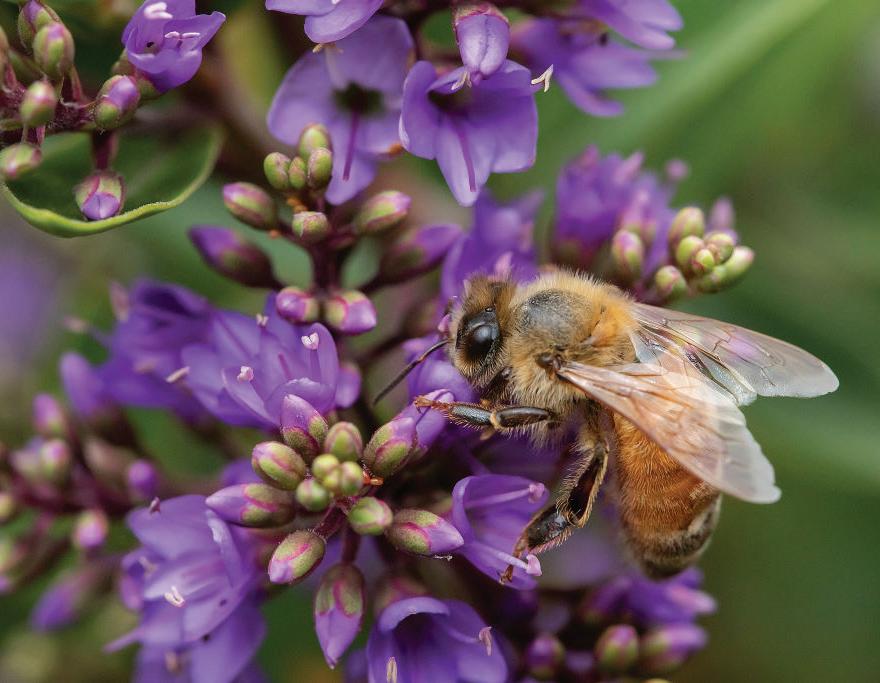
Although Australia’s population is only around 27 million, Australian agriculture feeds 75 million people around the world each year! Amazing but true …
Without trade these countries would not benefit as much from their specialisation within their own country, so they export these goods to earn more income. Consumers also like to have freedom of choice and may demand products from overseas if that product is preferred, even if the product is also locally manufactured. Countries that cannot produce these goods will import them, because they do not have the natural resources or are not able to produce the goods as cheaply or as well.

Specialisation by both workers and businesses leads to increased production and provides for the most efficient use of resources. The exchange of goods and services between countries (trade) results in increased interdependence between the sectors in, and between, economies. Pop this concept into your memory bank – at the end of this book is an activity that will test your understanding of this, and other key HASS concepts!
Global trade connections
In pairs, research one of the below pairs of countries and respond to the questions that follow:
• Brazil and Japan
• Switzerland and Greece
• Bangladesh and Kenya.
For both countries you have chosen:
1 List their top three exports and imports.
2 Comment on any similarities or differences between the two countries.
3 Suggest two reasons why these countries export these particular goods or services.
Key concepts: making choices, specialisation and trade, interdependence, economic performance and living standards
comparative advantage an advantage a country has over another country because it can produce a particular type of product more efficiently labour-intensive production industries and methods that need a substantial number of workers and time
Countries that have these areas of specialisation benefit from this trade because other countries are not as good at producing these goods. This is described in economics as comparative advantage. This means that compared to other countries, they have an advantage in being able to produce goods more efficiently and therefore at a lower cost. This lower cost enables them to compete more aggressively and cheaply in the world market, thus earning more money from their specialised products or services.
As an example, India has very low labour costs compared to other countries such as Australia, which gives India an advantage in labour-intensive production (e.g. call centres, clothing
HASS skills: questioning and researching, analysing, communicating and reflecting
manufacture). Therefore, it would be efficient and beneficial for India to export these services to other countries.

Understanding how trade connects Australia with the world
Research online to learn more about Australia’s main trading partners such as China, Japan, the United States, South Korea, and India, the key goods and services traded, and the reasons for this trade. Consider Australia’s key exports such as iron ore, coal, natural gas, gold, and education services, and key imports such as refined petroleum, cars, computers, and telecommunications equipment. You can start by referring to the Australian Department of Foreign Affairs and Trade's statistics, available at the following link: https://cambridge.edu.au/redirect/11369.
Examine how these trade relationships create interconnections between Australia and other countries and discuss the impact of these interconnections on both Australia and its trading partners.
Analysis questions
1 Identify the main trading partners of Australia and the key goods and services traded with each partner.
2 Explain why Australia specialises in certain exports, and imports certain other products/services.
3 Discuss the benefits and challenges of Australia’s trade relationships with its major partners.
4 Evaluate the importance of Australia's trade connections. Consider the importance of the products/services Australia imports, and well as the impacts of its export industry.
Key concepts: specialisation and trade, economic performance and living standards, interdependence, making choices
HASS skills: communicating and reflecting, evaluating, analysing
3.3 Review questions Recall
1 Describe the origins of trade.
2 List three benefits of global trade.
3 Recall why certain countries specialise in producing certain goods and services. Interpret
4 Explain why Australia specialises in producing resources such as iron ore.
5 Explain why you think New Zealand specialises in dairy products. Argue
6 Suggest what you think would happen if Australia decided to stop trading with other countries and produce everything domestically.
7 Do you think Australians should buy products produced in Australia? What are the benefits and costs of doing so? Discuss
Apply 3.3 questions
1 Create a poster to promote Australia as a trading partner to an overseas country. Make sure to include Australia’s key exports and imports and reasons why other nations would benefit from trade.
Key concepts: making choices, specialisation and trade, interdependence, economic performance and living standards
HASS skills: analysing, evaluating, communicating and reflecting
• How has Australia’s interdependence with other economies changed over time?
According to the Department of Foreign Affairs and Trade (DFAT), one in five jobs in Australia relies on exports in mining and farming. Australia has abundant natural resources and is a leader in the global mining industry, exporting many natural resources, including bauxite, iron and zinc ore, nickel and gold. The strength of its mining industry has seen Australia become one of the world leaders in the development and manufacture of mining equipment. However, Australia has recognised its dependence on mining for
export and therefore is continuing to grow and become competitive in the world market for other key exports, such as education and tourism.
Australia as a nation supports free trade and subsequently has entered many free trade agreements. These agreements are seen to strengthen ties between nations globally, improve investment in Australia and improve economic growth and employment opportunities in Australia.

Top 5 export markets: China, Japan, Republic of Korea (South Korea), United States, India
Top 5 export AUD$M: Iron ores and concentrates (136 262), Coal (103 188), Natural gas (74 322), Educationrelated travel services (47 819), and Gold (28 352)
Total value of imports: A$526 billion.
Figure 3.4.2 Australia’s top export markets
Source: DFAT website, ‘Australia’s trade in goods and services 2023–24’
Activity 3.3
Interactive quiz
Visit DFAT’s ‘Trade through Time’ website and complete the online quiz.
Key concepts: specialisation and trade, interdependence
HASS skills: questioning and researching, analysing
Interdependence refers to the connections between the different sectors (or groups) in an economy, and how the actions of one sector impact on the other sectors in an economy. Pop this concept into your memory bank – at the end of this book is an activity that will test your understanding of this, and other key HASS concepts!
Traditionally, Australia carried out most of its trade with Britain and the USA. Over the past decades, however, and with the opening up of new markets in our region, Australia has expanded its trade to include many Asian nations, including Japan, China, Taiwan and South Korea. Given its geographical position in the world, the emphasis of Australia’s trade has shifted from the United Kingdom at Federation (1901) to the Asia–Pacific region in the 2000s.
Asia is an important trade partner, not only because Australia is located in the Asia–Pacific region, but also because
Asia exerts enormous influence globally and is one of the most populous regions in the world. It is home to two-thirds of the world’s population and is well on the way to becoming both the largest producer and consumer of goods and services in the world.
Therefore, Australia’s trade with countries in the Asia–Pacific region is more important than ever. It is so important that three out of its five major trading partners are located in the Asia–Pacific region. Much of Australia’s export growth has been built on its abundant resources, and this growth has only increased with the huge demand for raw materials such as iron ore driven by the rapidly growing economies of Asia.
The Chinese economy has been growing on average at an amazing 9.2 per cent per year since 1989 and is set to overtake the United States as the world’s largest economy by the late 2020s to early 2030s.
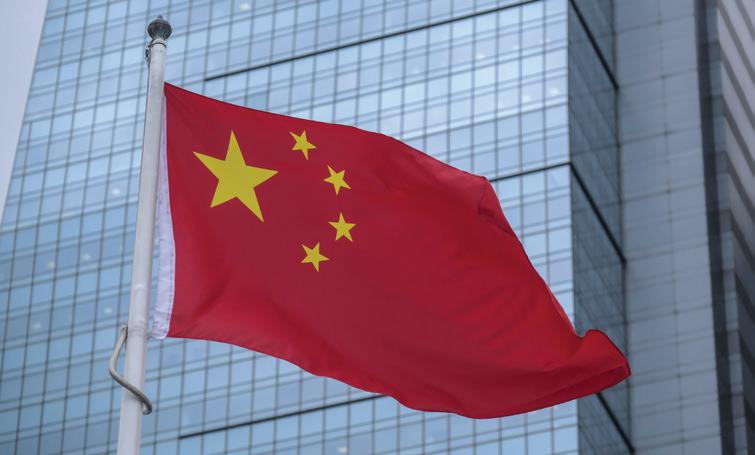
a result of the emergence of
Case study 3.1
Resources connecting WA to the world: Prelude FLNG
Prelude FLNG is a floating liquefied natural gas (LNG) project located approximately 475 km north-north east of Broome in Western Australia. The facility is 488 metres long and 74 metres wide, making it the largest offshore floating vessel ever built, and it is projected to produce 3.6 million tonnes per year of LNG. The vessel is operated by Royal Dutch Shell, a multinational corporation. Demonstrating the way Western Australia’s resources connect with the wider world, the facility was constructed in South Korea, will supply natural gas to most of Asia and create jobs for people in countries such as the Philippines.
A team of 120 people work on board Prelude during operations. The project is also supported by teams and contractors across Perth, Darwin and the Kimberley – providing long-term steady Australian jobs both directly and indirectly. This project increases Western Australia’s exports, providing incomes for many people and families. In addition, a partnership with WA TAFE is providing training opportunities for young people across a range of technical skills.
Major resources projects of this type are critical to the Western Australian economy and connect us to the world through trade, immigration, flows of investment and education.
Analysis questions
1 Recall what Prelude FLNG is.
2 Explain how Prelude FLNG connects Western Australia to trade partners in the Asia–Pacific region.
Key concepts: specialisation and trade, interdependence
HASS skills: analysing, communicating and reflecting
Free trade occurs when there are no restrictions on trade. Many countries impose trade restrictions such as tariffs or quotas on certain imports to protect their own industries. The government imposes tariffs (a form of tax) on an imported good to make it more expensive and less desirable compared with the cheaper, domestic version. Imposing a quota means only a limited number of these goods can be imported, which also makes the imported goods more expensive relative to what can be purchased locally. These restrictions can benefit local producers but tend to cause an overall loss to the economy as consumers end up paying more for goods and services.
Free trade and free trade agreements (FTAs) are designed to reduce the barriers (such as tariffs and quotas) between two or more countries, and therefore allow
Think, decide, evaluate
citizens of countries to obtain goods and services at a lower price. FTAs exist between many countries. They can be bilateral (between two countries) or multilateral (between three or more countries).
Australia has entered into 18 FTAs, including:
• AUSFTA (US-Australia Free Trade Agreement)
• ChAFTA (China-Australia Free Trade Agreement)
• SAFTA (Singapore-Australia Free Trade Agreement).
Free trade brings prices down. Because it allows countries to specialise in what they do best, it makes imports cheaper. This translates into people spending less on their purchases.
tariff a charge or list of charges either for services or on goods entering a country quota a fixed, limited amount or number that is officially allowed

In groups of three to four students, share ideas and questions in response to the following prompts after seeing the video.
What do you know about this topic?
• List the ways in which the COVID-19 pandemic has directly impacted your life. Try to consider social and economic impacts.
What would you do in this situation?
• If you were a national or state leader, how would you attempt to balance containing the virus by restricting people’s movement and keeping the economy open?
What are the costs and benefits of decisions?
• Create a set of costs and benefits of both the herd immunity strategy and the hard border strategy of pandemic response.
Key concepts: specialisation and trade, interdependence, economic performance and living standards

3.4.6 A social distancing sign that appeared in Sydney in late 2020
HASS skills: analysing, evaluating, communicating and reflecting
Amazing but true …
Less tariffs means greater trade. Over the past 20 years, an average tariff reduction of 15 per cent helped to quadruple trade worldwide! That has not only helped to boost local economies but also to increase global standards for health, security and the environment, which in turn increases average life expectancy.
investment the act of putting money, effort and time into something to make a profit or get an advantage, or the money, effort and time used to do this
While the advantages of free trade are immense, it is important to also recognise that free trade comes at a price.
Free trade can lead to misuse of natural resources. Because Australia is rich in naturally occurring resources such as iron ore, many see Australia as a quarry for the world’s steel. Do we rely too heavily on extraction of natural resources at the expense of developing other export industries in Australia? Are our environmental controls strong enough to protect the environment from the impact of mining?

The extraction of natural resources from the ground can lead to environmental degradation and economic exploitation both in Australia and other countries. Some developing countries need investment in mining in their countries, so sometimes have lower environmental standards to entice multinational corporations to invest in their country. These natural resources (such as oil, rare minerals, gas) are used in production processes, but many people are unaware of the negative impacts these mines can have on their local communities. These impacts include, but are not limited to, displacement of people from their homes and land, water pollution, soil erosion and air pollution. These impacts are among the worst effects of the mining industry.
The negative impacts of increased international trade can also be seen in the increase in transport of goods and services around the world. This is especially the case with shipping, as close to 90 per cent of the world’s trade is carried out by sea. Much of the oil and gas we use is imported by ship. The food we eat and goods we consume are not always produced or sourced locally but shipped from various locations around the world. More than 5000 container ships are moving around the world at any one time. Shipping accidents are relatively rare, but they do happen and can have disastrous effects.
Over 90 per cent of Australia’s iron ore and metallurgical coal production is exported and had a combined value of nearly $229 billion in 2024. Amazing but true …

Figure 3.4.8 Forest destruction caused by mining gold deposits in Venezuela, South America. Soil is blasted with powerful jets of water, causing chemical pollution which has a major impact on the rainforest. ➜ Activity
Research task
Use the following link https://cambridge.edu.au/redirect/11366 to read the article 'Christmas Island oil spill: time to value natural treasures, not just trade’ on The Conversation website, then answer the following questions.

1 Outline why David Attenborough described Christmas Island as one of the greatest wildlife spectacles on Earth. In your answer describe three marine species found around Christmas Island and Flying Fish Cove.
2 The Panamanian Carrier MV Tycoon crashed at Flying Fish Cove. Recall what pollutants spilled from the ship and explain the impact have on the unique marine life.
3 The MV Tycoon is not the only shipping accident described in the article. Outline two other accidents.
4 Describe two ways that people can achieve the dual goals of delivering wealth from oceans and conserving marine natural heritage.
Key concepts: making choices, specialisation and trade, interdependence
HASS skills: analysing, evaluating, communicating and reflecting
3.4 Review questions
Recall
1 List five of Australia’s major exports.
2 Recall the countries Australia trades most with.
3 Explain the difference between a tariff and a quota.
4 According to DFAT, how many jobs in Australia rely on exports in mining and farming?
Interpret
5 Outline why you think Australia’s trade has shifted from Britain and the USA to Asia.
6 Explain why Australia chooses to set up free trade agreements (FTAs).
7 Discuss some possible disadvantages of free trade.
8 Is it a good thing that Australia’s trade relies so much on resources and mining? Suggest some of the downsides of this.
9 Should the entire world set up a global free trade agreement? Evaluate the arguments for and against this idea and present your own opinion.
Apply 3.4 questions
1 The Trans-Pacific Partnership (TPP) was a proposed free trade agreement that was to involve Australia and many other Pacific countries, including the USA. US President Donald Trump withdrew from the agreement, which impacted Australia greatly. Investigate this agreement and answer the following questions:
a What was the purpose of the TPP?
b What benefits would it have provided to Australia’s economy?
c Why did President Trump withdraw from the agreement?
d What happened after the USA withdrew?
Key concepts: making choices, specialisation and trade, interdependence, economic performance and living standards
HASS skills: analysing, evaluating, communicating and reflecting

• What factors connect economies around the world?
Consider a smartphone. The engineers who designed it are probably based in San Francisco, while many of the raw materials are sourced from countries such as Zambia or Congo in Central Africa. Most of the production happens in factories in China, and the final product is shipped to almost every country you can imagine. The way this happens is known as a global supply chain.
Supply chains are the system of people and processes involved in the production of goods and services. They begin at the extraction of raw materials, and involve transportation and manufacturing, as well as sale to the customer at the retail stage.
Supply chains can be complex, involving thousands of individual people or organisations. They also require effective communication and collaboration across these complex chains, to avoid breakdowns in the system. Many businesses rely on others from all over the world in order to provide a product to their customer.
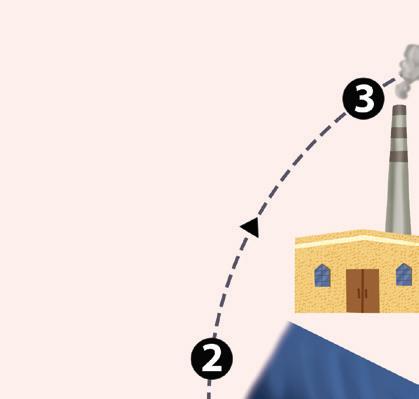
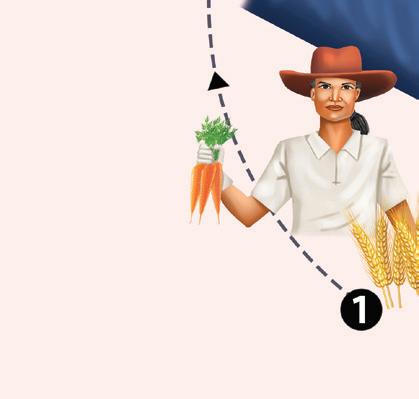




Large transnational corporations (TNCs) make use of global supply chains. They have supply chains that span across national borders. They have offices and factories in different countries around the world to facilitate the purchase, production and distribution of goods and services that those multinational corporations (MNCs) then sell on the international market.
IKEA is an example of an MNC. Headquartered in the Netherlands, the furniture and homeware company operated 479 stores worldwide in 2024.
supply chain the system of people and things involved in getting a product from the place where it is made to the person who buys it
transnational corporation (TNC) a large corporation headquartered in one country that produces or sells goods or services in multiple countries
The raw materials used to produce the furniture sold at IKEA come from all over the world, are shipped to manufacturing locations in South-East Asia and delivered in flat packs to stores in Australia for sale. The company attempts to eliminate inefficiencies by using recycled materials, buying at large scale and having customers assemble the products at home. This ensures costs are kept low and consumers pay less.
Think, pair, share
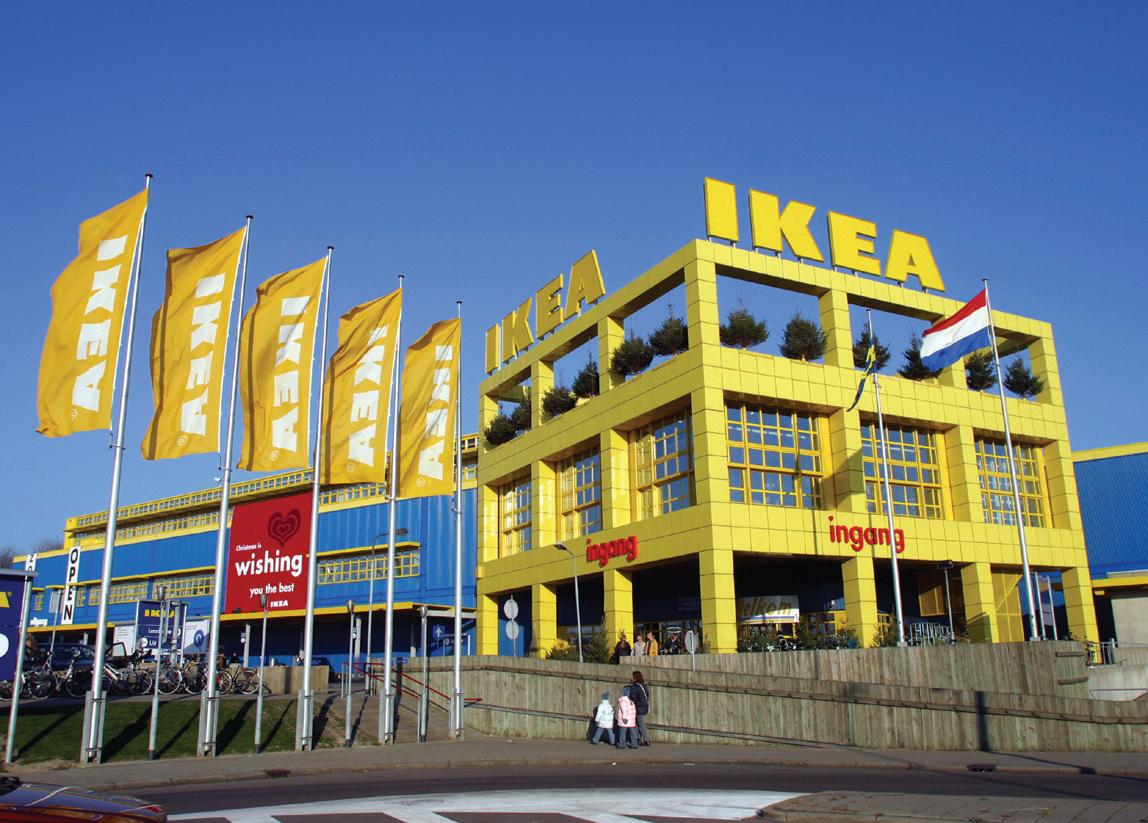
Think about each stage represented in the supply chain diagram in Figure 3.5.1 Take a few minutes to identify and think about what happens at each stage and find a partner to talk about each stage. Do you identify similar activities and processes?
Key concepts: scarcity, specialisation and trade, interdependence
brand value the financial value of having customers who will pay more for a particular brand
Trade ultimately can allow for greater choice for consumers because trade increases the variety and availability of goods and services that can be imported. These are the products and services that cannot be produced efficiently by the domestic market. It is important to remember that we do not only import goods and services because they are
HASS skills: analysing, communicating and reflecting
cheaper, but also because they are unique and have brand value. Brand value means that consumers are willing to pay more for a certain brand because of the reputation of the manufacturer and the perceived prestige of ownership. We import Maserati from Italy, Chanel from France, Adidas and Nike from the USA, to name but a few.

Draw up a table and think about the brands and products you like from overseas. List your favourite brands in the first column. In the second column (country of origin) write the name of the country where this brand comes from, and in the third column, write why you like this brand. Share and discuss with a partner.
Key concepts: making choices, specialisation and trade
This complicated, connected world has many effects on people and the environment. Some are extremely beneficial for huge groups of people, such as vaccines and huge reductions in global poverty and starvation, while pollution and war are negative aspects of the modern economy. Many other aspects have both
HASS skills: analysing, evaluating, communicating and reflecting
costs and benefits, such as cars and smartphones.
This is a core aspect of economics, which is the science of making the most effective use of resources in order to maximise positive outcomes and reduce costs. Successful businesses will innovate to become more efficient and increase their profits.
exogenous shocks unexpected or unpredictable events that occur outside an industry or country, but can have a dramatic effect on the performance of markets within an industry or country.
Create a continuum of key aspects of the modern, interconnected economy from most beneficial to most destructive. You can start with the examples in the table below and add five more of your own. Then justify your list by explaining your reasoning to a partner or the class.
Key concepts: interconnection and trade, making choices, interdependence
Economists make predictions based on evidence collected by statisticians, politicians and door knockers. But they can’t easily predict significant disruptions to the global economy such as natural disasters, conflicts, economic crises and pandemics.
HASS skills: communicating and reflecting, evaluating
These exogenous shocks create disruption to the economy which can often be damaging in the short term but create opportunity for innovation, change and growth in the longer term. How these disruptions are prepared for, managed and recovered from has an important impact on the structure of a nation’s economy
structure of an economy the framework that organises how a society produces, allocates, and distributes goods and services
bottlenecks a slowdown or stoppage in the supply chain that prevents goods from moving through the system. Bottlenecks can occur at any stage of the supply chain, from sourcing raw materials to delivering finished goods
Many of the world’s most magnificent cities owe their architecture, culture, cuisine and major industries to centuries of war, famine, slavery, plague and disaster. Change is a constant in economics and those who adapt fastest in a changing global economy tend to be the ones to shape the world around them and create the rules for success.
When these shocks occur, they can have wide reaching effects on the global supply chain. The conflict in Ukraine which began in 2022 has destroyed the economies of Russia and Ukraine and has
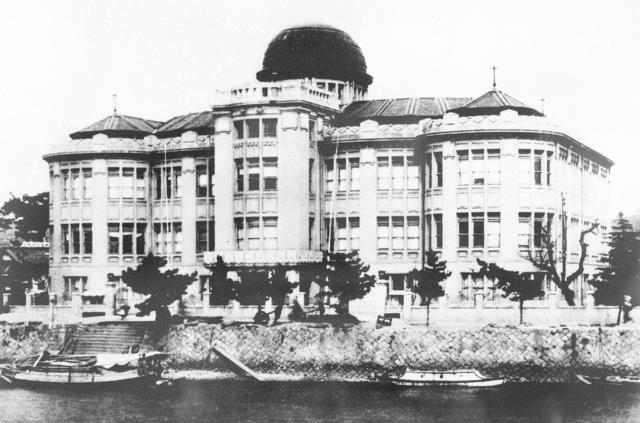
➜
had ripple effects on the cost of energy, food and financial markets around the world. The COVID-19 pandemic created supply chain bottlenecks across most industries, but gave rise to a surge in digital communication tools and advances in healthcare. Economists study these exogenous shocks in reverse, looking back at trends which are evident from that moment in time when the shock occurred. This is the nature of economics, as it is a study of human behaviour and choices in a complex, often unpredictable globally connected world.


The Youth Survey Report 2023 by Mission Australia provides insights into the concerns and experiences of young people in Australia. The report highlights issues such as the environment, equity and discrimination, the economy, and mental health.
Read the report at https://cambridge.edu.au/redirect/11234. Review the key findings from the report, focusing on the concerns related to the economy and financial matters. Investigate how these economic concerns are connected to global economic interdependence. Consider factors such as trade, employment, and international relations. Use the data to identify patterns and relationships that demonstrate economic interdependence.
Analysis questions
1 Identify the main economic concerns of young people in Western Australia as highlighted in the Youth Survey Report 2023.
2 Explain how global trade impacts the economy of Western Australia and the job opportunities available to young people.
3 Discuss the role of international relations in addressing the economic concerns of young people in Western Australia.
4 Analyse the data to determine how economic issues in other countries can affect the financial stability of young people in Western Australia.
5 Evaluate the importance of global economic cooperation in solving the economic challenges faced by young people in Western Australia.
Key concepts: interconnection and trade, making choices, interdependence
HASS skills: communicating and reflecting, analysing, evaluating
Go online to access the interactive section review and more!
3.5 Review questions
Recall
1 Define the following terms: a comparative advantage b supply chain c free trade d fair trade.
2 Explain what a multinational corporation is.
3 Create a list of five everyday products that you use or enjoy that come from overseas. In a Word document or your notebook, create a supply chain diagram for these products to outline where each stage in the production process takes place.
4 How many jobs in Australia rely on exports in mining and farming, according to DFAT?
Interpret
5 Why do you think consumers are increasing their demand for fair trade products?
Argue
6 ‘IKEA attempts to eliminate inefficiencies by using recycled materials, buying at large scale and having customers assemble the products at home. This ensures costs are kept low and consumers pay less.’ Present a counterargument to this. For example, some consumers may enjoy assembling the products at home but others may not. IKEA does offer assembly for an additional price. Does this then eliminate their value for money? Outline what impact the IKEA sales model might have on local furniture businesses.
Apply 3.5 questions
Go online to find the article ‘Shipping in the Great Barrier Reef: the miners’ highway’ on The Conversation website. Read the article and answer the questions below.
1 According to the traffic report, why do you think the Great Barrier Reef (GBR) is referred to as the miner’s highway? How many ships are estimated to travel through the GBR by 2032?
2 Outline how increasing global interconnections are contributing to the destruction of the GBR.
3 Identify the three main types of incidents that occur due to shipping in the GBR.
4 Research and write a report on the MV Shen Neng I environmental accident that occurred on the Great Barrier Reef in April 2010.
Key concepts: scarcity, making choices, specialisation and trade, interdependence
Trade is essential for Australia’s prosperity. Imports increase our standard of living by providing high-quality, affordable goods and services for consumers while exports create jobs and income for millions of people.
Understanding why countries trade, as well as having knowledge about Australia’s composition and direction of trade, will enable
HASS skills: analysing, evaluating, communicating and reflecting
you to not only participate in the economy but also take advantage of the opportunities trade provides individuals and businesses.
Being able to identify the processes that go into producing the things you buy also makes you a more responsible consumer and helps improve the lives of people throughout the global supply chain.
That just about wraps up this topic. How did you feel you went working through the chapter? Before you attempt the following activities, visit the Interactive Textbook to rate your confidence with this topic via a downloadable checklist.
Research task
DFAT
Go to the Department of Foreign Affairs and Trade website and select the Trade and investment tab. Then choose the Fact sheets for countries and regions, underneath Trade and investment data, information and publications. From the list of fact sheets, choose a country you are interested in learning about and create a presentation based on the trade and economy between Australia and that country.
Your presentation should include:
• where that country is located in the world
• three key facts about that country
• the major goods and services exported from Australia to that country
• the major goods and services imported by Australia from the country
• the country’s principal export destinations
• the country’s principal import sources.
Palm oil
Examples of environmental destruction and habitat loss due to production and trade include the production of palm oil. Palm oil production in Indonesia and Malaysia has led to the destruction of rainforests and tropical forest. Palm oil is an edible extract from the fruit of palm oil trees that is used in food production, cosmetics and other industries for biofuel and animal feed. The producers of palm oil cut down trees in rainforests, destroying the biodiversity and habitat for many natural species such as orangutans.


Figure 3.7.1 This aerial photo taken in 2007, depicts recently felled forest areas in the North Sumatra province, Indonesia. The Sumatran rainforest is protected, but unauthorised clearing still occurs, which diminishes the habitat of tigers, elephants, orangutan and rhinoceros that roam these mountains. This photo shows palm oil plantation areas expanding into rainforest.
The deforestation is a significant contributor to climate change, loss of biodiversity and putting more species on the endangered species list.
Go to the World Wildlife Fund website and answer the following questions:
1 What is palm oil and why is it considered to be so destructive?
2 Why does palm oil matter to the global community?
3 What are the three key impacts of palm oil production?
4 What are three ways you can help the palm oil situation?
Write a letter to Australia’s Federal Minister for Trade, Tourism and Investment, the government minister responsible for Australia’s trading relationship with the world. In your letter, explain what you think is good about Australia’s trade arrangements and what could and should be improved. Make sure to use persuasive language and letter-writing conventions.
Key concepts: scarcity, making choices, specialisation and trade, interdependence, economic performance and living standards
HASS skills: questioning and researching, analysing, evaluating, communicating and reflecting
Businesses aim to create and maintain a competitive advantage in both global and domestic markets by offering unique products, reducing costs, or increasing revenue. For example, a business might develop a product that stands out in the market or find ways to be more profitable than competitors.
Aboriginal and Torres Strait Islander businesses also create opportunities by focusing on environmental stewardship, providing employment through tourism, and innovating with native products for various benefits.
Individuals manage financial investment risks and rewards by choosing different types of investments, such as shares, real estate, and superannuation, and setting clear investment goals. Consumers can practise personal financial safety by understanding and managing debt, being aware of scams, and protecting themselves from identity theft through improved cybersecurity measures like multifactor authentication.
This topic covers several key economics concepts and skills that are essential for understanding how businesses operate in competitive markets and how individuals can manage their finances effectively.
Competitiveadvantage: Understanding how businesses can differentiate themselves in the market to gain an edge over competitors. This includes strategies like cost leadership (reducing costs) and differentiation (creating unique products).
Market opportunities: Recognising how businesses, including Aboriginal and Torres Strait Islander enterprises, identify and exploit opportunities in the market. This can involve environmental stewardship, employment creation, and innovation.
Investment risks and rewards: Learning about different types of investments (shares, real estate, superannuation) and how individuals manage the associated risks and rewards. This includes setting investment goals and diversifying investments.
Personal financial safety: Understanding how consumers can protect their financial wellbeing. This involves managing debt, being aware of scams, and using cybersecurity measures to prevent identity theft.
Analysis: Evaluating how businesses create competitive advantages and how individuals manage investment risks. This



involves comparing different strategies and their outcomes.
Critical thinking: Assessing the effectiveness of various business strategies and personal financial practices. This includes considering the potential risks and benefits of different approaches.

Decision-making: Making informed choices about investments and financial safety. This involves setting goals, evaluating options, and choosing the best course of action.
Research: Investigating market conditions, investment opportunities, and financial safety practices. This includes gathering and analysing data from various sources.


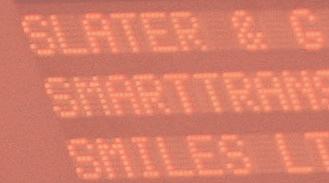



In this chapter you will investigate the importance of innovation. How do businesses create and maintain a competitive advantage? How do businesses interact with the rest of the world? Being innovative and staying in business means you need to maintain an advantage over your competitors. Marketing, and setting business goals and objectives, are the best way to business success. A key objective for all businesses is to generate a profit – the difference between the money earned from sales and the cost to produce the good or service. Managers and owners are continually aiming to maximise profit by reducing costs or increasing sales revenue.
Regardless of whether you are 15 years old or 50 years old, money matters. When we have money, we can use it to buy things we need or like. We can also invest to make more money. But with every investment, regardless of the type, you must weigh up the risk and rewards. Economic decisions are based on the concept of scarcity. Because money is scarce, decisions about what to do with it involve costs and benefits. Understanding the relationship between risk and reward underpins your money decisions and is key to developing a strong personal investment philosophy. Whether investing overseas or domestically, or in Bitcoin, shares or property, understanding your risk profile can help you to protect your money and make money matter.
After completing this chapter, you should be able to answer these questions:
• How do businesses become and remain competitive?
• What are the ways businesses innovate?
• How is innovation changing with technology?
• What is marketing and how does it lead to business success?
• How do Aboriginal and Torres Strait Islander businesses develop opportunities in the market?
• What is the purpose of money?
• What is the role of banks, credit unions and building societies?
• What are some different types of saving and investment?
• What are good debts and bad debts?
• What are the risks and rewards of investing?
• What are scams?
• What are some of the risks and rewards of the Australian and global financial landscape?
Visit the Interactive Textbook to access:
• interactive Scorcher Quiz
• videos, image galleries and other extra materials.
• Why do businesses need to innovate?
Heraclitus, an ancient Greek philosopher, has been quoted as saying ‘change is the only constant in life’. This is especially true in business. Companies with a great idea need to continue to improve, adapt and change, and respond to new technologies, customer demand and competition. This is why innovation is so important.
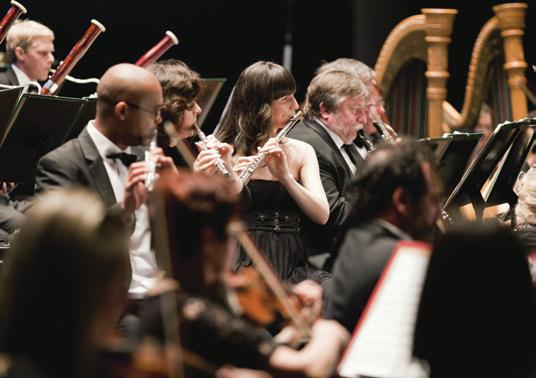

Innovation usually refers to the creation of a new product or a variation on an existing product that improves it (such as colour, design, features). Innovation includes new ideas and creative thoughts. The sources of innovation can be new knowledge, new markets, economic change or technological change, as demonstrated in the flowchart of music innovation over the centuries shown in Figure 4.2.1.




Innovation means recognising and taking advantage of market opportunities. A successful business is able to see opportunities that others have failed to recognise. The source of most business opportunities is change.
As society’s needs and wants change, so too do the types of goods and services people want to purchase.
We can think about change in the following ways:
• changes in fashion (flared jeans, high-waisted jeans)
• changes in lifestyle (health, fitness and work-life balance)
• changes in demographics (the changing population – age, culture)
One-minute conversations
• changes in technology (communication, robots, resource use).
Businesses want/need to keep track of these changes to make sure they are continually innovative and updating their goods and services to meet the needs of the changing market. Successful businesses recognise changes in consumer demand and take advantage of these changes.
This could be through:
• increasing demand for certain products (i.e. organic products)
• decreasing demand for certain products (i.e. plastic bags)
• increasing demand for fair trade and socially responsible business practices.

We all think about change in our own way. How has your community or personal experience changed in terms of fashion, lifestyle demographics or technology over the past 10 years?
Move around your classroom and spend one minute talking to a partner about each of these key areas of change. After a minute, change topic and partner. List similarities and differences to share in a class discussion.
Key concepts: making choices, interdependence
Making thinking visible 4.2
Think, puzzle, explore
HASS skills: analysing, communicating and reflecting
In groups of three to four students, share ideas and questions in response to the following prompts after viewing the video.
What do you know about this topic?
• Write a list of things you know about innovation. Do you know of any other Western Australian/Australian innovations?
What questions do you have?
• Create a list of questions you have about innovation and how it can be used in business today.
What does this topic make you want to explore?
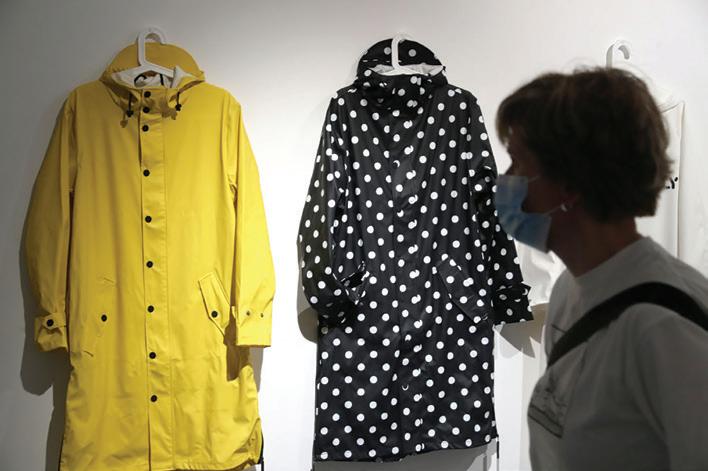
• Create a list of topics about innovation that you would like to explore further after reading this story.
Key concepts: making choices, interdependence, specialisation and trade
HASS skills: questioning and researching, analysing
franchise a right to sell a company’s products in a particular area using the company’s name
Recognising what is offered in overseas markets shows a level of innovation. What is available overseas that is not available in Australia? Would Australian consumers like it? Looking overseas at other markets can reveal innovation and ideas that have not yet reached Australia. This is evident in a successful franchise. Franchises often start overseas and spread to the Australian market because someone saw a business opportunity. Oporto, Krispy Kreme, The Coffee Club and Subway are good examples.
This can also happen in reverse. Innovation in Australia can be taken overseas to build successful businesses. Examples of these types of businesses include Aesop and Carman’s Kitchen muesli brand.

Research and development (R&D) is work directed towards the innovation, introduction and improvement of products and processes to assist innovation and business concept development. The government often supports ideas in areas of research and development because R&D can identify and establish new products and innovative technologies. Furthermore, R&D can add value to an existing product, by providing environmentally friendly options for a cleaning product, for example, or changing packaging to use biodegradable materials.
Technological development can also be seen through the growth of the internet and research into gaps in the market. The internet, coupled with the hand-held devices capable of mobile internet access, has supported innovation and enabled the formation and development of many new business ideas, including Airbnb, Uber and drone technology.

Choose a well-known franchise which operates in your local area. Research this organisation and find out the country of origin, number of franchises and staff worldwide as well as the costs and benefits of buying a franchise in this business. Use this information to create a pamphlet for prospective franchise owners.
Key concepts: making choices, specialisation and trade, interdependence
HASS skills: analysing, evaluating, communicating and reflecting
Section 4.2 review
4.2 Review questions
Recall
1 State why businesses need to innovate.
2Recall how global markets influence business innovation.
3 Define the term franchise.
4 What does the term ‘research and development’ mean?
Interpret
5Discuss why government often supports ideas in areas of R&D.
6Propose why people investing in franchises may feel relatively confident of success.
Argue
7Explain how R&D can assist with technological development in the business environment. What is the downside of R&D?
Apply 4.2 questions
1 There are four main forms of innovation in business. These are:
• incremental innovation
• architectural innovation
• disruptive innovation
• radical innovation.
Research the definitions for each of these key terms and list an example of a product or business for each.
Key concepts: scarcity, making choices, specialisation and trade, interdependence
HASS skills: analysing, evaluating, communicating and reflecting
• How do businesses develop and maintain an advantage over their competitors?
• How do businesses plan a marketing strategy?
A competitive advantage is the unique ability of a firm to utilise its resources effectively, managing to improve customer value and position itself ahead of the competition. It means it has an advantage over its competitors. Businesses can create a competitive advantage in many ways, including creating a cost advantage,
differentiating and establishing an identifiable brand.
There are more than two million businesses actively trading in Australia right now, with an estimated 2400 opening each week.

Many businesses choose to reduce their costs to attract customers through lower prices. This can be done in many ways. Large organisations such as Bunnings can charge customers low prices due to a concept known as economies of scale. Because they can buy stock in very large quantities and therefore pay suppliers the lowest possible price, they are able to pass these savings onto their customers.
Other businesses use technology and automation to produce their product for less. This can be seen in the consumer electronics industry where companies such as Samsung and Panasonic are able to produce items at very low cost by using robotic manufacturing. The average price of a flat-screen TV has fallen from around $6.60 per square inch in 2007 to under $1 per square inch in 2025. This is mostly due to the technology used in building these products.
Other businesses cut down on costs by outsourcing labour to countries that pay workers a lower rate. The average hourly pay for factory workers in Australia is around $31.00 per hour, while workers earn on average $5.30 per hour in Indonesia and $2.70 per hour in India. A business can reduce its overall cost of production significantly by moving its manufacturing to these countries.
effective differences between businesses. Many customers will become extremely loyal to a business on the strength of these factors, and can become brand ambassadors promoting the product to others.
Consider the restaurant industry. Even though all businesses in this industry are fundamentally providing the same basic product (i.e. food), there are innumerable varieties of restaurant existing within the market. Some differentiate by offering convenience, others exceptional quality. There are also restaurants that specialise in unusual dining experiences, such as Dining in the Dark, where customers eat the entire meal without being able to see anything.
Other restaurants attempt to convince customers that their food is healthier or is sourced from local ingredients. Restaurateurs must have a clear vision of how they will create a competitive advantage through their food, layout and service, or face losing customers to their competitors.
economies of scale cost advantages gained by companies from increasing production and lowering costs. This happens because costs are spread over a larger number of goods. outsourcing when a business pays an outside supplier to provide goods and services
All businesses aim to establish themselves as offering a product that is different from their competition. The most important factor in differentiation is the features of the product itself; however, elements such as packaging, delivery and service can be

Using one of the following industries, list all the ways businesses create a differentiation advantage over their competitors:
• cars
• mobile phones
• footwear
• breakfast cereal.
Compare your list with a partner. See who can come up with the most differences.
Key concepts: making choices
Many companies use logos and slogans to give them a competitive advantage over their competition and to make their brand more recognisable. A logo is a symbol, name or trademark of a company. Logos are used by companies because they represent a concise image of the company. A picture, as they say, can tell a thousand words. People generally find it easier to remember a simple image over words alone. Advantages of a logo are that it has potential to reach a large audience, is easier to remember, can be a faster and simpler way to communicate, can grab a person’s attention and can bypass language differences.
HASS skills: analysing, evaluating
To gain a competitive advantage, in addition to a logo, a business may also use a slogan. A slogan is a simple and catchy phrase accompanying a logo or brand that encapsulates a product’s appeal and makes it more desirable than that of its competitor. It can become an important component of its identification. A slogan can also be called a catch line or tag line.
A slogan usually has the attributes of being memorable, very concise and appealing to the audience. These attributes are necessary in a slogan, as it is only a short phrase or a short song. Slogans need to be concise in delivering the business’s message and appeal to the audience the business is trying to reach.

Marketing can be defined as any activity designed to plan, price, promote and distribute goods and services. Marketing is vital to a business. However, a new invention or innovation does not guarantee customers will buy it. Customers need to be made aware of a product’s existence, regardless of how ‘record breaking’, ‘new and improved’ or ‘revolutionary’ it may be. Businesses make few sales if they do not market their products successfully, eventually ending in failure. They must actively create a competitive advantage.
Before a business can start advertising its brand and/or products, it must identify its target market. A target market is the group of customers to which the business intends to sell its products. Target market selection is important, enabling the business to direct its marketing strategies to that group of customers, rather than the whole market. This allows the business to better satisfy the wants and needs of the targeted group and make marketing more relevant to the customers’ needs.
3 Psychographic: lifestyle, socioeconomic group, motives, personality, consumer trends.
4 Behavioural: regular user, first-time user, brand loyalty, benefits sought.
To reach a business’s target market and improve market share and its competitive advantage, a business must consider the 4Ps of marketing strategy: 1 Product
Businesses not only have a target market but also divide the total market into market segments. This allows a business to direct its marketing towards meeting the needs of a particular part of the total market. As part of recognising and knowing its target market, a business will also divide the consumer market according to four key traits or commonalities:
1 Demographic: age, gender, occupation, education, religion, family size, ethnicity.
2 Geographic: urban, suburban, rural, climate.

A product is a good or service that can be offered in an exchange for the purpose of satisfying a need or want. Products may be either tangible (goods) or intangible (services).
When considering their products, businesses must decide on factors such as:
• design
• name
• quality
• warranty and guarantee
• packaging
• labelling
• exclusive features
• benefits.
Price refers to the amount of money a customer is prepared to offer in exchange for a product. A price set too high could mean lost sales, unless superior customer service is provided. A price set too low may give customers the impression of an inferior product. Consumers associate low prices with poor quality. In any market, businesses will attempt to gain some control over the price by differentiating their products. This can give them a further competitive advantage and allows the business to have more power over the price. For example, clothes and shoes with designer labels (Vans, Levi, Nike, Adidas) can set higher prices for their garments than clothing sold under the Target or Kmart brand labels.
Promotion is the method used by the business to inform, persuade and remind customers about its products. Promotion attempts to attract new customers by heightening awareness of a product, increase brand loyalty by reinforcing the image of a product, encourage existing customers to purchase more of a product, and provide information so customers can make informed decisions. Advertising mediums are the means by which

promotion can be successful and include the internet through websites and social media, television, newspapers, magazines and radio.
Place in this context means from where the business will distribute the good or service. The business needs to consider how it gets its product/service to the market. Therefore, a decision needs to be made as to how the business will operate. Will it be a physical bricks-and-mortar store, an online store or both? Location is where a business decides to operate and sell its product. Factors affecting choice of location include visibility, cost and proximity.
Proximity is very important for service businesses. These businesses need to be within the vicinity of a shopping centre or in a shopping strip. Proximity to competitors must also be considered because this could be an issue for retailers and service providers. Establishing a new business in a shopping centre that already has one or more similar businesses may be risky because they already have a customer base, and it may be difficult for the new business to attract customers. Being the first to establish a particular type of business in a shopping precinct is likely to increase the chances of success, but will still have challenges.
Types of business location include:
• shopping centres – e.g. Carousel, Innaloo, Garden City (suburban areas, outside of main cities)
• retail shopping strips – e.g. Hay St Mall, Murray St, Brookfield Place (urban areas, in main cities)
• online presence – websites that are open 24/7, global market
• home-based businesses – operate from home, no rental costs.
4.3 Review questions
Recall
1 What does it mean to have a competitive advantage?
2Recall how businesses create a cost advantage.
3List the three ways businesses can differentiate.
4 What is the difference between a logo and a slogan?
5 What are three key elements for a successful slogan or logo?
6 Define the term ‘marketing’.
7 What is market segmentation? Identify the four main market segments.
Interpret
8Discuss some reasons why Dining in the Dark would appeal to customers.
9 Provide a suggestion other than outsourcing as to how a business could reduce its costs in order to attract customers through lower prices.
10 Who are the target markets for the following:
a Boost
b Hermès
c Toyworld d Bunnings e Harley-Davidson.
11 Can you guess the target market of these Coca-Cola beverages and explain why each would be the target market?
a Mother
b Diet Coke
c Deep Springs Natural Mineral Water
12 What are some of the challenges you could face, as a new business, with different types of business locations, such as: Go
a shopping centres
b retail shopping strips
d Nestea Iced Tea e Mount Franklin f Powerade.
c online d home-based business.
13 How important are logos and slogans to gaining a competitive advantage? Discuss the benefits of each of the points below. If you could choose only one to use to promote your business, in your opinion which is the most important?
a a logo b a slogan c a jingle (advertising song).
14 There are 4Ps in marketing: product, price, promotion and place. After product, suggest an order of importance for price, promotion and place. Which of these three is the most important? Give your reasons.
Apply 4.3 questions
1 Choose a well-known business or product and conduct research into how it creates a competitive advantage. Imagine that you have been hired to provide a recommendation to this business about its competitive advantage. Outline three things that it is currently doing well and suggest two things that it could change or improve to stay competitive. Present your recommendations in the form of a PowerPoint-style presentation.
Key concepts: making choices, interdependence, economic performance and living standards, specialisation and trade
HASS skills: questioning and researching, analysing, evaluating, communicating and reflecting
• What is an Aboriginal and Torres Strait Islander business?
• How have Aboriginal and Torres Strait Islander businesses changed over time?
• What are the benefits and challenges of operating an Aboriginal and Torres Strait Islander business?
• How have changes in technology and consumer preferences impacted Aboriginal and Torres Strait Islander businesses?
Aboriginal and Torres Strait Islander Peoples had complex trade networks and economies before European colonisation. They traded resources, food, and culture
across Australia and the Torres Strait. Resources and minerals such as ochre, stone, animal skins and shells were exchanged, and these interactions provided a way of sharing culture and building relationships between the traditional language groups across Australia.

Chair of the Snapshot Committee, Mutthi Mutthi and Wamba Wamba Senator Jana Stewart, said ‘Aboriginal and Torres Strait Islander businesses have been exceeding all expectations, but unfortunately, their impacts have gone largely unnoticed by past governments. They are creating significant benefits for First Nations Australians; generating and growing economic prosperity as well as contributing to the wider Australian economy. Blak-owned businesses are at the heart of creating a new generation of business owners who are growing networks, assets and long-term prosperity.’
Source: Media Release, Parliament of Australia
The definition of an Aboriginal and Torres Strait Islander business varies between states; however many use the measure of at least 50 per cent of the business being owned by an Aboriginal person or people. Many of these businesses involve whole communities and a sharing of profits and income. Others are sole traders using their skills and training to build a business. There are Aboriginal and Torres Strait Islander businesses within every industry in Australia.
In 2024, The Indigenous Business Snapshot showed that Indigenous businesses contribute more than $16 billion to the Australian economy, employ 116 795 people and pay $4.2 billion in wages. While this is a significant industry, it still represents only 0.7 per cent of the total Australian economy. In Western Australia, because of the efforts of those who are a part of it, there has been significant growth in the number and the size of Aboriginal and Torres Strait Islander businesses.
All businesses which wish to succeed must innovate and create a competitive advantage in the market. Aboriginal and Torres Strait Islander business can create a unique marketing and customer engagement experience which can set them apart from competitors.
These businesses use unique marketing, recruitment and incentives to engage with their customers, and often bring value to communities.
Indigenous Industries Australia (IIAust) is an innovating Indigenous company that empowers Aboriginal and Torres Strait Islander communities by linking industry with Indigenous Corporations. One of their key initiatives involves environmental stewardship, focusing on activities such as reforestation, biodiversity restoration, and climate change adaptation. These efforts not only contribute to environmental conservation but also create economic opportunities for Indigenous communities.
IIAust has partnered with Dryad Networks, is a German company that specialises in ultra-early wildfire detection and environmental monitoring. Their Silvanet system detects wildfires early and supports air, water, and ecosystem monitoring. This scalable solution aids in forest management, conservation, and climate resilience. By engaging in such environmental stewardship activities, Indigenous businesses like Dryad Networks are able to draw on traditional knowledge and modern technology to protect and restore natural landscapes. This not only helps in preserving the environment but also provides employment and economic benefits to Indigenous communities.
Analysis questions
1 What does IIAust mean by ‘environmental stewardship’? Refer to the information on their website https://cambridge.edu.au/redirect/11370.
2 Go to Dryad Network’s website to learn more about their Silvanet system. Useful pages on their site include: https://cambridge.edu.au/redirect/11371 and https://cambridge.edu.au/redirect/11372.
Use the information on these pages to:
a explain in your own words how Dryad’s Silvanet system works b create a sketch or diagram to show how the Silvanet system works c explain why Dryad’s Silvanet system is being used in Australia.
3 Read this IIAust news release about their partnership with Dryad Networks: https://cambridge.edu.au/redirect/11373. How, according to IIAust, will the partnership with Dryad Networks impact Australia’s natural resources and Indigenous communities?
Key concepts: specialisation and trade, interdependence, economic performance and living standards, sustainability, environment
Case study 4.1
The Waalitj Foundation (formerly David Wirrpanda)
HASS skills: analysing, evaluating, communicating and reflecting, questioning and researching
The Waalitj Foundation, formerly known as the David Wirrpanda Foundation, is dedicated to improving the quality of life for Aboriginal and Torres Strait Islander Peoples. The foundation focuses on providing education, employment, and business opportunities, empowering individuals and communities across Australia.
One of the key initiatives of the Waalitj Foundation is the ‘Deadly Sista Girlz’ program, which aims to build self-esteem and confidence among young Aboriginal and Torres Strait Islander girls. This program provides mentorship, cultural education, and support to help participants stay engaged in school and pursue their goals. Another significant initiative is the ‘Plan 2day 4 2morrow’ (P242) program, which offers pre-employment mentoring and activities to improve job readiness for First Nations jobseekers. Through these programs, the foundation has reached over 60 000 Aboriginal and Torres Strait Islander people nationally, fostering a sense of empowerment and resilience within the community.
Learn more about the program at https://cambridge.edu.au/redirect/11236.
Analysis questions
1 Analyse the impact of the ‘Deadly Sista Girlz’ program on the self-esteem and educational engagement of its participants. How does this program contribute to the overall wellbeing of young Aboriginal and Torres Strait Islander girls?
2 Evaluate the effectiveness of the ‘Plan 2day 4 2morrow’ (P242) program in improving job readiness and employment outcomes for First Nations jobseekers. What are the key factors that contribute to its success?
3 Discuss the broader social and economic benefits of the Waalitj Foundation’s initiatives. How do these programs help in building capacity and creating opportunities for Aboriginal and Torres Strait Islander communities?
Key concepts: interdependence, making choices
HASS skills: questioning and researching, analysing, evaluating, communicating and reflecting
A high proportion of the population of rural and remote Western Australia are Aboriginal. This means that most businesses operating in these areas have a responsibility to the communities who live there. Although occasionally the headlines will cry of large resources companies destroying Aboriginal cultural sites, for the most part the companies which operate in remote Western Australia provide jobs, opportunities, a connection to the larger urban centres and a higher standard of living. Balancing the costs
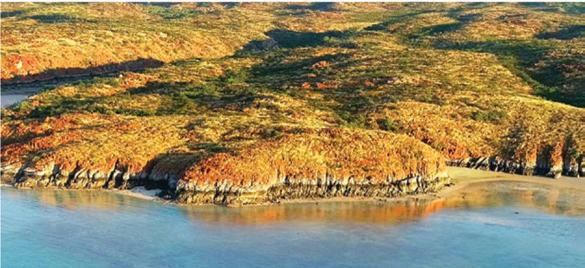
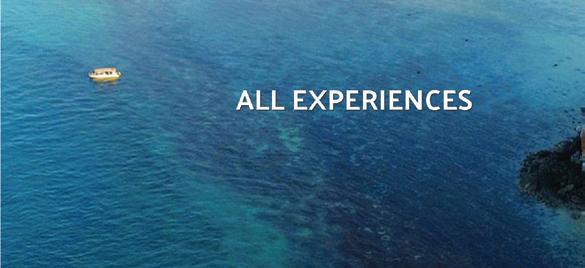
and the benefits of multi-billion-dollar companies operating in the traditional lands and communities of the Kimberley Region is a challenge for the people, the businesses and governments.
The tourism industry is perhaps where Aboriginal businesses thrive most in Western Australia. Visitors from overseas or from within Australia spend millions every year on cultural tourism. Experiences can be world class, employing highly skilled, experienced staff.
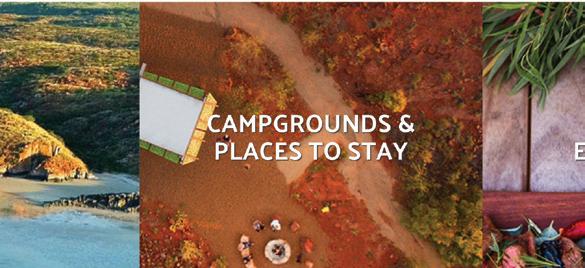





women’s
With a hand-made beauty care products business, women of Groote Eylandt are tackling much more serious issues than just rough skin. The all-women social enterprise is empowering women suffering from the effects of poor health, domestic violence and unemployment, and helping them take control of their lives.
A group of women in the Groote Eylandt in the Northern Territory is tackling issues such as domestic violence, poor health, unemployment and lack of education through an Indigenous-founded all-women social enterprise making beauty products.
Bush Medijina, an independent social enterprise, run out of four shipping containers converted into the office, production area and the storage unit, isn’t just any other business. It supports local women, culture and community on the largest island in the Gulf of Carpentaria.
Jasmine Hastings, Leadership and Values officer at Bush Medijina, says it provides women with a safe space to share their experiences.
‘It’s very small at this stage. But the ladies here make these beautiful products, we enjoy each other’s company. The ladies are able to feel they can be themselves and can share their stories with each other - the good and the bad,’ Ms Hastings told NITV Radio.
‘There’s a lot of complex issues here on Groote but they are also similar issues that the Indigenous people are facing across Australia. Things can be very tough for the ladies, they have to be very strong to support their families.’
Ms Hastings says the biggest worry is about the youth in the community and their education and Bush Medijina runs programs to offer work experience to schoolgirls.
Using the knowledge of their ancestors and combining it with modern technology, the women are producing hand-made beauty products, earning money and keeping their culture alive.
Ms Hastings says these skills have been passed from Indigenous mothers to their daughters for many generations and people have used the herbs that grow on Groote Eylandt, such as small leaf paperback, wattle leaves, the sandalwood tree leaves, wild peach and cinnamon tree leaves.
‘Bush medicine plants have always been there, the recipe has always been there. We have just put our little twist on it with using modern products,’ she says.
The enterprise employs 17 local women who work four days a week from 8:30am to 2:30 in the afternoon and produce beauty products such as body balm, lip balm, hair care products with more products to be rolled out this year.
Ms Hastings says the common dream of these women is turn Bush Medijina into a completely sustainable business and expand it globally.
The program regularly initiates activities to educate Warningakalina women and their families on a range of health, wellbeing and community leadership topics.
Source: Pechova, S. (Host). (2020, June 29). Hand-made beauty products changing women’s lives in remote Indigenous community [Audio podcast episode]. In SBS NITV Radio. SBS Audio. https://www.sbs.com.au/language/nitv-radio/en/podcast-episode/hand-made-beauty-products-changingwomens-lives-in-remote-indigenous-community/te6beekqt
1 Evaluate the social impact of Bush Medijina on the women of Groote Eylandt. How does the enterprise help address issues such as domestic violence, poor health, and unemployment?
2 Analyse the role of traditional knowledge in the production of Bush Medijina’s beauty products. How does combining ancestral knowledge with modern technology benefit the business and the community?
3 Discuss the economic benefits of Bush Medijina for the local community. How does the enterprise create job opportunities and support economic development on Groote Eylandt?
4 Examine the importance of providing a safe space for women to share their experiences at Bush Medijina. How does this environment contribute to the overall wellbeing and empowerment of the participants?
5 Assess the potential for Bush Medijina to expand globally. What challenges and opportunities might the enterprise face in achieving its goal of becoming a sustainable and internationally recognized business?
Key concepts: interdependence, making choices, allocation and markets
HASS skills: questioning and researching, communicating and reflecting, analysing, evaluating
4.4 Review questions
Recall
1List three items traded by traditional Aboriginal Australian groups.
2 What is the generally agreed upon definition of an Aboriginal and Torres Strait Islander business?
3 What is the value of Aboriginal and Torres Strait Islander businesses to the Australian economy?
4Outline two social impacts of tourism on Aboriginal and Torres Strait Islander Communities.
Interpret
5 Suggest the likely impact to future generations of an increased proportion of Aboriginal and Torres Strait Islander businesses operating in Australia
Argue
6 The Western Australian government has laws requiring major mining and development companies to set targets for the use of Aboriginal and Torres Strait Islander businesses in their contracts. Outline some of the possible costs and benefits of these laws. Do you think this is a good idea? Explain your justification.
Apply 4.4 questions
1 Create a slogan, advertisement or promotion for an Aboriginal or Torres Strait Islander business. This could be a business which already exists, or one of your creation.
Key concepts: making choices, allocation and markets, interconnection
HASS skills: communicating and reflecting, analysing, evaluating
• What is the difference between saving and investing?
• What types of investments are there?
• What are investment goals and why do people set them?
• What are the costs and benefits of debt?
savings
interest a cost against borrowing funds and the profit that accrues to those who deposit funds in a savings account
inflation an increase in the level of prices of the goods and services that households buy
Saving and investing are often used interchangeably, but there is a difference.
Saving is setting aside money you don’t spend now for emergencies or for a future purchase. Many people save for a holiday, and students might save for a car. When you save money and deposit it into a bank, the bank will pay you interest based on the amount of money in your account. This interest is money the bank pays you so that it can use your money to fund loans to other people.
If interest rates fall, savings accounts earn less money, which will cause people to look for other investments, such as shares or property. Low interest rates, however, will encourage more people to borrow from lenders such as banks as it becomes cheaper to take out loans. Interest rates are set by the Reserve Bank of Australia (RBA) and rise and fall based on the general conditions within the economy. During the COVID-19 recession
there was high unemployment and low spending by households, and as such interest rates fell to the lowest levels in history. This encouraged people to spend more on large items, such as cars and appliances, and helped the economy to recover.
The problem with this, though, was that inflation began to rise to such high levels that many people were unable to afford to meet their basic needs. The RBA increased interest rates, and people started to save more and borrow less. The reason for this was to slow down economic activity and reduce the increasing prices of goods and services. As of 2025, the RBA has started to slowly reduce interest rates again as prices stabilised.
Investing is buying an asset with the expectation that your investment will make money for you. The goal of investing is to make money, so it is natural to pursue investments that offer the greatest returns. Often the return can be via capital improvement or via an income stream from the investment.
A capital improvement means that the value of the asset has increased, such as buying a house which goes up in value, while an income stream refers to the money that can be made from renting out the house to a tenant.
Many people choose to invest in property, as traditionally it sees capital improvement. The average price of a house in Perth increased from $185 000 in 2000 to over $740 000 in 2024.
Only around 15 per cent of 18–24-yearolds own shares!
When you choose to invest and buy shares, you are choosing to own a piece of a company which entitles you to potential profit on your investment.
Charting share prices
There can be capital appreciation (or capital gains), which means an increase in the value of the share (e.g. $1 to $1.25), and dividends, which are regular income from shares. A dividend is a portion of a company’s profit that it decides to pay out to shareholders, in return for their investment. These are two ways to make a profit on investments, but it is important to remember not all shares will appreciate in value and not all companies will pay a dividend. A company may not pay a dividend at all if it has failed to make a profit or has chosen to reinvest profit back into the business.
Investing in shares can be very rewarding, especially if you invest in a company which experiences rapid growth. The average return on investment for the ASX (Australian Stock Exchange) over the past 10 years was 9.35 per cent per year. Buying shares does come with significant risk, however.
capital appreciation an increase in the price or value of assets such as shares or property dividend a part of the profit of a company that is paid to the people who own shares in it
Choose a company which trades on the ASX. Track the share price for this company over the past five years. Calculate how much the value of your shares would be today if you’d bought $1000 of shares in this company five years ago. Then write a response to advise a potential investor to either invest or not invest in this company.
Visit the ASX website and choose a company with which you are familiar. Find out the following information for this company and record your findings:
1 What is the current share price for the company?
2 What was the share price for the company at this time last year?
3 If you had bought $1000 of shares in the company a year ago, how much would your investment be worth today?
4 Does the company pay a dividend? If so, how much does it pay and how often?
5 What is your recommendation to someone about whether to invest in this company? Provide reasons for your answer.
Key concepts: making choices, specialisation and trade, interdependence
HASS skills: analysing, evaluating, communicating and reflecting

Many Australians see investment in property as an ideal balance between risk and reward. While the initial costs of buying an investment property can be high, history shows that the value of real estate tends to increase over time and there is the added benefit of being able to charge rent to tenants who are living in the property you own.
Many investors who invest in real estate take out a mortgage with a bank
Case study 4.3
or other lender. The rent they earn goes toward paying off the mortgage over time, and they also hope that the value of the property increases. Just as with investing in shares, it is known as a capital gain if you sell a property for more than you bought it for. On average, house prices in Australia have increased by 6.4 per cent per year for the last 30 years. This is an excellent return on investment for people who were able to make these purchases.
There are still risks involved with real estate investment. In order to buy property most lenders need a large cash deposit which can be difficult to save up. There is also no guarantee you will be able to find a tenant to live in your property, and many costs including repairs and maintenance fall on the owner. You are also at risk of interest rates increasing and making the mortgage repayments higher than you can afford. Despite these risks, real estate remains one of the most popular and stable forms of investment for Australians.
With homeownership becoming increasingly unattainable, many Gen Z individuals are turning to the stock market as an alternative investment. The rising cost of housing and the difficulty in saving for a deposit have led this generation to seek other ways to grow their wealth.
Read the article at https://cambridge.edu.au/redirect/11237, which highlights that Gen Z investors are entering the stock market at a record pace, driven by accessible trading platforms and the potential for higher returns compared to traditional savings accounts. However, finance experts caution that these young investors need to be aware of the risks involved and the importance of thorough research before making investment decisions. The shift towards shares is seen as a pragmatic response to the economic challenges faced by this generation, offering a way to build financial security despite the barriers to homeownership.
1 Analyse the reasons why Gen Z is turning to the stock market instead of pursuing homeownership. What economic factors are influencing this shift?
2 Evaluate the potential risks and rewards associated with Gen Z’s investment in shares. How can young investors mitigate these risks?
3 Discuss the role of accessible trading platforms in the rise of Gen Z investors. How do these platforms impact their investment behaviour and decision-making?
Key concepts: making choices, allocation and markets HASS skills: analysing, evaluating, communicating and reflecting
Cryptocurrencies are digital currencies that use encryption techniques for security. These digital currencies are not issued by any central bank, rather cryptocurrencies exist in digital form. Cryptocurrencies are transferred between peers and transactions are recorded on a digital public ledger called a blockchain. All transactions are encrypted using cryptography, hence the name cryptocurrency.
The idea behind a cryptocurrency is it is decentralised, meaning it is controlled by users and computer algorithms rather than a central bank. Cryptocurrencies are traded through online cryptocurrency exchanges, which operate in a similar manner to stock exchanges
There are many cryptocurrencies, including the well-known Bitcoin (BTC), as well as Ethereum (ETH), Ripple (XRP) and Litecoin (LTC).
A Hungarian programmer made the first Bitcoin transaction in 2010 when he purchased two pizzas, paying 10 000 BTC. In February 2025, the value of that transaction was approximately A$1.4 billion. They were some pretty valuable pizzas!
central bank a bank that provides services to a national government, puts the official financial plans of that government into operation and controls the amount of money in the economy decentralised describes organisations or their activities that are not controlled from one central place but happen in many different places cryptocurrency exchange a place where digital currencies are bought and sold stock exchange a place where shares in companies are bought and sold, or the organisation of people whose job is to do this buying or selling

What are some problems with cryptocurrency? Could cryptocurrency ever replace the dollar as the primary currency in Australia?
Take a few minutes to think about the advantages and disadvantages of cryptocurrency and then find a partner with whom you can share and discuss your thoughts.
Key concepts: scarcity, making choices
Section 4.5 review
HASS skills: analysing, evaluating
4.5 Review questions
Recall
1Outline the difference between saving and investing.
2 What are shares and why do people buy them?
3 Define cryptocurrency.
Interpret
4 When investing in shares, explain the difference between these ways of making money: a capital gain b dividend.
5Explain the relationship between investment and interest rates.
6 Create a list that outlines the risks and potential returns on each type of investment, and rank them from 1–4 in terms of their potential as an investment: a savings account b property c shares d cryptocurrency.
Argue
7Discuss the advantages/disadvantages of capital improvement or an income stream as a return on your investment.
Apply 4.5 questions
1 Research the annual Forbes magazine’s Midas List. Create a short report on the purpose of the list and describe the rise of female investors each year.
Key concepts: making choices, interdependence, economic performance and living standards
HASS skills: questioning and researching, analysing, communicating and reflecting
• What is good debt and what is bad debt?
Debt refers to an amount of money borrowed by one party from another under the condition that it is to be paid back at a later date, usually with interest. Debt can come in many different forms, each with their specific costs and benefits. Borrowing is not necessarily a bad thing, as it allows you to achieve some goals such as buying a car, new clothes or household items, which can increase your living standard. However, it is important to remember that with all loans and credit come fees, charges and interest which can make borrowing very expensive.
Mortgages are typically large sums of money borrowed to purchase an asset such as property. These have the benefit of incurring relatively low rates of interest but are paid back over many years and a large deposit is needed to apply for one. Mortgages are often considered to be good debt if they are used to generate either capital gains or cash flow, for example when buying a rental property. Most people will not be able to save enough money to buy a house outright, so borrowing the money and paying it back over several years allows more people to own property to either live in or generate an income stream.
Credit is money you borrow from a financial institution, like a bank or credit union, to spend the way you want. You need to repay this debt to the credit provider, usually with extra costs on top of the amount you borrowed. These extra costs can be in the form of annual fees, but most institutions also charge very high rates of interest for the convenience of using the banks’ money with immediate accessibility.
According to the Australian Securities and Investments Commission (ASIC) Moneysmart website, there are a number of types of credit you can choose from, but the important aspect to consider is that they all have pitfalls.
A credit card allows you to borrow money from a credit provider to buy something without using your cash or savings. You have a limited amount of money you can borrow (known as your credit limit) and you must pay back that amount by a set date. Ideally, you would pay off the whole balance on the due date, but if you do not, you will be charged interest on the balance owing.
debt an amount of money borrowed by one party from another, to be paid back at a later date mortgages a large sum of money borrowed from a financial institution, such as a bank, and used to purchase an asset credit a method of paying for goods or services at a later time, usually paying interest as well as the original money credit limit the largest amount of money that a bank allows someone to spend using a credit card
On a low-rate card this can be between 8 and 15 per cent for new balances but can get as high as 20 per cent on existing balances. The interest charged is also dependent on the type of transaction, such as a purchase versus a cash advance. Even if you pay the balance and any interest off at the end of each month, there will also be an annual fee for the privilege and convenience of the card.
If you were to borrow $500 000 at a standard interest rate in 2025 of 6.1 per cent per year, you would pay the money back at around $715 per week. You could buy a property and rent it out for around the same amount, using the rental income to pay off the mortgage. Over time, you could begin to keep some of this income to spend on your own needs and wants.
Store cards are credit cards associated with particular department stores or large retail outlets. These cards are very similar to credit cards but also work on store loyalty to offer special discounts when you use the store card that you would not get using a regular credit card. Like credit cards, they have high levels of interest payable on balances, annual fees and due dates for balances to be paid.
There are 23 000 credit transactions worldwide every second!

Personal loans are usually obtained through a bank and generally will have a lower rate of interest compared with a credit card or store card. These loans are used for lump sum payments, such as for a car or renovations, when a person does not have adequate savings to cover the whole price of the purchase. The personal loans are usually for a set period of time (fixed term), such as five years, and you will be required to make monthly repayments until the loan is paid off within the term of the loan. Many loans of this type charge customers a fee for paying off the balance early, meaning the loan provider earns more interest.
Many stores offer purchase terms to encourage consumers to buy goods and take them home before fully paying for them.
This does not mean they are costfree; like other forms of loans, such as credit cards, there are still fees and charges. The catch with interest-free purchase periods is that if you do not pay off the amount within the set period, then very high interest will be charged on any outstanding balance. There are many retailers and service providers who offer buy-now, pay-later services, including Afterpay and zipPay.

Payday loans are very expensive and are a trap for many consumers. These payday loans are generally for $2000 or less, but you have a very limited amount of time to repay the loan. The interest rates on payday loans are very high. Many loanees who fail to pay these loans back within the set period find their debt increases very quickly. Some customers end up paying back many times the amount they initially borrowed, causing them to go into a spiral of debt that is difficult to control.

Many people may argue that there is no such thing as good debt. But often borrowing money is the only way people can afford to purchase large items such as a house or a car. This type of loan can be considered justifiable as opposed to careless and frequent spending on other types of high-cost credit, such as credit cards and store cards. So, when considering whether debt is good or bad, it is important to look at the reason behind the borrowing.
Good debt could be considered for big items that people would not normally be able to afford without taking out a loan of some kind. If the debt is to purchase an asset, particularly one which you hope will increase in value or generate an income, then it is likely to be good debt. As mentioned earlier, a home would come into this category. Other reasons why people borrow is for an education and for small business ownership. In all these circumstances it is possible to see a return on the investment in either an increase in the value of your home, an opportunity to gain a better and higher-paying job through education or to go into business with the hope of making an income and earning a profit. While these all look very likely to maximise the value of the loan, it is also important to realise that, under certain circumstances, house prices can fall, jobs cannot be found and many small businesses fail.
Economists distinguish between investment debt and consumer debt. The difference lies with what the money is spent on. Investment debt is used to purchase assets such as property or a business, while consumer debt is used to buy goods and services for household consumption. Generally there are more benefits to taking on investment debt and more costs associated with consumer debt.
While good debt has the potential to increase a person’s wealth, bad debt is considered bad because purchases are a result of discretionary spending, which is usually for goods and services to fulfil a short-term want. Some people would argue that buying a new car is taking on bad debt. This is because the new car value depreciates very quickly, and it is very unlikely you will make a financial gain on a new car when you sell it five years later with 100 000 km on the odometer. Clothes and consumables also only fill a short-term need or want and if you use credit to purchase these goods and services, and do not pay this debt off quickly, you will end up paying a lot more for the jeans you thought you would wear everyday but only wear once or twice. Most financial advisors would recommend saving up to buy these types of items or buying cheaper varieties that are within your budget.
investment debt money which is borrowed in order to purchase an asset such as shares or real estate. Mortgages are a common example consumer debt personal debts that are owed as a result of purchasing goods that are used for individual or household consumption. Credit card debt is a common example discretionary spending money spent by consumers on things other than necessary purchases such as food, clothes and fuel
Business investment

Student loans
Mortgages
GENERATES
DECREASES NET WORTH AND YOUR FUTURE CASH FLOW
Credit cards Car loans
Consumable goods
Making thinking visible 4.5
I used to think, but now I think…
Do you think there is good debt and bad debt? Do you agree that there are different kinds of debt?
Have your thoughts changed on the topic of debt?
Find a partner to discuss what you used to think about debt, and what you now understand.
Key
The risk-return trade-off states that the potential return (gain) improves with an increase in risk (what you might lose). In effect, this means that if you have a chance of getting a large return on your investment then you will also need to accept a higher risk of loss. Nearly every investment carries some risk. Shares and property both have the potential to increase and decrease in value, proving that there is no such thing as a ‘sure investment’.
Risk relates to the choices you make about how you invest. Risk is also uncertain. Any investment has the potential to affect your financial welfare. The level of risk you are willing to take on in an investment must also be seen in terms of how much money you are willing to lose. Some investments will be riskier than others.

There is risk in every investment. As the economy is dynamic, returns on investment can change over time. For example, during the COVID-19 pandemic the value of shares in some companies, such as those involved with live entertainment, fell dramatically. Share prices in companies producing home office equipment, however, increased rapidly. This change would not have been easily predicted in late 2019 but was well in effect by early 2020.
There are investment strategies that can be used to manage or reduce the exposure to risk. These can include portfolio diversification. This means that you invest across different asset classes to increase the probability that while some of your investments might fail, others might provide a small return. The important aspect of diversification is variety. For example, when investing in the share market, it is important to invest in shares across several sectors to prevent ‘having all your eggs in one basket’. This means that if one sector of the economy does not give positive returns (e.g. oil and gas), other sectors might provide a return (e.g. banks and finance). You can also reduce risk through investing in a number of different asset classes. This would mean investing in real estate and in the share market, as well as keeping some cash in term deposits (savings accounts).
risk the possibility of something bad happening; in business, the risks and the rewards can be high

Balancing potential risks and rewards is an essential part of making smart financial choices
Imagine you have saved $100 000. Your task is to create an investment plan to earn the best return on your investment. Use the internet to help you.
Consider interest rates on savings accounts and mortgages, rates of return on shares, and the value of property and rental returns. Remember, a diversified investment plan is better than putting all your money into one type of investment.
1 Identify the different types of investments available (e.g., savings accounts, shares, property).
2 Describe the basic features of each t ype of investment.
3 Explain what a diversified investment plan is and why it is important.
4 Compare the interest rates on savings accounts and mortgages from at least three different banks.
5 Investigate the average rates of return on shares over the past five years.
6 Analyse the current property market and rental returns in your local area.
7 Develop a detailed investment plan using the $100 000, ensuring it is diversified across different types of investments.
8 Justify your investment choices by explaining how each investment will contribute to the overall return.
9 Evaluate the potential risks and benefits of your investment plan and suggest ways to mitigate any risks.
Key concepts: economic performance and living standards, allocation and markets

HASS skills: analysing, evaluating, communicating and reflecting, questioning and researching
Think, puzzle, evaluate
In groups of three to four students, share ideas and questions in response to the following prompts after viewing the video.
What do you know about this topic?
• List the things you know about how superannuation works. What questions do you have?
• Create a list of questions that you have about how superannuation works in Australia. Who are the winners and losers from this?
• Create a list of costs and benefits of compulsory superannuation in Australia.
Key concepts: making choices, allocation and markets, economic performance and living standards
HASS skills: questioning and researching, evaluating
A scam is a dishonest scheme or fraud. Other words to describe scams are swindle or hustle. Scams can take many forms. Consumers must be aware of the potential for transactions to be dishonest, and that people may try and swindle them out of their money.
You can be scammed by someone in Australia, but you can also be scammed by people overseas. There are many different types of scams. Scamwatch is run by the Australian Consumer and Competition Commission (ACCC). The ACCC’s role is to inform the public about emerging trends and techniques used by scammers to steal a person’s identity and take money from them.
Most people believe they would be able to identify a scam when they come across one, but the financial losses to scammers across a variety of types of scams would suggest otherwise.
Scamwatch identifies many types of scams, including personal identity scams, online shopping scams, fake charity scams and love- and romance-based scams.
Investment scams cost consumers the most money. As mentioned earlier, there is no such thing as an investment with a 100 per cent chance of a return. Scammers will generally promise that for a small fee you can make a lot of money. They often gain victims’ trust by paying out once, and then ask for a large deposit that is then lost to the scam.
In Western Australia in 2024, there were 23 633 claims to Scamwatch for a total loss of $32 452 119, with the most common methods of scam being via text message and email. Investment scams are by far the most significant in terms of dollar value – these often come in the form of a promise of a quick retur n on an initial deposit which is then stolen by the scammer. If you are suspicious about an offer you receive, you should take the time to check other sources to make sure it is legitimate. No company will ask for your bank details or personal information via email or over the phone.
In 2024, $318 million dollars was lost through scams in Australia.
scam an illegal plan for making money, especially one that involves tricking people
fraud the crime of getting money by deceiving people (e.g. credit card fraud)

Section 4.6 review
4.6 Review questions
Recall
1 What is the difference between good debt and bad debt?
2 What is risk and how does it apply to investing?
3 Define what a scam is.
Interpret
4Discuss what good debt is and why people may argue that there is no such thing as a good debt.
5 Store cards can offer special discounts and exclusive shopper events. What may be the drawbacks of using store cards?
6 During the COVID-19 pandemic the value of shares in some companies, such as those involved with live entertainment, fell dramatically. Share prices in companies producing home office equipment, however, increased rapidly. Discuss some reasons why this occurred.
Argue
7 Debt refers to an amount of money borrowed by one party from another under the condition that it is to be paid back at a later date, usually with interest. Outline the reasons why they pay back the money with interest. Propose reasons why they shouldn’t have to pay back the money with interest.
Apply 4.6 questions
1 Create an informative list of ‘do’s and don’ts’ for young people about debt. Your list should include things such as risk, investment options and credit.
Key concepts: scarcity, making choices, interdependence, economic performance and living standards
HASS skills: analysing, evaluating, communicating and reflecting
Business innovation and creating a competitive advantage are essential for successful organisations. Whether you are working for a company or running your own business, understanding how to think about these concepts will be essential to your success in the workplace. As a consumer, you are also constantly targeted by businesses that want you to choose their products over the competition. Understanding the marketing and promotion techniques they use will help you to become a more informed consumer and make buying choices that truly provide you with the most benefit.
Regardless of whether you earn a high income or not, understanding how money works and the various mechanisms governing finance is a critical skill for success in life. Being able to identify a good investment from a poor one and knowing the risks and potential rewards of different opportunities will enable you to control your finances and grow your wealth as you get older. Reducing the amount of bad debt that you incur and being confident when taking on good debt can ensure that you are in a position of comfort when the time comes to stop working for an income.
That just about wraps up this topic. How did you feel you went working through the chapter? Before you attempt the following activities, visit the Interactive Textbook to rate your confidence with this topic via a downloadable checklist.
1 Visit the Scamwatch website. Choose one type of scam and create a presentation informing your teacher and classmates about:
a how the scam works and how much money has been lost in this type of scam b warning signs – what to look for when you might be scammed c how to protect yourself – how to prevent being scammed.
2 Create a poster outlining the different types of scams. Your poster should inform your audience about how to protect themselves against scams and some special tips on what to look out for.
Visit https://cambridge.edu.au/redirect/11238 to read the article ‘We know innovation is key – but there’s little agreement on exactly what it is’ from The Conversation website. Read the article and answer the following questions:
1 How many jobs in the next decade will need STEM skills, according to the National Innovation Agenda?
2Describe how young people view innovation, according to the research in the article. What might be the problem with this perception?
3 How do employers view innovation?
4Explain how the difference between your answers to Questions 2 and 3 could be a concern for innovation in Australia.
5 What is experiential learning and how can it help with future innovation?
6 Summarise the article by outlining the main idea in no more than 50 words.
You are to develop a new business idea to present to your teacher and class. The teacher and your classmates are potential investors who will be willing to provide capital (money and expertise) to you and your business to establish your business in the market.
In your presentation, you must refer to the following:
1 Business statement
a What is your business idea?
b What are the objectives of your business?
c Why will you be successful? Include an analysis of your competitors – how will your business steal some of their market share?
2 Logo and slogan
a You must design a unique logo and slogan for your business. Your logo will be the face of your business and will be used to attract customers. It will also appear on your promotional material. Your slogan needs to be ‘catchy’ in order to make your business recognisable.
b This will need to be drawn by hand or developed using computer software programs. No copying or amending of current logos/images/slogans will be permitted.
3 Product
a What product or service will your business be selling?
b Why have you chosen to sell this? (Have you identified a gap in the market? Have you taken advantage of global markets? Is there a change in customer needs/wants? Have you researched and developed an existing product?)
c What are the features/characteristics of your product?
d How is your product unique? What is its point of difference in the market?
e Include a design of your product. This will need to be drawn by hand or using computer software programs. No copying or amending of current images/products will be permitted.
4 Target market
a You are to outline the product’s target market and provide reasoning to support your decision.
b Who will you be targeting? Consider factors such as demographics, geographic, psychographic and behavioural.
c How will you attract that target market? Link to promotion – your advertising must be targeting your intended customers, store ambience (lighting, design, smell, sound, look and vibe).
5 Price
a How much will you charge for your product?
b Which pricing strategy will you adopt?
c Why have you chosen this pricing strategy?

Promotion
a Create two of the following forms of promotion for your business/product:
i billboard mock-up
ii a radio advertisement
iii a jingle
iv a 30–60-second TV commercial
v a web page mock-up
vi a social media account.
7 Place
a Where will your business be located?
b Will you have a physical store, an online store or both?
c How will your produc t be distributed? Will it be only available for purchase from your store? Or will you allow it to be sold in other retailers/outlets?
Presentation – ‘The Pitch’
You are to put together a 5–10-minute presentation about your business that you have developed for your writing activity. This presentation is aimed at your teacher and the class.
Focus on the reasons why you think your business will be successful. Your presentation should be supported by visual aids (e.g. a PowerPoint presentation, iMovie video or a website) and be creatively and professionally presented. Remember, you are pitching your business for the opportunity to gain very important funding. This could be the difference between your business’s success and failure.
Key concepts: making choices, interdependence, economic performance and living standards
HASS skills: questioning and researching, analysing, evaluating, communicating and reflecting
Economics and Business has many connections with other subjects in the Humanities. Have you considered how what you have learnt about trade, finance and innovation relates to the other topics you will cover this year? Here’s a sample:








Each political party in Australia has a different view of how the economy should operate. Research the economic policies of each of the following political parties and compare and contrast their ideas:
• Australian Labor Party
• Liberal Party
• National Party
• The Greens.
Innovation and the law
Businesses must follow the law when they innovate and develop new products. Find out what laws apply to business innovation and explain why they are important.
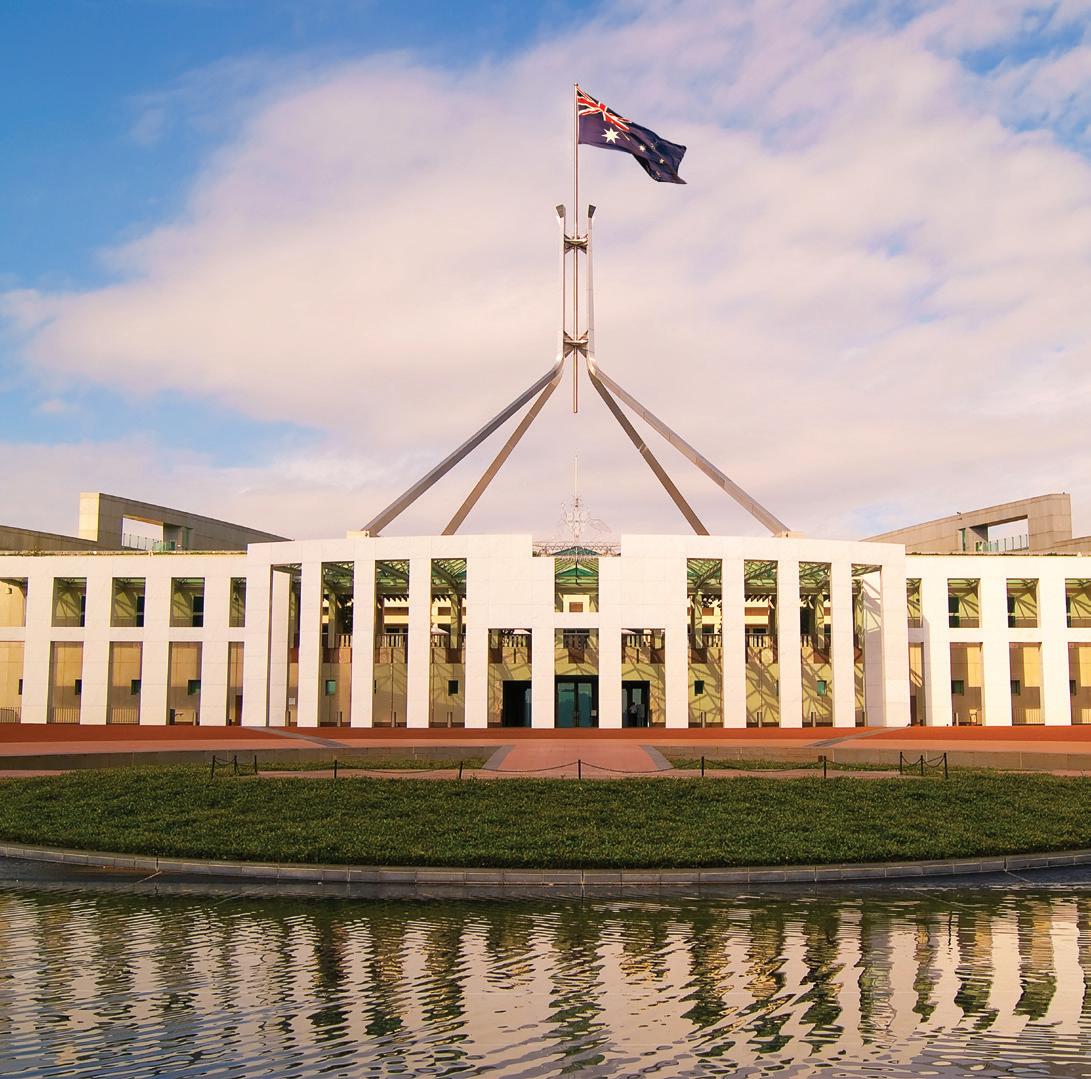
Specialisation by biome
Countries specialise in producing goods and services that they have a comparative advantage in making. This often depends on the biomes that exist in that country. Choose a country and investigate the way it uses a particular biome to produce a good or service. For example, New Zealand uses its alpine biome to attract international tourists.
There are many innovative solutions to food insecurity around the world. Many of these come from businesses that invest in technology or processes. They can increase the amount of food that can be produced but sometimes come with downsides. Find out the costs and benefits of these innovations:
• greenhousing
• genetic modification
• fertilisers and pesticides
• urban farming.
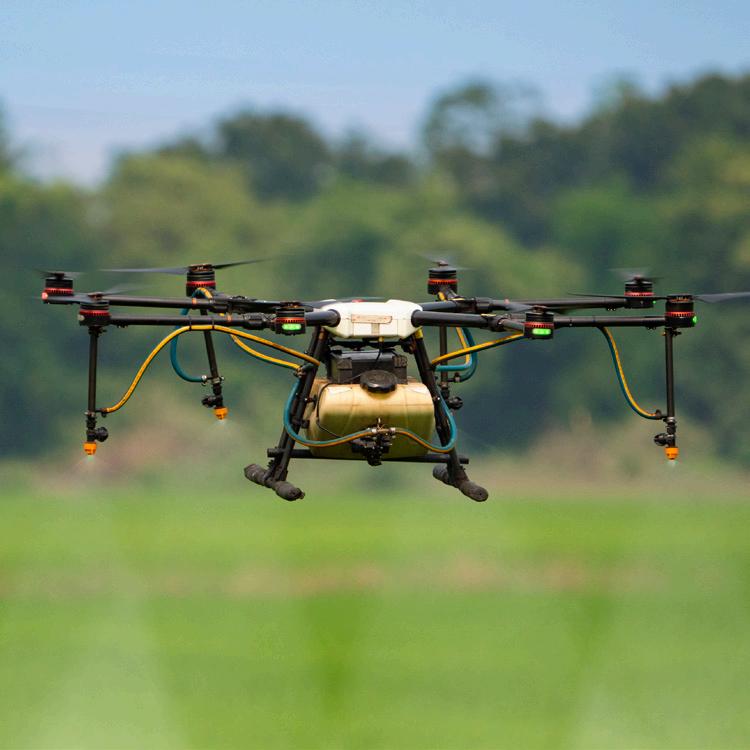
Industrial Revolution and the rise of banking and finance
Many of the world’s major financial institutions have their origins in the Industrial Revolution. Banks and lenders realised there were vast profits to be made by providing funds to businesses that emerged during this time. Research the growth of this industry from the 1700s until today and create an annotated timeline to present your findings. You should include:
a Who established the first industrial banks?
b What was the role of banking in the Industrial Revolution?
c Which countries and companies were most influential at this time?
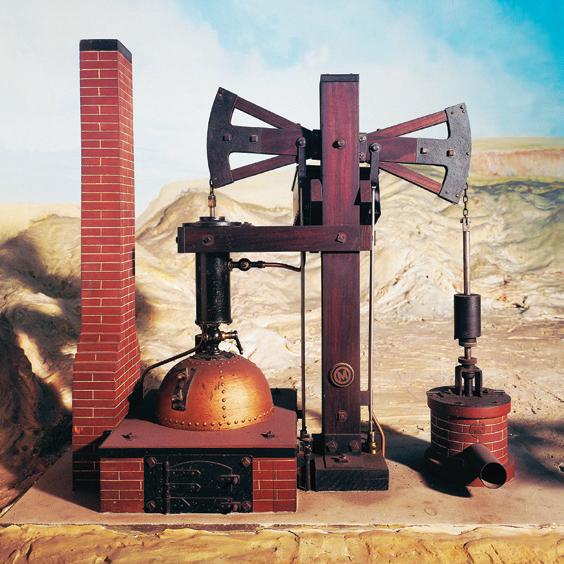
d How has the banking and finance industr y changed since the Industrial Revolution?
There are a lot of similarities between wartime propaganda as was used during World War I and modern marketing strategies. Compare and contrast a piece of propaganda from your period of study (poster, newspaper article or radio broadcast) with a modern advertisement campaign. You should consider, among other strategies, language use, symbols, colour and message.
Present your findings in the form of a Venn diagram and compare your work with others in your class.
Geography combines the study of the physical features of Earth and the relationships people have with both natural and human environments. For example, geographers might study the shape of a landscape, the type of vegetation it contains, the habitat that this vegetation provides, and the climate and soil types that helped this vegetation to grow. Equally, geographers might study the changes that humans make to landscapes, such as clearing a forest for agricultural production and the positive and negative impacts that follow.
Asking questions about the world is an essential part of any geographical study. Why are some parts of Earth covered in tropical rainforests while others are covered in endless expanses of sandy dunes? Why is rice a staple food source in some regions instead of bread? Why are some countries facing overpopulation while others are trying to increase birth rates? How do local-scale actions lead to global-scale impacts? Studying Geography will provide you with the skills and knowledge needed to answer these questions, while helping you to gain a greater appreciation for the natural and human world.
Throughout the Geography section, you will learn to interpret and analyse a range of data, including maps, graphs, statistics and satellite imagery.
Geographers collect, analyse and present data in order to answer questions and draw conclusions. This data often has
a spatial component in the form of a map, a geotagged photo or a digital interactive map known as a geographic information system (GIS). Geographical data is used to compare different environments, determine why environments change, assess the impacts of these changes and evaluate how changes are managed.
Geographers collect their own primary data on a local scale by undertaking fieldwork. Techniques used to gather this data include drawing field sketches, taking photographs, surveying local residents and mapping geographic characteristics. Secondary data is also used, which includes field data collected by others, historical accounts, data gathered remotely by satellites (see the images in Figures A, B and C) and data
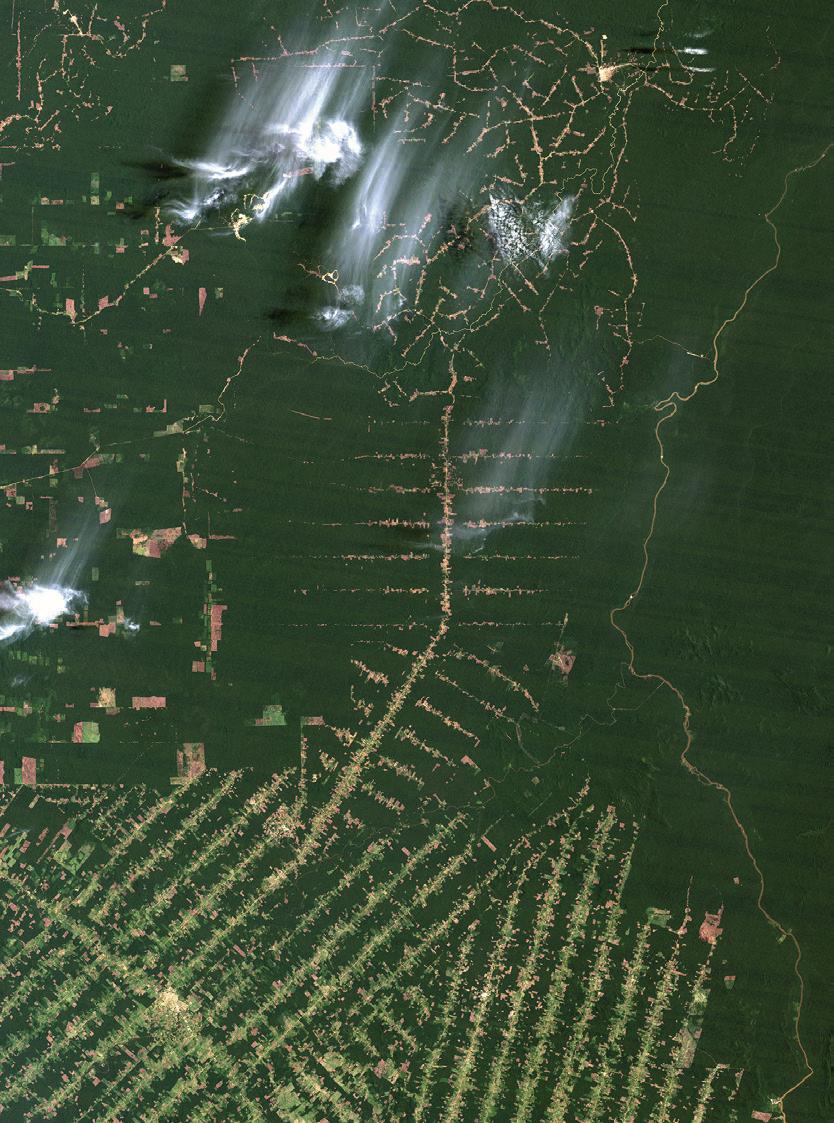
collected on a larger scale, such as in a national census.
Geographic concepts are used to help direct a geographer’s thinking. The seven concepts used in the following chapters are place, space, environment, interconnection, sustainability, scale and change. Using the images in Figures A to C, a geographer might investigate how the characteristics of this place have changed, measure the scale and distribution of these changes, consider the interconnections between the factors that have led to the change and address the impacts that these changes might have on the environmental, social and economic sustainability of the region.
These concepts will be expanded upon throughout the following chapters as you compare natural environments around the world, explore the impacts of food production, investigate how technological developments have helped connect people around the world, and consider ways that people’s choices and actions can have global consequences.

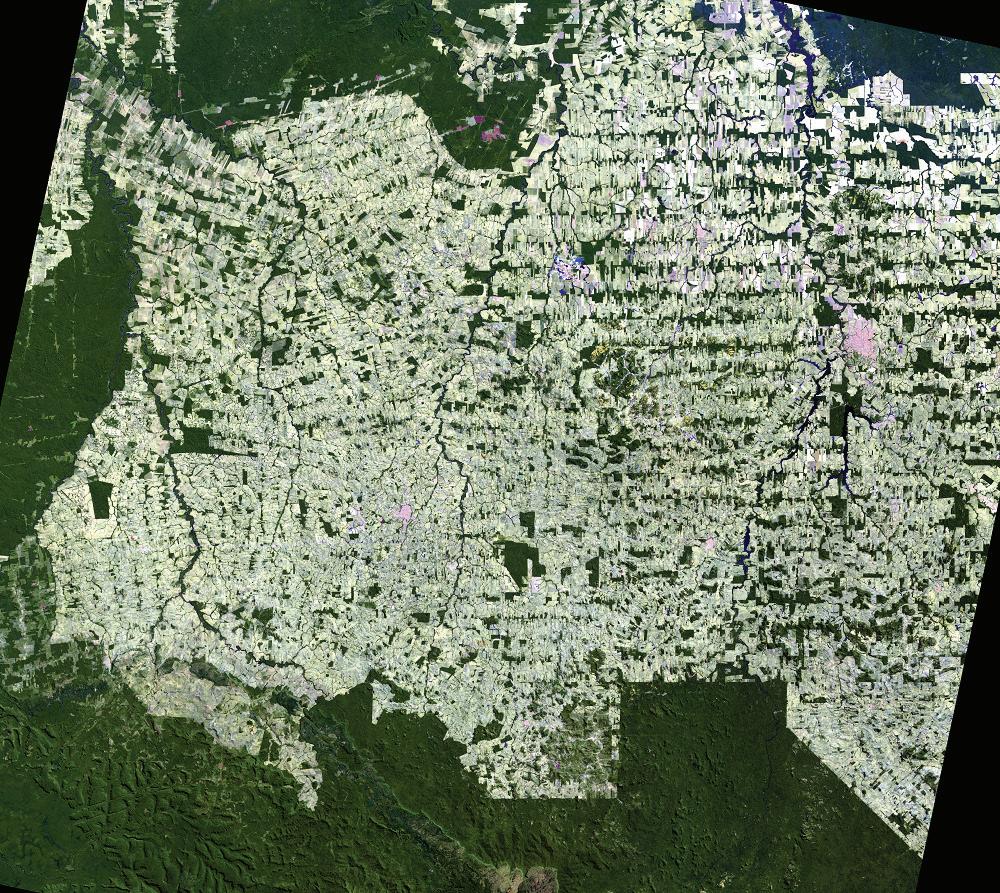

By the middle of the 21st century, eating insects could become widely accepted as an alternative to eating meat. Meanwhile, cultured meat grown in a lab from cow stem cells could replace traditional beef production. These are among the potentially devastating effects of climate change. A relatively small consequence, but still significant to many of us, is that climate change could drastically reduce cocoa production and lead to a worldwide chocolate shortage!
In this unit, you will investigate biomes based on their geographic characteristics and spatial distribution. This will help you to understand the types of foods and fibres produced within these environments, and the subsequent social, economic and environmental consequences. By evaluating various management strategies, you will explore ways in which future food production seeks a balance between sustainability and global food security.
After completing this unit, you should be able to answer these questions:
• What are biomes and how do their characteristics vary?
• What is the spatial distribution of biomes on a global scale?
• In what ways have humans in the production of food and fibre altered biomes?
• What challenges are associated with food production in Australia and the world?
• How does world population affect global food security?
• What solutions are being used to try to achieve food security on a range of scales?
• What are the implications for environmental sustainability?
This unit focuses on developing your understanding of space, environment and interconnection. In Geography, the concept of environment includes the characteristics of an environment, the processes that occur within an environment, the ways in which environments support life, and the interrelationships between people and environments. Space refers to the spatial distribution of places and the characteristics within these places. Geographers use maps and various forms of spatial technology to examine, monitor and compare spatial distributions in order to assess and manage environmental impacts.
Interconnection involves the links between places and the influences that people have on the characteristics of places. For example, the location of a biome might influence its climate while the interaction between living and non-living components of a biome might determine its characteristics. People are interconnected with these environments in the way that they modify and manage them. One example is the many varieties of bananas
Where is it located, what are its geographic characteristics and how is it significant to different people?
Is it economically, socially and environmentally sustainable?
What are the components of this environment and what processes have formed it?

(Figure D) which are an essential fruit in diets across the world and are grown in tropical regions. In rural regions of Uganda, Cameroon and Rwanda, plantains (a variety of banana) can provide up to 25 per cent of their daily calorie intake. In tropical regions, many people rely on successful banana crops for food security.
Although this unit has a specific focus on space, environment and interconnection, these concepts are part of a group of seven interrelated key ideas that help us to think geographically.
How are the features distributed and how has the distribution changed over time?
What type of change has occurred and what are the consequences?
Does it occur on a local, national or global scale?
How is it linked with other places and with other people?







Aboriginal and Torres Strait Islander Peoples should be aware that this chapter may contain the names and images of people who have passed away.

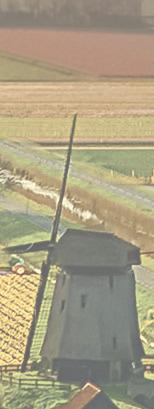



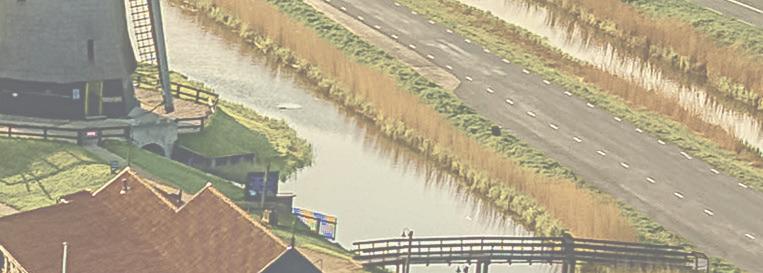


Our natural world is made up of many biomes that have shaped and supported the growth of human life on Earth. In this chapter, you will explore the world’s biomes and learn about the ways in which we rely on these to produce food and fibre. You will also investigate the ways in which humans have altered biomes for food and fibre production, and examine the challenges we face when attempting to provide enough food and fibre for a growing population into the future. You will complete a variety of activities, including fieldwork, that will provide you with a broad range of geographic skills as well as allow you to apply the seven geographic concepts.
After completing this chapter, you should be able to answer these questions:
• What are biomes and how do their characteristics vary?
• What is the spatial distribution of biomes on a global scale?
• In what ways have humans altered biomes in the production of food and fibre?
• What challenges are associated with food production in Australia and the world?
• How does world population affect global food security?
• What solutions are being used to try to achieve food security on a range of scales?
• What are the implications for environmental sustainability?
• What does the fieldwork process involve?
After completing this chapter, you should be able to:
• Describe the trend of a line graph
• Describe spatial distribution using the PQE method
• Describe spatial association using the DQE method
• Read scatter graphs to understand the association between phenomena
• Apply the concept of process by drawing a flowchart
• Apply the concept of change
• Evaluate a response using the sustainability concept.
Visit the Interactive Textbook to access:
• interactive Scorcher Quiz
• videos, image galleries and other extra materials.
Figure E An elevated view of tulip fields in the Netherlands. The floral industry is a contributor to carbon emissions due to its need for refrigeration and long-haul transport.
indigenous naturally existing in a specific place biome a large naturally formed community of plants and animals found in a place adaptation the process of change where an organism becomes better suited to its environment biodiversity the variety of plant and animal life found in a place natural characteristics the natural qualities of a place
• What are biomes and how do their characteristics vary?
Consider the types of plants and animals that are indigenous to your local region. Are you more likely to see a magpie and gum tree when looking out of your school window than a moose and a maple tree?
Observing the indigenous plant and animal life in a region is a good place to start when identifying a biome
A biome is a particular geographic region that can be recognised by the plants and animal species that naturally
live there. Bios is a Greek term meaning ‘life’, and it is the unique collection of life found in each region that characterises each biome. Within each biome are communities of plants and animals that have naturally adapted to a region’s climate and topography. These natural characteristics not only support wildlife and vegetation, but they also support humans. For example, the Amazon rainforest provides people with food, rainfall, oxygen, materials and medicine, whilst also being one of the most biodiverse places on Earth.
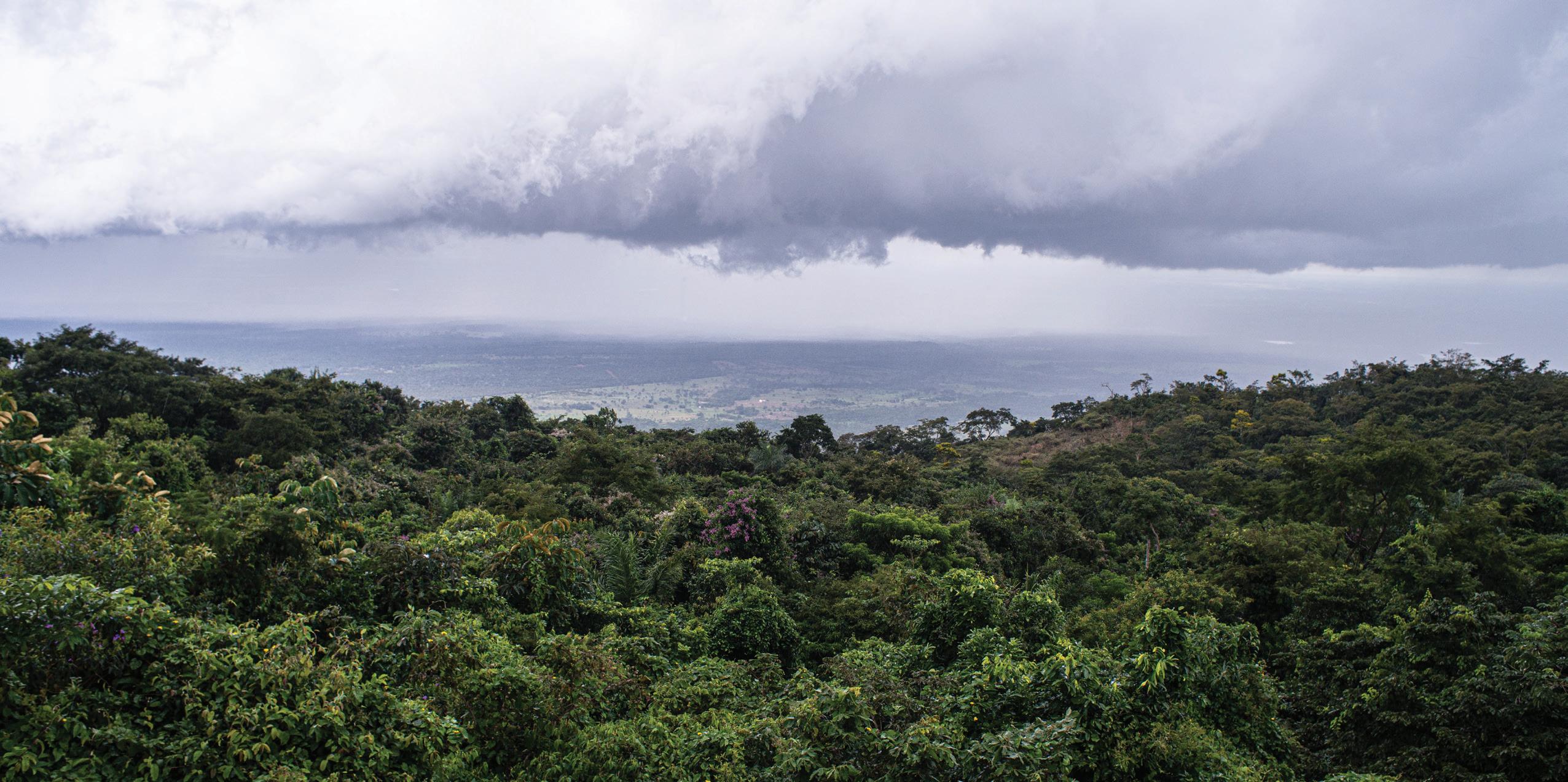
As seen in Table 5.2.1, there are two main types of biomes: terrestrial (land) biomes and aquatic biomes. These can be further classified into more specific biomes based on the variations of plant and animal species found in each region. A biome is often named after the main
Terrestrial biomes
Tropical rainforest
Temperate forest
Desert
Tundra
Alpine
Taiga (boreal forest)
Grassland
characteristic of its environment, such as the dominant vegetation that grows there. For example, the tundra biome gets its name from the Finnish word tundra, meaning ‘treeless plain’. You will probably be able to tell the type of vegetation that dominates the grasslands biome, and what the main characteristic is of the ice biome from their names.
Aquatic biomes
Savanna/tropical grassland Freshwater
The ice biome can be terrestrial in the form of ice sheets and glaciers, or aquatic in the form of sea ice.
Table 5.2.1 The main biome classifications. These can be further classified more specifically.


Compare
contrast
Compare Figures 5.2.2 and 5.2.3. Use a Venn diagram to list the similarities and differences that can be observed in the images. Conduct further research to add further characteristics.
What is a Venn diagram? A Venn diagram is a great way to show similarities and differences between concepts. It usually has two or three circles that overlap each other. In the overlapping area, the similarities appear. In the separate areas, the differences are shown.
Key concepts: place, environment
Biomes
HASS skills: analysing, communicating and reflecting
Classify the images in Figure 5.2.4 (A–D) into one of the biomes mentioned in Table 5.2.1. What are the main biome characteristics that you can see in each image?

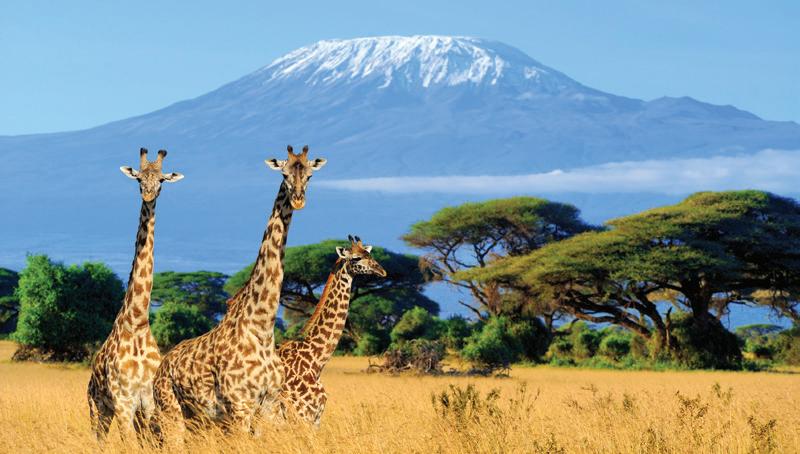


Key concepts: place, environment, interconnection
climate conditions are so appealing that the majority of people worldwide live in this type of climate.
Although biomes are recognised by their plant and animal species, there are some important characteristics that influence which species will dominate each region. The most influential of these characteristics is climate. However, latitude, soil and elevation also influence a biome’s spatial distribution spatial distribution the arrangement of something (such as the forest biome) across the Earth’s surface
This mnemonic covers the impact of numerous natural forces on climate, and is good for you to be aware of as you work through this chapter:
Latitude
Altitude
Prevailing winds
Distance from the ocean
Ocean currents
Great mountain ranges.
Climate refers to the average weather conditions of a place over a long time (usually 30 years). Weather conditions are factors that can change on a daily basis, such as temperature, wind and precipitation. By calculating the average daily weather conditions of a place over 30 years, we can determine its climate and predict what type of weather we can expect at different times of the year.
Alternatively, if your region receives less than 250 millimetres of rain per year, it is likely that you are in a desert biome These dry conditions provide a difficult climate for life to adapt to and thrive in. However, some species have adapted in remarkable ways. Figure 5.2.5 for instance, shows the dorcas gazelle of the Sahara Desert in North Africa. This gazelle can survive without drinking water and passes white pellets of uric acid, rather than wasting precious water by urinating. Moreover, big ears are often common among hot-desert-dwelling animals, like jackrabbits and Fennec foxes, as the large surface area of their ears helps to radiate heat and keep them cool. The Australian thorny devil, seen in Figure 5.2.6, can absorb water through its feet.

precipitation liquid or frozen water that forms in the atmosphere and falls to Earth (e.g. rain, snow)
Consider the climate conditions in your region for a moment. If your region has four seasons, you may be living in a temperate climate. A common biome found in this climate is the temperate forest biome. These mild temperatures and annual rainfall of over 1400 millimetres allow many species of plants and animals to thrive, thereby making it a productive biome. In fact, temperate

Developing geographic concepts and skills 5.1
Interpreting climate graphs
Climate graphs (also known as climographs) are a unique type of graph as they have a ‘U’ shaped axis to communicate a year’s climatic data using two types of graphing. The line graph presents the average temperature while the bar graph shows rainfall. Analysing climate graphs can help you to describe the climate and determine the natural biome it is located in.
The appearance of the temperature line graph can reveal location as it mirrors the seasonal changes you’d expect in each hemisphere.
If the average temperature line appears like this…
location is found in the…
The steeper the shape of the line, the more likely the location experiences four seasons. This generally allows a geographer to narrow down the location to a biome experiencing four seasons, such as grasslands and temperate forests. Locations with a more stable (or flatter) temperature line experience less change in temperature throughout the year, such as the tropical rainforest biome
Similarly, the total rainfall per year and when this occurs can also provide evidence of which potential biome the location may be found in. For example, the desert biome is usually classified as an area receiving less than 250 millimetres of rainfall per year and if the climate graph matches this, it is further proof of your identification.
Total rainfall can be described using both figures and descriptive language, as summarised in Table 5.2.2.
Quantity of total annual rainfall
Below
250
500
Table 5.2.2 Describing the total annual rainfall
Descriptive language to apply
Figure 5.2.7 Climate graph for Calama, Chile ➜
Observe Figure 5.2.7.
1 Describe the climate of Calama, Chile.
2 In which hemisphere is Chile located and what evidence does the climate graph provide to support this conclusion?
3 Identify the most likely biome that Calama is located in. Provide evidence from the climate graph to support your conclusion.
4 Use the climatic data below and construct your own climate graph for Exmouth, Western Australia.
Latitude is another important influence on a biome, and is strongly interconnected with climate, as the latitude of a place can affect its temperature and the amount of sunlight it receives. The tropics, which are located between 23.5° latitude north and south of the equator, receive direct exposure to sunlight all year round. This makes the tropical
rainforest biome consistently warm. This consistent exposure to sunlight, as well as high amounts of rainfall, makes it the most abundant of all biomes. It is home to approximately 50 per cent of all life, despite only taking up 2 per cent of Earth’s surface. In contrast, the polar ice biomes, located between 65° and 90° latitude, experience half the amount of sun exposure and are consequently too cold to sustain an abundance of life.
Describing spatial distribution using the PQE method
When describing the distribution of a phenomenon using a choropleth map, as seen in Figure 5.2.9, there are three important things to include: the pattern, quantification and an exception. This is also known as the PQE method. Use at least one sentence to describe each of these with respect to Figure 5.2.9.
1 Pattern: Give a general overview of the distribution.
a Is the overall distribution even or uneven?
b Where are areas that have a high or low temperature? Provide some examples.
2 Quantification: Provide specific evidence to demonstrate the pattern. Use the temperatures provided in the legend and estimate the size of temperature regions using percentages.
a Roughly how much of Earth has a high or low temperature?
b How hot are the majorit y of the hottest regions? How cold are the majority of the coldest regions?
3 Exception: Identify some places as examples of specific places that do not fit your pattern.
a Is there a place that has a high temperature surrounded by places with a low temperature or vice versa?
b Is there a place that has a much higher or lower temperature than anywhere else?
Key concepts: place, scale
phenomenon a fact or situation that exists or happens (plural: phenomena)
HASS skills: communicating and reflecting
Developing geographic concepts and skills 5.3
Describing spatial association using the DQE method
Geographers can apply the concept of spatial association when comparing maps to help determine whether two or more phenomena are similarly distributed over Earth’s surface. If a similarity exists, there may be a link (association) between the phenomena that a geographer may want to investigate further. When describing spatial association, there are three important things to include: the degree of association, quantification and an exception. This is also known as the DQE method. Use the steps below to describe the spatial association between Figure 5.2.8 and 5.2.9.
1 Degree: Give a general overview of the degree of association. Is there a strong, moderate, weak or no degree of association between the two figures? That is, does the distribution pattern of each map look similar or different?
2 Quantify: Provide specific evidence to demonstrate the association. Provide data and estimate the percentage of coverage.
3 Exception: Identify an example or several examples of specific places that do not fit the pattern of association.
a Locate and name the exception.
b Explain why this is an exception.
For example, if you have stated that there is a strong association, there may still be a location where only one phenomenon is present.
Key concepts: space
HASS skills: communicating and reflecting

which are known as permafrost. In the coldest of grassland biomes, such as the grassland (large unforested plains) in Siberia, ancient organisms have been found preserved in the frozen soil. In these biomes, the soil is too cold for decomposition to occur. Figure 5.2.10 shows the frozen remains of an extinct lion cub that was found in Siberia in 2017. In contrast, some of the world’s most fertile soils are found in the grassland biome where seasonal decomposition creates soils rich in organic material.
Elevation refers to the height of land above or below sea level. Low elevation biomes include the coastal estuary biome, which is the place where the river meets the sea, and marine biomes, which are below sea level. Biomes located at higher elevations will experience colder temperatures as the atmosphere gets thinner. A thinner atmosphere cannot trap as much heat.
permafrost permanently frozen soil, mostly found in the polar and tundra biomes decomposition the process of being broken down to smaller pieces by bacteria and fungi
Soil varies between biomes in terms of its temperature, moisture, organic material and pH. These factors all influence which plants will thrive in each region. For instance, the tundra biome, which is mostly distributed within the Arctic Circle or in areas of high elevation, supports low-growing shrubs and mosses that can endure the permanently frozen soils,
If you were to walk from the base of a mountain to its peak, you would likely walk through a variety of biomes. For instance, in the Andes of central Peru, you would begin your walk through a tropical rainforest, followed by a mossy forest, woodland and grassland before you reached the cold, treeless alpine biome. An alpine biome often starts where snow begins to form. This can occur at different elevations depending on the particular characteristics of each place. For instance, the interconnections between latitude, ocean currents and how close a place is to the polar land masses can impact the elevation of the snowline.

The distribution of biomes is therefore determined by a unique combination of factors that support an extraordinary diversity of life. These factors have the ability to change over time, resulting in the movement of biomes. Natural changes including the processes of erosion and deposition can affect the elevation of a region. Over geological time, continental drift and natural climate change has altered the landcover of the world.
erosion the wearing down of the Earth’s surface, e.g. via waterflow or wind
deposition the process whereby sediment, soil or rock is added to a part of the Earth’s surface to build it up anthropogenic biome locations where intensive human interactions have altered the natural biome
Importantly, humans also play a part in changing the distribution of a biome, by altering the land through deforestation, mining, farming and development. Even overhunting or the introduction of certain animal or plant species can disrupt how species interconnect with each other, and therefore change the structure of life in the biome. Some biomes can become extinct, while new biomes can potentially form. Where natural biomes and their characteristics have been considerably altered by human activity, anthropogenic biomes or anthromes, can be formed. Understanding the changes and interconnections within biomes is an important mission for geographers, who work to find a balance between the needs of a growing human population and the millions of unique and fascinating species that also share life on this planet.
Go online to
5.2 Review questions
Recall
1 Define the term ‘biome’.
2List four characteristics that can determine a biome’s distribution.
3Explain why higher elevations experience colder temperatures.
4Identify the human and natural activities that can change the distribution of biomes over time.
5Explain the difference between climate and weather.
Interpret
6Describe the distribution of Western Australia’s biomes in Figure 5.2.13 using the PQE method.
• Pattern: Is the pattern of distribution even or uneven?
• Quantify: Identify some of the major biomes. Locate where they are found and estimate what percentage of Western Australia they cover.
• Exception: Are there any exceptions to the pattern? For example, is there a biome found mostly in one region but also to a much lesser degree in another region?
7Describe the spatial association between Figures 5.2.12 and 5.2.13 using the DQE method.
• Degree: Is there a strong, moderate, weak or no degree of spatial association between the two phenomena?
• Quantify: Support your statement in the first point by naming and locating regions and estimating the percentage of overlap between the two phenomena.
• Exception: Are there exceptions to the general pattern of association? Name and locate these exceptions and explain why these are exceptions.
Argue
8 ‘Some biomes support more plant and animal life than others.’ Do you agree with this statement? Ensure that you refer to at least three biomes and their characteristics to justify your reasons.
9 Do you believe that changes in the distribution of biomes are mostly due to human or natural influences? Discuss your viewpoint.
Apply 5.2 questions
1 Choose one of the following regions in Western Australia (places) and conduct further research into its biome or biomes by applying the skills below.
• South West
• Kimberley
Place
• Goldfields
• Wheatbelt
aDescribe the place by providing its name and describing its location.
bIdentify the Traditional Owners of this location, who call this place home.
Environment
cIdentify the biome or biomes found at this location.
dDescribe the natural environment of your chosen location.
Space
e Referring to Figure 5.2.8, describe the distribution of this biome on a global scale.
Interconnection
f Provide an example of how people have modified or managed this environment.
• Pilbara
g Choose one indigenous animal or plant species and describe the way it has adapted to live in this environment.
Key concepts: place, change
HASS skills: questioning and researching
fibre the thread from plants or animals that can be used to make products agriculture the process of growing crops and raising animals for human use and food crop yield the amount of produce that is grown on a piece of land
question
• How have humans altered natural biomes in the production of food and fibre?
What do you think are our most basic human needs?
There is a good chance that our basic human needs are met by the plants and animals that we grow and breed. Our food comes from vegetable and cereal crops as well as dairy, poultry and meat from animals. Our clothing and shelter can also come from plants and animals. Fibre is the thread from plants or animals that is used to make products such as cloth and rope. Cotton is a plant fibre, while wool is an animal fibre.
Dating as far back as 65 000 years ago, when Aboriginal Peoples are known to have practised agriculture, humans have worked hard to create a consistent food and fibre supply. We have achieved this by altering biomes through actions such as land clearing, terracing, irrigation and drainage. These actions have increased the amount of product that can be grown on a piece of land, otherwise known as crop yield. In this topic, we will look at how humans have altered biomes in the pursuit to supply the world with food and fibre.
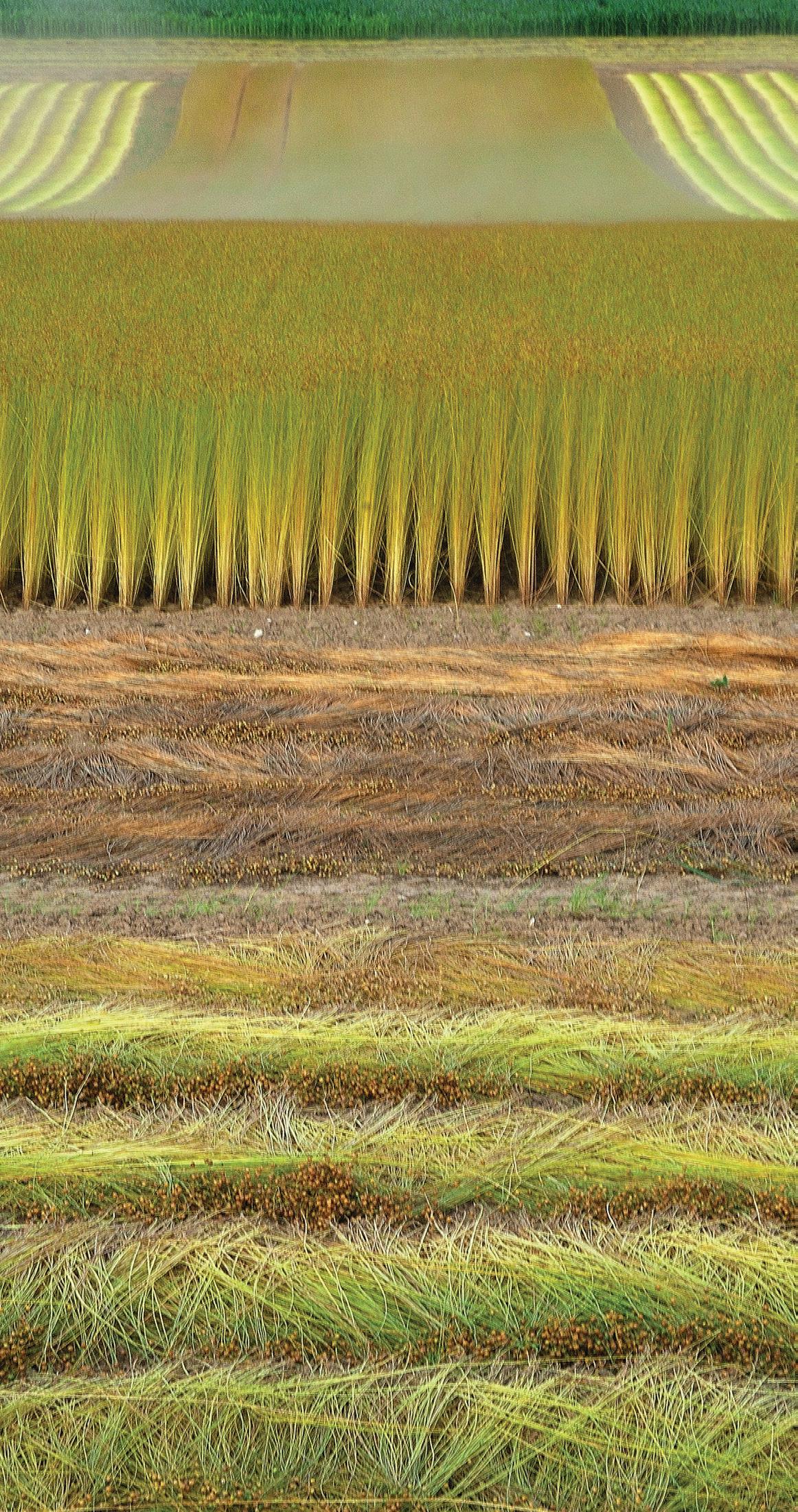
Can you match the crop with the image? The crops pictured, in no particular order, are: corn, bamboo, coffee, rapeseed, cashew, cotton, lettuce and sugarcane. Match the crop type to each image (A–H) below.

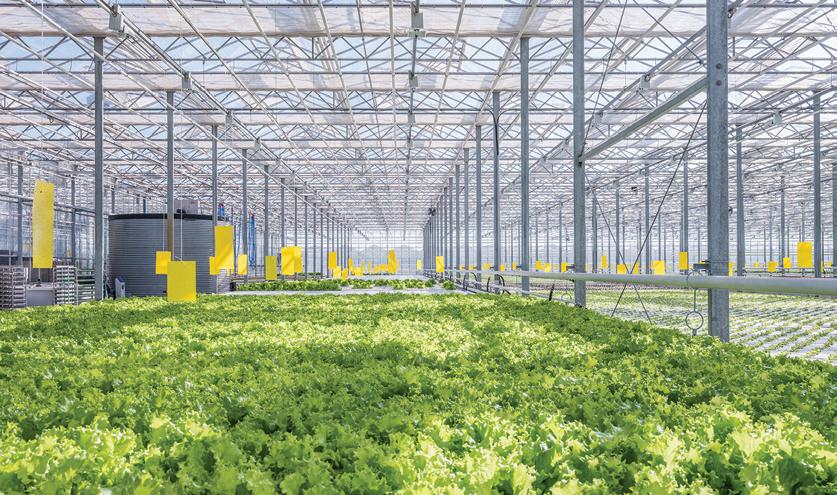



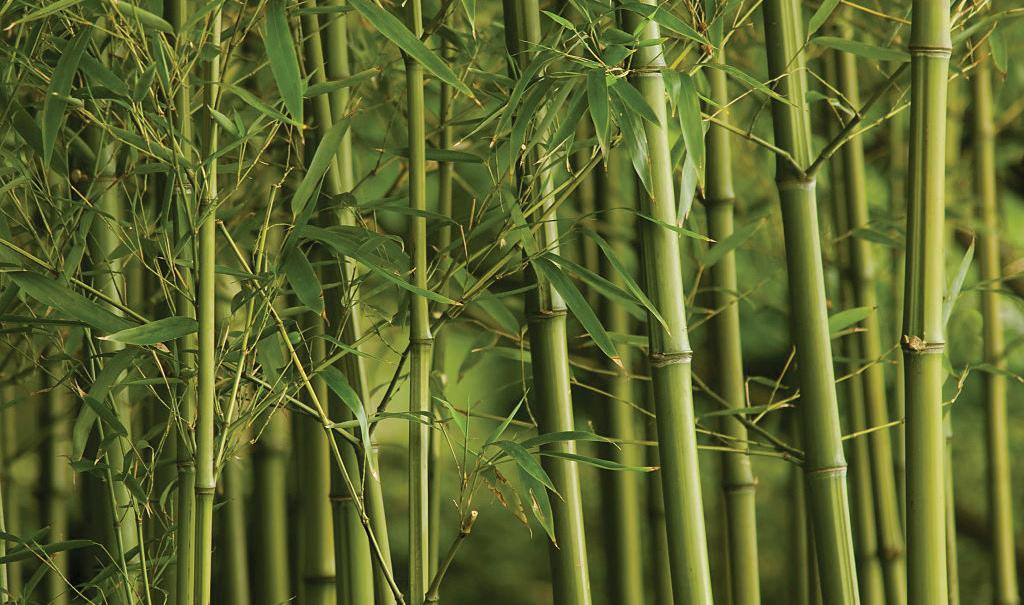
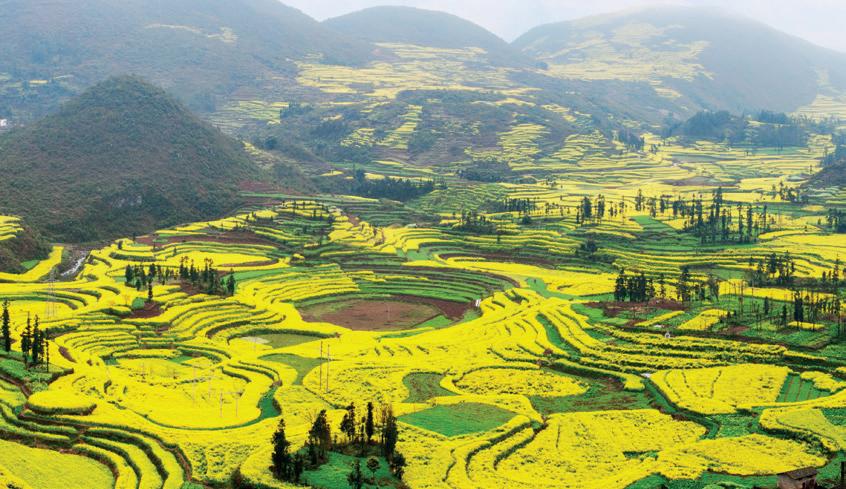
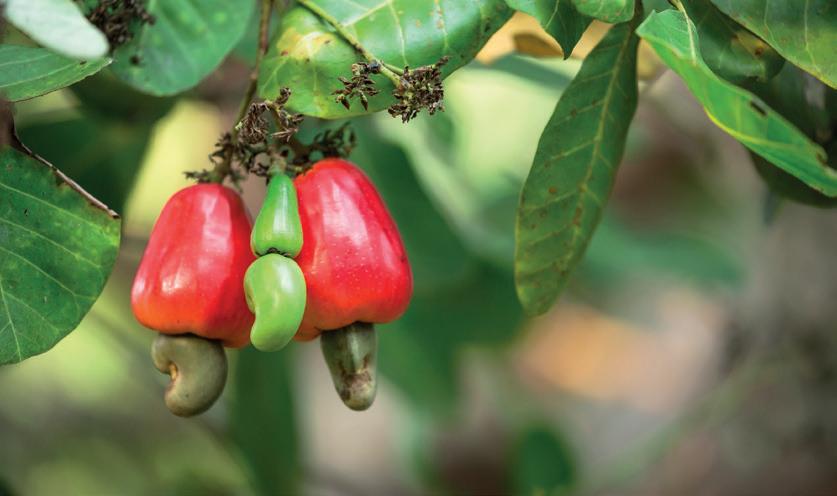
Key concepts: place, environment HASS skills: communicating and reflecting
vegetation plants found in a particular area
deforestation clearing a large area of trees
ecosystem all living things in an area, including how they interconnect with one another extinction the process of a species having no living members
desertification the process of land changing into a desert
salinity the movement and amount of salt in a landscape
One of the most obvious ways that humans have changed terrestrial biomes is by clearing vegetation to make space available for agriculture. Within the forest biomes, this is called deforestation There are various methods of land clearance used in the world, with the most common being slash-and-burn. This method involves cutting down trees and burning the remaining vegetation to clear the land. Crops are then planted in the soils that have been fertilised by ash. Clear cutting, or clear felling, which is typically performed by machinery today, is the process of removing all trees in an area.
Vegetation clearance not only alters the physical appearance of a biome, but it changes the ecosystem. In the case of the tropical rainforest biome, deforestation destroys habitats and food sources leading to biodiversity loss and even species extinction. The Uakari monkey is native to western areas of the Amazon rainforest where Peru borders Brazil. Foraging for food and locating places to nest have become increasingly difficult for the species as much of its habitat has been destroyed for agriculture. The loss of this species will have flow-on effects as the Uakari monkey plays a key role in the ecosystem by dispersing seeds at greater distances than smaller animals.

Before clearing
The system is balanced and most rainwater is used in the spot where it falls.
The clearance of vegetation can also impact the quality of the soil. Removing vegetation exposes soil to wind and water erosion, depleting its nutrients and potentially causing desertification. For example, the Great Plains of the United States of America were cleared for agriculture but overgrazing, clearing of native vegetation and excessive drought has seen vast areas of the grassland biome change to desert
Plant life also regulates the water table. In normal conditions, native plants absorb water that enters the soil via their roots. This absorption keeps the water table at a level well below the surface. The removal or replacement of vegetation with shallowrooted plants causes the water table to rise as less water is being absorbed. As the water table rises, salts in the water table are carried to the surface. Water on the surface evaporates but the salt remains, making the soil infertile. This process of salt moving to the surface is called dryland salinity, as illustrated by Figure 5.3.4.

Shortly after clearing and irrigation
Evaporation and the seeping of irrigation concentrates saline groundwater at the surface of the soil.
Some time after clearing and irrigation
What would have been protective plant cover is destroyed by the accumulation of salt at the surface of the soil. This leaves the land open to erosion.
The Wheatbelt is primarily an agricultural region producing grain and raising livestock, with an integrated rail and freight network. The more arid eastern fringes are suited to mining of precious metals and minerals such as gold. The produce grown and raised in this region plays an important role in Western Australia’s economy and contributes to our national food security. Wheat, barley, canola and wool are the major commodities of the region. In 2022–2023 alone, the agricultural sector in the Wheatbelt contributed over $4.9 billion towards the economy.
The Wheatbelt, as seen in Figure 5.3.5, is located in the grassland biome of the southwest of Western Australia. The area was first scouted for its potential as pastoral land in the 1830s. The seasonal mediterranean climate of cool wet winters and hot dry summers is highly suited to wheat and sheep farming. The removal of vegetation for growing crops is less labour intensive than clearing forested areas and gently undulating topography was ideal for grazing animals.

Much of the grassland biome has been altered over time. It is estimated that 74 per cent of the native vegetation within the Wheatbelt region has been cleared for agriculture. The remaining 26 per cent exists in fragmented patches within the landscape. Many native animals and plants are vulnerable or endangered due to the loss of their habitats. The extensive clearing of land has also caused salinity in the region, with approximately 5 per cent of the region impacted. That is 1.75 million hectares of land which is no longer viable or requires intervention to support plant life.
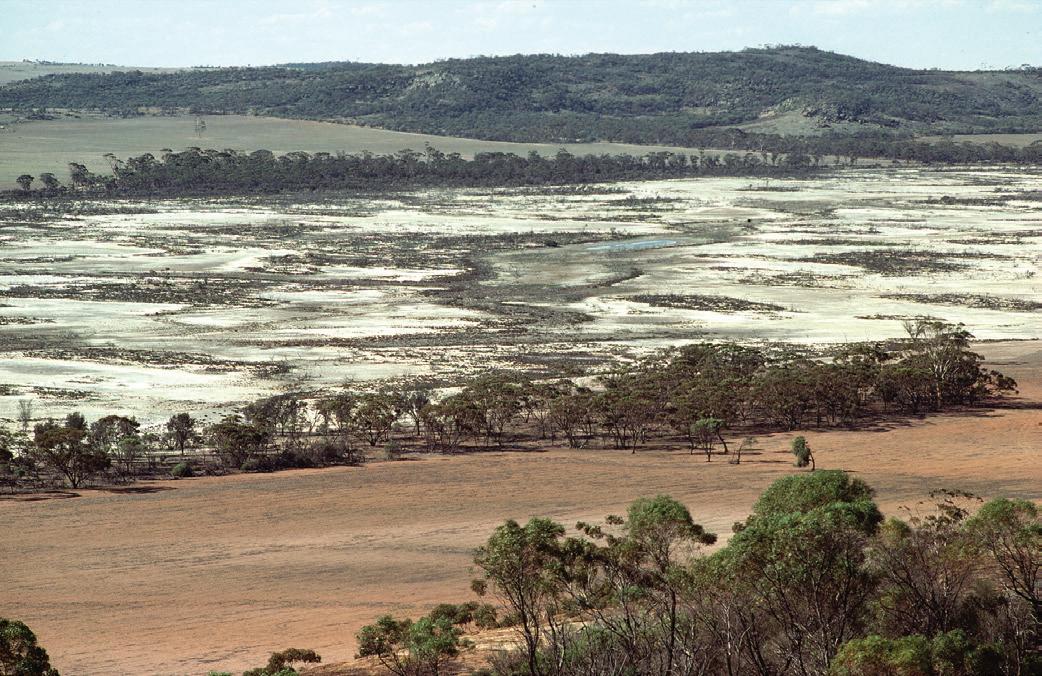
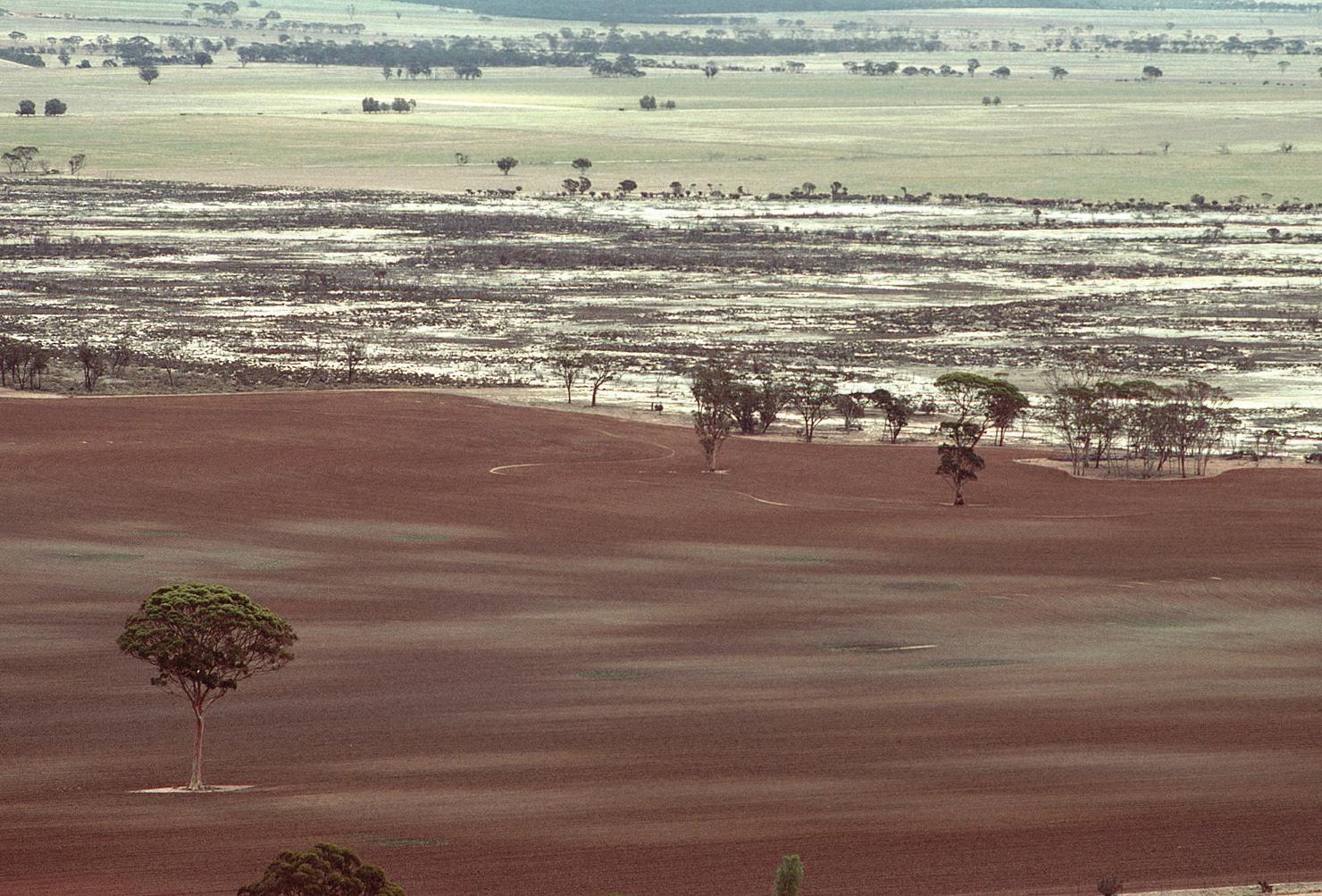
Percentage of area with salinity > 1500 mg/L
90% or more
60–90%
30–60%
1–30%
Less than 1%
Data not available
Analysis questions
1Identify the main agricultural products of the Wheatbelt region.
2Describe how the grassland biome has been altered in the Wheatbelt region.
3Explain why salinity is a threat to the economy of the Wheatbelt.
Key concepts: place, space, environment, interconnection, change
exotic species when a plant or animal species moves from its natural location to a new one
introduced species when humans bring an exotic species into an area
feral an animal species existing in a wild state, usually after escape from captivity or domestication
An exotic species refers to any animal or plant species that moves from their natural location to a new location. A similar term used within the field of geography is introduced species, which is when humans bring an exotic species into a new area where they become established and spread. Many of the foods and fibres grown in Australia are exotic species, see Table 5.3.1 for some of the most common examples. When planted, introduced crop species replace native plant species which alters biodiversity in an area. Similarly, introduced animal species can
HASS skills: analysing, communicating and reflecting
outcompete indigenous species which disrupts food webs. In some locations, populations of introduced animals can become feral.
Common exotic food and fibre species in Australia
Table 5.3.1 Examples of exotic species in Australian agriculture
Feral pigs are a major concern across Australia. Originally introduced to Australia for livestock farming, many have escaped the confines of farming properties and entered the natural landscape. Feral pigs are not only a threat to agriculture as they destroy crops and pastures, but they alter natural biomes too. Their diet and movement patterns are responsible for land and habitat destruction, the spreading of weeds, and the transmission of diseases. In Western Australia, feral pigs contribute to the spread of Phytophthora cinnamomi, dieback disease, in the eucalypt forests.
Sugarcane – a not so sweet tale
Australia is the second largest exporter of sugar in the world. Sugar is produced and refined from sugarcane. Sugarcane is a tropical plant and requires a tropical climate of warm temperatures and high rainfall to thrive. The eastern coastline of Australia between Mossman in Queensland and Grafton in New South Wales is where sugarcane is grown, an area with the matching soil and climatic conditions.
As you can observe in Figure 5.3.10, sugarcane plantations have caused deforestation of the temperate forest and tropical rainforest biomes to provide space for crops to be grown. The introduction of the exotic crop also upset the balance of the food web. Dermolepida albohirtum, the cane beetle, a native Australian beetle, used sugarcane roots as a new food source. Their population increased rapidly and so did the destruction of crops.

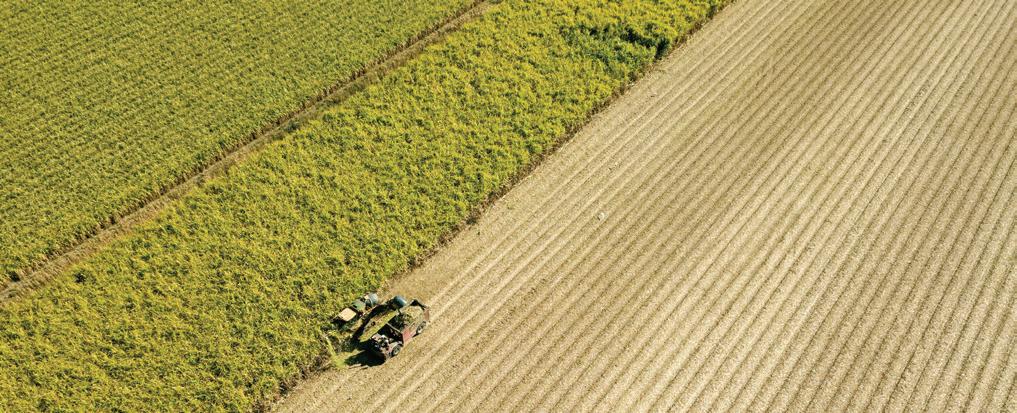
export to sell and send goods to another country

Among the many strategies to address the beetle, an introduced predator to consume the beetle was introduced in 1935 – the cane toad. The toads quickly became a new problem as they are toxic and had few natural predators. Today, cane toads have spread throughout much of northern and eastern Australia including parts of far northeast Western Australia. Many frog-eating native animals have suffered declines in their populations due to cane toads, including the northern quoll which is listed as endangered.
Analysis questions
1Describe how the production of sugarcane has altered the tropical rainforest biome in Australia.
2 The Australian Government Department of Environment (2010) stated that, ‘There is unlikely to ever be a broadscale method able to control cane toads in Australia.’ Investigate at least one strategy aimed at managing the cane toad population and describe the challenges associated with the approach.
Key concepts: place, environment, interconnection, change
HASS skills: questioning and researching, analysing, communicating and reflecting
Gun control laws have become a topic of debate in recent years. In Australia, gun ownership is generally low. In rural and remote communities, particularly in the agricultural regions, gun ownership is more common. Guns are used as a response to control the population of exotic animal species who invade and damage farm properties.
Debate the pros and cons of gun ownership for farmers. Undertake further research to investigate this ethical dilemma.
Key concepts: environment, interconnection, sustainability
The natural features of the Earth aid the flow of water across the surface, carrying runoff from precipitation to lakes, rivers, and oceans. Below the surface, soils and rock layers absorb, store and move water through the subsurface. All forms of agriculture require access to water, whether it is for stock to drink, water for irrigation, or daily functioning of a farming property.
The natural drainage system of an area can be altered for agriculture, impacting a biome’s natural water flow,

HASS skills: questioning and researching, analysing, communicating and reflecting
soil health and ecosystem. Water drainage can be altered directly by groundwater extraction, constructing dams, building canals or using irrigation. Indirectly, water drainage can be altered by excessive vegetation clearance or compaction of soil by machinery. Unintentionally, these actions alter the quantity of water that can enter the subsurface.
Changing natural features alter the freshwater biome . Diverting water can lower river and lake levels, thereby placing stress on aquatic ecosystems as sunlight can penetrate further into the water and potentially raise the average temperature. Increased runoff from farming properties can cause erosion which carries higher levels of sediment into waterways. Dams and drainage canals can disrupt natural flooding cycles that many species rely on for breeding and feeding. Maccullochella peelii , the Murray cod, is listed as vulnerable under the EPBC Act as their population numbers have declined. The primary threat to this species was commercial fishing but this has ceased. Barriers such as dams and weirs prevent the migration of this species up and down the river as well as the dispersion of larval fish during breeding season.
The Swan Coastal Plain, spanning from Gingin to Myalup, is the main vegetable production region for Western Australia. Within this region are numerous wetlands, a feature of the freshwater biome. Wetlands have been used for agriculture for many thousands of years as they provide fertile soil and support grazing animals with water, food supply and shade. Expanding agriculture and urban development have invaded many areas of wetland and at the current rate of loss, many more will be lost in the next few decades if conservation efforts fail.

Forrestdale Lake – a wetland under pressure
Forrestdale Lake, located within the Forrestdale Lake Nature Reserve, is located approximately 25 kilometres from Perth in the City of Armadale. Surrounding the lake is a mixture of rural and semi-rural properties, with encroaching urban development.
The average depth of the lake falls between 200 and 500 millimetres, varying from year to year as rainfall does. However, the lake used to hold more water than it does today. While declining rainfall is one of the natural causes, groundwater extraction from government and private bores exacerbated the issue.

The lake, together with Thomson Lake, was listed in 1990 under the Ramsar Convention for its importance in conserving biological diversity and as one of the best remaining examples of a wetland of this type in the Swan Coastal Plain. The two lakes are a vital breeding ground, migration stop-over and a refuge during droughts for up to 72 species of birds.
1Identify the cause of drainage changes in the Forrestdale Lake.
2Investigate a wetland nearest to you. Describe its biodiversity and explain its importance to your local area.
Key concepts: place, space, environment, interconnection, change


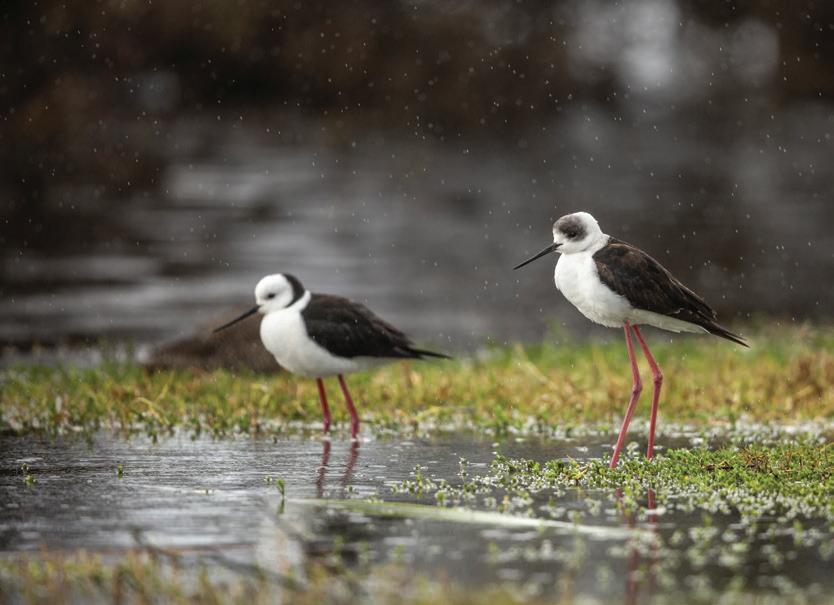
HASS skills: questioning and researching, analysing, communicating and reflecting
Irrigation has played an important role in our food and fibre security as we can improve crop yield by adding irrigated water to regions that don’t receive much rainwater.
aquifer an underground layer of rock that holds and stores water
Large-scale irrigation involves channelling freshwater away from its natural path to be stored and used on farms. Freshwater is naturally found above ground as rivers or lakes, or underground as aquifers
This is clear when we consider the large role that irrigation plays in the Murray–Darling Basin (refer to the map in Figure 5.3.16), where 70 per cent of all of Australia’s irrigated water is used. Although the Murray–Darling Basin only receives 6 per cent of Australia’s annual rainfall, it produces 40 per cent of our food and 93 per cent of our cotton. However, there is concern that irrigation is not sustainable in the long term because it can cause salinity and reduce the flow of water to places downstream of the irrigated diversions.
Irrigating crops can not only affect terrestrial biomes, but it can alter aquatic biomes too. Many types of crops in Western Australia are grown in infertile soil and farmers add fertilisers to improve its quality. Nutrients such as nitrogen, phosphorous and potassium are essential elements needed for plant growth. Not all water from irrigation is immediately absorbed by plant root systems, it can leech into the subsurface or run off into waterways. Run-off from fertilised fields will contain high levels of nutrients which will enter into freshwater biomes.

The process of excessive levels of nutrients being added into a waterbody, often due to run-off from farming, is known as eutrophication. As nutrient levels rise, rapid algal growth occurs and covers large portions of a water surface.

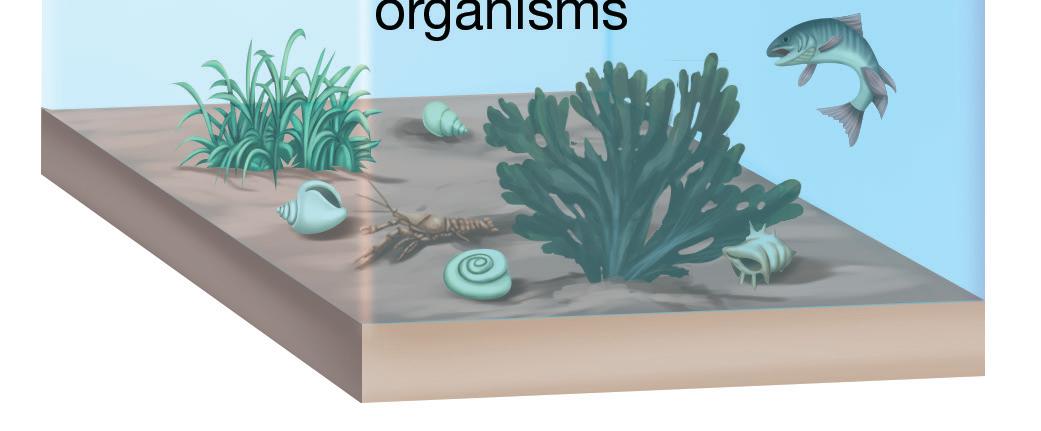
1 Most monoculture farms use chemical fertilisers, which are manufactured liquids consisting of nutrients that are sprayed on plants to increase their yield. Not all of the nutrients provided by fertilisers are absorbed by plants. The remaining nutrients leach into the soil or run off into rivers, eventually making their way into the ocean.
This is known as an algal bloom. The dramatic increase in algae upon the surface of a waterbody blocks sunlight. Some varieties of algae, such as bluegreen algae, produce toxins that are harmful to fish, humans and animals. An algal bloom can also create hypoxic zones which leads to mass fish death. As algae dies and decays, it consumes oxygen within the area. Due to the size of algal blooms, the amount of oxygen lost leads to marine dead zones forming where aquatic life cannot survive. In this way, irrigation can unintentionally impact freshwater biomes

2 The excess nutrients in the water can cause algae blooms on the ocean’s surface. These blooms block sunlight from penetrating the water and block the organisms in the ocean from absorbing oxygen. When these algae die, they fall to the bottom of the ocean and decompose.
eutrophication
excessive levels of nutrients in a lake or water body
algal bloom rapid growth of algae in water marine dead zone an area that has a reduced level of oxygen in the water that can cause organisms to die
Adequate soil moisture is needed to provide water to plant roots. Places of higher elevation cannot absorb much water, as gravity causes water to flow downhill too quickly to be absorbed. A steep topography also has very little soil for plants to grow in. This is because the fast movement of water down a steep
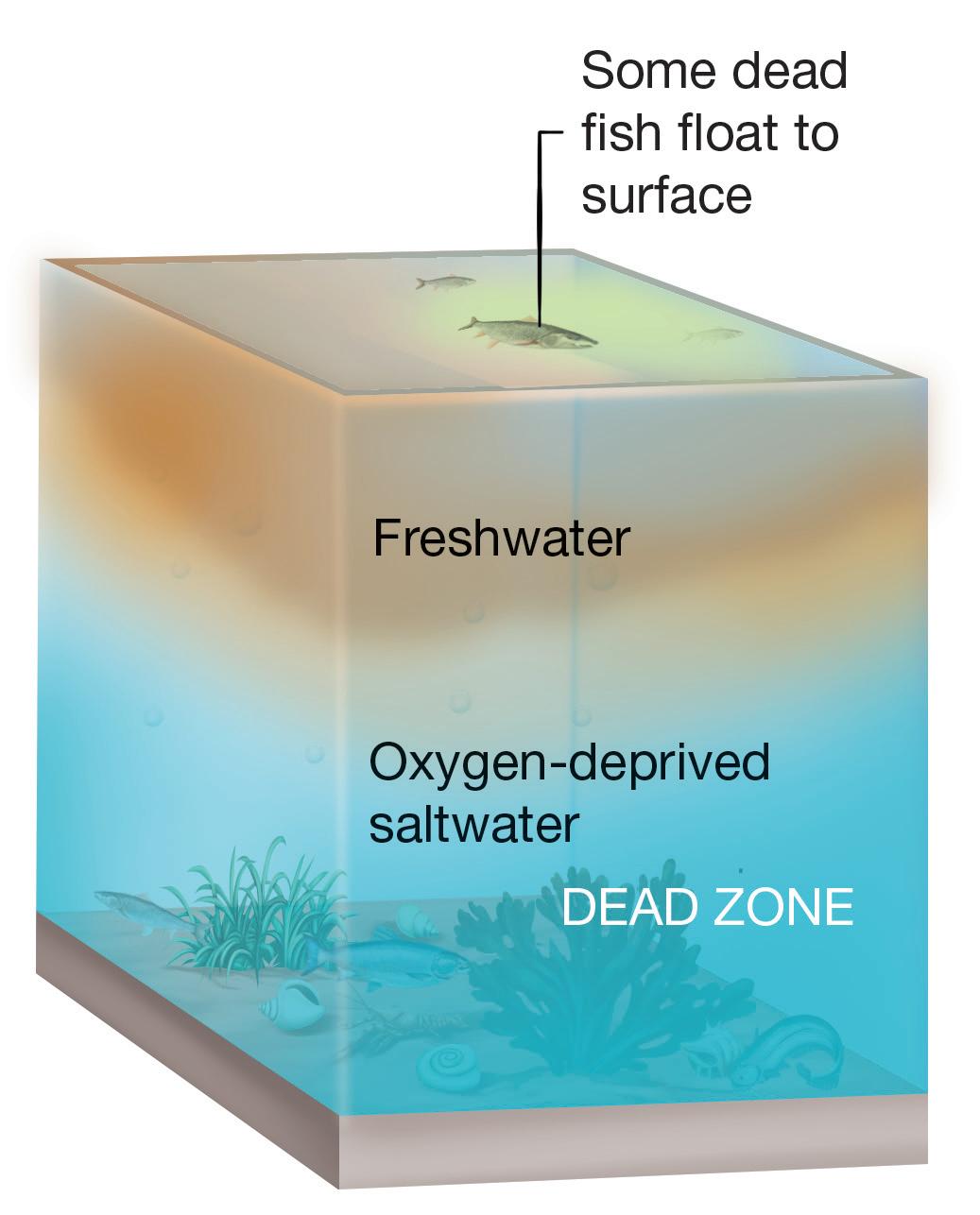
3 The decomposition process uses large amounts of oxygen, leaving very little for other organisms. When this happens on a large scale, marine dead zones are formed as very few organisms can live in places with no oxygen.
slope collects the soil and transports it downhill, leaving only bare rock on the hill or mountainside.
Despite these challenges, many regions across the world have found ways to produce crops on sloped land. In fact, the art of terracing is an old one, and was used by the Wari culture in the South American Andes over 1000 years ago for potatoes and maize (corn).
terracing sloped land that has been cut into flat platforms for farming
Terracing involves cutting a series of steps into the side of a slope, as seen in Figure 5.3.19. The steps help to slow the water as it moves downhill, improving the soil moisture content. It also slows the movement of soil. This gives plants a chance to grow their roots, which bind the soil and reduce erosion. In the high rainfall regions of South-East Asia, rice is a popular terraced crop, while in the drier Mediterranean region, terraced fields grow olives and grapes. Terracing changes the topography, flow of water and the vegetation of a natural biome.

Observe Figure 5.3.20 and 5.3.21. Geographers use maps to explore the interconnection between parts of the environment. Take the following steps to build your depth of understanding.
LEARN
1Identify the continent with the highest rice production in the world.
CONSOLIDATE
2Describe the distribution of the tropical rainforest biome.
3Explain how rice is grown.
APPLY
4 Use the DQE method to describe the spatial association between rice production and the tropical rainforest biome.
a Degree: Give a general overview of the degree of association. Is there a strong, moderate, weak or no degree of association between the two figures? That is, does the distribution pattern of each map look similar or different?
b Quantify: Provide specific evidence to demonstrate the association. Use data to identify at least three countries that fit the pattern of association.
c Exception: Identify an example or several examples of specific places that do not fit the pattern of association. Locate and name the exception. and explain why this is an exception.
Key concepts: space, place, interconnection, scale
Humans have drastically altered biomes through the use of monoculture farming. This type of farming requires large-scale vegetation clearance and drainage and irrigation. As seen in Figure 5.3.22, monoculture farms grow a single type of crop, rather than a variety of crops (polyculture farming). The reasons farmers choose to monocrop come down to simplicity; it is easier to take care of just one type of plant. The farm’s input requirements are more consistent, as the entire crop is likely to require similar amounts of water, growing conditions, methods of planting and harvesting, and pest control. However, negative impacts for the environment include a reduction in species diversity, an increased susceptibility to pests and diseases, and pollution of soils and water due to the use of chemicals.
HASS skills: analysing, evaluating

Figure 5.3.22 Working a maize field with a vibro-cultivator. Crops grow in perfectly straight rows, reflective of the machinery used on monoculture farms.
There are over 15 000 varieties of tomatoes and 7500 varieties of apples grown worldwide. However, you would be lucky to find five varieties of these fruits at a supermarket. This is because monoculture farms tend to grow crop varieties that are selectively bred for their size and shape (to look appealing to customers), as well as their ability to handle long travel distances, chemical fertilisers and pesticides. Varieties that are delicious, but delicate, risk extinction as they are being increasingly replaced by tougher varieties. This is also the case for animals. Approximately 200 livestock breeds face extinction as we have come to rely heavily on just a few select animal breeds. This lack of diversity creates more problems in the form of pest and disease resistance. Polyculture farms that grow many different plant species benefit from attracting a large diversity of insects and birds. The number of pests on these farms is kept low as they are eaten by other insects and birds in a process known as biological pest control. Because monoculture farms lack plant diversity, they do not attract a diversity of life. In fact, they may only attract a large number of one pest species due to the fact that they are so obvious in the landscape.
Disease can also spread rapidly in a monoculture farm because the plants are genetically so similar that they have similar weaknesses. The banana variety Gros Michel was a tastier, creamier version of the banana we eat today. However, it was wiped out by the Panama fungus and was replaced by Cavendish bananas, which were thought to be resistant to the fungus. Unfortunately, this was not the case. Figure 5.3.24 shows a crop of Cavendish banana trees in Queensland that were killed by a different strain of the Panama fungus called TR4.
Cavendish banana trees are clones of one another, so if one is affected on a farm, they are all at risk. Researchers are currently searching through jungles for wild banana species that can resist the Panama fungus as well as ripen in a suitable amount of time, travel long distances, be mass-produced and taste good.


Production
Analysis questions
1 Describe the difference bet ween monoculture farming and polyculture farming. List some of the benefits and challenges of each.
2 Examine Figure 5.3.25. Name three countries that already have TR4, three that are at high risk of TR4 and three that are at risk, but not high risk, of TR4.
3 Compare Figures 5.3.25 and 5.3.26. What percentage of the banana industry is at threat from the TR4 fungus? What potential impact would a spread of the TR4 fungus have on consumers?
Key concepts: place, space, environment, change
Think, pair, share
HASS skills: analysing, communicating and reflecting
Watch the video ‘The Amazon rainforest – a biome on fire’ and then consider both positive and negative impacts in your answer using the information provided. Share your thoughts with a partner and justify your opinion.
1 In what ways are other countries interconnected with Brazil and the 2019 Amazon fires?
2 Do you think countries should boycott Brazilian beef?
Key concepts: place, environment, interconnection
HASS skills: analysing, evaluating

Video: Engage and explore: the Amazon rainforest – a biome on fire ➜
5.3.27
Go online to access the interactive section review and more!
5.3 Review questions
Recall
1 Define the terms ‘deforestation’, ‘salinity’ and ‘terracing.’
2Describe the difference between indigenous species and exotic species.
3Explain how feral animals can change an environment.
4Describe the difference between monoculture farming and polyculture farming. List some of the benefits and challenges of each.
Interpret
5 Using Figure 5.3.8, identify the percentage of the area with salinity for the following locations:
a Kalgoorlie b Katherine c Broken Hill.
6Examine Figure 5.3.16 of the Murray-Darling Basin.
aIdentify two towns that you think may suffer from reduced flow of water.
bExplain why you think these towns may have reduced flows.
7 Construct a diagram to illustrate the process of salinity or eutrophication.
8Describe the spatial association between tropical rainforests and rice-growing regions using the DQE method, using Figures 5.3.20 and 5.3.21.
Argue
9 Imagine that you are an agricultural consultant to the country of Madagascar. Write a letter of advice to farmers, explaining the TR4 fungus and how to defend their banana crops from the spread of TR4 to their country.
Apply 5.3 questions
1 Create a mind map to illustrate your understanding of how humans have altered biomes and the ways these alterations are interconnected.
2 Create a tour brochure for a trip through Western Australia’s south-west, including four different towns. For each town provide: the location; the natural characteristics, such as its landforms, water bodies and wildlife; and the human characteristics of the region, such as its industries (including what type of farming occurs there and what farming methods are used) and activities available in the region.
Key concepts: place, space, environment, interconnection, change
HASS skills: questioning and researching, analysing, evaluating, communicating and reflecting
• How does climate change challenge food production in Australia and the world?
• How do competing land uses challenge food production in Australia and the world?
We have just one planet, which, along with the sun, provides everything we need to live, work and play. Not all biomes provide the prime conditions required to support all our human needs. However, our social and technological advancements have allowed us to use every continent of Earth in some way. As the human population grows, along with our desire for greater comforts, competition for the limited available land becomes tougher. We have also caused additional challenges as a result of our interactions on the planet, such as land and water degradation, a shortage of freshwater and climate change. Because geographers are always looking for solutions, we also ask: can we find a sustainable way to overcome the challenges to food production land uses?
Greenhouse gases exist in the atmosphere. Without greenhouse gases, Earth would have an average temperature of −18°C. These gases keep the planet warm by trapping some of the heat that is released from Earth to space in the atmosphere. As seen in Figure 5.4.1, extra greenhouse gases, particularly carbon dioxide and methane, are being released into the atmosphere due to human activities. These extra gases trap more heat than is needed in the atmosphere. This warms Earth excessively and changes climate patterns such as ocean currents, rainfall and the timing of seasons.
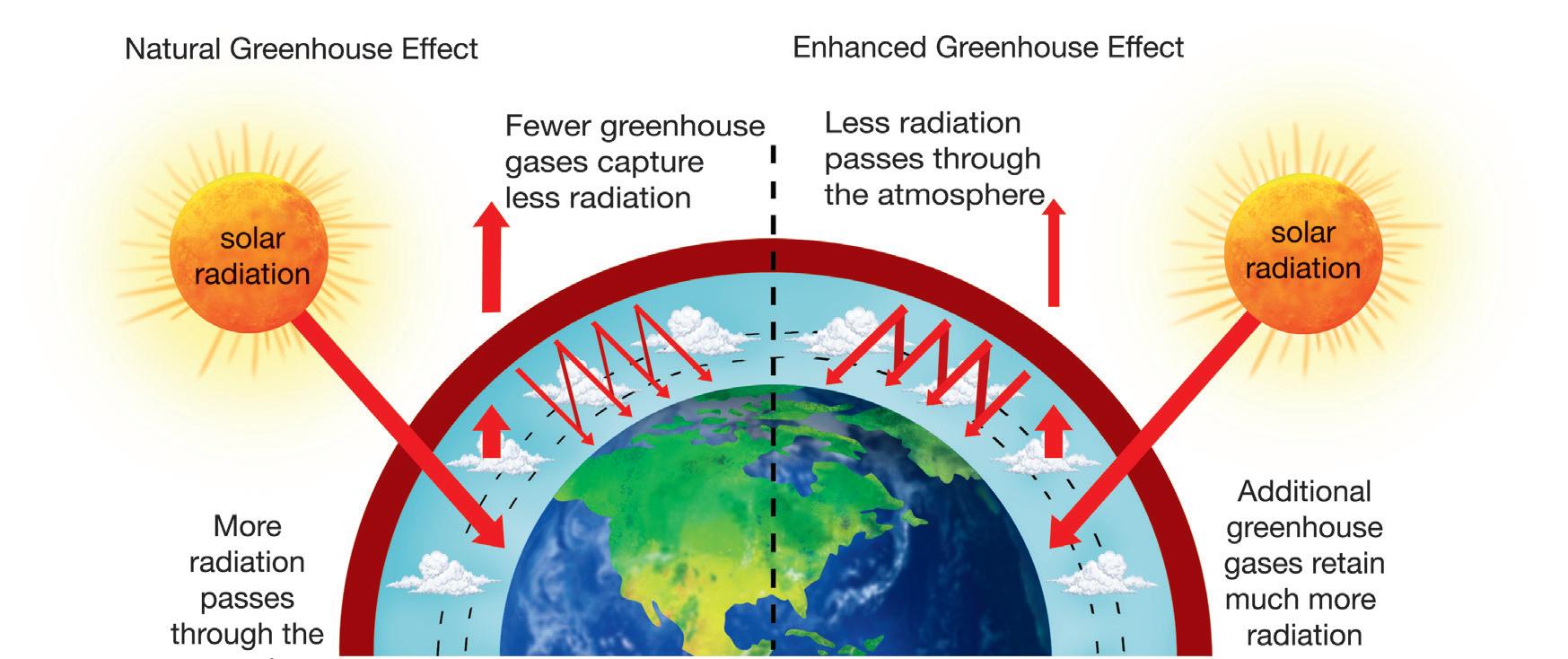
The farming of food and fibres is linked to climate change in many ways. Carbon dioxide is released into the atmosphere from the use of fossil fuels. Fossil fuels such as oil, coal and gas are used to power large agricultural machinery, transport and refrigerate food and fibre, and make pesticides. Moreover, high amounts of carbon are safely stored in carbon reserves such as forests and peatlands. When natural vegetation is cleared for the expansion of crops, this carbon is released from the plants and soil into the atmosphere.
Methane is also released into the atmosphere during the production of food and fibre. Cows are often seen as the cause of this, as one cow releases 100 kg of methane a year, mostly through burping. Although farming livestock creates approximately 40 per cent of annual methane emissions, other activities also play a role. When oil is extracted and transported to be used for farming, methane leaks from pumps, pipelines and wells. The way we package our food and fibres influences emission rates too, as plastic shopping bags also emit methane.
Observe Figure 5.4.2. Are most emissions occurring at the farm or after the product has left the farm? Is there an
Product emissions after leaving the farm (includes processing, transport, retail, cooking and waste disposal) Production emissions (includes all emissions before product leaves the farm)
5.4.2
As Figure 5.4.3 demonstrates, climate change will not impact regions equally. Nor will all the short-term impacts be negative. For instance, a 1°C to 3°C temperature rise might benefit some
crop yields in temperate regions but will create too much stress for cereal crops in tropical and seasonally dry regions. Regions dominated by permafrost, such as Russia, will gain more arable land as it thaws.
Despite some potential benefits, it is largely agreed that the threats to food security from a 1°C to 3°C increase outweigh the benefits – for example, through increases in bushfire risks that can harm crops and livestock. Any temperature increase above 3°C is expected to cause widespread negative consequences across the globe.
Plants and animals can cope with small changes in climate conditions, such as rainfall, soil moisture and temperature. However, each species has its own tolerance levels, and when these are exceeded, quality and yield decline, and diseases spread. Yield reduction was seen
during the European heatwave of 2018, which created the worst crop losses since World War II. The milk yield of a dairy cow can be reduced by up to 40 per cent in extreme heatwave conditions. In 2023, the United States experienced over $21 billion in crop losses due to extreme weather. Texas, the hardest hit, saw $4.8 billion in damage to cotton, forage and wheat crops due to drought.

In addition to declining yield, food quality is compromised. Approximately 70 per cent of Australia’s wine regions may experience a diminished quality of red wines in warm areas due to earlier ripening. Both yield and quality can be further reduced through the spread of disease. For example, in our waters, heat decreases oxygen levels and increases algae blooms, leading to diseases among aquatic life such as bass and salmon.
Rising temperatures affect the water cycle and lead to more extreme weather events. More water evaporates from the land to be
stored in the atmosphere. The air therefore becomes wetter while land surfaces become drier for longer periods, causing more bushfires and drought. When it does finally rain, storms and floods are more common.
In regions reliant on irrigated farming, such as the rice-growing fields along the Murrumbidgee River, increased evaporation threatens the irrigated water supply as there is less surface water available to divert to farms. Rainfed agricultural regions, such as subSaharan Africa, are also at a high risk of food insecurity due to less rainfall in those regions.
5.4.5 The changes in mean temperature from 1970 to 2023. Predict the temperature change that your region will experience by 2100. Justify your prediction by referring to the map
5.4.6 The changes in total rainfall from 1970 to 2023. Predict the rainfall change that your area will experience by 2100. Justify your prediction by referring to the map


The East Australian Current (EAC) typically runs from the Great Barrier Reef along the Australian coast to Sydney. However, an increase in atmospheric carbon dioxide has strengthened a climate system known as the Antarctic Oscillation. This has changed wind patterns to push the EAC 350 km southward over the last 50 years. These southward bursts of warm waters benefit some Tasmanian fishermen, who now have a longer season to fish tuna and striped marlin. However, the warming of cold-water biomes can come at a cost to the food chain, which includes humans. Cold-water fish from the Tasman Sea provide a better source of omega-3 fatty acids for our brain health than warmwater fish.




The uneven distribution of climate change has the potential to change trading relationships between countries. For example, Australia currently earns $9.87 billion a year from exporting wheat. However, the predicted reduction in rainfall in the cereal regions within Western Australia, South Australia and Victoria may make Australia reliant on wheat imports. Regions that rely on imports become economically vulnerable as they are forced to pay what other countries charge for their produce. Prices are expected to increase as water, land and fuel become scarcer and more valuable.
Almost a third of the world’s workers work in agriculture. Some regions, such as sub-Saharan Africa, have a far greater percentage of workers who rely on agriculture for their jobs and livelihood.














































Figure 5.4.7 The Antarctic Oscillation is also known as the Southern Annular Mode, and is a climate driver for Australia, influencing the country’s weather conditions.





























































food supply chain the process of getting food from the farm to the plate
Climate change not only limits their access to food but also limits their ability to make a living. The rural poor in these regions will therefore become particularly vulnerable to climate change.
There is concern that the current divide between rich and poor may increase. People who are already poor will be unable to afford the increasing cost of
Case study 5.5
food. They are then forced to reduce the amount or quality of food they eat and will not get the nutrition that they need to live a healthy and active life. Even those who are not poor will still suffer from reduced nutrition. This is because many plants that are grown in an atmosphere with high carbon dioxide levels have less protein and minerals. Hunger and lack of nutrition can affect society in many ways, from increasing poor health, decreasing ability to learn and concentrate, and conflict.
The average household has about three to five days’ worth of food, while our supermarkets store just a few weeks of food. This is because Australia’s food supply chains are mostly supplied on a just-in-time basis. This allows us to have fresh food, but also means that we only have about 30 days’ worth of non-perishable food and three to five days of perishable food in the supply chain.
Extreme weather events are predicted to increase due to climate change. This will increase the number and degree of food emergencies. Though our food supply systems can handle some emergencies, Australia is underprepared for major emergencies.
This fact was sadly realised during the 2010–11 Queensland floods. Towns such as Rockhampton were cut off by road, rail and air for two weeks. People flocked to food outlets to stock up on food and Brisbane was just one day away from running out of bread. Fortunately, food was eventually brought into towns via Sydney and Melbourne through west Queensland. However, if a second disaster were to have occurred during that time, such as a bushfire anywhere between Melbourne and Queensland, there would not have been an opportunity to restock.
In 2022, heavy rainfall in New South Wales caused rivers to overflow and large areas of land to flood. Farmers in northern NSW suffered crop losses as torrential rain drowned soybean, rice, sugarcane and macadamia plantations. The ability to transport livestock to market or ensure they had adequate feed was disrupted. Flooding caused major road closures which disrupted supply chains. Consumers saw the impacts as fresh produce shelves emptied in stores.
Analysis questions
1 Define ‘food supply chain.’
2Explain how extreme weather events can disrupt food supplies.
3Propose how Australia could overcome disruptions to food supply chains.
Key concepts: environment, sustainability

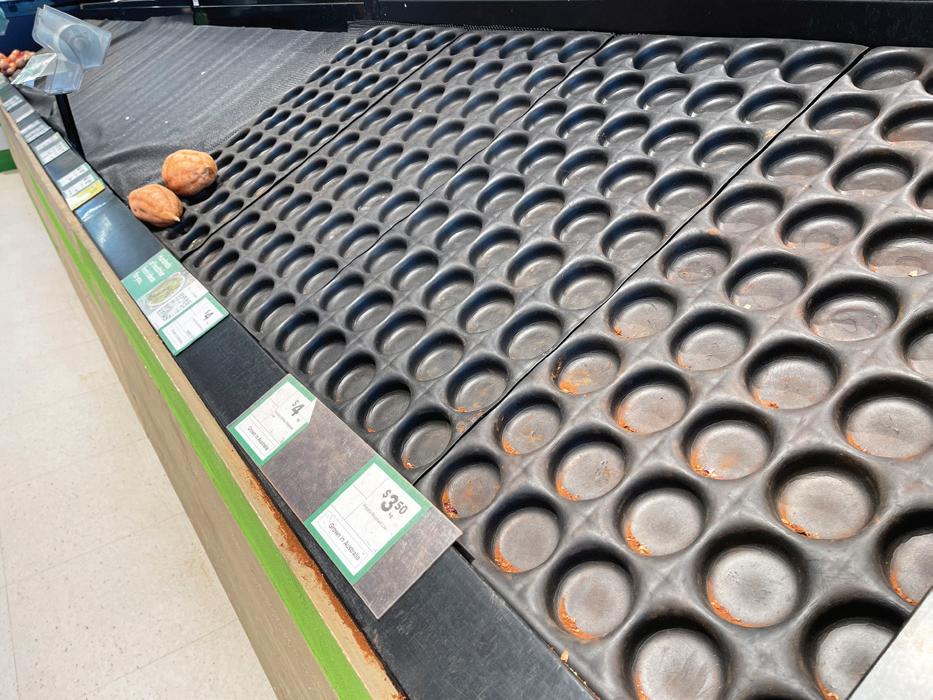
HASS skills: analysing, communicating and reflecting
Create a table showing the impacts of climate change on food production and supply. The following table can be used as a model.
Environmental changes Impacts
Temperature increase
Changes the timing of when crops are able to be grown, may mean some crops are unable to be grown at all.
Reduced precipitation and soil moistureReduced crop yield
Movement of currents
OR
Changes in the East Australian Current have increased the season to fish tuna and striped marlin.
Create a table summarising two economic, social and environmental impacts of climate change.
Key concepts: change, sustainability
Humans in different places around the world have different ideas about how land should be used. This leads to competing land uses. In some parts of the world, large populations mean that people want to use the land for urban development rather than agriculture. In other parts of the world, armed conflict means that land
HASS skills: questioning and researching, communicating and reflecting
is not used productively and people in these areas can suffer food insecurity. Another key challenge to food production is competition for agricultural space, where people want to grow different types of crops.
Figure 5.4.10 graphs the current use of agricultural land, while Figure 5.4.11 shows how much land is required by various food types to produce a gram of protein.
Food
Figure 5.4.10 Surface area of land used for food production
Source: Hannah Ritchie and Maz Roser, ‘Land Use’, Our World in Data website, 2019
Global agricultural land use by major crop type, 2023
Global land area used for agricultural production, by major crop category, measured in hectares.
Data source: Food and Agriculture Organization of the United Nations (2025) OurWorldinData.org/land-use | CC BY Figure 5.4.11 Total surface area used for production of a given crop
Source: Our World in Data website, processed from Food and Agriculture Organisation (FAO) data, 2022
Competition between crops can lead to food insecurity when market forces encourage farmers to grow non-food crops. This was the case in Mexico in 2007, when the price of corn became too expensive for
Developing geographic concepts and skills 5.4
Applying the concept of process by drawing a flowchart
Watch the video ‘The Hidden Costs of Turning Food into Fuel’ on the National Geographic website.
Arrange the following facts in order to create a flowchart. Illustrate your flowchart with drawings, symbols or pictures that relate to each step in the process.
• Once this happened, Mexico increased the amount of corn it imported from the United States from 8 per cent to over 30 per cent. This made Mexicans reliant on the United States for their food security. The Mexican Government made this decision as corn imports were cheap.
• The Mexican Government was forced to limit prices to 8.5 pesos (77 US cents) per kilogram to ensure that people could afford food. Some suppliers ignored the agreement because it was not legally binding.
• This may not be the end of the story, as biodiesel demand continues to increase.
• In 2007, the United States increased its sales of biodiesel to Europe at a good price for use in cars and trucks.
• In 1994, the North American Free Trade Agreement allowed free trade to occur between Mexico and the United States.
• This drove the prices of US corn up, as the United States could make more money using its corn for biodiesel production.
• Many Mexicans could not afford the rising cost of tortillas, pushing them towards increasing levels of food insecurity.
• Food insecurity can result in political instability, as people become desperate from hunger or the fear of hunger. In this case, Mexicans started riots to protect the price of tortillas.
• In 2007, the increase in corn prices made tortillas expensive, as these are made from corn.
many Mexicans to buy, leading to the ‘tortilla riots’. To understand the process that led to these riots, complete the flowchart activity in the Developing geographic concepts and skills 5.4 box. Key concepts: environment, interconnection, change
HASS skills: questioning and researching, communicating and reflecting
The best cropland is often the same land where people want to live and play. This is not an accident. Civilisations were able to settle permanently in areas that have fertile soil and consistent water supplies. Therefore, there is often a strong interconnection between areas of high population and fertile land. While much of this land has already been turned into cities and townships, the best remaining land for crop production is often found in regions that border cities, called periurban regions.
Urban settlements are human-built environments with large populations such as cities, towns and suburbs. Many people choose to live in urban settlements owing to the easy access to the things they need and enjoy. These include schools, health centres, cultural activities, social services, transportation and jobs. The social and cultural diversity also allows people to enrich their lives by interacting with many types of people, giving them a feeling of belonging to a community.
As urban settlements grow, the surrounding land that was once used for agriculture becomes threatened. For example, Guangzhou was once a small village near the Pearl River Delta in China. The rich soils made it a good place to practise farming for centuries. When the government decided to urbanise the region, the city expanded rapidly to merge with nearby cities to create the Pearl River Delta Economic Zone, which is now home to approximately 73 million people. The enormous population is largely thanks to the economic benefits that this region offers, as there is a high demand for workers and booming industries. However, farmers were forced to leave their homes and way of life behind.
‘Less than a decade ago, it was just a village. Then the cranes came … They swallowed the farms and villages of our neighbours. We’ve been offered a new place to live, but it won’t replace what we have here.’
– A Chinese farmer reflects on the changes happening to his village due to urban expansion.1
1 To find out more about urbanisation and farmland in China, see ‘Life on the Forgotten Farms of Guangzhou’ at https://cambridge.edu.au/redirect/11239.
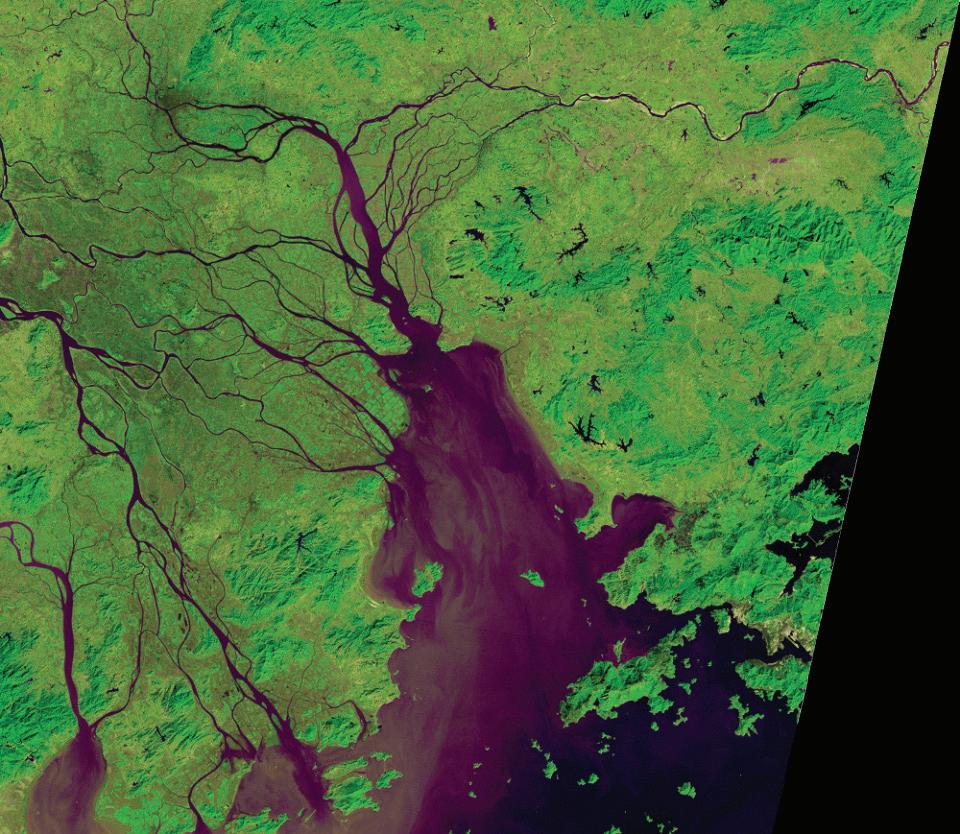
Source: Earth Resources Obser vation and Science

changes
project (verb) estimate what will happen in the future based on what has happened in the past
The population in Western Australia has grown steadily since 1961. Many new settlers have arrived as a result of migration from overseas and interstate. Greater Perth has attracted most migrants, but regional centres, including the Pilbara, Peel and Kimberley regions, also have significant rates of growth. Future projections suggest that the Western Australian population may rise to 5.6 million by 2056. This will be an additional 2.7 million people.
Increasing numbers of people will drive up the demand for food. To meet this need, additional use of arable land and water will be required. At the same time, as the population grows, the demand for land for housing also increases. For example, in Greater Perth alone, an estimated 800 000 additional homes will be required to meet the needs of the anticipated population growth by 2050. To feed the people of Western Australia, studies suggest that a population growth
of 2–3 per cent per year will lead to an annual increase of 3–5 per cent in agricultural production levels.
Since the Western Australian population is predicted to double by 2050, and because there are complicating factors like climate change and groundwater depletion, the future food security of the state will be affected. In 2016, the Western Australian agricultural sector set a goal of doubling in value by 2025.
While climate change is not expected to prevent short-term food security in the state, the future may be more challenging. For example, by 2100, the average temperature is projected to be up to 1.1–2.7°C warmer in Western Australia, and rainfall will decline by 12 per cent in the south-west region. Failing rainfall makes irrigation difficult, and also has a negative effect on groundwater being renewed – lower volume of rain means less water reaches the underground aquifers through saturation of the soil.
Source: Department
Additionally, extreme weather is expected to increase. For example, in metro Perth, the number of days in a year with temperatures over 35°C (known as ‘extreme heat days’) is predicted to increase from 28 (1971–2000 average) to 36 in 2030 and may be up to 63 by 2090.
Drought conditions are also expected to increase by up to 20 per cent across Australia by 2030, and in the south-west of Western Australia by up to 80 per cent by 2070. Studies suggest that drought will affect twice as much of southern Western Australia, twice as often as it currently does, by 2030.
To put this into perspective, under climate change, forage production (e.g. grasses, legumes) for pasture and livestock productivity may be reduced by up to 10 per cent over agricultural areas and by 10–20 per cent over the
rest of the state. Wheat production (WA’s largest agricultural product by dollar value) yields tend to decline by 0.53 per cent for every 1 per cent decline in rainfall, and by 4.9 per cent for every 1°C increase in temperature.
When we combine all these forecasted changes in temperature and rainfall with projected increases in more extreme heat days, and the increased duration and frequency of drought, as well as potential productivity declines, food security in Western Australia may well be severely challenged in the future.
1 Biosecurity risks are increasing due to climate change, global travel and imports, which contribute to more frequent incursions of pest and disease.
10 Increasing vessel traffic, ocean temperatures and acidification may impact the viability of aquaculture and fisheries.
9 Food waste is high, while expectations for high-quality, low-priced produce exacerbates food loss throughout the supply chain.
8 Agricultural exports contribute to economic growth, while also increasing the demand on our finite natural resources.
7 Declining rainfall and demand-driven groundwater depletion are adversely impacting on our capacity to keep producing enough food.
All of these changes in climate are forecasted to take place at the same time as the population doubles. A great deal of forward planning clearly needs to take place if we are to maintain food security in Western Australia. Factors impacting on our capacity to remain food secure in WA
2 Increasing temperature, more extreme, frequent and unseasonal weather events are progressively impacting on farming viability and productive capacity.
3 Competition in land use (particularly on the Swan Coastal Plain) is reducing access to the arable land (and water) we need to keep producing food near Perth.
4 Our population is projected to double by 2050, and will challenge our capacity to keep producing enough food.
6 Throughout the south-west, land management practices have contributed towards more than 14 million hectares of farmland being acidic or at high risk, adding to production costs and longer-term sustainability concerns.
5 Dryland salinity is increasing in WA (particularly in the south-west), with up to 4.5 million hectares of farmland being either unproductive, degraded or under threat.

See, think, wonder
Observe Figure 5.4.15 and answer the following questions:
1 What do you see?
• What different types of food are produced in W.A.?
• Where are these foods grown?
2 What do you think about that?
• What connections do you notice between food production and location?
• Do any regions specialise in specific foods?
3 What does it make you wonder?
• What further questions do you want to ask about this map?
• How might climate change impact this map in the future?
Key concepts: place
HASS skills: questioning and researching, analysing
Applying the concept of change
To describe the changes of a phenomenon, it may be useful to use the LQDE (Location, Quantify, Description, Exception) method as a guide. This method can help you describe the changes you see in detail, including not only describing the type of change that you see, but identifying where and how the changes are occurring and the extent of the impact. The following is an example guide to using the LQDE method:
1 Location of the change
2 Quantify
a Include dates and times where possible
b Describe the distribution of change by using distance, area, direction, amount of change. Example: How many paddocks, houses or streets have been involved in the change?
3 Description of the change
a What do you see before, during and after the change?
b If possible, explain the process of change.
4 Exception: For example, is there an area where change has not occurred or has occurred in a different pattern or time frame?
Describe the change you see in the Pearl River Delta (Figure 5.4.12), Guangdong province, China, using the LQDE method.
Alternatively, you can also use Google Earth search bar to find Guangzhou. Click the historical imagery icon at the top of your screen. A slider will appear. Use the slider to see change in Guangzhou over time.
Explore a Western Australian location to apply the LQDE method again. For example, the location of Byford in the southern boundary of Perth Metropolitan Area has undergone rapid changes between 2000 and today.

Key concepts: change
Can we find a sustainable balance between competing land uses?
In this topic, we have examined some of the ways that land is used. We have seen how tensions can occur between different interest groups as humans struggle to support their needs and the needs of
all living beings in a sustainable way. However, there are positive examples around the world where these tensions are overcome by clever thinking, planning and cooperation. A key role for geographers is to examine these positive examples so that they can be used in other places around the world. Case study 5.6 is one of these examples.
Sole Food Street Farm is located in Downtown Vancouver, Canada. It is the poorest part of the city, known for having some of the highest rates of HIV, hepatitis C, drug-related deaths and prostitution per capita in the North American continent. Sole (Save Our Living Environment) Food Street Farm was started in 2009 by Michael Ableman and Seann Dory.
Its aims were to:
• provide local people who have drug addictions or ongoing mental health problems the opportunity to earn money by growing something beautiful that others need
• provide high-quality produce on an agricultural scale
• prove that such a project could operate sustainably.
‘The ultimate goal of farming is not the growing of crops, but the cultivation of human beings’
• How to grow food safely on land that had been contaminated from past land use. To overcome this, food is grown in containers, which are expensive at $13 per container.
• Land in the city is far more expensive than rural land.
• Getting approval, as the council had never had to deal with urban agriculture before, so the existing rules and regulations didn’t fit their type of development.
• Employing people with such personal challenges makes the farm less economically competitive than a usual farm. The work took two to three times longer to complete than on a typical farm, as sometimes workers would not turn up.
• When the project grew to include more sites, some of the workers who relied on the nurturing of the small team environment left the job.
• Vandalism and pests. In 2013, about $20 000 was lost due to rodents.
• The farm can generate $300 000 in a year; however, costs are approximately $500 000 per year. The remaining money needs to be fundraised annually. While this seems like a lot of debt, approximately $46 million a day of taxpayer’s money is used in the United States to support the farming industry to make food affordable.
• For every $1 spent on an employee, $1.70 is saved from the prison and legal system, healthcare, social assistance networks and the environment through carbon sequestration and energy and transport benefits of local farming.
• It helps to counter the environmental degradation that occurs as 20 hectares of prime agricultural land is paved over and developed every hour in North America.
• The model is flexible. Growing in containers means that the farm can be moved elsewhere.
• This project gives wealthy landlords an opportunity to help their city by offering their land for cheap rent ($1 a year in some cases) while also improving their corporate image.
• Benefits for landlords include tax relief benefits of up to 90 per cent. The farms make the neighbourhood look more beautiful, which improves the economic value of nearby buildings (which are sometimes owned by the same landlord).
• The project looks good for the city of Vancouver too. Vancouver aims to be one of the greenest cities in the world. Urban agriculture became a part of the city’s Greenest City goals and Healthy Cities program.
• The food is sold at farmers’ markets, local restaurants and retail outlets, reducing food miles and creating positive connections between people in the community.

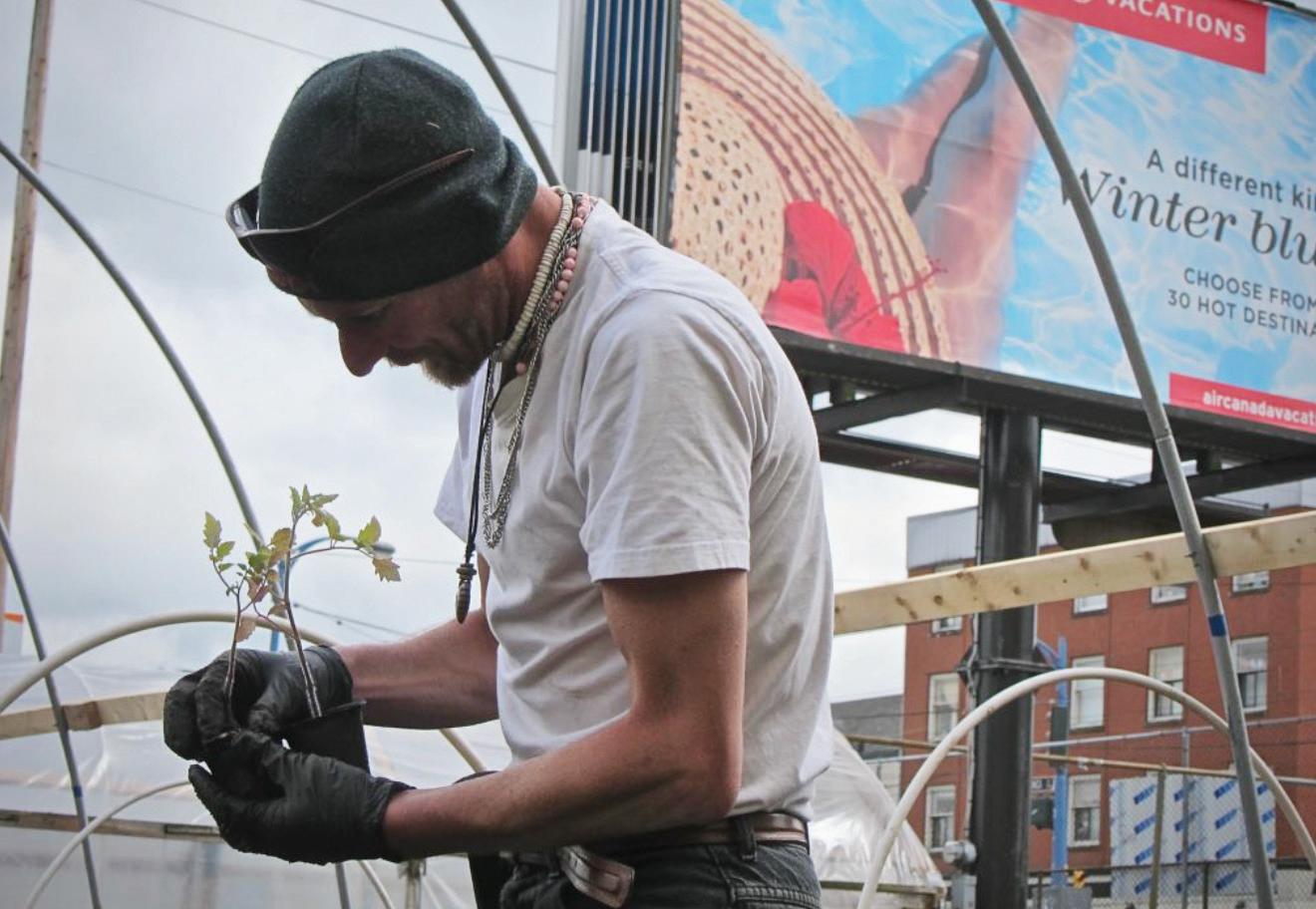
He’s been stabbed, held up at gunpoint, wanted by police; he’s known most drugs. He’s suffered bicycle accidents, illnesses, imprisonment. He’s faced years of rehab.
Kenny says ‘I come to work feeling miserable and leave feeling relief and hope. If it wasn’t for my job, I would be sitting in a basement not caring about anything.’
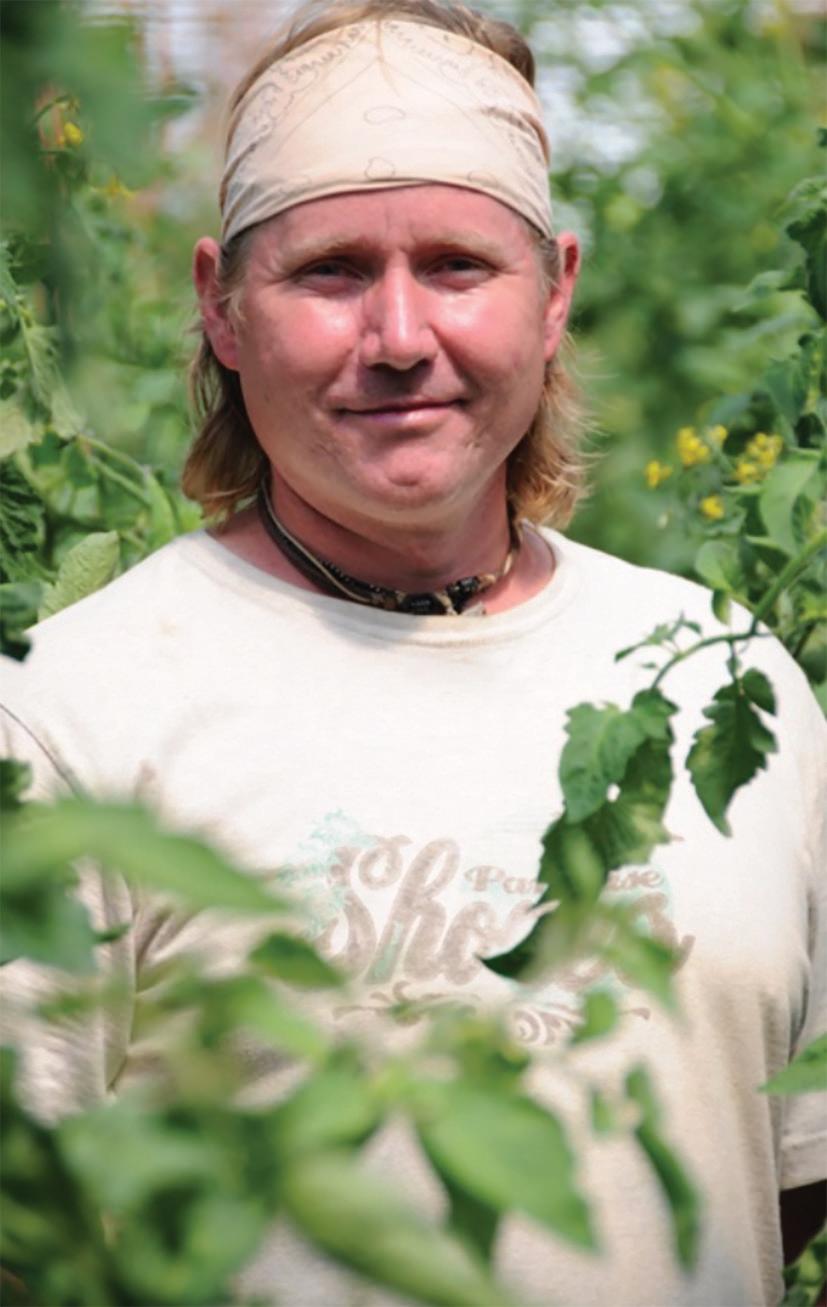

1 Explain the significance of the name ‘Sole Food Street Farm’ in your own opinion.
2 Describe how Sole Food Street Farm is both economically and socially sustainable.
3 Explain how Sole Food Street Farm provides an example of a smart solution to the problem of competing land uses.
Key concepts: change
HASS skills: questioning and researching, analysing
Fieldwork lies at the heart of Geography studies. It allows you to investigate many of the concepts studied in the classroom while in the real world.
Fieldwork is a fun process that involves:
• developing a background understanding of an issue
• creating a research question to explore the issue in the real world
• hypothesising an answer to your question
• conducting research
Fieldwork 5.1
• analysing the results of your research to test your hypothesis
• evaluating what you have learnt, what worked and didn’t work during the fieldwork process, and considering any further questions that you now have.
To investigate the ideas studied in this chapter, you may wish to conduct fieldwork at a farm in your local or regional area. The following is an example of the fieldwork process.
This includes providing an introduction to the topic and creating a research question and hypothesis.
Introduction
Additional content available: Fieldwork template
Introduce your study by providing some context. Write a 100-word paragraph introducing your chosen farm. Ensure that your paragraph addresses the following:
1 Name and locate your chosen farm using absolute and relative location, and include a map.
2Describe its regional context. What region is it in? Use Google Earth and further research to explore the surrounding region. Are there many other farms in this region? What food is typically grown in this region?
3 In which biome is your chosen farm located?
4 Is this biome suitable for food production? Justify your answer.
5 Research your chosen farm using Google Earth, the farm website or social media posts. Describe the type of produce that is grown or raised on your chosen farm.
Research question
Write a research question that you intend to answer by using the data that you collect. For example: What are the present and future challenges to food-producing farms, and how are these challenges being met and prepared for on your chosen farm? More specific sub-questions could include:
1 How is the issue of species diversity loss being addressed at this farm?
2 How is climate change impacting this farm?
3 What is this farm doing to reduce the impacts of climate change?
4 How has soil degradation impacted this farm?
5 How is this farm addressing the issue of soil degradation?
6 What methods is this farm using to increase its yield?
Hypothesis
Write a clear and concise hypothesis that you can test by collecting primary data. It should relate to your research question. The table below is an outline of potential challenges that you could investigate based on the research questions on the previous page. Using the background knowledge that you have gained throughout the course of this chapter, create a hypothesis relating to your chosen challenge that you could test at the farm.
Collecting secondary data
Secondary data refers to information that can be found from sources such as satellite imagery from Google Earth, council documents and websites. Secondary data is not specifically created to answer your fieldwork question; however, the information can still help you answer your question and provide valuable knowledge about the geographic characteristics of your chosen location.
Farming challengeHypothesis
Primary data collection
Primary data is collected first-hand, during fieldwork. Unlike secondary data, primary data is aimed to specifically help answer your fieldwork question. Consider the types of primary data and equipment that you will need to test your hypothesis and answer your research question. Examples include field sketches, photographs, tallying information such as how many types of crops are grown, testing soil structure/moisture/microbial life, and interviews with the farmer.
Presenting and analysing your data
1 Describe the nature of the challenge you are researching and outline your hypothesis.
2 Summarise your data using tables and graphs where possible.
3 Explain how your chosen farm is meeting or preparing for this challenge by analysing your research results (that is, explaining what your data is showing).
4 State to what extent your hypothesis has been supported or disproved.
Conclusion and evaluation
Summarise your findings and evaluate the success of the field trip. What were the strengths and weaknesses of your data collection methods? What could be done differently next time? What additional data could be collected to gain a better understanding of the issue?
Reflecting on the fieldwork
1 I really liked …
2 I would have preferred it if …
3 The most interesting discovery I made was …
4 Something else I would like to mention (or a question I have) is …
References
Ensure that you include all the sources that you used in a bibliography.
5.4 Review questions
Recall
1 Define climate change.
2Describe the causes of climate change.
3Explain how climate change will disrupt food supply chains.
4 Define the term ‘urban settlement’ and give two reasons why people choose to live in urban environments.
Interpret
5 Refer to Figure 5.4.3. Describe the projected changes to agricultural yield in Australia.
6 Refer to Figure 5.4.13. Describe the predicted change in average spring rainfall for the southwest of Western Australia.
7 Refer to Figure 5.4.14. Make a note of which factors identified are related to trade, which are connected to farming and which are attributable to population increase. Now list these in order of which you think are the biggest threats to food security in Western Australia.
8Describe the interconnection between fertile land and urban settlements.
9Explain how competition for land use between crops can lead to food insecurity.
Argue

10 A vegetarian diet supports a more sustainable use of land than an omnivore diet. To what extent do you agree? Use the evidence in Figures 5.4.10 and 5.4.11 to support your answer.
11 What do you think Masanobu Fukuoka means when he says: ‘The ultimate goal of farming is not the growing of crops, but the cultivation of human beings’?
Apply 5.4 questions
1 Look up ‘CBC News Interviews Street Farm Co-founder and Author Michael Ableman’ on Vimeo. Using the information provided in the text and in the video, discuss in groups the ways that Sole Food Street Farm is or is not sustainable. Then copy and complete the table below. Use these factors to evaluate how successful you think the Sole Food Street Farm is as a sustainable farm.
2Evaluate the success of Sole Food Street Farm using the criterion of sustainability.
Key concepts: place, sustainability HASS skills: analysing, evaluating, communicating and reflecting
• What is food security?
According to the Food and Agriculture Organisation of the United Nations, food security is achieved ‘when all people at all times have physical, social and economic access to sufficient, safe, nutritious food that meets their dietary needs and food preferences for an active and healthy life.’ In short, food security is when food is physically available, and people have the resources and opportunity to gain reliable access to it.
When we examine food security on a global scale, as in Figure 5.5.1, the concentration and distribution of food insecurity varies greatly between most regions of the world. The region of Africa has the greatest proportion of its population living with food insecurity, but the highest number of people living with food insecurity are found in the Asian region.
Figure 5.5.1 The concentration and distribution of food insecurity by severity in 2023
Source: The State of Food Security and Nutrition in the World report 2024, United Nations. [Accessed on 24 July 2024]. https://www.fao.org/faostat/en/#data/FS.
One of the consequences of food insecurity is undernourishment. Not having access to sufficient, safe and nutritious food impacts the ability of the body to develop. Long-term undernourishment in children causes stunting and a weakened immune system. As Table 5.5.1 shows, we find that people born in some regions of
the world have a higher risk of being undernourished. However, working out who has access to nutritious food is not a simple task. There can be people living in food-secure countries (such as Australia) who go hungry. Conversely, there are people in food-insecure countries (such as Zambia) who have no problem accessing food.
undernourishment when a person does not eat enough to maintain good health stunting impaired growth or development, often relating to height
Latin America and the Caribbean
Table 5.5.1 Number of undernourished people between 2005 and 2023 in select regions
Source: The State of Food Security and Nutrition in the World report 2024, United Nations
Developing geographic concepts and skills 5.6
Representing data in a line graph
Simple line graphs provide an effective way to show change over time. The graph here is an example of a line graph showing population change over time for Australia.
Population of Australia
20
5
Source: Australian Bureau of Statistics, Historical population 2021
Create a line graph that shows the number of undernourished people between 2005 and 2023.
Instructions
To construct a line graph, follow these steps:
1 Draw a horizontal line. On the far left of the line, draw a vertical line upwards. The horizontal axis is called the ‘x -axis’. The vertical axis is called the ‘y -axis’. The point where the x -axis and y -axis intersect is called ‘the origin’.
peri-urban areas places located on the outskirts of a city where there is a transition from urban to rural land uses
2 Mark in 5 points along the horizontal axis, spaced every 2 cm and write in the progression of years available.
3 Mark in 8 points along the vertical axis. These points should be equal in scale, such as 1 cm representing 50 million increments. Leave the first point (the origin) blank.
4 Neatly label each axis and give the graph a title.
5 For each region separately, plot the value on the graph by creating a dot where the population data meets the year.
6 When all the data have been marked on the graph, join the points with a continuous hand-drawn curve. Use a different colour and a key to make your graph more readable.
7 Now stand back and examine your line graph. What does it tell you about the number of undernourished people between 2005 and 2023?
Key concepts: place, space, scale, change
HASS skills: analysing, evaluating
Where you live within a country can also determine the level of risk for food insecurity. As seen in Figure 5.5.2, the occurrence of food insecurity is higher in rural and peri-urban areas than urban areas. Distance from markets, poor road networks, and higher food costs are some of the challenges that rural areas face when trying to access food.
Source: The State of Food Security and Nutrition in the World report 2024, United Nations ➜
Figure 5.5.2 The percentage of severe and moderate food insecurity, by world regions in 2023
The HungerMap LIVE is a tool created by the World Food Programme (WFP) to track food insecurity in real time across different countries. This platform is an example of how technologies such as GIS, remote sensing, satellite data and machine learning can represent information in near real-time.
Visit the platform at https://cambridge.edu.au/redirect/11240 and select the ‘Current Food Consumption’ category. Observe the map and complete the following:
• Describe the spatial pattern of locations of at the highest risk of insufficient food consumption.
• Select one location country and examine its food security status. Compare this country’s situation to its neighbours, its continent, and the globe.
Key concepts: place, space, scale
The geographic concept of scale focuses on the way that we look at different phenomena at different spatial levels. Looking at things on a small-scale
HASS skills: questioning and research, analysing
map can give us the big overall picture. Looking at large-scale maps can help us see more specific detail and understand an issue in more depth. To understand the distribution of food security more closely, we need to use a larger, more specific scale.
How does a smaller-scale map show the bigger picture? Confusing, isn’t it? A good way to remember is to think that the bigger an object looks on the map, the bigger the scale of the map. Amazing but
Figure 5.5.3 is a choropleth map of food insecurity in the United States on a state and regional scale. The United States is identified as having a low risk of undernourishment in comparison to other nations. Taking a closer look using Figure 5.5.3, we discover that there are in fact many US residents who have a much higher risk of being undernourished and experiencing food insecurity.

Figure 5.5.3 A choropleth map uses different shades of the same colour or different colours to identify the different data sets. In this case, it represents different food insecurity rates in the US.
Food security segments in Metropolitan Western Australia
Highly food secure Marginally food secure Moderately food insecure Severely food insecure
Food security segments in Regional Western Australia
Highly food secure Marginally food secure Moderately food insecure Severely food insecure
Figure 5.5.4 Food security segments in Western Australia. In 2024, Foodbank found that more than one in five West Australians (21 per cent) have been in a situation where they have run out of food and been unable to buy more.
Source: Foodbank Hunger Report 2024, Foodbank Australia
Developing geographic concepts and skills 5.7
Reading scatter graphs to understand the association between phenomena
Scatter graphs are a tool that geographers can use to examine whether or not there is an association between two phenomena. For example, we can use a scatter graph to examine whether there is a possible association between how much sunlight a tomato plant gets and how many tomatoes plants produce.
Tomato experiment: postive relationship
To read a scatter graph, either draw or imagine a line running through the middle of all the data that has been plotted on the graph. This is called your ‘line of best fit’.
• A strong correlation is when the points sit close to the line of best fit.
• A weak correlation is when the points sit far from the line of best fit.
• A positive correlation is when an increase of the x-axis’s phenomena is matched by an increase in the y-axis’s phenomena. (The line of best fit goes from the bottom left to the top right.)
• A negative correlation is when an increase of the x-axis’s phenomena is matched by a decrease in the y-axis’s phenomena. (The line of best fit goes from the top left to the bottom right.)
Though a strong correlation may suggest that there is a relationship between two phenomena, ensure that you do not use the word ‘cause’ when describing the relationship. This is because a correlation does not necessarily mean that one phenomenon causes changes in another phenomenon. There are often additional factors that may also influence the relationship.
Using Figure 5.5.6, describe the relationship between gross domestic product (GDP) per capita and the percentage of the workforce employed in agriculture.
GDP and employment in agriculture
Data source: World Bank and OECD (2025); Data compiled from multiple sources by World Bank (2025)
Note: GDP per capita is expressed in international-$¹ at 2021 prices. OurWorldinData.org/employment-in-agriculture | CC BY
Figure 5.5.6 The relationship between GDP per capita and employment in agriculture
Source: Our World In Data based on multiple sources compiled by World Bank (2025) OurWorldInData.org/employment-in-agriculture
Go online to access the interactive section review and more!
Section 5.5 review
quiz
5.5 Review questions
Recall
1 According to the Food and Agriculture Organization, what are the three elements that are required to achieve food security?
2Explain how a choropleth map shows data.
3 Why should you avoid using the word ‘cause’ when describing a scatter graph?
4Explain why determining who has access to nutritious food is a challenging task.
Interpret
5 aDescribe the distribution of food security on a global scale using the PQE method.
b Write down one question that you have about the data in Figure 5.5.1.
6 Refer to Figure 5.5.3, and also search for a map of the United States online which shows the names of each state.
aIdentify which US state appears to have the highest level of food security. bIdentify which US state appears to have the lowest level of food security.
Argue
7Outline the benefits of examining data on a global scale.
8Outline the benefits of examining data on a regional scale.
Apply
1 Use a scatter graph to see whether the phenomenon of ‘income’ is associated with the phenomenon of ‘nutrition’. Go to the ‘Tools’ page on the Gapminder Foundation website. Click on the x-axis and make sure that it is set to ‘income’. Then click on the y-axis and, in the search bar, type ‘nutrition’. Click on the link and a scatter graph should be created for you. Use your scatter graph to answer the following analysis questions:
a Is there a strong, moderate or weak correlation between income and nutrition?
b Is the correlation positive or negative?
cExplain the relationship between income and nutrition. Quantify by including data from the graph in your answer.
2 Consider another phenomenon that may be associated with nutrition. Change the setting of the x-axis from ‘income’ to this other factor.
a Is there a strong, moderate or weak correlation between your chosen phenomenon and nutrition?
b Is the correlation positive or negative?
cExplain the relationship between your chosen phenomenon and nutrition. Quantify by including data from the graph in your answer.
Key concepts: place, environment, interconnection HASS skills: analysing, evaluating
• What will be the future population of the world be?
• How will world population growth affect global food security?
It’s the year 2050 and the population has reached 9.7 billion people, an increase of 1.5 billion since 2024. More people are wealthier than ever before. They expect tasty food, and lots of it. As a consequence, the demand for food has increased by 60–100 per cent. On the other hand, the land available to grow food has declined. This is due to competition for land use, environmental degradation and changes to the climate. With the odds seemingly against us, can we possibly meet this ever-growing
demand? One thing is certain: the challenge has been set!
As we have learnt, the agricultural industry has an enormous impact on the environment. This also makes farmers one of the biggest solutions to improving the environment and fighting challenges such as climate change and biodiversity loss. However, farmers cannot face this challenge alone. They need consumers (that’s us) to encourage funding for sustainable farming policies and to support farmers who are practising sustainable methods.

Line graphs are used in Geography to show change over time. The horizontal axis represents time and the vertical axis represents the variables that are changing. When describing the trend of a line graph, include the following information:
• Summarise what the graph is representing. What are the variables on the horizontal line and vertical line?
• Describe the overall trend, including the shape of the graph. Is the graph showing an increase, decrease or stable trend?
• Quantify by using the data in the graph. By how much has it increased or decreased, and over what time period? Make sure you read the axis labels carefully and take note of units.
• Identify time periods that stand out. Do values rise or fall more steeply during a particular time period?
• Note if there are any significant peaks or troughs. What are the maximum or minimum values, and when do they occur?
Use the data in the line graph in Figure 5.6.2, and the information about how to analyse a line graph from the dot points in this box, to describe the trend in annual growth of world population, and world population.
Data sources: Our World in Data based on HYDE, UN, and UN Population Division [2022 Revision]
This is a visualization from OurWorldinData.org, where you find data and research on how the world is changing.
Figure 5.6.2 The growth rate here shows the percentage of population increase in a given time period
Source: Max Roser and Hannah Ritchie (2023) – ‘How has world population growth changed over time?’ Published online at OurWorldinData.org. Retrieved from: https://ourworldindata.org/population-growth-over-time
Key concepts: environment, sustainability HASS skills: analysing, communicating and reflecting
There are varying predictions as to whether the world population will continue to grow to 11 billion (as stated by the United Nations) or reach a peak and begin to decline by 2055 (as calculated by Deutsche Bank). To accommodate the growing number of mouths to feed, we cannot simply continue with current farming methods. That would require more land, which is under threat from competing land uses, and more fossil fuels, which would accelerate climate change. The business-as-usual method is unsustainable.
However, the immediate issue is not the problem of more mouths to feed. Globally, we already produce enough food for the world population, yet one in nine people go hungry and one-third of all people suffer from malnutrition. An enormous hindrance to food security for many is access to nutritious food. Most famines have happened at times where there is enough food for the population.
This raises the issue of not only how much our world population will grow but where these future people will be located. Table 5.6.1 illustrates the predicted population growth across the major regions of the world.
Table 5.6.1 Estimates of future projected population by region in 2050 and 2100, compared to 2000
Source: HYDE (2023); Gapminder (2022); UN WPP (2024)
Observe Table 5.6.1. Geographers use a range of data to determine projections. Projections allow planners and governments to make decisions that suit not just current populations but also the anticipated future population. Take the following steps to build your depth of understanding.
1 Identify which region will experience the most population growth.
2 Describe the current food security situation of this region using Figure 5.5.1.
3 Propose how this region could prepare for the future population growth and its food security.
Key concepts: place, interconnection, change, sustainability HASS skills: analysing
poverty cycle the continuation of poverty, often from one generation to another due to the impact of certain factors
When people cannot access nutritious food, they are more likely to experience a decline in health, which can affect their ability to participate in society and break out of the poverty cycle. In extreme cases, a lack of access to food can lead to conflict. Conflict is both a result and a cause of food insecurity. When people lack access to food, they may resort to conflict in an attempt to secure resources. On the other hand, when conflict occurs, they have difficulty getting food. In the
Food waste per capita, 2022
Syrian civil war, starvation has been used as a war tactic by government forces blocking humanitarian aid organisations from providing food and medical care.
While some people cannot access food, others are feeding their rubbish bins. One-third of the world’s food is thrown out – four times the amount of food needed to wipe out global hunger. For most countries, the origin of most food waste is households, as Figure 5.6.3 shows.
Amount of food wasted per capita, measured in kilograms.
Data source: United Nations Environment Programme
Figure 5.6.3 Food waste per capita, measured in kilograms ➜
Clothing is also thrown out at an alarming rate of 600 kg of clothes every 10 minutes in Australia alone. While this may not seem like a threat to food security, it is. The land and irrigated water that are used to grow fibres for clothing are in competition
OurWorldinData.org/food-supply | CC BY
for the land and water necessary to grow food crops. Approximately 10 000 litres of water are used to make one pair of jeans. Chemicals leaching from textile waste also pollute our land and waters, which in turn threatens irrigation and soil fertility.
Figure 5.6.4 The Social Outfit is an Australian business who use remnant/deadstock fabrics to create their designs, saving fabric from ending up in landfill. They also provide employment and training to people from refugee and new migrant communities.
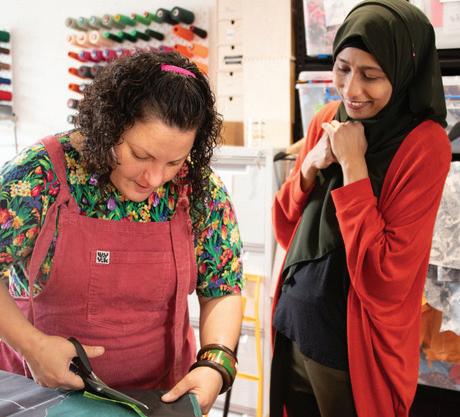

Fish is a major source of protein for many countries across the world. However, overfishing, climate change, habitat destruction and pollution have impacted fish replenishment rates. Many fish species are being harvested at replenishment the restoration of a supply to its original level
unsustainable rates, leaving a decline in the stock. This means that fish are being removed from their environment faster than they can reproduce to maintain their population. Figure 5.6.5 reveals the trend in overfishing between 1974 and 2019.
Fish stocks become overexploited when sh are caught at a rate higher than the population can support, and the ability of the stock to produce its Maximum Sustainable Yield (MSY)² is jeopardised.
5.6.5 Status of the world’s fish stocks between 1974 and 2019
Source: Our World in Data website
A key aspect of the concept of sustainability is using resources in a manner to meet current needs but also ensuring their availability for future generations. The Pacific bluefin tuna is a successful example of sustainable fishing. Decades of overfishing had led to estimates that the population size had declined to just 2.6 per cent of its historical levels. Pacific bluefin tuna is a highly sought after for sushi and sashimi, especially in Japan. Ineffective management of quotas and overfishing of juveniles before they could reproduce led to critically low population numbers.
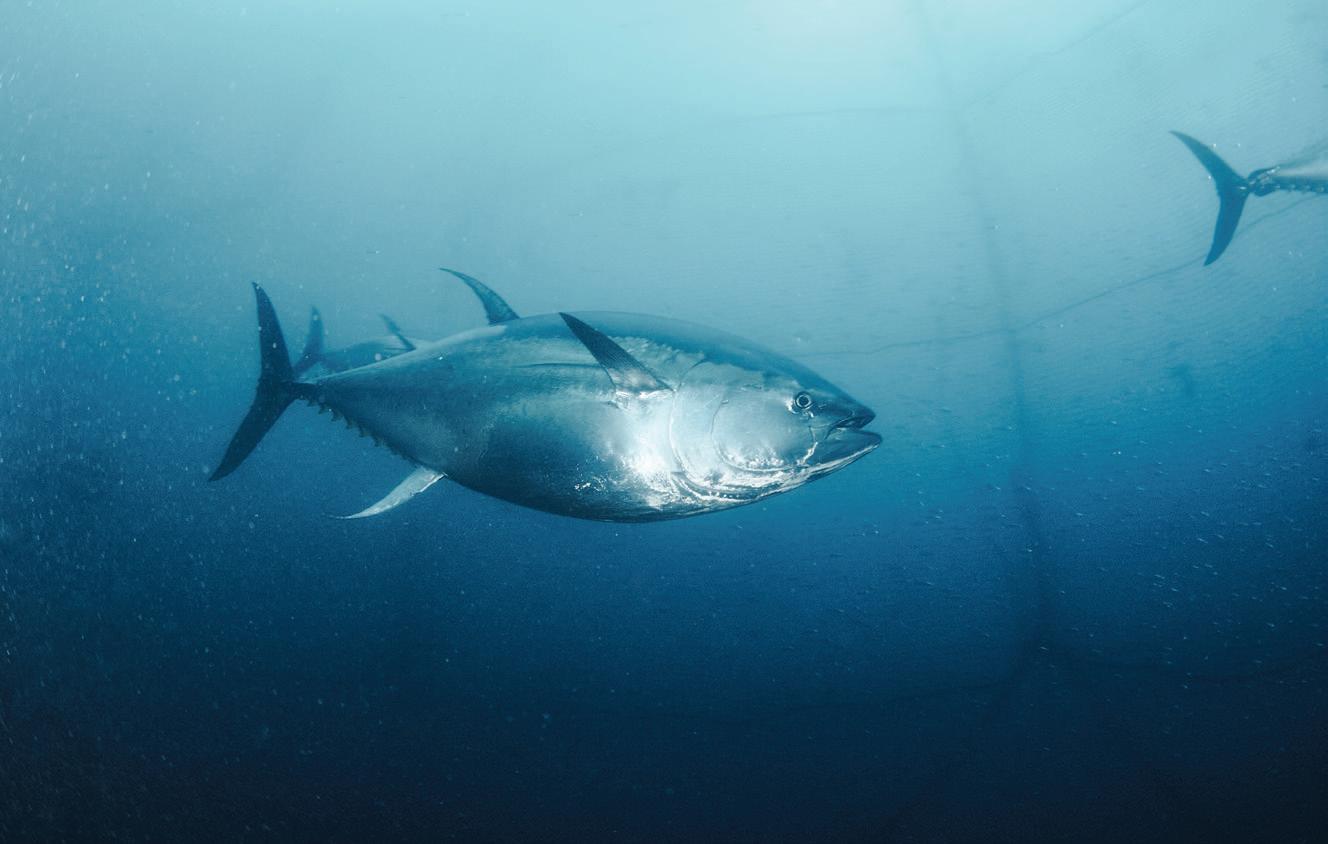
In 2014-2015, the Western and Central Pacific Fisheries Commission (WCPFC) and the Inter-American Tropical Tuna Commission implemented conservation measures such as catch limits and minimum size requirements. Today, the Pacific bluefin tuna is slowly recovering. Recently, the species had reached 6.4 per cent of its original levels. This is a positive step towards recovery and to securing future supplies of this food source.

In countries such as Thailand and Cambodia in the region of South-East Asia, insects are commonly eaten. Insects contain high-quality protein, vitamins and amino acids. They require far less food and space than other protein sources, such as cattle for beef. Insects can even be fed food waste. They also emit less greenhouse gases and ammonia than livestock. The United Nations Food and Agriculture Organization is working with countries worldwide to learn more about insects and how they can be farmed in the future, not only for consumption by people around the world but also as an added source of protein for livestock feed.
A company in Finland called Solar Foods has recently created a protein powder made from air. It looks like flour and contains 50 per cent protein, 5–10 per cent fat and 20–25 per cent carbohydrates. Solein is made by extracting carbon dioxide from air using carbon-capture technology and combining it with water, nutrients and vitamins. Solein is currently manufactured using 100 per cent renewable solar energy. The company’s long-term goal is to provide nourishment to nine billion people by 2050, with an estimated revenue of US$500 billion.

Source:
Recall
1Identify how many people still go hungry today? Explain the main reason for this.
2Explain how throwing out clothing is a threat to food security.
3Identify two nations which commonly consume insects as food.
Interpret
4 Study Figure 5.6.5 and answer the following questions.
aDescribe the trend in overexploited fish stock between 1974 and 2019.
b Predict what would happen to the trend if more countries implemented catch limits and minimum size requirements.
5 In pairs, study Figure 5.6.2 and answer the following questions.
cDescribe the trend of the overall world population from 1700 to 2100.
dDescribe the trend of the annual growth rate of world population from 1700 to 2100.
e Why do you think the overall world population continues to grow even when the growth rate decreases?
Argue
6Explain how conflict is both a cause and a result of food insecurity.
7Outline the benefits of Solein by using the information provided in the graphs in Figure 5.6.9.
1 Predicting future population can be contentious. Explore the role of a UN statistician and steps they take to determine future population.
2 Brainstorm and research 10 things that individuals can do to reduce their food and clothing waste.

• How is Australia and the world securing food production and supply?
Food security is a growing global challenge and ensuring a stable and sustainable food supply requires innovative and traditional strategies. These strategies will enhance production, improve distribution and reduce waste. Around the world, countries are adopting a diverse range of approaches to safeguard their food production and supply to address their individual challenges.
At a global scale, the United Nations provides a framework for achieving food security under the Sustainable Development Goals. Goal 2 aims to end world hunger by achieving a range of targets, as listed in Table 5.7.1. The Food and Agricultural Organization (FAO), a specialised agency of the United Nations, leads international efforts to achieve this goal by providing technical support, policy guidance, capacity-building programs and emergency interventions.
2.1 By 2030, end hunger and ensure access by all people, in particular the poor and people in vulnerable situations, including infants, to safe, nutritious and sufficient food all year round.
2.2 By 2030, end all forms of malnutrition, including achieving, by 2025, the internationally agreed targets on stunting and wasting in children under 5 years of age, and address the nutritional needs of adolescent girls, pregnant and lactating women and older persons.
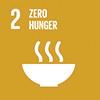
2.3 By 2030, double the agricultural productivity and incomes of small-scale food producers, in particular women, indigenous peoples, family farmers, pastoralists and fishers, including through secure and equal access to land, other productive resources and inputs, knowledge, financial services, markets and opportunities for value addition and nonfarm employment.
2.4 By 2030, ensure sustainable food production systems and implement resilient agricultural practices that increase productivity and production, that help maintain ecosystems, that strengthen capacity for adaptation to climate change, extreme weather, drought, flooding and other disasters and that progressively improve land and soil quality.
2.5 By 2020, maintain the genetic diversity of seeds, cultivated plants and farmed and domesticated animals and their related wild species, including through soundly managed and diversified seed and plant banks at the national, regional and international levels, and promote access to and fair and equitable sharing of benefits arising from the utilisation of genetic resources and associated traditional knowledge, as internationally agreed.
Table 5.7.1 Summary of UN Sustainable Development Goal 2
Source: Department of Economic and Social Affairs, United Nations
The UN Sustainable Development Goals targets are set for 2030, but how are we on track to achieve them?
Visit the UN Sustainable Development Report Interactive map at https://cambridge.edu.au/redirect/11241 and locate Goal 2 Zero Hunger.
1 Evaluate (form a judgement about) the current global performance (use the ‘Ratings’ option for the map) on SDG 2. Use specific examples from the map to support your conclusion.
2 Investigate Australia’s performance and progress.
a The interac tive map can be set to display ‘Ratings’ or ‘Trends’. Use the information provided to explain in your own words the difference between these two data sets.
b Identify Australia’s current performance on SDG 2 (use the ‘Ratings’ map option). Identify Australia’s current progress towards SDG 2 (use the ‘Trends’ map option).
c Select the different ‘Indicators’ for SDG 2 to explain Australia’s current performance and progress. Identify which specific indicators Australia has achieved and which we are still experiencing challenges in. Identify the indicators we are improving in, and indicators we are decreasing in.
Be sure to include why we are or are not on track.
Key concepts: change, sustainability
HASS skills: questioning and research
1 Investigate current challenges and issues relating to food security in Australia. You could refer to your analysis in the ‘Geography through maps’ activity above. The Foodbank reports and resources are also a good place to start (https://cambridge.edu.au/redirect/11375).
2 Summarise some of the main causes of food insecurity and hunger in Australia.
3 Research the policies of the major and minor parties that relate to food insecurity. You can find this information by visiting the party websites and reading about their ‘Plans’. You may also research the policies of independent candidates.
a Summarise the policies of the different parties in a table.
b Which policies do you think are the most appropriate and effective and why?
4 Research a food securit y issue that is impacting your local electorate or state (WA). Summarise the issue and think of a possible solution or initiative that could address the issue. Create a poster to communicate your conclusions OR write a letter to member of parliament (e.g. your representative in the WA or Australian lower house) outlining the issue and proposing your solution.
5 How else can people in Australia have a say on issues such as food security?
National leadership plays a critical role in combating food insecurity by shaping policies, distributing resources and coordinating responses. Any government needs to set national policies to ensure a stable food supply by enacting subsidies, investing in infrastructure or regulating markets.
In 2014, the federal government created the Emissions Reduction Fund.
One part of this fund is the Soil Carbon Project, which encourages farmers to reduce their emissions by drawing down carbon into the soil. Farmers who practise regenerative agriculture can earn carbon credit units for drawing down carbon. One unit is earned for each tonne of carbon dioxide equivalent stored or avoided by a project. Farmers can earn extra income by selling their units to the government through a Carbon Abatement Contract or on the market.
Case study 5.7
The Great Green Wall of China
Northern China has had a long history of being dry, but the issue lies in that the desert region is expanding. Approximately 3600 kilometres square of China’s grasslands are being lost to the Gobi Desert every year. These grasslands are used for agriculture which impacts the livelihoods of those leaving these areas and the wider food supply.
The ‘Great Green Wall,’ or the Three-North Shelterbelt Forest Programme began in 1978 and is due to be completed in 2050. It aims to reduce desertification by planting a tree belt. This wall of trees will stretch 4500 kilometres and contain approximately 100 billion trees. By increasing vegetation cover, the belt aims to stabilise soil, reduce wind erosion, and improve moisture retention.
Results so far have been positive, with the movement of sand dunes appearing to stabilise and the frequency of sandstorms falling. As of 2024, the tree belt that encircles the Taklimakan Desert was completed.
No solution is without its criticism. Some experts argue that the planted trees compete with agricultural activities for the use of water and land.
China is not the only region to experience a loss of arable land due to changing environmental conditions. The African Union launched their own Great Green Wall initiative in 2007 to restore the continent’s degraded landscape and help the people living in the Sahel region. Not only does it aim to restore 100 million hectares of land, but it will sequester 250 million tonnes of carbon and create 10 million green jobs by 2030.
Analysis questions
1 How do green walls help prevent desertification?
2 What challenges might arise when implementing green walls in dry or desert-prone areas?
Key concepts: place, environment, change
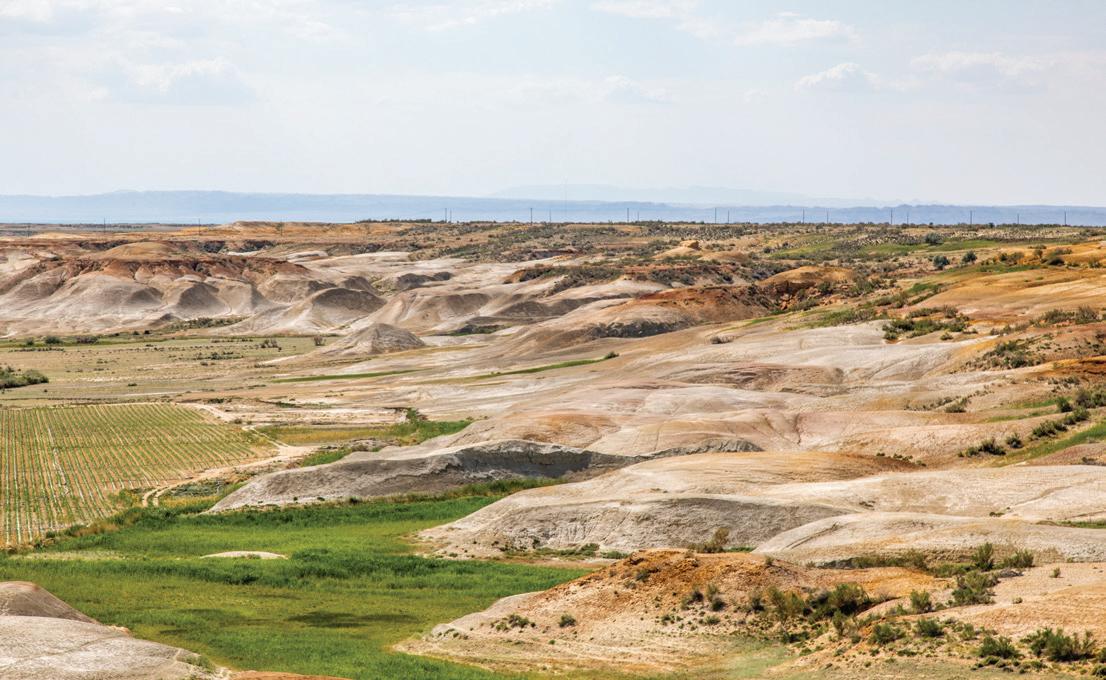

HASS skills: questioning and researching, communicating and reflecting
A GMO (or genetically modified organism) is a plant, animal or microorganism that has been altered using genetic engineering techniques. This process has been carried out for hundreds of years, starting with selective breeding of animals.
With the rise in extreme weather events placing food and fibre crops at risk, altering the genetic structure to be more resilient is crucial to securing food production. In Western Australian, GM cotton, GM canola and GM safflower have become increasingly common in the past 20 years.
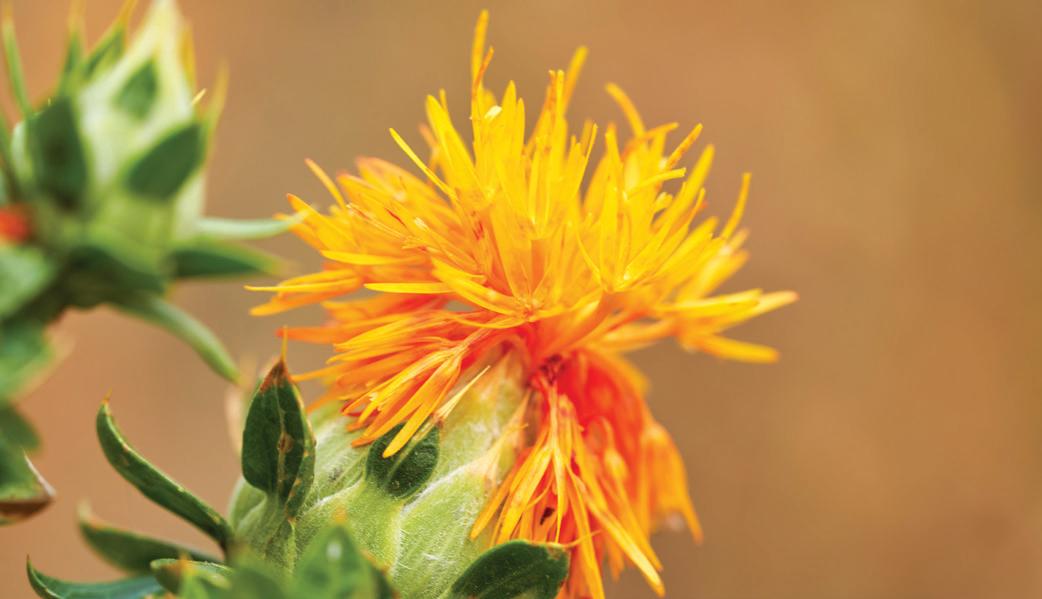

On a local scale, individual farms are adapting to climate change by changing crop varieties or moving location. Winemaking company Brown Brothers has purchased land in Tasmania for its business to avoid the growing temperature and bushfire risks in Victoria. Livestock farmers have been breeding or replacing European cattle breeds with Bos indicus, an Asian cattle breed that is more tolerant of high temperatures.
Golden rice, a variety of rice, was developed in the 1990s to be enriched with vitamin A to combat growing malnutrition levels. Vitamin A deficiency is a public health problem, particularly prevalent in South-East Asia. One of the most concerning consequences of vitamin A deficiency is blindness. The World Health Organization estimates that between 250 000 to 500 000 children who are vitamin A deficient become blind every year.
MethodDescription
Crop rotation• Rotating crops between fields
Green manure• Crops are grown just to be cut down and returned back into the soil where they grew. These are grown during the off-season to improve the soil in between growing cash crops or as part of a crop rotation system.
Polyculture• Planting a variety of crops together
Native windbreaks• Planting native trees around fields
Regenerative agriculture is an old approach to farming that is regaining popularity because of its potential to improve crop yield while at the same time tackle the challenges of climate change, soil degradation and biodiversity loss.
Some methods used in regenerative agriculture are listed in Table 5.7.2.
Benefits
• Stops the soil from becoming depleted in a particular nutrient from overuse by a single crop
• Farmers choose crops that improve the soil
• Provides land cover, which draws down carbon, reduces erosion and increases soil moisture
• Provides food for microbes that turn crops into humus
• Increases soil and plant health, makes the farm more resistant to diseases and pests, and increases biological pest control
• Reduces evaporation and damage caused by wind
• Increases biodiversity by creating habitat for predator birds and other animals that control pests
• Draws down carbon from the atmosphere to combat climate change
5.7.2
Referring to Figure 5.7.5, from the top left, it shows that the garden bed is first planted with pods, such as peas and broad beans. These are grown to improve the soil and enrich it with nutrients.The bed is then planted with root vegetables, such as carrots and beetroot. These are light feeders that do not take too many nutrients from the soil.
Next in this sequence come the fruiting plants, such as capsicum and cucumbers, followed by greens, such as cabbage and lettuce. Both these types of plant are heavy feeders and can deplete the soil of nutrients.
Finally, the pods are planted in the garden bed again to restore the soil quality, and the cycle can restart.
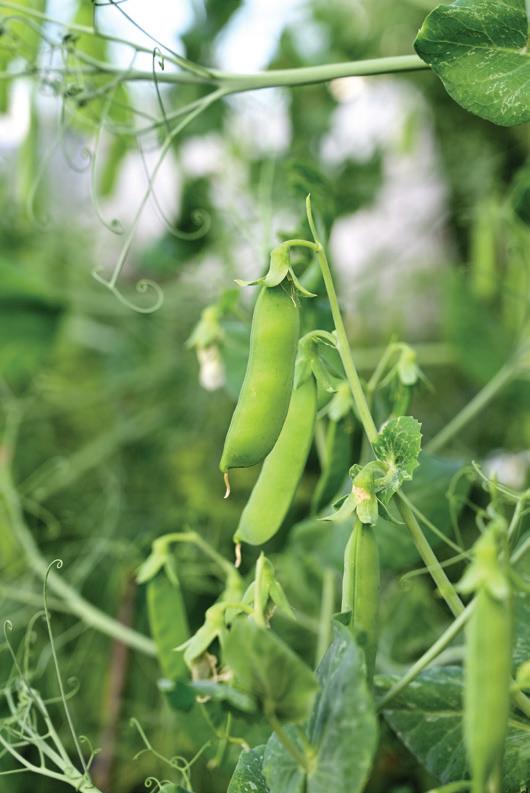

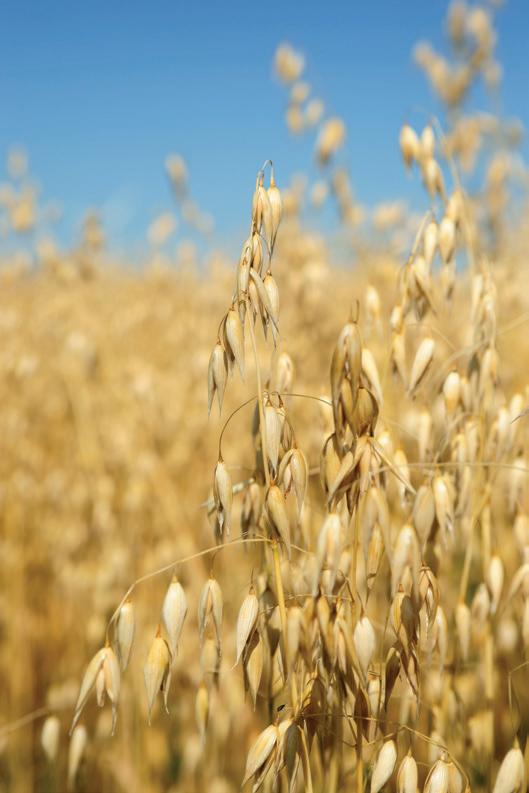
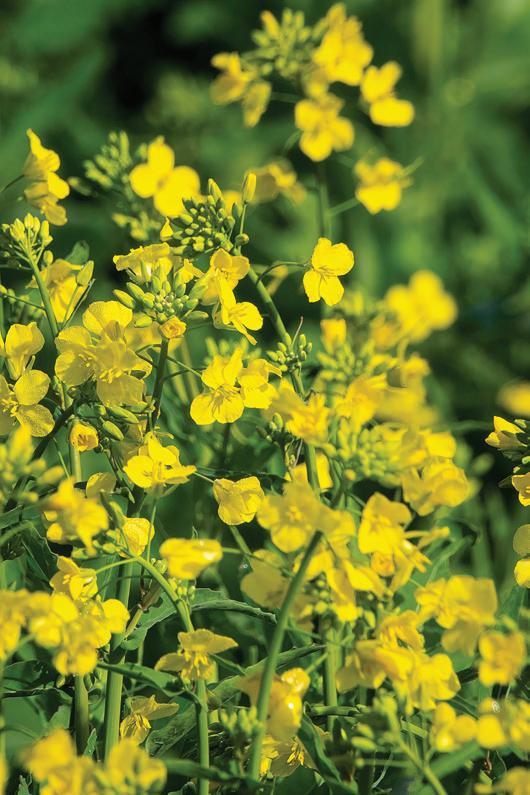

They kill soil pathogens and parasites, such as root-knot nematode, which can infect and kill up to 2000 types of plants.
For some farmers, there is a feeling that another revolution is upon us. Precision farming is regarded as the fourth agricultural revolution. It is poised to relieve us from the most negative consequences of intensive industrial agriculture. Precision farming uses spatial technology such as sensors, drones and GPS to reduce the amount of labour, irrigated water, pesticides and fertilisers needed. GPS can be used to direct a tractor using satellite data, without the need for a human driver. Moreover, farmers can gather data about their soil’s
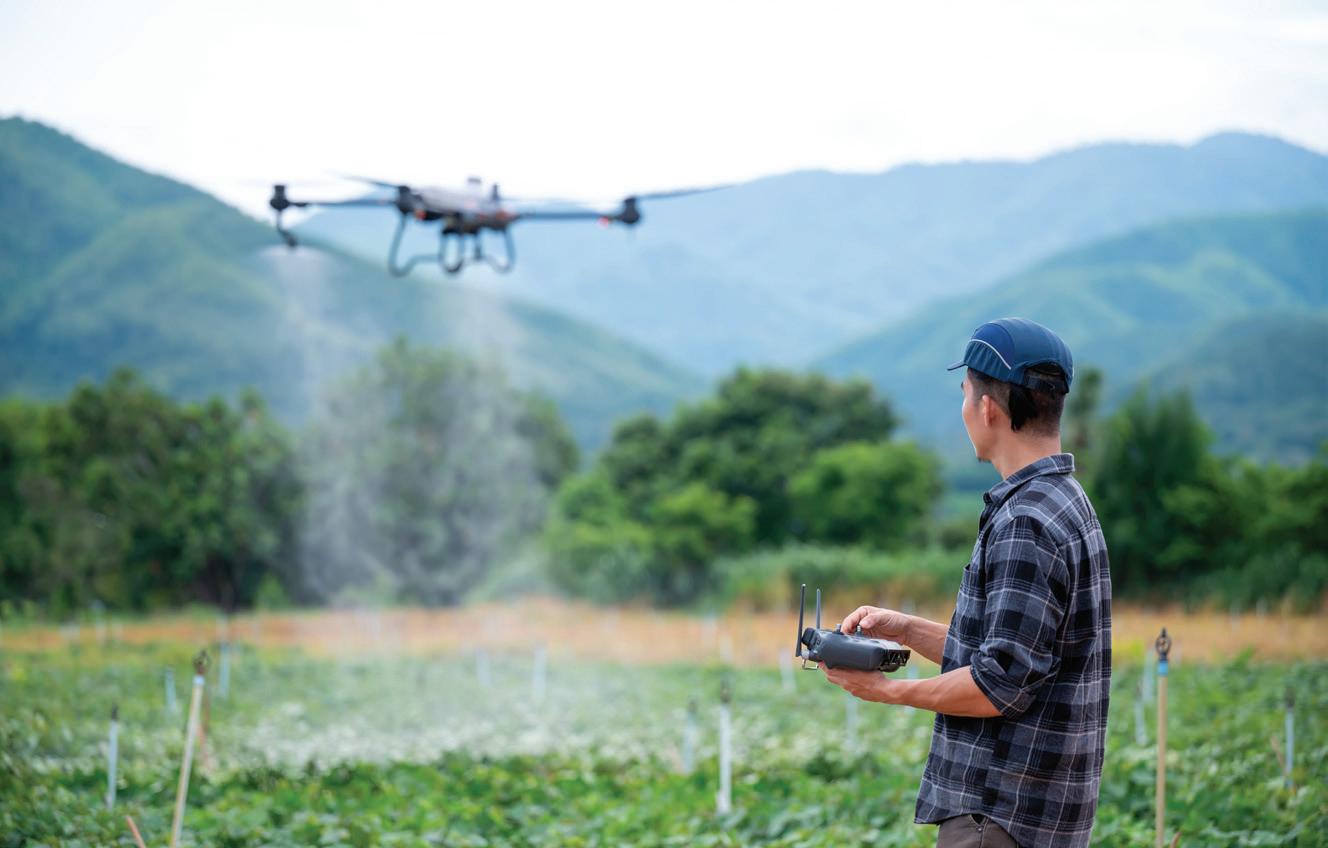
pH, nutrient and moisture content
This data can determine where to grow particular crops and apply fertilisers, rather than dose the entire field with fertilisers, which is expensive and harmful to the environment.
Data can even be gathered on animals. A device similar to a fitness tracker can be secured under a cow’s chin to provide farmers with data such as temperature and heart rate. This allows farmers to detect illness, stress or even when a cow is going into labour. These farms are often described as being smart farm as they use a range of wireless technology to perform part of their agricultural practices.



Vertical farming is an innovative solution to increasing food production in countries where available land to farm is declining. It involves growing crops in stacked layers inside a controlled environment, typically a warehouse as seen in Figure 5.7.13. Hydroponics and aeroponics are used instead of traditional soil-based farming.
hydroponics growing plants in water, gravel or sand without soil
aeroponics growing plants suspended in the air with a mist-based nutrient delivery system
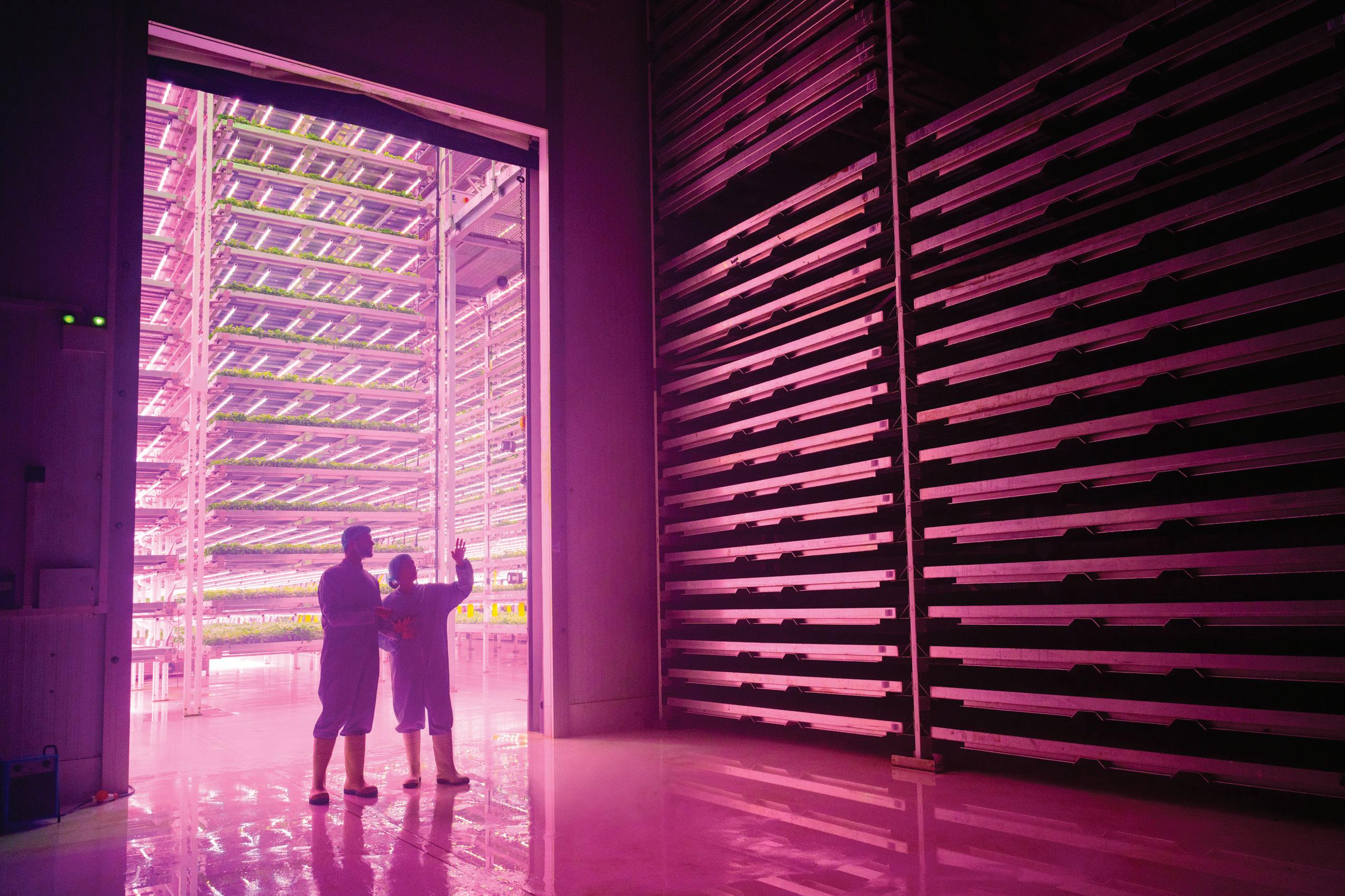
geographic concepts and skills 5.9
Evaluating a response using the sustainability concept
We often hear the concept ‘sustainability’ used with respect to the environment and making sure that our natural resources are available for future generations. However, a broader definition of the concept simply means to be able to continue something for a long time without negative consequences. As geographers aim to create truly sustainable outcomes, we also measure the success of responses based on whether they are economically and socially sustainable. Economic sustainability means that a response has the financial support it needs well into the future. Social sustainability means that the response is supported by the people affected, many people benefit, and there are people who can keep the project going well into the future.
Conduct further research into vertical farming and evaluate the sustainability of its use as a response to food security.
Key concepts: sustainability, environment
HASS skills: evaluating, questioning and researching
5.7 Review questions
Recall
1List some examples of how some farmers are adapting to climate change.
2 Define the term ‘regenerative agriculture’ in your own words.
3Explain how crop rotation is an example of regenerative agriculture.
4Explain the purpose of the Soil Carbon Project.
Interpret
5 Looking at Table 5.7.3:
aIdentify the most and least productive crops yielded in terms of bushels per acre.
b Imagine that you are an oat farmer trying to increase yield through crop rotation. Determine your yield if you grow oats for two years straight.
c Determine your yield in the second year following a year of growing peas.
6Evaluate the sustainability of increasing global consumption of insects.
Argue
7 Which farming strategy do you believe is better: regenerative agriculture or vertical farming? Explain your decision.
Apply 5.7 questions
1 Create a landscape design for a farm using regenerative agriculture techniques. Annotate your design.
2 Look up ‘unlocking the potential of Northern Australia.’ Create a pitch to the federal government for how you will intensify agricultural production in the region using sustainable methods.
Key concepts: change, place, sustainability, environment
HASS skills: evaluating, communicating and reflecting, questioning and researching
• How did First Nations Peoples live off the land for so long?
• How did First Nations Peoples achieve food security?
Australia has the longest known history of agriculture in the world. In fact, there’s evidence to suggest that First Nations Peoples were baking bread 65 000 years ago; that’s 50 000 years before the ancient Egyptians! Australia’s history is a remarkable tale of adaptability, ingenuity and sustainable land management based on an intelligent understanding of the environment.
Australia’s biomes were first altered to grow tubers and cereals as well as harvest meat, fruit and vegetables. Moreover, the farming and storage methods used by First Nations Peoples allowed the landscape to sustain them for thousands of years. They even survived the last glacial maximum period, a time when Earth was so cold that many forests disappeared, animal species became extinct and vast volumes of surface water disappeared.
Unfortunately, much of this agricultural history remains unknown. However, the work of historian Bruce Pascoe has shed new light on this topic. In his book Dark Emu, Pascoe revisits historical sources from early European settlers and finds many references to thriving societies and economies based around agricultural systems. There is clearly a great potential to learn more about First Nations agricultural

practices and use this knowledge in our current quest for food security during this new period of great change.
Some plant species have edible tubers, which are thick-skinned structures made of stems or roots that grow underground. The most familiar tubers in people’s diets today are potatoes, introduced by European settlers in the 1700s.
However, well before the introduction of potatoes, another tuber was commonly used. The native murnong (or yam daisy) grew in southern and eastern Australia, including Tasmania. It was a staple for many people in these regions and is said to be eight times as nutritious as potatoes.
till dig or loosen the soil to prepare it for planting domestication growing and adapting wild plants for human use
surplus more than you immediately need
Tubers such as the murnong and nodding greenhood were so valued by Aboriginal Peoples that biomes were altered to increase their yield and distribution.
This was achieved through methods such as fire-stick farming and terracing. Fire-stick farming involved choosing the areas with the best soil and burning the vegetation in those areas in order to clear the space for planting. Specific tools were then used to till (turn or dig) the soil. This improved the soil, as the ash from the burned vegetation provided valuable nutrients. Terracing was used on sloping clay soils, allowing First Nations Peoples to extend their crops to steeper land.
Fire-stick farming, terracing and tilling were sustainable farming techniques. They returned nutrients to the soil, reduced erosion and helped the soil and plants absorb rainwater. The result was a soil that was rich, fertile and so soft that it was described by one early European settler as being sponge-like.

Cereals such as panicum (wild millet) and kangaroo grass were another vital part of Aboriginal Peoples’ diet and economy. As Figure 5.8.3 illustrates, peoples’ grain belt distribution was much larger under the management of Aboriginal Peoples and covered land that we today regard as being unfit for crops. Above this grain belt, cereal, such as wild rice, was grown in crocodile-infested waters.
Seed domestication, irrigation, storage and trade ensured a nutritious and reliable cereal supply. Seeds become domesticated when humans are involved in the growing process by continuously choosing seeds to save and replant the following year. Over time, due to this process of human selection, the seeds change their structure and the plant becomes dependent on humans to grow. Usually, the seeds chosen are ones that show desirable traits, such as good size, taste and yield.
Large dams and wells were built, and the courses of some rivers were diverted (changed) to provide irrigated water to crops to increase their yield and assist their growth. There is evidence of huge dams made of clay and pebbles that could store 700 000 litres of water in Queensland, and many more examples of similar constructions are to be found on public and private land today.
As a result of these efforts, surplus seeds were harvested and stored. This was significant in terms of food and economic security, as it allowed people to remain in one area, build permanent houses to live in, increase their population and engage in more non-agricultural activities.
Surplus seeds were also traded or gifted. This led to further distribution of the seeds in areas where they had not naturally grown and diversified existing products.












Ancient First Peoples’ grain belt
Contemporary grain belt







Where the ancient First Peoples and contemporary grain belts overlap Region along the Darling River where European explorer Hamilton Hume noted, in the 1820s, that First Nations Peoples gathered grain from wild oats and made an edible paste by grinding it
Source: Bruce Pascoe, Dark Emu, 2018, p. 28
Animal (game) farming provided a great supply of protein. Herding and harvesting were common approaches to secure this type of food. For instance, brush fences channelled kangaroos and emus into a limited area, where a net was stretched across to catch the animals. Similar nets were cast from one riverbank to another to catch birds as they swam by. This was sustainable because, once the animals were trapped, people could select which ones to kill, releasing the young and female animals.





Fish were an additional source of protein. They were farmed and caught due to some impressive feats of river engineering resulting in structures which were built so sturdily that they still exist today.
It is possible that the enormous fish traps used along the Darling River in Brewarrina, seen in Figure 5.8.4, are the oldest human-made structures on Earth. The process involved herding fish into



km 0
Figure 5.8.3 The Aboriginal grain belt of Australia compared to the contemporary grain belt
human-made rock pools. These pools had openings that allowed fish to swim through. However, when fish were needed, people would block the pool openings with rocks. The pools are set at various heights so that they could be used no matter how high the water level.
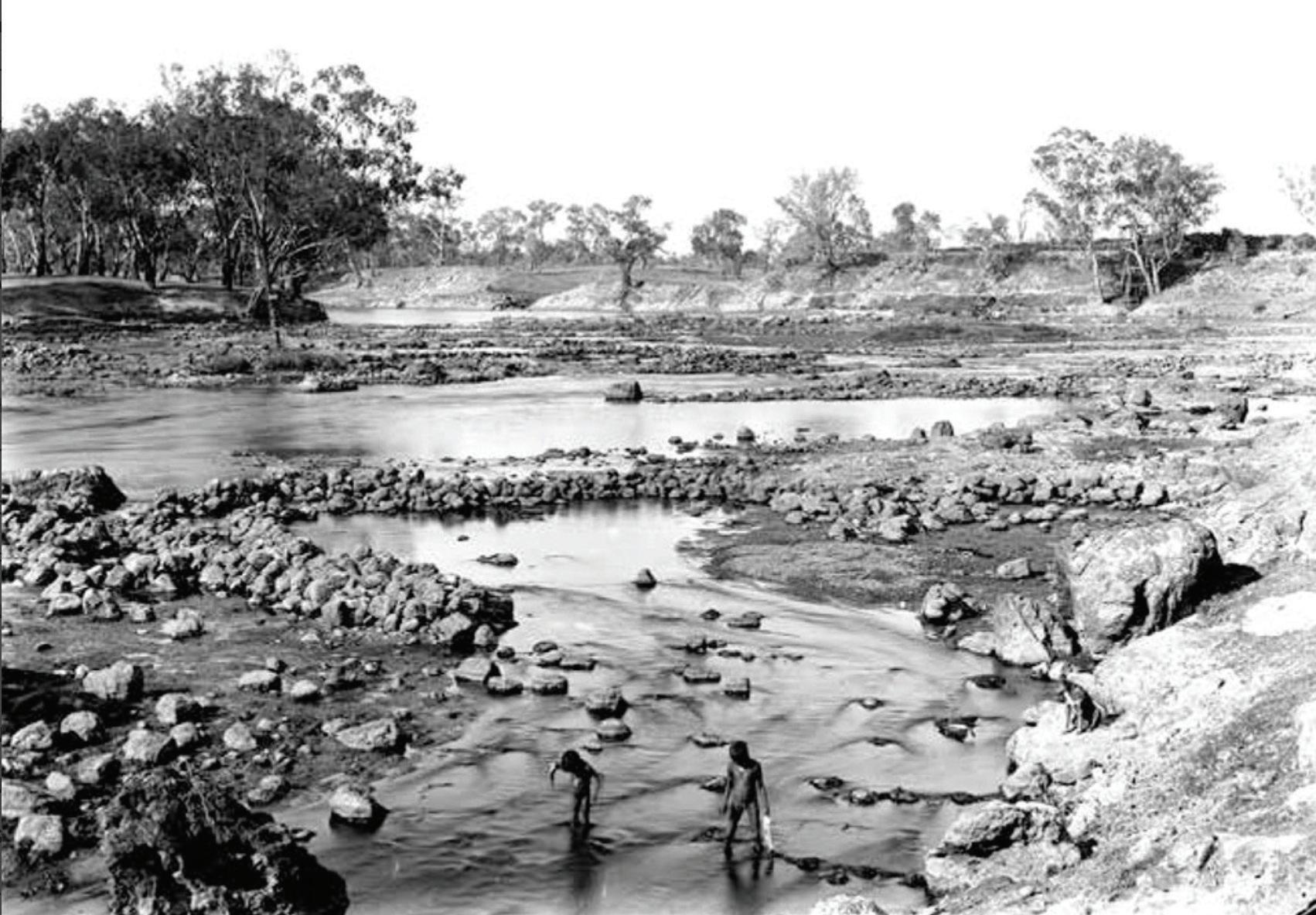
Figure 5.8.4 The Brewarrina fish traps (Baiame’s Ngunnhu) along the Baaka (Darling River) in New South Wales are one of the oldest known human-made structures in the world. Aboriginal Peoples built this complex system of stone weirs and pools to catch fish and care for Country. While archaeologists have found it difficult to date the traps exactly, Aboriginal oral histories tell us they have been there for thousands of generations. In 2005, the fish traps were officially recognised by being added to Australia’s National Heritage List.
This farming provided such a secure supply of food that communities flourished. At Lake Condah, the remains of houses as well as a network of channels are suggested by some to be evidence of a township of about 10 000 people. Cultural activities and gatherings were also supported by the large amount of food provided by using these fishing techniques. When many groups came together, the traps were set in place prior to the meetings to ensure there was enough fish to provide for the increased population over that time.
This method of farming was sustainable, as it allowed smaller fish through, trapping only the adult fish and only when needed. Particular traps in a system were managed by specific families, who each had a responsibility to make sure that other families upstream or

downstream in the river had enough fish supply too.
Perhaps the most remarkable example of herding involved a partnership between the Yuin People of southern New South Wales and orcas. As Pascoe describes in Dark Emu, the herding would begin with a ritual. The Yuin would set alight two fires on the beach, and one man would limp between the two fires in order to make the orcas feel sorry for what looked like an old, frail man. Orcas would then herd larger whales into the harbour of shallower water, where the Yuin would choose one whale to kill. As a reward and out of respect for the work of the orcas, the orcas would be given the whale’s tongue to eat. In Geelong, Victoria, and other regions, similar working relationships occurred between people and dolphins.

Aboriginal and Torres Strait Islander peoples were practising the geographic concepts of interconnection and sustainability long before these words existed. Things that Europeans would consider living and non-living things are all alive, interconnected and nourished by a spirit. People, information and resources were further interconnected across the country through songlines.
The Australian agricultural landscape as we know it today looks quite different from how it must have been. When the first Europeans arrived in the 18th century, their intention was to grow the European crops and meat that were familiar to them. Therefore, there was not much interest in native food varieties.
The distribution of these native varieties quickly diminished in size, largely due to the introduction of heavy-hoofed animals such as sheep, cattle and horses.
These animals not only ate a lot of the native plants, but also compacted the soil, making it difficult for native plants to grow, causing erosion and reducing the soil moisture content.
Spatial limits were also introduced due to land ownership and the laws of trespass. In the past, First Nations Peoples were able to move more fluidly between regions. There were also cases when, in hard times, First Nations communities would move into neighbouring regions and were allowed to hunt there until conditions improved in their own region. Today, these lands are severely fragmented (divided), and overrun by private farms, cities and other infrastructure.
This significant reduction in native food varieties is not only a loss to First Nations Peoples, it is a loss to us all. We are missing out on foods that are not only tasty but adapted to our land, requiring fewer artificial and expensive inputs (things that we add in) such as fertilisers and pesticides.
However, there is some evidence to suggest that we are waking up to the potential benefits of exploring First Nations agriculture. Some native foods, such as wild rice, murnong, lemon myrtle and finger lime, are finding a place in the gourmet food market.

As the climate changes, there is growing interest in cereals such as panicum and wild rice. Wild rice, for instance, does not degrade the environment or require additional inputs such as fertilisers or irrigated water. Not only can the rice be grown in its current state, but the genes found in this rice could help create new commercial varieties that are better able to withstand the diseases that are currently harming Asian rice varieties.



Today the grain belt is significantly smaller than it once was. Could a deeper understanding of Aboriginal and Torres Strait Islander farming practices and use of native varieties help us expand the distribution and types of food growing?
I used to think … but now, I think …
There is so much still to learn and explore, and the potential benefits to be gained from this knowledge go far beyond feeding ourselves. They extend to understanding ourselves and the history and culture of the land we live on.
When beginning this study of land and resource management strategies used by First Nations Peoples, you most likely had some initial ideas about what the topic was about.
1 In a few sentences, write what it is that you used to think about land and resource management strategies used by First Nations Peoples. Begin each sentence with the phrase ‘I used to think …’
2 Consider how your ideas have changed as a result of your studies. In a few sentences, write down what you now think about land and resource management strategies used by First Nations Peoples. Begin each sentence with the phrase ‘But now, I think …’
Key concepts: environment, sustainability, change
HASS skills: questioning and researching, analysing, evaluating, communicating and reflecting
Go online to access the interactive section review and more!
5.8 review
5.8 Review questions
Recall
1 What are possibly the oldest known human-made structures on Earth?
2Outline the changes that occurred during the last glacial maximum period.
3 What was the most popular tuber eaten in southern and eastern Australia?
4List the agricultural methods that were used to extend the distribution and yield of the murnong.
5 Choose one agricultural or hunting method (e.g. firestick farming, fish traps) and explain how this was a sustainable method of farming.
6Explain the process of seed domestication.
7 How did the arrival of Europeans in Australia change the environment? Explain the changes that occurred and the processes that brought about the change.
8List some of the benefits of having a surplus amount of seeds.
Interpret
9 Refer to Figure 5.8.4. Describe the environment by highlighting the natural and human characteristics that you can see.
10 Describe the herding ritual between orcas and the Yuin People.
Argue
11 Suggest reasons why the distribution of the First Peoples grain belt and contemporary grain belt look so different.
12 Why do you think we know so little about First Nations agriculture?
13 Explain how wild rice could play a role in our current quest for food security.
Apply 5.8 questions
1 Create a three- course menu using native foods. If possible, explain which region each ingredient is from.
2 Read Bruce Pascoe’s book Young Dark Emu to learn more about our country’s past.
Key concepts: environment, change HASS skills: analysing, evaluating
5.9 Conclusion: why does it matter?
Imagine the Earth is a spaceship, travelling through space with a limited supply of food, water and air. Just as astronauts must be careful to manage their resources, so must we. Our planet’s biomes are essential not just to us today, but also to ensure that future generations will have enough to eat, drink and breathe. If we continue to ignore consequences and deplete these systems, there’s no resupply mission – we are entirely reliant on what the Earth provides us.
As a result of climate change and other alterations made to biomes by human interaction with the environment, many biomes are undergoing transformation. Many of these changes have worrisome outcomes and the potential to impact our short- and longer-term safety and security. We have a responsibility to future generations to make our interaction with biomes on the planet sustainable; while some positive changes have begun, there is a long way to go.
Food production and security are connected to the ways humans use, and have altered, biomes. As populations have expanded, so has our expansion across the planet, and
we are now using the spaces around us in many ways. But we have not found ways to feed everyone equally. While some of us live in cultures that waste incredible amounts of food every day and many people suffer from obesity, much of the population on the planet does not have enough food to sustain the energy they need for growing, learning and working. The challenge of food security is an ethical issue, it asks us whether we recognise that access to food is a human right.
However, there is hope and action unfolding. You can contribute in small ways to make positive change so that the biomes that exist on our planet stay beautiful, diverse and healthy, and are able to sustain life now and forever. Local businesses and/or industries are making changes, so that their ecological impact is reduced. Part of positive change in awareness and attitudes has come through organisations who have committed to change, such as the United Nations’ Sustainable Development Goals. It is encouraging to see there are people who are leaders in making a better future, and it is inspiring to learn more about how we can all contribute.
That just about wraps up this topic. How did you feel you went working through the chapter? Before you attempt the following activities, visit the Interactive Textbook to rate your confidence with this topic via a downloadable checklist.
1 Choose one biome to research further. Use a variety of sources and this chapter to research and complete the following:
aDescribe the global distribution of this biome using PQE.
bDescribe the characteristics from Section 5.2 that have influenced the distribution of this biome. For example, what type of soil, elevation, latitude and climate apply to this biome? Include and refer to data such as a climate graph or elevation map to support your description.
cList some of the plants and animals that live in this biome.
d Choose at least two plants or animals from your list and explain how they have adapted to live in this biome.
e How does this biome contribute to global food security? For example, identify the food that is grown in this biome and identify who eats this food. Is it eaten locally or exported? If exported, where is it exported to?
f What types of agriculture and agricultural methods are used in this biome (e.g. subsistence agriculture, terracing, livestock farming, intensive industrial agriculture)?
gExplain how climate change is impacting this biome.
2Investigate the social, environmental and economic impacts of the fast-fashion industry. Present your findings in a report that includes relevant maps, data and statistics.
3Investigate the impact of climate change on Australian agriculture. Present this information in an annotated map of Australia that shows the impacts in each state. Complete your map by including your mapping conventions (BOLTSS). Refer to the Interactive Textbook for more information on BOLTSS.
Generate, sort, connect, elaborate
In groups, consider all that you have learnt throughout the course of this chapter.
1 Generate a list of ideas and initial thoughts that come to mind when you think about biomes and food security.
2 Sort your ideas according to how central to the topic they are. Place central ideas near the centre and less direct or tangential ideas towards the outside of the page.
3 Connect your ideas by drawing connecting lines between ideas that have something in common. Explain and write in a short sentence how the ideas are connected.
4 Elaborate on any of the ideas you have written so far by adding new ideas that expand, extend or add to your initial ideas.
Evaluate the effectiveness of the green revolution as a response to food security.
1 Provide a brief history and overview of the green revolution, including its aims and methods.
2 Describe the positive and negative impacts of the green revolution socially, environmentally and economically. Include data, statistics and case studies from this chapter or other sources to support your evaluation.
3 Conclude with a statement of the short-term and long-term effectiveness of the response.
Choose one of the challenges outlined in this chapter and design your own response to the challenge. Consider whether your response will:
• assess and monitor the change
• reverse or adapt to the change
• involve an Aboriginal perspective
• indirectly respond to the impact by raising awareness.
Swap your response with a classmate and use the following Making thinking visible compass points activity below to assess your partner’s response.
Compass points: a routine for examining propositions
1 E = Excited
What excites you about this idea or proposition? What’s the upside?
2 W = Worrisome
What do you find worrisome about this idea or proposition? What’s the downside?
3 N = Need to know
What else do you need to know or find out about this idea or proposition? What additional information would help you to evaluate things?
4 S = Stance or suggestion for moving forward
What is your current stance or opinion on the idea or proposition? How might you move forward in your evaluation of this idea or proposition?
Key concepts: space, change, sustainability, environment
HASS skills: questioning and researching, analysing, evaluating, communicating and reflecting
According to Data Reportal, at the commencement of 2025 approximately 67.9 per cent of the world’s population had access to the internet, which is almost 5.56 billion people! Over 5.24 billion people were listed as active users of social media. The Australian Bureau of Statistics (ABS) reported that by December 2024 over 11 per cent of total retail sales in Australia occurred online.
In this unit, you will investigate changes in the ways people interact with one another and with places. You will analyse the role of technology in connecting people and the positive and negative impacts this is having on trade, production and sustainability. By exploring the interconnections between consumers and producers, you will consider how choices made on a local scale can have global consequences.
After completing this unit, you should be able to answer these questions:
• How do different people perceive and interact with local places based on their age, gender and cultural background?
• In what ways do transportation and information and communication technologies connect people to information and services around the world?
• How does trade in goods and services connect people in different places on different scales?
• What impact does the production and consumption of goods have on places?
• In what way do the choices of consumers affect the sustainability of places?
Throughout this unit, there will be a focus on developing your understanding of place, scale and interconnection
Geographers distinguish places based on their unique geographic characteristics. Physical characteristics might include landforms, vegetation, roads and buildings. Intangible characteristics are more difficult to observe, and relate to how different people experience and value a place.
Interconnection involves the links between places and the influences that people have on the characteristics of places. People are interconnected with places in the ways that they create, change and manage them. Advancements in technology have enabled people to connect with places on a variety of scales For example, a raw material might be
Where is it located, what are its geographic characteristics and how is it signi cant to different people?
Is it economically, socially and environmentally sustainable?
What are the components of this environment and what processes have formed it?
harvested in a local area, transported to a different country to be processed and turned into a product, and then sold online all over the world.
Although this unit has a specific focus on place, scale and interconnection, these concepts are part of a group of seven interrelated key ideas that help us to think geographically.
How are the features distributed and how has the distribution changed over time?
What type of change has occurred and what are the consequences?
Does it occur on a local, national or global scale?
How is it linked with other places and with other people?
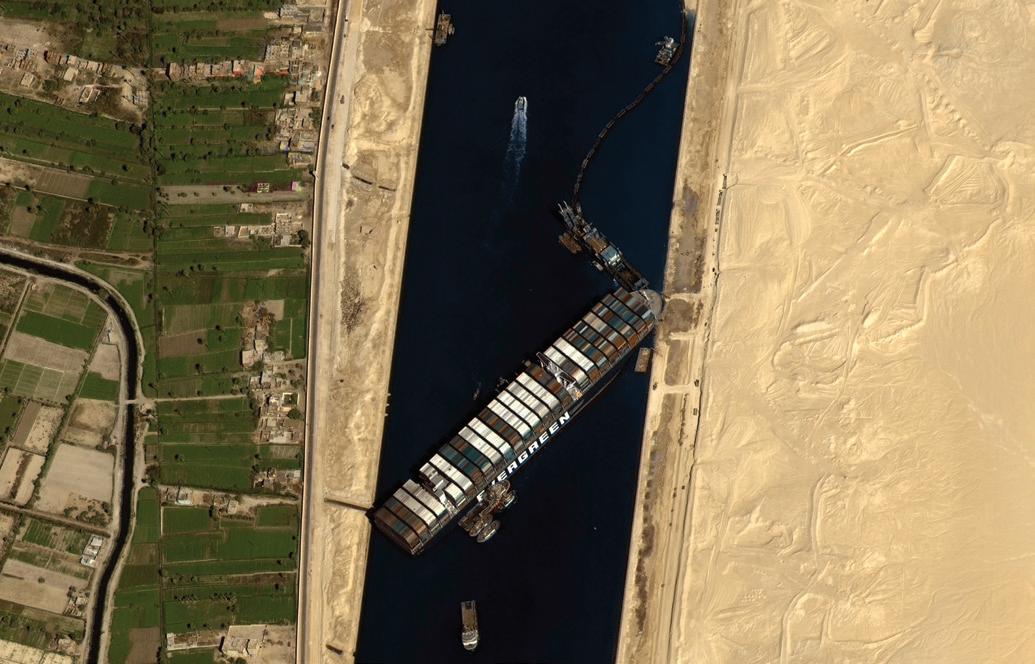
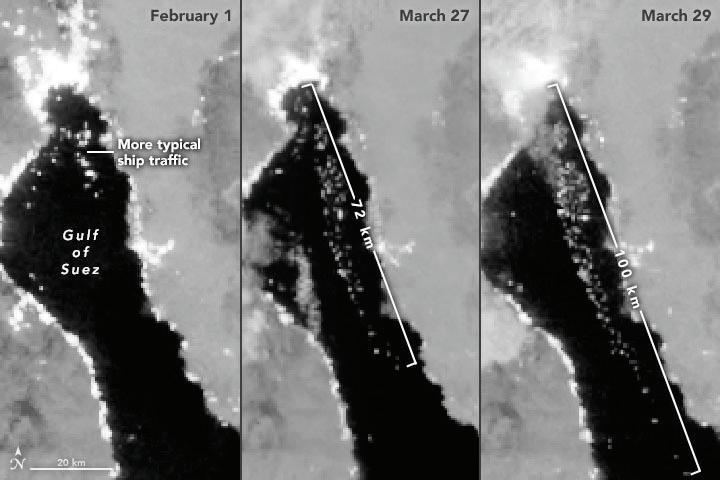


Aboriginal and Torres Strait Islander Peoples should be aware that this chapter may contain the names and images of people who have passed away.

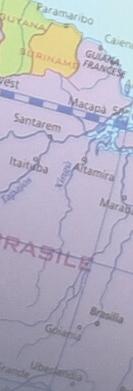







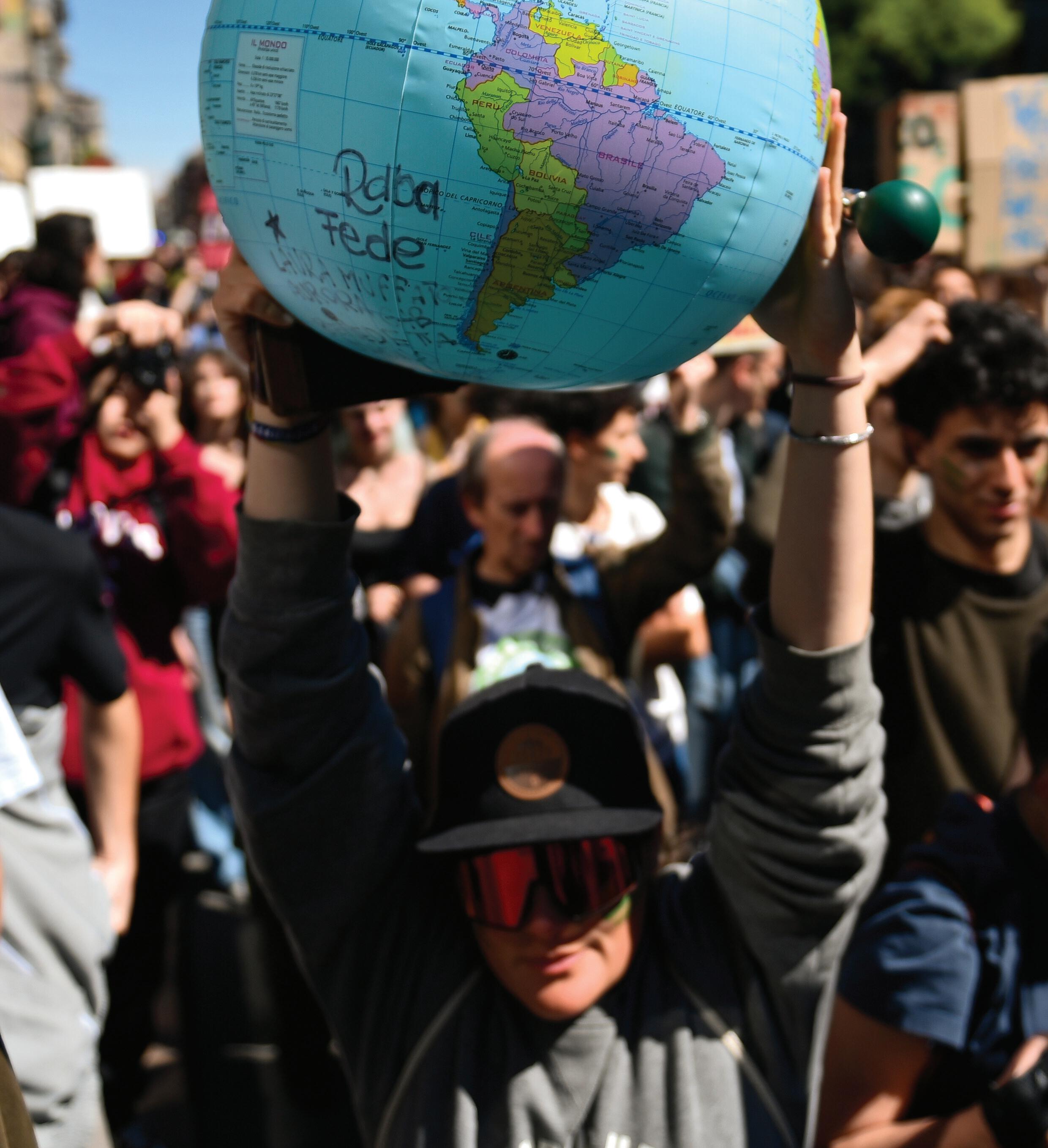

People throughout the world are connected to places and each other in many ways. The networks that interconnect us are growing rapidly through the constant development of transportation and information and communication technologies. This chapter introduces the phenomenon of globalisation. It explores how and why we are connected to people and places from a local to a global scale and the impacts of these connections on environments and societies in different places.
After completing this chapter, you should be able to answer these questions:
• In what ways are people connected to different places?
• How do transportation and information technologies connect people to services, places and other people?
• How are people connected to each other and other places through trade?
• What are the effects of the production and consumption of goods?
After completing this chapter, you should be able to:
• predict changes in the characteristics of places over time and identify the possible implications of change for the future
• identify, analyse and explain significant spatial distributions and patterns, and identify and evaluate their implications over time and at different scales
• identify, analyse and explain significant interconnections within places and between places over time and at different scales, and evaluate the resulting changes and further consequences
• collect and record relevant geographical data and information, using ethical protocols, from reliable and useful primary and secondary sources
• select, organise and represent data and information in different forms, including by constructing special purpose maps that conform to cartographic conventions, using digital and spatial technologies as appropriate
• analyse and evaluate data, maps and other geographical information using digital and spatial technologies and geographical information systems (GIS) as appropriate, to develop identifications, descriptions, explanations and conclusions that use geographical terminology.
Visit the Interactive Textbook to access:
• interactive Scorcher Quiz
• videos, image galleries and other extra materials.
• What is globalisation?
• How does globalisation interconnect people, places and spaces?
• How do our perceptions of places and use of spaces change over time?
• How are people in other countries connected to places?
circumnavigation sailing or travelling all the way around something mutiny refusal by people (e.g. sailors), to continue to obey a person in authority space-time convergence the decline in travel time between places
goods items for sale that can be moved globalisation the movement of people, money, goods, information and ideas around the world
The first circumnavigation of Earth occurred when a fleet of ships sailed west from Spain in 1519, and arrived back from the east in 1522, after crossing the Atlantic, Pacific and Indian oceans. The departing fleet consisted of 270 men on five ships. However, after mutiny, murders, illness and shipwrecks, only 19 men on one ship returned.
Today, circumnavigating Earth is simpler and much less dangerous. Moreover, rapid changes in technology mean that we continue to push the boundaries of travel. In 2019, the first non-stop flight from New York to Sydney, called ‘Project Sunrise’, carried 40 passengers across 15 time zones in just 19 hours, to become the longest commercial flight ever. Meanwhile, in Texas, the Starship spacecraft (which is designed to take people as far as Mars) has carried out six orbital test flights. The world’s largest cruise ship by gross tonnage, the Icon of the Seas, was
launched in 2024 and can carry up to 7600 passengers.
The improvements in the speed and efficiency of transportation often makes the world feel smaller than it used to, as though the world is shrinking. This phenomenon is known as space-time convergence, which simply means that the travel time between places has decreased.
Advancements in transportation and information and communication technologies have fuelled globalisation. Globalisation refers to the movement of people, money, goods, information and values around the world. It is one of the most fundamental areas of study for human geographers.
Globalisation has had an enormous impact on how and why we are connected to places, goods and each other. It has also influenced the scale of interconnections. While people have always travelled and traded, there has never been so much trade and travel over such long distances. Figure 6.2.2 highlights the large scale of movement occurring in the air.
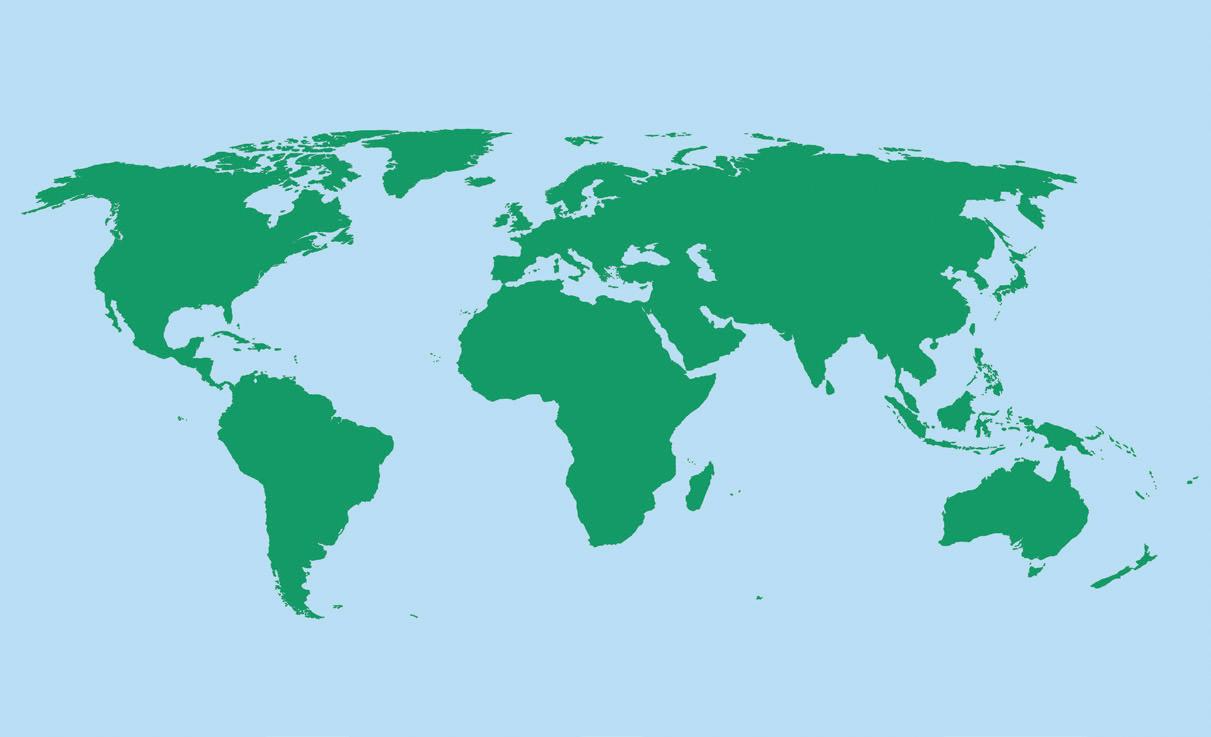
Sailing ships 16 km/h
1850–1930
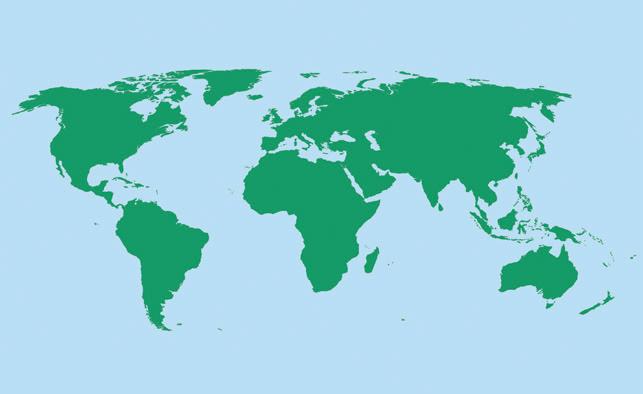
Steam locomotives 100 kmph
Steam ships 55 km/h
1950s

Propeller aircraft 480–640 km/h
1960s

Present Passenger jets 880–920 km/h
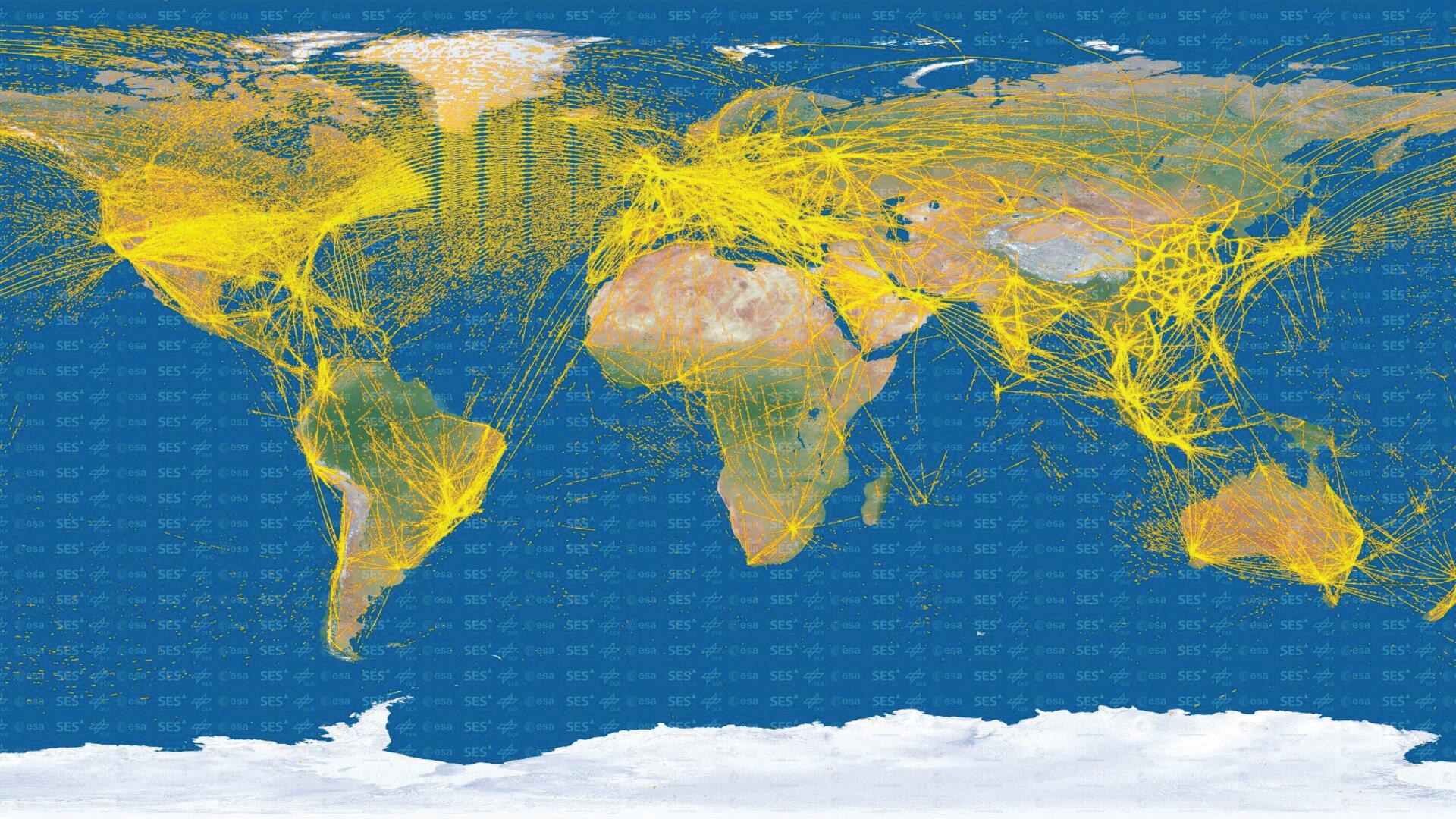
Observe Figure 6.2.2 and complete the following tasks.
1 Use the PQE method to describe the distribution of air traffic across the globe.
a Pattern – describe a pattern you notice.
b Quantify – support your pattern with at least two specific details.
c Exception – identify an exception to your pattern, using specific details.
2 Identify the densest air traffic route in the world.
3 Identify a region where the air industry could expand or grow. Why might there be less or limited air traffic in these regions? Why would this region and the globe benefit from the presence of the airline industry here?
Key concepts: space, interconnection

perception the way in which something is regarded, understood or interpreted
Not only has technology allowed the greater movement of people and goods, but it has also allowed ideas, cultures and knowledge to cross countries, without the need for physical travel. While nothing (yet) can replace the full immersive experience of travelling to a different place, there are ways, such as using Google Earth, to really see what a place is like, either from above using satellite images or from street view. A range of software is now available to permit VR users to take 3D virtual tours of famous sites and monuments without leaving your home.
HASS skills: analysing
People are also closer than ever before. When the First Fleet arrived in Australia, the letters sent to loved ones would have taken over eight months to be received. Today, we can catch up with family and friends on the other side of the world using video chat or messaging tools such as Zoom and Snapchat.
In this topic, we consider the concepts of place and space and examine how our perceptions of places and use of spaces are changing as a result of these new technologies and global interconnections.
Places are physical locations. They can range in scale from a booth at a cafe to a whole country. However, from a geographic perspective, places are also locations that hold some meaning for people.
The meaning that a place has is different for everybody, depending on the type of interconnections a person has with that place.
The concept of space relates to how human-made (cultural) and natural features are distributed on the Earth’s surface. To understand spaces, geographers:
Consider the tourists and the waiters in Figure 6.2.5.
• identify the distribution patterns of certain features on the Earth’s surface
• investigate why these patterns have occurred
• explore how these patterns have changed and are changing
• understand how these spaces are used and the impacts of these patterns and changes for people and the environment.
1 How is each group of people interconnecting with this place?
2 What meaning might Seminyak have for each group?

Key concepts: interconnection HASS skills: analysing, evaluating
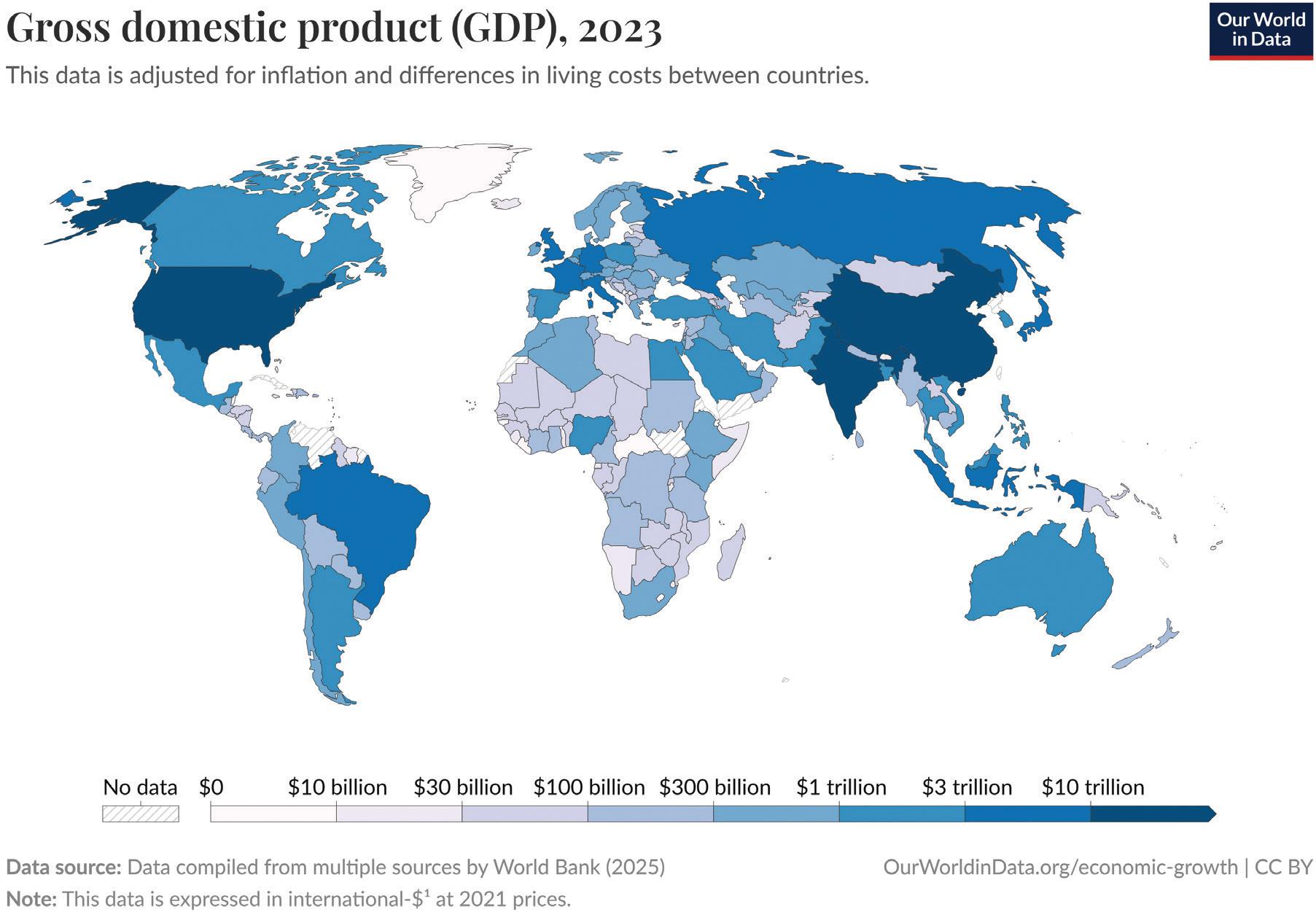
Research task
People and places are interconnected through trade. Use the Department of Foreign Affairs and Trade Statistics for Australia (https://cambridge.edu.au/redirect/11374) and Figure 6.2.5 to investigate how Australians are interconnected with other countries through trade.
1 Identify Australia's top import trading partners. How much does Australia spend on imports from these countries, and what types of goods do they import from them?
2 Identify Australia's top export trading partners. How much does Australia receive on exports from these countries, and what types of goods does Australia export to them?
3 Use your responses to the above questions to explain how Australia is reliant on its trade relationships with other countries.
4 Compare the DFAT trade statistics with the GDP data in Figure 6.2.5. Use the DQE method to describe the spatial association between Australia's top 10 trading partners and GDP.
a Degree: Give a general overview of the degree of association. Is there a strong, moderate, weak or no degree of association between the two figures? That is, does the distribution pattern of each map look similar or different?
b Quantify: Provide specific evidence to demonstrate the association. Use data to identify at least three countries that fit the pattern of association.
c Exception: Identify an example or several examples of specific places that do not fit the pattern of association. Locate and name the exception and explain why this is an exception.
Key concepts: interconnection
As we age, the spaces that we use and the way that we perceive certain places can change as our needs and interests change. For example, the spaces where you played as a young child (such as the local playground) may not be the spaces where you socialise today. Moreover, the ways that people connect with each other have been changing over time as technology plays an increasing role in our lives.
HASS skills: questioning and researching, analysing, evaluating
Many people have a spiritual connection to a place that connects back through thousands of years of ancestry. For many Aboriginal and Torres Strait Islander Peoples in Australia, their relationship with the land remains fundamental to their identity. Only in the mid-20th century has the formal recognition and protection of sacred sites been legislated. Today, societal awareness is building as more locations regulate the use of sacred sites and acknowledge historical ties using dual naming of places.
The fact that more teens and young adults are connecting to each other online can also change the way people feel about places and how they use spaces. For teenagers in the past, the bedroom was a place to retreat from the world, while today it may have a vastly different meaning. It can be a portal to an online community, where people interconnect on an international scale via platforms such as YouTube, Twitch and TikTok. This change over time is highlighted by Figure 6.2.7, which shows the different usage of online gaming between two different age groups in Australia.

A
Bureau of Statistics
6.2.6 The proportion of each age group who plays video games in Australia
Source: Annual report by Interactive Games and Entertainment Association (2023)

3: Rela tionship to people with whom they play onl ine games
Figure 6.2.8 In 2019, 16-year-old American Jordan Hergoz, screen name Crimz, spent an average of at least 8 to 10 hours a day playing Fortnite to become one of the best competitive gamers in the world. His father has spent over $40 000 on state-of-the-art equipment for him to train with.
Q. In the past year, have you played video games online with any of the following?
Base: 1,799 gamers aged 8–17
Q. In the past year, have you played video games online with any of the following?
Base: 1,799 gamers aged 8-17
6.2.9 Who teenagers are gaming with online
Source: eSafety Commissioner, Leveling up to stay safe Report (February 2024)
Figure 5: Feelings experienced while gaming, along with associated colours
Figure 5: Feelings experienced while gaming, along with associated colours
Happy / good
Calm / relaxed
Excited / energised
/ engaged / not bored
/ belonging / less alone
Competitive / challenged
Angry / frustrated
OK / neutral
Creative
Stressed / anxious
Bored
Another feeling Don’t know
Q. How does playing video games online usually make you feel? What colour matches that feeling? Why? (Free text response)
Base: 1,799 gamers aged 8-17
Q. How does playing video games online usually make you feel? What colour matches that feeling? Why? (free text response)
Base: 1,799 gamers aged 8–17
Figure 6.2.10 How teens feel playing online games with others
Source: eSafety Commissioner, Leveling up to stay safe Report (February 2024)
Figure 6.2.9 shows that 40 per cent of Australian teens game with people they don’t already know. The eSafety Commissioner also found 58 per cent of young gamers surveyed felt that gaming had helped them with their social connections, such as getting to know their friends better or making new friends. Figure 6.2.10 shows that young gamers surveyed overwhelmingly gave positive responses regarding how they felt while playing online games. On the other hand, the survey also revealed that one in three young gamers have been bullied at some point.
Analysis questions
1 Research online the latest statistics on video game play in Australia and globally. What percentage of adults play video games in Australia today?
2 ‘The way that people use spaces can change over time.’ To what extent do you agree or disagree with this statement? Use Figures 6.2.7 and 6.2.8 to support your argument.
3 Now you can do you own research. Conduct a survey to measure the use of online gaming and/or use of social media between different age groups and the impact of these activities on people’s sense of connectedness and community.
Key concepts: interconnection
HASS skills: communicating and reflecting
Internationally recognised, Uluru has been an iconic landform of Australia with more than 250 000 tourists visiting the Uluru-Kata Tjuta National Park each year. The area has significant economic value to the local community and the wider Northern Territory. In 2023 alone, tourism in the Northern Territory contributed $784 million and 4.7 per cent of the workforce was directly employed by the range of industries involved.
For the Traditional Owners of this area, the Anangu people, Uluru and the nearby Kata Tjuta rock feature are sacred sites. Both feature in the Tjukurpa creation stories that describe ancient beings that created the landscape.
Prior to 1993, Uluru was given the English name ‘Ayers Rock’ by the surveyor William Gosse who was the first European to visit and climb the landform. After 1993, a dual naming policy was applied to acknowledge the historical name resulting in ‘Ayers Rock/Uluru’ being applied. In recognition of the thousands of years of oral history naming this site, the name of the site was changed to ‘Uluru.’ The act of dual naming this location has shifted the perception of the site as simply a tourist destination, to a location of significant cultural and historical meaning to the Anangu people.
For many years, a popular tourist activity was to climb Uluru as a recreational activity. This activity not only presented a danger to tourists, but the rock itself was being eroded from the path commonly taken to reach the summit. The action of climbing Uluru is considered a violation of Tjukurpa for the Anangu people and their calls to ban the activity were achieved in 2019.
Today, Uluru-Kata Tjuta National Park is valued for many reasons. The site welcomes tourists to learn about the traditional heritage and culture of the Anangu people and offers a range of ecofriendly experiences. The park directly and indirectly supports the local economy and provides a range of employment opportunities. It stands as a national example of sustainable tourism.


1 Explain how the perception of Uluru differs between groups of people.
2 Research online to discover more ways Uluru-Kata Tjuta National Park has been protected, including returning the title deeds and UNESCO World Heritage Listing.
3 Investigate your local area for locations with dual naming.
a Identify the location and its dual name.
b Identify the Traditional Owners of this location and explain the meaning behind the dual name.
Key concepts: place, change, interconnection
HASS skills: questioning and researching, communicating and reflecting

People connect to places in a variety of ways. These connections can be categorised into four main areas: economic, cultural, spiritual and historical. For some, including subsistence farmers, their place provides them with the resources they need to survive.
Think, pair, share
Watch the video available via the QR code to work through this activity.
For those who have survived war or revolution in their home countries, their nationalism heavily influences their connection to place. We can also connect to places through work, travel, leisure and recreational activities. In this era of globalisation, trade connects us to many places that we have never visited. For isolated places and peoples, technology is connecting them to the wider world.
Should tourism be banned at the Kawah Ijen volcano? Consider both positive and negative impacts in your answer. Share your thoughts with a partner and justify your opinion.
Compass points
Propose one idea that could make the interconnections between tourists, miners and the volcano more sustainable. Swap your idea with a partner and evaluate the idea using the following criteria:
1 E = Excited
What excites you about this idea or proposition? What’s the upside?
2 W = Worrisome
What do you find worrisome about this idea or proposition? What’s the downside?
3 N = Need to know
What else do you need to know or find out about this idea or proposition? What additional information would help you to evaluate things?
4 S = Stance or suggestion for moving forward
What is your current stance or opinion on the idea or proposition? How might you move forward in your evaluation of this idea or proposition?
Key concepts: sustainability, interconnection
HASS skills: analysing, evaluating, communicating and reflecting
The Surui
The Surui are a tribe of Indigenous people who live in the Rondônia region of the Amazon rainforest. They have a long, ongoing connection to the place, both physical and spiritual, and only made contact with the outside world in 1969. They know every tree in their area and continue to hunt with bows and arrows. However, their livelihoods have been at risk due to illegal logging and mining.
When Surui leader Chief Almir discovered Google Earth, he knew he was on to something. The new chief has helped his tribe use detailed satellite imagery from Google Earth Outreach to monitor and report illegal behaviour. This has been successful, as the Surui’s home is the only remaining piece of intact rainforest in the region.
They also use smartphones to monitor the animals they kill, to ensure they are hunting sustainably, and have worked with Google Earth to create an interactive cultural map that provides outsiders with a deeper understanding of a place that means so much to the Surui.
Analysis questions
1 Describe the distribution of deforestation in Figure 6.2.14.
2 What does this suggest about the effectiveness of the Suruis’ environmental monitoring and reporting methods?
Key concepts: interconnection, space
Section 6.2 review
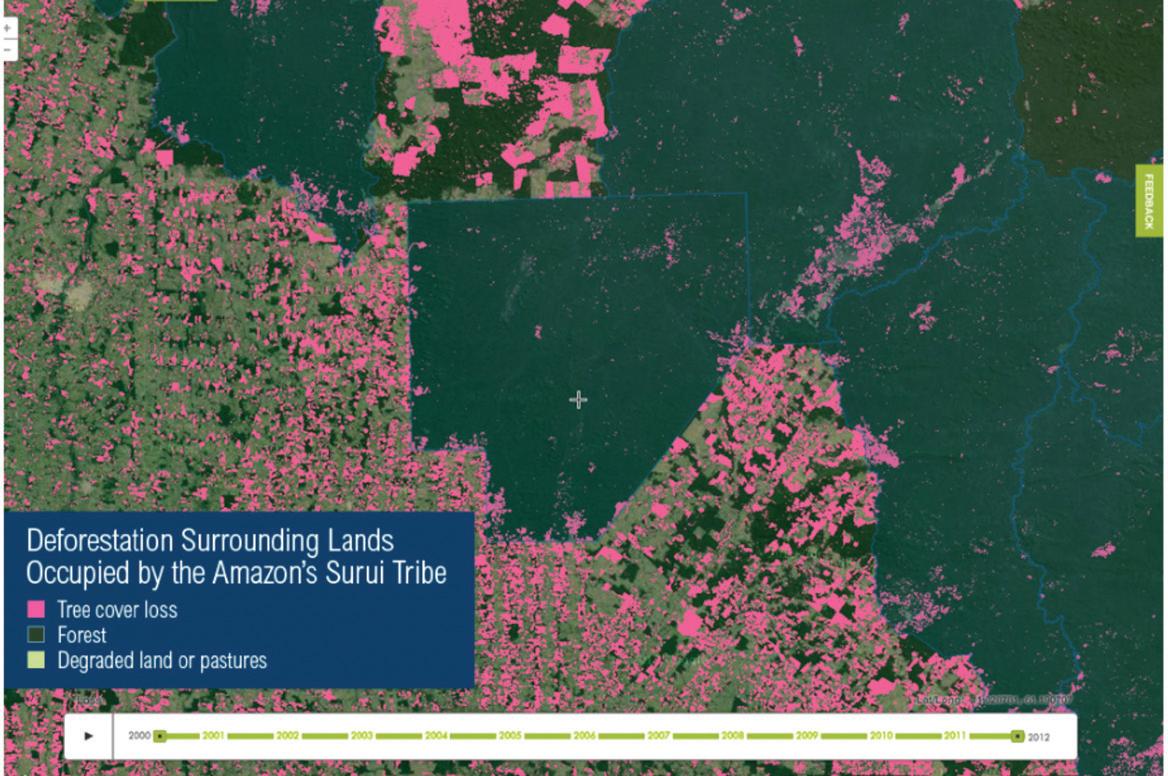
Figure 6.2.14 Satellite image of the Surui tribe’s region and the surrounding region ➜
HASS skills: analysing, evaluating
6.2 Review questions
Recall
1 Define the terms ‘globalisation’ and ‘gross domestic product’.
2 Explain the geographic concepts of ‘place’ and ‘space’.
3 Identify which advancements have fuelled globalisation.
4 Identify three different ways that people are connected to places. Interpret
5 Explain what meaning you think the place Rondônia has to the Surui.
6 Explain how the Surui use the space in Rondônia.
7 Describe how the Surui use spatial technology to protect the Amazon rainforest.
8 Discuss how globalisation connects people to places that they have never visited before. Argue
9 Discuss the positive and negative impacts of online gaming and/or social media. Refer to the data in this section and your own experiences in your answer.
Apply 6.2 questions
1 Look up ‘Surui Cultural Map’ on YouTube and download the Surui Cultural Map KMZ file through the link that is in the video description. Explore the map to answer the following questions about the Surui.
a What is considered to be a spiritual animal that cannot be eaten?
b Name and locate three villages using their absolute location.
c What do the Surui eat when they have the flu?
d What plant is used by the Surui to build houses?
Key concepts: place, space, change
e What fibre is used to make handicrafts?
f What fruit are children not allowed to eat, and why?
g What spiritual significance does the jaguar have to the Surui?
skills: analysing, communicating and reflecting
Go online to access the interactive section review and more!
• How are information and communication technologies used to connect people to information, services and people in other places?
• How have information and communication technologies made it possible for places to provide global business services?
• Do people have equal access to the internet around the world?
• How do transport networks connect people to services?
services public needs such as transport, communications, utilities and healthcare
Transport networks are vital to connecting people to basic services to ensure a quality standard of living. However, transport networks can be frustrated by the physical
geography of a region. For example, Papua New Guinea is located in the south-western Pacific region. Its physical geography consists of beaches and coral reefs on the coast, while inland there are active volcanoes, dense rainforests (including the Kokoda Trail) and steep topography.

There are only 22 000 km of roads, and half of these are not sealed. People in the highlands region are cut off from the rest of the country – and the world – for six months of the year due to the risk of landslides. This prevents access to services, jobs and trade. Sixty per cent
of the population have no access to safe water and 70 per cent lack access to basic hygiene services. This results in poor health and diseases, malnutrition and stunting, and low business and tourism opportunities. It also makes disasters such as landslides difficult to recover from.
Interpretation activity
Study Figure 6.3.2.
1 Describe the distribution of topography in Papua New Guinea.
2 In what ways does topography influence people’s access to services?
Study Figure 6.3.3.
3 Describe the distribution of roads in Papua New Guinea. Ensure that you distinguish between primary, secondary and tertiary roads.
Key concepts: place, interconnection
In Australia, transport networks are changing the way we connect to retail services. The role of Australia Post has changed from primarily delivering letters to becoming a courier service that facilitates the growing use of online shopping.
New technologies such as drones will also play a greater part in providing a convenient online shopping service to people. While drone delivery is more fuel-efficient than other forms of transport, there are laws regarding the airspace above private property that may limit the scale of this service.
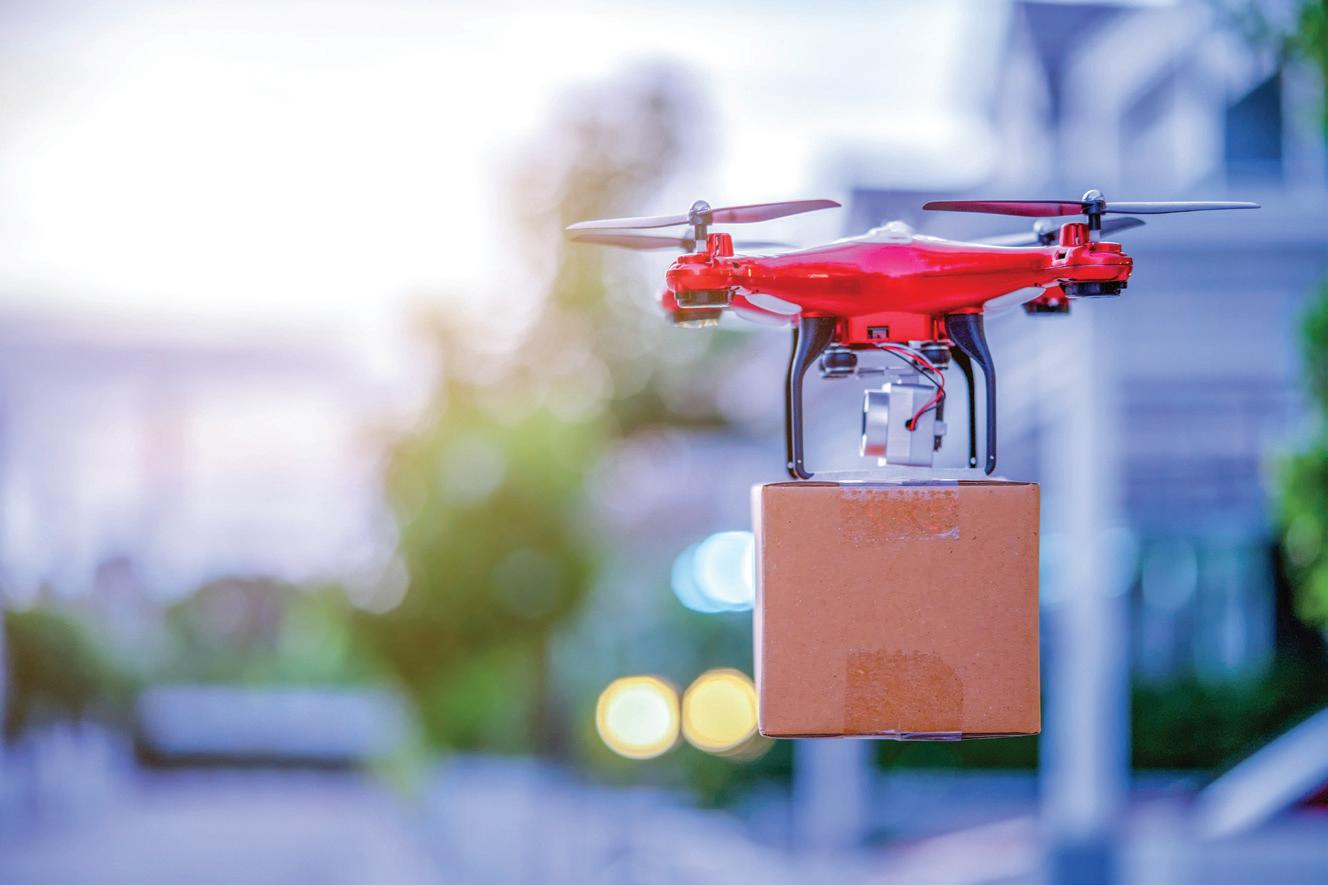
HASS skills: analysing, evaluating
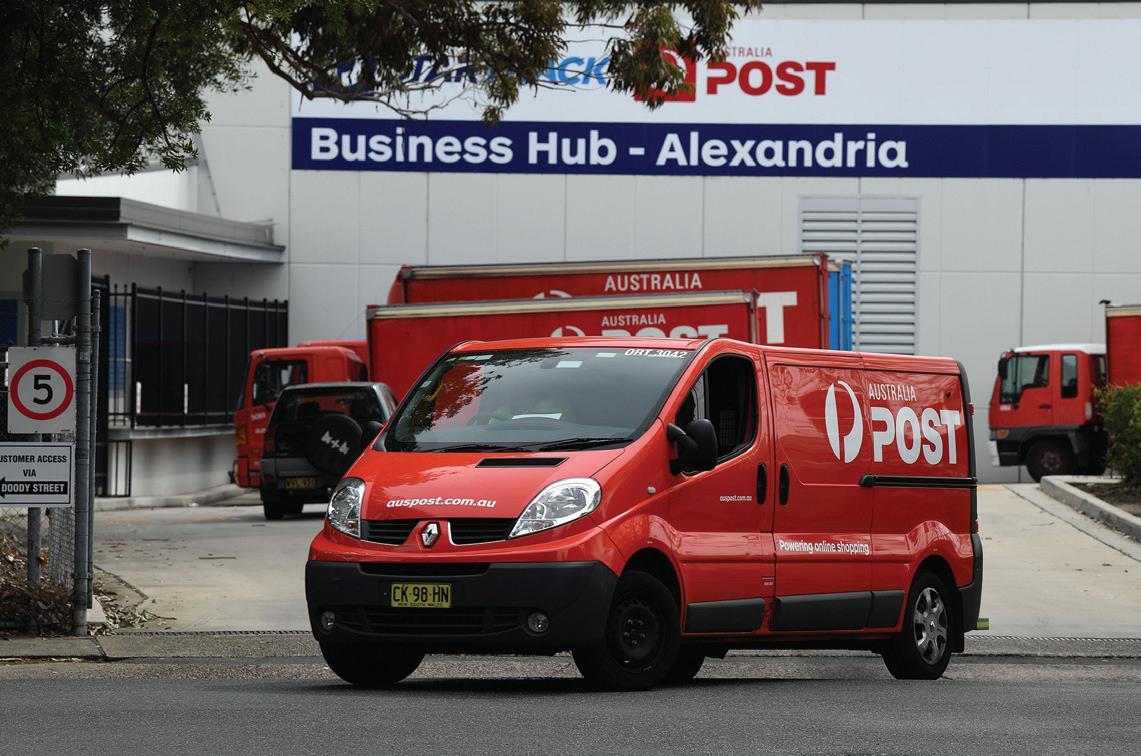
Autonomous (self-driving) trucks are being trialled and could relieve pressure from the transportation and logistics industry. Trains using magnetic levitation technology can transport passengers at great speed, allowing people to live further from urban centres without the consequences of long commutes. Hybrid cargo airships have the potential to redefine the transport of freight while minimising our carbon footprint. All these new technologies could minimise the travel time of people and services in the near future.
The Royal Flying Doctors Service (RFDS) has been in operation since 1937 where it established its first base in Kalgoorlie. Today, the RFDS has a team of nearly 400 staff, five bases and 22 aircraft that provide a range of medical services to remote Western Australia. The provision of this service bridges the gap between remote regions and essential services improving health outcomes for people living in rural and Indigenous communities. Where geographic barriers existed, the RFDS can access even the most isolated individuals and ensure they have equitable access to health services.
are information and communication technologies used to connect people to information, services and people in other places?
Information and communication technologies connect us to a variety of services, information and people. They operate from a local to a global scale. Today these connections can begin at a very young age – from children using educational apps at home, to families connecting with relatives using social media and individuals having their medical records stored on government databases.
Historically, the physical geography of a place played a significant role in what information and communication people could access. For instance, China’s impressive mountain ranges, which include the Himalayas, and the cold and unforgiving Taklamakan and Gobi deserts, ensured that China was economically and culturally isolated from Western civilisation until the Silk Road began to create a trade passage out of China in 130 bce. Even today, Australia’s physical isolation from other countries has contributed to the fact that many Australians are less likely

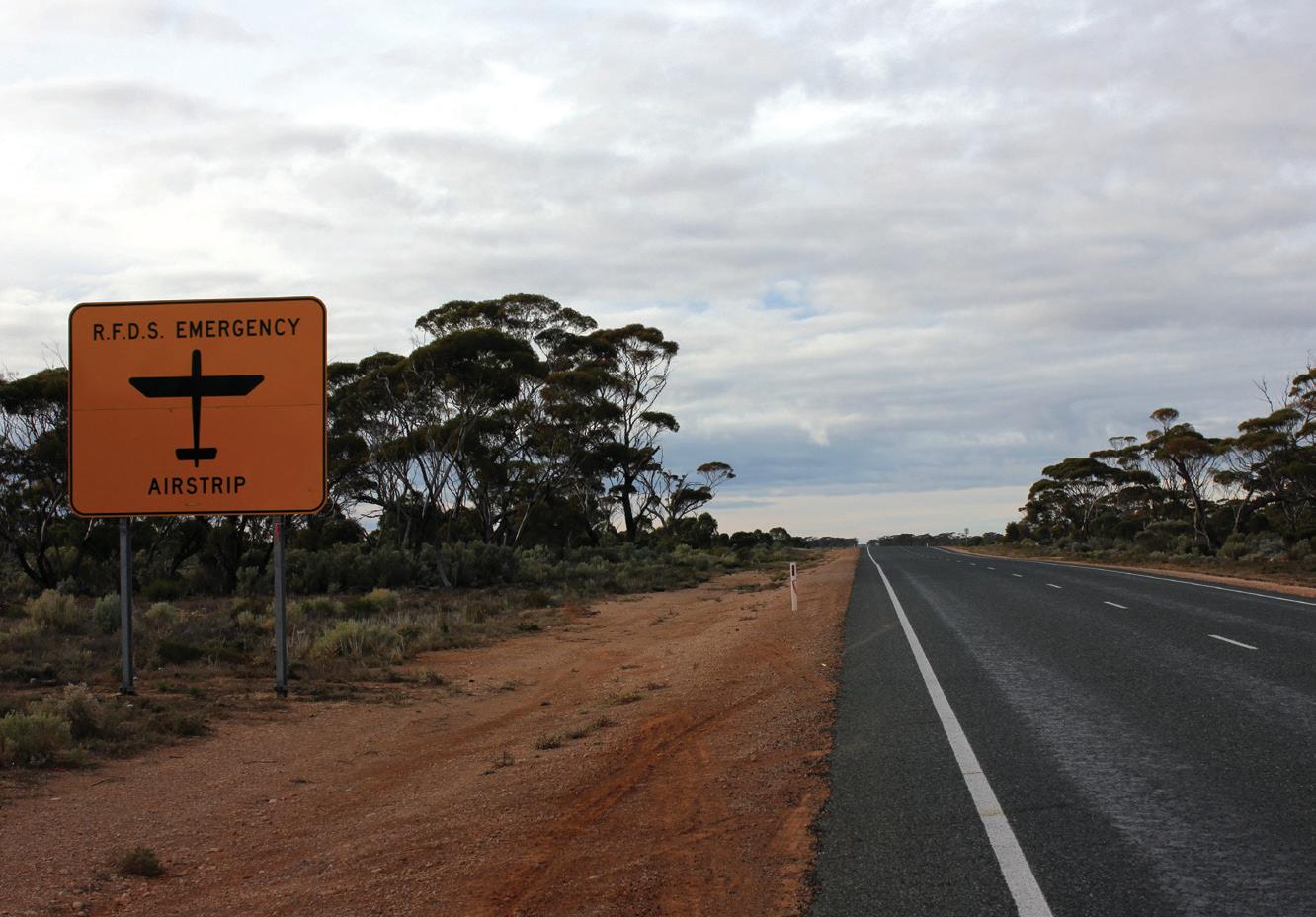
to know a second language compared with Europeans, who live much closer to foreign countries where different languages are spoken.
Technology has provided people with opportunities to connect and work together to face challenges in ways that overcome borders and make learning accessible to people in places all over the world. In this section, we explore some of these connections through a variety of case studies.
remote an isolated area very far away from urban centres
Connecting information and people: Alice Springs School of the Air
Alice Springs School of the Air (ASSOA) was established in 1951 to provide education to students living in remote regions of central Australia. For decades, ASSOA relied on two-way radio broadcasts. Students received instruction by pedal-powered radio and schoolwork by mail. Completed schoolwork was also sent by mail, which was a particularly lengthy process in the remote regions of central Australia.
A significant change occurred in 2006 when satellite technology was introduced and satellite dishes were installed at student sites. This allowed a learning platform called REACT (Remote Education and Conferencing Tool) to be used to support video communication. Some of the features, benefits and limitations of REACT are shown in Table 6.3.1.
Table 6.3.1 Benefits and limitations of the Remote Education and Conferencing Tool
Students
• Can see and talk to their teachers and other students
• Can re-size the video image of the teacher, so they can receive communication while working on their computer
• Can quickly share materials with their teacher and other students
• Can have learning conferences with overseas students
This technology, in addition to email, Google apps for education, Edmodo, Webex and other tools, has enhanced the communication between teachers and students, as well as the sense of community and belonging that is so important to the purpose of ASSOA.
Today, Western Australia has five Schools of the Air located in Port Hedland, Kalgoorlie, Carnarvon, Kimberley and Meekatharra. These schools provide a range of educational services to almost 300 students who live beyond the normal reach of a school.
Analysis question

Figure 6.3.8 Pedal-powered radio was used by early School of the Air students
Teachers
• Can demonstrate skills and include media such as video and music
• Cannot see the students
• Can quickly share materials and feedback with students

Figure 6.3.9 Anna Jackson, a School of the Air student, completes her schoolwork at home, three hours from Broken Hill, New South Wales, with her dog alongside her.
Create a table that summarises the benefits and limitations you may have experienced during the COVID-19 school closures when completing online learning.
Key concepts: interconnection
HASS skills: communicating and reflecting
Being able to speak the language of your culture is a human right. However, a third of the world’s Indigenous languages are now under threat of extinction. Conservative estimates suggest that by the year 2100 more than half of the world’s languages will be extinct.
Researchers believe that up to 700 languages were spoken in Australia prior to British invasion. Today, only 100 Indigenous Australian languages remain. This is due to many factors, including the limited resources available to share these languages with younger generations. Information and communication technologies are playing a role in preserving Indigenous languages around the world.
For example, researchers have recently created Opie, a little robot consisting of two tablets in a wooden frame. One tablet consists of eyes that follow the student, and the other stores memory games, stories and pronunciation guides in Indigenous languages. Opie aims to help Indigenous children learn their ancestors’ language, and keep alive the languages that we have left.
By using and sharing their languages, Indigenous people create stronger connections to their culture. One person involved in this is yutustanaat, a member of the Snuneymuxw First Nation and a language teacher in British Columbia, Canada. She was one of many Indigenous people from around the world who participated in recording their language for Google Earth.
Indigenous people make up less than 6 per cent of the world’s population and yet speak more than 4000 of the world’s 6700 languages.
Nyungar wangkiny or speaking and understanding our language is central to our identity. We need to commit to reinvigorating our cultural heritage and teach our kurlonggur (children) so that they know where they come from, once they learn the language they can start to make that connection to their cultural identity and heritage and go forward with pride into the future.

Websites and apps, such as Duolingo and Babbel, are also helping people to learn new languages and communicate with people from other countries. In business, learning the language of trade partners is proving to be an important skill. Benefits for business include:
• helping employees communicate with international customers, which increases the chance of making a sale
• saving money by reducing the need to hire translators
• retaining customers – employees who can speak to customers in their own language can build relationships and trust and increase customer loyalty
• language training for staff to help them feel rewarded and motivated to lear n.

Consider the apps on your phone. Which of these help you to connect to services and people? Today, there are apps for food delivery, transport, dating, listening to music from across the world, shopping and, of course, socialising with friends. This section gives some examples of technologies that are changing the way we connect to services in a significant way.
Rapid changes are occurring to the way medical and emergency services are provided. The use of the artificial intelligence (AI) system known as Babylon is growing at a rapid rate in the United Kingdom. The app allows people to have a video conference with a virtual GP for free. Bookings can be made 24/7 and the consultation can usually take place within two hours of booking. Prescriptions can be ordered and home delivered. Health history is securely stored and referred to in follow-up appointments. The app also provides health checks when people include their family history and health details and it assesses their health. It is said to be approximately 80 per cent accurate (greater than the general human-GP average of approximately 72 per cent accurate).
However, the app does have its flaws. For instance, a 48-year-old smoker presenting with sudden sweating and chest pain was advised to see their GP rather than calling emergency services. These are symptoms that could indicate a heart attack and so could have cost the patient their life. The other flaw stems from its popularity. So many people in London are turning to this app that it is placing strain on the healthcare system, which had not prepared for such a scale of change.
In Australia, the GoodSAM app connects people who have first aid qualifications to people experiencing a cardiac arrest. When an ambulance is notified of a cardiac arrest, first-aiders in the area are also notified and may be able to attend to the person to perform cardiopulmonary resuscitation (CPR) while the paramedics are on their way. Similarly, Facebook Crisis Response connects people who can offer help in a crisis to those in need, as well as receiving updates and communicating with concerned loved ones.
Since it went global in the 1980s, the internet has experienced rapid improvements in speed and reliability. Moreover, telecommunications such as telephone lines and wireless signals have also been integrated with more sophisticated technology and software. These developments have made it possible for some people to work more locally (including from home) and for businesses to operate more globally. For example, businesses can outsource their customer service to overseas call centres.
Case study 6.5
Offshore outsourcing is when a company hires another company to operate one part of its business overseas. Some Australian businesses outsource their customer service and telemarketing services to organisations within other countries.
India has been a popular choice for Australian businesses because of its time zone (or willingness of workers to work through the night), cheap labour and large English-speaking population. In 2023, the call centre market in India was valued at approximately US$ 3.47 billion dollars with projections that it could increase to US$ 9.04 billion by 2030. The cities of Bangalore, Mumbai, Delhi, and Hyderabad have the highest concentration of call centres.
India is currently investing in the largest rural fibre-optic roll-out ever seen worldwide. This will connect 600 000 rural villages to broadband internet. The enormous enterprise could lead to customer service and telemarketing work moving to rural regions in the future.
1 What is offshore outsourcing?
2 List some pros and cons of this business practice.
Key concepts: place, interconnection
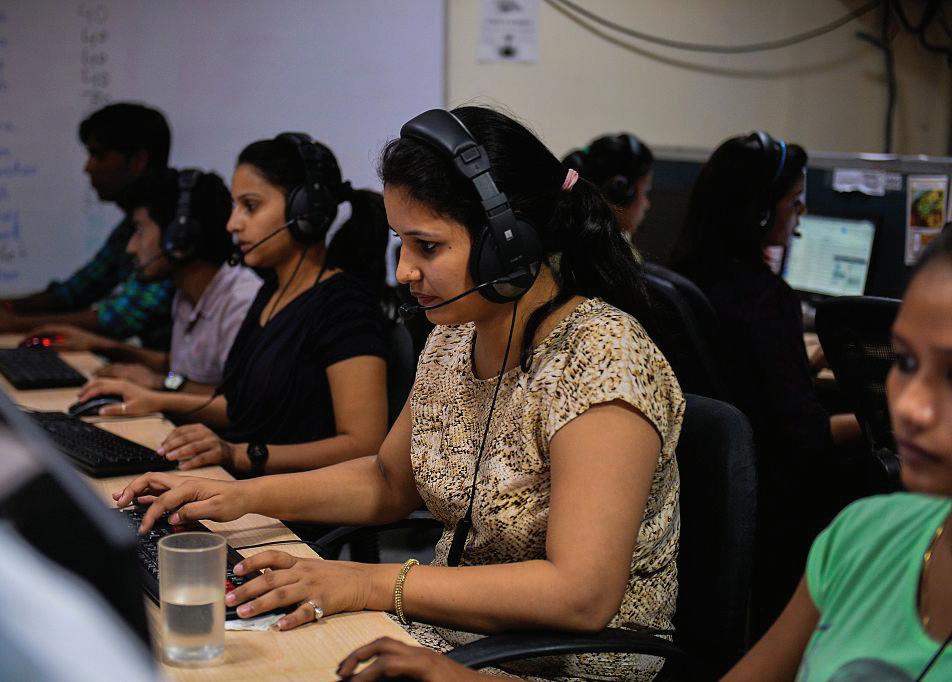
HASS skills: questioning and researching, evaluating
Information and communication technologies is a resource that has transformed our interconnections with services, information and each other. However, not everyone experiences the same ability to use this resource. For some people, there are barriers to connections. These barriers can be economic on a household scale
(for example, the internet may be too expensive for a family or individual to access), or they may be economic on a national scale (for example, the cost of building the internet infrastructure for remote areas may be considered too expensive to implement). However, internet access is growing in all regions of the world, and many more people are being connected by it.
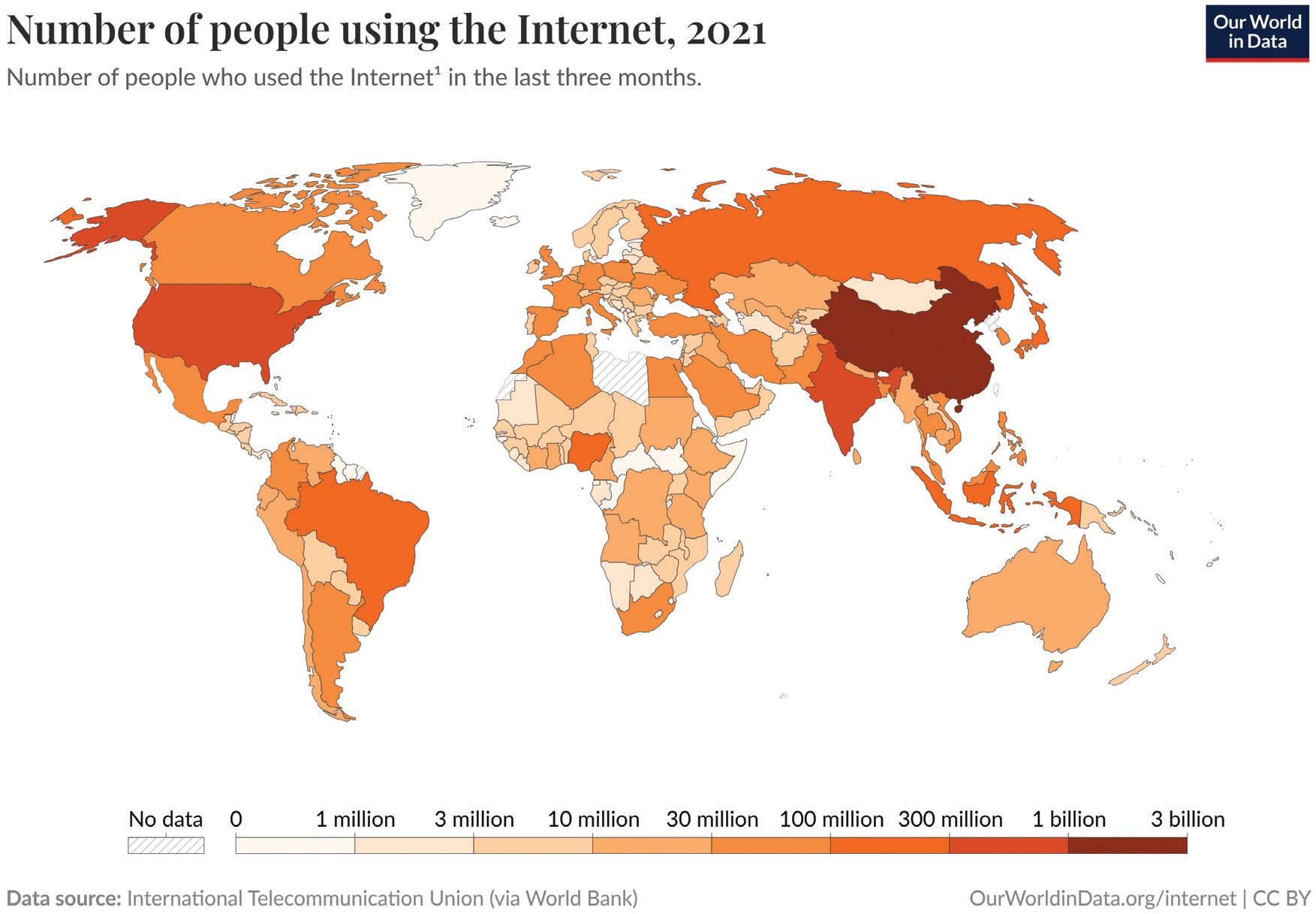
Geography through maps
Interpretation activity
1 Describe the spatial pattern shown in Figure 6.3.13 using the PQE method.
2 What factors might account for the distribution of internet use as seen in Figure 6.3.13?
3 With a partner or as a class, discuss what may be the consequences for countries that have low internet use.
Key concepts: interconnection HASS skills: analysing, evaluating, communicating and reflecting
Starlink is a network of satellites developed by the company SpaceX. It aims to provide lowcost internet to remote locations. As of January 2025, there were 6994 Starlink satellites in orbit. Not all of these are functional as the lifespan of the technology is approximately five years, which raises ethical concerns regarding space junk and the hindrance to astronomical observations. Despite this, SpaceX aims to create a network of 42 000 satellites in the near future.
Starlink is able to offer internet services to areas without reliable access, closing the digital divide. A Starlink customer connects directly to the satellites overhead, eliminating the need for internet infrastructure such as cell towers or fiber optic cabling. Traditional NBN in Australia relies on two satellites, located 35 000 kilometres away. Starlink’s network circles low in Earth’s orbit, at about 550 kilometres above Earth, which decreases its latency. This is particularly beneficial for people in rural or remote regions, and for caravanning holidaymakers. As of February 2025, there are around 200 000 Starlink connections in Australia.
Analysis questions
1 Explain how Starlink could close the digital divide.
2 Describe the distribution of broadband availability in Australia using the PQE method (see Chapter 5, Section 5.2).
3 Compare the distribution of broadband availability in Australia with the availability of Starlink. What do you observe?
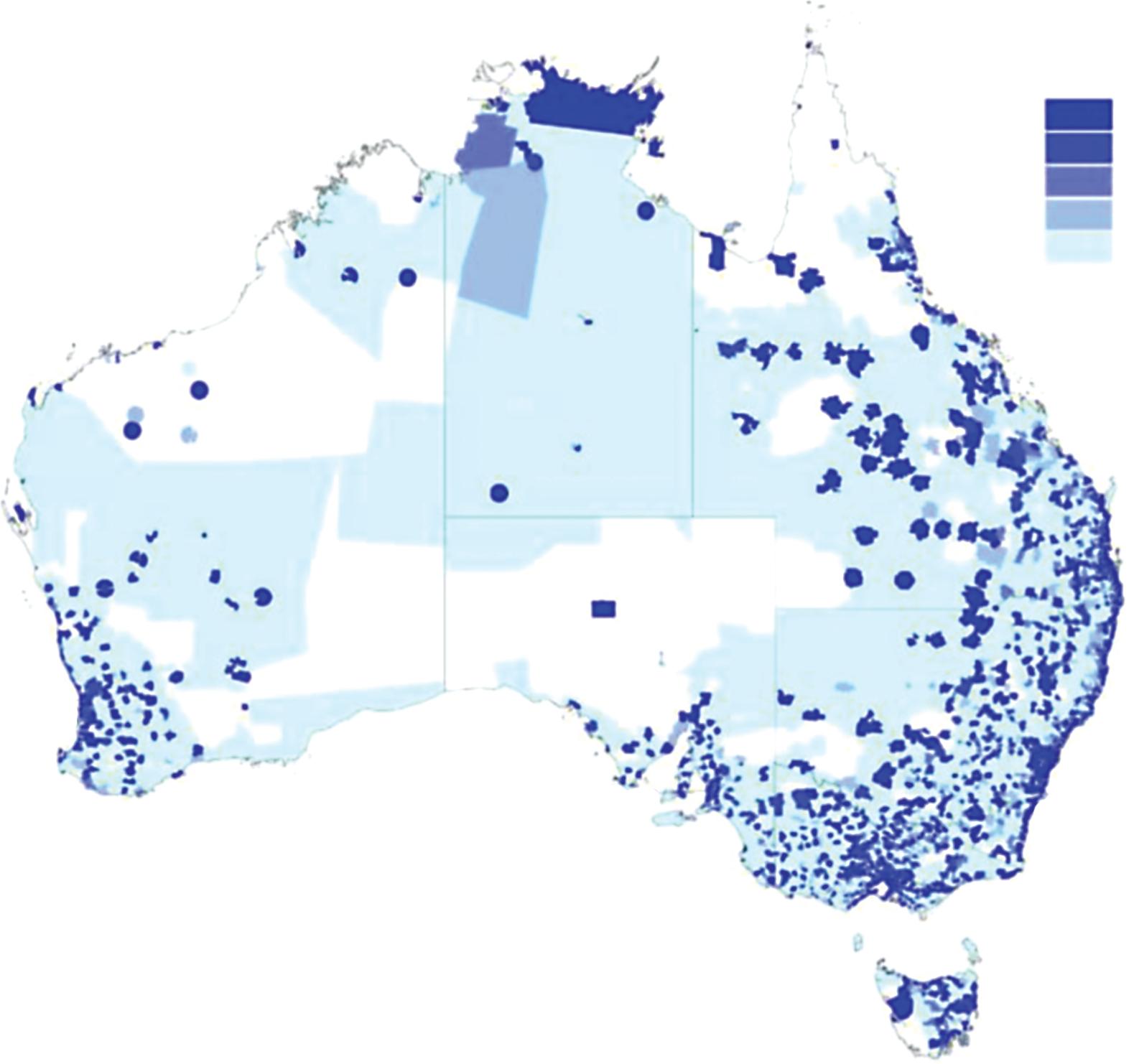
Availability rating by ESA
Interpretation activity
Study Figure 6.3.16.
Share of the population using the Internet
Share of the population who used the Internet¹ in the last three months.
North America (WB)
Europe and Central Asia (WB)
Latin America and Caribbean (WB)
East Asia and Pacific (WB)
Middle East and North Africa (WB)
World
South Asia (WB)
Sub-Saharan Africa (WB)
1990
1995 2000 2005 2010 2015
Data source: International Telecommunication Union (via World Bank) (2025) OurWorldinData.org/internet | CC BY
1. Internet user: An internet user is defined by the International Telecommunication Union as anyone who has accessed the internet from any location in the last three months. This can be from any type of device, including a computer, mobile phone, personal digital assistant, games machine, digital TV, and other technological devices.
Figure 6.3.16 Share of the population using the internet per region
1 Describe the overall trend of world internet use.
2 How many people in the world had access to the internet in 2015?
3 Which region experienced the greatest increase in the share of their population using the internet between 2015 and 2023? Provide data to support your response.
Key concepts: place HASS skills: analysing
6.3.17 Think of all the ways you use the internet every day.

Recall
1 Explain how businesses benefit from their employees learning new languages.
2 Define offshore outsourcing.
3 Describe what makes India a good place for customer services and telemarketing.
4 State how many Indigenous Australian languages were spoken in Australia prior to British invasion.
Interpret
5 a Explain the change that has occurred at Alice Springs School of the Air.
b Describe the impacts of this change.
c Discuss the strengths and weaknesses of distance education.
6 Identify transport or information and communication technologies from this topic that help perform the following tasks (note that many of the technologies discussed fit into more than one category):
a connects people to a service
b connects people to information
c connects people to other people.
7 Outline some of the impacts that can result from having a poor transportation system.
Argue
8 Discuss why you think it is important to be able to speak the language of your ancestors.
9 To what extent can the physical geography of a place impact people’s access to services. Make reference to the case studies provided in this chapter in your answer.
1 Look up ‘Google Celebrating Indigenous Languages’ online to read about this initiative. Using the knowledge that you have in your class of other languages, create a Google Earth project presentation (please note that this will require use of a Google account login). You can find a guide on how to create Google Earth projects online by looking up ‘Create a map or story in Google Earth Web’. Write down a couple of words/sentences that you know of another language. Record these and then add them to the country the language is from. Collect these maps together to form a presentation world tour of different languages.
2 Invent your own transport or information and communication technology that connects services to people. Present your invention to your group or the class.
Key concepts: place, space, interconnection, change
HASS skills: questioning and researching, analysing, evaluating, communicating and reflecting
• How and why are people and places interconnected regionally through trade?
• How are products and services in your local region traded?
• How and why are people and places interconnected globally through trade?
The phenomenon of globalisation has not only influenced how we perceive places and use spaces; it has also created connections between people and places all over the world, whether we are aware of these connections or not. Many of these connections have been formed through trade. Trade simply refers to the buying and selling of goods and services. Goods are items that can be sold and moved, while services involve doing work or performing a task for others.
Goods and services are traded at all scales, and we are constantly participating in different scales of trade. For example, if you have dinner at a local, familyowned restaurant, you may be engaging in local-scale trade. The food that you eat, however, may have been transported to the restaurant from another state or even overseas, and therefore have been involved in national or international trade. If you pay for this meal using a smartphone, which is manufactured by using a vast network of materials and labour from across the globe, you are playing your part in a global network of trade.
In this topic, we explore the ways that places and people are interconnected with other places through trade in goods and services at different scales.

The concept of scale is about the way that geographical phenomena and problems can be examined at different spatial levels. It also can refer to how different geographical phenomena relate to one another. Pop this concept into your memory bank – at the end of this book is an activity that will test your understanding of this, and other key HASS concepts!
Scale
Scale refers to the size or amount of something. In Geography, we can determine the distances between places on a map, or the size of an area, by reading the scale. Examples of what we call ‘map scale’ are shown in Figure 6.4.2
Map scales
Word/written scale
One centimetre represents four kilometres
Ratio scale
Kilometres 1:250 000
Linear/bar scale
Figure 6.4.2 Examples of scales found on maps, otherwise known as ‘map scales’
Another version of scale is what we call ‘observational scale’. The most commonly used observational scales are identified in Table 6.4.1.
Table 6.4.1 Examples of observational scales
Observational scales
Local scale A local area, such as a street, school, suburb or town
Regional scale Regions are areas that share the same or similar geographic characteristics. Regions can vary in size. Smaller regions may include a few towns or suburbs – for example, the Swan Valley or Peel region in Western Australia. Larger regions may include a group of countries – for example, South-East Asia.
National scale Encompassing a whole country
International scale Including two or more countries, but not most of the world
Global scale Includes most of the world
1 Refer to the map of roads in Papua New Guinea in Figure 6.3.3. What is the relative location (that is, distance and direction) of Wewak from the capital city of Papua New Guinea, Port Moresby? Use the scale on the map to calculate the distance.
2 What are the observational scales shown in Figures 6.3.3, 6.3.13 and 6.5.12?
Key concepts: place, space
HASS skills: analysing, evaluating
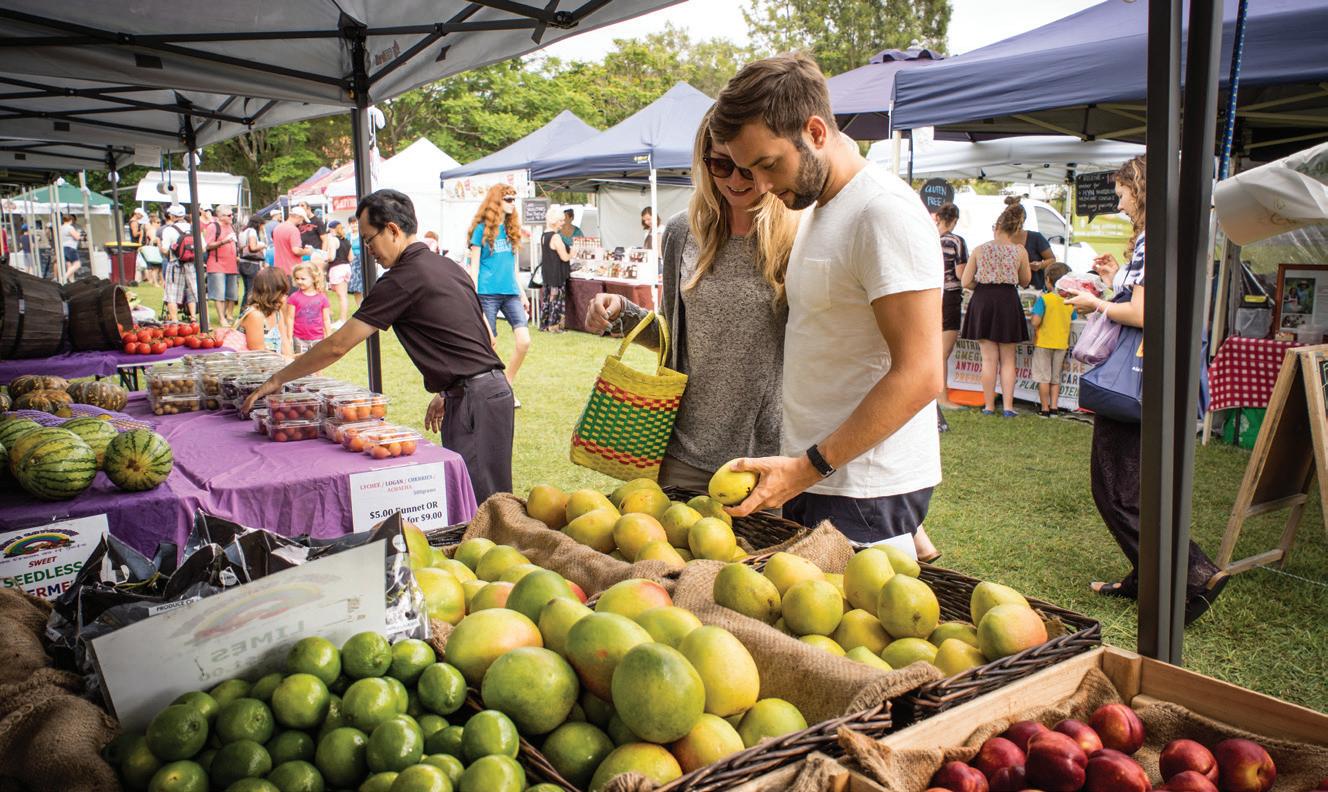
When this scale of trade occurs, the goods and services are made, provided and sold locally or within a small region, for example, at farmers’ markets. Some benefits and drawbacks of this scale of trade are outlined in Table 6.4.2.
of local trade
• Can rely on word of mouth to build business
• Lower transport costs
• Understand the region/market
• Provide jobs for local people. When people work locally, they can support the local economy indirectly. For example, people can spend their wages on goods and services provided by other local businesses.
of local trade
• Limited in how much the business can grow
• Word of mouth may not be beneficial, depending on what people have to say about the business
• May be difficult to find and keep employees, especially skilled employees
• Can be more expensive to produce goods and provide services
Roly Poly Farm is located in the Harvey Hills in Western Australia, 87 km south of Perth between Pinjarra and Bunbury. The farm is set up on 5 ha of river-bed clay-loam, which used to be a biodynamic market garden and before that, a dairy. The farm grows vegetables using a range of methodologies, including organic, bio-intensive and biodynamic, using the regenerative methods that were discussed in Chapter 5.
The food is grown for the local region and is sold using a local-scale method of trade called community-supported agriculture (CSA). Figure 6.4.4 explains its methods of trade, and Table 6.4.3 outlines some of the benefits of this trade method.
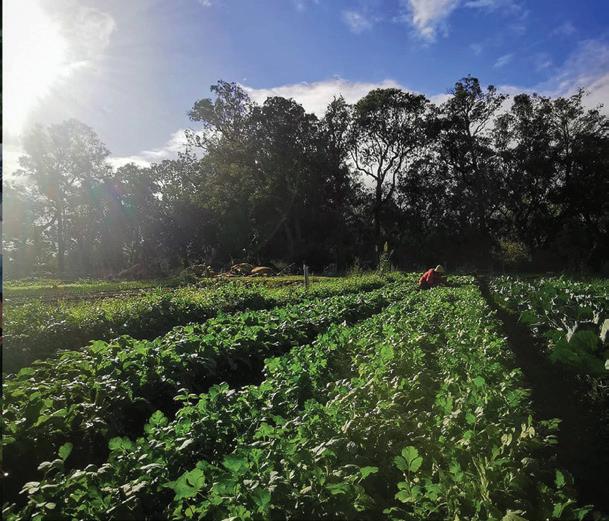
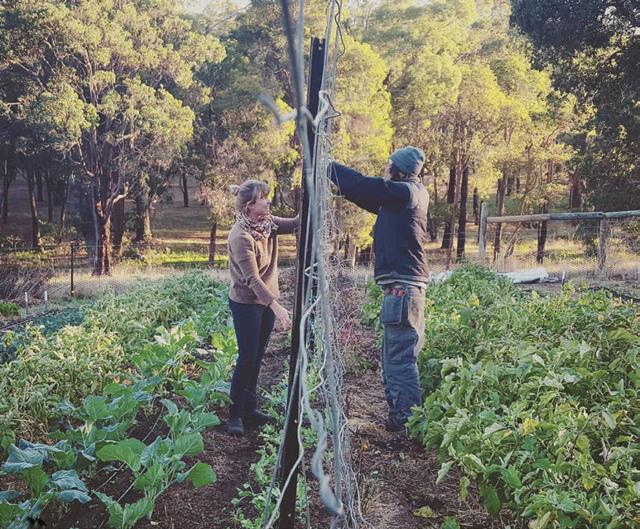
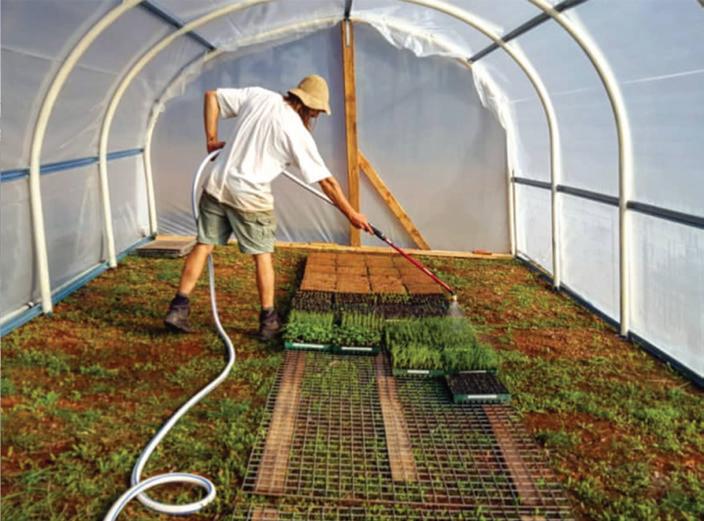
CSA is a relationship of mutual support and commitment between us, the farmers and our CSA members. In return for a seasonal membership fee to help cover the production costs of the farm, CSA members receive a weekly share of quality produce grown by us using biodynamic practices. Members share in the risks and the bounty of farming. Through weekly newsletters, talking with us at farm pick up, farm tours and frequent farm photos, members have the chance to enter into a relationship with their food – where it comes from, who is growing it and the experience it has from seed to harvest. CSA is a chance to know your farmer, get real food at a great value and eat delicious, high quality, chemical free, nutrient dense vegetables and fruit.
Figure 6.4.4 An excerpt from the Roly Poly Farm website, which explains its methods of trade.
Table 6.4.3 Benefits of community-supported agriculture
Benefits of community-supported agriculture
The community has access to fresh produce.
Customers develop a personal relationship with the people growing their food and a deeper appreciation for the work of the farmers. Relationships can also form among locals who meet at the farm gate to collect their produce.
The produce is localised – seeds have been domesticated to suit the growing conditions of the region and are therefore stronger and healthier. It involves fewer food miles, reducing the environmental impact associated with transport.
The farmer does not have to bear the entire economic burden if something goes wrong. For example, if a storm were to damage crops, each member of the community would lose the money they have invested at the start of the season, rather than the farmer risk losing their livelihood.
On the other hand, everyone reaps the rewards when yields are high, as the extra food is passed on to locals.
People become educated about their food, such as in which season different produce grows and regenerative farming practices that they can apply to their own gardens.
Analysis questions
1 Look at the benefits of the CSA method listed in Table 6.4.3. Classify each benefit in the table as being social, economic or environmental.
2 What does the following statement from the case study mean to you: ‘Members share in the risks and the bounty of farming’?
Key concepts: place, interconnection
HASS skills: analysing, communicating and reflecting
Investigating some of the products and/or services that businesses in your town, city or rural region sell to other places
Tally (quantitative) and interview (qualitative)
There are two types of data that we can collect when conducting fieldwork: quantitative and qualitative. Quantitative data can be counted and measured (such as a tally), while qualitative data is less structured and may not be expressed in numbers. Instead, it is investigative and may involve open-ended questions (such as in an interview). You can download a fieldwork template from the Interactive Textbook for this activity.
Additional content available: Fieldwork template
In this fieldwork task, we will practise collecting both types of data.
1 Select a manageable local scale to research and visit. This may be your local shopping strip or an industrial area.
2 Create a simple research question that is easy to investigate. Your question should focus on where and how trade occurs for businesses in your chosen area.
3 Tally the amount of goods and services and categorise each.
4 From your tally list, choose one business to research in-depth. Create interview questions that will provide you with an understanding of where and how trade occurs for that business. Example questions include:
• What goods and/or services do you provide?
• What goods do you need to import to support your business? Where do these imports come from?
• What goods or services do you trade and which places do you trade these to?
• Do you classify yourself as a local, regional, international or global trader? Why?
• What strengths or weaknesses do you find with your scale of trade?
5 Present and summarise your findings. Because your tally is a form of quantitative data, it can be expressed in a graph. Create a graph (ask your teacher for guidance if you need help), then summarise the main findings from your graph and your interview in two paragraphs.
Key concepts: <to come>
Multinational and transnational corporations
Multinational corporations (MNCs) are those that have a head office in one country of the world, but operate on a global scale, with different parts of their operations taking place all over the world. This allows the corporation to take advantage of places that can specialise in providing or manufacturing products at the best price or of the best quality. A similar type of corporation is a transnational corporation (TNC), which is also global but does not consider any single country its home base. This type of company can be said to be truly globalised. Advancements in transport and telecommunications have greatly assisted the rise of multinational and transnational corporations. Without these advancements, the production and
HASS skills: <to come>
consumption of goods would still be on a much smaller, localised scale.
Before his death, Apple co-founder Steve Jobs expressed his hope that the iPhone would be made entirely in the United States. However, this has been far from the case. In fact, the iPhone is a symbol of globalisation as it takes many countries to make and trade an iPhone.
Meanwhile, in the Tiwi Islands of the Northern Territory, Acacia mangium tree plantations are felled to make woodchips. These woodchips are then sold to Japan and China, where they are turned into paper and fabric, which is then sold back to us at a higher price.
Global interactions such as these are occurring all across the world with respect to many different products. So why doesn’t the United States make the entire iPhone and why do we make such a small amount of our own paper? What is the purpose of global trade?
The iPhone
Apple is an MNC. Apple’s headquarters are in Cupertino, California, in the United States.
Every day, half a million iPhones are manufactured in Zhengzhou, central China, by a company called Foxconn.
An iPhone’s birth begins with the manufacturing of its components, which are made by over 200 suppliers, such as Intel, Samsung and Sony, in many countries around the world, including the United States, Japan, Republic of Korea and Taiwan. Just a handful of these components are identified in Figure 6.4.5. Apple then buys these components from the manufacturers and sells them to Foxconn.
Geographers refer to this phenomenon as the international division of labour, as each country may specialise in manufacturing certain goods or services that contribute to the creation of an overall product. So, for instance, to make one product, the parts may be made in different countries, based on each country’s specialty. Then the parts are all transported to a place that specialises in assembling and packaging products.
California, USA
Apple’s headquarters are in California. This is where the iPhone is designed, and then the company sends out orders for parts to multiple companies all over the globe.
Texas Instruments makes the touchscreen controller
Samsung makes the memory and applications processor
Micron makes the flash memory
Dialog Semiconductor makes the power management components
ST Microelectronics makes the accelerometers and gyroscope
Cirus Logic makes the audio controller SOUTH KOREA
Murata makes the Bluetooth and wi-fi components
Shenzhen, China
Infineon makes the phone network components
iPhones are assembled in China by Taiwanese manufacturer Foxconn
At the Foxconn factories, the iPhone is assembled via an intricate 400-step process across 94 production lines. Large-scale product assembly and cheap labour (US$1.90 an hour – a price that cannot be matched by the United States) are two services in which this place has specialised. The Chinese Government has invested millions of dollars into building the infrastructure to create this type of specialisation and provide jobs in a poor region that was struggling to provide work. The phones are then packaged and taken to trucks, which then transport the phones to a customs facility.
While in customs, Foxconn sells the completed iPhones to Apple, which resells them to Apple affiliates around the world. iPhones that are exported from China are taken by truck to the nearby Zhengzhou airport. Figures 6.4.6 to 6.4.8 are satellite images that have the same scale. They show how the airport has grown in order to transport the increasing number of iPhones. These products were once transported by ship, but it has become cheaper to use planes, as a single wide-body Boeing 747 can carry 150 000 iPhones.
From Zhengzhou, a variety of freight carriers, such as FedEx, fly the phones to hubs around the world, where they are then transported via various means to Apple affiliate stores. From here, the product can be bought by us, the customers.
Analysis questions
1 Study Figure 6.4.7 closely and answer the following Making thinking visible: see, think, wonder questions.
a What do you see?
b What do you think about that?
c What does it make you wonder?
2 What is the map scale of Figures 6.4.6 to 6.4.8?
3 Describe the land change over time bet ween Figures 6.4.6 and 6.4.8.
4 Why has this change occurred?

Key concepts: environment, change, sustainability
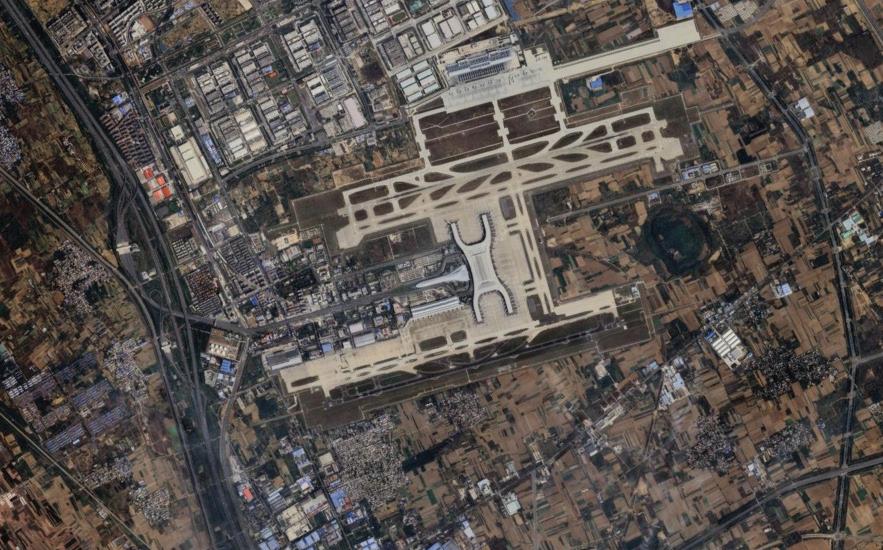

HASS skills: analysing, evaluating, communicating and reflecting, questioning and researching
As global brands have spread across the world, they have had to adapt to fit local cultural, economic and social differences between the places they do business. This is known as glocalisation. Glocalisation allows a business to expand.
The fast-food industry is a prime example of this phenomenon, as they tailor their menus to local tastes, customs and preferences. Mcdonald’s serves different menu items in different countries, such as the McAloo Tikki burger in India or the Shrimp Filet-o burger in Japan.
The Coca Cola Company has made over 100 flavours through its history, with some only available in particular countries. The Fanta Kolita from Costa Rica, Fanta Melon Frosty from Thailand, and Sprite Cucumber from Romania, to name a few.
Streaming companies such as Netflix also tailor their content and subtitles to suit local audiences. Often users will be offered region-specific content before their personal algorithm adjusts their suggested material. There are many positives to glocalisation, but there are also negatives for a business to consider such as those listed in Table 6.4.4.
glocalisation when global businesses or franchises adapt to a local area
Benefits of glocalisation
• Increase market reach
• Enhances customer satisfaction
• Supports local economies if local production and resources are involved
• Cultural sensitivity by aligning with local values
• Competitive advantage
Investigate a global brand
Select one global fast-food brand that operates in Australia. What local considerations has this business made to appeal to our local culture, language and food preferences?
Drawbacks of glocalisation
• Increases costs
• Logistical challenges can occur
• Risk of diluting your global brand identity
• If done poorly, it can cause cultural misinterpretation

Key concepts: place, interconnection
HASS skills: questioning and researching, analysing
The global food journey
A single meal at your table is evidence of your participation in a global network of food production. Complete the following to understand how far your food has journeyed.
Analysis questions
1 Choose a meal or food item.
2 Research the key ingredients.
a Which biome do the ingredients originate from naturally?
b Which biome are they currently produced in?
3 Investigate the availability of your meal or food item.
a How accessible is this food globally? Who has access and who does not?
b What challenges may threaten its availability?
4 Explore global interconnections.
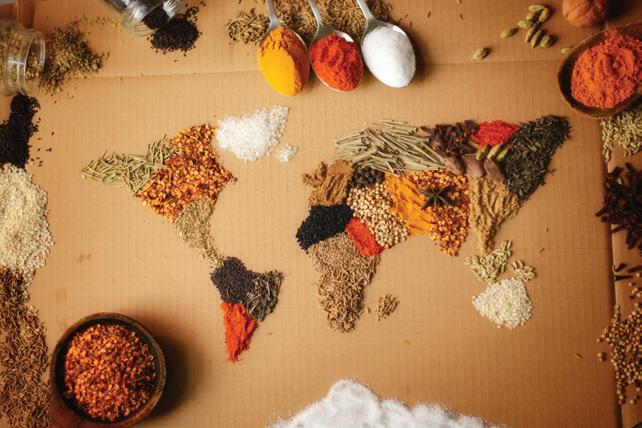
a Map the location where your ingredients originate from, where they are processed and where they are sold. Join these places using arrows to show movement.
Key concepts: place, space, environment, interconnection, scale
Section 6.4 review Go online to access the interactive section review and more!
6.4 Review questions
Recall
HASS skills: questioning and researching, analysing, communicating and reflecting
1 Define the terms ‘trade’, ‘goods’, ‘services’, ‘multinational corporation’ and ‘glocalisation’.
2 What is a manufacturing industry? Provide two examples.
3 Identify how much an iPhone employee in Zhengzhou is paid per hour. Explain why you think that the United States could not compete with this level of wages.
Interpret
4 Explain how the iPhone is an example of specialisation and the international division of labour.
Argue
5 Discuss the pros and cons of buying locally compared to buying globally made products. In your opinion, which is better?
Apply 6.4 questions
1 Create a world map, either on paper or online using Google Earth Pro, to show the journey of an iPhone from start to finish, based on the information provided in this chapter. Using annotations, include information about the role each location plays in creating the phone.
2 Choose another product made by an MNC to investigate. Research the location of the MNC’s headquarters, where the parts of this product are manufactured, where they are assembled, and how they are transported and sold.
Key concepts: place, space, interconnection
HASS skills: questioning and researching, analysing, evaluating, communicating and reflecting
of people’s travel, recreational, cultural or leisure choices on places, and the implications for the future of these places
• What are the impacts of tourism?
• How is technology changing the tourism industry?
• Is tourism sustainable?
Tourism is one of the fastest-growing industries in the world, and is growing faster than many geographers had predicted. In 2024, there were 1.4 billion international tourist arrivals, according to the World Tourism Organization. This was a recovery to pre-pandemic levels and an 11 per cent increase from 2023. Before the COVID-19 pandemic, it was reported that 1 in 10 jobs globally related to tourism.
The jobs provided by tourism support local, regional and national economies. About 3 per cent of people worldwide work in the tourism industry directly.
However, the industry has a much broader reach than this, as it supports the jobs of 10 per cent of people worldwide. Figure 6.5.1 demonstrates the direct, indirect and induced impacts of cruiseship tourism. It can provide much-needed income in places that otherwise have few resources to trade, such as Macau, where 44 per cent of its income comes from tourism, particularly spent by people drawn to the region’s casinos.
However, there are some negative impacts of tourism, including underemployment or unemployment for parts of the year in places where tourism is seasonal. Moreover, the cost of housing, goods and services can increase in order to make money from tourists, which also puts financial pressure on locals who cannot afford the price increase.
tourism when people travel to places outside of their normal area for business or recreation, relaxation or pleasure
Made by passengers, crew and cruise lines from the regions travelled from and travelled to

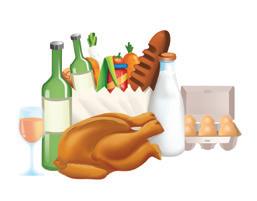


Purchases made by restaurants, hotels and other services on the cruise ship
Payments made by merchants to their suppliers to provide services for passengers and crew on the cruise ship
Wages paid by hotels, restaurants and other service suppliers to staff and other related labourers
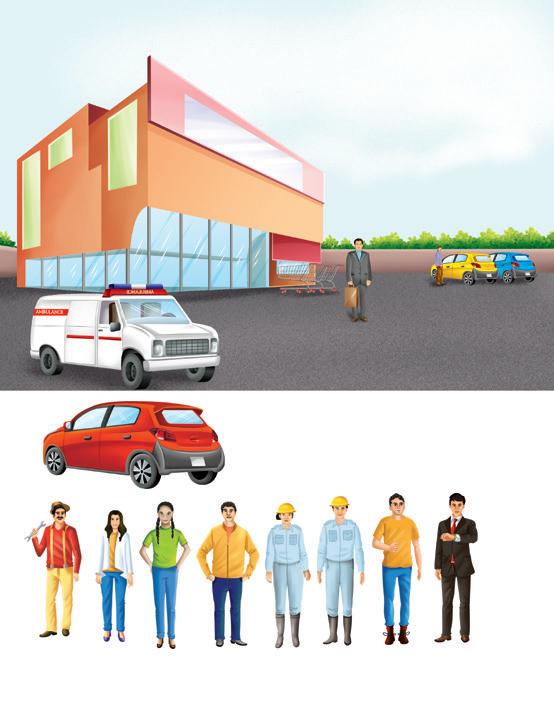
The employees of the cruise lines and their suppliers also purchase consumer goods, including in the areas of food, clothing and healthcare.
Tourism can impact environments in a positive way by providing financial investment in improved water quality, pollution reduction and infrastructure. It can also encourage governments to protect natural environments and heritage areas. The Kalbarri National Park was formerly protected in 1963 to preserve its unique environment and cultural heritage by managing visitor numbers and activities in the area. The Traditional Owners of the area, the Nanda people, manage the park with Parks and Wildlife. This joint management arrangement allows for traditional and modern scientific knowledge to work together to maintain the sustainability of the landscape.

On the other hand, tourism can put a large amount of stress on places, particularly fragile environments such as coral reefs, deserts, mountains and coasts that are not able to cope with large numbers of people and their waste. The consequences can be degradation of habitats and loss of wildlife, pollution and soil erosion. If the environment becomes too damaged over time, a place may also lose its appeal to tourists, and they may no longer wish to go there. Moreover, transport alone contributes to climate change by emitting enormous amounts of carbon dioxide into the atmosphere.
The Ningaloo Coast (associated with the tourist towns of Coral Bay and Exmouth) is a World Heritage Area due to its biodiversity and natural beauty. Development is restricted to ensure sustainability of marine life, and to enable tourism to continue in the years to come.
Travel can enrich people’s lives. Tourists and locals both have an opportunity to learn about one another’s culture and language, which can help people overcome their prejudices and stereotypes. It can also show travellers that there is no one way to live, and help people broaden their perspectives.
Negative social risks include changing the cultural values and behaviour of locals, increased crime, changes in family structures and roles, and damage to the natural and human environments. Conflict can occur between tourists and locals over resources. Tourists can use up to 16 times as much water as locals in some places. In addition, locals are sometimes forced to move as their homes are used to expand tourist developments.
Table 6.5.1 Emerging technologies and how they impact tourism
TechnologyUse in tourism
Recognition technology

Technology has changed the travel experience and will continue to change these experiences in the future. Some emerging technologies that have an impact on tourism are outlined in Table 6.5.1.
Biometric identifiers such as facial and fingerprint recognition can be used to streamline checkouts. In the future, you may be able to pay for a hotel by simply walking out the door.
Virtual reality (VR)Virtual reality can be used by businesses to attract customers by showing them the experiences they could have. It can also be used by hotels to show potential customers the facilities they offer.
Artificial intelligence (AI)
Robots and chatbots provide travel information to tourists. Artificial intelligence is also being used to create hands-free luggage that will use sensors to automatically follow people.
Data collectionData about each traveller is collected on databases in order to understand the traveller’s wants and needs, and market a more personalised travel experience.
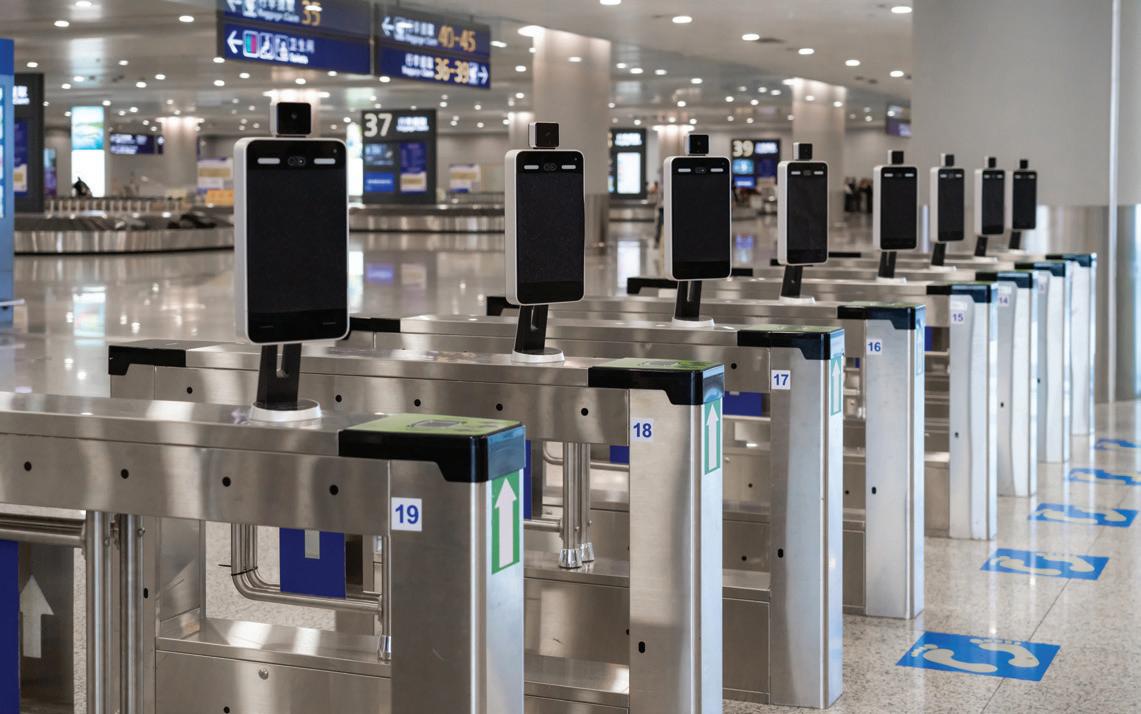

Cambodia
‘Voluntourism’ refers to tourists who perform volunteer work while being tourists outside of their home country. In Cambodia, tourists volunteer at orphanages as a way of doing good. However, 80 per cent of these children are not orphans. They have been recruited from their villages by people who tell their parents that this is a great opportunity for children to get an education and meet Westerners. These children grow up with a loss of their culture and identity. Their relationships with tourists only last a few weeks, which can result in a warped sense of connection to others that is not based on any substantial, ongoing love. Abuse and mistreatment are also reported. The outcome for these children is often grim, with many of them suffering mental health issues into adulthood.
Hotels in Zanzibar hire security guards to protect the hotel’s water pipes from locals who are experiencing extreme water shortages. In 2010, Zanzibar was also affected by a cholera outbreak that killed three locals. This outbreak was connected to contaminated groundwater from hotel sewage.
Tourism makes up 61 per cent of Bali’s income. The popularity of this island makes it far wealthier than some other Indonesian islands where agriculture is the primary industry. The overuse of water for hotels, pools and recreational facilities is causing water shortages for locals. Increasing levels of plastic waste and sewage discharge are released into rivers and beaches. As tourist areas expand, further removal of the natural environment occurs, placing pressure on wildlife as their habitat shrinks.
Paris is the most popular tourist destination in the world. The 50 million tourists each year impact local residents, who feel overwhelmed by the crowds. Tourism also affects the affordability of accommodation for locals, as residents are put out of their rental apartments by landlords who can make more money from renting the apartments using apps such as Airbnb. Some locals argue that the scale of tourism makes the city feel more like a theme park than an urban living environment.
People around the world are becoming more wealthy. The increased affluence in China has had a strong impact on international travel, including in Australia. Chinese tourists make up the majority of international travellers to Australia, yet only 1.8 per cent of Chinese travel to Australia. Australia is expected to benefit from increasing numbers of Chinese tourists as more Chinese begin to afford travel.
National parks such as Yosemite and Yellowstone have helped protect the natural environment and native animals, as well as allowing tourists to enjoy nature-based tourism activities. However, the natural beauty of the United States also suffers from the impact of social media. For example, Horseshoe Bend near the Grand Canyon National Park became Instagram-famous and now attracts crowds of up to two million people annually, well beyond what the fragile desert environment can handle. The sudden popularity of the area also means that infrastructure is not in place to deal with the increase in visitors. As one local said, ‘It was just a local place for family outings … but with the invention of the cellphone, things changed overnight’ (Bill Diak, local, quoted in Charlotte Simmonds et al., ‘Crisis in Our National Parks: How Tourists are Loving Nature to Death’, 2018).
Ghana is experiencing strong growth in tourism. Ghana has a tragic history, as many people who were taken as slaves to the Americas and the Caribbean came from Ghana. The Year of Return 2019 was a marketing strategy designed to attract African Americans to visit Ghana as tourists. While tourist growth is positive, the risk is that multinational businesses will invest in Ghana’s tourism industry and overrun the locally run businesses.
‘Bleisure travel’ refers to combining travel for business with leisure activities. Singapore attracts international businesspeople from the manufacturing, finance and real estate industries. For leisure, these people can also enjoy shopping, sampling a variety of cuisines, seeing cultural sights and enjoying the luxuries of high-end hotels. Bleisure travel is a quickly growing industry and has the benefit of attracting people to places that they may not have otherwise visited.
Greenland is the world’s largest island after Australia and is largely covered by the only permanent ice sheet outside of Antarctica. Greenland’s ice is melting due to climate change, which has increased the average winter temperature by almost 6°C. Tourism to Greenland has doubled in six years. Climate change tourism is attracting people who say they want to visit Greenland before the landscape changes and polar bears become extinct. Travelling by ship or plane to Greenland emits carbon emissions, so some people argue this is exacerbating climate change, while others see it as an opportunity for the tourism industry to grow.
Wilderness refers to land that has not been developed, and had a very small, if any, amount of human impact. People attracted to wilderness tourism are often seeking the comfort of nature and hoping to escape the busyness of everyday life. However, there can be safety risks associated with this type of tourism. In 2019, tourists visiting White Island volcano lost their lives when the volcano erupted. Although the volcanic activity was being monitored, geographers are still developing their ability to accurately predict the timing of natural disasters such as this.
management plan a strategic document outlining goals and actions to be taken
Can tourism be sustainable?
Tourism can operate in a manner that balances environmental, social and economic impacts. Many national parks in Australia use management plans to plan for responsible public use of a location. Common strategies used to keep tourist locations sustainable include:
• controlling visitor numbers
• involving local communities in decision-making
See, think, wonder
Observe Figure 6.5.7 and complete the following.
1 What do you see?
2 What do you think?
3 What do you wonder?
• conservation projects to protect biodiversity
• promoting sustainable activities that do not harm the area
• providing eco-friendly infrastructure or facilities
• monitoring and enforcing compliance through official channels, e.g. rangers or law enforcement.
Key concepts: place, space, interconnection

HASS skills: questioning and researching, analysing
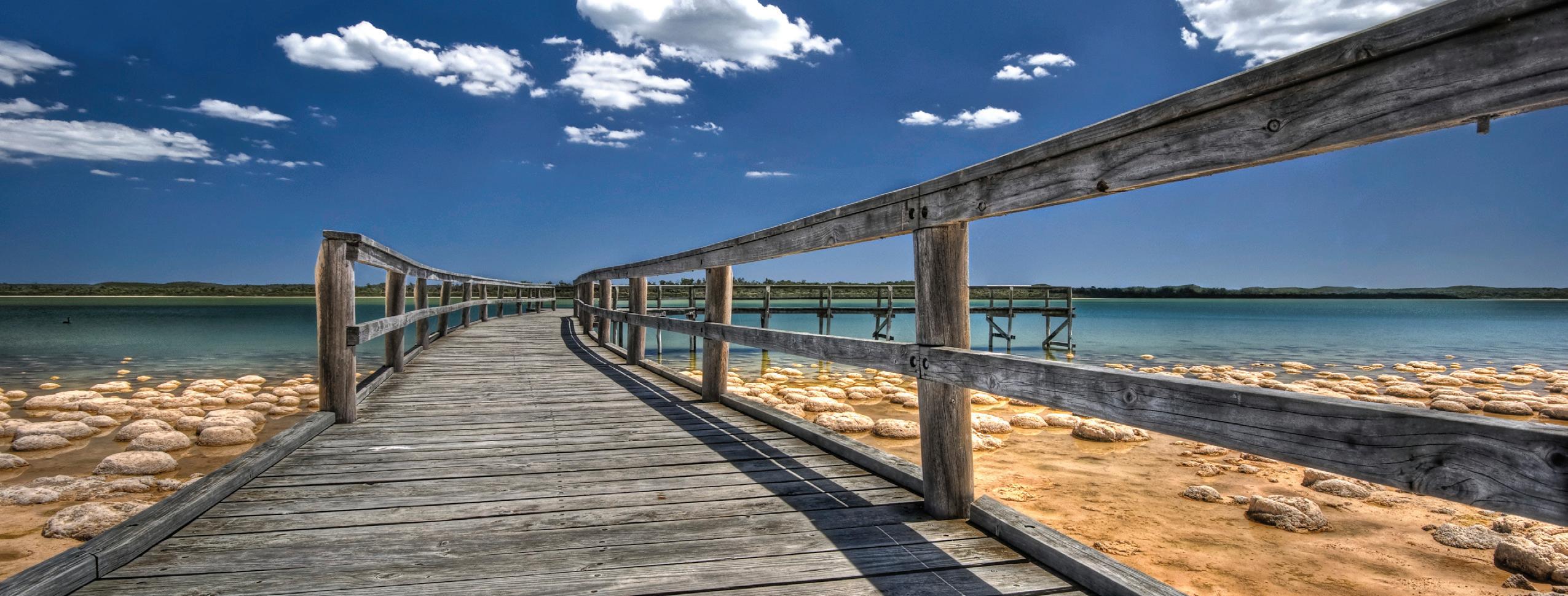
Investigate a national park
Select one national park located in Western Australia and investigate its measures to achieve sustainable tourism.
1 Describe the location of the national park.
2 Identify the Traditional Owners of the land.
3 List the management strategies this national park uses to protect the area.
4 Explain how Aboriginal knowledge is incorporated into the management of the park.

Key concepts: place, interconnection, sustainability
HASS skills: questioning and researching, analysing
1 Is tourism a growing industry? Recall one statistic from the text to support your answer.
2 List one direct and one indirect impact of tourism.
3 Define the terms ‘voluntourism’, ‘bleisure tourism’, ‘climate change tourism’ and ‘wilderness tourism’.
4 What does ‘The Year of Return’ refer to?
Interpret
5 Rank the emerging technologies in terms of technology that will have the most impact on tourism in the future to technology that will have the least impact. Justify your ranking order.
6 Select a prominent tourist location in Western Australia and complete the following:
a Recommend technologies that can be added or used to improve the tourist experience of the location.
b Propose ways in which the location can increase its sustainability.
7 Provide your opinions on the following two questions. Justify your opinions using information from the textbook and further research. Hold a class debate on one of these topics.
a Do you think that voluntourism should be banned?
b Do you think there should be a limit on how much water tourists can use in places that are experiencing water scarcity?
Apply 6.5 questions
1 Organise the information that you have read in Section 6.5 by copying and completing this table. Positive
from ‘Impact of tourism around the world’ map
Economic impacts
Social impacts
Environmental impacts
2 Create a travel tour through the African continent. You must stop at a minimum of one country from northern, southern, eastern and western Africa (a minimum of four countries in total).
Figure 6.5.10 Where will travellers stop on your hypothetical tour of Africa? ➜
a Describe the geographic characteristics (human and physical) of each place. Include characteristics such as the location, major landforms and biomes, places of interest, currency and exchange rate for Australian travellers, and the culture/religions/daily life of the people.
Egypt (Nor th) Morocco (West) Zanzibar (East) South Africa (South)
b For each countr y, include three activities that tourists can enjoy.
Egypt (Nor th) Morocco (West) Zanzibar (East) South Africa (South)
Key concepts: change, sustainability
HASS skills: analysing, evaluating, communicating and reflecting
As humans develop more effective ways of connecting communities through transport and online technology, and as populations grow around the planet, interconnection has increased. The impact of interconnection on the environment (places and spaces) and the impact on people has therefore become increasingly important. Increasing globalisation is the result of this interconnection, and globalisation has been both a positive and a negative force. Its limitations were highlighted starkly by the COVID-19 pandemic, but the interconnectivity that globalisation has created is here to stay.
Globalisation has led to governments being increasingly under pressure to consider more innovatively the changes that are occurring to places and spaces. Governments also have to recognise the geographical and economic challenges that complex, and often unregulated, expansion and interconnection have created. These are big challenges for all of our futures and we should be aware of them because they will result in lots of changes that will affect us on a daily basis, in the way we use the spaces and places in which we live.
6.6.1 You are part of interconnected, globalised world so it is important to understand how the world is changing and how it affects you!

That just about wraps up this topic. How did you feel you went working through the chapter? Before you attempt the following activities, visit the Interactive Textbook to rate your confidence with this topic via a downloadable checklist.
1 Choose a multinational corporation to investigate. Suggestions include McDonald’s, Rip Curl, Rebel, Amazon, Nestlé, Coca-Cola, Boeing, L’Oréal or BP. Address the following:
a Where is its headquarters?
b How much is the company worth?
c How much revenue (income) did it earn in the last financial year?
d How much does the average employee earn?
e Where does the company manufacture its goods? (Include places that supply the parts and assemble the products. You may wish to annotate a map to show the supply chain.)
f In which countries does it sell its goods?
g What are the environmental and social impacts associated with this company’s operations?
2 Research your own connection to places around the world. Create a list of your possessions. For each item, write down where it comes from. Discuss your results in a paragraph.
In this chapter, we have read many case studies on the impacts of tourism on the environment and society. Take on one of the following roles: a tourist operator, a local community member, the environment, a government or a tourist. Consider the phenomenon of global tourism from your chosen perspective by answering the following prompts:
1 I am thinking of global tourism from the point of view of a …
2 I think … (describe global tourism from your viewpoint). Be an actor – take on the character of your viewpoint.
3 A question I have from this viewpoint is … (Ask a question from this viewpoint.)
Wrap up: What new ideas do you have about the topic that you didn’t have before? What new questions do you have?
‘The biggest problems facing the world today are not at all beyond our control, rather they are all of our own making, and entirely in our power to deal with’ – geographer and author Jared Diamond (quoted in Darek Gondor, Why Do We Over-consume?, 2009). To what extent do you agree with this statement? Use examples from this chapter to help answer this question.
Consider a prominent tourist location in Western Australia or one mentioned in this chapter. Create a management plan that can overcome or reduce the negative impacts of tourism. What are the main effects tourism has on this location? How does your plan address these effects? How could your plan be implemented and what resources do you need? What difficulties might you face in trying to implement your plan? How can you overcome these difficulties? Is your management plan sustainable?
Key concepts: change, sustainability HASS skills: analysing, evaluating, communicating and reflecting

Geography has many connections with other subjects in the Humanities. Have you considered ways in which what you have learnt about the geographies of interconnection, biomes and food security relates to the other topics you will cover this year? Here’s a sample:

Food production, interconnection (scale) and party politics: design a political slogan to address food sustainability in Australia
Many Australians do not have enough to eat, yet thousands of tonnes of food are wasted across the country every day.
Investigate:
• how many people in your community or in Western Australia don’t have regular access to food every day
• how much food waste occurs in your community or across Western Australia every day.
Now identify:
• two positive changes that could ensure there is less waste and enough food for everyone, every day (your policies)
• who has the power to make change/a difference
• who is already making change
• who your target audience is (who might vote for you)
• your slogan to convince people that your policies will work to bring about change.
Interconnection, food production (sustainability) and innovation
What great business innovations are being used to create greater food security?
1 Identify at least three organisations or businesses that have produced creative solutions to increase sustainable food production and/or food security. Describe their innovations – what makes them so effective?
2 Choose one of the businesses or organisations from question 1. Examine how it is competitive and using fair trade or other socially responsible business practices as part of its innovation.
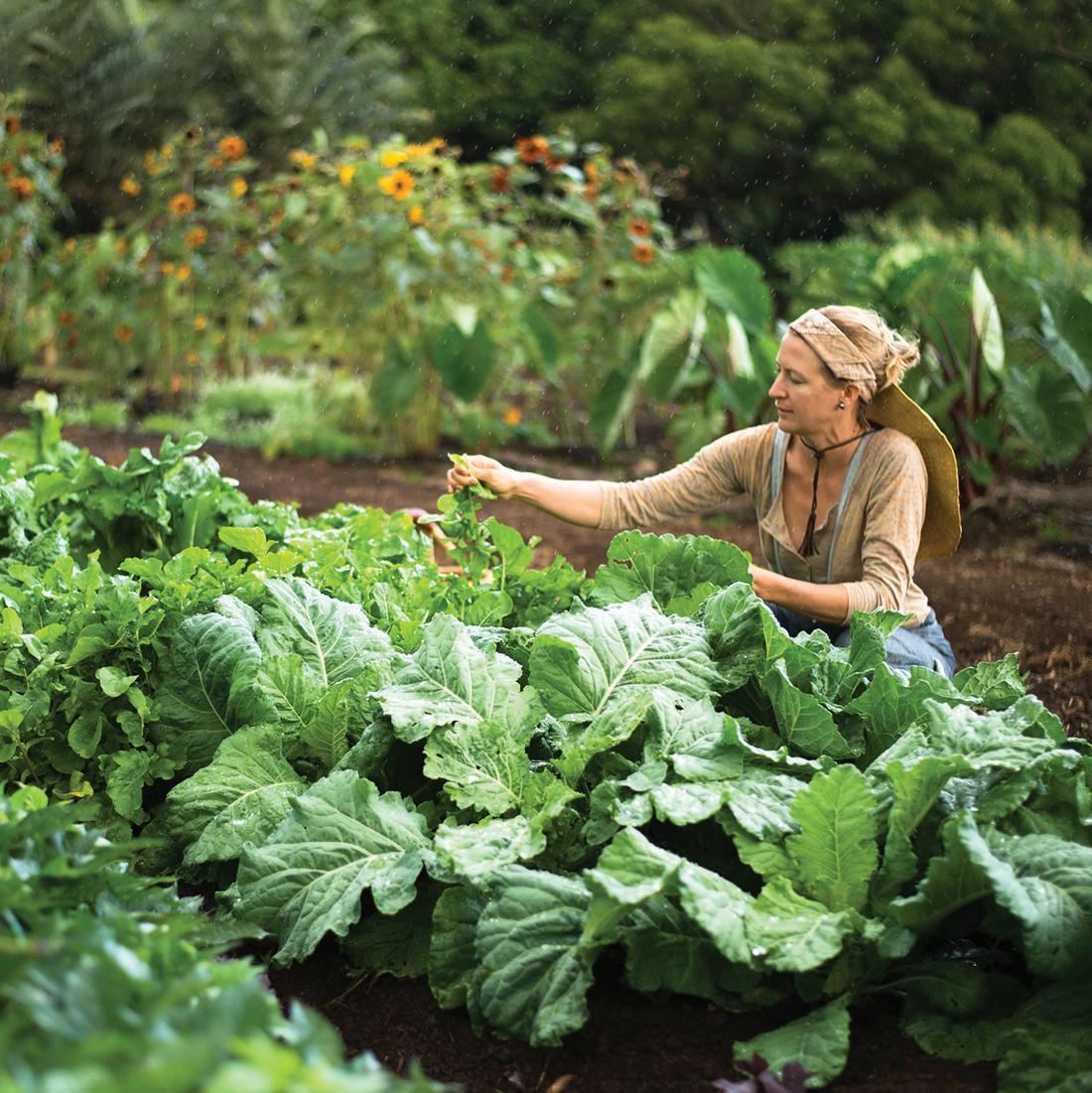
Biomes (place and environment) and World War I
Research and read about the climate in Belgium, by going online and looking up ‘Belgium’ at Britannica.com and navigating to the ‘Climate’ subsection on that page.
1 Which features of LAPDOG can you identify in this description? Record the relevant parts of the description that demonstrate these features.
2 Imagine you are an Australian soldier from Perth who has just arrived in the trenches at the Somme (practise empathy). It is winter (mid-January) and you are writing a letter home about the conditions. Make sure you identify how the weather has an impact on your ability to be an effective soldier. You might consider the impact of rainfall and temperatures on clothing, weapons, accommodation, food and other supplies, morale and health.

primary sources historical sources created at the time of the events being studied, e.g. photographs, speeches, letters and newspapers secondary sources historical sources written after the events being studied and based on primary sources, e.g. history books, museums, interpretive information, documentaries and statistical tables
History is the study of the past. We study the past in order to better understand the present and to help us prepare more effectively for the future. History can give us a sense of where we have come from. It can also give us a sense of where we are heading.
The concept of history is common to all people. It exists in all societies. The simple act of keeping records about ourselves, our families and the nation in which we live makes all of us historians in one way or another.
History opens a window on the past. It shows how our own society has changed over time. It also helps us understand how other nations and societies have changed over time.
History is a process of investigation that follows certain rules. It begins by posing a question or starting an investigation, then gathering evidence that will answer that question.
One kind of evidence historians seek out is primary sources. These are records that were made by people who lived at the time being investigated. Written or printed documents are useful primary sources. Photographs, drawings and paintings can also tell us a great deal if we can interpret, or ‘read’, them carefully. You will find many primary sources throughout these chapters.
Another kind of evidence used by historians is secondary sources. These are records made at a time after the event being investigated. A secondary source may draw upon primary sources for information, or even other secondary sources. A secondary source is the creation of an individual writer so, when using secondary sources, historians look critically at the views of the people who created those sources. They ask extra questions about those people’s interpretations of what happened.
When you think about it, history could be thought of as ‘the thinking person’s guide to the future’.
In order to work effectively, an historian must make use of specific concepts to assist in gaining an understanding of the past and making connections to the world we live in today. The eight key historical concepts are:
• Sources – refers to any written or non-written materials that can be used to investigate and provide information about the past.
• Evidence – is about the information obtained from sources that is valuable for a particular inquiry. Evidence can be used to help construct a historical narrative, to support a hypothesis or to prove or disprove a conclusion.
• Continuity and change – refer to aspects of life or society that have remained the same or changed over a period of time.
• Cause and effect – is used to examine the relationship between historical events or actions, where one event or action occurs as a result of the other.
• Perspective – is a person’s point of view, the position from which they see and understand events going on around them.
• Empathy – is an understanding of the past from the point of view of a particular individual or group, including an appreciation of the circumstances they faced, and the motivations, values and attitudes behind their actions.
As you investigate Australian history, culminating in World War I, you will use the above concepts to extend your understanding of the time period. For example, the primary and secondary sources that provide historians with information will take the form of evidence when used to construct a historical narrative, to prove or disprove a theory, or to make judgements. Both types of sources have their limitations, such as bias, questions of reliability or a lack of representativeness. All sources, however, may be useful in some way. A good historian will consider all evidence, much like a detective, in reaching their final interpretation of events.
• Significance – is the importance that is assigned to particular aspects of the past (e.g. events, developments, individuals, groups, movements and historical sites).
• Contestability – occurs when particular interpretations about the past are open to debate, for example, as a result of a lack of evidence or different perspectives.
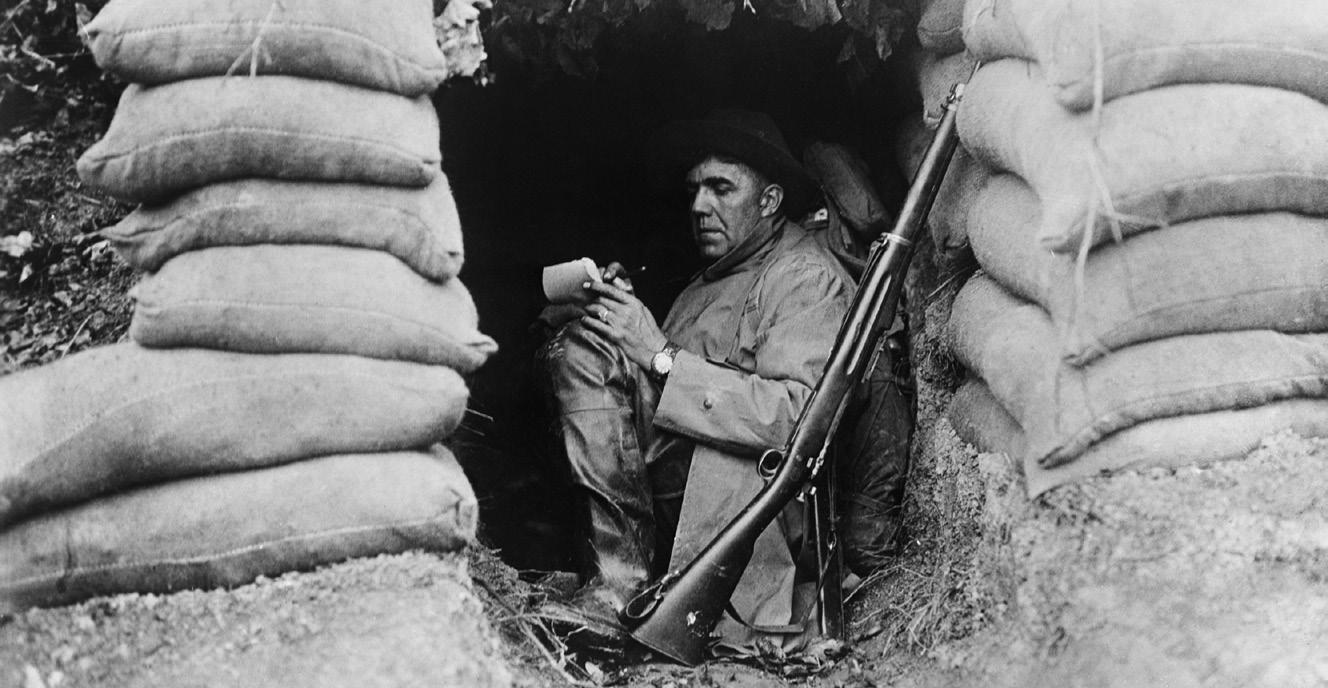
Source A This photograph shows a soldier writing a letter home from the trenches. Because he was there at the time, and saw the trench warfare, his letter is a valuable primary source artefact
Source B Australian historian Bill Gammage, reading one of the 1000 soldiers’ letters and diaries he studied. His book The Broken Years (1974) is a secondary source, because it was written by somebody who was not actually in the war.
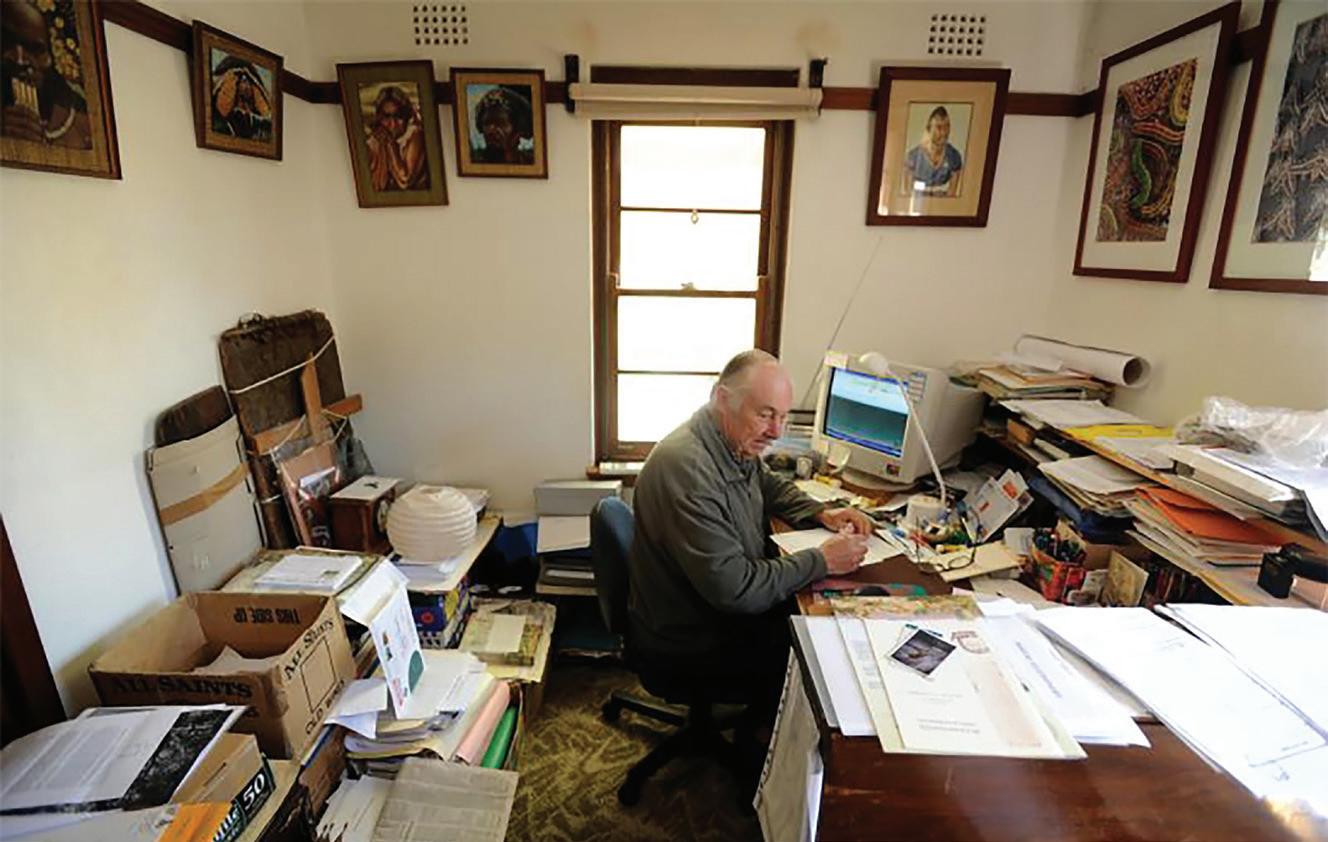

Australia has a long history of occupation by its Indigenous People. From 1788 this changed to include permanent settlement by the British. For some, this could be seen as an invasion. The British were not the first Europeans to visit Australia’s shores but they were the first to stay. The early period of British settlement, before Australia as a nation even existed, is known as the colonial period of history. It was marked by significant periods of convict transportation, gold rushes and agricultural expansion – all of which brought suffering and displacement of the original inhabitants but also wealth and prosperity to those that were able to survive the harsh environment. By the end of the 19th century, the separate British colonies of the Australian continent were sufficiently developed to move towards Federation as one country.
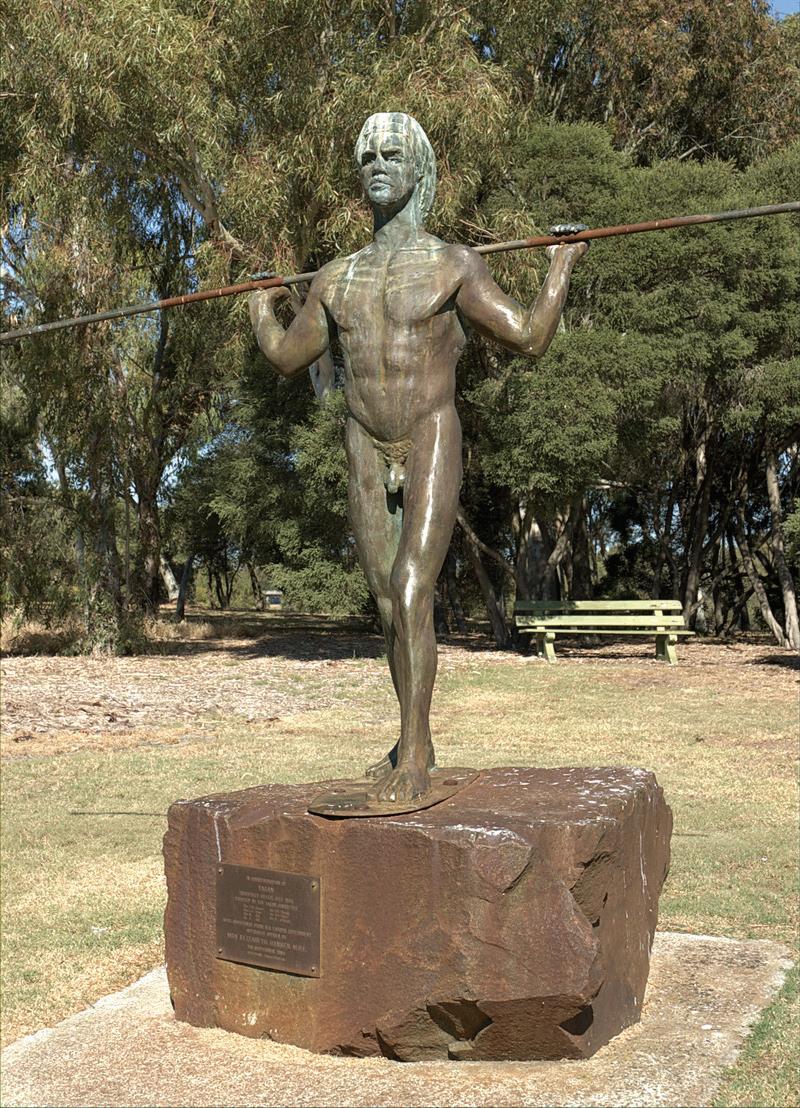

Source C Video: European Imperialism
1616
Dirk Hartog is the first recorded European explorer to land in Western Australia 1788

1826
King George Sound (Albany) becomes the first British settlement in Western Australia

The Pinjarra Massacre
The Eureka Stockade
becomes selfgoverning
is
of Australian colonies as one country
Captain Arthur Phillip and the First Fleet (including convicts) begin British settlement at Port Jackson (Sydney) 1829
The Swan River Colony (Perth) begins
Convicts were transported to penal colonies, such as the British colonies in eastern and Western Australia.
The Gold Rushes of eastern Australia
The Gold Rushes of Western Australia
Australia gives ‘all women’ the right to vote and to stand for election
The launch of the first Dreadnought battleship
The acquiring of control over one country by another, involving the occupation or exploitation of the people and resources. Australia was colonised by the British, who were economically and militarily superior to the Indigenous inhabitants.
The idea that a country should seek to expand its borders and colonise new territories, in order to create an empire, and to benefit economically and militarily. The largest empire in the world before World War I was the British Empire, of which Australia was a part.
I begins

E
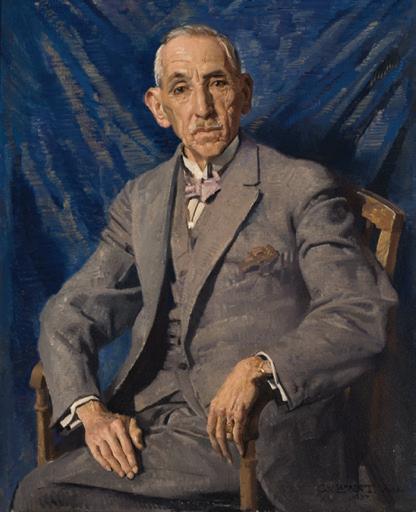
As a new nation, with limited military power and distant from the conflicts of Europe, Australia was not expected to play a significant role in world affairs. This changed when Prime Minister Cook announced Australia would join the allied forces of World War I in 1914. Australian soldiers saw the horrors of modern warfare over the next four years, from Gallipoli to the Western Front. Over 60 000 would lose their lives in pursuit of democratic goals and the defence of allies. The war changed Australia, not just for the soldiers and their families. On the home front, the war divided the population and shifted attitudes. The economy and the government would never be the same, and future generations would commemorate what some regarded as Australia’s ‘coming of age’.
A term used to describe the original inhabitants of a country, such as the Maori in New Zealand, or the Aboriginal and Torres Strait Islander people in Australia, when that country is colonised by another.
A period of excitement and prosperity following the discovery and mining of gold for the first time. Typically, gold rushes attract immigrants and open up new areas to settlement. The gold rushes in Australia occurred in the 1850s in the eastern colonies, and in the 1890s in Western Australia.
1 Based on this timeline, when did the nation of Australia first exist? Try to consider at least three alternate answers.
2 Over what period was most of Australia settled by the British? Where in Australia did Aboriginal people continue traditional lifestyle at this time?
3 Where was World War I mostly fought?
4 What is conscription and why is it controversial?
When two or more different governments come together to form a unified country under one federal government, whilst maintaining regional governments at a lower level. In Australia, this involved what are now the states of Australia agreeing to operate under a Commonwealth government from 1901, which was later to be based in Canberra.
28 June 1914
Archduke Franz Ferdinand assassinated in Sarajevo
The war zone in France and Belgium during WW1, where the German army faced an alliance of British, French, American and Australian troops, among others. The front was known for its trench warfare and high casualty rates.
A ceasefire. On November 11, 1918, the German army command agreed to end hostilities and World War I was over. It did not officially end, however, until a peace treaty was signed in 1919. Today, Australians mark the date as Remembrance Day.
The political decision to force young people to fight in the armed forces. Conscription was considered by the government of Australia in WW1 and put to the people of Australia in two separate national plebiscites. The resulting ‘no’ votes meant that Australian troops were to remain volunteers only, for the duration of the war.
November 1914
July–August 1914
European countries mobilise and declare war on each other
The 1st Australian Imperial Force, initially raised in August, is sent to Egypt to train Late November 1914
Stalemate on the Western Front
25 April 1915
Australian and New Zealand (Anzac) forces land on the Gallipoli Peninsula
December 1915
Allied forces evacuated from the Gallipoli Peninsula
1916
The first conscription vote in Australia
25 April 1916
First Anzac Day commemorations held
March 1916
Anzac forces transferred to the Western Front in France
The Battle of Beersheba
July to November 1916
Australian forces take part in the Somme Offensive, particularly the battles of Pozières and Fromelles
1918
August 1918


Armistice –fighting stops on the Western Front

Australian forces, under General John Monash, participate in the offensive that leads to the final armistice and German defeat
1918–20 Spanish flu pandemic kills millions worldwide

1919 Treaty of Versailles
In these chapters on Australian history, there will be particular focus on the historical concepts of cause and effect, as well as continuity and change. There will also be times when you will be asked to use historical sources, and analyse them for perspective and contestability
When investigating the causes of events, there will often be the need to provide a sequence of the events that led up to them, as well as both long-term and short-term causes. These causes may be further categorised as economic, social or political. The same categories may apply to the effects of an event, or period of change. In addition, an explanation of effects will comment on the significance of the event or change.
In this respect, the historian is very much like a prosecuting lawyer making
a case in court: to prove that a person is guilty, it is necessary to establish which events occurred and in what order. In the study of history, events and dates are used as a form of evidence. In good historical writing, you will do more than simply tell the story of what happened. You will need to use the sequence of events to make an argument as to why something happened.
Another important concept is continuity and change. Even in times of great change – such as the colonial settlement of Australia – some things remain unchanged and continue as they did before. For example, while many First Nations Peoples of Australia had their lives changed dramatically by British settlement, some communities have continued aspects of their culture and traditional practices until today.
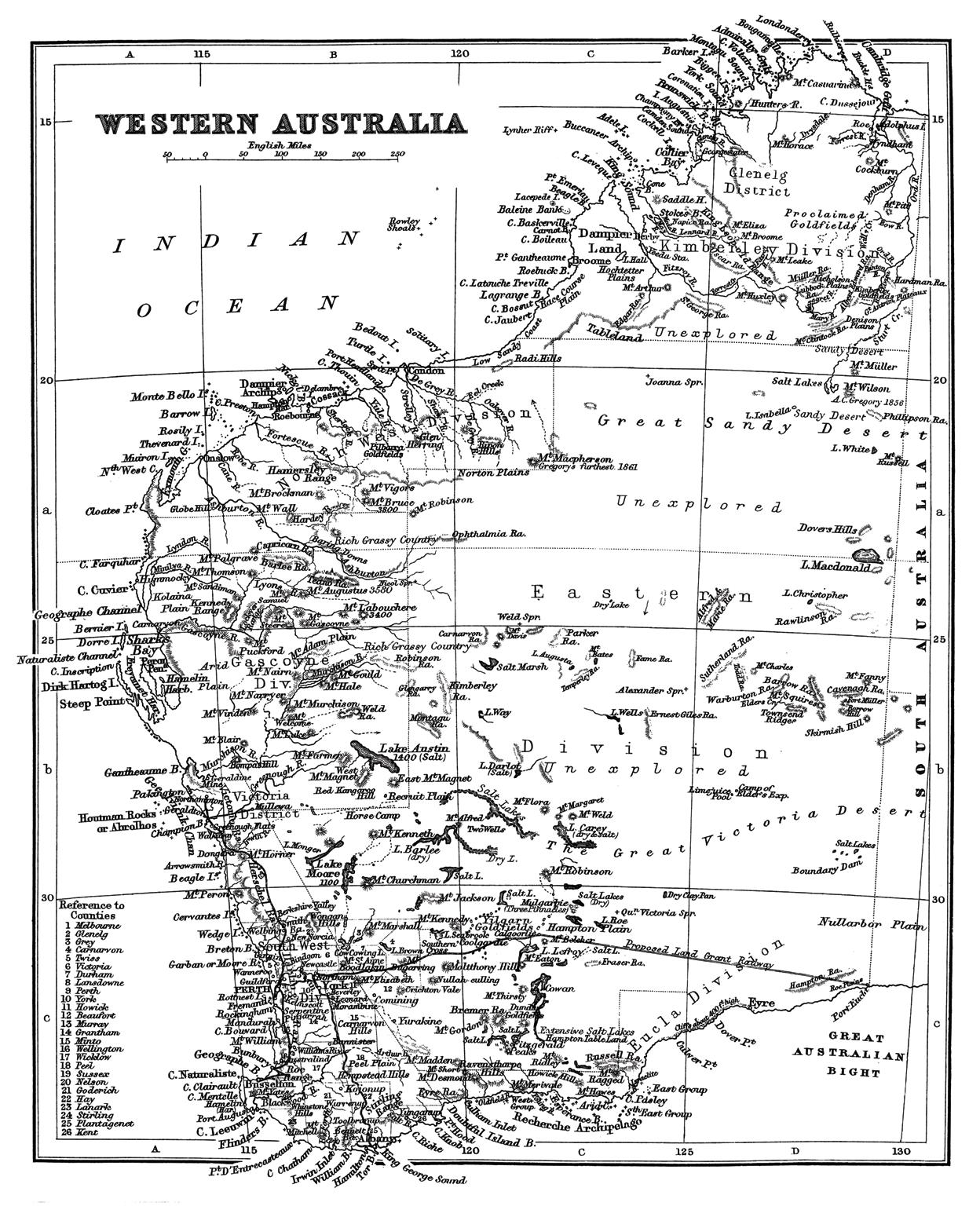
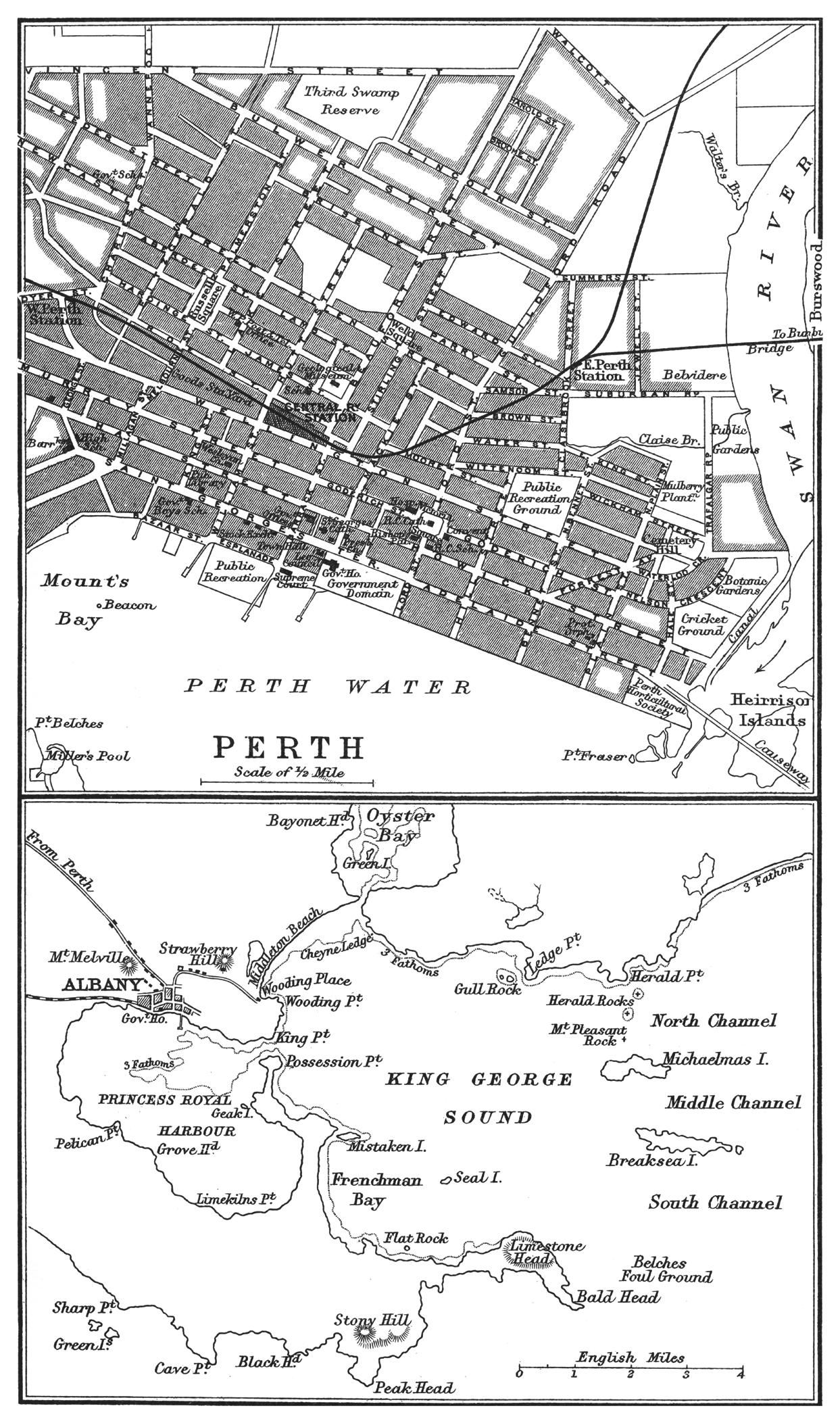

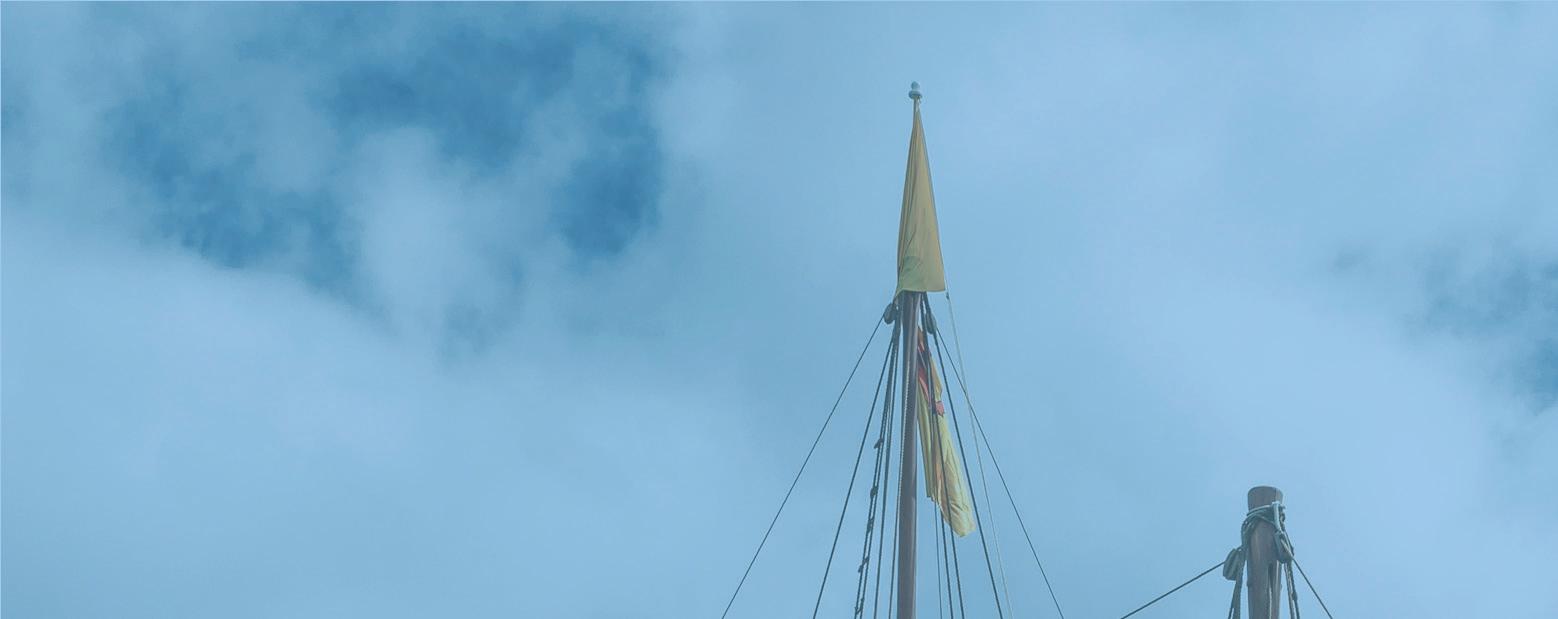

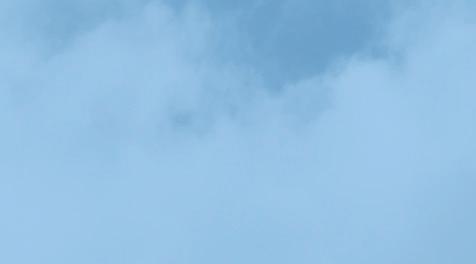

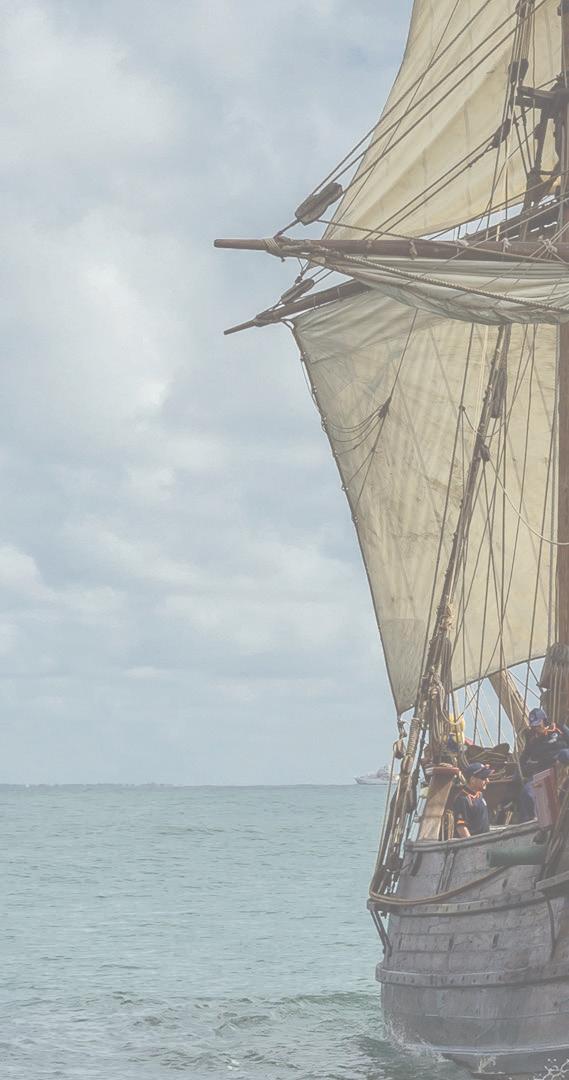

Source L The Duyfken replica, a rare reproduction of a typical Dutch trading vessel of the era, sets sail after departing Fremantle to commence the Dirk Hartog Commemorative Voyage on August 18, 2016. Dutchman Dirk Hartog sailed a similar ship in 1616 when he and his crew became the first recorded Europeans to set foot on Western Australian soil, on an island just north of Shark Bay.

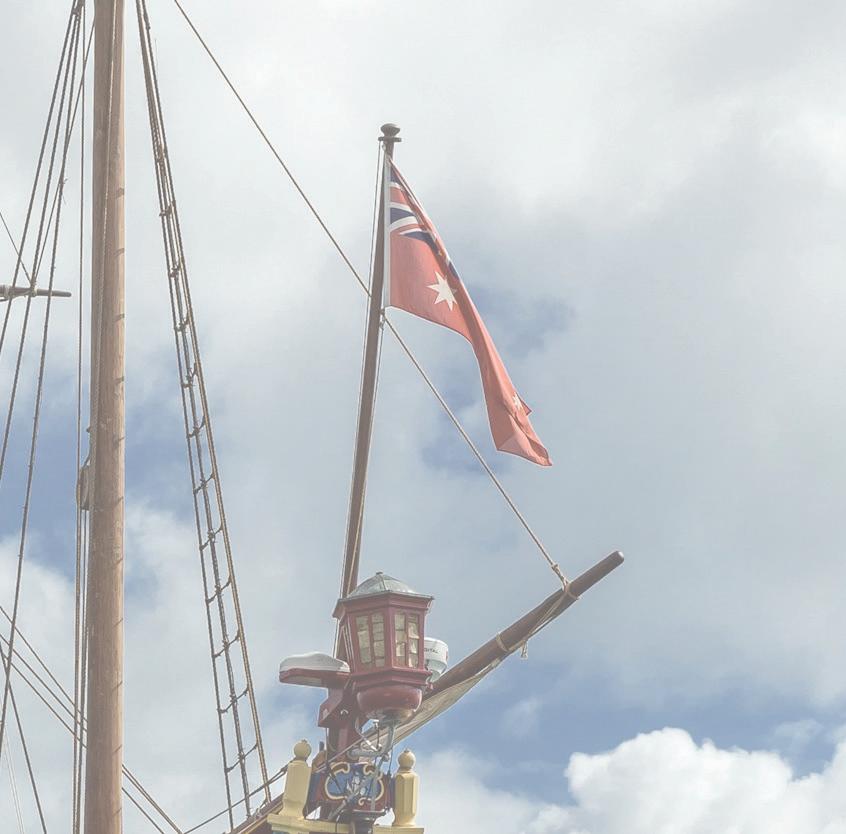
Last year, you may have studied the Industrial Revolution. It created the basis of the modern world. During the 18th and 19th centuries, new inventions, technologies and industries gave humans the control of power and energy on a scale that they had never before enjoyed. This revolution, however, occurred mainly in Europe, and in Britain in particular. It gave European powers the opportunity to broaden their outlook and dominate the world. Australia was one of those places around the world that came under the control of an ‘imperial power’, because the local inhabitants could not compete against an industrial empire. By the time these imperial powers met in what was to be called World War I, Australia had emerged as a modern and successful nation in its own right, but in many respects, at the expense of its First Nations Peoples and their traditional culture.
After completing this chapter, you should be able to answer these questions:
• What is an imperial power, and how did they emerge by the 18th century?
• Why and how did the British colonise Australia?
• How did the early British settlements affect Aboriginal and Torres Strait Islander Peoples?
• What was the economic, social and political impact of the gold rushes in Australia?
• How and why did Australian governments come together to form a Federation in 1901?
• What was life like in Western Australia by 1914?
After completing this chapter, you should be able to:
• Explain what is meant by ‘chronology’, and ‘cause and effect’, in the study of history
• Understand and evaluate different historians’ points of view
• Develop historical empathy with people in the past
• Interpret primary sources in both print and visual form
• Evaluate the reliability of primary sources
• Correctly use special terms specific to the topic under study
• Use factual evidence (dates, statistics, examples) to substantiate an argument.
Visit the Interactive Textbook to access:
• interactive Scorcher Quiz
• videos, image galleries and other extra materials.

Source 7.2.1 Wandjina “art” in sandstone caves at Raft Point, Kimberley, Western Australia. The Wandjina is the creation spirit of the Kimberley region and is described as the ‘rain maker’.
1688
What came before this topic?
• Creation: According to the oral histories of the Noongar people of the southwest Australia, the snake, or rainbow serpent, Wagyl created the rivers, lakes and landforms around Perth – the Boodja. Spirits during the Dreaming created all the living things, and the Noongar people.
• 65 000 BP: Scientists that study archaeological sites in Australia today generally recognise that it was around 65 000 years ago that the First Nations Peoples of Australia began to progressively arrive on the continent, eventually spreading to the Torres Strait Islands and Tasmania.
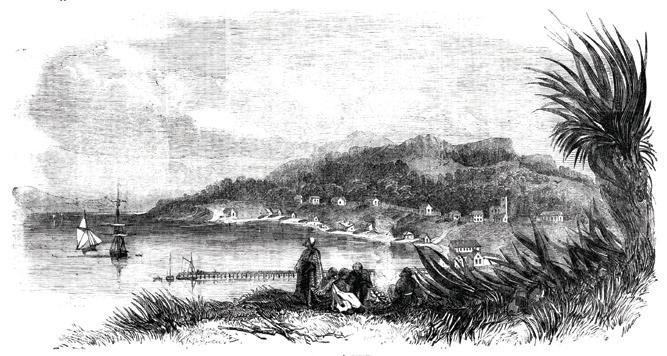
William Dampier is the first recorded English explorer to land in Western Australia
1616
Dirk Hartog is the first recorded European explorer to land in Western Australia
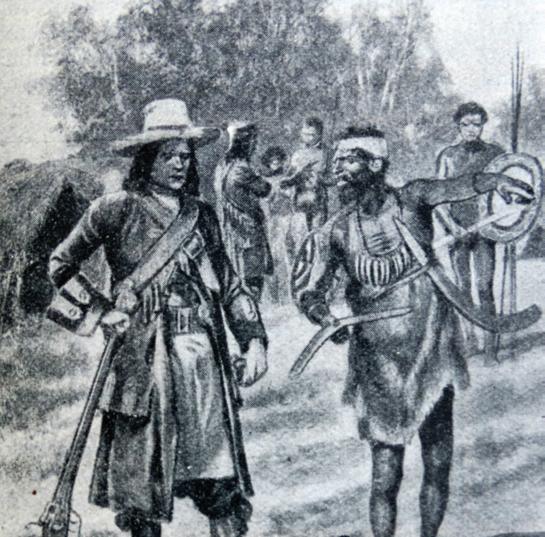
1788
Captain Arthur Phillip and the First Fleet begin British settlement at Port Jackson (Sydney)
1803
Matthew Flinders completes his circumnavigation of ‘Australia’
Source 7.2.2 King Georges Sound, 1857. View near ‘… the southwestern extremity of the Australian continent. It consists of an outer sound and two inner basins or harbours, which are perfectly landlocked, and afford every security for ships. As there is no harbour within a great distance of it, either on the southern or western coast of Australia, which offers such advantages as King George’s Sound, colonists were sent there from Sydney as early as 1826…The natives…are friendly to settlers’. From ‘Illustrated London News’, 1857. Creator: Unknown
1829
The Swan River Colony (Perth) begins
1826
King George Sound (Albany) becomes the first British settlement in Western Australia
Source 7.2.3 William Dampier (1651–1715) first Englishman to explore parts of what is today Australia, and the first person to circumnavigate the world three times. Dampier wrote that First Nations Peoples of Australia were the ‘miserablest’ people he had ever seen who ‘differ but little from brutes’.
1834
The Pinjarra Massacre
The period in Europe, and Britain in particular, which saw rapid technological and industrial development, based on steam power, factories, iron and coal, and advances in transport. This revolution provided European powers with wealth and military superiority, that allowed them to expand and create empires around the world – called imperialism.
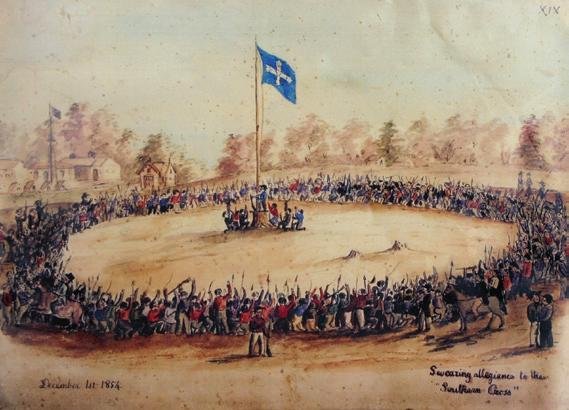
1854
➜
Source 7.2.4 Eureka Stockade. Swearing Allegiance to the Southern Cross; a painting by Charles Doudiet depicting the swearing of allegiance to the southern cross (Eureka Flag) at Bakery Hill on 1st December 1854. Doudiet was attracted by the Victorian gold rushes to visit Australia, and his painting provides authentication of the design of the original Eureka Flag
The Eureka Stockade
1890
Western Australia becomes self-governing
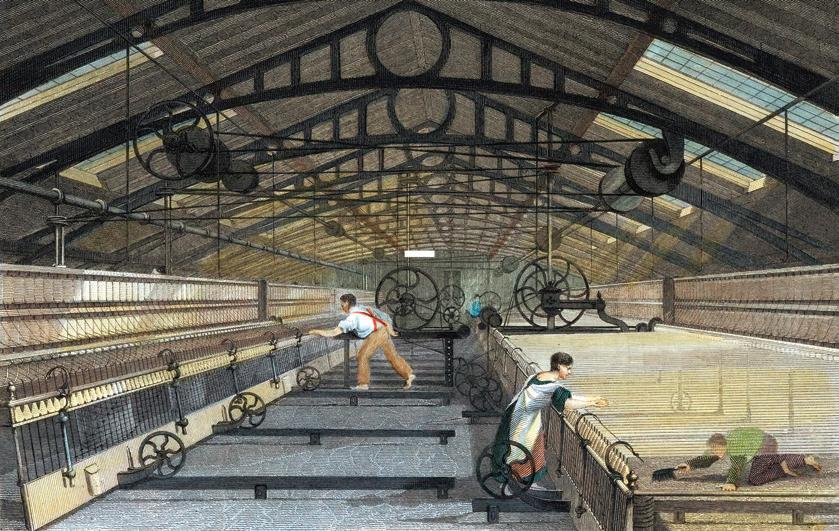
Source 7.2.5 There was a gradual change in the Industrial Revolution, from producing goods in small cottage workshops, to ‘mass production’ in very large factories like this one, where cotton cloth is being made. Traditional societies could not compete with the industrial powers
1870
1850s
The Gold Rushes of eastern Australia
1890s
The Gold Rushes of Western Australia
1905
Western Australia’s Aborigines Act is passed into law
World War I begins
Western Australia begins representative government
1 What general comment can you make about how WA history has differed to that of the eastern states of Australia, based on the timeline?
2 What does Dampier’s quote suggest about European attitudes to Aboriginal culture at the time?
3 How was the Industrial Revolution related to the British settlement of Australia?

• Why did the European powers come to dominate the world by 1750?
Although European empires had existed in medieval times, on land, it wasn’t until advances in science and industry allowed for extended sea voyages that these empires began to extend beyond the coastlines of Europe. In this section, you will investigate the reasons for the growth of European empires by the mid1700s, and how it led to the exploration and then colonisation of Australia. The main reasons for the dominance of the European powers at this time include:
• advances in navigation and shipbuilding
• the Industrial Revolution in Europe, and its impact
• rising populations and resource shortages in Europe
• strong trading economies and capitalist ideas
• advances in weapons and technology, along with military organisation and strategy.
Advances in navigation and shipbuilding
Although Portuguese interest in maritime exploration began before him, the opening up of the world by sea is often attributed to Prince Henry the Navigator, who lived until 1460.
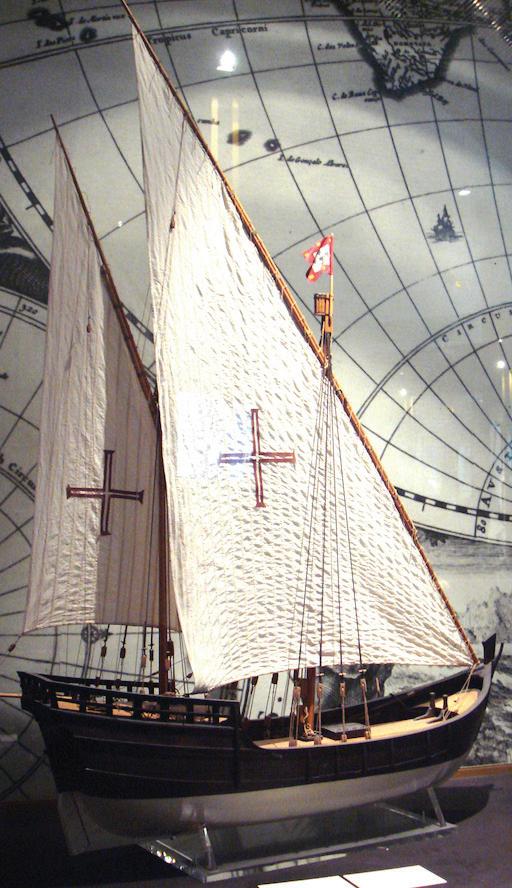
In his royal court, he encouraged cartography and navigation, and he provided the funds for exploration. Henry was encouraged by initial successes in Morocco to continue exploration of Africa, which was still relatively unknown in Europe. It was under Henry that a new type of ship was developed – the caravel – which was lighter and more manoeuvrable than previous vessels. The caravel used triangular ‘lateen’ sails, that allowed it to travel upwind, a sternpost rudder that overcame the restrictions of a steering oar, and a shallow draft, which allowed it to avoid reefs and sandbars when charting coastlines. His navigators recorded wind patterns and created maps for future expeditions. On voyages, they used the magnetic compass that had originated in China and the Arabian astrolabe to determine latitude.
As a result of these developments, the Portuguese were able to map the entire coast of Africa, and a Portuguese explorer, Vasco De Gama, became the first European to sail into the Indian Ocean, reaching India in 1498. Portuguese trading posts were established all the way to southeast Asia, charging customs duties for all other European ships that sought to trade through their ports. The Portuguese were able to dominate Indian Ocean trade in the valuable spices of pepper, cinnamon and nutmeg, among others. No record of Portuguese landings in Australia exist but their explorers did submit reports of a vast ‘south land’.
did not record a landing on the ‘great south land’.
The first Europeans to officially land in Australia were the Dutch. Dutch exploration was largely due to the work of the Dutch East India Company, or VOC, which sought to exploit the trade in Chinese silk and porcelain, as well as spices from what is now known as Indonesia but was for a long time called the Dutch East Indies. The Dutch developed the three-masted ‘East Indiaman’ ships, that came to dominate world trade due to their armaments and size. Early Dutch explorer Willem Jansz (Janszoon) was the first to set foot on Australian soil, after arriving on his vessel the Duyfken (the ‘Little Dove’), at Cape York in 1606.
In order to increase their trading profits, a Dutch explorer, Hendrik Brouwer, developed a new route to the East Indies that took advantage of the Roaring Forties trade winds, instead of the Dutch ships hugging the coastlines of Africa and Asia. This new route halved the time taken to reach Java from Europe. It came at a cost, however, with many ships running aground on the Western Australian coastline after misjudging their longitude before turning north. On one such voyage, Dirk Hartog landed at Shark Bay and left behind a pewter plate to mark his landing, naming Australia ‘Eendrachtsland’ after his ship. To prevent losses, and to search for survivors of wrecks, further Dutch voyages explored and charted the western coastline of what was to be known as ‘New Holland’.
The next European power to commit to world maritime exploration was Spain. It was Christopher Columbus’ Atlantic expeditions that saw the Spanish develop settlements in the Americas. A Spanish expedition led by Portuguese Ferdinand Magellan opened up the Pacific to European exploration, when he circumnavigated the globe in 1522. Spaniard Luis de Torres charted the Torres Strait to Australia’s north but
None of this exploration would have been possible without financial backing. Europe in the Middle Ages, despite a rich variety of crafts and trade, was based on an agricultural economy and small, cottage industry. By the early 18th century, this had begun to change. Starting with a revolution in farming and the end of feudal land-sharing, in places such as Britain, society was transformed by technological change and industrial development.
Large urban centres and factory production replaced rural life for many, and mechanised manufacturing provided incredible wealth for those that could exploit the circumstances. The revolution was based on iron, coal and the development of steam power. It began in Britain with the textile industry, and the need for raw materials and new markets drove developments in transport that opened up the world.
The wealth generated in Europe by the Industrial Revolution was not evenly shared across the population, with many workers living in poverty in the slums of the big cities. The government, and the owners of the large industrial companies, however, became incredibly rich, and capable of financing exploration around the world, and the military that could defend their conquests. This can be seen in Source 7.3.2.
Industrialisation and scientific advancements soon led to a population explosion in Europe. The continent’s population roughly doubled in the 18th century, as reliable food supply from the modern farming techniques combined with improved medicine and public health advances made possible through industrial wealth. Sewers, running water and hospitals became commonplace, and better education improved the general understanding of how disease and ill health were caused. Greater populations, however, placed a greater burden on authorities, resources, and housing in particular. Solutions began to be sought in overseas conquest.
Besides the pressures of a growing population, the development of

mechanised manufacturing meant that countries such as Britain sought greater trade with the world. In order to supply raw materials, such as cotton for the factories of northern Britain, new farmlands were needed. The growth of steam power and steel-making increased the need to find new sources of coal and iron. When factory production exceeded the capacity of local populations to absorb it, new markets were sought around the world. An overseas empire could supply the raw materials and also create an opportunity to profit from selling European products to new and eager consumers.
Greater wealth in Europe also drove imperialism , as the elites sought out exotic products and products which they could display as a sign of wealth. Silk, fine porcelain, tobacco, spices and tea became symbols of success and the Industrial Revolution had created the wealth to ensure that the high prices of international trade were no object. Soon, instead of buying products from the local inhabitants, the European powers, such as the British, realised that it was far cheaper to create overseas empires, and control the industries and resources themselves.
Once the Portuguese and Spanish had begun to bring back enormous wealth from central and southern America, others in Europe began to see the potential fortunes to be made in exploiting overseas trade. Trading companies quickly grew and began to explore the world for new markets and resources.
from the banking system in Europe, which provided funds for new ships and voyages. The governments of Europe, especially in Britain, France and the Netherlands, supported these companies and gave them almost unlimited power to use arms to secure trading routes, often at the expense of local peoples or rival companies. The governments allowed this because of the huge incomes they received from taxing the companies. If there was resistance to their companies or their settlements, the governments would send armed forces to restore order and protect trade.
As a result, most of the imperialism in the world from the 16th century was done by private companies, rather than governments. The most important examples for the Australian region were the British East India Company, and the Dutch East India Company (VOC). European colonisation of Asia was predominately undertaken by these companies.
The companies were built upon private investment, often from those that had become wealthy as a result of the Industrial Revolution, but also
As explained above, the European powers after the Industrial Revolution had weaponry that was far superior to that found in other parts of the world. When combined with superior shipping and professional soldiers, this advantage meant there could be little opposition to colonial expansion by the local peoples of places such as South America, Africa or Asia. By the time of the British settlement of Australia, also known as the colonial period, British weaponry was some of the most advanced in the world. Being able to run an efficient military, however, was also the result of technology beyond weapons themselves. The table on page 277 gives examples of this other technology, and how it helped the imperial powers of Europe in the 1800s.
imperialism the idea of creating an empire through the economic or military takeover of other nations. In this way, imperial powers gain access to greater resources and become more powerful
Research task: What was the VOC?
The letters VOC stand for the Vereenigde Oostindische Compagnie. It is commonly known today as the Dutch East India Company. Some people regard it as the first true multinational company. People throughout the Netherlands invested in the company and it was given a monopoly position on maritime trade between the Netherlands and Asia. Bringing so much income to the Dutch government, it was allowed to wage wars, create its own currency, and establish colonies.
The VOC became wealthy due to the lucrative spice trade, with the Dutch setting up trading ports in the islands today known as Indonesia. Spices such as pepper, nutmeg and cinnamon attracted incredible prices in Europe and funded a Dutch empire in the 17th and 18th centuries. Wars with England brought the downfall of the company, before Napoleon took over the Netherlands in the early 1800s.
1 Research the Dutch colonial empire at the height of the VOC’s success. What countries of the world today were part of the Dutch empire?
Go to https://cambridge.edu.au/redirect/11376 to help answer the questions below.
a Identify what the Human Development Index measures.

b Use the interactive HDI graph to find out the most recent HDI for the Netherlands and at least 3 countries that were part of it’s Empire.
c Describe any patterns and exceptions that you notice in this data.
d What does comparing HDI of these countries suggest about the impacts of colonisation?
e Repeat questions a-d using the HDI of Great Britain and countries that were part of its empire.
3 What were the major trade items that created wealth for the company and what were they used for in Europe?
4 Research the Dutch takeover of the Banda Islands. How were the Bandanese people treated by the Dutch?
5 The VOC also engaged in forms of slavery. How does this compare to the economic exploitation by the company? In the Netherlands today, their colonial past is not widely celebrated. Can you explain why?
6 The VOC’s exploration brought the first European sailors to Western Australia. Why did they not settle the land they called New Holland?
Key concepts: cause and effect, perspectives, contestability
analysing, evaluating
Textile production was the first main industry to shift from cottage industry to mechanised factory production. The wealth from textiles funded further developments in technology and overseas expansion. Textile factories required huge amounts of cotton, flax and wool and also needed markets, creating the need for overseas trade and colonies.

Railroads provided economic benefits to European industry but also followed imperialist expansion overseas. Reliable and fast transport became important to trade, but also to military movement and supplies.

Source 7.3.5 An artists impression of railroad building
Britain and Western Europe led the world in iron and steel production, and this in turn provided benefits in weaponry, transport and machinery production. Modern artillery and guns, as well as railroads and steamships, required the highest quality steel, made in advanced foundries.
Although sailing ships proved cheaper in the short term, as steam power, propellors and iron hulls developed, the European powers and their steam-powered fleets proved a major factor in dominating trade and controlling both sea routes and inland rivers. Using the letters SS before a ship’s name indicates it was a steamship.
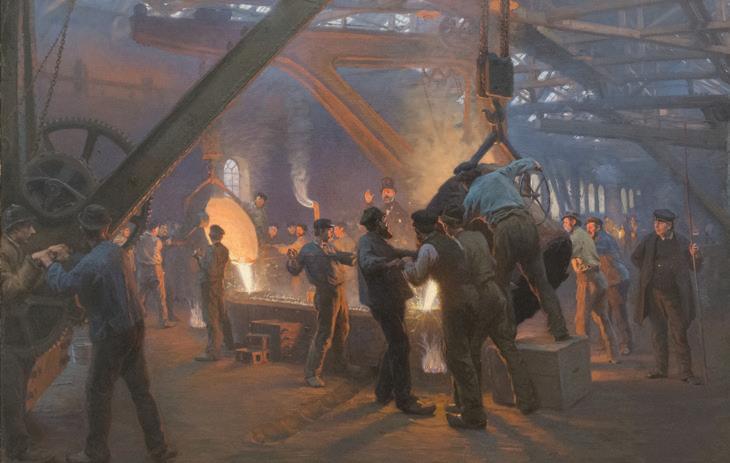
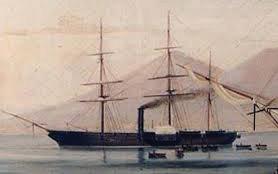
Fast communication was essential in governing an empire and reacting to threats. First on land, then using undersea cables, messages could be sent across the world in a matter of hours. Decisions could be made quickly and gave the Europeans another advantage in war and commerce.

Sometimes developments in medical technology are overlooked in explaining imperialism but, in the case of malaria, preventative medicines were essential. With much of the colonial world subject to malaria, imperial forces needed a way to avoid it if they were to control equatorial possessions effectively. Large-scale use of quinine, largely produced by the Dutch in Indonesia, allowed for the colonisation of Africa and Asia by Europeans.


The key developments in weaponry that gave the European powers dominance over other peoples around the world were the development of infantry guns and artillery. The technology listed above provided the ability to produce these weapons. Modern guns were expensive, and required mass production in factories, good transport and advanced iron and steel production. At the beginning of the period of European expansion, soldiers were equipped with muzzle-loading muskets and were trained in the use of cannons that fired balls of lead or other metals. The Portuguese initially were the most advanced in producing cannon, and used them to protect their navigators and trading ports around the world. Gunpowder was not a European invention, however, and in Asia the European armies initially found their weaponry was soon matched by those defending their lands.
The advances in guns that made the Europeans almost invincible came in two key stages. First came the development of rifles. Rifling describes the process where spiral grooves are created inside the barrel of a gun, causing cylindrical bullets to spin as they are fired, resulting in greater
accuracy and range. Early rifles continued to be muzzle-loaded but were increasingly fired by percussion caps, rather than the dangerous and time-consuming method of using a flint. Such rifles made muskets obsolete and the most famous were the French-made Minie rifles and later variations of the British ‘Brown Bess’. Such rifles could be effective at a distance of up to 300 yards (about 275 metres).


Muzzle-loading rifles took time to prepare for firing, and required the soldier to stand to reload, making them vulnerable to enemy fire. The next stage in rifle manufacture saw the invention of breechloading guns. These were rifles that could be loaded from the ‘breech’ – located at the other end of the rifle, near the stock. This was only possible due to a higher quality of solid steel forging. Soldiers could fire and load more quickly, while remaining in a prone position. The most famous of these rifles was the Snider-Enfield, which began mass production in 1867. This rifle could be fired up to ten times in a minute and had a range of up to 1000 yards (914 metres). By the time of the American Civil War, ‘repeater’ rifles were common, where a magazine or revolving chamber enabled a rate of fire close to a bullet per second. The invention of the ‘Dum Dum’ bullet, which expanded on impact, made the rifles even more lethal.


A natural extension of these developments was the machine gun. Initially, the Gatling gun was most common, and then from 1884, the Maxim gun. Designed by American-born, British inventor Hiram Maxim, it is described as the world’s first fully automatic weapon. Water-cooled, it could fire at 500 rounds per minute.
In artillery, canons were increasingly replaced by more modern artillery in the 1800s. Artillery pieces followed a similar evolution to other guns, with
breech loading replacing muzzle loading by the mid-1800s, and rifling of the ironreinforced barrels. A typical example was the British Armstrong Gun. Artillery pieces such as the Armstrong Gun could fire shrapnel, case shot or exploding shells. Exploding shells became more common after the American Civil War and contained first gunpowder, then cordite, fired by a timing fuse or a percussion fuse that detonated the shell on impact. Armstrong Guns were used by Australian Colonial Forces up until Federation in 1901.

Source 7.3.14 This Armstrong Gun was used by colonial forces in Victoria in the 1860s. It is on display in the Australian War Memorial. Steel had previously been deemed unsuitable for heavy guns, due to the pressures involved. The Armstrong method of using coils of iron and later steel, to reinforce the guns, became the norm by the end of the 19th century.
artillery a large weapon of war, for firing projectiles, often distinguished from cannon by the use of exploding shells
The result of these developments in weaponry was the colonial dominance of the European powers of the time. One of the most famous examples of the advantages of the modern technology, and the first use of Dum Dum bullets in a major battle, was during the conquest of Sudan by the British in 1898.
Source 7.3.15 is a description of the key battle by Winston Churchill, who was later to become Prime Minister of the UK. Lord Kitchener led a force up the Nile that included heavily armed steamers, artillery and Maxim guns. A Dervish army of over 40 000 were defeated in a matter of hours, with only 48 British casualties.
They fired steadily and stolidly, without hurry or excitement, for the enemy were far away and the officers careful. Besides, the soldiers were interested in the work and took great pains. But presently the mere physical act became tedious. The tiny figures seen over the slide of the back-sight seemed a little larger, but also fewer at each successive volley. The rifles grew hot – so hot that they had to be changed for those of the reserve companies. The Maxim guns exhausted all the water in their jackets, and several had to be refreshed from the water-bottles of the Cameron Highlanders before they could go on with their deadly work. The empty cartridge-cases, tinkling to the ground, formed small but growing heaps beside each man. And all the time out on the plain on the other side bullets were shearing through flesh, smashing and splintering bone; blood spouted from terrible wounds; valiant men were struggling on through a hell of whistling metal, exploding shells, and spurting dust – suffering, despairing, dying. Such was the first phase of the battle of Omdurman.
Source 7.3.15 Churchill wrote about the Sudan campaign in his book The River War. It was published in 1899. ➜
1 Describe this source – what is it? How could it be described as both a primary and a secondary source?
2 Describe Churchill’s attitude to the enemy. What descriptions are used that convey this attitude?
3 Is this a reliable source on the conflict? Explain your answer.
4 What are the overall messages about the nature of colonial conflict in the 1800s?
Key concepts: sources, evidence, contestability, significance
conscription when civilians are forced by law to serve a term in the armed forces of a country
Some historians describe a military ‘revolution’ in the early modern period. It was based on the use of guns, and the mobility it allowed for infantry. It also came after developments in cannon made feudal castles no longer impregnable to attack. At this time, developments in technology
HASS skills: communicating, analysing
combined with public finances made large, professional armies possible. Others consider the impact of conscription in Europe to be the key factor in changing warfare. Using guns meant that soldiers did not need much training to be effective on the battlefield, and could be drawn from the general population in times of conflict.
Huge armies followed, which required an equally huge economy to provide supplies, ammunition, transport and weapons. The armaments industry that developed in Europe benefitted from advancements in mass production, and could not be matched elsewhere in the world.
The most successful armies were those that used their resources most effectively. In France, Napoleon led many developments in western military strategy, focusing on the use of technology in weaponry and communications, superior logistics, well-trained officers and intelligence gathering. The Napoleonic
Napoleon Bonaparte was Emperor of France from 1804 to 1815. He rose to prominence in Europe during the French Revolution and created a vast European empire. He was also responsible for a modern legal code in France, and modernising education.
idea of an impenetrable ‘square’ of infantry, based on a wall of bullets from rows of soldiers, was too much for attackers that lacked the modern technology. In southern Africa, in 1893, a column of fifty British soldiers from the British South Africa Company fought off an attacking force of 5000 Ndebele warriors armed with ‘assegais’ – a short spear – and some modern rifles. The British were in possession of Maxim machine guns, and suffered only minor losses. The battle contributed to the defeat of the Ndebele, or Matabele peoples, in the area now known as Zimbabwe.
Napoleon was one of the first to use widespread conscription but also a system of promotion in his army based on merit, not birth or wealth. As a result, his armies were large and well-led by loyal officers. He also pioneered mobile artillery and revived the use of fast-moving cavalry. He used rapid movements to attack weak points in opposition forces and then destroy them, rather than accepting surrender. His tactics changed the way wars were fought, and were used against him in his eventual defeat at Waterloo in 1815. As a result of the Napoleonic Wars, the armies of Europe were able to take battle experience to their empires around the world.
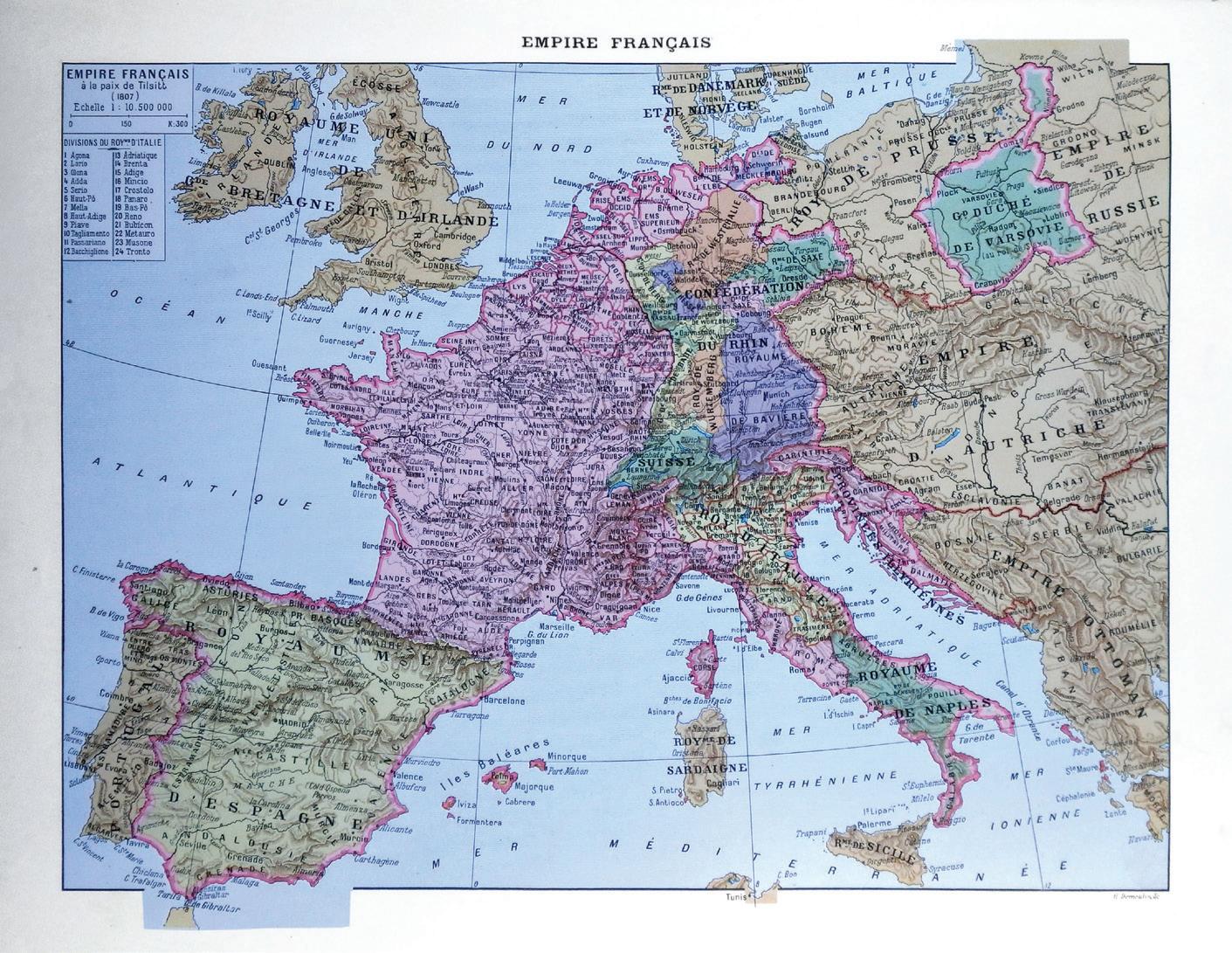
Source 7.3.16 The areas shaded or bordered in pink indicate those areas under Napoleon’s control at his height. Who would defeat him?
1 What were the key advances in military strategy that Napoleon introduced?
2 Investigate which countries fought in the Napoleonic Wars. Why did Napoleon fail?
3 Competition between the French and the English contributed to the settlement of Australia. Why did leaders such as Napoleon seek an overseas empire?
Source7.3.17 Napoleon Bonaparte. There was nothing wrong with his hand, it was just the fashion at the time!
Key concepts: causes and effects, significance, continuity and change
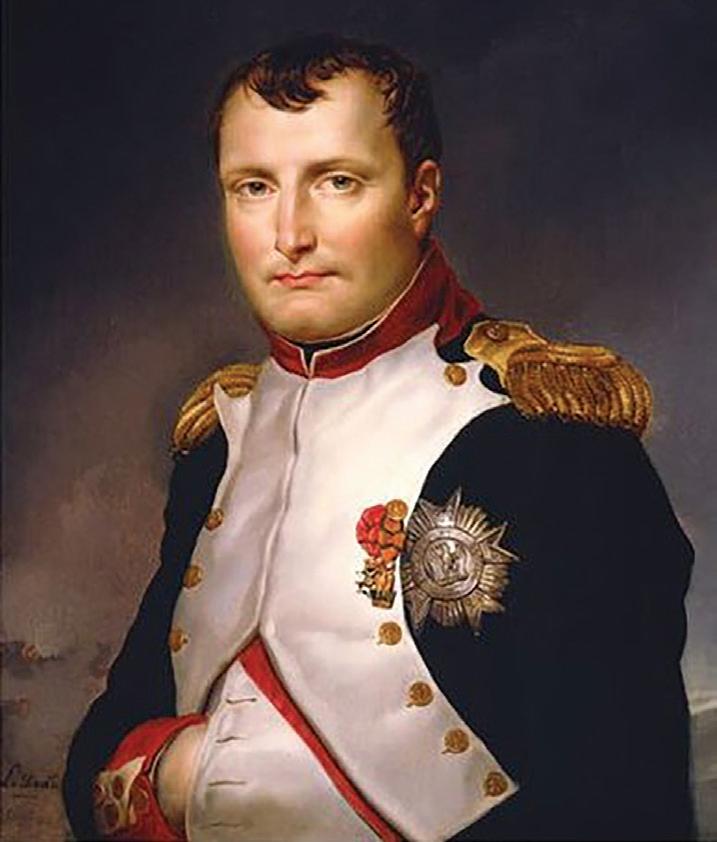
HASS skills: researching, evaluating
Go online to access the interactive section review and more!
Section 7.3 review
7.3 Review questions
Recall
1 Explain how Britain’s economy during the Industrial Revolution led to imperialism.
2 Recall the technologies crucial to building a colonial empire.
Interpret
3 What were the most important developments in weaponry that gave European countries their advantage over people in other parts of the world by the 19th century?
4 Outline the factors that led to the arrival of Europeans in Australia.
Argue
5 Identify and evaluate the relative significance of the VOC and Napoleon during the period of European imperialism.
Apply 7.3 questions
1 Investigate the slave trade up until 1863. Which countries were most important to this trade, and who campaigned against it? How did slavery shape the world today?
Key concepts: cause and effect, significance, continuity and change
HASS skills: reflecting, evaluating, researching
• How did British settlement affect the Indigenous people of Australia?
It has been estimated that, at the time of the first British settlement, there were over one million Aboriginal and Torres Strait Islander Peoples thriving on the island we now know as Australia. Although there were some customs uniting them, there were a multitude of language groups spread across the continent, each with their own distinct culture. British colonisers did not recognise these people, however, and no treaty was negotiated with them, as has been in other countries, such as with the Maori people of Aotearoa/New Zealand. The British colonisers did not recognise First Nations law or property rights and could not understand the complexity of Aboriginal and Torres Strait Islander culture. They therefore dismissed it as inferior.
The histories of the Noongar people of Western Australia state that the great serpent spirit Waugal (Wagyl, Warrgul) created the rivers and hills of the southwest with its body, gave life to the land, and made the Noongar people custodians of the land. This is one of many creation stories from around Australia, known as Dreamings. It is
important to know that Aboriginal and Torres Strait Islander cultures are diverse and there are many different languages and creation stories that vary from nation to nation. All groups, however, have their own creation stories.
Scientific research indicates that First Nations Peoples migrated to the continent more than 65 000 years ago. During this time, the Australian mainland was connected to Asia via a land bridge that gradually disappeared following sea-level rises at the end of the last glacial period around 6000 years ago. A similar land bridge also allowed First Nations Peoples to eventually arrive in Tasmania from the mainland.
Over thousands of years, First Nations Peoples worked and managed the land in a variety of ways. Fire-stick farming, eel traps and yam farming are just a few examples of the ways that First Nations Peoples used agriculture and landmanagement techniques to cultivate food crops and live sustainably on the land.
Think back to what you have previously learned about First Nations cultures in previous years. What do you already know?


Source 7.4.1 A map of Indigenous Australia. This map attempts to represent the language, social or nation groups of Indigenous Australia. It shows only the general locations of larger groupings of people, which may include clans, dialects or individual languages in a group. It used published resources from the eighteenth century to 1994 and is not intended to be exact, nor the boundaries fixed. It is not suitable for native title or other land claims.
David R Horton (creator), © AIATSIS, 1996. No reproduction without permission. To purchase a print version visit: https://shop.aiatsis.gov.au. The sourceline for this map tells you where the person who created the map got their information from. Most information came from sources written by non- Indigenous people. Consider whose perspectives and information are being used to create this map. Whose perspectives and information might be missing?
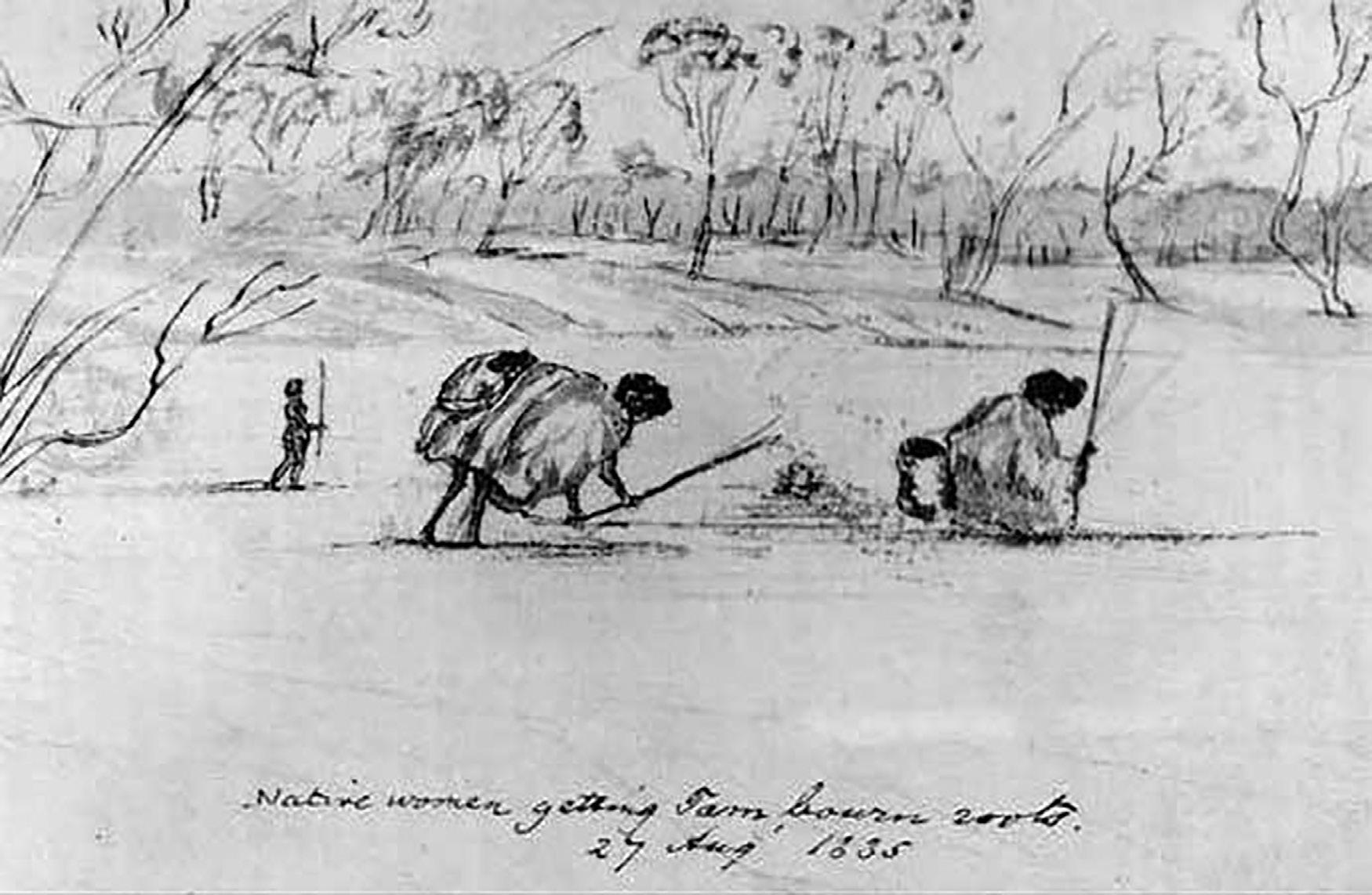
Source 7.4.2 First Nations Peoples developed sophisticated agricultural practices over thousands of years, cultivating the land for generations. In this sketch by one of the first of the British colonists, Wathaurong women are shown digging for yams at Indented Head, near Geelong, Victoria, in 1835.
The British reach Australia
First Nations cultures spread across Australia over thousands of years, but these cultures were not isolated from the rest of the world. First Nations Peoples established trading relationships with societies beyond the Australian continent, into the Asian and Pacific region. One of the most wellknown of these traders is the Yolngu people of the Northern Territory. The Yolngu people established trading relationships with communities in Indonesia, known as the Macassans, hundreds of years before the British arrived in Australia. While historians disagree about exactly when this trade began, it is generally agreed to have begun well before Lieutenant James Cook reached Australia.
Some writers have suggested that the Chinese ‘discovered’ Australia during the Ming dynasty, almost 600 years ago. Under the direction of military commander, Zheng He, the Chinese certainly had the ships and wealth to support them. His
voyages through southeast Asia opened up trade between China, Indonesia and Malacca – bringing his fleet close to Australia. No real evidence exists to support the theory that he landed in Australia however, and it remains accepted that the first comprehensive maritime exploration of Australia was completed by the European imperial powers. As explained earlier, Europeans discovered sea routes to Australia and began to visit in the seventeenth century. Spanish, Portuguese, Dutch and French explorers came to Australia over an extended period of time.
Following Brouwer’s route to the East Indies, the Dutch were the first Europeans to make a record of their visits to ‘New Holland’. The earliest recorded Dutch landing and contact with Aboriginal people was the expedition of Willem Janszoon and his ship the Duyfken. Janszoon went ashore at Cape York in 1606. The first recorded landing in Western Australia was by Dirk Hartog, who left an engraved pewter plate at an island near what is today called Shark Bay, in 1616.
This plate was recovered and replaced by Willem de Valmingh in 1697. De Valmingh made a careful study of the Western Australian coastline, charting the Swan River (named after the black swans) and Rottnest Island (named after the rats!). Many others followed, often seeking to find shipwrecked sailors. Abel Tasman, who explored the region on behalf of the VOC, discovered that the continent was not connected to a greater ‘south land’ and named Van

Diemen’s Land after his employer. Van Diemen’s Land would later be called Tasmania. No Dutch explorer ventured to Australia’s east coast, however, which remained an unknown land for Europeans until the arrival of British explorers.
British Lieutenant James Cook, often incorrectly listed as the first European to reach Australia, reached the eastern coastline of Australia on 19 April 1770. He observed First Nations groups at Brush Island near Bawley Point several days later. Lieutenant Cook made landfall on the continent itself on 29 April at what he would call Botany Bay because of the unique species he found there. Cook made direct contact with the First Nations Peoples in the region.

Activity 7.3
Using historical sources as evidence
1 What messages about traditional Aboriginal culture are given in Source 7.4.2?
2 Source 7.4.3 is used as evidence of contact between Dutch sailors and Aboriginal people over three hundred years ago. Is this a reliable source? Explain.
3 Investigate: See if you can find out more about the interactions between shipwrecked Dutch sailors and Aboriginal groups in Western Australia. A good place to start is the book A Touch of the Dutch (by non-Indigenous historian Nonja Peters) written in 2016. How would the local inhabitants have perceived these strange visitors?
Key concepts: source, evidence
HASS skills: analysing, researching
Lieutenant James Cook returned to England. His voyage did not spark any immediate push to colonise the continent, but around 15 years later the British government decided to establish a penal colony in what is now New South Wales. The decision to establish a colony was driven by several factors, including the following:
• Britain had a policy of transporting its prisoners to its colonies, but after the American Revolution of 1776, Britain needed a new location.
• The Industrial Revolution was overcrowding Britain’s cities, leading to a rise in crime. Prisons were overflowing and the government needed a solution to the crisis.
• Sir Joseph Banks, who had travelled with Lieutenant Cook, told a parliamentary inquiry that Botany Bay would be a perfect place to establish a penal colony and had the potential to produce flax and timber.
• Significant natural resources meant the British believed a colony at Botany Bay would be able to sustain itself.
• A safe naval base in Australia could provide strategic advantage in protecting trade routes and avoiding the dangers of sailing through southeast Asia.
Lieutenant Arthur Phillip, a retired naval officer, was chosen to lead a fleet to Botany Bay and establish a British colony. Phillip arrived at Botany Bay on 18 January 1788 but did not like the conditions there. He sailed the fleet north to Port Jackson, which he described as the ‘finest harbour in the world’. He named the town he established there after British Home Secretary Lord Sydney (the minister who had sent him on his journey). Arthur Phillip established his colony on the lands of the Eora people who had managed the land for tens of thousands of years.
The early years of the colony were hard, and the convicts found it difficult to adapt to the new environment and climate of Sydney. The Eora nations of the surrounding area reacted in different ways to the invasion of their lands by the British. Some communities were generous with the colonisers, while some were combative.
As the colony expanded, it took over many areas of cultural significance to the Eora people. These sites remain areas of significance to Eora people today.
‘Squatters’ – people who raised sheep on uncleared land without buying it – pushed further inland as time went on, taking advantage of the lucrative wool trade. This in turn, led to conflict with more Aboriginal groups.
The Sydney colony was followed by the establishment of a second colony in Risdon Cove in Van Diemen’s Land (what is now Hobart, Tasmania) in 1803. This colony was established on the lands of the Mouheneenner people and also served as a penal colony for the British Empire.
Other colonies were established over the following decades around the continent:
• 1829 – Establishment of the Swan River Colony (shortly afterwards renamed Western Australia)
• 1836 – Establishment of the Province of South Australia
• 1851 – Establishment of the independent colony of Victoria
• 1856 – Van Diemen’s Land is renamed as the colony of Tasmania
• 1859 – Establishment of the independent colony of Queensland
Queensland and Victoria had previously been considered part of New South Wales. Each of these colonies had unique characteristics and each was established on the lands of First Nations Australians. The areas the colonies controlled gradually expanded, eventually covering the entire continent.



Source7.4.6 Emigration patterns from the United Kingdom over the period 1815–1914, showing immigrants from the UK by numbers and as a percentage of the total number who left the UK. In total, some 22 126 047 people emigrated from the UK in this time.
Northern Territory Settlements had been set up in the Northern Territory before 1840 at Melville Island and Port Essington but they were abandoned. South Australia took responsibility for the territory from New South Wales in 1863. In 1911, the federal government took over.
Concerns over French interest and exaggerated reports of the area’s fertility prompted the British government to support a scheme by Thomas Peel to establish a settlement around the Swan River. James Stirling was appointed governor and by 1830, 4000 migrants had arrived. However, richer settlers grabbed the best land first. There was a shortage of labourers and the soils were not as fertile as first thought. By 1832, the population had dropped to 1500. To assist the growth of the colony, the British government agreed to transport convicts to the colony; transportation eventually ended in 1868. It took the discovery of gold at Kalgoorlie in the 1890s to finally attract large numbers of free settlers.
Unlike the other colonies, South Australia was established in a planned manner based on a theory of colonisation, worked out by Edward Wakefield. Wakefield argued that the price of land should be kept relatively high. Poorer migrants could then provide a labour force for the richer settlers. Money gained from land sales could be used to subsidise poor labourers to emigrate. In 1833, he formed the South Australia Association. The first colonists landed at Kangaroo Island in 1836. However, the colony’s surveyor-general, Colonel William Light, found a much better spot where today Adelaide stands. Governor John Hindmarsh accepted Light’s choice. Wakefield’s principles did not work out and the colony accrued debts. By 1842, Governor George Grey had taken control and sought to run the colony along similar lines to the other colonies. Grey’s careful economising, the development of wheat and later mineral discoveries meant South Australia prospered.
Queensland In 1824, NSW Governor Thomas Brisbane established a place of secondary punishment at Moreton Bay. A convict settlement was established at Redcliffe but soon moved to the present site of Brisbane. The convicts were removed in 1839 and from 1842 free settlers were allowed to take up land grants. Moreton Bay developed quickly and became a key export post for wool farmers in the Darling Downs west of the ranges. In 1859, Queensland became a separate colony. Queensland produced wool and beef, and became a major sugar cane exporter. Kanaka labourers from Pacific Islands were often kidnapped and forced to work on the sugar plantations.
Van Diemen’s Land (Tasmania)
John Bowen settled at Risdon Cove in the south in 1803. Collins’ group arrived in 1804 and he moved the settlement to Hobart. By 1806, a settlement under William Paterson had been set up at Launceston in the north. In 1821, a place of secondary punishment was started at Macquarie Harbour; another was set up at Port Arthur in 1832. Habitual convict offenders and the most difficult convicts to control received secondary punishment in isolated locations. Conditions were primitive and punishments were extremely severe. The main economic activities were wheat, sheep and whaling, and mining became significant from the 1870s. The island became a separate colony in 1825 under Governor George Arthur. In 1856, the name was changed to Tasmania.
Initially, only the east coast was settled by the British, but this was to change. Concerns about French interests in the western half of Australia grew during the Napoleonic Wars. In 1772, Louis de Saint Allouarn claimed ‘New Holland’ for the French when he landed at Dirk Hartog Island. In response, the British encouraged exploration of the coastline, including the voyages of George Vancouver, who mapped and recommended the extensive natural harbours of King George Sound. Subsequent exploration by French explorers Bruny D’Entrecasteaux, Nicholas Baudin and Louis de Freycinet, prompted the British to explore the possibility of a settlement. The task was given to New South Wales navigator, Phillip Parker King. He did not consider the Swan River to be appropriate for settlement and, with fears growing of the French using its natural harbour as a base for threatening their shipping lines, the British decided to establish a settlement at King George Sound under Major Edmund Lockyer in 1826. It was initially called Frederickstown, after the brother of then King George, but later became known as Albany. Friendly relations initially existed with the local Menang people, and the first farms were established.
The potential for agriculture was limited in the Albany area, however, and a new site for settlement was recommended
by Captain James Stirling – the Swan River. Stirling was convinced of its potential, and recommended to Governor Darling in Sydney that it should be the site of a new colony. The British government initially did not approve of the settlement.
This didn’t stop Stirling. He travelled to London and strongly advocated for the new colony, convincing many private investors that the site was perfect for development. Eventually, the government agreed to establish a colony, and sent a fleet led by Captain CH Fremantle to officially claim the western part of the continent for Britain. This was done in a brief ceremony at Arthur’s Head on 2 May 1829. Stirling and his colonising party followed soon after.
After an initial period of enthusiasm for the new colony, known as ‘Swan River Mania’, the realities of the remote and often hostile environment began to sink in for the colonisers. After initially being encouraged by the prospect of free land grants for any colonist bringing out workers to the Swan River, the colonisers soon found the land unsuitable for farming and were increasingly reliant on the few ships that could land safely in the waters off Fremantle. The colony persisted, however, and better land was found further upstream, along the Swan Valley, near Guildford, and eventually over the Darling Ranges, near York.
The first British colonists arrived at Garden Island, which was protected from westerly gales and had some fresh water, but it could not support a large population. A new site for the settlement needed to be found, one which could take advantage of the Swan River itself as a transport route. Captain Stirling needed to find a riverside or coastal location that was protected from the elements, near good soils and fresh water, and was easy to build on. Why did he choose Perth? Using the map in Source 7.4.8, have a go at the activities that follow. They may help in understanding why he made his decision, and why other options were not accepted.
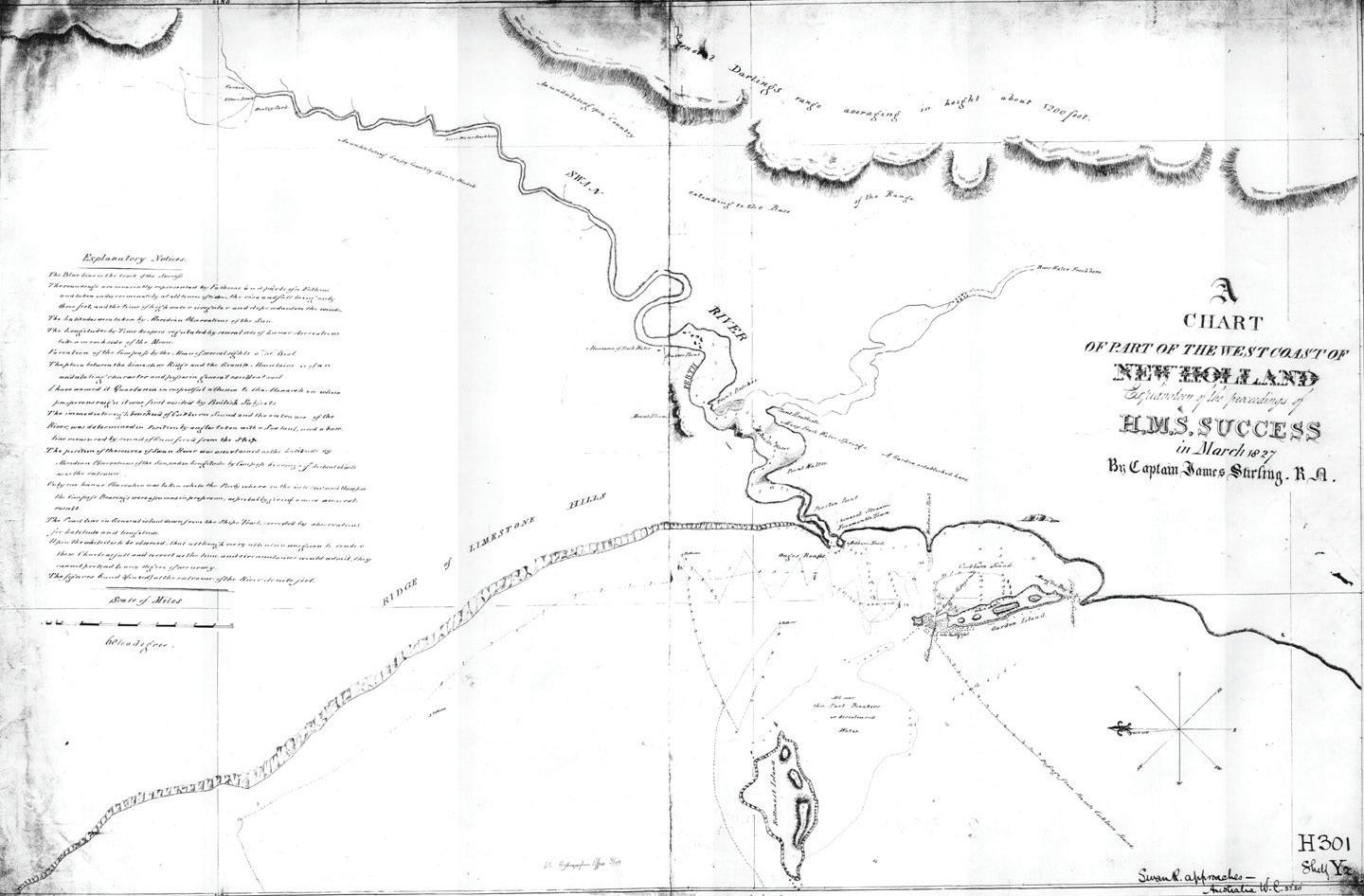
Source 7.4.8 Captain Stirling’s chart of the Swan River Colony. Stirling was working initially for the Governor of NSW, so the original is part of the NSW State Library collection
1 Locate the following places on the map in Source 7.4.8:
• Cockburn Sound
• Arthurs Head
• Mount Eliza
• Henley Park
• Canning River.
2 Identify the positive and negative features of two of these locations, for a new settlement in 1829.
3 Explain which location you would have chosen if you were in Captain Stirling’s shoes. Give your reasons for this choice.
4 What did Captain Stirling decide? ➜
Key concepts: cause and effect, empathy
One of the most significant, and often unknown, aspects of early colonial history is the violence and conflict between First Nations communities and the British colonisers who were slowly taking over their land. These conflicts have become known as the Frontier Wars.
HASS skills: analysing, evaluating
A number of factors made conflict almost inevitable after British settlement, such as language differences, and competition for scarce resources such as food and fresh water. The Aboriginal people had little chance of successful resistance and for many, British settlement would have been like an invasion, albeit gradual and piecemeal when considering the whole of Australia.
There were also marked differences in the laws of each group. Some of the basic features of Aboriginal law included:
• All laws were based on the good of the group, not the individual.
• Laws originated in the Dreaming and were recorded in songs and oral stories.
• Punishments were either physical or banishment, and every crime had one set punishment. Corporal (physical) punishment was carried out by the family of victims.
• Property ownership did not really exist, so most crimes were not related to property.
• Laws relating to marriage and interaction between males and females were extremely complex.
• Laws never changed.
Can you think, in each case, how such features would have caused confusion and problems for Aboriginal people under British law?

who possessed superior technology in the form of rifles and other weapons.
Researchers in the mid-1990s began to investigate these incidents of violence. One historian, Ian D. Clark, described it as ‘unnecessary, indiscriminate killing of a number of human beings, as in barbarous warfare or persecution, or for revenge and plunder’. Clark and another researcher, Peter D. Gardner, identified some common characteristics of the violence that the colonisers inflicted upon the First Nations groups. These characteristics include:
• The violence usually takes place in response to the Aboriginal killing of a white person (sometimes a male who had abducted and sexually abused an Aboriginal woman) or the alleged Aboriginal theft of colonial property such as livestock that had occupied Aboriginal hunting grounds.
• The violence is a planned rather than a spontaneous event.
• The intention is to destroy or eradicate the victims or force them to submission.
• Perpetrators and victims usually know each other.
• Violence takes place in secret.
• There is a code of silence in the aftermath, making detection extremely difficult.
• Witnesses, perpetrators and survivors sometimes acknowledge the massacre long after the event when fear of arrest or reprisal is no longer an issue.
As the British colonisers began to spread out across the continent, they encountered First Australian groups who had lived on their lands for tens of thousands of years. Disputes over land ownership continued to lead to confrontations between these groups, often resulting in bloodshed. The conflict massively favoured the British colonisers,
Along the eastern coast of Australia the researchers have identified more than 150 recorded sites where massacres of First Nations Peoples by colonisers have been verified. A massacre was defined as being the killing of six or more individuals, in one event, from a single community. The researchers plotted these mass killings on a map to demonstrate the widespread acts of violence against First Nations communities.
The exact number of First Nations Peoples killed in the Frontier Wars is very difficult to calculate because of the lack of reliable data. As a result, there has been some dispute among historians about the extent of the violence. Historian Henry Reynolds estimates that it runs into the tens of thousands of victims. The Frontier Wars had a devastating effect on First Nations communities; it drove them from the lands they had lived on and managed for tens of thousands of years. Historian Geoffrey Blainey, however, described the study of the Frontier Wars as ‘black armband’ history, which unduly emphasised the negatives of colonial history. This position was supported in the 1990s by Prime Minister John Howard, who suggested that over-emphasising conflict divides the country. Supporters of reconciliation, however, believe that being aware of the past is vital for greater acceptance of Aboriginal people and their challenges, in Australia today.
1 Describe Source 7.4.11 – what can you see in the photograph?
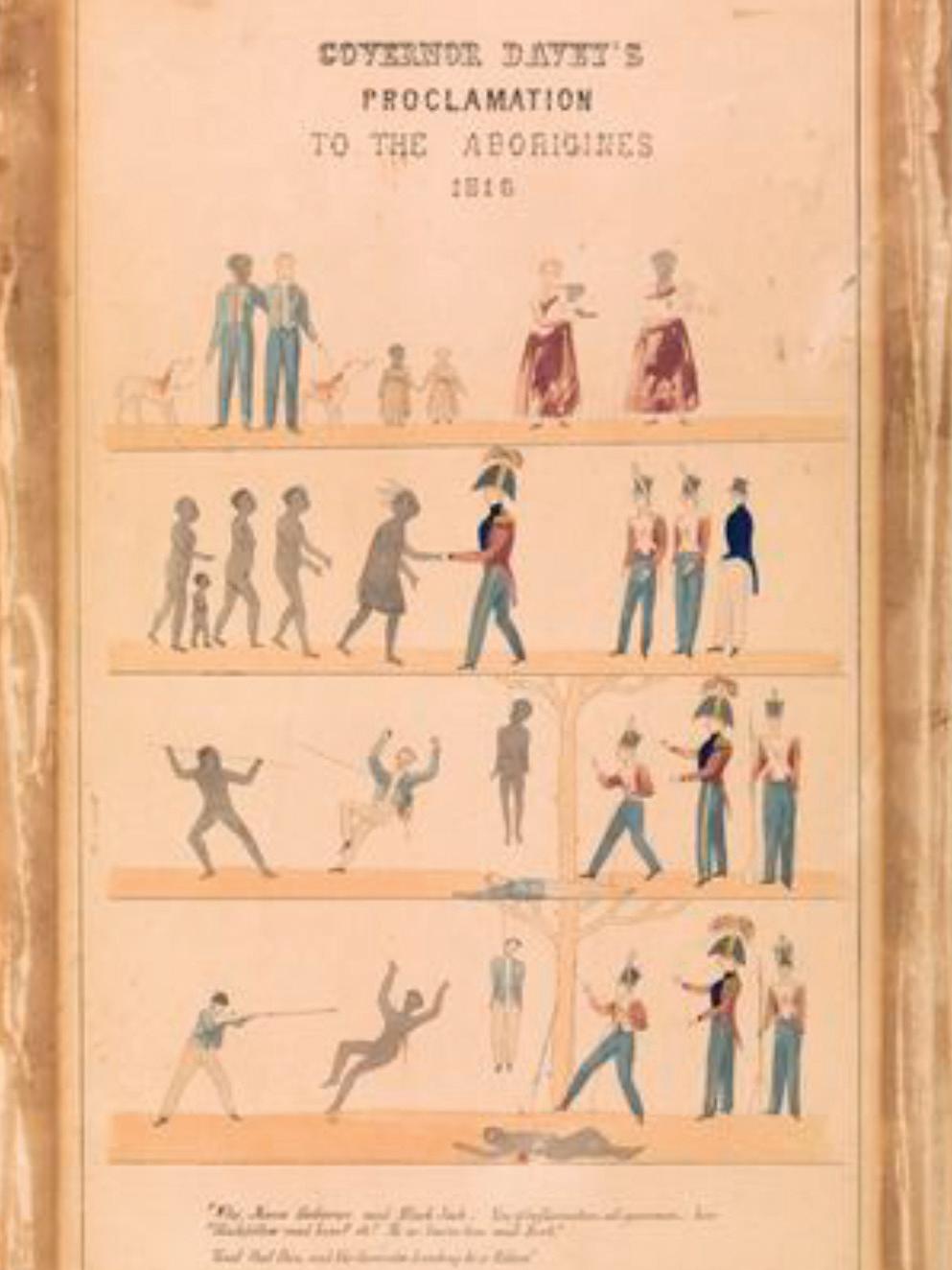
7.4.10 Images such as this proclamation from 1816 demonstrate that there were violent clashes between First Nations Peoples and European colonisers, and the government sought to maintain equality under the law. This was often difficult in practice.
2 Why do you think a protester painted the ‘genocide’ slogan on the statue of Cook? Is it fair?
3 Why could the inscription ‘Discovered this Territory 1770’ on the plinth be considered contentious?
4 What do you think of the protester’s message? Is it ever justifiable to graffiti monuments in this way?
5 Discuss as a class: What, if anything, should be done about monuments that, for some members of the community, celebrate events associated with past wrongs?

Key concepts: sources, evidence, perspectives, contestability
HASS skills: analysing, evaluating
guerilla-style resistance a form of unconventional warfare where small, irregular armed groups use hit-and-run tactics, ambushes, sabotage, and other unconventional methods to fight against a larger, more conventional military force or regime
(Binjarub)
Conflict between Aboriginal Peoples and colonisers was not confined to just one part of Australia. Throughout Western Australia, conflict occurred as settlements grew. Firstly in the south, and later in the north, the two groups clashed regularly over land and laws.
In the 1830s, the initial peaceful relations between the British colonists and the local Wadjuk Noongar People of the Swan River area soon gave way to conflict. The new arrivals killed game, used up valuable fresh water, and were soon erecting fences to protect property. Faced with threats to their traditional food sources, many Aboriginal people raided the food stores of the colonisers. The leader of the Wadjuk people, Midgegooroo, fought back against the British and was executed by the authorities. His son, Yagan, became an outlaw after an Aboriginal boy was shot and Yagan led the traditional ‘pay back’ raid, killing a white servant.
It was not until 1997 that Aboriginal Elders were able to negotiate the exhumation of Yagan’s head and have it returned to Western Australia for burial. A statute of Yagan can be found on Heirisson Island in Perth, and a central square has been named after him, recognising his sacrifice for his people. Yagan is not a hero for some, however, and his statue has been regularly vandalised.
Not all of the colonisers were unsympathetic to the Wadjuk People. Robert Lyon, a leading humanitarian in the early colony, successfully argued for the overturning of death sentences imposed upon Yagan and two others in 1832. Instead of being hanged, the men were confined on Carnac Island, off the coast of Fremantle. Lyon advocated for a formal treaty with Yagan’s people and argued that the defence of their land was not a crime. Despite his arguments, strong punitive action against Aboriginal people that resisted white settlement continued. Yagan escaped from his island exile and, after eluding the authorities for a number of weeks, was shot by a boy he considered a friend. The farm-worker severed Yagan’s head and it was later sent to England as a curiosity for display.

Source 7.4.12 Aboriginal Elders carry the head of nineteenth century Aboriginal warrior Yagan through Perth International Airport, after arriving on a flight from England in 1997. The head had been taken to England as a curiosity after Yagan’s death. After being exhumed from a Liverpool Cemetery, the head was brought to Perth in a casket wrapped in a kangaroo skin cloak. Photo by Greg Wood AFP.
Another Aboriginal leader in the Perth area during the early settlement was Calyute. He led a guerilla-style resistance that included raiding flour mills and other storehouses for food.
Despite not injuring anyone in his raids, Calyute was captured and bayonetted by soldiers, before being publicly flogged and kept in a cell in Fremantle for over a month. When released, Calyute went back to his Pinjarup (Binjareb) People in the Peel area south of Perth, and resumed his raiding.
Thomas Peel, for whom the area is named, was the largest landholder at the time, and one raid killed one of his servants. The result was the largest punitive action taken in the southwest.
Once referred to as the ‘Battle of Pinjarra’, the October 1934 confrontation between the Pinjarup People and a mixed party of soldiers, police and settlers is now referred to as the Pinjarra Massacre. Led by Governor James Stirling himself, the party of 25 on horseback was one of a number sent to quell resistance in the Peel region. The group ambushed a large number of the Pinjarup People on the banks of the Murray River on 28 October.
The Pinjarup included many children and women, and they were armed only with spears against the mounted men with guns. They sought to flee across the river but were trapped and shot by soldiers on the other bank. The fighting lasted almost an hour and, by the end, two of the soldiers were injured and one later died.
Of the Pinjarup People, it is not clear exactly how many died but estimates range from 15 to perhaps as high as 80. Officials of the time strongly denied the higher estimates, and prisoners taken were soon released. A form of peace agreement was made, and resistance in the area effectively ended.
Activity 7.6
Using historical sources as evidence: Perspective and contestability
The instant the police were observed approaching about 200 yards distance, the natives, to the number of about 70, started on their feet, the men seized their numerous and recently made spears, and showed a formidable front; but finding their visitors still approached, they seemed to feel unable to stand a charge and sullenly retreated, gradually quickening their pace until the word ‘forward’ from the leader of the gallant little party brought the horsemen in about half a minute dashing into the midst of them, the same moment having discovered the well-known features of some of the most atrocious offenders of the obnoxious tribe.
Source 7.4.13 From the Perth Gazette, 1/11/1834. This was the description of the conflict given by Stirling in a later letter to the British government.
They might have called it the ‘Battle of Pinjarra’ but like all of the massacres of Aboriginal people it was more a case of wholesale slaughter than of some equally poised, European-style battle. It was the same story which had been enacted on every frontier: the same overreaction to ‘black atrocities’; the same desire to ‘teach the blacks a lesson’; the same random killing.
Source 7.4.14 An extract from the 1970 book, Black Australians: A survey of native policy in Western Australia, 1829–1897, written by historian and politician, Sir Paul Hasluck
1 Why is it difficult to find out exact numbers and events with regard to what happened in Pinjarra in 1834?
2 Who were the authors of the two written sources? Do some research on them, so that you can describe their perspective.
a Where/when are they from?
b Why did they write this?
c What type of person were they?
3 For each source, find some key words used to describe the actions of the soldiers and other men that carried out the attack. How would you describe the message of each source?
4 Can you think of why some readers today may find both sources contestable? In other words, what might a modern reader question about the wording and accuracy of each source?
Key concepts: sources, evidence, perspectives, empathy
British settlement in the northern half of Western Australia progressed more slowly. Many Aboriginal people had limited contact with white colonisers until several decades after the Swan River Colony had been established. By the time exploration into the Pilbara and Kimberley began, the Aboriginal people of the southwest had found a way to live under colonial rule, even though it meant losing much of their traditional culture, and many had established homes and businesses.
HASS skills: researching, analysing
In the north, however, violent black/white conflict continued, even until the 1920s.
On the shores of Fremantle boat harbour today stands a memorial to a group of colonial explorers of the West Kimberley region, who were killed in conflict with the local Aboriginal people near La Grange, now more commonly known as Bidyadanga. At the time the memorial was built, there was an outpouring of sympathy for the men and their families. The memorial includes a bust of landowner and politician Maitland Brown, who led an armed party in carrying out a violent reprisal attack against the local people. The original plaque reads:
This monument was erected by G. J. Brockman as a fellow bush wanderer’s tribute to the memories of Panter, Harding and Goldwyer, earliest explorers after Grey and Gregory of this Terra Incognito.
Attacked at night by treacherous natives they were murdered at Boola Boola near La Grange Bay on the 13 November 1864.
Also an appreciative token of remembrance of Maitland Brown
One of the pioneer pastoralists and premier politicians of this State. Intrepid leader of the Government Search and Punitive Party. His remains together with the sad relics of the ill fated three recovered with great risk for lone wilds repose under a public monument in the East Perth Cemetery.
Lest we forget.
In 1994, a second plaque was added to the memorial, recognising the even greater number of Aboriginal people that died during the subsequent events of 1865. You can see the two plaques in Figure 7.4.15. The second plaque reads:
This plaque was erected by people who found the monument before you offensive. The monument described the events at La Grange from one perspective only; the viewpoint of the white ‘settlers’. No mention is made of the right of Aboriginal people to defend their land or of the history of provocation which led to the explorer’ deaths. The ‘Punitive Party’ mentioned here ended in the deaths of somewhere around twenty Aboriginal people. The whites were well-armed and equipped and none of their party was killed or wounded.
This plaque is in memory of the Aboriginal people killed at La Grange. It also commemorates all other Aboriginal people who died during the invasion of their Country.
Lest We Forget. Mapa Jarriya-Nyalaku.

Responding to the sources: Perspective and empathy
Why was the second plaque added in 1994? Do you think that this is a good solution to the issues raised in Activity 7.6?
Key concepts: perspectives, empathy HASS skills: reflecting, evaluating
Arguably the most famous example of Aboriginal resistance to white settlement in Western Australia was that of Banuba man, Jandamarra. Jandamarra grew up on a cattle station in the Kimberley, and excelled in riding and stock handling, as well as being proficient in English. He was small and fast moving, giving him the nickname of ‘Pigeon’. After an arrest for the alleged stealing of sheep, he began working for local police in Derby. He later became a police tracker. In 1894, Jandamarra turned against fellow police officers, shooting a constable and freeing a large number of Aboriginal prisoners.
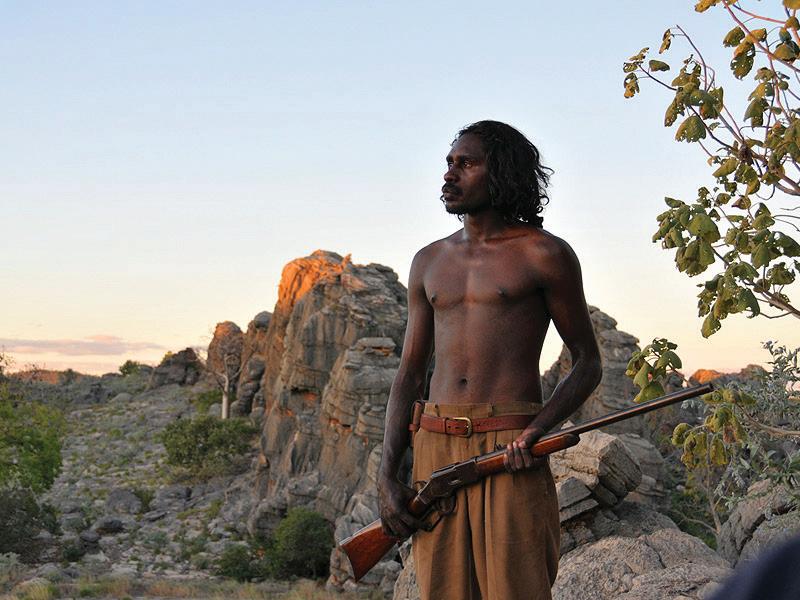
Unfortunately for them, reprisals were brutal and many of their number were killed.
Eventually, Jandamarra was trapped and then killed by an Aboriginal trooper in 1897. The Banuba lands were occupied and new stations established on Jandamarra’s Country.
Jandamarra became an outlaw and began a long campaign of resistance to European invasion. Using captured guns, and a small army of supporters fighting a guerilla-style war, Jandamarra raided homesteads and police outposts. The apparent ease with which he outwitted the local police caused widespread fear in the coloniser community, while bringing together supporters from Aboriginal groups across the region. The Banuba people believed he had supernatural powers, such was his success against the seemingly superior police forces.
Persecution of Aboriginal people in the Kimberley persisted for some time after. Many were treated like slaves and often chained together for committing petty crimes. Although, once again, no definite numbers have ever been confirmed, possibly the largest massacre of Aboriginal people in Australia occurred at Forrest River, in the Kimberley, in 1926.
Conflict in the area was heightened by a pastoralist, Frederick Hay, who had reportedly sexually assaulted a number of women from the nearby Aboriginal mission. Hay and his partner, Leopold Overheu, complained of stock being killed by Aboriginal people, and organised a police attack on a local group at Durragee, in which it is alleged that people were pushed off a cliff and thrown in a bonfire. It was after this attack that Hay was killed.
In response to his death, a party of police officers and local citizens was formed, with Aboriginal servants and trackers, to carry out a ‘punitive attack’ on the Aboriginal people of the area. In two incidents, now described as massacres, the heavily armed militia rounded up dozens of Aboriginal people, some of whom they executed on the spot. Intervention from a local reverend prevented even more deaths. Investigations into the events suggested that the number killed could have been 30, 100, or even 300. A Royal Commission into the events found that there had been destruction of evidence and widespread lying from those involved. It established that at least 20 people had been killed, and the two police constables that led
the attacks were charged with murder. In both cases, the charges were eventually dropped due to ‘insufficient evidence’. Today, there are still those that deny part or all of these events. Acknowledgment of such events in Australian history is part of the process of reconciliation in Australia and is described as ‘truth-telling’.
Section 7.4 review
7.4 Review questions
Recall
1 According to Western scientific opinion, for how long have Aboriginal and Torres Strait Islander Peoples lived in Australia?
2 Recall the first Europeans to set foot on Australian soil.
3 What was the ‘First Fleet’ and when did they arrive in Australia?
4 Recall the name for the conflicts between colonial settlers and First Nations communities that took place across Australia.
5 The Swan River Colony was established on the lands of which nation?
6 Who was James Stirling?
7 Identify the lands of the following Aboriginal resistance leaders: Yagan, Calyute and Jandamarra.
Interpret
8 What motivated the British to settle Australia? Why had no other European nation done so?
9 What is the difference between a battle and a massacre? Use evidence from the chapter to explain.
10 Why might the celebration of 26 January as Australia Day be controversial today?
Argue
11 What groups have been described as ‘discovering’ Australia? Which group has the greatest claim in your view? Give reasons for your answer, as well as reasons why you have not chosen other groups.
12 Was the settlement of Australia an invasion? Explain your view but also explain the counter-argument.
Apply 7.4 questions
1 Research and explain the different ways that First Nations communities were affected by colonial settlement.
2 The Swan River Colony came close to failing in the 1830s. Use research to find out the reasons for this.
Key concepts: continuity and change, cause and effect, significance, perspectives, contestability
HASS skills: researching, communicating and reflecting, evaluating
• Which events and individuals were most significant in Australian history prior to WWI?
The First Fleet brought over 700 convicted criminals to Australia to serve their sentences. These people, both men and women, were known as convicts. The system of sending the convicts to Australia was called transportation, which continued in some form until the last convict ship arrived in Western Australia in 1868.
Why did the British government send their prisoners to Australia? The reasons included:
• high crime rates and over-crowded gaols in the big industrial cities of Britain.
• the American War of Independence, and the lack of alternatives for a penal settlement
• Australia presenting a perfect prison, with escape almost impossible, even without building prisons
• the possibilities of Australia being able to provide the resources for the convicts to not require support from London
• the opportunity to use convicts as cheap labour to build infrastructure in the new colony and also create
a domestic market for the colony’s fledgling businesses.
Britain was undergoing a social transformation by the end of the eighteenth century. The population grew rapidly and converged upon the huge slums of the industrial cities, where mechanisation often led to periods of high unemployment. There was little in the way of social security, healthcare or education, and few police. Crime rates escalated and the government responded by introducing harsh punishments, with many minor criminals facing imprisonment or even execution – which only made the criminals more violent and desperate!
Before the American War of Independence, Britain had followed a system of transportation where convicts were sold to American plantations as free labour, for the term of their sentences. The new government after the war ended the practice and the British government was forced to look elsewhere. Initially, the convicts were kept in old ships, or ‘hulks’, as temporary prisons, with many citizens opposing new gaols in their area. The situation became worse as the ships became increasingly unsanitary and a threat to public order and health.
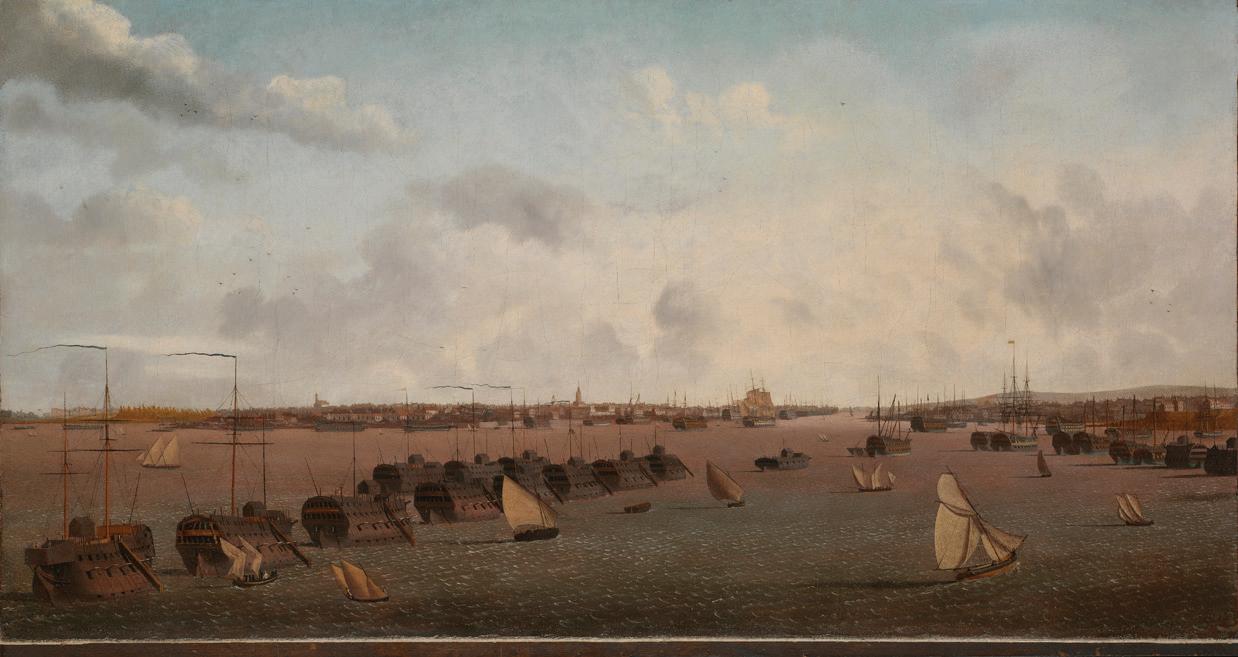
Joseph Banks, who had accompanied Captain Cook on his voyages, first recommended Australia as a convict destination and, in the absence of alternatives, the colonial office agreed. Australian did not have a settler population that would protest, had only a small Indigenous population that was unlikely to resist, and plenty of wide-open spaces. Even if prisoners escaped, there was no real chance of returning to Britain, and the colonial settlements were too small for escapees to be able to effectively blend into the population.
The colonial authorities believed that, with an initial investment of funds, the convicts could become quickly selfsufficient in terms of food, water and building materials. They could be used to build their own prisons and other infrastructure, and grow their own food, as well as that of their gaolers.
The free settlers did not always welcome the convicts, and South Australia never received convicts, fearing their social impact and threat to the independence of the colony. Others, however, saw the opportunities that came with convict labour and the
capital investment involved. In 1850, the Western Australian community actively campaigned to take convicts once transportation had ended in the eastern colonies. The British authorities became the largest investors in the colonies that took convicts. Local businesses provided food, clothing, building materials and skilled labour to the ‘convict establishment’, which helped create lasting economic benefits. Convict labour could be used on public works, such as roads or bridges, or supplied at low cost to businesses and farms.
A broad range of convicts were transported to Australia, from hardened criminals who had committed serious crimes, to petty thieves, to educated white collar criminals with valuable skills and experience in a wide range of industries. Once they had arrived, these convicts were quickly assessed, and put to work in a way that would best suit the interests of the colony, without posing a threat to the free settler population. Most had sentences of either seven or fourteen years. Their sentences could be served in chain gangs (government service),
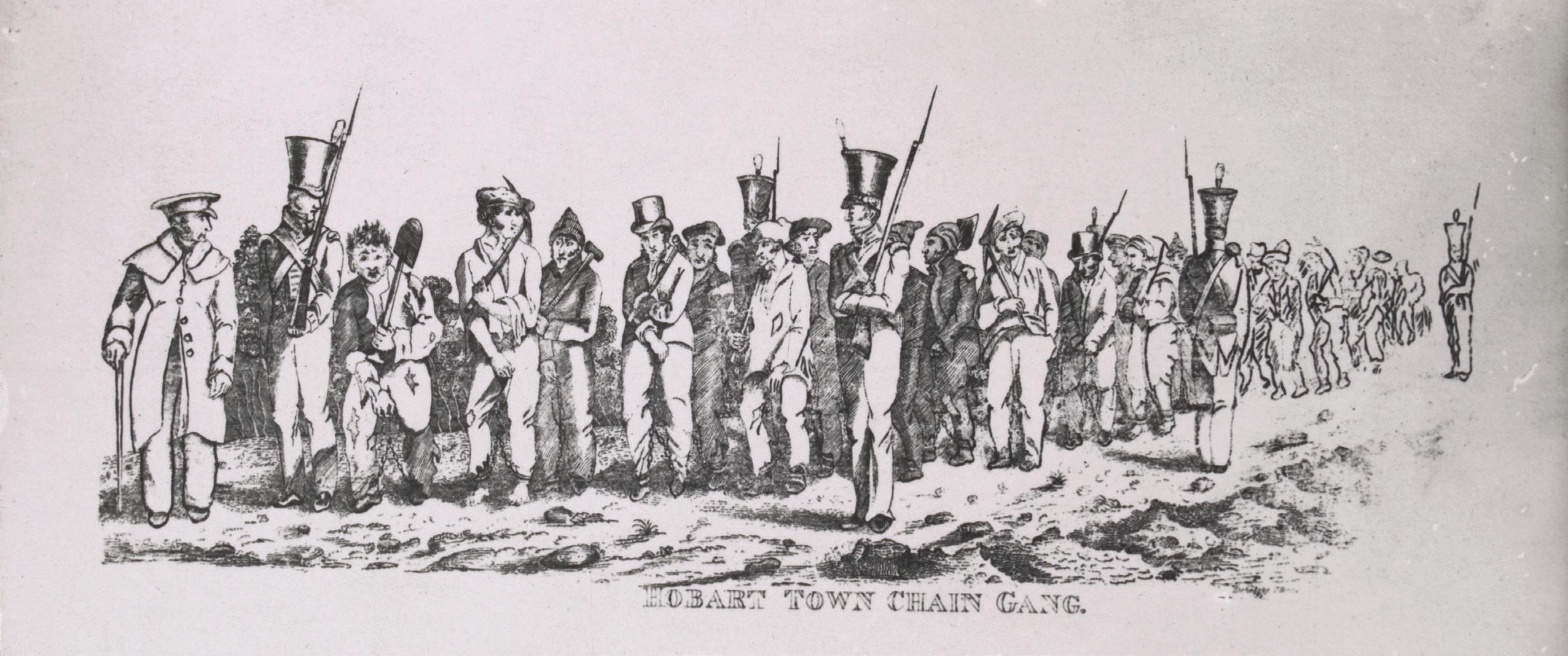
as assigned servants, or as ticket-ofleave workers. Those that reoffended on arrival, had committed the most horrible crimes, or clashed with a harsh master, could face almost certain death in a place of ‘secondary punishment’ such as Port Arthur in Tasmania. In most cases however, the convicts were better off than they had been in Britain.
Chain gangs were the starting point for many convicts, who were sent to work for the colonial government on public works projects. They were rarely chained but were subject to strict discipline, and often housed in prison conditions, which at the time was a lot less comfortable than in prisons today. The convicts would often first be used to build their own accommodation, such as the Fremantle Prison, built between 1851 and 1859. The army provided supervision but the gaol and the associated buildings were built by hand, by convicts – including the underground tunnels!
In their first decade in Western Australia, convicts built over 500 miles of road and over 200 bridges. They were also responsible for building the Fremantle Lunatic Asylum, the Perth Gaol and Courthouse, Perth Colonial Hospital, Government House, the Perth Town Hall, as well as convict depots throughout the colony. These depots existed in more remote places such as Albany and Geraldton, as
well as the Swan Valley and York. The convicts in these locations lived at the depots and travelled to local work sites, rather than operating from Fremantle.

Assigned servants were convicts that were sent to work for free settlers, such as farmers, timber companies or other businesses. Many female convicts were assigned as domestic servants, working in the homes of the settlers as maids, cooks or nannies. The experience of assigned servants varied greatly, depending on their master. Whipping convicts was not uncommon, and there were no wages. The masters, however, were obliged to provide accommodation, food and clothing, and did not ‘own’ the convicts. Some assigned servants then became employees of their master when their term expired. The famous wool pioneer and army officer, John Macarthur, was assigned 40 convicts to assist on his Parramatta farm in 1793.
A ticket-of-leave was granted to convicts that were not considered a risk of offending or trying to escape, and had a skill or willingness to work that could benefit the colony at a time when such workers were scarce. Convicts with a trade or profession were quickly identified, and granted a ticket-of-leave, which allowed them to live freely in society and obtain work in their field. In this way the colony benefitted during times of extreme skill shortages, and the convicts were able to serve their time in relative comfort –although they were not permitted to leave the colony, or change employment without permission. Breaking the law, or simply failing to regularly report to authorities, could see their permission revoked. Many of the workers in Western Australia’s early timber industry were ticket-ofleavers, and they often became important members of society when their sentence was over, when they were known as ‘expirees’. One ticket-of-leaver in NSW, Francis Greenway, became Australia’s first government architect! Being accepted in free settler society, however, was always difficult.
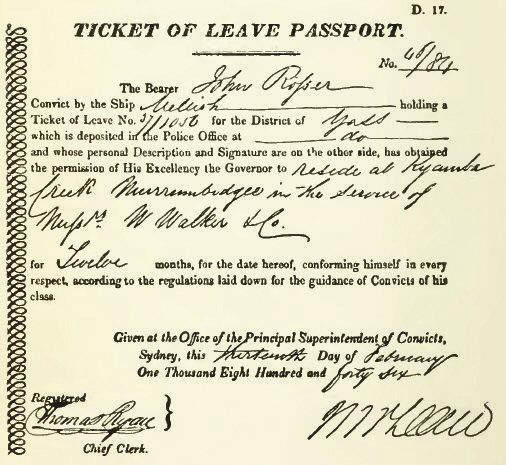
Source 7.5.4 An 1844 NSW ticket-of-leave ➜
The main places of secondary punishment were:
• Newcastle
• Port Macquarie
• Macquarie Harbour
• Port Arthur
• Moreton Bay
• Norfolk and Lord Howe Islands.
Penal settlements – or places of secondary punishment – were places of punishment for the most dangerous convicts, or those that committed serious offences after arriving in the colonies. They were the worst of the convict prisons and were run by the military under strict discipline. The worst features of these establishments were made famous in Marcus Clarke’s novel, For the Term of His Natural Life, which chronicled the experiences of a wrongly-convicted prisoner in Van Diemen’s land and Norfolk Island. The novel described the terrible conditions in these places, including floggings with a ‘cat-o-nine-tails’, solitary confinement, executions and extreme hunger and cold.
It was determined that the more remote the location, the better Western Australia had only one convict establishment, at Fremantle, so the prisoners varied greatly, as did their treatment. A flogging ‘triangle’ can still be seen at the Fremantle prison today.
When convict transportation finally ended in 1868, the population of Australia stood at around one million, and approximately 162 000 convicts had been transported. Very few convicts returned to Britain after serving their term. Convict transportation only ended when the free population was considered large enough to support the growth and continuing prosperity of the new nation. Without the convicts Australia could not have developed at the rate it did. In Western Australia, the majority of the convicts arrived over a period of 18 years, from 1850.
About 10 000 convicts arrived during this period, and continued to serve their sentences for many years after the Hougoumont became the last convict ship to arrive in Australia in 1868.
The convict experience had a lasting impact on the colonial economy, government and society, and links to Australia’s convict past are all around us today. Economically, the convicts provided cheap labour, skills, and a strong demand for locally-produced goods and services. They built important infrastructure, especially public buildings and roads, and brought considerable investment from London.
Source 7.5.5 Now a World Heritage-listed tourist attraction, the Fremantle prison was originally built by convicts for their own accommodation. What skills and trades would have been needed in constructing such a building? ➜
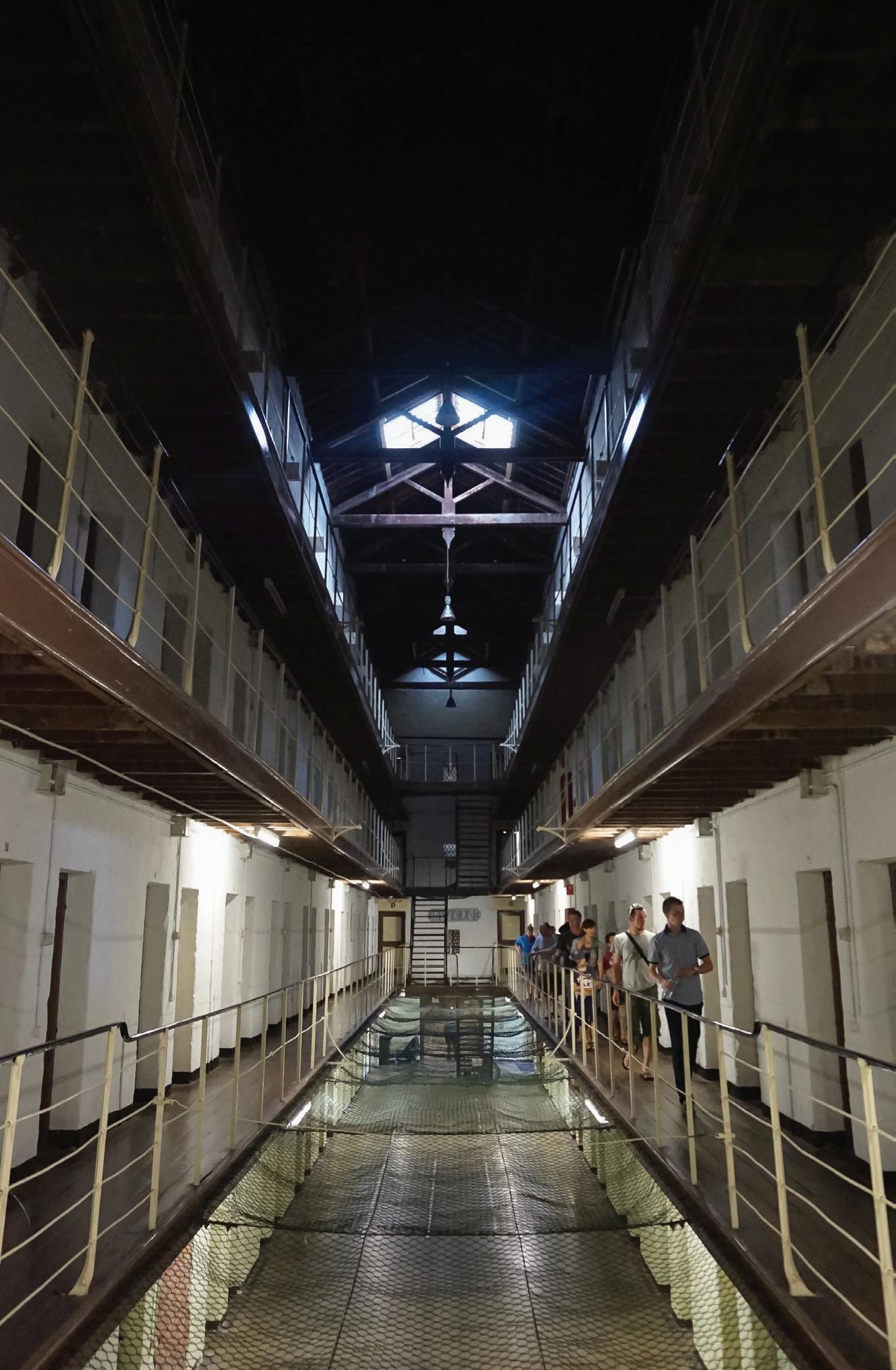
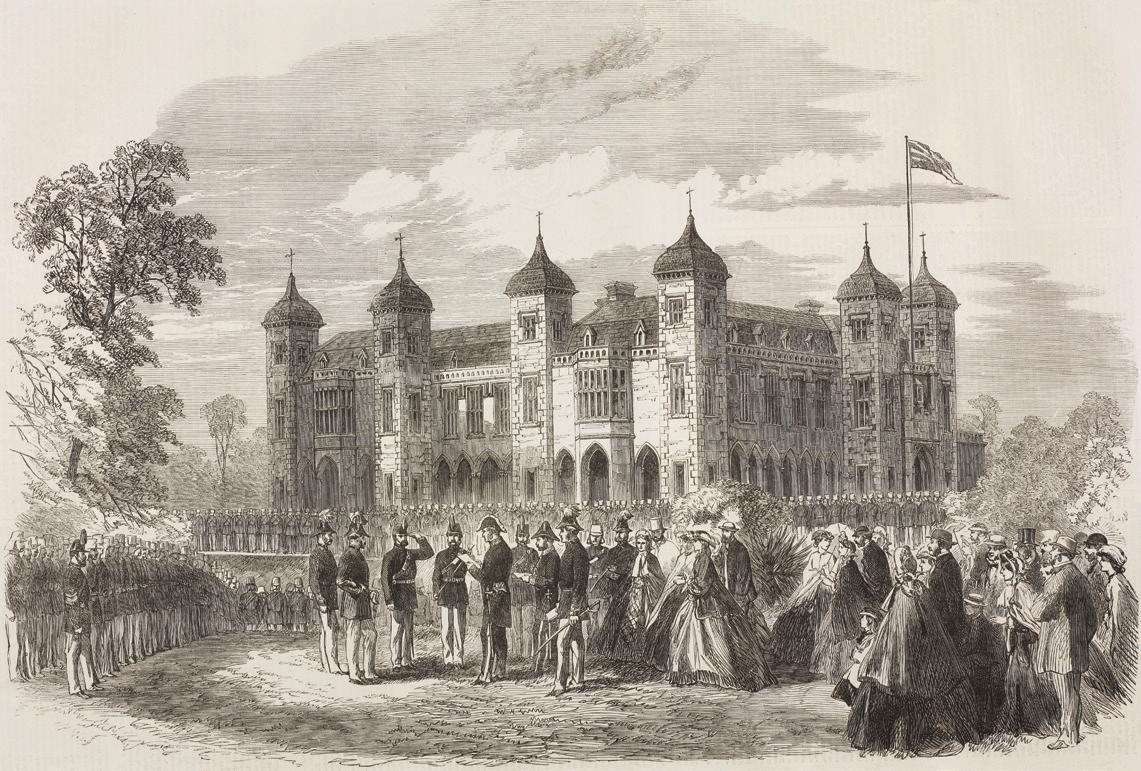
Convicts also affected colonial government. British authorities were reluctant to allow self-government by the people of the Australian colonies while they were still receiving convicts. They provided the population and economic viability that made the colonies more self-sufficient however, and that led to greater independence. As each colony ended transportation, they were granted self-government, starting with New South Wales in 1842 and finishing with Western Australia in 1890.
Convicts divided society at the time and many people hid their convict heritage, which they considered shameful. Today however, convict ancestry is generally celebrated. The mostly male convict population also caused a gender imbalance in the colonies, and in some areas higher crime rates existed.
The convicts were often from innercity London and Ireland, so elements of those cultures travelled to Australia with them. One example is cockney ‘rhyming slang’, which is still found in Australia today. Phrases are used for terms that rhyme, such as those below:
• China plate – mate
• Captain Cook – look
• Steak and Kidney – Sydney.
One characteristic of Australians that has been said to have begun with convicts is a relaxed attitude to authority, and support for the underdog. The concept of the ‘larrikin’ comes from this time. Australia is a generally law-abiding country, despite the fears at the time relating to the arrival of criminals, but there is also a custom of cutting people down to size if they take themselves too seriously.
Do you know how much gold is worth today? In January 2025, one tiny gram of gold was worth $125. The average wedding ring weighs about six grams, so if it is pure gold, it is worth $750. Gold is a very heavy metal, so one kilogram of gold could fit in your hand like a mobile phone. Of course it would be worth more – about $125 000!
Gold (chemical symbol Au) has always been highly prized around the world, partly because of its rarity but also because it has some unique features. Gold is malleable – or easily shaped, it never rusts or loses its shine, and it can be stretched extremely thin. Gold has a relatively low melting point, which makes it useful for jewellery-making, and is resistant to most acids. Gold also conducts electricity and reflects infrared light – this means it has many different uses today, including electronic circuitry and spacesuits.
Because gold is heavier than most rocks, sand or soils, it is relatively easy to separate from other materials, using water and gravity. Although today most gold is obtained from crushing rock that comes from well below the ground, when gold is first discovered in an area it is often loose – having been broken down from rock by erosion over millions of years. This type of gold is always quite near to the surface of the ground and is called alluvial gold. This eroded gold is taken by water down steep slopes to a valley floor, where it accumulates. The great gold rushes of history have occurred in these valleys, whether they still have rivers flowing through them, or have long since dried up.
Because alluvial gold is relatively easy to find, without the need for machinery or complex extraction techniques, new finds have attracted great interest over history. Ordinary people, with few prospects of becoming wealthy otherwise, have sometimes been gripped by ‘gold mania’. When these people flock to a new location in the hope of finding gold and making their fortune, it is known as a ‘gold rush’. In the 1800s, reports spread to Europe that ordinary people could walk the Australian bush and ‘pick up lumps of gold’. This was seldom true but it did happen at times, and that was enough to create the Australian gold rushes.

During the convict period, many people had suspicions that there was alluvial gold to be found in Australia. In fact, a report of gold being found by a convict chain gang was followed by a discovery on a farm in 1823. There were a number of reasons why this didn’t lead to a gold rush at the time. Firstly, the government of New South Wales had a law which stated that any gold found in Australia was the property of the government.
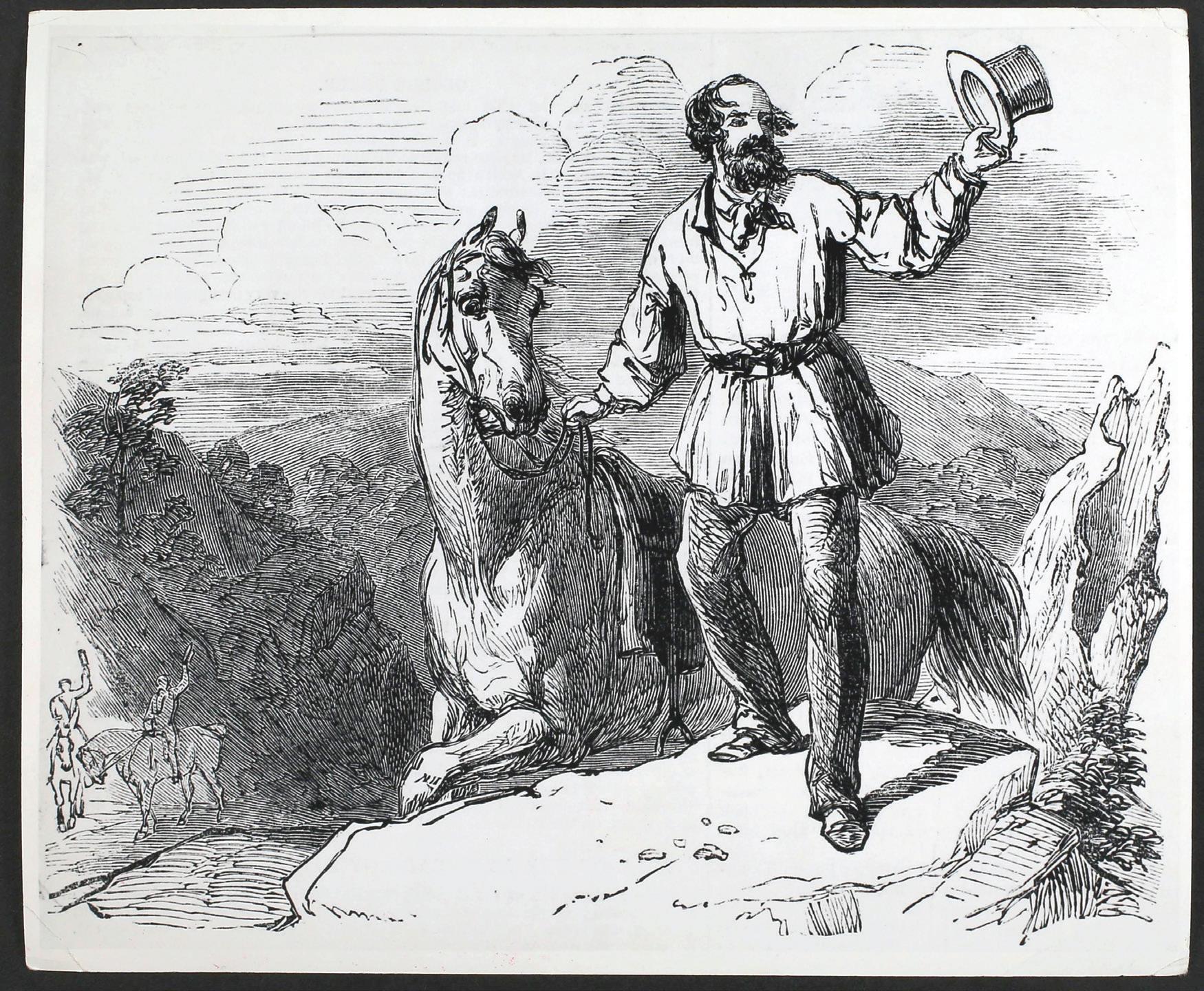
With so few people in Australia at the time, selling it illegally was almost impossible. Secondly, the early finds were very small, and few people in Australia had the knowledge or skills to locate and separate larger quantities. The most important consideration, however, was what the effect would be on the convicts of a major gold rush. Early reports were kept secret. While the colonies were accepting convicts, the government did not wish for a flood of new arrivals ruining what had been the perfect prison!
The 1849 gold rush in California started to change the attitudes of the government, and new arrivals from the USA brought an understanding of what to look for when searching for gold, as well as tools and equipment. The colonial governments in the eastern colonies were no longer accepting convicts and saw an opportunity to attract other forms of investment, by encouraging mining
exploration. In 1851, the NSW government offered a cash reward for anyone finding a payable goldfield. One settler, Edward Hargraves, had travelled to California and learnt how to pan and cradle for gold. With three others, he travelled over the Blue Mountains to the Bathurst district, and found enough gold to claim the reward. He did not keep the location secret because the reward meant that he did not have to dig the gold himself. Soon, hundreds of ‘diggers’ flocked to the Ophir goldfield and Australia’s first gold rush had begun.
Edward Hargraves’ partners, the Tom brothers and John Lister, were later accepted to be the actual first discoverers of the Bathurst gold. By this time however, Hargraves had all but spent his reward, and relied upon a government pension to maintain his family, before dying in 1891.
The discovery of gold in Victoria is one of the most significant events in the history of the colony. It transformed Victoria and Melbourne in particular, into one of the richest areas of the world. It brought thousands of people from across the world into the region and transformed Melbourne into an
international city and briefly, into the richest city on the planet.
Mines in New South Wales were bringing in people from across the world and the Victorian authorities quickly moved to encourage exploration in Victoria. The Victorian Gold Discovery Committee was formed to create incentives for explorers to search for gold within 320 kilometres of Melbourne.
7.5.9 The goldfields in New South Wales and Victoria ➜
It did not take long for discoveries to be made at Mount Alexander (now called Castlemaine), Bendigo, and, most famously, Ballarat. These goldfields were much richer than those found in New South Wales and were much closer to Melbourne than the NSW fields were to Sydney. This allowed the Victorian authorities to more effectively capitalise on the vast wealth the discoveries created.
The Victorian goldfields became the centre of the gold rush of the 1850s and brought thousands of immigrants into the colony to try their luck at finding their fortune. Gold fever became so strong that many industries in Melbourne struggled to stay operating as people abandoned their jobs and headed for Ballarat and other goldfields.
immigrants people who move from one country to another. This can be for a variety of reasons.
Panning: Soil was placed in a pan filled with water. The contents of the pan were swirled around. Mud and muddy water spilled over the sides, leaving any solid matter in the bottom.
Fossicking: Fossickers used brushes made from fine twigs, hooks and knives to scratch soil away from where gold might be lying, just beneath the ground.

Pudding: Water was stirred into soil in a container and then poured off. This was repeated until the water was clear.
Sluicing: Water from an opening in a dammed creek flowed through a box containing grids to catch different sized stones and pieces of gold.
Source 7.5.10 Methods of extracting gold in the 1850s
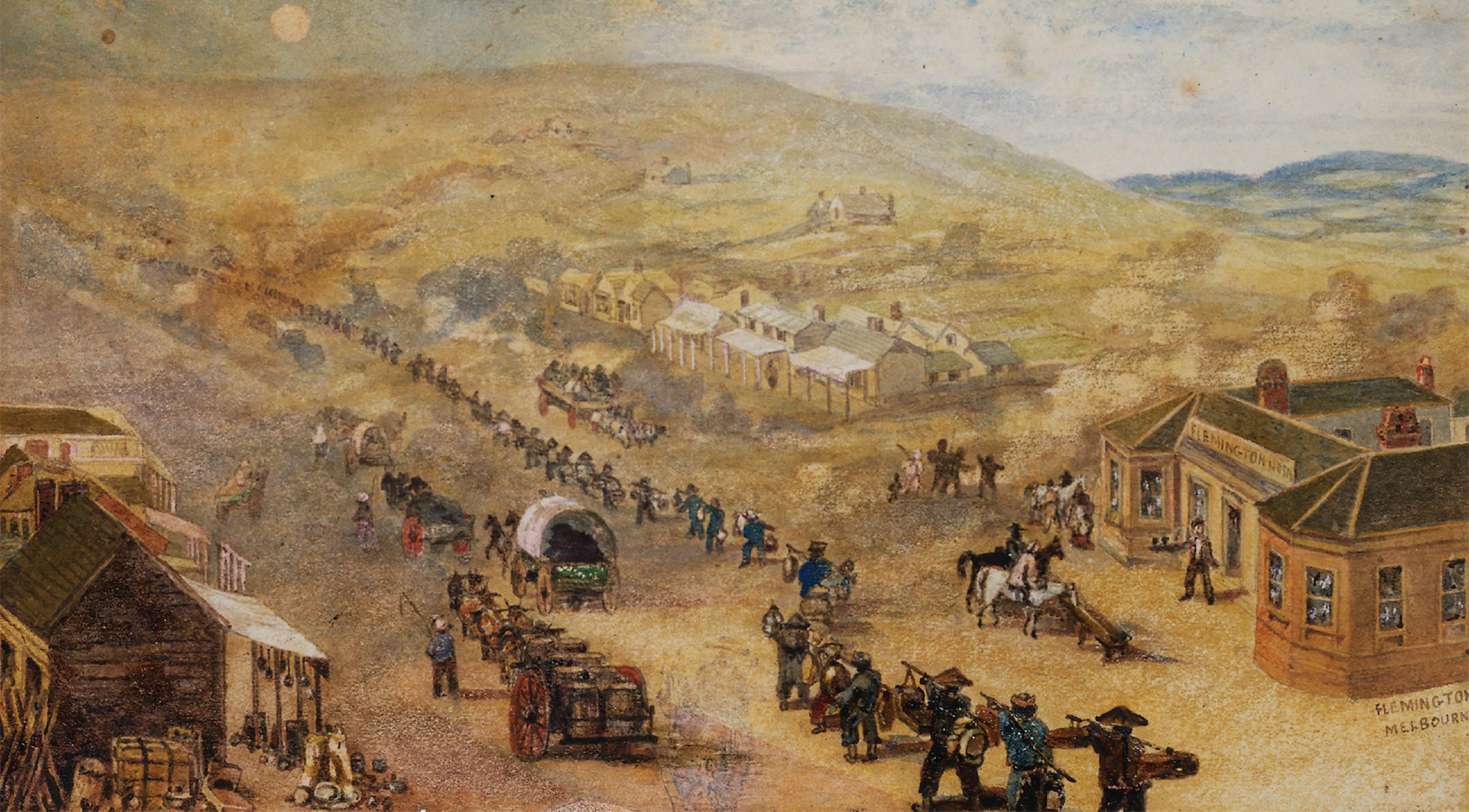
Using historical sources as evidence
1 Explain the context of Source 7.5.11 – that is, the historical events it is referring to.
2 How can you tell that the gold rushes attracted different classes and cultures to Australia?
3 Based on the source, what industries would have profited almost immediately from the rush?
4 What problems could the rush have caused?
Key concepts: sources, evidence, cause and effect
By the 1880s, most of the easily accessible alluvial gold in Victoria had been found. The economic conditions of the eastern colonies began to decline, and many began to look westward for opportunities. In Western Australia, the first significant gold finds were in the newly explored Kimberley district, near Halls Creek. Thousands travelled to the area but few were prepared for the conditions. Intense heat, flooding monsoonal rains, flies, and sometimes
HASS skills: analysing, evaluating
hostile Aboriginal groups meant that mining for gold was not easy. In addition, the isolation of the fields meant that food and water were scarce. The alluvial gold was quickly exhausted but this initial rush helped by attracting experienced miners to Western Australia. Soon new fields were being opened up in the Yilgarn, Pilbara and Murchison districts. None of these were significant, however, compared to the incredible finds in the area known as the goldfields today – where Kalgoorlie and Coolgardie became the boom towns of the 1890s.
arduous difficult and tough
The goldfields rush began with the finds of Arthur Bayley and John Ford at Coolgardie in 1892. This led to a flood of excited diggers making their way to the fields – by camel, on horseback, or on foot! Coolgardie was over 500 kilometres from the campsites at East Perth, or almost 400 kilometres from the nearest part at Esperance. The greatest find, however, was that of Patrick (Paddy) Hannan, northwest of Coolgardie, at what became known as ‘Hannan’s Find’ – later to be called Kalgoorlie. Within a year of Hannan’s 1893 discovery, there were over 10 000 people in Kalgoorlie.
The life of a miner on the goldfields was tough. Most did not discover vast riches and the majority returned to their former homes and jobs without having made their fortune. Travelling to the goldfields was a difficult process, with no highways or public transport like that which exists today. While on the goldfields, miners worked extremely hard in arduous conditions just to make a living. The main method of extracting gold in Victoria was panning, or cradling, using water. In Western Australia, dry-blowing was more common. This involved a series of trays and screens being used to

sift the ore, and using the wind to blow away the lighter material. Both methods required plenty of digging to reach potentially gold-bearing ore, and then endless hours panning or dry-blowing to extract the gold.
The diet of a miner was limited, with very few fruits or vegetables available. There were not many stores from which to buy fresh produce, and those that did stock it could charge a high price. The restricted diet of the miners resulted in poor health overall. Damp, cold and unhygienic conditions contributed to outbreaks of typhoid and other diseases. In Western Australia, it was the heat, along with a lack of water, that caused the most problems. These conditions, combined with the injuries that miners would suffer as they worked, made the process dangerous.
Most miners lived in tents, but some could not even afford this and just slept on the ground next to their work sites. Food and water prices were incredibly high, especially in Western Australia, and the governments also charged for the right to mine a claim. A lot of settlements were temporary and could disappear overnight if there was news of a major discovery somewhere else. Permanent buildings were slow to appear but eventually were constructed in the major centres of the fields, such as at Ballarat in Victoria, or Kalgoorlie in WA.
Source 7.5.12 Waterfall gold mine, Kalgoorlie, 1896
As the towns developed, other people migrated to the region to profit from the gold rush in other ways. Store owners, merchants and other traders followed the miners to profit from their discoveries, often much more effectively than the miners themselves. Women also began to arrive on the goldfields, either to be with their husbands or to work as sex workers. Life was rough to begin with, and violence was common. It took many years for law and order to be effectively established on the goldfields.
Over time, the alluvial gold ran out, and the only miners that could continue were the big companies that could afford the machinery and workers to dig deep into the earth, and use steam-powered batteries to crush the rock to find gold. In Western Australia, this highly mechanised mining boomed in the 1930s, and still continues today, due to the deep seams of gold underground.
One of the biggest consequences of the gold rush was the large number of immigrants who flooded into the colony to try to find wealth on the goldfields. These immigrants came from all corners of the planet including Britain, Ireland, California, and throughout the Asian and Pacific region. One of the most prominent groups of immigrants on the eastern goldfields was the Chinese.
The 1850s gold rush brought large numbers of Chinese immigrants to the colony, many from the southern regions of China, who were attempting to make money to pay off debts. The majority of the immigrants borrowed money to travel to Victoria and had to send gold back to China to pay off these debts. Some 205 464 ounces of gold were shipped back to southern China in 1857 alone (note: this would be more than $4 billion AUD today).
teams, including on Sundays, and shared their resources. Their success sometimes fuelled suspicions that they were stealing gold. The antagonism towards the Chinese people was further inflamed by ‘fake news’ spread by different groups about Chinese people. These fake news stories were varied, with a particularly widespread story about the Chinese being a threat to white women. These factors all combined to make Chinese immigrants a target.
The Victorian colonial authorities responded to these stories by imposing entry taxes on Chinese immigrants and passing registration legislation for all Chinese immigrants working on the goldfields. Violent attacks erupted against Chinese communities, specifically at Buckland River in July 1857. The AntiChinese League was formed by white miners in Beechworth to stop the influx of Chinese immigrants into the colony. The worst violence against Chinese miners occurred at Lambing Flat, in New South Wales, in 1861.
antagonism anger towards someone or something
By the mid-1850s, there were more than 17 000 Chinese immigrants working on the goldfields. The large number of Chinese immigrants, combined with their unique culture, made them the target of racial violence. Unlike European immigrants, they looked and spoke differently and therefore could be easily identified. The Chinese were used to manual labour and hard conditions and sometimes thrived when others failed. They worked in disciplined
Known as the Lambing Flat Riot, but actually occurring over a number of months, the attacks took place near the present-day town of Young. The tension grew after a meeting of European diggers resolved to evict the Chinese from particular parts of the Burrangong fields. Initially, the Chinese moved on when it was demanded, and many returned when the protests died down. At Lambing Flat, however, a group of over 2000 diggers attacked Chinese miners on the night of 30 June 1861. Although no Chinese were killed, their possessions were either damaged or looted, and many of them were badly beaten. When police arrived to quell the violence, the mob turned on them, and reinforcements had to be called from Sydney. Ringleaders were arrested and the Chinese continued to work on the fields.
Using historical sources as evidence

Analysis questions
1 Describe the key elements of this banner.
2 Compare the elements of this banner with the Eureka Flag (how are they similar?)
3 Using the information in this chapter, summarise the historical context of this source.
4 Describe the message of this banner.
5 Explain the purpose of the banner (who might have used it and why?)
6 Explain why it is important to preserve and study historical artefacts such as this banner.
Key concepts: sources, perspectives HASS skills: analysing, evaluating
Despite their contribution to the colony, the cameleers were subject to discrimination and created tension in the community. They were denied citizenship under the later White Australia Policy, and often their camels were forced into strict quarantine on arrival, which many did not survive. By the 1920s, trains and cars had replaced the camels across the state.
There were relatively few Chinese on the Western Australian goldfields. Instead, significant numbers of ‘Afghans’ travelled to the colony, and found that their skills in arid conditions provided them with an advantage. In fact, these Afghans came from countries as diverse as India, Egypt and Iran. The majority came with imported camel teams, and were known as cameleers. Before trains and roads, these camels became the mainstay of transport to the fields, supplying food, materials and tools.


Source 7.5.14 Afghans with resting camels, c.1891. The so-called ‘Afghans’ were of many ethnicities, and came to Australia to help open up the interior.
One of the most famous events in Australian colonial history is the Eureka Stockade. This took place on the Victorian goldfields during the gold rush of the 1850s and represents one of the first significant political events since British settlement.
In order to work on the Victorian goldfields, each miner was required to carry a gold licence. One reason for the gold licence was that the Victorian government wanted to reduce the number of people leaving Melbourne for the
goldfields. In Victoria, the licence cost each miner roughly £3 per month (this would be roughly $6000 AUD today). This was hated by the miners, most of whom did not even make £3 a month to begin with! The colonial police made regular inspections around the goldfields to enforce the laws and often treated the miners in a rough manner, even if they had their licence. Due to the attraction of gold, often the only people willing to work as police officers were ex-convicts, who were well used to brutality! The situation was the most severe at Ballarat, where inspections were carried out twice a week.

Tensions about the gold licence eventually erupted into an armed revolt. Here is how the events transpired:
The Eureka Stockade timeline of events
17 October 1854
A group of miners riots, burning down the Eureka Hotel.
Bentley is re-arrested, but so are the leaders of the miners.
6 October 1854
A miner, Scobie, is killed by a man named Bentley, who owns the Eureka Hotel. Bentley is discharged by the magistrate, who was a business associate of Bentley, enraging the other miners.
30 November 1854
A crowd meets at Bakery Hill and a special flag is flown, the Southern Cross. The protesting miners swear an oath to ‘truly stand by each other and fight to defend our rights and liberties’.
3 December 1854
Troops attack the stockade. The troops possess much better weaponry and quickly defeat the miners. They destroy the stockade.
Looking at the events of the Eureka Stockade, it would seem as if the miners had been completely defeated and their grievances against the authorities had not been addressed. However, the effects of the stockade were more profound than anyone anticipated. In the aftermath of the stockade, the following things happened:
• All the miners who were arrested were later found not guilty by Melbour ne juries.
• The leader of the stockade, Peter Lalor, went on to become a member of the Victorian Parliament.
29 November 1854
Thousands of miners burn their gold licences to protest their treatment by the authorities. They call for adult male suffrage and for members of parliament to be paid (allowing people without incomes to stand for parliament).
1 December 1854
The miners build a stockade.
• The government abolished gold licence fees.
• Two years after the stockade, Victoria granted full adult male suffrage (England did not do this until 1918!)
• The secret ballot was introduced.
• Land was released for sale for people leaving the goldfields to start farming.
• MPs no longer had to own property to be eligible, and began to be paid –which made it possible for more than just the wealthy to make laws.
As you can see, democracy in Victoria was kick-started by the Eureka Stockade.
Activity 7.9
historical concepts and skills: Cause and effect
Consider the causes and effects of the Eureka Stockade. Create a diagram like this one and fill in the causes, both longterm and short-term, and the effects, both long-term and short-term, of this significant historical event.
Causes (Long-term and short-term)
Key concepts: cause and effect, significance
When investigating the convict period in Australia’s history, we have seen that change in a country can be categorised as political, economic, or social (cultural). The gold rushes in Australia are another good example of an event that had an impact in all three categories, and also shows how the categories can ‘overlap’.
Beyond the Eureka Stockade, the gold rush had other important political effects.
At the same time as the gold rush was taking off, Victoria was granted the right of self-government. By the end of the gold rush, as you have read above, Victoria had a democracy far in advance of most other places in the world.
Effects
(Long-term and short-term)
HASS skills: communicating, researching
Western Australia gained similar selfgovernment at the start of its gold rush. Instead of a government being controlled by the British Governor and his appointed officials, Western Australia’s government from 1890 featured two houses of parliament and a Premier. The changes in the 1890s due to the gold rushes also contributed to three important political reforms. The first was the right of all males to vote, irrespective of wealth or property, in 1893. The Victorian experience had shown that miners facing high taxes or licence fees could not be denied the right to vote. With so many new working-class men in Western Australia in the early 1890s, the government had little choice but to allow them a say in parliament. The alternative could have been to lose the valuable goldfields towns to South Australia, Victoria or New South Wales!
self-government when the people in an area are allowed to make their own laws
Western Australia’s first Premier John Forrest passed reforms that gave new seats in parliament to the goldfields districts, brought in voting for the upper house, and allowed all men over 21 the right to vote – manhood suffrage. At this stage, however, women were not permitted to vote, or stand for parliament. There were few women on the fields, and the conservative population of Perth and other coastal districts had previously not supported women’s suffrage. A women’s suffrage movement existed but was small. South Australia was the only part of Australia to allow women to vote at this time, beginning in 1894.
Once the goldfields population grew, however, Forrest began to fear losing his support in parliament, which had been based on strong support in the agricultural areas of southwest Australia.

A final political effect of the gold rushes in Western Australia was the decision to support Federation. This was the coming together of the six one-time colonies of Australia under a national government for the first time. The relationship between the goldfields people, who were mostly from the eastern colonies, and Forrest’s government in Perth was a frosty one. The miners complained that too much of their wealth was being spent on Perth, and the farming areas around it, and not enough on the goldfields. Forrest argued that the gold would run out, and Western Australia needed to invest in more long-term industries. This did not impress the miners, who faced shortages of food and water, high prices and few services. Many called for the goldfields to secede –that is, break away from the rest of Western Australia. When the idea of Federation grew, the miners were enthusiastic. They saw free trade with the east as likely to bring down their living costs, and a national government more likely to listen to their problems. Once again, Forrest made a canny decision. He switched from opposing Federation, to supporting it, and called a referendum that led to WA joining the Federation.
More goldfields representatives could see him lose his majority. The vast majority of goldfields people, however, were male. A shrewd politician, Forrest realised that if he allowed women to vote, he could double his support and maintain his dominance in parliament. In 1899, Western Australia became one of the few places in the world to adopt universal suffrage – granting all women over 21 the right to vote.
The economic growth from the gold rush helped a middle class to emerge and marked Australia as one of the most progressive regions of the world at this time, with a standard of living which was the envy of most other countries in the world. Victoria’s official population rose from 77 000 to approximately 540 000 by the end of the gold rush, and Australia’s total official population passed one million. In Wester n Australia, the population more than tripled in the 1890s. The waves of immigration that had come for the gold rush helped supercharge first the Victorian economy, and later the economy of Western Australia. This helped to make the colonies a desirable destination for other migrants long after the gold rush had ended.
Other industries, such as the wool industry, quickly developed to support the increasing population brought about by the gold rush. Agriculture became a key economic driver of the colonies. New financial services developed, specifically banks, to help the new industries grow. Increased economic activity allowed the colonial governments to invest in key infrastructure, such as communications and railways, to help connect the different colonies across the continent. Cheaper transport benefitted businesses and trade, and a larger, more varied workforce helped diversify the economy.
In Western Australia, money from gold helped finance railway development, that provided cheap transport for farmers and miners. The government completed two major projects at the height of the gold rush, designed and supervised by Chief Engineer, Charles Yelverton O’Connor, and both were completed in 1903. First was the Fremantle Harbour, which confirmed Fremantle and Perth as the key transport hub of Western Australia, rather than Albany. The second was a pipeline from the Perth hills to Kalgoorlie. This pipeline provided a reliable water supply for the goldfields, and also the farming towns along the pipeline’s route. Initially seen as an impossible project, the pipeline continues to serve Kalgoorlie today. Gold rush prosperity also paved the way for more workers’ rights, shorter working days and free farming land for those prepared to develop it.

The vast wealth from gold-rush taxes that flowed into the Western Australian treasury allowed the government to invest in largescale public buildings. Money from gold also encouraged extravagant architecture for companies and businesses that profited. Compare the photographs taken from the same location in Perth in 1894 and 1906, in Sources 7.5.17 and 7.5.18. What has changed?

Social and cultural change in Australia was also affected by the immigration that was brought by the gold rushes. Finding gold was also an activity for which class and wealth were often no advantage, leading to greater egalitarianism in Australia. Referring to fellow Australians as ‘diggers’ emerged at this time, and the word was used for Australia soldiers in World War I. In both colonies there was an initial imbalance of the male population compared to females but this reduced over time after the rushes settled and the miners looked to start families. The immigration brought people of different ethnic backgrounds to Australia, as described above. Despite some resistance at the time, this was the beginning of Australia’s multicultural society.
egalitarianism a theory of social equality, where there are no fixed classes, and people are not judged by their position or wealth


➜
Increased wealth changed the homes and habits of many Australians. Shorter working hours and higher incomes saw leisure activities increase, with ordinary Australians enjoying sports such as horse racing and yachting. Interest in Australian Rules football, rugby, tennis and cricket grew in popularity. For others, however, the gold rushes had a negative impact. Non-British migrants became the subject of harsh immigration restrictions and Aboriginal groups found their lands overrun. The miners also had an enormously destructive impact on the environment, which is still evident today. Kalgoorlie was once in a vast woodland but comparatively few trees survive there today.
Australia has been influenced by many different ideas, each of which
contributed to giving Australia a unique political, economic and social system. These ideas mainly came from Europe but in many cases were put into practice in Australia well before they were adopted elsewhere. Australia became a social laboratory where new ideas were tried and experimented with. Political change continues today in Australia, but the greatest changes occurred in the 18th century, culminating in the Federation of Australia in 1901.
One of the most significant developments in colonial history was the granting of self-government to the various colonies around the continent. This allowed them to enact laws on their own and experiment with ideas for the organisation of the colonies.
Self-government was given at different times to different places and did not necessarily mean democratic elections. To begin with, most governments were made up of wealthy landowners and it was not until later that people began to elect their own representatives into the colonial
Table 7.5.1 Colonial parliaments
parliaments. Table 7.5.1 shows when the different houses of each colonial parliament were established and when the first elections were held in each colony. In each case, complete self-government came with the establishment of the Lower House of Parliament, and the appointment of a Premier.
ColonyUpper house establishedLower house establishedFirst elections held
NSW1823 1856 1843 (for two-thirds of the parliament)
TAS 1825 1856 1856
WA 1832 1890 1870 (for two-thirds of the parliament)
SA1836 1857 1857
VIC1851 1856 1856
The idea of democracy has a long history, going back as far as the ancient Greeks. Democracy had developed in Britain prior to the establishment of the Australian colonies, but it did not look the same as democracy does today. The right to vote was restricted to a small group of individuals, and women and young people could not vote at all. In Australia, the Eureka Stockade kick-started reforms that made the Australian colonies some of the most democratic places in the world.
One of the most notable influences on Australian society is the Westminster system of government. It is named after the location of the British Government, the Palace of Westminster. The separate roles of the government, parliament and judiciary were taken from the British system and implemented in Australia in a very similar manner.
QLD1860 1860 1860 universal suffrage the right to vote for all men and women in a nation, over a certain age, but irrespective of wealth or class.
A constitutionally-bound monarch remains the head of state, and there are two houses of parliament. This continues to be the structure used for governing Australia to this day.
The ideas of liberalism, such as individual freedoms and rights, democracy and equality before the law, have been promoted since the earliest periods of British settlement in Australia. How these ideas were expressed differed from colony to colony, and from individual to individual, but they were generally a reaction against the class system of England, and totalitarian regimes in Europe.
Australia was a world leader in extending the right to vote to women. Previously, only men were allowed to vote in elections. In many cases, only some men were allowed to vote, usually landowners. South Australia became one of the first places in the world to allow universal suffrage in elections in 1895, closely followed by Western Australia in 1899.
exploitation to take unfair advantage of something or someone
The trade union movement in Australia grew out of concerns in Britain about working conditions and exploitation of workers by employers. Organised labour, where groups of workers would coordinate to try to advance their interests, was banned in Britain. People who broke these laws were often sent as convicts to the Australian colonies. This allowed the ideas of trade unionism to spread and take hold in Australia. The more democratic and egalitarian nature of Australian society allowed trade unions to grow quickly throughout the mid-1800s. In the 1890s, the trade union movement launched its own political party, the Australian Labor Party (ALP), one of the first labour parties anywhere in the world.
During the 1890s, economic decline struck the eastern colonies of Australia. Factories closed, companies went bankrupt and unemployment spiked. Employers tried to break the power of the unions at this time by only hiring non-union workers. Workers who were members of the union would refer to nonunion workers who took jobs as ‘scabs’, a term that is still used today to describe someone who doesn’t support union action. A number of strikes happened during this time but without success. This was one of the major factors that led the union movement to establish its own political party, as unions could not rely merely on striking to advance their aims.

As the end of the 19th century approached, the colonies in Australia began to see themselves and the rest of the world differently. Technological advances had made communication and transportation between Australia and the rest of the world much easier. There was a growing sense of Australian national identity developing across the continent. This aspiration of becoming a nation was also tempered by fears that the unique Australian society was vulnerable to foreign powers, or in danger of being ‘swamped’ by immigration from Asia. These influences all combined to help push the Australian colonies closer together and eventually to federate into a single unified country.
Nationalist writing and cultural developments helped to create a new sense of what it was to be ‘Australian’. Growing numbers of white colonists had been born in Australia. While many maintained a deep loyalty to Great Britain, they also began to see themselves as different. Self-government had been granted to the different colonies and this helped to develop this independent mindset. New nationalist writings began to be produced and circulated that helped develop a sense of ‘Australian-ness’ as the 20th century approached. Writers in this period included Henry Lawson and Joseph Furphy.
Distinctive Australian art began to be produced, notably in the Heidelberg School art movement of the late 19th century. Heidelberg artworks are some of the most recognisable and highly prized paintings in Australia today, including works by Tom Roberts, Arthur Streeton and Frederick McCubbin. The Heidelberg School helped to show the uniqueness of the Australian landscape and Australian life, painting a very different view from that of England. Such cultural movements helped the new Australian national identity to form.
The colonies of Australia had governed themselves since the mid-1800s. These colonial parliaments were far more democratic than the parliament back in Britain, with many more individuals able to vote. As the end of the 19th century approached, key leaders began to discuss the unification of the colonies into a national government. They proposed a federation where each colony would still exist, but as a state of the new nation.
A Premier of New South Wales, Henry Parkes, was the main driver of Federation. He organised two important national conventions where the leaders of the colonies came together to discuss what the new nation would look like.
These discussions changed over time. In some of the earliest discussions, New Zealand was to be a member of this new federation and Western Australia was not. In the end, all the colonies on the Australian continent, and Tasmania, voted to create a new nation, the Commonwealth of Australia. The British government agreed to the creation of this
There was a growing sense of Australian identity thanks to more Australian literature being produced and spread around the colonies.
There were already Australian sporting teams competing as a unified group. An Aboriginal cricket team toured England in 1868 and a white colonial cricket team defeated England in 1877.
Federation would allow for a stronger and more unified defence force to protect Australia from external threats.
Federation would allow for a common immigration policy that would apply to the whole continent. Much of this debate was focused on keeping Asian and Pacific Islander workers out of Australia.
Trade would be much easier as a unified country. Trade between the colonies would be free, and trade with the outside world would be easier.

new nation. Australia’s Constitution is actually an Act of the British Parliament.
On 1 January 1901, the new nation was proclaimed and Edmund Barton was appointed the first Prime Minister of the Commonwealth of Australia. Melbourne was selected as the capital of the new nation, on rotation with Sydney, until another site (which would eventually become Canberra) was completed.
What convinced the colonies to join together? There were a number of arguments put forward by the proFederation and anti-Federation groups. Some of their key arguments are summarised in Table 7.5.2.
common topics
Federation could unify transportation, including a national rail gauge that meant changing trains at borders was unnecessary.
Many Australians did not see their identity as different from the ‘home country’ of Great Britain. Nationalistic writing and art was confined to the wealthy and educated.
Victoria and New South Wales both wanted the new capital to be in their colony. Colonial rivalries and jealousies made cooperation difficult.
Many believed that being part of the British Empire guaranteed Australia’s security.
Different states wanted to manage immigration in different ways. There were no Pacific Islanders in Western Australia, or Tasmania, for example.
Victoria wanted to protect its key industries; New South Wales wanted more free trade. Some of the smaller colonies feared their economic interests would be overlooked by the bigger colonies like New South Wales and Victoria. Local business in these small colonies had been able to be protected by tariffs (import taxes) in the past.
There were no rail links to WA or Tasmania.
Henry Parkes was the Premier of New South Wales and is often referred to as the ‘Father of Federation’ for his work in organising the constitutional conventions that preceded it. He delivered the famous Tenterfield Oration in 1889 that helped to instigate the process. He died in 1896, five years before his dream of a federated Australia was realised. He was a larger-than-life figure who lived until the age of 81, married three times and had 19 children.
As mentioned above, Western Australia was at one point considered unlikely to join the Federation. It was far away from the rest of Australia’s population centres, with no rail or road links. Communication was via a sole telegraph line, or a three-week mail voyage. Premier John Forrest was sympathetic to the businesses and farms of Western
John Forrest was born near Bunbury in 1847. He trained as a surveyor and then became a famous explorer and expedition leader in the interior of Western Australia. His successes led to him becoming the first colonial-born member of the Western Australian parliament, and his political abilities saw him become important in the move to self-government. In 1890 he became the first member for the seat of Bunbury, and WA’s first Premier. Without a party to support him, Forrest nevertheless remained as Premier for a decade, winning re-election in 1894 and 1897. He was fortunate that he was Premier during a golden age for the colony, but he was unpopular on the goldfields. Major reforms and achievements included the Homestead Act, which opened up farmland for those prepared to work it, the Goldfields Pipeline and Fremantle Harbour. He was determined to use the wealth from gold to establish permanent infrastructure in Perth and the agricultural regions.

Australia, which were in the early stages of development and feared eastern competition if Federation was to end Western Australia’s protective tariffs. As explained earlier, it was pressure from the goldfields that finally convinced Forrest to support Federation. In 1900 a vote was held and a clear majority of Western Australians favoured joining the other states in Federation.
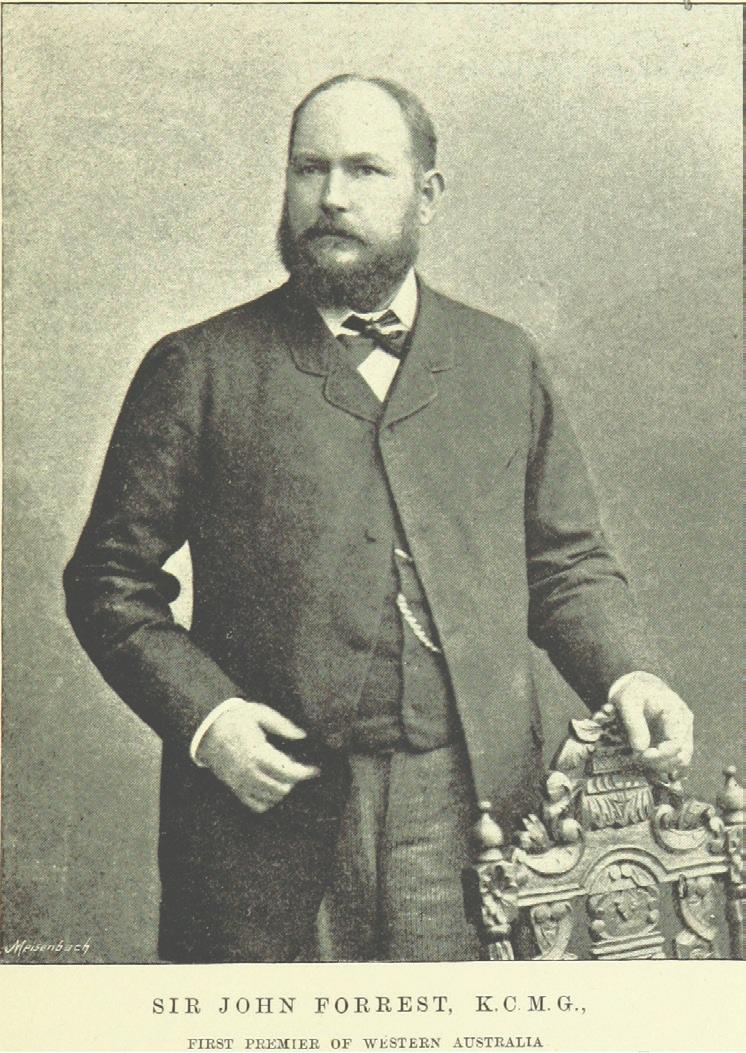
Forrest was a late convert to the idea of Federation but then supported it strongly, moving to the Federal seat of Swan and becoming a Commonwealth Government minister for most of the next 18 years. He continued to fight for his state, and oversaw the construction of Australia’s transnational railway, that linked Perth to Sydney. At the age of 70, he was offered a seat in the House of Lords in London. It was while travelling to London to accept his baronage, that Forrest died at sea. He remains recognised as a father of Federation, and the most successful and influential politician of his era.
7.5 Review questions
Recall
1Recall three reasons for the decision to send convicts to Australia.
2 Explain the term ‘ticket-of-leave’.
3 Recall which convicts were sent to ‘places of secondary punishment’.
4 Describe where and when the first gold rush was located in Australia, and who claimed to have discovered the find that led to it.
5 Identify which ethnic groups suffered the most from racism on the goldfields.
6 Outline what caused the Eureka Stockade protest.
7 What two projects were constructed under the leadership of CY O’Connor in WA?
8 Outline what political ideas most influenced Australia.
9 Why did the trade union movement launch its own political party?
10 Recall the term used to describe the unification of different colonies into a single government covering the whole continent.
11 Who was seen as the ‘Father of Federation’?
12 Recall which city was the first capital city of Australia.
Interpret
13 Discuss the benefits of convicts in the Australian colonies.
14 Briefly outline reasons why some settlers opposed the convict system.
15 Explain why gold is so valuable.
16 Compare life on the Western Australian goldfields to life on the Victorian fields.
17 How did the goldfields vote affect the Western Australian government in the 1890s?
18 Why was Australia seen as a ‘social laboratory’?
19 Why did the Australian colonies decide to federate into a single nation?
Argue
20 Analyse why some argue that the gold rushes were a negative period of Australian history.
21 To what extent has egalitarianism been a feature of Australian society and culture since 1788?
Apply 7.5 questions
1 Investigate how the gold rushes affected the architecture of Perth and Fremantle. Consider styles such as Neo-classical, Neo-gothic, and Arts and Crafts.
2 Investigate and explain how women’s rights were advanced in the 19th century and early 20th century in Australia.
3Investigate and explain the key debates at the constitutional conventions in the late 19th century. How are some of these debates still relevant today?
Key concepts: continuity and change, cause and effect, perspectives
HASS skills: communicating, researching, evaluating
• How did the experiences of marginalised groups compare, in the Federation period?
In the 1800s, women did not have many legal or political rights in Australia. This began to change in the lead-up to Federation. If a woman was to marry, all her property belonged to her husband, who was also the legal guardian of their children. Female workers were paid less than males, and did not have union protection, which meant working conditions were far worse. Many occupations banned women, and it was
expected that married women would stay at home and look after children. In fact, a 1907 judgement ruled that the minimum pay in Australia should be sufficient for a man to support a wife and three children.
Many women campaigned for change to the law and the right for women to vote. These peaceful but determined women were known as ‘suffragists’. More radical activists, especially overseas, were known as ‘suffragettes’. One important Australian suffragist was Mary Lee.
FAMOUS FACE
MARY LEE (1821–1909)
Mary Lee was a campaigner for women’s rights in Australia, based in Adelaide. After years of work with the ‘Social Purity Society’, advocating for legal reforms aimed at improving the sexual and social status of women, she helped form the South Australian Women’s Suffrage League in 1888. She worked tirelessly to improve conditions for working women, and to provide refuge and support for poor, or mentally ill women.
Lee is credited with the petition that led to the 1894 decision to allow women to vote in South Australia. She died, in relative poverty, in 1909.

Her achievements included raising the age of consent for females to 16 years of age, forming unions to protect women workers, and helping to win voting rights for women in South Australia. When Federation occurred, many noticed that voting for women was not explicitly mentioned in the Constitution. The only related part was Section 41:
No adult person who has or acquires a right to vote at elections for the more numerous House of the Parliament of a State shall, while the right continues, be prevented by any law of the Commonwealth from voting at elections for either House of the Parliament of the Commonwealth.
1903, Queensland in 1905 and Victoria in 1908, women were given the right to vote in their States as well as the federal parliament.
The right to vote did not translate into representation of women in parliament. The first female MP in Australia was Edith Cowan, elected to the Western Australia parliament in 1920. Another Western Australian, Dr Carmen Lawrence, was the first Australian Premier in 1990. No woman was elected to the federal parliament until Dame Enid Lyons in 1943. The first female judge of the High Court was Mary Gaudron in 1987, the first woman to be appointed as Governor-General was Quentin Bryce in 2008, the first female Prime Minister was Julia Gillard in 2010 and the first woman to become Chief Justice of the High Court was Susan Kiefel in 2017.
At the time of Federation, women in South Australia and Western Australia, who were 21 or over, could vote. It was then unclear whether Section 41 of the new Constitution guaranteed that all women in Australia were to be given the franchise. Other sections of the Constitution stated that the Commonwealth could not discriminate between citizens of different states. In the first Federal elections, however, the states followed their existing laws – which meant no women voted in Victoria, New South Wales, Queensland or Tasmania.
A solution was quickly found. The first law on elections and electoral rights for the Commonwealth of Australia was The Commonwealth Franchise Act 1902, which gave women the vote and the right to stand for Parliament. The other four states then followed suit, and in NSW in 1902, Tasmania in
Another of the first pieces of legislation passed by the new Australian Parliament was the Immigration Restriction Act 1901 . This Act would form the basis of what would become known as the ‘White Australia Policy’. The Act gave immigration officials wide-ranging powers to prevent nonwhite immigrants from entering the country. The most famous element of this policy was the ‘dictation test’, which required potential immigrants to write out a 50-word statement dictated by an immigration official, in any European language. This was, in practice, impossible, as any European language could be used. This policy was based on similar tests used in New South Wales, Western Australia and Tasmania.
For the first half of the 20th century, the Act remained unchallenged. Aside from the Aboriginal inhabitants, Australia became a nation of British immigrants only, with few exceptions. The law was generally supported, for racial reasons and for more pragmatic reasons. Australian
Using historical sources as evidence
workers did not want cheap labour competing in the job market, such as the Pacific Islanders that had been brought in to work on the plantations in Queensland. There was also the concern of race-based violence and conflict, that had been evident during the gold rushes.
Consider the statements made by politicians and newspapers about the Immigration Restriction Act 1901.
There is no racial equality. There is that basic inequality. These races are, in comparison with white races, unequal and inferior.
Source 7.6.1 Edmund Barton, Australia’s first prime minister ➜
Source 7.6.2 The Bulletin, 1901 ➜
If Australia is to be a country fit for our children and their children to live in we must KEEP THE BREED PURE. The half-caste usually inherits the vices of both races and the virtues of neither. Do you want Australia to be a community of mongrels? … dead in her coffin than kissing one of them [non-Europeans] or nursing a coffee-coloured brat that she was the mother to.
Source 7.6.3 William Lane, a founder of the Australian Labor Party, when stating he would rather see his daughter dead than in a relationship with a non-white person ➜
1 Who were the authors of these quotes? Do some research on them.
a Where are they from?
b Why did they write this?
2 What is the historical context of these sources?
3 What is the key vocabulary used in these sources? What does it indicate?
4 What claims are the authors making?
5 Using the sources and your own knowledge, explain the purpose of the Immigration Restriction Act 1901.
Key concepts: sources, perspectives
HASS skills: analysing, researching, evaluating
More than any other group in Australia at the time of Federation, Aboriginal people were denied the rights of other Australians. In some states, boards of ‘protection’ had been established to provide for basic needs of Aboriginal people. The Victorian Board for the protection of Aborigines regulated employment, housing and even the marriage of Aboriginal people. In 1886, the Victorian government began a process of removing mixed-race children from Aboriginal parents. Protection policies were designed to help prevent exploitation of Aboriginal people, and reduce conflict, but in practice they prevented Aboriginal people from living their lives as other Australians did, and also seriously damaged Aboriginal culture by separating families and forcing many people into missions and reserves far from their traditional homes.
When Western Australia was granted self-government in 1890, the British government retained control of the Aborigines Protection Board, suggesting that the treatment of Aboriginal people by Western Australian leaders was unsatisfactory. The 1890 Constitution also required the government to set aside
1 per cent of total revenue in Western Australia for the Aboriginal people. This caused much resentment, and did not last. John Forrest’s government first excluded most Aboriginal people from voting, by passing a law requiring them to own land with a value of at least £50 if they were to be allowed the franchise. Then, in 1897, another law was passed that transferred Aboriginal affairs to the Western Australian government.
In the first federal elections, some Aboriginal people did vote. Section 41 meant that Aboriginal people that were entitled to vote in their state, could vote in federal elections. Queensland and Western Australia had actually prevented Aboriginal people from voting; however, the other states only discouraged them, partly by not providing voting facilities in remote areas. In 1902, Parliament passed the Commonwealth Franchise Act 1902 which granted women the right to vote, but specifically excluded Aboriginal and Torres Strait Islander women, unless they had previously had such a right – in effect, the few South Australian Aboriginal women that had previously been given the right. The right to vote for all Aboriginal people was not granted until 1962, and not made compulsory, as it was for other Australians, until 1984.
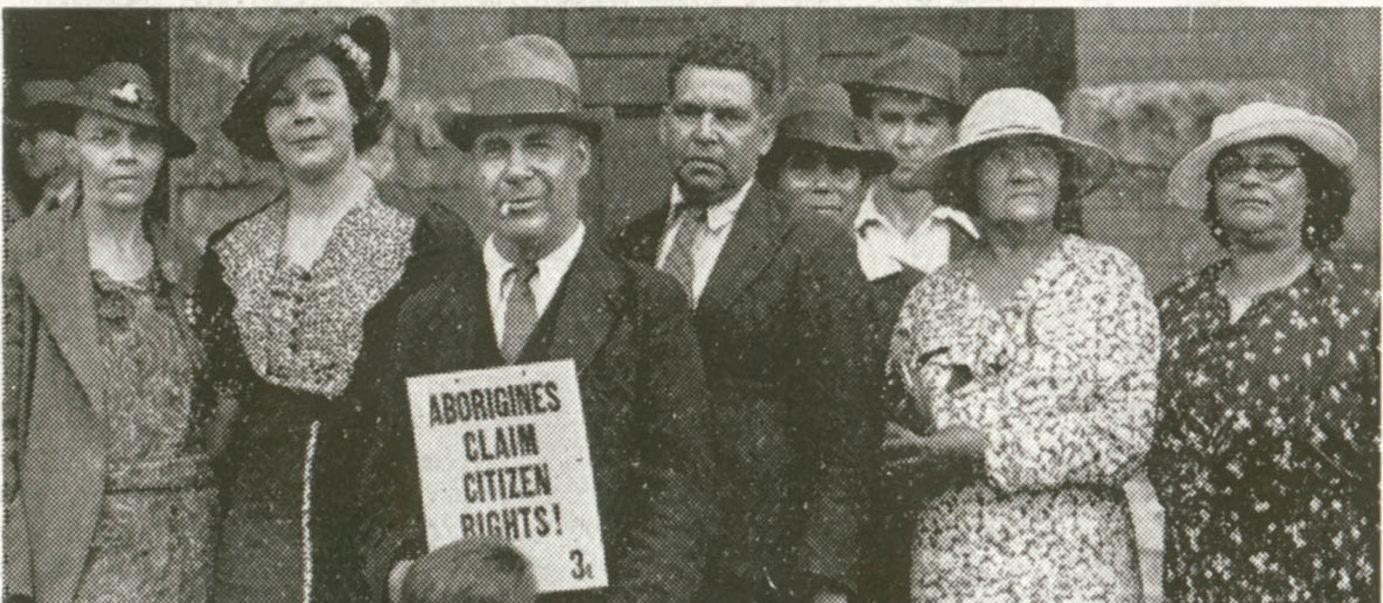
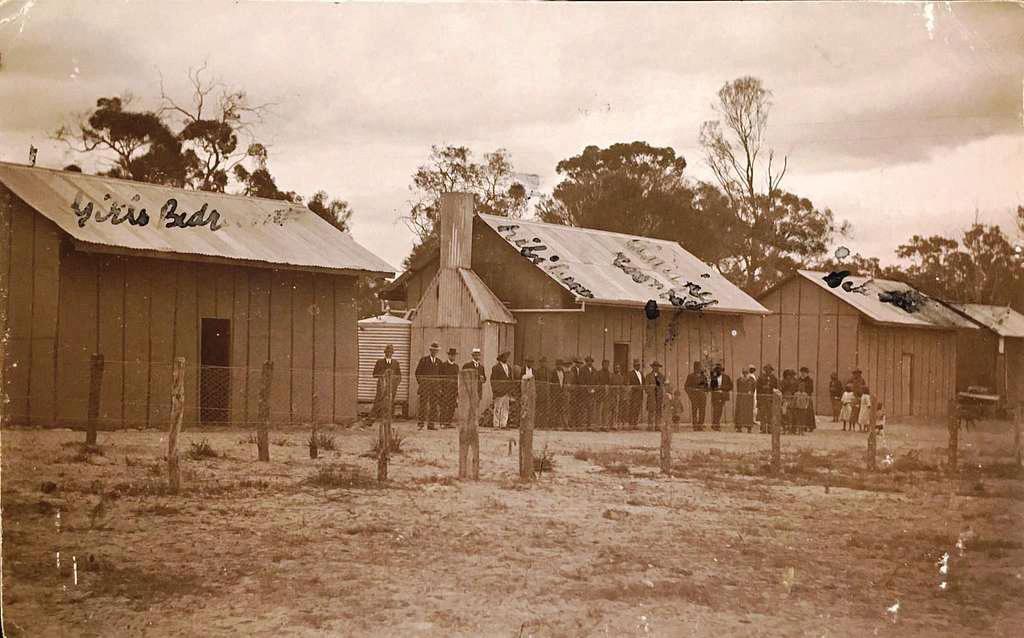
After Federation, each state acted to pass laws regarding Aboriginal people. This was necessary, given that, in the Commonwealth Constitution, it was made clear that Aboriginal affairs should remain a state concern. This was found in Section 51 (xxvi), which was removed after the 1967 referendum. It stated that the Commonwealth could make laws for …
‘The people of any race, other than the Aboriginal race in any State, for whom it is deemed necessary to make special laws’.
The laws made by the states at this time are known as the ‘Protection Acts’, given they were designed with the intention of ‘protecting’ Aboriginal people. Aboriginal people were not consulted, however, and the laws did more to restrict their rights than protect them. The idea of ‘protection’ has been described as ‘paternalistic’, in that it was treating First Nations Peoples as a father would treat his children – rather
than recognising them as adult citizens. In Western Australia the law was the Aborigines Act 1905, sometimes simply known as the 1905 Act.
The 1905 Act was specifically designed to reduce conflict in the north of the state, and prevent the exploitation of Aboriginal People by unscrupulous employers, who paid little to no wages, and often forced children into work. The Act focused on segregation, rather than acceptance of Aboriginal Peoples as equals, and created enormous problems for Aboriginal Peoples for generations to come. It was particularly harsh on southwest Aboriginal groups who had, by 1905, become accustomed to white society. Many were regularly employed, gaining an education, and even owning property and businesses. The 1905 Act stripped them of these achievements, and denied their progress until the 1960s.
As explained above, each of the provisions of the 1905 Act were based on the idea of ‘protecting’ Aboriginal People, but in practice made life more difficult. Some examples included:
• Children under 16 could not be employed.
• Employers had to apply for a permit to employ an Aboriginal person.
• Aboriginal workers were entitled to rations (food), blankets, and clothing.
• The government could declare any area prohibited to Aboriginal people.
• Reserves were to be established, where those not legally employed could be forced to live. These were usually on the outskirts of town, and run on a threadbare budget.
• A Chief Protector would be named, and would be the legal guardian of all Aboriginal children. This allowed them to remove children from parents deemed unfit.
• The Protector also would have to give permission for a marriage, which was unlikely in the case of mixed-race couples.
• The government could take possession of all property and wages earned by an Aboriginal person, who would then have to apply for permission to access the funds.
• Curfews could be imposed, requiring Aboriginal people to be out of an area before nightfall.
1 Create a table, using the above list of provisions under the 1905 Act in Western Australia. In a second and third column, explain what you think were:
a the reasons for the law
b the negative impact of the law for Aboriginal people.
Law
Reason
Impact
2 Explain how you think these laws may have contributed to the issues and problems faced by Aboriginal people in Australia today. If you are unsure what these issues may be, research the latest ‘Closing the Gap’ statistics, from the Federal Government. You can use the following link to get started: https://cambridge.edu.au/redirect/11246.
Key concepts: cause and effect, significance, empathy HASS skills: researching, analysing, communicating and reflecting
Go online to access the interactive section review and more!
The protection policies across Australia reflected the general attitude that segregation was the preferred policy for Aboriginal People. Large numbers lived on reserves and missions with little contact with white society. In these communities, they had no rights to basic wages, pensions, education or healthcare. In a way, their treatment reflected the White Australia Policy that restricted immigration. There was also a belief held by some that First Nations Peoples would inevitably decline in number and disappear from Australian life. This was based on a type of Social Darwinism – an application of evolutionary theories to humans that was used to justify the dying
Section 7.6 review
out of particular races. In 1937, Western Australia’s Chief Protector, A.O. Neville, asked the question:
Are we going to have a population of one million blacks* in the Commonwealth, or are we going to merge them into our white community and eventually forget that there were any Aborigines* in Australia?
Source7.6.6 Neville, A.O., Speech at the initial conference of Commonwealth and State Aboriginal Authorities, Canberra, Parliament House, April 1937
*Please note these terms are no longer considered acceptable but are used here in a historical context.
7.6 Review questions
Recall
1 What was a ‘suffragist’?
2 In which state were women first entitled to vote?
3 What did the ‘White Australia Policy’ refer to?
4 In what year did all Aboriginal People become entitled to vote in Australia? Interpret
5 What reasons were given for denying women the right to vote in the 1800s?
6 What is segregation, and why does it rarely succeed in bringing groups together in a country?
7 How do you explain the harsh restrictions of Australia’s ‘Protection Acts’?
Argue
8 Explain why it is important to understand how Aboriginal People were treated in the past.
9 Imagine you lived in Australia at the time of Federation. Create an argument for and against open immigration at the time.
Key concepts: continuity and change, cause and effect, perspectives, empathy
HASS skills: communicating and reflecting, evaluating, researching
Learning Australian history has not always been a priority in schools. Yet it is the history of our nation, and can help us understand where we have come from, and also guide us in the future. Australia is described as a multicultural nation but it has not always been that way. As you have seen in this chapter, immigrants and First Nations Peoples faced many challenges in our early history. Understanding these challenges allows us to understand the issues and barriers they face today. How does your understanding of colonial history based on this chapter, for instance, affect your views of the campaign to change the date of Australia Day?
Learning about Australia’s colonial past should not simply focus on the negative however, as our history has provided us with some of Australia’s most recognisable features. The emergence of democracy and egalitarianism in Australia, the origins of Australia’s wealth and prosperity, and the unification of the country can be seen when
studying settlement, convicts, the gold rushes and Federation.
It is also important to understand the role of minorities and marginalised groups in our history. Until the 1960s, many writers focused on the role of white, male leaders in shaping society but since then, historians have uncovered the significance and contribution of women, First Nations Peoples, and immigrants to our story. Focusing on other perspectives can train us to recognise bias and propaganda – an important skill in navigating the modern world.
Australia on the eve of World War I was a new nation, on a very old land. The war would challenge many aspects of society and bring about many changes. Without first understanding the features and development of Australian society before the war, it would be impossible to gauge the degree of change the war brought. In the next chapter, you will investigate just how significant these changes were to be.

That just about wraps up this topic. How did you feel you went working through the chapter? Before you attempt the following activities, visit the Interactive Textbook to rate your confidence with this topic via a downloadable checklist.
Follow the ow of main ideas
What ideas have you learnt about Australian colonial history? In this activity, copy the diagram below and fill it in by explaining in a few points what each topic means for understanding colonial Australia. (An example has been provided for you.)
The discovery of Australia
Causes of European contact and settlement
Effects of European contact and settlement
Significant events and ideas that shaped society in the colonial period
Key individuals in the history of Australia to WW1
Different perspectives on colonial history
Australian society by 1918
• The Australian colonies began to see themselves as a more independent part of the global community.
• Federation allowed the colonies to tackle common problems.
• The Immigration Restriction Act limited immigration by non-European peoples.
• Protection policies limited the rights of First Nations Australians.
• Australia was a male-dominated society.
I used to think that …
Now I understand that …
In this visible thinking routine, you are asked to track the difference between what you knew about colonial Australia before starting this chapter, and what new understandings you have acquired at the completion of this chapter.
Using these stem sentences, write a paragraph explaining what you previously knew about colonial Australia, and another paragraph explaining what you now understand, additionally, about colonial Australia:
1a I used to think that the British settlement of Australia was important because …
b Now I understand that the British settlement of Australia was important because …
2 a I used to think that colonial Australian society was …
b Now I understand that colonial Australian society was …
3 a I used to think that Australia was influenced by …
b Now I understand that Australia was also influenced by …
It is important that you, as a historian, can confidently and correctly use all the special words and key terms related to your subject. Write a paragraph in response to the question below, using all the key terms in such a way as to show you understand what they mean.
Question: How were First Nations communities affected by British settlement from 1788?
Use these words correctly:
• Aboriginal law
• dispossession
• Frontier Wars
• land management
• imported diseases
Bushranging was a feature of Australian colonial life. It refers to the criminal activities of those who avoided the law by carrying out their crimes in remote areas of Australia – the ‘bush’. The gold rushes created the conditions that encouraged bushranging, and many bushrangers were ex-convicts. Research the history of bushranging in colonial Australia. Write a short biography of Ned Kelly or Moondyne Joe (Joseph Bolitho Johns). Include a timeline of his life, refer to primary sources and an annotated map of where he operated. Then use your research to answer the following question:
Ned Kelly and Moondyne Joe were convicted criminals. Why have they managed to become such romanticised figures in Australian history? What does this say about Australian society?
• terra nullius
• massacre
• resilience
• colonial
• assimilation.
Key concepts: significance, contestability

HASS skills: communicating and reflecting, evaluating
In this chapter, there will be a special focus on the concept of cause and effect. This means you will be developing your ability to explain why things happened in the past and what the result of these events were. There are many different types of causes and effects. They could be political, economic or social. There is also usually more than one cause or effect for an event, so don’t fall into the trap of thinking an event may have only one cause or one effect.
This chapter will also focus on historical significance. Determining historical significance is crucial, as in History there is so much that happened in the past and you need to be able to identify what is important and what is less important. Finally, you will be able to analyse primary sources to understand the perspectives of people in the past, and historians’ opinions to examine the
contestability of viewpoints and evidence. Look for opportunities to develop these key skills throughout this depth study.
The first step in investigating Australia’s involvement in World War I is to evaluate the causes that created this massive global conflict. Was it one in particular, or a combination of factors?
You will then need to consider the effects of the war, particularly on the home front. The concept of a ‘home front’ actually started in World War I, where countries like Australia and Britain realised just how vital the people at home were to the success of their soldiers – particularly in a long and drawn-out war. Events like World War I can also have an effect well after they have ended. In this chapter you will be asked to consider how the war affected Australia in the long term. Was the war an experience in which Australians ‘grew up’ to nationhood? Or had they already done that by the time of Federation in 1901? How did women’s rights change after the war? What was the impact on Australian politics and economy moving forward?
The more the war affected Australia, the more we can regard it as a significant event in Australian history.
The significance of World War I can also be considered contestable, however, and the way it has been commemorated has sometimes divided Australians. Many believe that commemorating war is a way of respecting those that fought, and sometimes died, and reminds people of the need to avoid war in the future. Others believe that Australians spend too much time and money memorialising war, at the

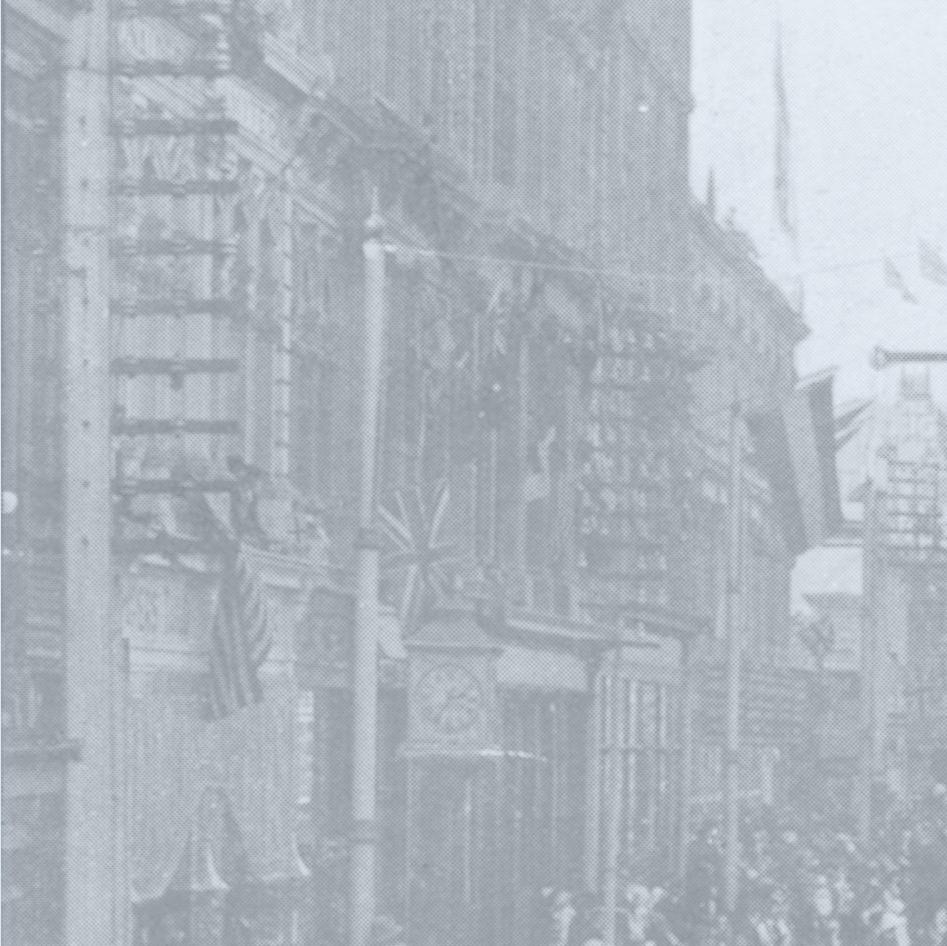
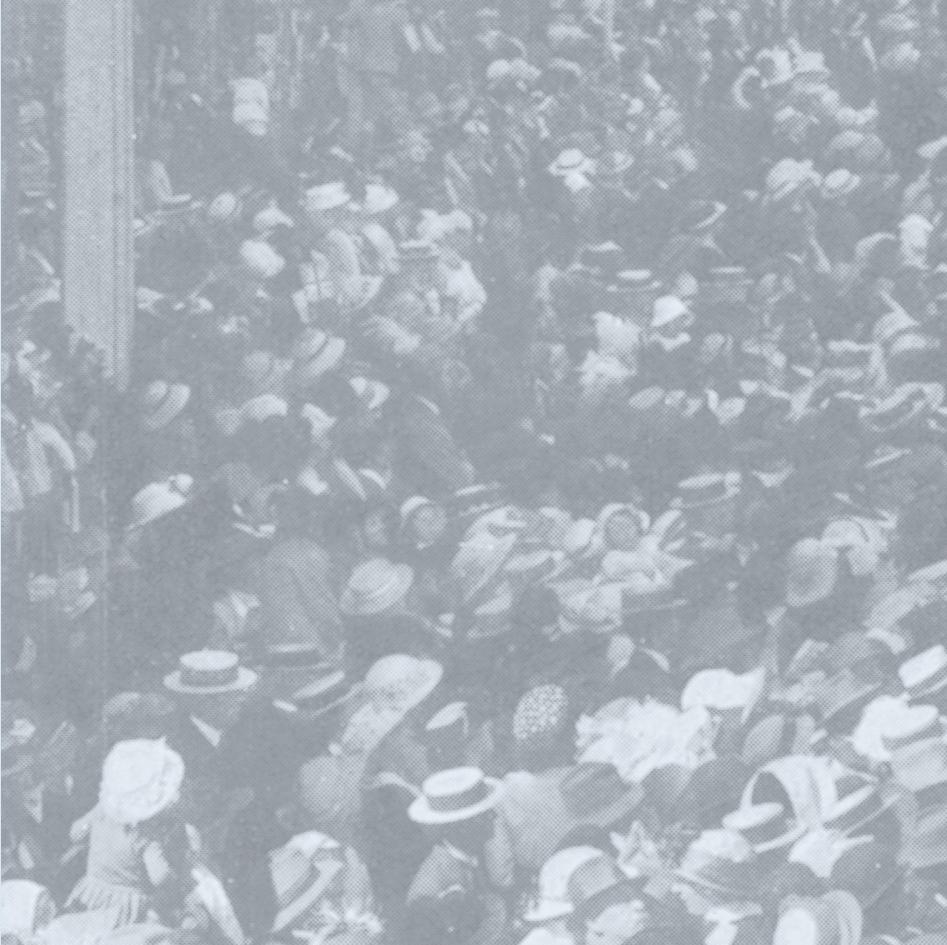
expense of other aspects of history. One view is that ceremonies such as those of ANZAC Day, and what is known as the ANZAC ‘legend’ can lead to a glorification of war, or can romanticise it. What do you think? After you have read this chapter, you will be asked to understand the different perspectives on war and its place in history and perhaps come up with your own.







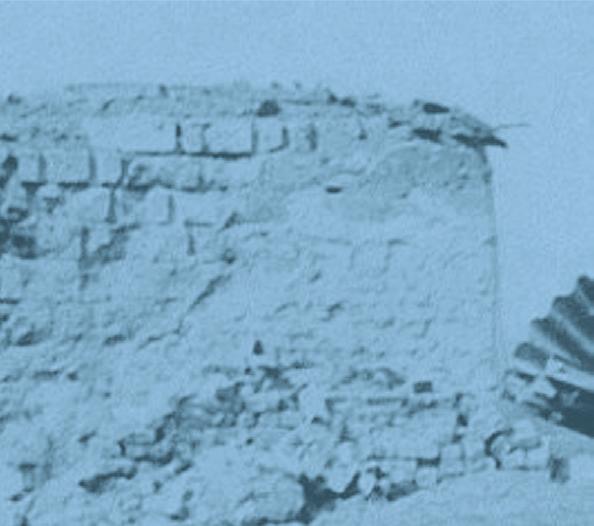

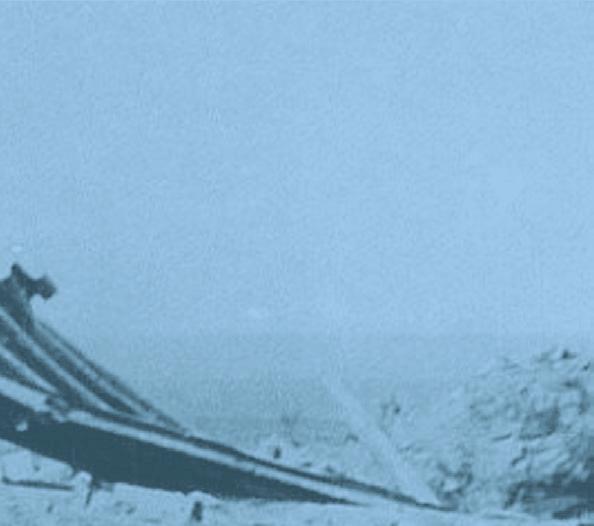


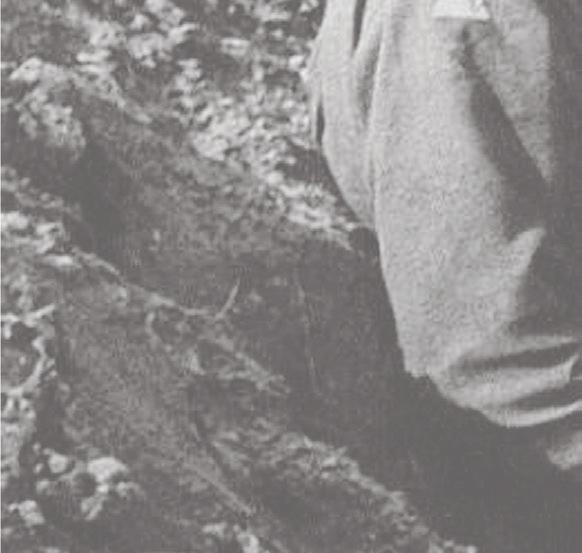

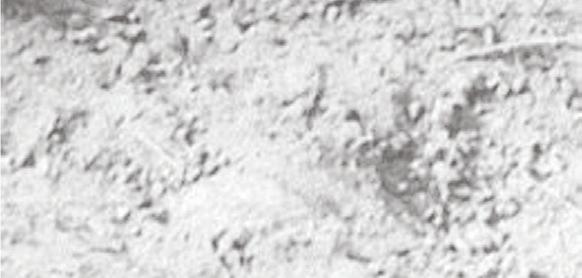














In 1914, as part of the British Empire, Australia responded immediately to World War I by supporting the Allied war effort. It was assumed that this was the ‘war to end all wars’, and that it would be over in months; neither assumption was correct. Australia involved itself in a modern war – based on the heavy industries developed by the Industrial Revolution –that changed the nature of fighting, and profoundly affected the countries that participated. This was an important stage in the formation of the modern world we know today.
Wars continue to threaten nations, giving us a renewed urgency to study and to understand conflict, in the hope of being able to prevent it.
After completing this chapter, you should be able to answer these questions:
• What were the causes of World War I?
• How could a single assassination of a statesman escalate into a conflict between all the major powers of Europe?
• Why did men and women volunteer to go to war?
• Why was World War I quite different from the ‘traditional’ wars of previous centuries?
• How did those at home in Australia also contribute to the war effort?
• What were the special conditions on the battlefields of World War I?
• In what ways did new weapons change the nature of fighting in this war?
• What were some of the significant places where Australian men and women served during World War I?
• How did the role of women in Australian society change due to the war?
• What was the impact of World War I on Australia? Was it ‘the war that changed us’?
• Why do we commemorate wars? What is the most appropriate way of remembering those who have served?
• What is ‘the Anzac legend’? Why do some see it as a myth?
After completing this chapter, you should be able to:
• Understand what cause and effect means in the study of history
• Interpret primary sources in both print and visual form.
Other important historical skills include:
• understanding and evaluating different historians’ points of view
• developing historical empathy with people in the past
• evaluating the reliability of primary sources
• the correct use and definition of special terms specific to the topic under study
• the use of factual evidence (dates, statistics, examples) to substantiate an argument.
Visit the Interactive Textbook to access:
• interactive Scorcher Quiz
• videos, image galleries and other extra materials.

• 18th century: The Industrial Revolution in England, and later Europe, creates modern factories and modern technologies that will later produce the deadly weapons used in World War I.
• 18th century: The Age of Empires: European powers continue to build up colonies and to form empires. Australia is a part of the British Empire.
• 19th century: The first truly modern weapons begin to be used in warfare – for example, the machine gun in the American Civil War.
• 1870: Chancellor (Prime Minister) Otto von Bismarck unites a number of smaller states into the new country of Germany, under the rule of Kaiser Wilhelm I.
• 1880s: The ‘scramble for empire’: European powers compete to seize colonies in places such as Africa. This competition introduces new tensions among the great powers.
• 1898: German Emperor Wilhelm II embarks on a new policy of German ‘World Politics’, and starts building up his navy in competition with Britain.
• 1901: Australia is federated.
• 1911: The Agadir Crisis: the French and the Germans almost go to war over their claims in Morocco.
• 1912–13: The Balkan Wars: nationalistic minorities north of Greece rule assert their independence from the Ottoman Empire and destabilise borders.
November 1914
July–August 1914
Germany invades Belgium, then enters France
28 June 1914
Assassination of Austrian Archduke Franz Ferdinand triggers a chain reaction of responses by European powers
29 October 1914
War Precautions Act is passed in Australia
The 1st Australian Imperial Force, initially raised in August, is sent to Egypt to train
February–September 1915
Major German campaign of submarine attacks on merchant shipping
April 1915
The Allies commence hostilities at Gallipoli
January 1916 Allied forces withdraw from Gallipoli
February (to December) 1916
May 1915
January 1915
Germans use gas for the first time
Italy declares war on AustriaHungary 5–10 September 1914
First Battle of Ypres
The French push back advancing German forces in the Battle of the Marne. Both sides dig in using trenches. October–November 1914
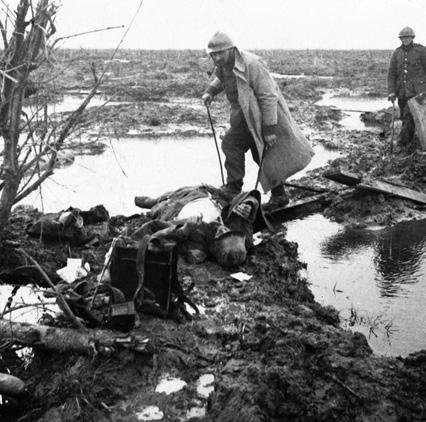
April–May 1915
Second Battle of Ypres

Battle of Verdun
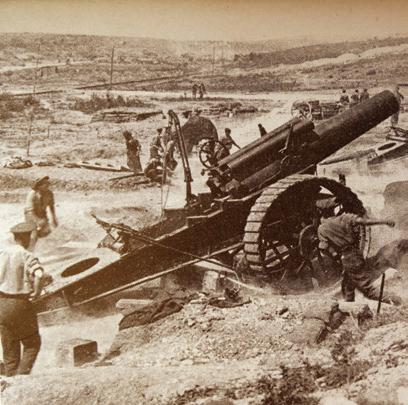
Source 8.2.4 Eight-inch
British howitzers fire an artillery barrage during the Battle of the Somme in August 1916 ➜
• 11 November 1918: Armistice ends fighting between Germany and the Allies.
• January 1919: The Allied powers meet at Versailles, France, to discuss peace treaties to formally end the war. Germany and its allies are excluded. As part of the British Empire, Australia is invited to participate. Meanwhile, returning soldiers spread the Spanish Flu, which kills millions, including 12 000 Australians.
• June 1919: The Treaty of Versailles is signed. When published, it provokes shock and rage in Germany. Australia is permitted separate representation at the conference.
• August 1919: The Weimar Republic is established, and immediately faces massive political, social and economic problems.
• January 1920: The League of Nations (precursor of the United Nations) is founded. Germany is excluded from membership. Australia is given a mandate over German New Guinea.
• February 1920: Hitler publishes the Twenty-Five Point Program of the Nazi Party.
• May 1921: Germany is forced to accept massive reparations (payments for damage) to the Allies.
• October 1929: The Great Depression hits the world, causing governments to collapse, including in Germany.
• 1933: Hitler is appointed Chancellor of Germany.
• September 1939: Outbreak of World War II. The ‘war to end all wars’ has not done so.
July–November 1916 Battle of the Somme
May 1916
German and British fleets clash in the Battle of Jutland
6 April 1917
United States enters the war
February 1917 Germans start policy of unrestricted submarine warfare
31 October 1917
British and Australian troops defeat Ottoman forces at Beersheba, in Palestine, shifting the balance in favour of the allies in the region.
April 1918 Battle of VillersBretonneux, where the German advance is turned back

Source 8.2.5 The Treaty of Versailles was signed on 28 June 1919 at Versailles near Paris, with victorious nations forcing Germany to carry the blame for World War I and specifying the terms of peace. ➜
August 1918 Battle of Amiens, the start of an allied offensive which brought the end to the war 1919
Australian troops begin to return home
July–
November 1917
Third Battle of Ypres
March 1918
Russia pulls out of the war, allowing more German troops to attack the Western Front.
The Ludendorff Offensive: German stormtroopers break through Allied lines of defence.
July 1918
Battle of Le Hamel, the first major offensive by Australian troops under John Monash
11 November 1918
An armistice ends the war at 11 a.m.
1 What can you tell from the information in the timeline about the difficulty of achieving victory during World War I?
2 Of all the battles listed here, which one do you think proved to be the most decisive in winning the war?
Key concepts: continuity and change, cause and effect, significance
HASS skills: analysing, evaluating
28 June 1919
The Treaty of Versailles is signed, formally ending World War I

Source 8.2.6 Men of the 8th Battalion, East Yorkshire Regiment going up to the line near Frezenberg during the Third Battle of Ypres, 5 October 1917 ➜
• What were the causes of World War I?
• How could a single assassination escalate into a conflict between all the major powers of Europe?
• Why did Australian men volunteer to go to war?
The Triple Alliance of Germany, Austria-Hungary and Italy
The Triple Entente of Britain, France and Russia
Non-aligned European countries
These alliances were not as formal as modern alliances, which formally commit nations to action. They were more general and informal understandings of assistance. Nonetheless, they played an active role in bringing the nations into the conflict.
Strong French nationalism demands the return of Alsace-Lorraine and expects armed conflict with Germany
Kaiser Wilhelm II builds up the German navy to rival Britain's great Royal Navy and to make Britain grant some diplomatic concessions
Formation of the Triple Alliance Bismarck was aware of the movement in France to regain the territories of Alsace-Lorraine lost to Germany after the unsuccessful Franco-Prussian War of 1870. Predicting a military attack from France and its allies, Bismarck concluded the Dual Alliance Treaty (1879) with the Austro-Hungarian Empire, committing to mutual defence if either was attacked. In 1882, Italy joined what now became the Triple Alliance.
The Pan Slav movement In the Balkans, the Slavic peoples resented the control of non-Slavic rulers, such as the Austro-Hungarian Empire. This Slavic nationalism will be a key cause of tension in the region.
The formation of the Triple Entente (Entente cordiale) France and Russia were powerful countries but felt threatened by the Triple Alliance. In 1894, they too formed a Dual Alliance, which was then expanded into the Triple Entente when Britain joined in 1907. Thus the Alliance System was formed as a guarantee against armed conflict, but it would be a trigger for hostilities.
The British Royal Navy and the French Navy dominate the Mediterranean area
A proud, nationalistic Serbia is resisting Austrian influence in the region 0 1000 km 500
Source 8.3.1 The European rival armed camps pre-1914
Gavrilo Princip was a Bosnian with Serbian nationality. He was a nationalist who hated that many Serbs remained part of the vast Austro-Hungarian Empire after the Balkan Wars. He belonged to a revolutionary group called Young Bosnia and wanted to fight for a free, independent Bosnia, ruled by Bosnians, not by foreigners. Princip joined a group called the Black Hand, and recruited young men with similar nationalist feelings. The aim of such groups was to carry out violent acts of political protest – such as bombings or shootings – against the Austro-Hungarian authorities.
Princip’s opportunity came when the Austrian Archduke Franz Ferdinand, the heir to the Austro-Hungarian throne announced that he would make an official visit to the Bosnian town of Sarajevo, along with his wife Sophie Chotek, Duchess of Hohenberg. He was to drive through the town in an open car, and the route was published in advance. Princip hastily bought pistols and a hand grenade, as well as some cyanide pills for suicide if needed. He carefully posted his men along the main road, Appel Quay, with each one hiding a weapon in his coat.

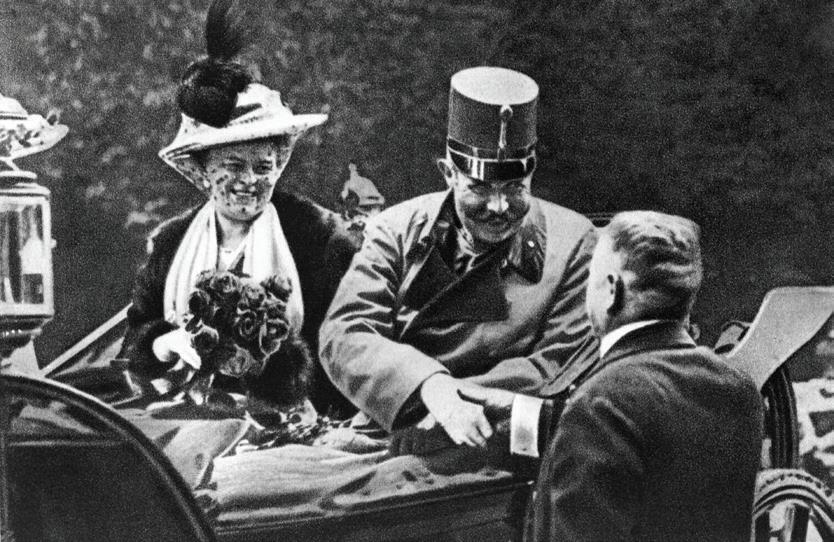
nationalist a person who wants their country to be politically independent
The royal couple arrived at Sarajevo at 10 a.m. on 28 June 1914, and were driven in a car with the hood down so that the people could see them properly. Princip and his friends waited nervously. But from there, everything went horribly wrong. One young man, Cabrinovic, was supposed to roll a hand grenade under the car, but he was so inexperienced that he forgot that the grenade had a 10-second delay, and that the official car would drive quickly over it and miss the blast; officials in a following car were injured instead. The cars speed up, the police closed in, and the conspirators could not act.
The attack descended into farce. One conspirator hastily swallowed a cyanide pill, but it was too old to work, and just made him vomit. He then threw himself off the bridge into the river, but it was summer, and the river only had a few centimetres of water in it. He was arrested. Meanwhile, Princip, stunned and confused, wandered the streets wondering what to do next. He had no backup plan. The attack appeared to have failed.1
Then, in one of the most tragic coincidences in history, Princip turned a corner and unexpectedly walked straight into the Archduke’s official car.
Source 8.3.4
British Dreadnought, HMS King George V, 1915. Why did such ships make all others obsolete? ➜
Ferdinand had already recovered from the shock, and had ordered his driver to take him to the hospital to visit the people who had been wounded by the grenade blast. The driver took a wrong turn, and drove the car down the very street in which the dazed Princip was wandering, still holding his pistol.
Princip simply raised his weapon, shooting Ferdinand and Sophie. She was pregnant, so Princip had in fact taken three lives. He was duly arrested. The members of his group who were of adult age were tried and condemned to death. Princip, being under 20, was sent to prison, where he became ill with tuberculosis and died in 1918. Princip would have expected that his actions would cause conflict between Serbia and Austria-Hungary but he could not have expected that they would lead to the biggest war the world had ever seen.
Well before Sarajevo, there were signs that Europe was preparing for war, and maybe looking for an excuse for one. The ideologies of the time – that is, the main ideas and beliefs about politics and international relations – go some way to explain the situation by 1914.
Historians categorise the factors leading to war in Europe at the time under the following headings:
1 Imperialism. As you have seen in the previous chapter, each of the European powers had built overseas empires by 1900, and also extended their empires in Europe. Germany, which had only existed as a nation since 1870, had the smallest empire, but the German Kaiser was determined to change this. Conflict over empires came to a head in Morocco, just before World War I, and created division between Germany and France in particular. All of the great powers saw war as a way of expanding their empires, and therefore their economic and military power.
2 Militarism. No imperialism is possible without a strong military. Each of the European powers had built up their army and navy rapidly prior to the war. This was known as the ‘arms race’. In particular, Germany and Britain competed in the production of the new steel warships, known as ‘dreadnoughts’. When military leaders dominate government, and armaments suppliers dominate the economy, war is much more likely. When leaders and their people become over-confident in their military, risks are taken.

Nationalism. Across Europe, various nationalities had existed for hundreds of years within the great empires such as Austria-Hungary, and Russia. Nationalism is the belief in one nationality and its right to dominate others, or at least enjoy independence. Serbian nationalism is one example, but many other groups saw war as an opportunity to further their aims. The Balkan Wars saw many nations try to establish themselves in the wake of the collapse of the Ottoman Empire in Europe. What resulted, however, was continuing resentment and jealousies that are still not resolved today.
4 Alliances. By 1914, most of the countries of Europe belonged to an alliance that would draw them into war. Nations fearful of their neighbours would form alliances in order to discourage potential enemies. The two main alliances in Europe at this time were the Triple Entente, between France, Britain and Russia, and the Triple Alliance of Germany,
Austria-Hungary and Italy. Italy would change allegiance at the start of the war, while many other nations would side with the alliance that they believed best served their interests, such as Bulgaria joining with the Triple Alliance. It was such alliances that brought most of the countries of Europe into the war. When combined with the forces of their empires, these alliances made the conflict into a world war.
The assassination at Sarajevo is so commonly described as the catalyst (cause or trigger) for World War I that it is tempting to accept this as the cause without questioning it. The problem is that political assassinations were quite common at that time, and other attempts had been made without triggering a war. The assassination of two people is tragic, but it does not explain how the major powers of Europe suddenly started the most destructive war ever. Sarajevo was just another domino in a long line of events that started World War I.
Route taken by the of cial party to Sarajevo
Route to the Cathedral (abandoned after the Cabrinovic bomb incident) Route planned from Sarajevo Town Hall after Cabrinovic threw the bomb


Let us look more critically at the chain reaction of events that led from a minor episode to a massive war:
1914
• 28 June Austria states that Princip was linked to the Serbian nationalist movement. 1914
• 23 July Austria, with strong backing from Germany, issues an impossibly strict ultimatum (set of demands made under threat). Serbia agrees to discussions, but also mobilises its army. (Mobilisation of an army is not an actual attack, merely the process of getting an army ready to attack. However, it does escalate tension.)
1914
• 25 July Austria is hostile, breaks official links with Serbia, and starts to mobilise its own army.
1914
• 26 July Britain calls for international peace talks and France, Italy and Russia agree. Germany refuses to attend.

1914
• 28 July Austria-Hungary suddenly declares war on Serbia.
1914
• 29 July Britain again calls for international peace talks. However, Russia worsens the situation by starting to mobilise its own troops. In response, the Germans start to mobilise their army.
1914
• 30 July The Austrians start to bombard the Serbian capital of Belgrade.
1914
• 31 July Russia moves into full mobilisation of its army. Germany warns that this must not continue. 1914
• 1 August Germany declares war on Russia. France and Belgium move into full mobilisation of their armies.
1914


• 3 August Fearing encirclement, Germany declares war on France as part of its Schlieffen Plan. In doing so, it invades Belgium, which is a neutral country. Britain delivers an ultimatum for German forces to leave Belgium. Germany does not even reply.
1914
• 4 August Britain declares war on Germany, on behalf of the members of the British Empire (including Australia, Canada, India, South Africa and New Zealand).
1914
• 6 August Austria-Hungary declares war on Russia.
1914
• 7 August The British Expeditionary Army lands in France. The war has begun.
Source 8.3.6 A depiction of the assassination of Archduke Franz Ferdinand and his wife Sophie.

Britain aimed to maintain the supremacy of the Royal Navy and to preserve the existing global balance of power. Its specific goal was to maintain its naval dominance of the North Sea and to allow the French navy to exert dominance over the Mediterranean area. Britain also had a defensive commitment to Belgium dating back to the 1830s.
FRANCE’S MAIN GOALS
France placed high priority on honouring and maintaining its important alliance with its powerful ally Russia. Its overall aim was to counterbalance the growing power of the emergent new nation of Germany. Popular nationalistic feeling focused on the return of Alsace-Lorraine to France.
RUSSIA’S MAIN GOALS
On the home front, the tsarist government was facing labour unrest (after Minister Stolypin's industrial development plan) as well as revolutionary socialist ideas and violent subversive action. Some ministers hoped that a war might unite the country behind its rulers.
On the diplomatic front, Russia was keen to establish a strong influence in the nearby region of the Balkans by very visibly helping a nationalistic Serbia in its struggle against the Austro-Hungarian Empire.
GERMANY’S MAIN GOALS
Germany’s behaviour was guided by Kaiser Wilhelm II’s desire to play weltpolitik ('world politics'), which was the policy aimed at making Germany a major player in world events. This included a defensive concern that Germany might be encircled by hostile powers on a number of borders. Another goal was to honour its agreement to Austro-Hungary, if that empire attacked Serbia and was in return attacked. Germany also calculated that a sudden escalation of the process of conflict might catch Britain unprepared as it struggled with domestic problems such as conflict over Irish independence.
AUSTRO-HUNGARY’S MAIN GOALS
Austro-Hungary was anxious to repress the Pan Slav Movement, which posed a real and present threat to its authority in the region and to its internal security. Serbia was the most important and dangerous challenge to be overcome because of the force and the radicalism of its nationalist movement. In economic terms, the Austro-Hungarian Empire hoped to dominate the Balkans so that it could control the trade routes to the Aegean Sea.
Source 8.3.7 Main reasons why the five major European powers went to war in 1914 ➜
A key skill in the study of History is the ability to identify chains of cause and effect to examine how and why things happened in the past. It is common in History, however, that explanations of why things happened may differ, depending on the person, the place or the time of writing. These different versions of history may be called ‘perspectives’. A criticism of History, often attributed to Winston Churchill, is that it has been written by the ‘victors’. When discussing the causes of World War I, this implies that the perspective of the Allied nations has often been given more weight than that of the defeated Central Powers, such as the German view.
Refer back to the timelines, maps and sources at the start of this chapter, to help you with the following activity, which focuses on the short-term causes of World War I. By completing this activity, you will see how perspectives on the same events may differ.
As a historian, you must review what happened, and decide for yourself which country or which ruler was most responsible for the events that led to war. The historian is very much like the lawyer, who must strongly state their case, then convince the judge and jury by collecting firm evidence to prove their point beyond reasonable doubt. And like the lawyer, the historian must respond to cross-questioning and maintain their argument.
Your class should divide into six groups, each of which must make a case for the guilt of one of the players in this drama.
Additional content available: The debate over responsibility for the war
Your presentation must contain a clear contention (statement) about the guilt of your chosen country/ countries, and must be strongly backed up by evidence such as dates, sequence of events, primary sources and historians’ opinions.
Upon the conclusion of your presentation, your group will need to respond to questions and criticisms from the other research groups.
Prosecution case 1: Serbia was to blame because it did not clearly pass on a warning about the assassination plan to the Austrians, and because some officials backed nationalist movements.
Prosecution case 2: Austria-Hungary was to blame because it imposed an impossibly strict set of conditions on Serbia, virtually entrapping it into war.
Prosecution case 3: Germany was to blame because its Kaiser and military leaders encouraged Austria to strike quickly at Bosnia, in the hope of encouraging a European war.
Prosecution case 4: Russia was to blame because it rushed in to mobilise its troops even before Germany had done so.
Prosecution case 5: Britain was to blame because it did not do enough to bring the nations to the negotiating table.
Prosecution case 6: All the major European nations were to blame, because they were all making alliances, building up their armed forces and competing for colonies.
Key concepts: cause and effect, perspectives
HASS skills: analysing, evaluating, communicating and reflecting
Check your understanding
1 What were the grievances that motivated Gavrilo Princip?
2 What were the aims of the Young Bosnia group?
3 Why did Princip choose Archduke Franz Ferdinand and his wife for assassination?
4 Why was Princip not executed for his act, as his helpers were?
5 What were the strengths and the dangers of the European system of alliances?
6 What were the reasons for European powers to take over weaker nations as colonies?
7 Explain why both the alliance system and the competition for colonies could generate dangerous political and military tensions in Europe.
Key concepts: evidence, cause and effect, significance
HASS skills: questioning and researching, analysing, evaluating, communicating and reflecting
‘Patriots all’: the reasons why Australians enlisted to go to war
So closely was Australia linked to Britain in 1914 that it did not make its own declaration of war. It was simply assumed to be at war as a part of the British Empire. Once the war started, there was at first no need to conscript (call up) people to join the army as there were plenty of volunteers. After the initial rush to enlist, and the inevitable casualties, the government found it harder to attract enlistment but, by 1918, more than 400 000 men had joined up to serve overseas, along with over 2000 women
nurses. Why did Australians want to fight in a war so far from their shores?
Most Australians felt strongly that they were a part of the British Empire, and were proud of it. Indeed, at that time – and as recently as the 1950s – Australians still referred to a trip to England as ‘going home’. In fact, Australia did not even declare war. Prime Minister Cook simply stated that ‘…when the [British] Empire is at war, so is Australia at war…’ There was little debate in Australia on the question. Opposition Leader in the 1914 election, Andrew Fisher, promised to defend Britain ‘…to the last man and last shilling.’
Source 8.3.8 This map shows the world empires of Britain, France and Germany in 1914. By the end of 1914, the only overseas territory of the German Empire that remained uncaptured by the Allies was German East Africa.
propaganda the use of persuasive information by a government to publicise its military success and/or to demonise an enemy country
➜
Source 8.3.10 This poster was designed by Australian artist Norman Lindsay for the Australian Government in 1918. Its late date reminds us that, by then, the government was desperate to recruit thousands more men and yet had twice been defeated in its attempt to introduce conscription. At one point in that same year, the Germans had successfully made a final push and seemed very close to victory. Fear of German domination and invasion was at that point very credible.
Another reason might be called the moral obligation, the feeling that it was important to fight German militarism and aggression. Many Australians firmly believed that Germany’s military aims had to be resisted, especially after they had disregarded Belgian neutrality by invading the country in order to encircle the French.
Captain R. Mulvey, for example, wrote:
In this struggle which will determine whether spiritual principles or a military despotism will control this world of ours, I feel [it would be] better to die in fighting for such a cause than to live in lifelong [shame] for having failed to respond to the Call.
Source 8.3.9 Captain R. Mulvey, quoted in Bill Gammage, The Broken Years, 2010, p. 15 ➜
Many Australians felt they must also resist Germany’s aims because they thought that one day they might have to defend their own country. With German colonial possessions to the north of Australia, Government propaganda helped to increase this fear by creating posters showing how Australian farms might one
day be under attack from brutal German soldiers, who would rape women and slaughter their husbands and children. A golden opportunity for travel abroad?
Some young men volunteered because the war offered them their only chance of a trip overseas. In the early 1900s, international travel was still massively expensive, a luxury only for the wealthiest classes. A workingclass family would find it expensive even to travel within Australia, least of all to Britain. Troops who enlisted in 1914 hoped to travel free to what they called ‘the Old Country’, and were disappointed when their ship took them first to Egypt.
This Australian recruiting poster cleverly uses large font to appear to offer a free trip to Europe. Only in the small print does it make it clear that you have to join the army. It was for this reason, perhaps, that there were actually fights among the men lining up at the Victoria Barracks in Melbourne. Because people thought the war would be over by Christmas, some men were pushing in to get to the front of the line, fearful of missing the opportunity to see the world for free.



Source 8.3.12 There is no doubt that, for most men, going overseas was a great adventure. Here, Australian soldiers ride camels near the pyramids in Egypt.
He soon found himself at Gallipoli. Jim wrote to his family:
We are very close to the Turk where we are.
But you mustn’t worry about me. I’m doing just splendid over here.
Many other soldiers, however, joined out of a patriotic desire to defend their own country and to help defend the British Empire. One of the most remarkable examples was the ‘boy-soldier’ Private Jim Martin. Born in Hawthorn in 1901, he had just left school and started to work on a farm in 1915. When enlistment began, he was aged 14 years and 3 months. He reported to the recruiting office, and passed himself off as a strapping 18-yearold. Keen to ‘have his share of the Turks’ (to start fighting them), he reported for duty, and was soon on a ship bound for Gallipoli. His first experience of war was the torpedo attack that sank his troopship. He survived in the water for four hours before being rescued.
Source 8.3.13 Private Jim Martin, quoted in Department of Veterans’ Affairs, Gallipoli and the Anzacs: A Resource for Secondary Schools, 2010, p. 72

Source 8.3.14 Fritz Erler, ‘Boys, come over here, you’re wanted’ poster, circa 1917
Jim survived the savage fighting at Gallipoli in September 1915. By 25 October 1915, Jim was seriously ill with typhoid fever, and was evacuated to a hospital ship, where he died of heart failure the same evening. He is believed to be the youngest Australian to have died on active service for Australia. Tragically, he was one of thousands who died of disease due to the unhealthy conditions at Gallipoli. Indeed, as many men died of disease as those who died by Turkish bullets.

Video: An Aboriginal hero of World War I ➜
Source 8.3.15
A later reason for volunteering arose when, after the first few years of the war, people in Australia realised that the war was going badly and it was urgent to send more help. Military historian Peter Pederson writes:
Recruitment soared in Australia. News of the [Gallipoli] Landing, the constant lengthy casualty lists and anger at the sinking of the liner ‘Lusitania’ by a German submarine in May 1915 all stimulated it. Those who responded called themselves the ‘Dinkums’ because they joined out of conviction rather than out of a love of adventure like the ‘Tourists’.
Source 8.3.16 Peter Pederson, The Anzacs: Gallipoli to the Western Front, 2007, p. 109
Unsung Indigenous heroes: why did Aboriginal and Torres Strait Islander Peoples volunteer for the war?
In 1914, Aboriginal and Torres Strait Islander Peoples were not even allowed to volunteer to join the army. Later, as the casualties mounted, and volunteering decreased, some Aboriginal and Torres Strait Islander people were allowed to enlist under special conditions introduced in October 1917. We will never know how many Aboriginal and Torres Strait Islander men served, because records were not kept precisely. There were about 93 000 Indigenous Australians in 1901, and it is estimated that about 1000 served in the war, but the figure may well be much higher. Likewise, there is little evidence of what motivated them to join. The historians of the Australian War Memorial state that:
A later reason for volunteering arose when, after the first few years of the war, people began to consider those that had not enlisted as cowards. Many felt shamed into joining the war, especially as Australians were dying and Prime Minister Billy Hughes made impassioned calls for more enlistment in 1916. As the war became increasingly a war of attrition, more and more soldiers were needed to reinforce the Australian forces. In England, a group of women – the Order of the White Feather – began handing white feathers to men who were not in uniform, irrespective of the reason, and this concept spread to Australia. The movement has come in for criticism, given the pointlessness and horrors of trench warfare, and the fact that men in essential industries, or those that failed the strict physical tests, could not enlist.
It is not known what motivated Indigenous Australians to join the Australian Imperial Force (AIF), but loyalty and patriotism doubtless played a part. There was also the incentive of receiving a wage. Indigenous soldiers were paid the same rate as non-Indigenous soldiers. In general, Indigenous soldiers served under the same conditions of service as other members of the AIF, with many experiencing in the army equal treatment for the first time in their lives. There may have also been the hope that having served would deliver greater equality after the war. In reality, however, upon their return to civilian life they were treated with the same prejudice and discrimination as before.
Source 8.3.17 The Australian War Memorial, Aboriginal Service During the First World War, 2019
Their contribution has now been better recognised by the memorial sculpture in Hyde Park, Sydney, YININMADYEMI Thou didst let fall by Aboriginal artist Tony Albert (see Source 8.3.18).

In 2015, the Aboriginal History Research Unit from the Western Australian Department of Aboriginal Affairs Community Development Directorate compiled a book on 13 Aboriginal servicemen who served at Gallipoli. The Defence Act exempted Aboriginal people from service, but it was not always rigorously enforced, especially when recruitment slowed in later years.
Aboriginal people had greater incentive to enlist in many cases. The army promised equality and respect at a level they had rarely experienced in their lives, as well as economic independence. The only Western Australian Aboriginal person to die at Gallipoli was Trooper James Dickerson, from Gingin. An excellent horseman, at 32 years old he joined the 10th Light Horse Regiment. He landed in Gallipoli in May, and survived ‘The Nek’, but was mortally wounded on Hill 60 in August 1915. His younger brother, Harry, survived the war.
Analysis questions
1 Review the 1905 Aborigines Act of Western Australia, described in the previous chapter. How were Aboriginal people treated at this time?
Additional content available: YININMADYEMI Thou didst let fall
2 Why would the authorities have allowed men such as James to enlist, when they were not regarded as equal citizens at the time?
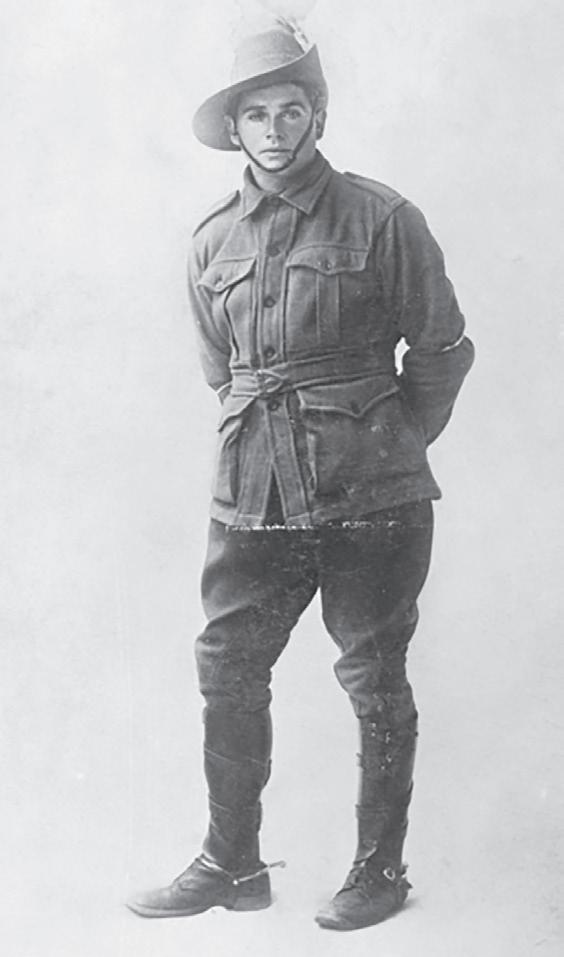
Source 8.3.19 James Dickerson also had a half-brother, Harry Dickerson (pictured here). Harry and James shared a mother: Aboriginal woman Mary Elizabeth Benyup. Harry was a first class machine-gunner, and was assigned to the 3rd Light Horse Machine Gun Squadron. He served with his unit throughout the Palestine campaign and survived through the war to return to Australia and be discharged from the AIF in September 1918.
Go online to access the interactive section review and more!
Section 8.3 review
8.3 Review questions
1Recall why Australia did not declare war on Germany in 1914.
2 Why did some people feel a moral need to fight Germany?
3 Why were some young men so eager to volunteer that they got into fights at recruiting stations?
4Recall who the Dinkums were and what they aimed to do.
Interpret
5Recall five of the main themes (subjects) in recruiting posters for World War I shown in this section.
6 Look again at the patriotic posters in Sources 8.3.10, 8.3.11 and 8.3.14. If you had lived in 1914, would these pictures have persuaded you to enlist? If so, which theme might have been the most powerful influence on your decision to serve?
Argue
7Explain why it is so important for Australia, as a nation, to properly acknowledge those groups – such as First Nations Peoples – whose war service has been forgotten or undervalued. Describe how oral history (spoken accounts) can help fill in the silences in our history.
Apply 8.3 questions
1Investigate the extent to which Australia has now properly and fully acknowledged the service of Aboriginal and Torres Strait Islander Peoples in the armed forces during World War I. In your response, provide a survey of the number and location of commemorative monuments, and list a range of recent publications on the subject.
2 J. Korff writes:
There is a First Nations war memorial plaque in Canberra, ACT, set up not by the Australian government but by private citizens. It is not in the spotlight and not easy to find. You can find the Aboriginal war memorial plaque in the vicinity of the Australian War Memorial, a ten-minute walk away.
Investigate the nature of the existing memorial plaque, and evaluate whether it is adequate to acknowledge the service of Aboriginal and Torres Strait Islander peoples in war. Write a proposal outlining a ceremony, publication or monument that you think could better acknowledge Aboriginal and Torres Strait Islander service to our nation.
3Investigate what historian Fritz Fischer said about Germany’s war guilt, and explain the evidence he produced to prove Germany’s ultimate responsibility for the conflict.
Key concepts: sources, evidence, significance, perspectives, empathy
HASS skills: questioning and researching, analysing, evaluating, communicating and reflecting
• Where were some of the significant places Australian men and women served during World War I?
Australia’s contribution
What is meant by ‘significance’ in history? If something stands out, or is remarkable in come way, it can be described as significant. Generally, something is significant in history if it leads to an outcome that would not otherwise have occurred. A significant event is also one that leads to change – the more change the more significance. Finally, a significant period in history is one which seems to mark a turning point, where what has gone before will never be the same again.
Australia’s contribution to World War I was, proportionately, a significant one. Historian Robert Fleming reminds us that Australia was a small country in terms of population – merely seven million people in 1917, compared with Germany’s 68 million and Britain’s 46 million. Yet, remarkably, Australia sent 331 781 troops overseas, and suffered 210 000 casualties, of whom 61 519 died.2
Australian troops distinguished themselves by fighting bravely, both in some hopeless and tragic military situations (Battle of Gallipoli, Battle of Fromelles) and also in some actions that proved
crucial to the outcome of the war (Battle of Hamel, Battle of Villers-Bretonneux). It is significant that, of our total forces, only 4000 troops were ever captured by the enemy, suggesting that Australian soldiers had the determination to keep fighting at all costs. This was the first war that Australia had fought in as a nation, and saw its soldiers recognised internationally. They were a source of great pride for Australians and, to this day, the actions of Australians in World War I are commemorated on Anzac Day, Remembrance Day, and on memorials across the country. Australia would never be the same again.
It is symbolic of Australia’s willingness to serve that it fired some of the first shots –some believe the very first shot – of World War I. The Commander of Fort Nepean (Port Phillip Bay, Victoria), having received notification of the declaration of war with Germany on 5 August 1914, noticed the German ship the SS Pfalz hurrying to raise its anchor and steam out of Port Melbourne back to Germany.
2 To learn more about Australia in World War I, read Robert Fleming, The Australian Army in World War I, 2012.
He quickly sent a radio message instructing the captain to stop and, when that failed, ordered his artillery to send a shot in front of the ship as the usual warning that he was prepared to sink it.
An Australian pilot, Captain Montgomery, was guiding the ship towards the Heads at the time, and had to wrestle with the German captain to persuade him that, if he did not stop, the next shot would
hit the ship. The captain reluctantly turned his ship around and surrendered his crew at Portsea. His act probably saved him and his crew from the horrors of war, for they served out their time safely in a prison camp in Australia. This important act was commemorated at Portsea on 5 August 2014, when it was confidently described as the very first shot fired on behalf of the entire British Empire in World War I.3


Australia’s first military campaign is less well known to the public, but it proved that Australian forces could complete a task successfully. The campaign in German New Guinea was close to home. The German Vice-Admiral Spee’s fleet of battleships was threatening Allied shipping in the South Pacific Ocean. The British gave the Australian forces the task of destroying the radio stations and supply bases that the Germans had set up to support Spee’s fleet.
Australia captures the first enemy territory in World War I
The Australian Naval and Military Expeditionary Force landed at Rabaul on 11 September 1914, then captured the German radio station at Bita Paka. Australian forces had successfully captured the first enemy territory of World War I, and shown that they could play a military role in the Pacific Region.

In October 1914, 20 000 troops of the Australian Imperial Forces joined up with 10 000 New Zealand troops at Albany in Western Australia. Together, they formed a new force known as the Australian and New Zealand Army Corps, commanded by the British officer Lt General William Birdwood. The acronym ‘ANZAC’ was first used in Cairo, Egypt, in early 1915. The soldiers were soon being referred to as ‘Anzacs’.
The Allies had been essentially divided by the Central Powers in World War I. The entry of the Ottoman Empire into the war blocked any aid from France or Britain from reaching Russia through the Black Sea. The British were also concerned about their oilfields in Persia and the main trading route through to its colonies in the Indian Ocean, the Suez Canal. It was decided to send the Australian and New Zealand forces to the region, to bolster Allied chances of overcoming the Ottomans. The Anzacs gathered in Egypt before joining the war.
The now famous name of Anzac was invented almost by chance. Everybody was still referring to the Australian and New Zealand Army Corps, despite it being quite a mouthful. It was a young officer in the Army Stores, tired of writing the long name on every order form he filled out for supplies, who begged to be allowed just to write the initials. General Birdwood rather liked the sound of it, and adopted it as the formal code name for the army.
What role did Albany play in World War I?
On 3 August 1914, Australia’s Prime Minister, Joseph Cook, announced that he had offered to Great Britain the services of an expeditionary force of 20 000 men. Volunteers flooded in, and soon the government and the Navy had to consider how they were going to transport so many men, their equipment and provisions and, in many cases, their horses. The solution was to form a fleet of merchant vessels, converted to troop transport use, and accompany them with naval ships for protection. This fleet became known as Convoy 1, and gathered in King George Sound, off Albany, Western Australia, in 1914.

The fleet that left Albany on 1 November 1914 consisted of 26 converted Australian transports, 10 of which were from New Zealand. The fleet also included the cruisers HMS Minotaur, HMAS Melbourne and HMAS Sydney. Two more transports and the Japanese armoured cruiser, Ibuki, joined the fleet at Fremantle. A total of almost 30 000 men and 8000 horses made their way slowly to Egypt, where the men trained and prepared for action at Gallipoli, the Middle East and, later, the Western Front.
Analysis questions
1 Why was the departure of this fleet an important step in Australia’s relations with the world?
2 Look at the photograph taken of the fleet anchored in King George Sound. What advantages did this location have for these ships? How might the arrival of the fleet have impacted upon the town of Albany?
3 Once the ships left Western Australia they needed to cross the Indian Ocean. Why would this have been dangerous at this time?
4 Research the sinking of the SMS Emden in 1914. Why was this a significant event, and how did it relate to the AIF fleet?
5 How has the town of Albany commemorated this event? Research the National Anzac Centre and the events held in 2014 to recognise the centenary of the fleet.
6 What happened to most of these men? How did this affect future enlistment of volunteers in Australia?
Key concepts: sources, evidence, cause and effect, significance
HASS skills: questioning and researching, analysing, evaluating, communicating and reflecting
Slouch hat A differentcoloured cloth band denoted rank and service branch.
Bayonet A bayonet was attached to the end of the rifle for close-range combat. The blade could be invaluable when ammunition was low.
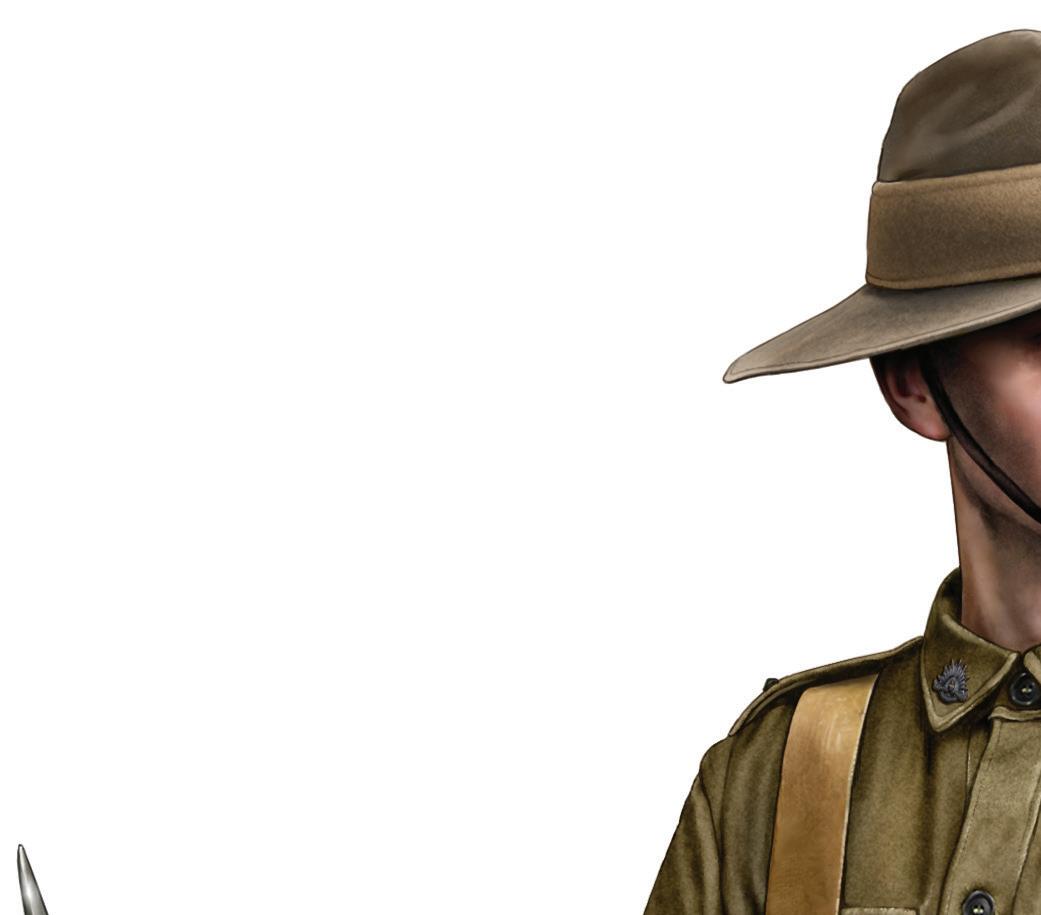

Rations On average, 30 kilograms of rations would be carried. The most common foods were bully beef, hard biscuits, tea, sugar and beef cubes. Soldiers also carried firewood and spare clothes.
Rifle The Lee Enfield rifle was wielded by the infantry, while officers carried small revolvers.


Epaulettes to steady straps

Uniform Khaki helped the Anzac troops stay concealed in the heat of the Turkish sun.
Magazine for bullets
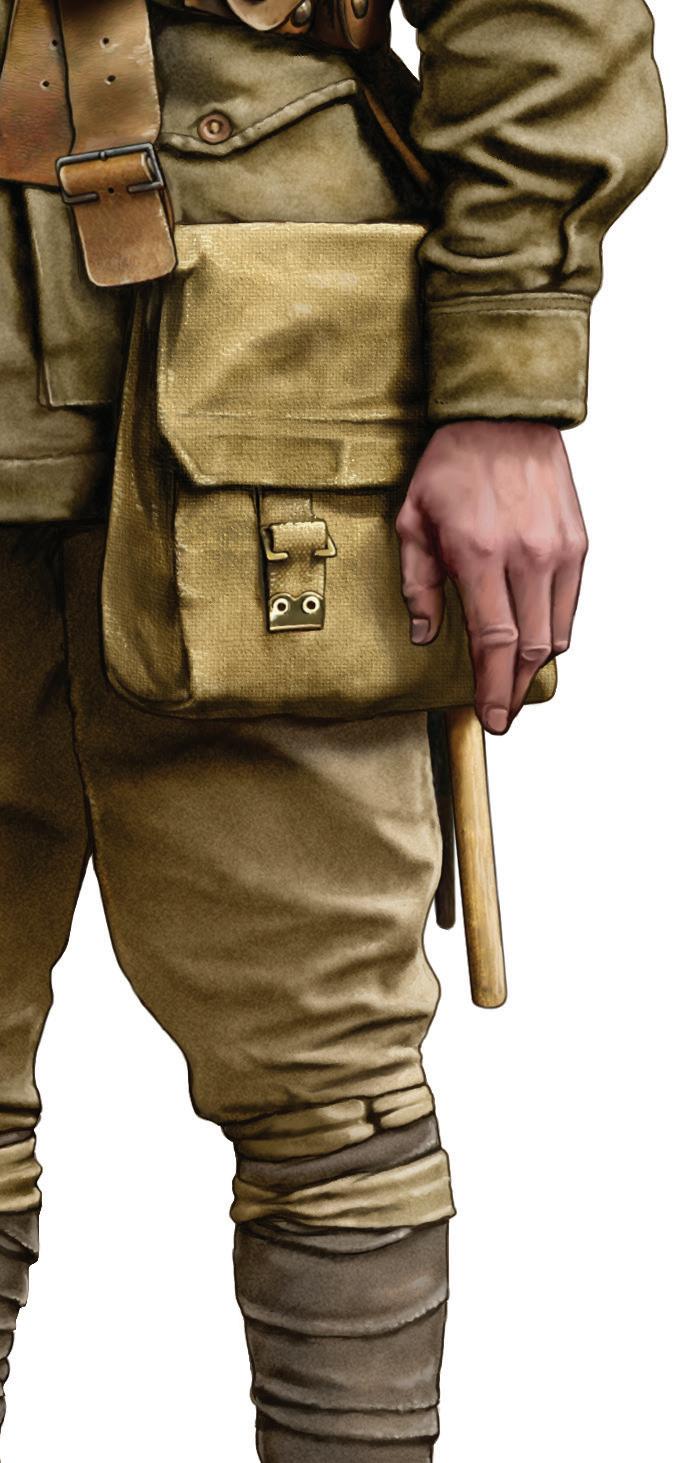

Equipment A standard Anzac soldier would carry on their Sam Browne belt: a revolver holster, ammo pouch, sword frog, compass, binoculars, map case, shovel, haversack and water bottle.

Of all the places Australians fought, Gallipoli stands largest in the public’s imagination. Prime Ministers travel there on Anzac Day, and thousands of Australians have followed them. In other parts of the world, many people have never heard of Gallipoli, while others ask in amazement why we so enthusiastically commemorate such a tragic and pointless military defeat. The real place of Gallipoli is shrouded with both respectful memory and a certain amount of myth. Historians – keen to get our national history right – work hard to maintain the memory and the respect, but also to correct the myths. Our greatest duty to the men and women who served there is to find out what they really went through.
Why was an Allied invasion of Turkey necessary?
As war approached in 1914, both sides assumed and hoped that Turkey, then known as the Ottoman Empire, would stay
neutral, because its military power was weak. One of its main military and political leaders, Enver Pasha, decided otherwise. On 2 August 1914, he made a secret agreement allowing the Germans to sail battleships into the Dardanelles waterway and to anchor near Constantinople (the modern city of Istanbul). The Germans then closed the waterway with mines, and proceeded to shell Russian naval bases to prevent any supplies reaching Russia by sea. Russia could no longer export (sell) its products such as wheat or oil. More importantly, it could not be supplied with the crucial ammunition it needed for the war. The Allies – Britain and France –understood how much this would weaken Russia’s war effort, and declared war on the Ottoman Empire.
Winston Churchill’s plan for a naval attack on the Dardanelles
By late 1914, the war had settled into a stalemate. Commanders wondered how to break the deadlock of the trenches. In December, Britain’s War Cabinet
considered pressuring the enemy by attacking some point in the Mediterranean area. Russia then requested that the Allies attack Turkish forces in the area, to assist Russian troops defending their territory.
A young Winston Churchill suggested a bold plan to sail battleships into the Dardanelles waterway and blow up the fortresses there. While it was certainly important to reopen the Dardanelles waterway, the plan had its weaknesses. Historian Dr Martin Ball reminds us that mistakes were made: the British minesweepers (ships used to remove mines), for example, were not powerful enough to go against the strong current in this body of water. In addition, Churchill might have underestimated the Turkish navy and the fortress defences, expecting that the mighty British navy could easily defeat that of an inferior power: after all, they were not fighting the mighty German navy. This plan ended in disaster, as

several ships hit mines, and the attack was called off on 18 March 1915.
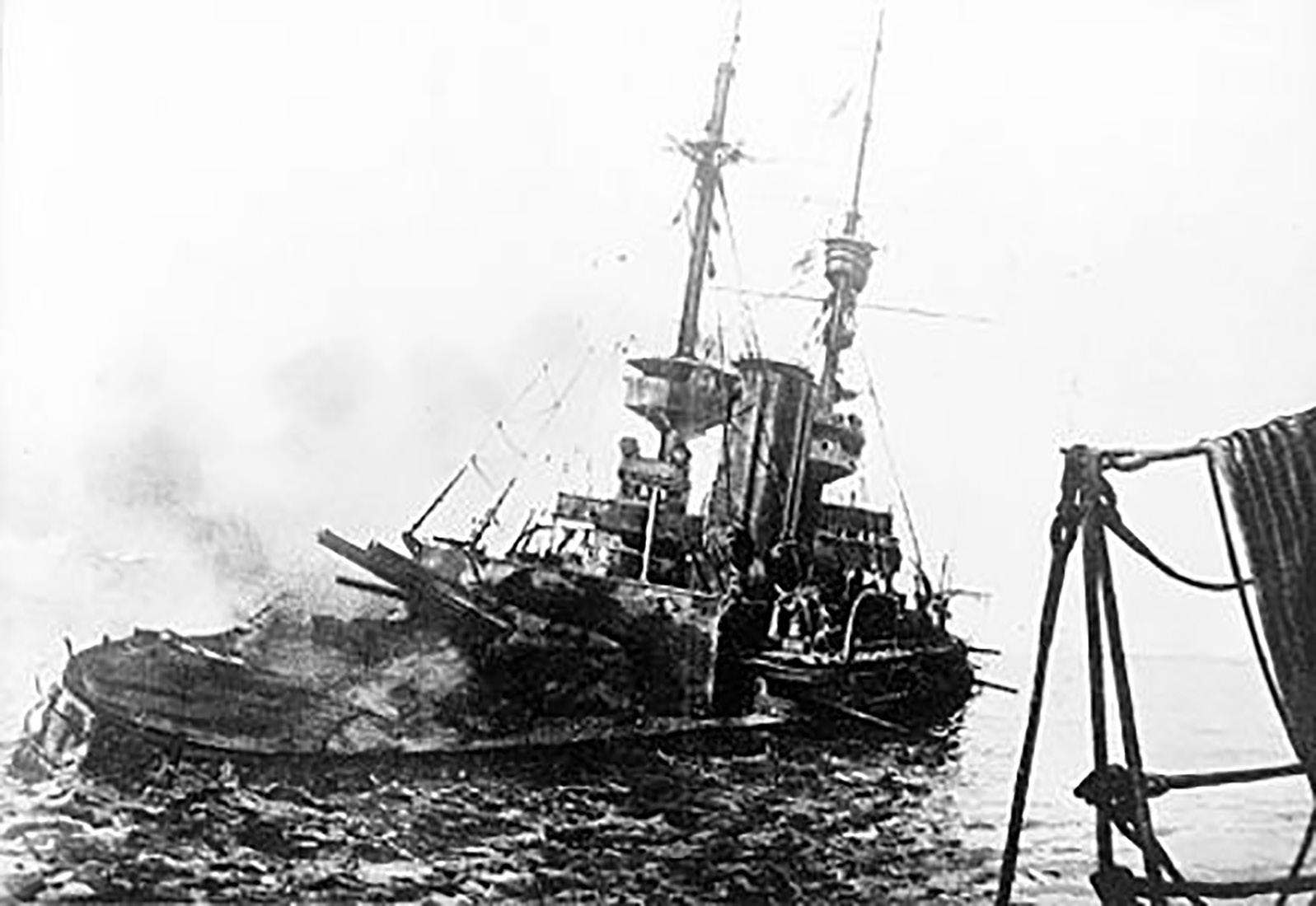
The British navy demanded army support in future attacks. The commander of the Mediterranean Expeditionary Force, General Sir Ian Hamilton, hastily planned a land invasion for 25 April 1915. It is sometimes assumed that Winston Churchill was also responsible for the second disastrous plan, the landing of British, French and Australian troops on the Gallipoli Peninsula. This is incorrect. Churchill was angry and alarmed when he heard that a plan was being drawn up in haste for such a dangerous landing.
He was wrongly blamed for its disastrous failure. Numerous Members of Parliament, especially from the Conservative Party, blamed him for both failures, and insisted that the government demote him from First Lord of the Admiralty.
General Hamilton’s plan for a quick campaign
General Sir Ian Hamilton assigned the landing places according to the difficulty of each location. Contrary to myth, he did not throw the fresh Australian troops at the hardest point of landing. He assigned his own experienced, hardened troops of the 29th Division to the most difficult landing at Cape Helles. He correctly judged the Anzacs to be less experienced, and gave them the supposedly easier landing at Gaba Tepe Headland. A small French army was assigned another landing. Hamilton expected rapid victory, and promised to capture the Turkish capital in three weeks. He therefore only ordered supplies of food and ammunition for a short campaign. Expecting a small casualty rate of about 3000 men only, he ordered few doctors, nurses or medical supplies.
The commander of the Anzac forces, General Birdwood, first landed 4000 men on Gallipoli at dawn, making the Australians the first to land. These 4000 men were to secure the coast as far as the third ridge, and then cover the landing of the rest of the Anzac forces. Small steamboats towed lines of lifeboats from the battleships towards the shore.
It is unclear what went wrong. Some believe that the captains mistook a small headland for the larger Gaba Tepe headland. Others believe that strong currents swept the boats off course. Whatever the cause, they landed 2 km away from the site that Hamilton had carefully chosen. Tragically, this placed them right amid the Sari Bair hills, an impossible landscape of steep cliffs to the sea, then ridges and deep ravines.
Using historical sources as evidence
Fortunately, the terrain was so hostile that the Turks thought this was the least likely place to land, and therefore had stationed fewer troops there. This did not take away their advantage, however. As the Australians landed they were met with a hail of bullets, and realised the plan had gone dreadfully wrong. The second group of Australians then landed on the beach now known to us as Anzac Cove.

Source 8.4.11 George Lambert was not personally at the landing at Gallipoli in 1915, and only painted this work some years later, in 1920–22. He spent six weeks at Gallipoli after the war, carefully studying the site and the battlefields there and made many sketches that he then used to do this painting when he came back to Australia.
1 Describe this source. Who created it, and when was it created?
2 How accurate do you think this source might be as a depiction of the Anzac landing?
3 What does this source tell you about the conditions at Anzac Cove?
Key concepts: sources, evidence, contestability
HASS skills: questioning and researching, analysing, evaluating, communicating and reflecting
One soldier vividly described the dangerous advance onto the beach:
Now we have commenced up those steep cliffs, parts of which one has to almost pull himself branch by branch, in many places to fall back again. We are near them now, only fifty yards away, then a roar and a yell as we are charging at them. On and on, up those awful cliffs and through the dense scrub, where every few yards a Turk jumps out with his bayonet ready …
Another Anzac soldier recalled:
Then [the firing] opened out into a terrific chorus. The key was being turned on the lock on the lid of hell. Some men crouched in the crowded boat, some sat up nonchalantly, some laughed, while others cursed with ferocious delight.
Source 8.4.13 Extract from an anonymous Gallipoli diary, quoted in Bill Gammage, The Broken Years: Australian Soldiers in the Great War, 2010, p. 65
Western Australian soldier, Bert Facey, remembered that landing, when they first discovered the cleverly hidden Turkish snipers. He wondered why some of the advancing Australian troops had been shot in the back, seeing the Turkish troops were in front of them:
Our casualties were heavy. We lost many of our chaps from snipers and found that some of these had been shot from behind. This was puzzling, so several of us went back to investigate, and what we found put us wise to one of the Turks’ tricks. They were sitting or standing in bushes, dressed all in green – their hands, faces, boots, rifles and bayonets were all the same colour as the bushes and the scrub. You could walk close to them and not know. We had to find a way to flush the snipers out. What we did was fire several shots into every clump that was big enough to hold a man. Many times after we did this the Turks jumped out and surrendered or fell out dead.
Source 8.4.14 A.B. Facey, A Fortunate Life, 1981, p. 325 ➜

hiding place, and then shot them from behind.
‘[Turkish snipers] were sitting or standing in bushes, dressed all in green – their hands, faces, boots, rifles and bayonets were all the same colour as the bushes and the scrub.’
Source 8.4.16 Bert Facey, Anzac soldier at Gallipoli
Historian A.K. Macdougall contends that the first day included some of the most savage fighting in the conflict. The Turks were commanded by the brilliant officer Kemal Ataturk, who later founded the Republic of Turkey, while the soldiers fought with enormous courage to defend their homeland. Turkish officers quickly moved more troops up to the area. The Australians were caught in a hailstorm of bullets, grenades and shells. Their officers were often killed first, so groups of soldiers struggled forward, unguided, to try to capture the target of the Third Ridge. Ataturk himself led his own regiment against the Australians – whom he called ‘the English’ – and threw them right back towards the beachhead.
By nightfall, the Anzac forces had suffered 3000 casualties (dead or wounded), and the remaining troops were barely clinging to the First Ridge.
Instead of commanding seven kilometres of soil, the Anzacs commanded just one kilometre. General Birdwood informed the commander, General Hamilton, that his troops were trapped and might have to be evacuated; Hamilton ordered him to dig in and hold his ground at all costs. After five days, the Anzacs had suffered a staggering total of 8000 casualties (dead and wounded), while the British suffered 5000.4
What were conditions like at Gallipoli?
The conditions at Gallipoli were some of the harshest any soldiers could experience. One English reporter wrote: ‘The Australians are in the most extraordinary position an army has ever found itself, clinging as they are to the face of the cliff’ (Ellis Ashmead-Bartlett, quoted in A.K. Macdougall, Gallipoli and the Middle East, 2004, p. 15). The area in
which the 40 000 troops had to live was very small: 162 hectares of land – not much bigger than a modest dairy farm back in Australia.
The terrain was very steep. The daily act of carrying heavy cans of water and crates of food and ammunition up to the top of the ridge was utterly exhausting, and was harder work than fighting in the trenches. In particular, there was not a single source of natural water at Anzac Cove. It was brought by ship in barrels, then put into metal cans and carried by men or mules up to the troops. Water became a precious and scarce resource, and this made both washing and hydration against extreme heat very difficult.
The army never mastered the basic skill of building adequate toilets, so soldiers used tin cans instead. Some 50 per cent of Anzac deaths here were not from Turkish bullets, but from disease.
Evidence has emerged that some 50 First Nations Peoples fought at Gallipoli, and that 13 of them died there. Official documents did not record their ethnicity, and no photographs of these men have survived. These men remain among so many unacknowledged heroes.5 Amazing but true…
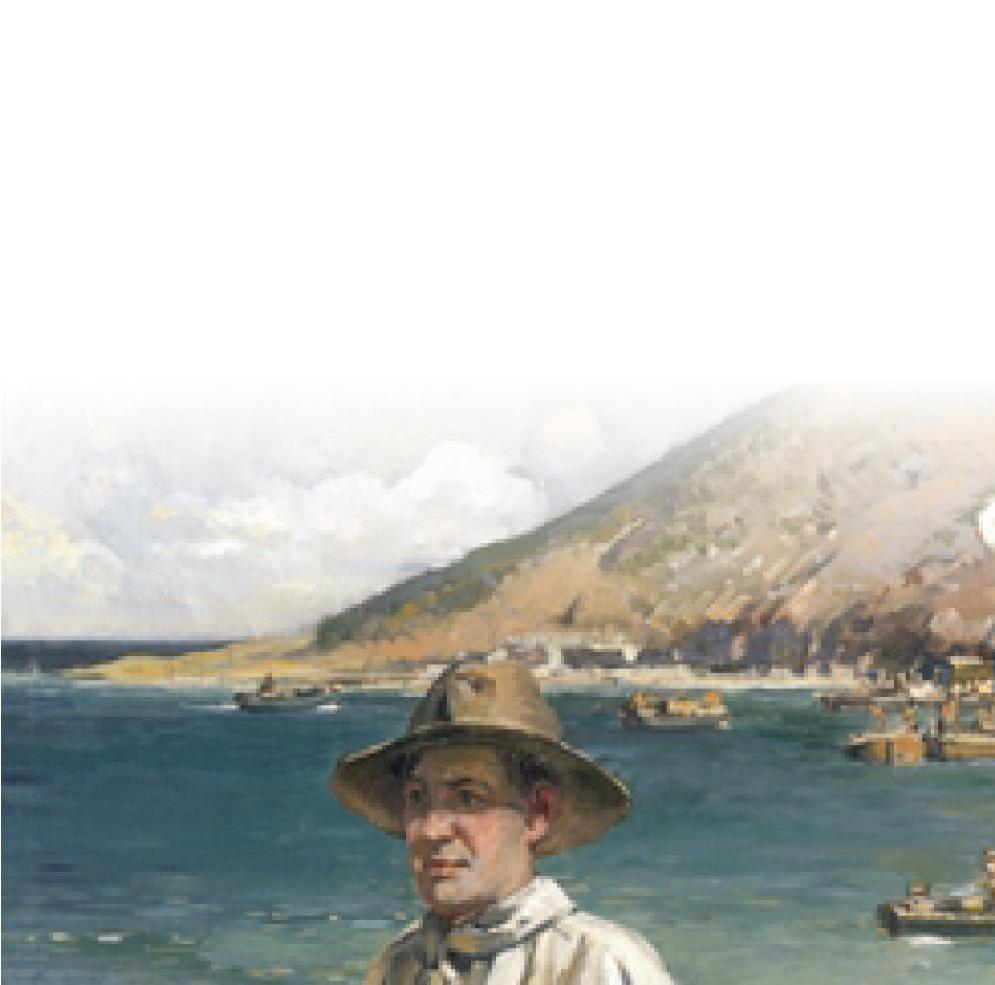


5 To find out more about Aboriginal soldiers at Gallipoli, Google ‘SBS News 50 Aboriginal soldiers at Gallipoli’.
Source 8.4.18 Frank Crozier, The Beach at Anzac, 1918. Crozier painted this large scene after the war, but he did serve in Gallipoli in 1915, and also on the Western Front in Europe, where he witnessed the Battle of Pozières. Of all the artists of the AIF, he had the greatest direct experience of battle conditions.



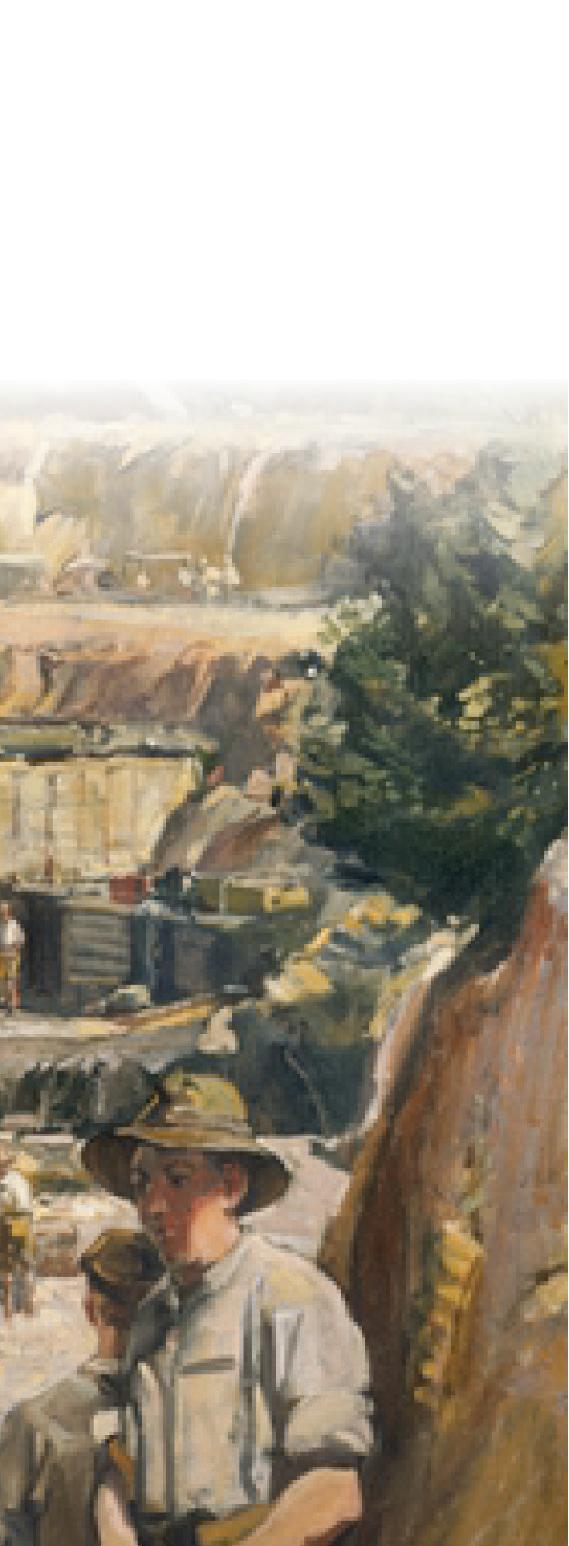
The situation at Gallipoli met almost every criterion for a military disaster. The Turkish troops were already dug in, commanded high ground and had cut down all trees to allow for a murderous sweep of machinegun fire. They were highly trained, and were lucky to have short lines of supply from their base. They also felt they were defending their own homeland against foreign invaders.
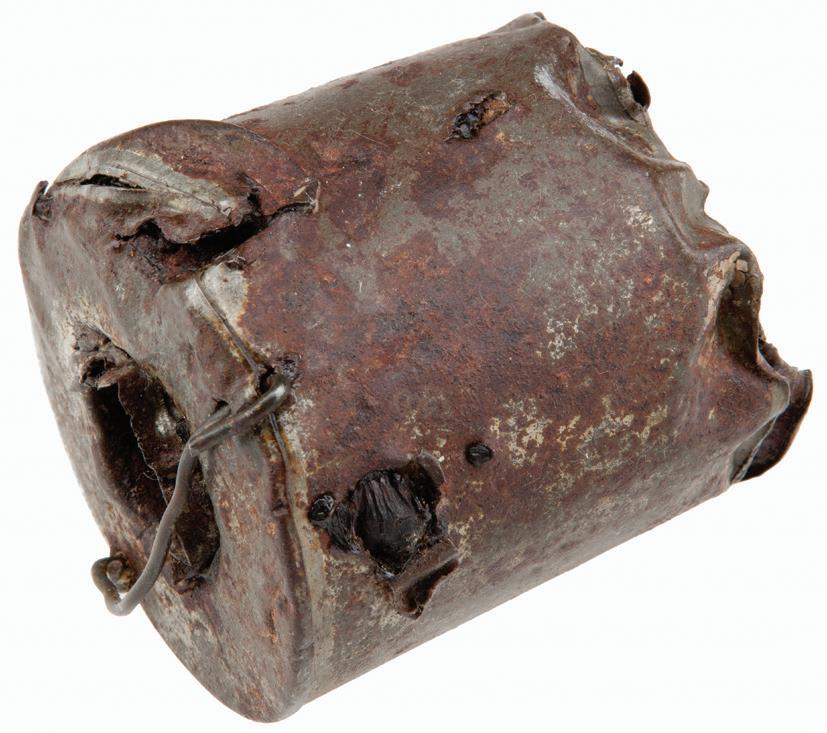
At Gallipoli, Australian troops, like the British and French, showed great resilience. For example, while the Turks had plenty of hand grenades provided by Germany, the Anzacs had fewer. All ammunition came by ship from Australia. Not dismayed, the Anzacs set up a ‘bomb factory’, making crude bombs out of tin cans filled with explosives, shrapnel and a fuse threaded through a hole in the top of each can.
Gallipoli is also known for the savagery of the battles fought there.
We are well aware of the massive Australian casualty rate at Gallipoli, but we must also bear a thought for the enemy. In the Battle of Anzac (19 May 1915), for example, some 42 000 Turks attacked en masse, simply charging straight into Australian machine guns. At that time, there were only 1700 Anzacs on duty, but they were dug in and ready for the attack.
The Turkish troops fought bravely and fiercely. Their German allies supplied them with plentiful bullets, artillery shells and hand grenades, so they could exert constant pressure bombarding the Australian trenches. On occasions, hand grenades fell like rain into the Australian trenches; men who were good cricketers specialised in catching the grenades and bowling them back at the Turks. The Turks then delayed throwing the grenades after pulling the pin, so that they were ready to explode just as the Australians caught them. Many a fine sportsman died trying to defend his fellow soldiers.
The Turks also had expert snipers who could pick off any soldier who carelessly showed himself above the trenches. Australian troops quickly learnt to use a periscope to observe the Turkish front line, and to locate possible snipers.
At first, soldiers reported a fierce delight in mowing down rank after rank of Turkish soldiers. As the battle wore on, and the Turks suffered 10 000 casualties, delight turned to distaste: for professional soldiers, battle is one thing, but mindless slaughter is another.
In the end, the Anzacs could not bear hearing the cries of hundreds of wounded Turks dying slowly in the hot sun, and arranged a ceasefire and actually helped the Turks carry away the wounded and dead. This loss must have been a national trauma for Turkey and meant heartbreak for thousands of families. Ataturk never repeated this costly attempt to drive the Anzacs from the shore.
The Australian forces had their own turn to attack in the summer offensives of mid-1915.
In the Battle of Lone Pine (6–9 August 1915), the Australian First Brigade from New South Wales attacked Turkish positions, and met fierce opposition. They charged late in the afternoon, so the low sun was shining in the eyes of the Turks. The Anzacs quickly gained the front trenches, then spread out through the communication trenches. Both sides struggled in murderous hand-to-hand fighting with bayonets and hand grenades for three days.
When the battle ended, the Anzacs had suffered over 2000 casualties, the Turks an even more tragic 6000.6 The Anzacs captured and held the site. In all, seven Australians received the Victoria Cross for bravery in this savage fighting. The battle took place in the area now occupied by the Lone Pine cemetery.
One important success at Gallipoli: the silence ruse
One of the best examples of the Australian spirit was the evacuation of the Anzac sector on 15–19 December 1915 employing the silence ruse. All military retreats are dangerous, because a departing army can be suddenly attacked from behind by the enemy and suffer massive casualties. However, by the inspired orders of General Sir Brudenell White, the Australian army was able to make a retreat without any serious losses.

This had to be managed carefully. First, White ordered that Anzac troops stop using artillery or snipers, to create the impression that action was being reduced in preparation for winter. This was so the Turks would not be suspicious as the troops withdrew. Second, the Australian troops heard rumours of a retreat, and were not happy. White announced that they were just going to Lemnos in Greece for rest leave. The troops were resentful when they heard that the dead soldiers would be left behind in their simple graves.
On 15 December, the first of 36 000 Anzac troops were withdrawn, continuing over five nights. Nothing was left behind; all spare ammunition was destroyed. The first to go were the low-level service troops and reserve troops, leaving the battle troops to keep fighting. The fighting troops departed next, leaving only the machine-gunners on duty to come away last.
By 19 December, only 10 000 troops were left on Gallipoli, and the Germans and Turks still suspected nothing. White insisted the entire retreat must be carried out in complete silence, as the Turkish trenches were so close that the enemy could hear the give-away sounds of an army departing. Thus, the horses were well fed with fodder so they would not neigh due to hunger. The men were ordered to speak only in low tones. Even the wheels of the carts were greased so they would not make a sound.
White still faced the problem of potential gunshots from sentries throughout the night, and concerns the Turks would notice if the Australian positions suddenly fell completely silent. The solution was the ultimate in Australian bush inventiveness.
The Australians set up a number of loaded rifles, held in place by sandbags. They then tied a piece of string to each trigger, and onto it they attached an empty bucket. Above that, they suspended a bucket full of water, with holes in the base. The water in the perforated can dripped water into the second can below and, when the second bucket gained enough weight of water, it pulled on the trigger.
To make sure that the rifles fired randomly at different times, the Anzacs drilled some buckets with larger holes, so that these cans filled more quickly and fired earlier, while others were drilled with smaller holes, so that the rifles fired later, during the small hours of the morning.
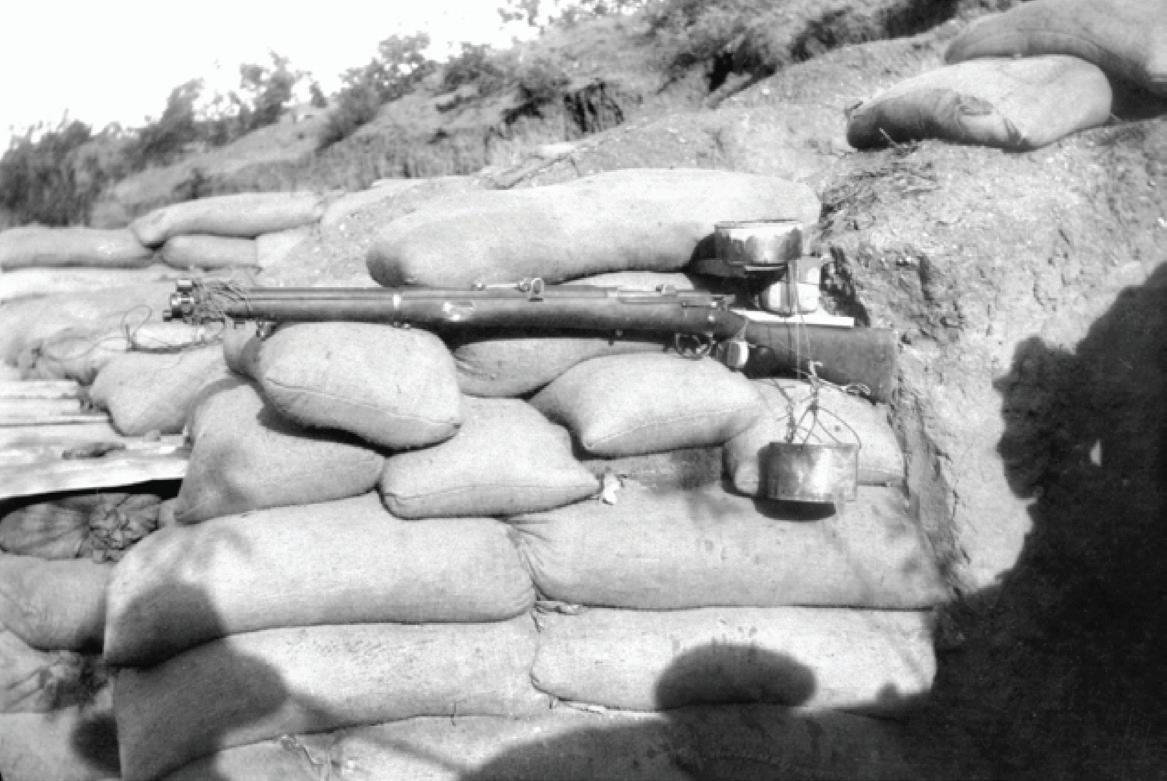
One Anzac sergeant wrote:
Hearts wrung by the sacrifices made and the irreparable loss of many of the brightest and best of our young nationhood, thousands of us said a sad farewell to those lonely graves on rugged Gallipoli.7
While Gallipoli was a defeat in military terms, its ending was a triumph of intelligent management. Some 10 000 Anzac troops had been killed in the fighting, but not a single soldier of the 105 000 surviving troops was lost. In addition, the army saved 300 valuable field cannon for later use on the Western Front.
7 Anzac diary online.
Source 8.4.22 Anzac sergeant in a diary ➜
Anzac chaplain Walter Dexter was given the task of mapping the graves of the thousands of dead soldiers. He wrote:
I went up the gullies and through the cemeteries, scattering silver wattle seed. If we have to leave here, I intend that a bit of Australia shall be here.
Source 8.4.23 Walter Dexter, quoted in Australian Turkish Friendship Memorial Sculpture, I Went Up the Gullies and Through the Cemeteries, 2019
Australia’s involvement in Gallipoli is probably the best-known of our nation’s actions in World War I. In recent years, Gallipoli has become the most intensely beloved action of World War I in the public’s mind, as Kokoda is for World War II. Each year, thousands of Australians make a pilgrimage (respectful journey) to Gallipoli, and stand in the chill dawn of Turkey, deeply moved by the memory of the Australians who fought bravely there. Gallipoli was a military defeat, and some people complain that we remember this defeat with such intensity and forget Australian victories such as the Battle of Beersheba. Others argue that this ‘defeat’ was actually an achievement of extraordinary courage and perseverance under almost impossible conditions, and reflected well on the sheer bravery and tenacity of Australian and other troops.
What is the link between the film Gallipoli and Western Australia?
Peter Weir’s 1981 film Gallipoli, starring a young Mel Gibson, is how many Australians imagine conditions in World War I. But did you know that the film was inspired by two brothers from Guildford, Western Australia?
The climactic scene of the film is based on the charge at The Nek, on the Gallipoli Peninsula on 7 August 1915. This disastrous attempt to reach Turkish trenches cost the lives of 234 Australians, with many others wounded. War correspondent and historian Charles Bean described this action in his 1921 official history, and refers to the two brothers:
Men known and popular, the best loved leaders in sport and work in the West, then rushed straight to their death. Gresley Harper and Wilfred, his younger brother, the latter of whom was last seen running forward like a schoolboy in a foot-race, with all the speed he could compass…
Source 8.4.24 Quoted in A.W. Jose (1921). Official History of Australia in the War of 1914–1918. Sydney: Angus & Robertson.
It was this quote from Bean that inspired the character of Archy Hamilton in the film, who was played by actor Mark Lee.
Gresley and Wilfred were the sons of Charles Harper, an agricultural scientist, Member of Parliament and newspaper owner. Charles built his family home, Woodbridge, on the Swan River at Guildford. The two men enlisted on the same day in October 1914, joining the 10th Light Horse Regiment and sailing for Egypt in February 1915. Their younger brother, Prescott, enlisted in 1917.

From Egypt, the brothers were sent to Turkey, and fought for two months before the charge at The Nek. After a barrage of shells from an offshore naval vessel finished earlier than expected, three waves of Australian soldiers were ordered to leave their trenches and attack the Turkish lines. It was a hopeless advance and casualties were high. Gresley and Wilfred were struck down in the third wave and their bodies were never recovered. Today, they are commemorated at the Lone Pine Memorial, and remembered every Anzac Day with services at Woodbridge, which is now a National Trust property.
Analysis questions
Source 8.4.25 Mel Gibson in the 1981 Australian film Gallipoli ➜
1 Research The Nek using the Australian War Memorial’s website (search for ‘Charge at The Nek’).
a What was the aim of the fighting at Gallipoli? What did the allied command hope to achieve at The Nek?
b Why did the charge fail? Who would you blame for this failure?
c What does this event suggest about the use of soldiers in WWI? Would you join up to fight in such a war?
2 Read the accounts of Gresley and Wilfred Harper at the following weblinks for the Virtual War Memorial Australia and Guildford Anzacs websites:
• https://cambridge.edu.au/redirect/11242
• https://cambridge.edu.au/redirect/11243
• https://cambridge.edu.au/redirect/11244
• https://cambridge.edu.au/redirect/11245
a What were the backgrounds of the two men before they enlisted for war? Why were they so admired in the army?
b In general, why were the Australian soldiers suited to war in the Middle East and Turkey?
3 Search online for the article ‘Brothers’ loss resonates through the ages’, published in The Western Australian. Read the article and answer the following questions.
a What connection do the Harpers still have with Western Australia?
bDescribe the commemorations that were held in Guildford on the 100th anniversary of the Gallipoli campaign.
c Why has World War I continued to be commemorated in Australia after 100 years?
Key concepts: cause and effect, significance
HASS skills: questioning and researching, analysing, evaluating

Source 8.4.26
Video: The Australian Light Horsemen
In the Middle East, Australians were part of the British Empire force that fought the Turkish army, which was assisted by German officer-advisers. In 1916, the challenge was to capture the heavily fortified town of Beersheba, to break all the other German defences.
The Australian commander was concerned that the Turks were heavily dug-in at Beersheba, and backed by heavy artillery and machine guns. A charge over open desert would slaughter his troops. He had a simple, but brilliant, idea. He realised that the Germans, expecting the usual attack, would already have set their guns to fire at a certain range – that is, exactly the point at which the Light Horsemen usually dismounted. It would not be easy to quickly rewind the guns to change their range. He therefore
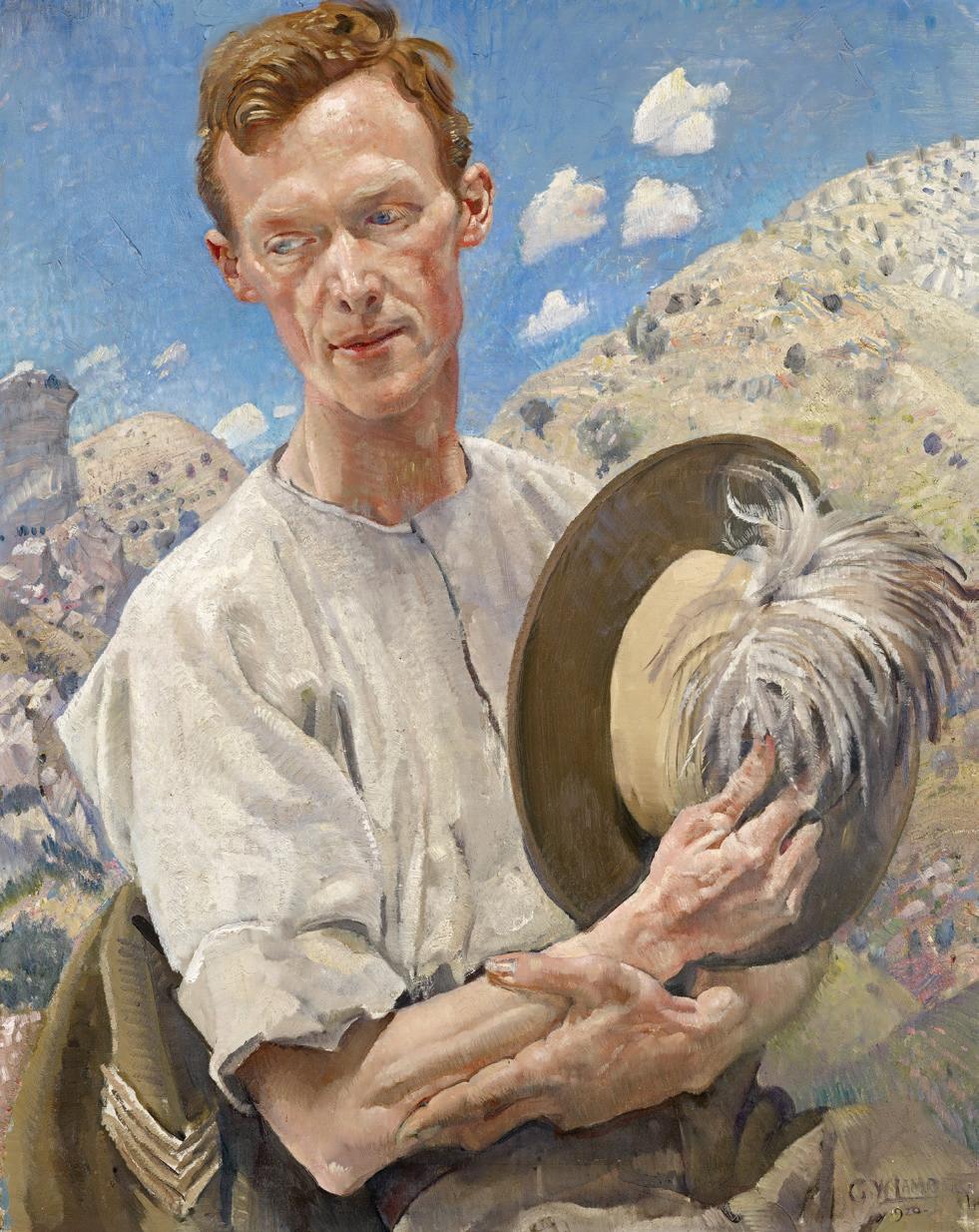
ordered his troops to charge, galloping at high speed like cavalry, and to use their bayonets like swords. The attack was so quick that the German guns were ineffective, and the Australians captured Beersheba with few casualties.
Source 8.4.27 The Australian forces were technically called the ‘Light Horse’, meaning they were actually infantry who rode up to the enemy on horseback, dismounted, and then attacked on foot. They differed from cavalry, which always attacks on horseback. This painting by George Lambert shows the uniform of the Light Horse. Their slouch hat has the distinctive symbol of the cluster of feathers, which is absurdly called ‘Kangaroo Feathers’.
The Australian action at Gallipoli stands larger in our national memory than any other campaign in World War I, and yet Australia’s actions on the Western Front in Europe were of greater scale and of larger importance to the war. Military historian Robert Fleming writes: ‘Although Gallipoli is often described as Australia’s ‘baptism of fire’, it would pale in comparison to what the Diggers were to experience on the Western Front’ (Robert Fleming, The Australian Army in World War I, 2012, p. 20).


Source 8.4.28 The principal battle areas of the Western Front where Australians fought between 1916 and 1918
The French village of Pozières was the scene of a savage battle that completely destroyed the village and killed many of the British and Australian troops holding it against the German counter-attack. The name Pozières still strikes a chill in our national memory because this place was, as Charles Bean put it, ‘more densely sown with Australian sacrifice than any other place on earth’.8
Australians were among the troops sent to capture this village, which was valuable because it was on a high ridge overlooking the battlefields below. The Australians of the 1st, 2nd and 4th Divisions made a total of 19 attempts over 42 days to capture the site, and suffered a devastating 23 000 casualties (killed,
wounded or captured). In just the first day of the attack, the Australian 1st Division suffered 5285 casualties.
The heavy losses were partly due to the Australians’ early success in capturing the village. Having taken Pozières, they discovered that they were almost completely open to bombardment from German artillery. The German guns began pounding the village to rubble, and there was literally no shelter in which to hide. One Australian officer recalled walking past and seeing a group of five Australian soldiers sitting at a table in the open, calmly playing cards as German shells rained down around them. When the officer returned later, the same men were slumped in their chairs, dead, having played their card game until, inevitably, a German shell finally hit them.
8 To find out more about Pozières, visit ABC News and search for ‘Fromelles and Pozières: A look back at two of Australia’s bloodiest WWI offensives’.


This occurred at the same time as the French were facing a massive German attack nearby at Verdun, and as the British were also facing attack at the Battle of the Somme. The men who survived this slaughter came away deeply shocked by what they had been through. One observer noted:

Source 8.4.32 Video: Artillery in World War I
Additional content available: Worksheet on artillery in World War I
not achieve any goal whatsoever – apart from briefly confusing the Germans –and no land was captured. The Battle of Fromelles remains the worst oneday disaster, statistically, in Australian military history.
The Australian diversionary attack at Fromelles
They looked like men who had been in Hell … drawn and haggard and so dazed that they appeared to be walking in a dream and their eyes looked glassy and starey.
Source 8.4.31 Quoted in C.E.W. Bean, The Australian Imperial Force in France: 1916. Official History of Australia in the War of 1914–1918, Australian War Memorial, Canberra, 1941 [1929], p. 599
Australia’s
greatest military disaster: the Battle of Fromelles
For military historians, the name of the Battle of Fromelles is also a chilling one, because it was, for Australia, one of the most tragic and wasteful battles of the Western Front. In just 24 hours, 5533 Australian soldiers would be dead, wounded or missing. In all, 1719 Australian troops were killed. Another 470 were taken prisoner. The attack did
At this time, the British forces were planning their great attack of the Battle of the Somme, which they hoped would finally break through the German lines. They ordered Australian forces to attack nearby, near Fromelles, to create a diversionary attack (fake attack) to confuse the Germans as to where the real attack was. The Australian commanders warned the British generals that this was too dangerous a place to attack but, nonetheless, three brigades of Australian troops were ordered to attack a heavily defended German position, across open land. The German positions were on the slight rise of Aubers Ridge, some 40 metres high, from which the Germans had a vantage point over all the Australian troops.
A young corporal named Adolf Hitler was in a concrete blockhouse during this battle. You will learn much more about Hitler if you study History in Year 10.
The 5th Australian Division consisted of 12 battalions of troops who had only a few weeks’ training and were not battlehardened. The Australian and British attack began at 6 p.m., so they were attacking in full summer daylight. Heavy bombardments had not destroyed the German defences, which now gave heavy fire. The Australian troops had to run across 80–400 metres of open ground in full view of machine-gunners. The German machine-gun fire was so intense that whole lines of men were mown down. Some men were cut in half by the bullets. The entire 15th Victorian brigade was cut down in the first 15 minutes of the battle. Sergeant Jimmy Downing recalled: ‘Hundreds were mown down in the flicker of an eyelid, like great rows of teeth knocked from a comb. It was all over in five minutes’ (Sergeant Jimmy Downing,
quoted in Ashley Ekins, ‘The Battle of Fromelles’, Wartime, Issue 44, 2008).
Most bodies recently found at Fromelles still have pouches full of ammunition, suggesting these soldiers barely lived long enough to fire a shot. The men who survived were ordered to move forward and to capture the single German line. The Germans had built a line of earth embankments, not trenches, because the ground there was waterlogged. The Australian troops got lost in the landscape and became separated. During the evening, they huddled in small groups in craters, while the German troops returned from their fortified ridge and surrounded them. The slaughter is remembered as the greatest loss by any one division in a 24-hour period during the entire war.


Activity 8.3
There are thousands of letters, diaries and memoirs surviving from the battlefields of World War I, of which the most famous is the German soldier’s account by Erich Maria Remarque, All Quiet on the Western Front (1929). Among the many memoirs by Australian troops, one of the most detailed, convincing and terrifying accounts is Walter Hubert Downing’s To the Last Ridge.
This work qualifies as a primary source, because it was written by a witness who was actually fighting in the trenches, and who wrote down his recollections shortly after the event, when we might expect his recollection to be quite accurate. He probably wrote quite detailed notes while at the Western Front, and then wrote them up into book form when he returned to Melbourne in 1918. The book was published in 1920.
Downing records that the mud of the trenches was already full of the bodies of soldiers who had been killed before he arrived:
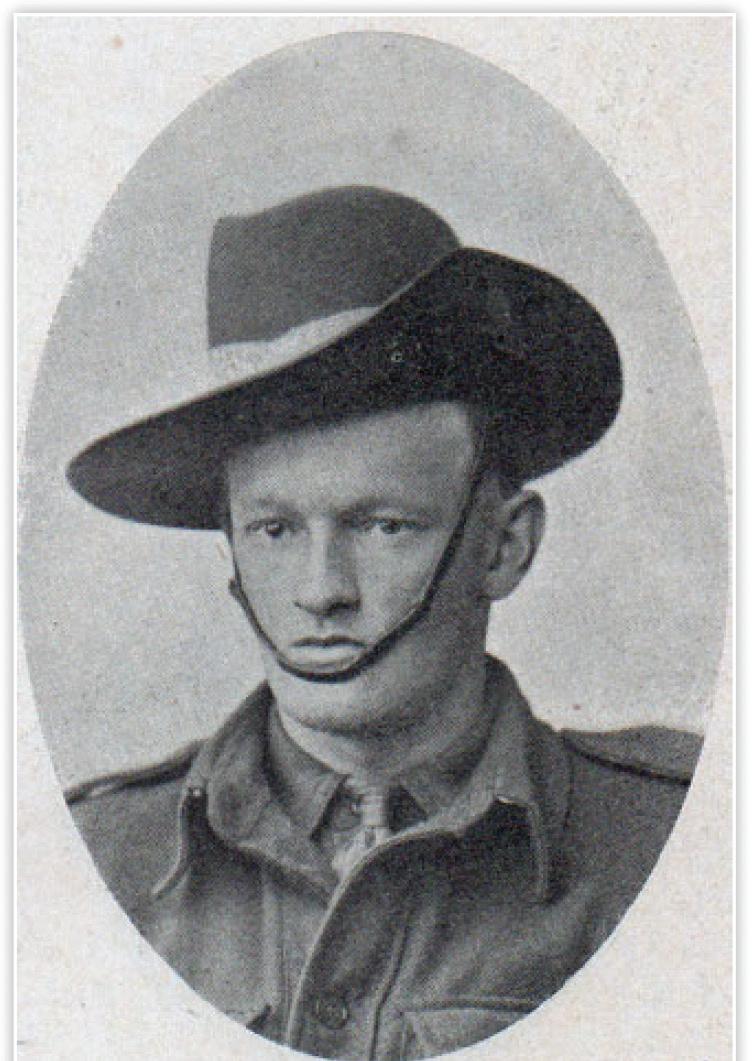
The dead lay everywhere. The deeper one dug, the more bodies one exhumed [dug up]. Hands and faces protruded from the slimy, toppling walls of trenches. Knees, shoulders and buttocks poked from the foul morass. Here had been a heavy slaughter of English lads four days before … There were also German dead, but it was hard to tell them from the rest, for khaki is grey when soaked and muddy.
Downing confirms from his direct experience that the Australian troops literally walked out into the open ground of no man’s land and straight into machine-gun fire, which cut them down in their hundreds:
The 60th [regiment] climbed on the parapet [front wall of the trench], heavily laden, dragging with them scaling ladders, light bridges, picks, shovels and bags of bombs. There was wire to go through, and sinking ground, a creek to cross, more marsh and wire; then the German line. Scores of stammering German machine-guns spluttered violently, drowning the work of the cannonade [shelling]. The air was thick with bullets, swishing in a flat lattice of death. There were gaps in the lines of men – wide ones, small ones. The survivors spread across the front, keeping the line straight. There was no hesitation, no recoil, no dropping of the unwounded into shell holes. The bullets skimmed low, from knee to groin, riddling the tumbling bodies before they touched the ground. Still the line went on. Hundreds were mown down in the flicker of an eyelid, but still the line went on, thinning and stretching. Wounded wriggled into shell holes or were hit again. Men were cut in two by streams of bullets. Fifty-six remained of a full thousand. It was over in minutes.
Source 8.4.37 Walter Downing, To the Last Ridge, 1998, pp. 8–9 ➜
Downing also joined in smaller attacks called trench raids. He recorded that some men took joy in finally engaging with the enemy and killing him. He also recorded some of the comments made by Germans and Australians in the heat of the killing:
In a few seconds we were through the remnants of the [barbed] wire … There were cries of ‘Share that among you’, as a shower of bombs fell in the trench. The appeal of ‘Mercy kamarad’ [friend, comrade] was dismissed with a curt ‘No kamarad of mine, son!’ or the sardonic ‘You’re just two years late’. Knobkerries [clubs] and bayonets were hard at work. A cry was heard, ‘No, no Englander, I haf seven kinder.’ [children] ‘That’s to make sure you don’t have seven more.’ Crash went a bomb [hand grenade] and vmm-m-m went the fragments … No living thing was left behind us in that trench.
Source 8.4.38 Walter Downing, To the Last Ridge, 1998, p. 34 ➜
Downing is very frank in admitting that, as the cruel winter of 1917 set in, he and his mates began to worry about death, and to doubt their country:
We just go out into the line again and again until we get knocked [killed]. We’ll never get out of this. Just in and out, in and out, and somebody stonkered [killed] every time. Australia has forgotten us, and so has God. I wouldn’t wish my worst enemy to have to put up with this life. But we’ve got to go, and why shouldn’t they too?
Source 8.4.39 Walter Downing, To the Last Ridge, 1998, p. 34 ➜
Responding to the source
Research the life and career of Walter Hubert Downing by examining his war record on the Australian War Memorial website. If possible, read a selection of chapters from Downing’s To the Last Ridge, either from the hard copy book or from an electronic version.9
1 Describe this source. Who created it, and when was it created?
2 Consider the dates of Downing’s service, and evaluate the extent to which you think he is able to give a complete account of all the great battles of World War I.
3 Consider the places and the battles where Downing served and fought. Do you believe that Downing experienced the true nature of the savage fighting of trench warfare in World War I?
4 Read Downing’s description of the trench raid. He often describes how men running into battle experienced a ‘fierce ecstasy’ and enjoyed killing the enemy German soldiers. What are some of the other reactions of men and women placed in such a dangerous situation as war?
5 Downing’s descriptions contain many precise details of the names of shells and bullets, and even of the sound they made. Why was this necessary knowledge for every soldier to survive in the trenches?
Key concepts: sources, evidence, perspectives, empathy, contestability
HASS skills: questioning and researching, analysing, evaluating, communicating and reflecting
Source 8.4.40 On the map above, you can see the line reached by the German Spring Offensive of 1918, and the towns of Villers-Bretonneux and Hamel.
Not all of the Australian actions on the Western Front were as futile as at Fromelles and Flanders. In 1918, Australian troops proved to be vital in halting the last great German offensive of the war at a village called VillersBretonneux. The Germans had hoped to break through the allied line at Amiens, before the bulk of the American troops could arrive in France. Australian forces in Belgium were sent to reinforce the British and, on 4 April, halted the German advance. Using tanks successfully for the first time, the Germans then took the village on 24 April but not for long. The Australian and British brigades recaptured the village that night, and Villers Bretonneux remained in allied hands for the duration of the war.
The next significant success for the Australian forces came in May 1918, at Hamel. The previous year, Australian soldiers had fought bravely but often been defeated by poor planning, problems with British equipment – especially tanks –and a lack of coordination between the infantry, artillery and aeroplanes. In May John Monash was promoted to Major General, and took command of the key Australian forces on the Western Front. In July, he led Australian and American forces in the capture of the town of Hamel, a key strategic location on the Somme. Monash coordinated several different arms of attack, including aerial bombing, tanks, artillery and infantry. His detailed planning included various strategies to protect his advancing infantry from fire and, over a two kilometre stretch of land, the Germans were forced to surrender their positions.
Monash was knighted for his role in the war, and placed in charge of the demobilisation of the army. He later filled many different public positions, and the Monash University in Victoria is named after him. He was described by British Field Marshall Montgomery as ‘the best general on the western front’.
The very nature of World War I – the large number of nations involved, the numerous different fronts, the enormous number of troops participating – made it one of the most complicated wars ever. This meant that the old-fashioned way of writing history was no longer good enough.
CAPTAIN CHARLES (C.E.W.) BEAN

Previously, historians simply described how each battle went; now, the task was more like trying to describe an enormous, moving jigsaw puzzle. The best historians understood that they must write about war in a new way.
Will Dyson: a critic of warfare who volunteered for the Western Front.
For Australia, one of the most significant historians was Sir Charles Bean. Soon after the outbreak of war, he was appointed official war correspondent to the Australian Imperial Forces (September 1914), and served with the rank of Captain in every area where Australian troops fought. He observed Australian troops under fire at Gallipoli, and then on the Western Front in Europe, with the exception of just one battle.
Insofar as he was present to witness events directly, and was specifically required to keep accurate records, Bean is both valuable and reliable as a witness.
Bean’s new style of history was not just detailed: it was much more careful and analytical. He realised that modern warfare is fast-moving and therefore confusing. In particular, communication is difficult, so there are misunderstandings between the troops at the front and other forces, such as the air force and artillery backup. He saw how, in some cases, a simple mistake of a few minutes in the timing of an artillery bombardment allowed the enemy to recover and be ready to kill thousands of troops.
He also realised there was a serious problem in gathering evidence from troops who only saw a small part of the larger battlefield. He could certainly interview men about what they had seen, but their view might be limited, or simply wrong. If the men were still in shock from violent fighting, or shell-shocked by the impact of high explosive, their evidence was even more doubtful. In essence, Bean turned History from being an act of recording to an act of investigation and careful analysis.

Source 8.4.42 Charles Bean (front row, far right) as a war correspondent in France, 1916
Additional content available: Weblinks for this research task.
Cause and effect
Create a timeline of Australia’s involvement in World War I. Be sure to include dates, place names and images to go with your work.
Key concepts: continuity and change, cause and effect, significance
Research task: Captain Albert Jacka
HASS skills: questioning and researching, analysing, evaluating, communicating and reflecting
1 Briefly describe Albert Jacka’s family background and education.
2 Investigate the dangerous conditions that Australian soldiers faced at Anzac Cove during the Gallipoli campaign (1915). What did Jacka do to win the first Victoria Cross (VC) ever awarded to Australian forces in World War I?
3 Investigate the Battle of Pozières on the Western Front (France). Explain why this was one of the most dangerous, and bloodiest, battles fought by Australian troops.
4 Investigate the savage debate about conscription that erupted in Australia during World War I. How was Jacka’s name and fame misused during this debate?

Source 8.4.43
Video: Extracts from The Australians’ Final Campaign in 1918
Additional content available: Worksheet on The Australians’ Final Campaign in 1918
5 Investigate how Australia’s great war historian, Charles Bean, described Jacka’s style of leadership. Why did his men admire him? Why did his superiors dislike him?
6 Investigate Jacka’s leadership skills and explain why an ordinary working man could rise so quickly to become an officer.
7 Investigate the early controversy about the award of the VC to Jacka. Why have some thought this might have been caused by British snobbery towards Australians? What have historians found to be the true cause of this initial refusal?
8 Why did Jacka finally have to leave the Western Front in 1918?
9 How was Jacka greeted upon his arrival back in Australia?
10 Although Jacka is still described as ‘Australia’s greatest front-line soldier’ for his bravery in battle, historians know that he did on occasion make mistakes. In your opinion, does this decrease his standing as a national hero?
Key concepts: sources, evidence, continuity and change, significance, perspectives, empathy
HASS skills: questioning and researching, analysing, evaluating, communicating and reflecting
Section 8.4 review
8.4 Review questions
Recall
1 When and why did Australia fire the first shot in World War I?
2 What were the conditions at Gallipoli that made it so dangerous for Allied troops?
3 How did the Australian Light Horsemen capture the heavily fortified town of Beersheba?
Interpret
4 Why is the Battle of Fromelles remembered as the most wasteful and tragic episode in Australian military history?
Argue
5Explain how historian Charles Bean developed a new and more effective way of writing about the experience of war.
6Explain how one famous painter, photographer or writer used his or her skills to go to the front and record the experiences of soldiers in the trenches.
Apply 8.4 questions
1Investigate the military career of Sir John Monash and decide whether he deserves to be seen as a general who had the creativity and inventiveness to better organise his troops for battle.
Key concepts: evidence, cause and effect, significance
HASS skills: questioning and researching, analysing, evaluating, communicating and reflecting

• Why was World War I quite different from the ‘traditional’ wars of previous centuries?
• What were the special conditions on the battlefields of World War I?
• In what ways did new weapons change the nature of fighting in this war?
War is always, by its nature, violent and destructive. World War I was especially tragic because of the large numbers of people involved and the invention of new and terrible weapons. Some of these weapons, such as artillery and machine guns, already existed, but
were now developed to be even more murderous. Human beings’ ability to kill each other was multiplied a thousandfold. Then, under the pressure of a desperate war that dragged on without victory, further weapons – such as poisonous gas and flame throwers – were invented. These weapons created even more cruel and horrific forms of death on the battlefield.
Source 8.5.1 When people in 1914 thought of war, they pictured heroic charges and glorious victories, for instance as depicted by Lady Jane Butler in her battle paintings. Families admired these works in public art galleries, and schoolchildren gazed at black-and-white reproductions of them on classroom walls.
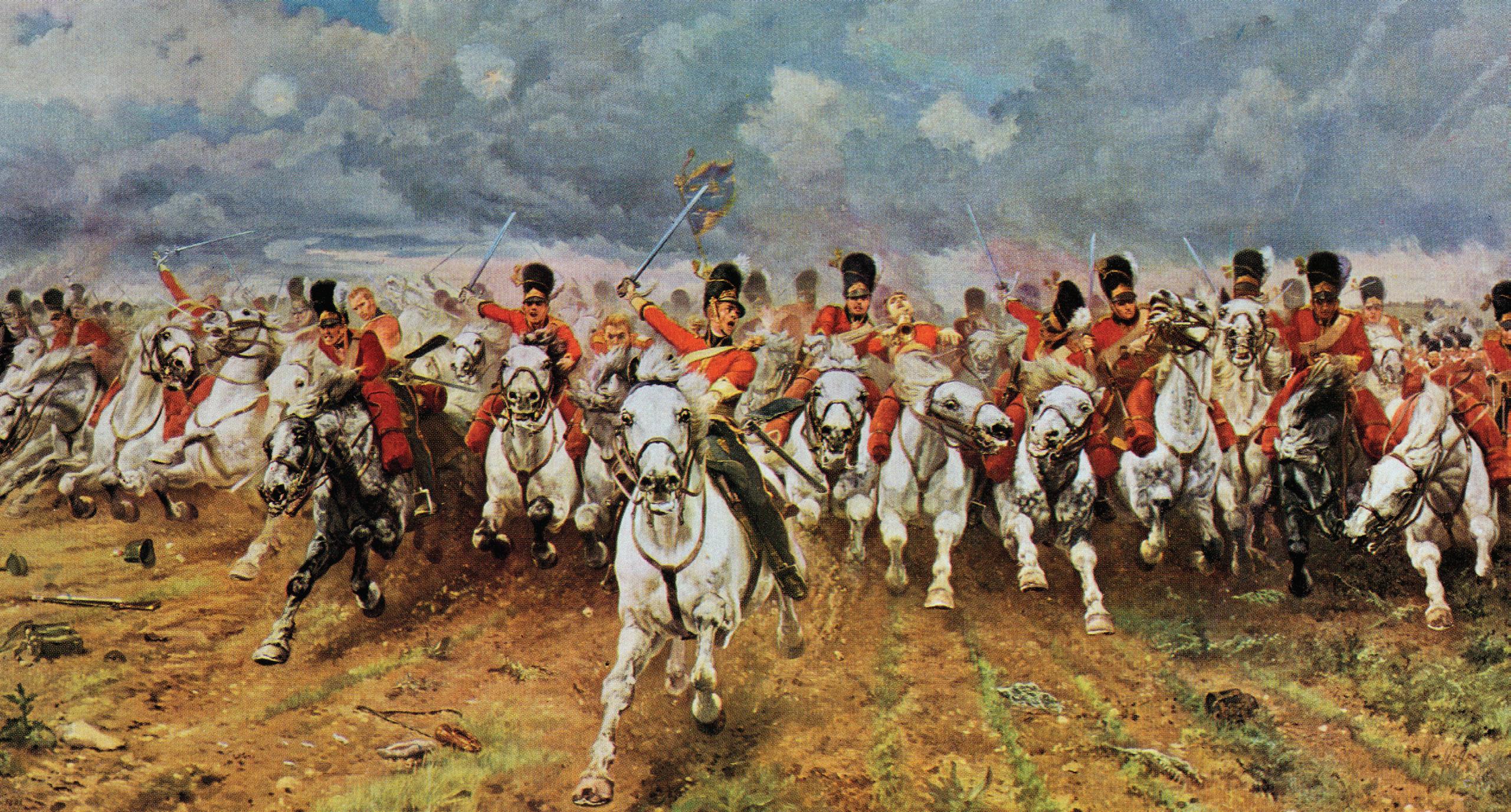
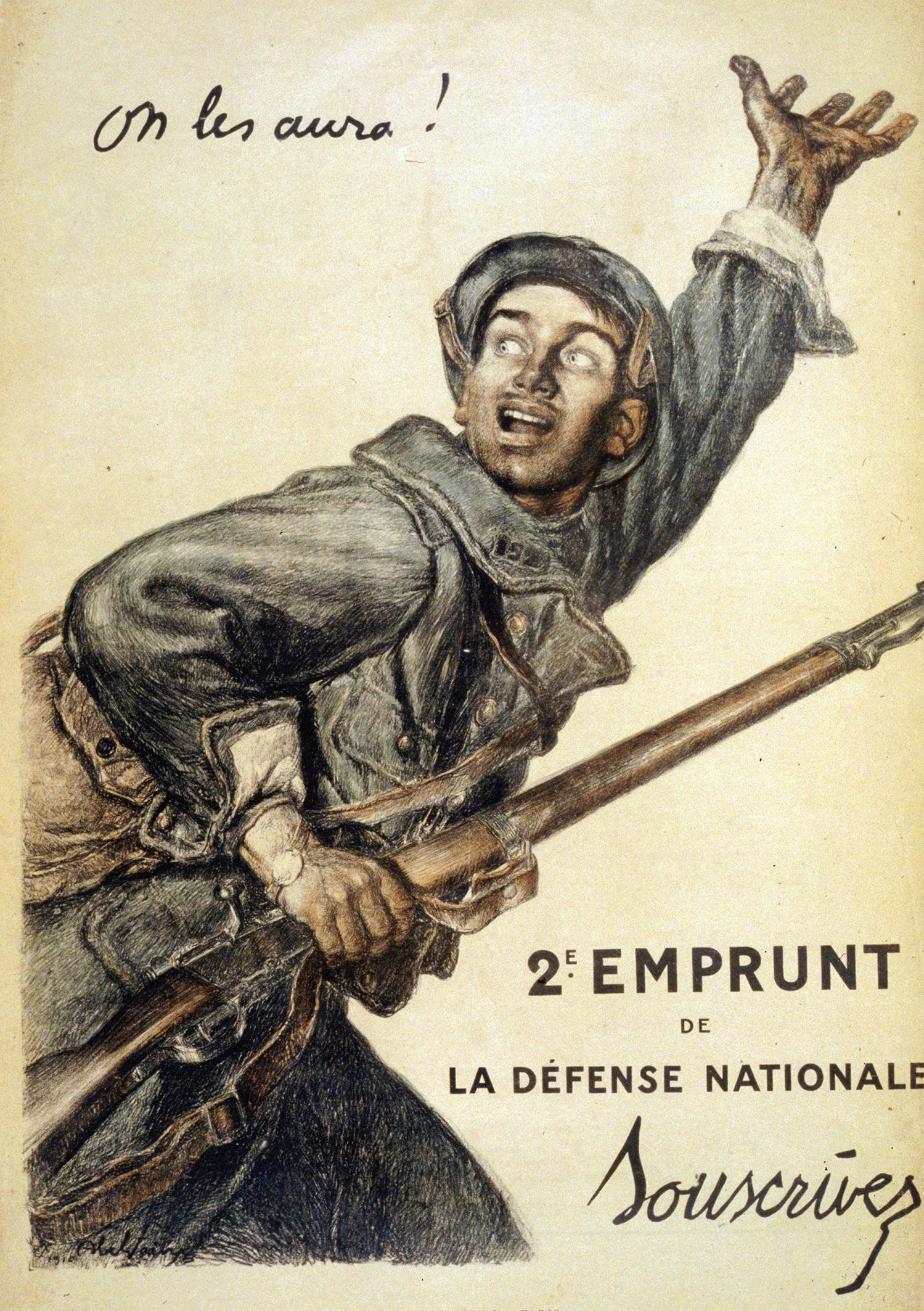
Source 8.5.2 Even the generals, accustomed to the earlier fast-moving warfare on battlefields, struggled to adjust to modern warfare. This poster from 1916, showing a brave French soldier surging forward with only rifle and bayonet, was seriously out of touch with the realities of static trench warfare. Fighting spirit was helpless against machine guns and artillery bombardment.
Amazing but true…
The image: a traditional war, over in a few months
The generation that entered World War I could have had no idea of the terrible nature of modern warfare. They assumed that war would be like the famous nineteenthcentury battles, as shown in popular military paintings. Every student in every schoolroom saw heroic images of dashing cavalry charges made by powerful men in splendid, colourful uniforms, riding superb horses. In Australia and elsewhere, people thought that the war would begin, battles would be fought on battlefields, and then the conflict would be over in a few months.
Initially, the war was one of fast movement. Germany used the Schlieffen-Moltke Plan, a detailed campaign to invade France and quickly defeat it before Russia could organise itself to enter the conflict. The plan almost succeeded. Germany’s army invaded neutral Belgium, overcame that country’s brave resistance, then invaded France, rapidly approaching Paris.
War had broken out so quickly that the French army did not have enough military trucks to move all its men north to meet the Germans. Since this was urgent, the government ordered every taxi in Paris to report for duty and drive the soldiers to meet the enemy. Some taxi drivers even switched on their meters and tried to charge the soldiers a fare upon arrival!
But the French army met the threat, and defeated the Germans at the Battle of the Marne (6–12 September 1914). German losses were so massive that the government never dared publish casualty figures. The German army retreated in chaos and dug defensive trenches. The later Battle of the Aisne marked the beginning of trench warfare.
As early as 1905, Count Alfred von Schlieffen had drawn up a plan in case Germany went to war with both France and Russia. To avoid dividing his army to fight on two fronts, von Schlieffen aimed to attack France first and defeat it quickly. He would then focus on defeating Russia, as Russia would take longer to mobilise its army. To avoid heavy French defences on its border with Germany, the German army would need to invade France by passing through neutral countries.
By late 1914, the ‘war of movement’ was replaced by a ‘war of entrenchment’, when opposing armies dug defensive positions called trenches and settled down to a long fight. The nature of war had changed forever. With some exceptions, the dashing cavalry played no role in these conditions.







Source 8.5.4 Germany’s Schlieffen-Moltke Plan ➜



Using historical sources as evidence
1 Looking at Source 8.5.4, which two neutral countries would be most heavily affected by Germany’s invasion?
2 Using Sources 8.5.4 and 8.5.5, why were fewer German forces sent across the border into France?
Key concepts: sources, evidence
HASS skills: questioning and researching, analysing, evaluating
Borders before 1914
Major German offensives
Major Allied offensives
Battlefront
Source 8.5.5 The development of the stalemate, 1914 ➜
Think, pair, share
Reflect on the story in the ‘engage and explore’ video.
What do you think?
1 Think about the story.
2 Try to explain your thinking with pictures or words in your notebook or on your digital device.
3 Share your thoughts with a partner. What does this description tell you about World War I that you did not already know?
4 What would you predict would be the long-term effects of such an experience upon this young man?
Key concepts: sources, evidence, perspectives, empathy, contestability
HASS skills: analysing, evaluating

Video:Engage and explore: an eyewitness account of the humanity and the horror of the trenches ➜
Source 8.5.6




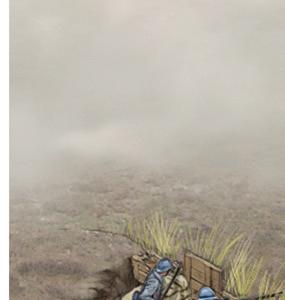
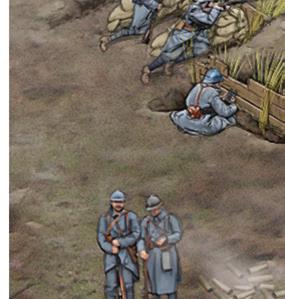

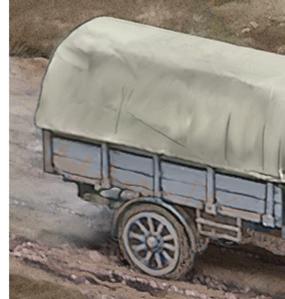







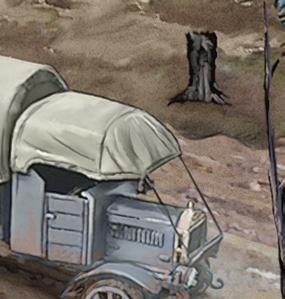

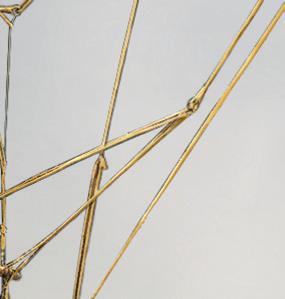
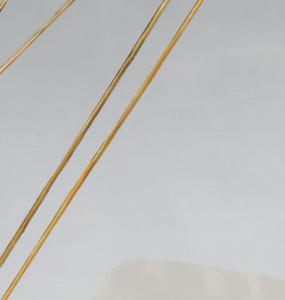









The development of trench warfare forced all the powers into a deadly process of trying to defeat the enemy by killing as many soldiers as possible, using as many existing and new weapons as possible; this is called a ‘war of attrition’. The landscape of death, shown here by a modern artist, was often referred to as ‘Hell on Earth’.


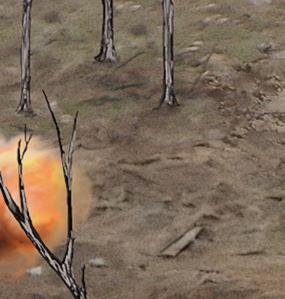




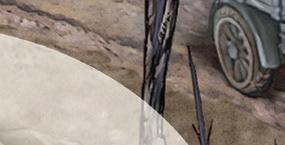

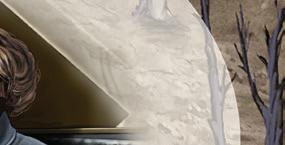






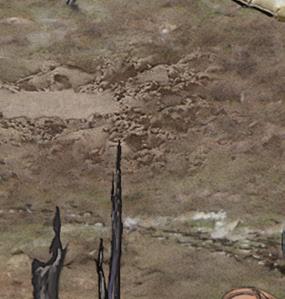

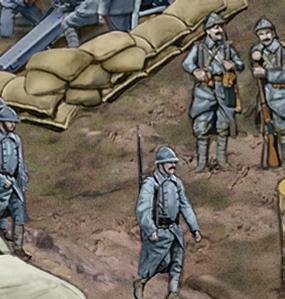






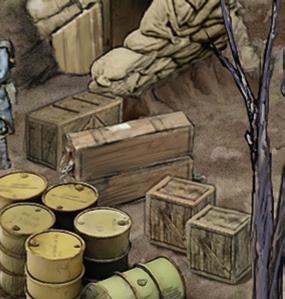

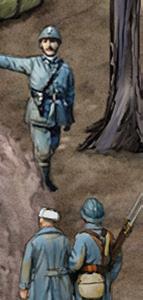


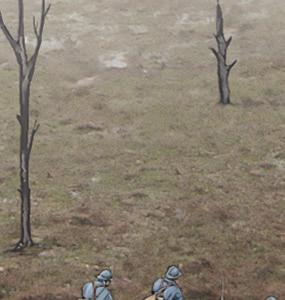


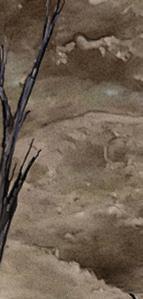
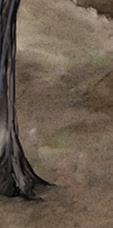

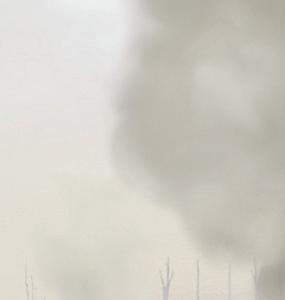
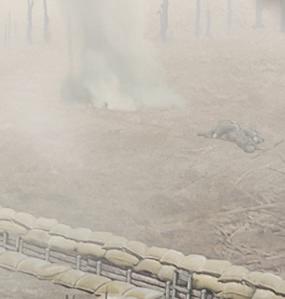

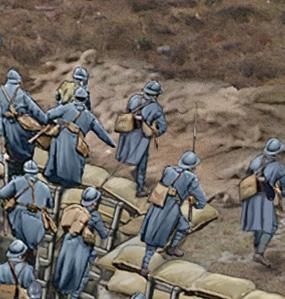
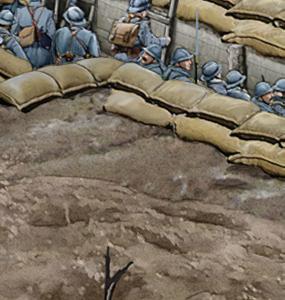





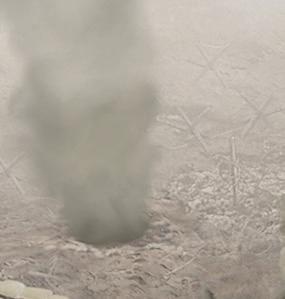
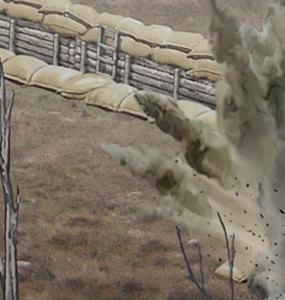





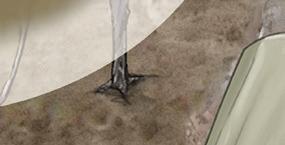




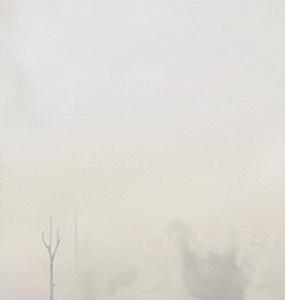
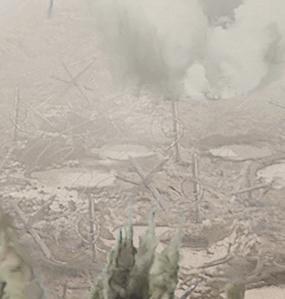

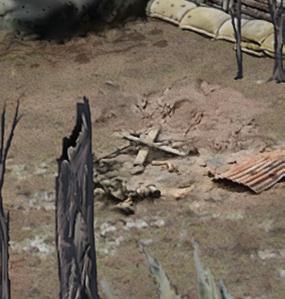
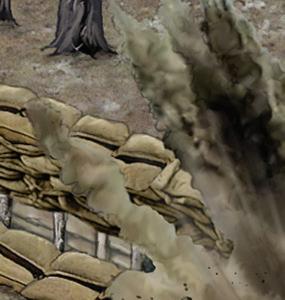

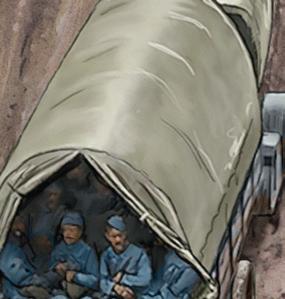


Women played important roles on the Western Front. This included being nurses at medical posts or as drivers of lorries. They were often dangerously close to the firing line, and often in similar conditions to the soldiers. Of the approximately 3000 Australian nurses who served abroad in World War I, 29 died, due to illness, injuries or enemy fire.






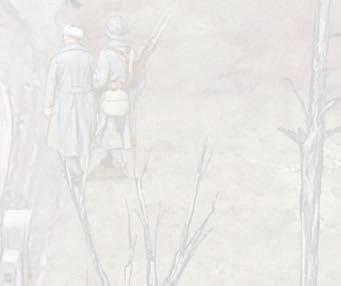




The rapid development of artillery – especially the increasing range of shells and the size of their explosions – meant that artillery barrages could continue for days, pulverising the enemy’s trenches and the troops within them.




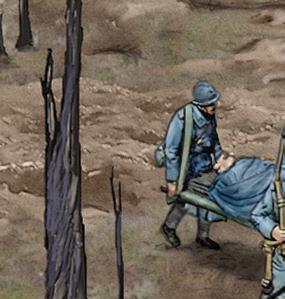


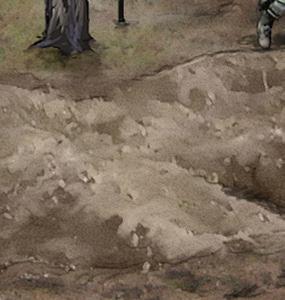
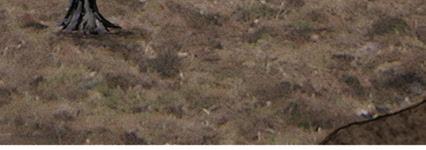




Source 8.5.7 An artist’s representation of trench warfare in World War I ➜













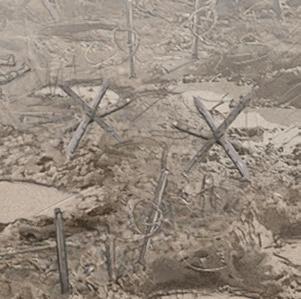
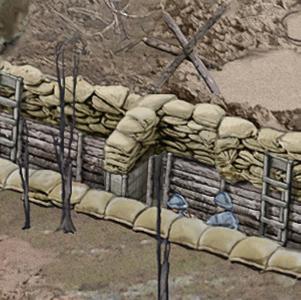

















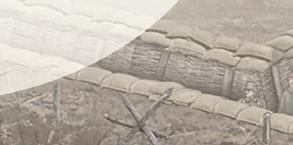

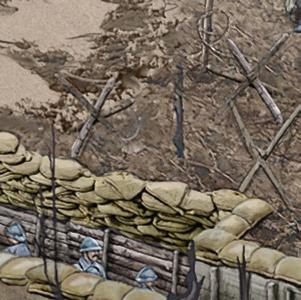
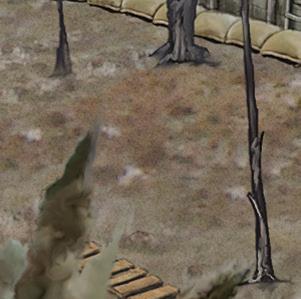
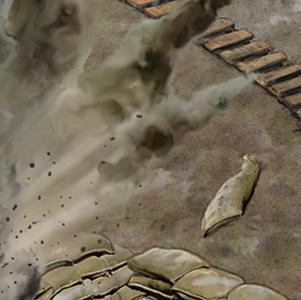

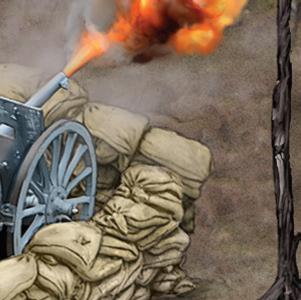




The deep, sticky mud of the Western Front was not just dirty but dangerous. For example, at the Third Battle of Ypres in Belgium, relentless rain and the churning of the ground by ceaseless shelling made death by suffocation in the mud a real possibility. Survivors mentioned wading through waist-high mud and having their boots sucked down into the earth.


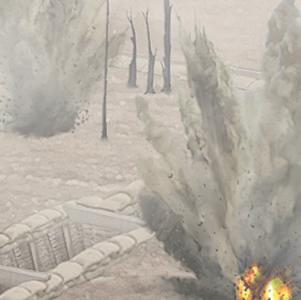







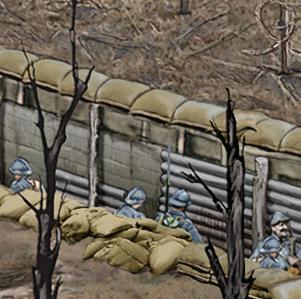





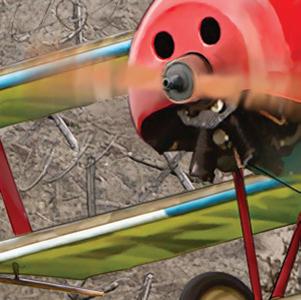
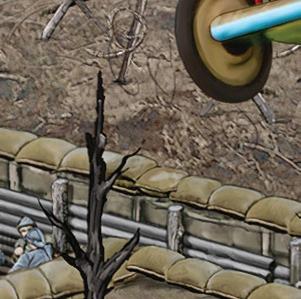
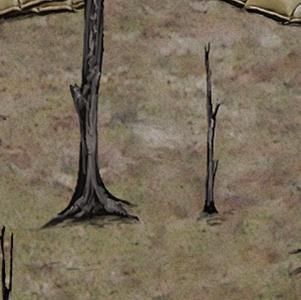
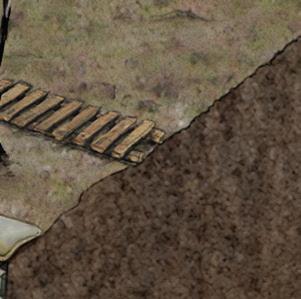







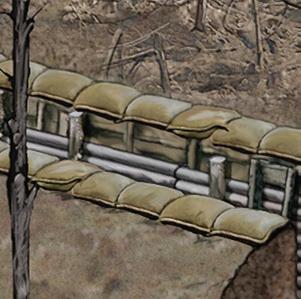












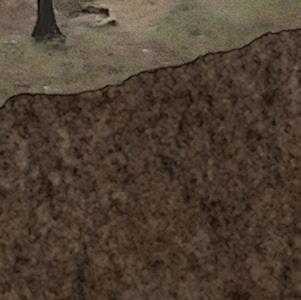






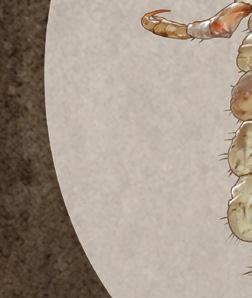


























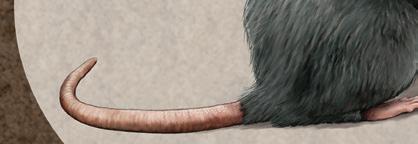
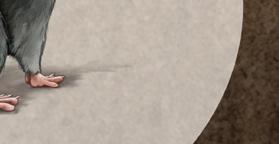



The lack of laundry and bathing facilities meant that soldiers’ uniforms were always infested with biting lice, causing constant misery and discomfort.











The armies lost almost as many men to illness as to fighting: the trenches were infested with rats, which carried diseases and also fed off the dead bodies lying out in no man’s land.






Source 8.5.8 An aerial view of a trench system showing two opposing sides. The trenches stretched some 750 km from the Channel coast in Belgium and ran all the way to the French border
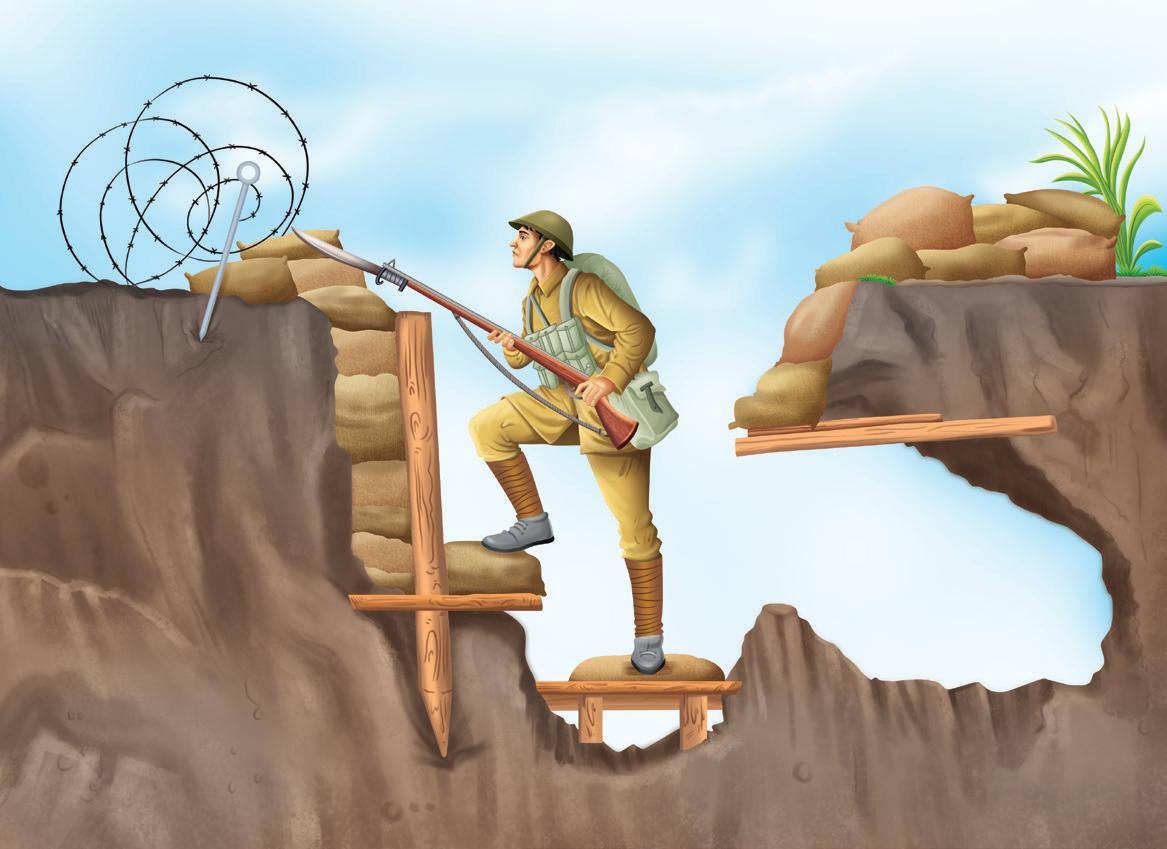
Source 8.5.9 A cross-section diagram of a trench ➜
All armies developed sophisticated techniques for building trenches. The first was sapping, which involved digging into the ground to create a passageway. The sides of the trench would be held up with beams of timber. These trenches were usually around 3 metres deep.
These trenches were better because they were not likely to flood during the winter.
Because attacks could be both sudden and intense, there needed to be multiple layers of trenches. The first was the front-line trench, from which soldiers fired at the enemy. Next was the support trench, then behind that a reserve trench, for use if the troops were suddenly driven back by a massive attack. The fourth type of trench was a communication trench, which provided a protected passage between the front and rear trenches, which allowed men, weapons and food supplies to be moved up to the men at the front.
Soldiers often found the digging of trenches to be the hardest labour of all. The trenches had to be big – about 2 metres wide and 3 metres deep –which required the removal of enormous amounts of earth. The construction of just 250 metres of trenches would have made the soldier in Source 8.5.9 and 450 other men work hard for six hours. When we consider that about 2490 km of trenches were built in World War I, we can understand the massive and exhausting task they faced.
no man’s land the contested strip of land between enemy trenches on the battlefields of World War I
The second technique was tunnelling, to allow troops to go under no man’s land, either to rescue the wounded or to surprise attack the enemy.
The third technique was sandbagging: in some places, the ground was not good for digging, and so soldiers built up a wall of sandbags filled with heavy clay.
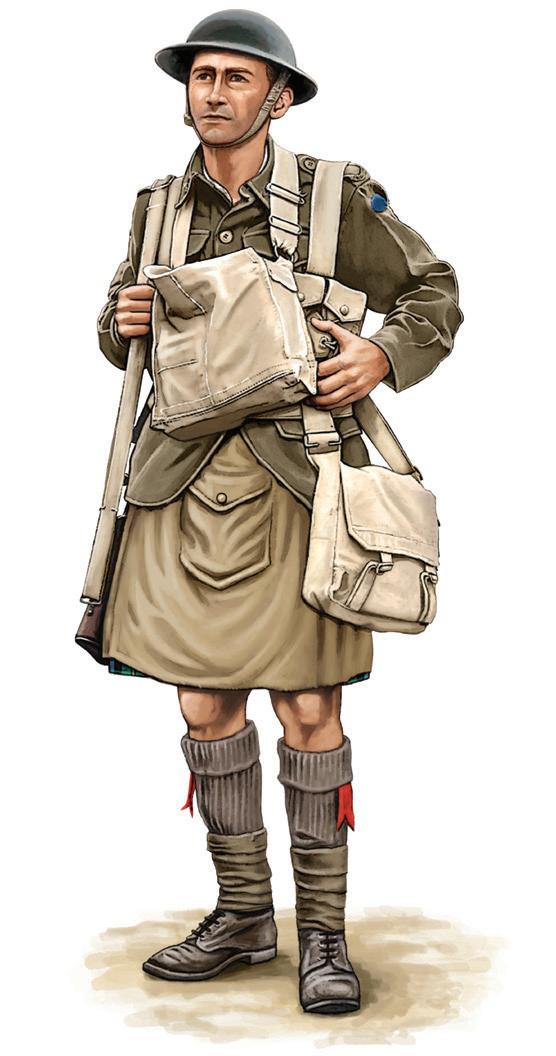
Source 8.5.10 A modern artist’s representation of a typical British soldier, commonly referred to as a ‘Tommy’
See, think, wonder
Closely analyse the trench warfare images on the previous few pages.
What do you see?
1 What does Source 8.5.9 tell you about the way trenches were constructed?
2 What does Source 8.5.8 show you about the main dangers of going out into no man’s land (the space between enemy trenches)?
3 How does this image help you understand the role of the aeroplane in this type of trench fighting?
4 How did soldiers overcome the problem of fighting an enemy they could not even see because of the trench system?
What do you think?
5 What might have been some of the main dangers involved in digging tunnels under no man’s land?
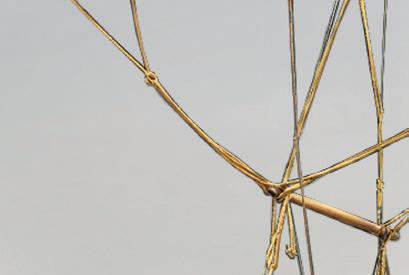

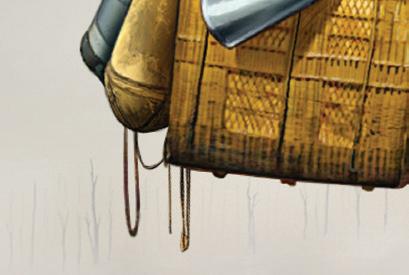
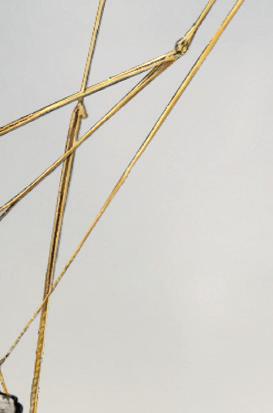
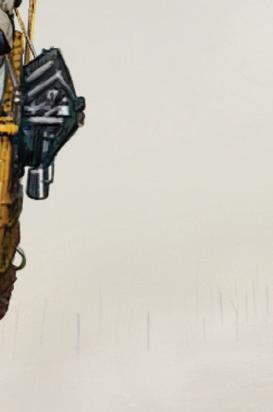
Source 8.5.11 The observation balloon Source valuable early warning about enemy troop movements, but was vulnerable to being shot down by enemy planes. The balloonists were given a parachute, and were told to jump out before their balloon was hit.
6 Which military vehicle was invented (not pictured) that finally made it possible for soldiers to go out into no man’s land with some degree of protection?
7 Why do you think this muddy landscape became even more dangerous for soldiers during the winter?
8 What were some of the dangers soldiers faced if they were wounded while out in no man’s land?
What do you wonder?
9 Given the improvement of existing weapons and the invention of deadly new ones, why did the war drag on for so many years?
10 What might have been some of the physical and psychological effects on soldiers who were involved in this savage fighting?
11 How do you think men and women would have coped with the constant fear of injury and death?
12 By 1916 more than 40 per cent of casualties in the war were believed to be suffering from shell shock. Referring to Source 8.5.12, to what extent do you think army commanders were able to understand and deal with the true nature of shell shock? How did this affect the way they handled shell-shocked soldiers?
Source 8.5.12 The damaging impact of repeated explosions upon the human brain was a condition called shell shock. The term was coined by the British doctor Charles Myer to describe the mental trauma experienced by soldiers from trench warfare, with its constant battle and casualties. There were physical symptoms, like insomnia, damage to the central nervous system (which caused symptoms like tremors), as well as damage to hearing and sight. But it was also a psychological condition of trauma that was not understood at the time; soldiers who were shell shocked were often dismissed as cowards.
Key concepts: sources, evidence, cause and effect, perspectives, empathy


HASS skills: questioning and researching, analysing, evaluating, communicating and reflecting
Analysing maps
While the common soldier hiding in the trenches could have no overview of the whole battle unfolding around him, the historian must be able to measure and analyse how a battle unfolded. For this purpose, maps provide crucial graphic information about the unfolding stages of a battle or a campaign. Please note that the following maps can be zoomed in on in the digital versions of this textbook.
The changing Western Front
8.5.13 The Western Front in 1915 ➜
8.5.14 The Western Front in 1916 ➜
Border before 1914
Major German offensives
Major Allied offensives
Source 8.5.15 The Western Front in 1917 ➜
Border before 1914
Major German offensives Allied Counter offensives
Source 8.5.16 The Western Front in 1918
1 Using Source 8.5.15, in which area was the Allied offensive quite successful in holding back the German advance?
2 Using Source 8.5.15, in which area was the Allied offensive less successful in holding back the German advance?
3 Using Source 8.5.16, in which area did the Allies make the most significant advances into German territory?
Key concepts: sources, evidence, cause and effect
Static warfare
World War I involved static warfare, in which the opposing forces settled into defensive positions, unable to make significant advances. In some battles, thousands of men died, without capturing even one metre of enemy territory.
Some key battles of 1916–17
As the war settled down into stalemate, the armies involved threw their troops into desperate attacks to try to achieve
a decisive victory. The Battle of Verdun (21 February–18 December 1916), for example, was a massive German attack on the French fortress town of Verdun. The French army lost 550 000 men as casualties (that is, killed, wounded or missing). French troops were also traumatised by a mass mutiny in which many troops were tried and executed for refusing to fight any more. The German army had around 430 000 casualties.
In the Battle of the Somme (1 July–18 November 1916), the British and the French combined for a mass attack on German lines.
stalemate a situation in which armies have attacked each other but failed to achieve a definite victory for either side, and have settled down into defensive positions such as trenches
war of attrition after the development of stalemate, enemy armies stop trying to win a decisive victory and just attempt to wear down their opponents by killing as many as possible
total war a war that is no longer limited to the traditional battlefield but extends to attacks on civilians in cities and involves civilians in the making of ammunition
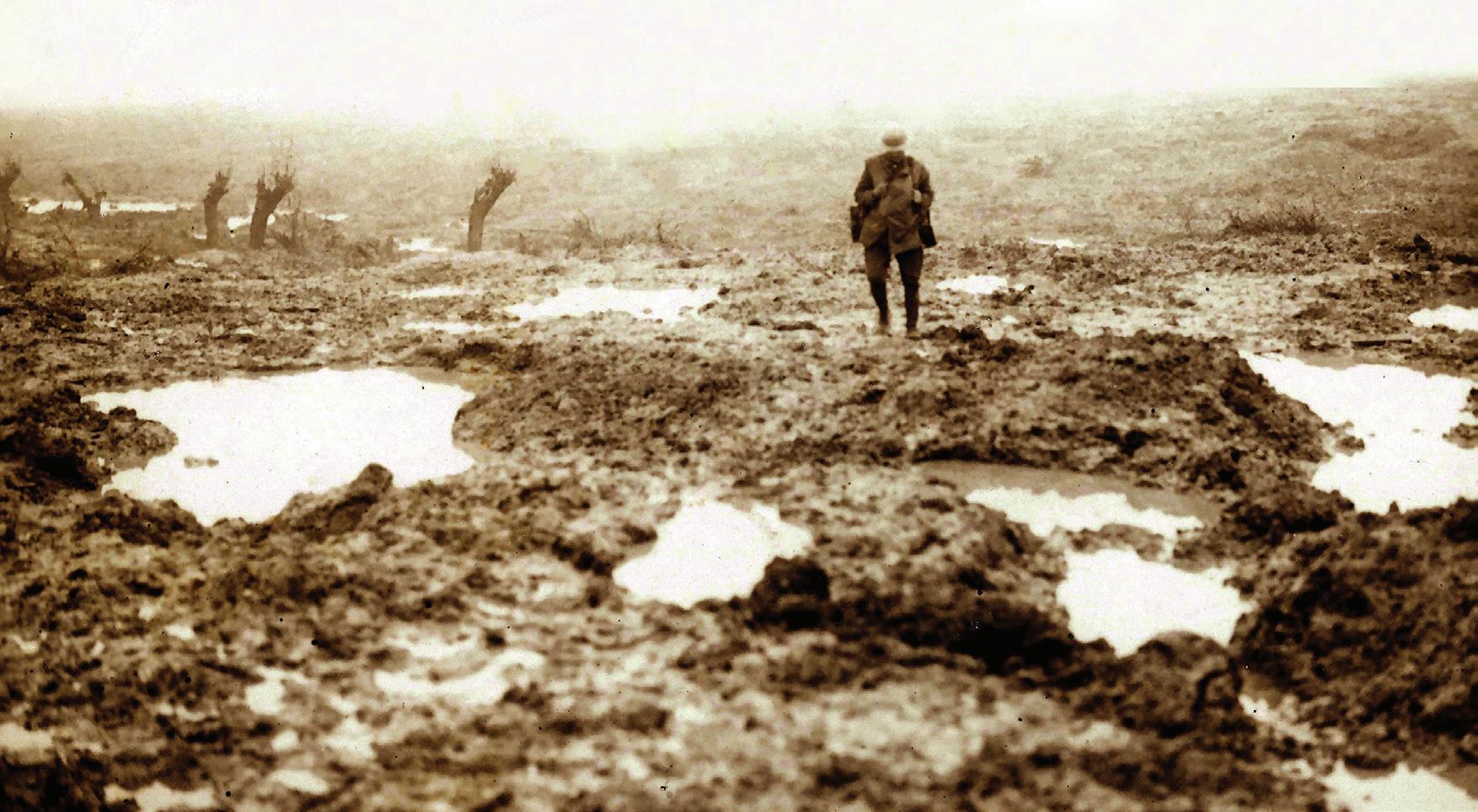
8.5.17 A Canadian
Over the next five months, the battle caused nearly one million casualties in total, on both sides. This was the British army’s greatest military tragedy in history: 57 000 casualties on just the first day of the attack, with 19 240 killed.10
The Third Battle of Ypres (31 July–10 November 1917) was a British attack on the German defences in Flanders. General Haig’s plan to capture strongpoints such as the Messines Ridge and the village of Passchendaele made good sense strategically. However, heavy winter rain turned the land into a death trap of mud, and the attack broke down into exhausting, pointless fighting in impossible conditions. It was a battle that soldiers on both sides remembered with absolute horror.
World War I became a war of attrition , a conflict in which neither side could win a decisive victory to end the war. This forced both sides to try to wear down their enemy by killing as many soldiers as possible. Victory would come when the enemy was unable to replace its soldiers.

Source 8.5.18 This poster, issued by the American Government in 1915, shows the different silhouettes of German versus British airships, to help people recognise enemy airships and take cover as necessary.
World War I became a total war, a conflict that went beyond the battlefield to target civilian populations in cities.
This was not completely new: during the American Civil War, armies had attacked enemy cities. With new, more powerful weapons, the enemy made devastating attacks on undefended civilians. German battleships fired shells onto English coastal cities. The Germaninvented Zeppelin (a powered hot-air balloon) flew over inland English towns and bombed them.
This new idea of total war also suggested that governments should have more control over their own people than they would in peacetime, by censorship (controlling information) and economic control of factories and production.
World War I expanded from one major site (the Western Front in Belgium and northern France) to several theatres (locations) of war.
Italy sided with the Allies in May 1915, and its armies attacked the AustroHungarian Empire to the north, forming the Italian Front. In the Battle of Vittorio Veneto (October–November 1918), the Italians defeated Austria’s forces.
Russia, then named the Russian Empire, also sided with the Allies, and attacked Germany, forming the Eastern Front. This war proved disastrous for the Russians. Although the vast Russian army fought very bravely, it suffered from poor leadership and lack of supplies. Its losses were catastrophic. In due course, this experience virtually destroyed all of Russia’s existing professional army, forcing it to fight with an untrained army of new recruits.
heavy casualties in this poorly planned campaign. The Turkish forces suffered even greater casualties in this struggle, which modern Turkish people see as the birth of their own modern nation.
The conflict spilled over to the Middle Eastern front. In the Sinai and Palestine Campaign, Britain’s expeditionary force challenged the combined Turkish and German forces and their defensive line from Gaza to Beersheba. This line had been formed to defend the oil resources of the Middle East – which the Royal Navy relied on – from capture. Australian forces, including the Light Horse (foot soldiers who rode into battle on horses), served in this theatre of war.
The War in the Balkans was also a savage conflict. In August 1914, AustriaHungary invaded Serbia, but the fighting settled down into trench warfare. The British and the French attempted to help the Serbians, while Bulgaria joined the Central Powers’ side (October 1915). Romania joined the Allied side in August 1916. The ancient political, ethnic and religious rivalries of this troubled region became a part of the broader world war. The loss of life in this murderous conflict was, in proportion to the numbers involved, even higher than that of the Western Front.
content available: Worksheet on comparing French and German perspectives on the war
The Allies attacked Germany’s ally, Turkey (then known as the Ottoman Empire), creating the Dardanelles Front, of which Gallipoli was just one part. The aim was to capture the city of Constantinople (today known as Istanbul) to allow the Allies to transport supplies to Russia. The British, French and Australians suffered
Beyond these basic facts, it is almost impossible for the modern reader to imagine the conditions of this new, brutal warfare. We understand trenches and mud and barbed wire, but we cannot feel what soldiers experienced under the massive bombardment of heavy artillery, which often rained down hundreds of highexplosive shells in an hour. The explosive forces involved were so great that soldiers felt as if they were trapped in some mighty killing machine, or perhaps caught in something elemental like an earthquake or volcanic eruption. Trenches and forests were simply wiped off the face of the Earth, men were shredded, while others became insane or ran away in sheer terror.
Frederic Manning, an Australian soldier on the Western Front, noted that the men who volunteered to serve went to war expecting a conflict of the old sort. Nobody had any idea of the deadly dangers that they would face in this new type of war:
No one knew anything about it; it was like one of the blind forces of nature; no one could control it, no one could comprehend it, and no one could predict its course from hour to hour.
Source 8.5.19 Quoted in Mark McAndrew et al., The Great War and its Aftermath, 1914–1921, 2001, p. 170
World War I was very destructive because it was fought with new and terrible weapons developed during the century before the war, when industry produced much more powerful versions of traditional weapons, such as rifles and cannon. Human invention and technologies always move forward, but in times of war, the urgent need to win the conflict pushes technological change at a much faster rate. Existing military weapons were developed to their most deadly form.
To read more about the deadly technological advances in World War I, access the Interactive Textbook. There you will find more detailed information, primary sources, images and activities, on:
• heavy artillery and shell shock
• the machine gun
• snipers
• the war at sea and the Dreadnought
• the armoured tank
• the use of poisonous gas
• flamethrowers
• the war in the air and the birth of the fighter plane and the bomber
• the brutality of hand-to-hand fighting
• new tactics: underground warfare.
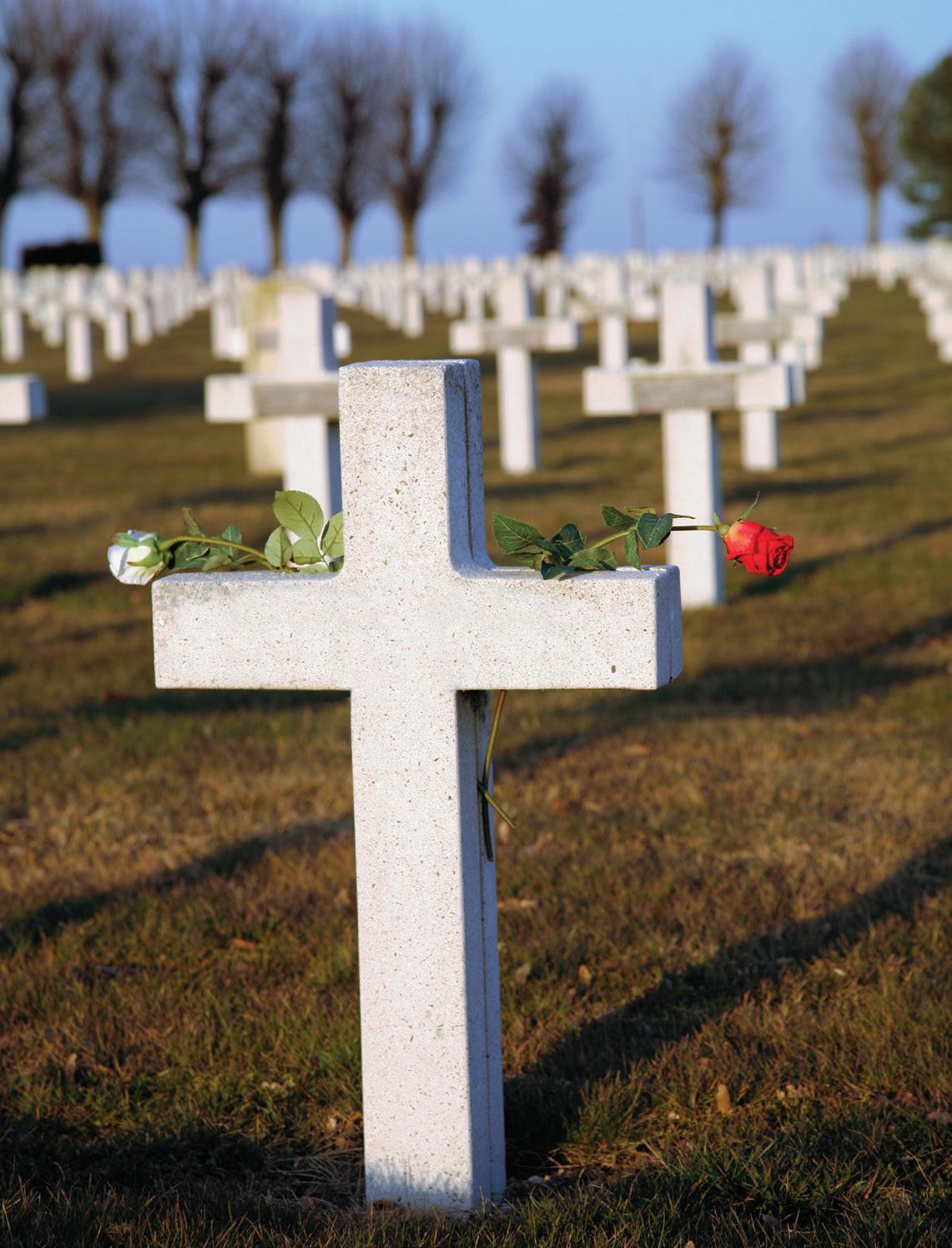
Source 8.5.20 A cemetery for World War I soldiers ➜
At the start of 1918, Germany was still in control of large parts of France and Belgium, and well-entrenched. The Russian war effort had collapsed, and its new Communist government had signed a peace treaty with Germany that handed over an enormous amount of land, and allowed the Germans to focus almost their entire armed forces on the Western Front.
Germany and the Central Powers, however, were coming under increasing pressure due to a number of factors. The Allies were making advances in the Middle East, the Balkans and north of Italy. The British naval blockade of German ports, which had been in place for the duration of the war, was hitting Germany hard, with severe shortages of food, materials and fuel across German cities.
The once powerful German U-boat fleet was unable to counter the US-backed convoy system across the Atlantic, the use of depth charges and mines, and the introduction of aircraft surveillance. As a result, supplies from around the world continued to flow into Britain and France. The war of attrition had turned in the Allied favour, with the German army and people becoming increasingly desperate, and under constant threat of starvation.
The declaration of war by the USA was a significant turning point of the war. Driven by submarine attacks on its shipping, and the threat of a German alliance with Mexico, Congress declared war on the Central Powers in April 1917. Initially, there were not enough troops or armaments for the US to have an impact in Europe but, by the end of the war, two million US soldiers had been transported to France. The US also brought massive industrial capacity, and soon the Allies would be out-producing the Germans in all areas of war production.
The German command saw their last opportunity to win the war in the Spring of 1918, before the bulk of the US forces arrived. In this offensive, the Germans attempted to break through allied positions in France and march towards Paris. After initial successes, a lack of tanks or motorised artillery, and the incredibly war-damaged terrain, slowed the advance. The Allies, including Monash and his Australian forces, counterattacked and threw the German forces back to their original line, before breaking through in September.
A formal state of war continued after the armistice, until all sides could meet and determine what was to become of Europe and the Central Powers. The final treaty to end the war took months to complete, and was negotiated in the Palace of Versailles, outside Paris. After initial assumptions that Australia would allow Britain to attend on its behalf, Billy Hughes insisted on Australian representation. He famously argued with US President Wilson at the conference, who questioned Australia’s insistence on reparations from Germany, including colonies in the Pacific. Wilson implied that Australia was too small to make demands, and should leave decisions to the major powers, to which Hughes replied, ‘I speak for 60 000 dead. How many do you speak for?’
Australia received very little of the massive reparations demanded of Germany under the Treaty – reparations which severely damaged the German economy. It did receive, however, the League of Nations mandate over German New Guinea. Australia was to control Papua New Guinea until its independence in 1975. The harsh restrictions of the Treaty of Versailles, under which Germany was blamed for the war and forced to give up most of its military, its colonies, and much of its European territory, immediately placed the new German democratic government under extreme pressure, and some say contributed directly to the rise of the Nazis and the start of World War II.
By October, Germany’s allies had surrendered, and its own navy had refused to follow orders to leave port and try to break through the British blockade. Kaiser Wilhelm II abdicated on 9 October, and the new German government began negotiations for peace. On 11 November 1918 an armistice was signed, ending the fighting, at precisely 11am.
What has been won? If the fruits of victory are to be measured by national safety and liberty, and the high ideals for which these boys died, the sacrifice has not been in vain. They died for the safety of Australia. Australia is safe. They died for liberty, and liberty is now assured to us and to all men…
Source 8.5.21 Prime Minister Billy Hughes, Commonwealth Parliamentary Debates, 10 September 1919.
Go online to access the interactive section review and more!
Section 8.5 review
8.5 Review questions
Recall
1Recall the Schlieffen-Moltke Plan.
2 In which battle did static trench warfare begin?
3 Define ‘war of attrition’.
4Explain the meaning of ‘total war’.
Interpret
5 What is the role of maintaining World War I memorial cemeteries? In what way do they provide a more ‘human’ story of the Western Front?
Argue
6 ‘Human technology is always developing, but the pressures and demands of war tend to speed up this process significantly.’
Explain why this is so, providing examples from the technologies of death in World War I, and with reference to Source 8.5.22.
Apply 8.5 questions
1Investigate the new technologies invented during World War I, and explain which technology was arguably the most important in bringing the war to an end.
Key concepts: sources, evidence, significance HASS skills: questioning and researching, analysing, evaluating, communicating and reflecting
• How was the war experienced on the Australian home front?
• How did Australian women contribute to Australia’s war effort?
Traditionally, military history focused on battles, commanders, weapons and tactics. The front was simply the battlefield: soldiers left home, went to a distant country to fight, then returned. The home country was not usually affected by distant wars. (There were some exceptions to the rule. In the American Civil War, for example, both sides attacked towns held by enemy forces, and in 1812 Napoleon had occupied Moscow.) World War I changed that because it drew entire civilian populations into the vast war effort. It also directly threatened their safety, even in their own homes.
In recent times, military history has tried to look more broadly to appreciate the experience of millions of other Australians who did not go to war but who nonetheless were unavoidably part of the war. This is known as the home front,
involving the experiences of civilian men, women and children.
Historian Mark McAndrew explains that, previously, wars were smaller in scale, involving smaller armies. World War I, however, was massive and forced governments to introduce new controls over their people to be able to win the war. In democratic countries, governments passed laws giving themselves powers to control politics, information and especially production of food and industrial goods.11 As the war dragged on, politicians and generals saw victory as worth the sacrifice of rights and freedoms.
Governments sought to control the flow of information to the public by censorship of documents on sensitive issues, either by banning their publication or by removing some information. In the trenches, soldiers’ letters home were opened, read and censored of any information that could help the enemy.
11 To learn more about how governments handled World War I on the home front, read Mark McAndrew et al., The Great War and its Aftermath, 1914–1921, 2001.
Governments also introduced new measures to recruit more troops and to stamp out expressions of public opinion opposing the war. In 1914, public opinion in most countries was strongly for the war, either due to patriotism or a sense of adventure. By 1916, the endless battles and massive casualty rates had made people more negative.
In this mood, some insisted that the war should be continued, while others criticised it. To control the criticism, governments acted to control the media, and limited freedom of speech.
Governments also had to ensure that economic production (production of goods and services) was massively increased. Every man who joined the army ceased work on production on the farm or in the factory, but still needed to be fed and clothed to the standard expected of the army. It was vital to ensure that food production was increased to guarantee that the troops were fed. Industry was also placed under massive strain to produce
uniforms, guns, ships and millions of bullets and shells. World War I, it was said, would be won or lost on the factory floor.
Governments also limited food consumption by civilians at home to be able to redirect more food to the troops. This involved rationing (limiting food per person). This shocked people unused to food shortages and led some people to sell food illegally at high prices on the black market. In Canada, for example, the government was forced to make food hoarding illegal (see Source 8.6.1).
Finally, governments took security measures against their own citizens of foreign origin, declaring them enemies. The possibility of spying for military information, or even sabotage (destroying military equipment), was very real. In Britain, the pressures of war created anti-German hysteria, as expressed in the poster by the British Empire Union (Source 8.6.2).

Source 8.6.1 This Canadian poster shows that the government had enacted laws to prevent both black market sales and hoarding of food, and also that people were breaking these laws. Apart from the legal threat represented by the passing policeman, the poster appeals to Canadian loyalty to stop the cheating. ➜

Source 8.6.2 The British Empire Union was an organisation formed to warn British people of the danger of German spies. Examine the image carefully, and make a list of the hostile acts that Germans were accused of committing.
McAndrew concludes with an interesting point: the amount of government control was not equal in every country. Government control was greatest in countries that were close to the battle front (France, Germany), but more relaxed in countries that were far from the fighting (Australia, the United States). Between these extremes, Britain certainly took some measures of war control but, being protected by the English Channel, was not as strict about them.
Historian Craig Wilcox argues:
War was something that damaged other people, far away in time and place. No one was ready for the political and economic demands of global and industrial society, one fought by mass armies and mighty navies, where men would be killed by poison gas and children starved by blockade, where the enemy never came close to Australia but nonetheless threatened the heart of empire. No one expected that while their volunteers went to Gallipoli then to France, their families would also be called upon to wage war on the home front.
The Australian home front was scarred by one very cruel, and unnecessary, injustice: the internment in prison camps of citizens now branded as aliens because their place of birth was an enemy country. This applied especially to Australians of German descent.
was imprisoned, but he actually came from the neutral country of Sweden.
In Australia, the Labor Government of Prime Minister Andrew Fisher passed the War Precautions Act 1914, giving the authorities unlimited powers for security measures. The government could instruct newspapers to alter or remove stories, and it would steam open and censor letters sent from the front, and at home. Under the Act, armed soldiers arrested some 7000 people – mainly Germans and Austrians –and detained them in rough wooden huts behind barbed wire. The Act was also used to prevent strikes, and to deport political radicals that were anti-war. Today, most Australians regret the harsh treatment of innocent Australian civilians who became ‘aliens’ and ‘enemies’ in their own country.

➜
This seemed a logical precaution then, but now it appears unjust. First, it was unnecessary. Not a single hostile act by a German Australian was ever discovered. In fact, many had come to Australia to escape German autocracy. Second, these innocent people were subjected to harsh mistreatment. For example, one man with a ‘German’ accent
The home front: the fine art of persuasion/propaganda
Propaganda is the art of persuasion. In war, propaganda is designed to hide any problems, to discourage any criticism, to keep morale high, to persuade men and women to volunteer for service, and to encourage civilians to work hard to support the war effort. Propaganda is often commissioned by the government, so it is really the government speaking to its people about the war. In Australia, propaganda posters, silent movies, articles and speeches were used to promote enlistment, justify economic and political controls, and win support for each side of the conscription debates.
conscription compulsory enlistment in the armed forces, based on laws made by the government
War always produces casualties, but nobody could have predicted how very many there would be. Out of its small population of five million, Australia lost more than 60 000 men. All of these men were volunteers. Men aged between 19 and 38 years of age could enlist, and within days they began basic military training. Those deemed unfit were rejected. At first, standards of fitness were strict, and many were rejected for minor ailments. Physical requirements included a height of 168cm and chest measurement of 86cm. Later, these conditions were relaxed, and the upper age limit increased to 45.
Around 50 000 enlisted in the first year of the war, before fighting began. The reporting of the Gallipoli landing contributed to a jump in enlistment in 1915 and 1916, when almost 300 000 enlisted. When the casualty figures started to filter back to Australia, and the war became bogged down on the Western Front, enlistment numbers faltered, and fell to as low as 28 000 in the last year of the war. The incredibly high casualty

Source 8.6.6 Recruiting for the war was done by a group called the Coo-ees, who walked through New South Wales to Sydney, recruiting on average one man per kilometre they walked. According to historian Keith Hancock, these volunteers felt greater love of Britain than for their country Australia and many called themselves ‘independent Australian Britons’. ➜
rates on the Wester n Front meant that more soldiers were desperately needed. The government used propaganda to encourage more recruits but also supported the introduction of conscription to bolster numbers.

8.6.5 An Australian World War I recruitment poster, 1915 ➜
William Morris Hughes, from the Australian Labor Party, became Australia’s Prime Minster in 1915. Known as ‘Billy’ Hughes, he was to be a leading figure in Australian politics for decades, and was so committed to Australia’s war effort, he was nicknamed the ‘little digger’. In 1916 he visited the Western Front and observed first-hand the conditions. He returned convinced that the only way to win the war was to greatly increase enlistment, and this would mean conscription for overseas service.
The Labor Party, however, had historically been strongly anti-conscription. Working class ideology saw wars as yet another way that the wealthy exploited the poor. The Labor Party was also strongly supported by Irish Catholics, who opposed any form of compulsory military service, and had little sympathy for the British at the time of the Easter Uprising in Ireland. Hughes’ solution was to hold a national plebiscite on the issue, hoping for a strong ‘Yes’ vote that would convince his party to go ahead with his plan.
The issue quickly divided the country and, in some cases, divided families. Those in favour of conscription argued that it was necessary for the survival of those already on the front line, and that losing the war would threaten not only democracy in Europe but also in Australia. Hughes argued that other countries were increasing their contribution so Australia should follow suit. Many of those who most strongly supported conscription were those with family members at the front.
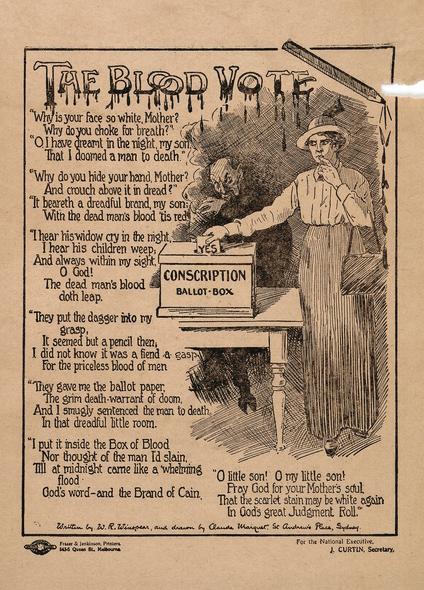
For others, the issue was simply a question of democracy. Was it right that a government could take away such a fundamental freedom of choice? One of the most vocal critics of conscription was Catholic Archbishop of Melbourne, Daniel Mannix. He reflected the views of many people that no person in a democracy should be compelled to give their life in a war. He refused to accept that it was necessary, and viewed the war as more about economics than any real threat to democracy, or ordinary people. Mannix was Irish himself, and believed that the working classes had done enough in what was Britain’s war. Although a persuasive speaker, many opposed him simply because of his Irish Catholic background. Anti-conscription campaigners were seen as traitors, or cowards, and the propaganda on both sides was often spiteful.

Activity 8.6
Using historical sources as evidence
1 Describe the message about Australian soldiers in Source 8.6.5. What techniques are used by the artist to achieve this?
2 Is this source contestable?
3 To compare sources means that you need to think about what their messages have in common – what do they agree on? To contrast sources means that you look for differences of opinions, or points on which they disagree. Compare and contrast the messages of Sources 8.6.7 and 8.6.8.
Key concepts: sources, perspectives, contestability
HASS skills: analysing, reflecting
1 Describe the difference between a ‘plebiscite’ and a ‘referendum’ in Australia.
2 Research and identify other questions that have been put to Australians in a plebiscite.
3 Discuss the value of holding plebiscites. Identify and explain both the advantages and disadvantages of plebiscites.
4 Analyse Source 8.6.7 and Source 8.6.8.
a Describe the message of each source.
b Explain how the creator of each source communicated their message. What techniques did they use?
5 Research and find two campaign sources from a recent Australian plebiscite or referendum. Describe the message of each source, and explain how the creator communicated their message.
Key concepts: sources, evidence, perspectives, democracy, participation, rights and responsibilities
The plebiscite was held in October 1916, and resulted in a small but clear defeat for Hughes and the Yes campaign. One of the main results of the vote was that the Labor Party was split, and Billy Hughes led twenty-four of his followers in a breakaway group that joined with the smaller Liberal Party to form a new party – the Nationalists (not to be confused with today’s Liberal or National parties).
With his new party, Hughes was then successful in winning government in the May 1917 elections. He immediately
HASS skills: communication and reflecting, questioning and researching, analysing
announced that a second plebiscite would be held. The campaigning was once again bitter and divisive, before the December vote once again was decided in the negative, and conscription was never to be introduced in World War I.
The most emotionally intense aspect of life on the home front was, of course, news of the war and of loved ones. A steady flow of letters from a husband, brother or son was reassuring, although these could scarcely describe the full horror of what he was experiencing.
The stopping of letters caused great anxiety among families. Relatives also dreaded the arrival of an official telegram, bringing bad news of a man wounded, lost in action, captured or killed. Many Australian women described the terrible fear of seeing a post-boy approaching the front door.
The Australian Government did not hide the losses. Casualty lists were published in the newspapers, revealing the terrible cost of the war in human lives.
Bruce Scates has written:
The Great War cast a shadow across Australia. Of some 330 000 Australians who ser ved overseas, over 60 000 died. Around one in four families suffered the loss of a husband or son. Those who have been called the ‘secondary bereaved’, those who mourned a cousin, uncle or friend, widened the … grief even further. In Ken Inglis’ estimate every second Australian family suffered a loss from the war.
Source 8.6.9 Bruce Scates, ‘Bereavement and Mourning (Australia)’, International Encyclopedia of the First World War, 2016, p. 1
Participation in war is a costly exercise. World War I placed enormous economic pressures on businesses, individuals and the government. The war’s impact, however, was not all negative. Although the economy was not transformed (as it was to be during World War II), significant developments occurred that would contribute to the prosperity of the 1920s.
Initially, business owners were concerned by the sudden departure of young men to Europe, and the impact of

Source 8.6.10 Thomas Clarke Edwards, a union worker, was hit with a police baton during inter-union conflict that became the 1919 Fremantle Riot. Edwards died three days later. Following the riot, he had a large public funeral (pictured here), which thousands of people attended, including most of the Australian Labor Party members of parliament. A memorial fountain was also made in Edwards’ honour, which still exists today and is now located in Kings Square, Fremantle. This conflict stemmed from an earlier dispute in 1917 over whether ships should be loaded if they were carrying supplies destined for Germany.
reduced shipping between Britain and Australia. The Melbourne Stock Exchange closed for a month when war was declared, due to fears about the war’s economic impact. Shortages of goods contributed to high inflation for the course of the war, especially for the prices of imported goods. It is estimated that the cost of living rose by almost 50 per cent between 1914 and 1918. Wages, however, grew more slowly, and this led to problems for families. Strikes resulted as demands for higher pay were not met. In 1916 and 1917 especially, thousands of workers went on strike in the wool industry, on the waterfront, and in mining. A major strike among transport workers in New South Wales and Victoria in August 1917 grew quickly to include other industries, and strike-breakers were used. The strikes continued into 1919, including on the waterfront in Fremantle.
The war also saw new taxes imposed, especially on the wealthy. These included an income tax in 1916 and a wealth tax in 1917. These taxes required new laws passed by the Commonwealth Government, but were collected by the states. The Commonwealth also introduced some price controls, setting a maximum price for flour and bread in metropolitan areas.
The positive impact of the war was mostly felt in agriculture, transport and steel production. The government established Wheat Boards in each state, and a Central Wool Committee, to coordinate the marketing and sale of these two important agricultural exports. In 1916, Australia’s allies purchased almost a million tonnes of wheat from Australian farmers and, in 1918 and 1919, the entire Australian wool ‘clip’ was sold to the British Government. These exports would have proved impossible without Prime Minister Hughes’ decision to purchase
15 steamers in 1916, for £2 000 000. These ships became the Commonwealth Shipping Line, and by 1918, they had already made enough profit to repay their initial cost. This gover nment intervention in the economy would provide the backbone of Australia’s economic prosperity well into the 1920s.
Private industry also experienced expansion during the war, when imports were scarce. Mining company Broken Hill Proprietary Company Limited (BHP), which had previously mined silver and lead, emerged as a major manufacturer of iron and steel. Although the moves to begin steel making at Newcastle had begun before the war, the first blast furnace to produce steel in Australia opened in early 1915. The iron ore was shipped from South Australia, as the rich deposits of the Pilbara had yet to be discovered. BHP has since become one of the world’s largest mining companies, and one of Australia’s biggest employers.

Another side-effect of the war was that the government sold war loans, or ‘bonds’, to the public, to raise funds for the war effort. This was done twice during the war, and both times saw the initial offering oversubscribed. Investors bought these bonds directly from the government and received 4.5 per cent interest each year on their investment. The success of these bonds contributed to the confidence of investors in the 1920s in buying property and shares. This helped fuel economic development in a similar way to that which occurred in the USA during the ‘roaring twenties’.

Despite the drain on the economy caused by an outbreak of influenza just after the war in 1918, postwar Australia experienced some significant economic benefits. The return of servicemen, the opening up of international markets and the fact that
Check your understanding
Australia itself had not been directly affected by the war, meant that Australia was ideally placed to take advantage of postwar demand. Government programs for the repatriation of soldiers also saw the growth of suburbs and farmland, stimulating the domestic economy as well.
1 Outline the ways Australians were negatively affected economically by World War I.
2 What positive fac tors did the war bring to the Australian economy?
3 Why is steel production important to a nation’s economy? Why was it important during World War I for Australia to produce its own steel?
4 Recall the fac tors that restricted shipping during World War I. Why might Australia be more affected by this than other countries?
Key concepts: continuity and change, cause and effect, significance
HASS skills: analysing, evaluating, communicating and reflecting
Traditionally, the writing of the history of any major event, such as war, has a serious blind spot: the role of women is forgotten or seriously underestimated. This is partly due to a careless assumption that the great public events of any time are driven mainly by men, while women stay at home, in what is known as the private sphere, and play no role. Historians now know that we cannot afford to neglect this aspect of history, and that the role of women in the war was extremely important – both overseas and at home in Australia.
Women in 1914–18 were often restricted by the societal beliefs of the period about what they were capable of doing. This does not mean that they did nothing. The important discipline of Women’s History uncovers stories of what women really experienced and did. Feminist History also analyses the power relationships between men and women. These two disciplines have helped uncover how much women really did during World War I, despite not being allowed to fight. These new histories do not aim to underplay the role of men. Instead, they aim to do justice to the often neglected or forgotten roles of women.
In Australia, women made a massive contribution to the war effort. Their most obvious contribution to war was in the active service of nursing. Australian women could enlist as nurses, provided they were not married; once they married, they had to resign. Women volunteered to serve because they knew the troops would need nurses and doctors. Nurse Evelyn Davies stated:
To illustrate this point, do some research of your own. Australian women served as nurses from 1914 to 1918. How many years was it before there was a memorial monument created in Canberra to recognise their service? When you have your answer, you will have some understanding of the silences of History.
I feel that now I have the opportunity, I ought to go. Nurses are badly needed, goodness knows, and someone must do it. I want to do the right thing.
Source 8.6.13 Quoted in the Department of Veterans’ Affairs, Gallipoli and the Anzacs: A Resource for Secondary Schools, 2010, p. 13
Australian nurses at Gallipoli
Australian nurses did not all work safely behind the lines, far from the fighting. At Gallipoli, they worked so close to the action that they came under direct enemy fire. They continued calmly tending to their patients as enemy shells fell around them. Some of the hospital ships at Gallipoli were so close to shore that they came under Turkish fire. Nurse Daisy Richmond, on the ship Neuralia, recalled the moment she narrowly missed a Turkish bullet:
We were well under fire, many bullets coming on the decks. I was speaking to one boy, moved away to another patient when a bullet hit him and lodged in his thigh. It just missed.
Source 8.6.14 Nurse Daisy Richmond, quoted in R. Reid, Gallipoli, 2014, p. 20
These nurses realised the real tragedy of Gallipoli: there were not enough doctors, nurses or even beds for the hundreds of wounded men brought daily from Anzac Cove to the hospital ships. The most seriously wounded men were lifted aboard in special wooden trays. Once aboard, patients were examined and sorted according to the severity of their injuries. Australian nurses also worked in the Third Australian General Hospital on the Greek island of Lemnos.
Historian Janet Butler has explored more deeply how the nurses assisted their patients. Most obvious was their provision of medical care with a cool, calm, professional attitude. Equally importantly, they offered a particular sort of friendship, both with each other and with their patients. Friendship between nurses helped them deal with the heavy workloads and the distressing scenes of suffering. But the nurses also offered a special friendship to their patients. The men felt free to tell the nurses about their fears, which they could not confide to their mates in the field, and about their sufferings, which they preferred not to share with their families at home.

Historians have recently examined the primary sources of nurses’ diaries and letters to uncover some startling insights into what these young women, fresh from peaceful homes in Australia, suffered when exposed to the violence of a murderous war. Butler points out that we naturally tend to focus on the trauma, the shell shock and the post-traumatic stress disorder of the soldiers themselves. Nobody checked how the nurses were coping, because they were not the ones wounded. Worse, in 1914–18, nobody understood the shell shock of the men, and the term ‘post-traumatic stress disorder’ had not even been heard of.
Source 8.6.15 An artist’s representation of an Australian nurse ➜
The story of Kit McNaughton, nurse, 1915–18
The story of Kit McNaughton, who served as a nurse from July 1915, first at Gallipoli then at the Western Front, is just one of many of the young women exposed to unimaginable horrors. On one occasion, McNaughton tended an injured German soldier. She had mixed feelings about doing so. Her thinking changed when she saw that his chest was blown open; she could actually see his beating heart. Despite her care, the young man died.
Equally remarkable is the story of Australian women who went to the Western Front to serve as doctors. Historians Heather Sheard and Ruth Lee have uncovered the story of the 24 female doctors who disobeyed official military policy and went to war as surgeons and medical officers. Typical of them was Dr Helen Sexton, who went to France and opened her own hospital –the Australian Hospital in Paris – in July 1915. The French military was rather more encouraging than the Australian military, and gave her an elegant mansion near the Auteuil Racecourse, capable of holding 21 beds.
She quickly had to accustom herself to the truly terrible wounds caused by the high-powered weapons developed during the war. More importantly, she was able to use her schoolgirl French to question her patients about what had happened to them. She carefully noted their stories, such as that of a young French-Tunisian soldier who had been hit by shrapnel during the Battle of Ypres. Unable to stand, he painfully had inched his way backwards for 4 km by using his elbows to ‘walk’, instead of his legs. Almost dying of thirst, he crawled under a cow to take some milk, but was only kicked in the head. The authors point out that the very existence of these women, and their brave service, is hardly recognised in any military records.12
These women joined an enormous industry that is little known to modern Australians. It was centred in the western Melbourne suburb of Maribyrnong. This was the heart of a great industrial complex, producing vital uniforms, small arms, bullets and artillery shells. It was known as ‘the Arsenal of Australia’, and functioned from 1910 until the 1980s. The women who worked there were not just temporarily helping out until the boys came home, but were the industrial workers who helped establish Australia’s national war industry.13
13 Some of these buildings have disappeared due to a massive fire in February 2018. Additional content available: The significance of Australia’s munitions production.
The second important role of Australian women was as industrial workers, who stepped in to fill the jobs in factories when men volunteered for the front. They had to learn manufacturing techniques unfamiliar to them, and work extremely long hours and in dangerous conditions requiring enormous concentration and care.
Overall, very few women in Australia actually worked in a war-related industry, in contrast to those in Britain, who provided a large proportion of munitions workers. Women did get the opportunity to take up employment during the war, however, with so many jobs left vacant through enlistment. Women began to work, often for the first time, in occupations that had previously been the domain of men. Women worked in transport industries, sales and hospitality, teaching, banks, factories and communications. Some of the first female architects, doctors and journalists appeared at this time.
Women continued to be paid lower wages than men, however, and this continued until the 1960s. After 1918 the numbers of women working outside of nursing and teaching also remained quite low. When the men returned after the war, it was accepted that women would return to the home but, for many, the experience encouraged them to take up educational opportunities and pursue careers in the 1920s. In some areas, such as communications, women who had worked in areas such as telephone exchanges were kept on due to their familiarity with the new technology.
12 To learn more about female doctors in World War I, read Heather Sheard and Ruth Lee, Women to the Front: The Extraordinary Australian Women Doctors of the Great War, 2018.
For middle-class women in the more prosperous areas of the capital cities and regional centres, the war offered opportunities to undertake unpaid, volunteer work for the war effort. The Australian Red Cross was founded in 1914 and quickly grew, with branches in every state. Their activities raised vital funds for nursing volunteers and tracking down missing soldiers. It was largely led by women, who recruited members across Australia.
Another important charity was the Australian Comforts Fund, which oversaw the distribution of parcels from home for the Australian soldiers, as well as organising entertainment and care for returned soldiers. The ‘comfort parcels’ often included tinned food, tobacco and hand-knitted woollen socks.
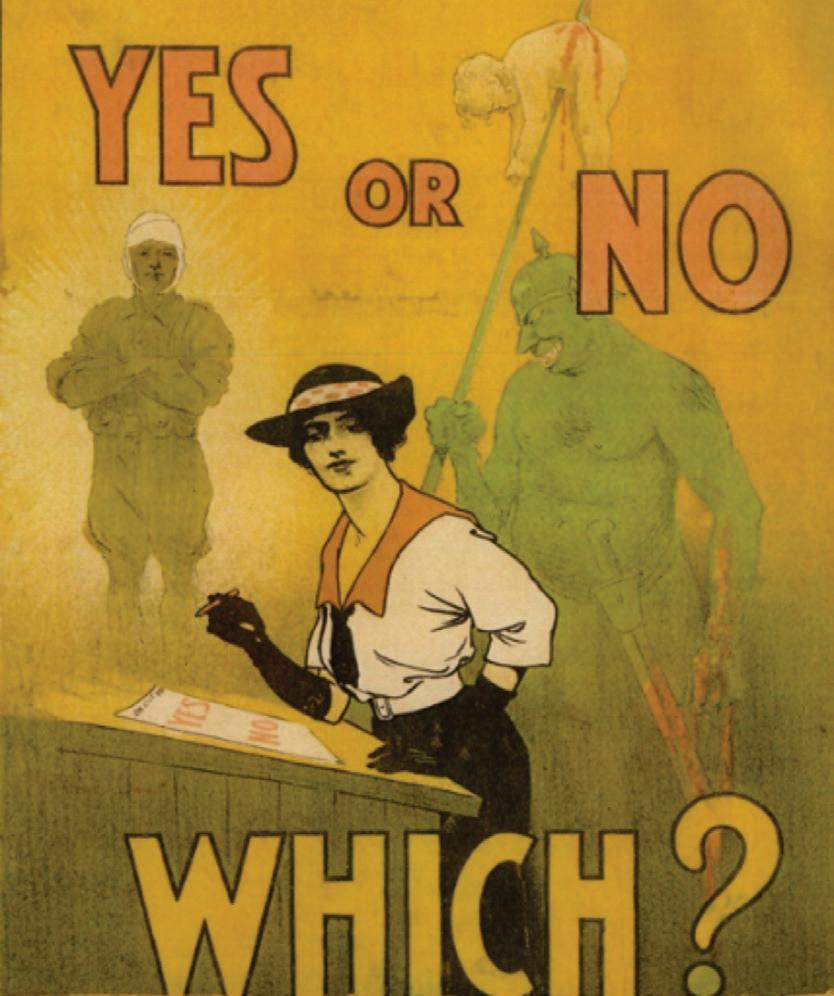
Women also contributed their intellect and their voices to the public debate that erupted in Australia regarding the war and, specifically, the government’s proposal to introduce conscription (calling up men for the army). Contrary to common belief, women proved that they could think politically and campaign energetically in the public sphere. Some women spoke passionately at public rallies in favour of conscription, only to be shouted down by returned soldiers, who argued that no man should be made to experience what they had experienced in the trenches. Other women spoke forcefully against conscription, only to be shouted down as cowards and traitors who would not allow the government to send men who were desperately needed.
Vida Goldstein
One of the most remarkable voices was that of Vida Goldstein, who was a passionate campaigner for women’s
rights and a convinced pacifist (opponent of war). She campaigned to serve in parliament, and stated her ambition to be prime minister. She became chairperson of the Peace Alliance, and in 1915 formed the Women’s Peace Army. She was the most eloquent voice against conscription.
Dora Meeson: artist, feminist, women’s war activist
The women mentioned above all tried to play their part by working within the official structures of nursing and manufacturing. It is much more difficult to find records of the activities of women who worked on a private level, often going against the government by criticising it. These activists played an important role, and their actions deserve to be recognised. One such woman was artist Dora Meeson, who had moved first to France to study, and then to London, with her artist husband, George Coates.
Dora and her husband were also political activists, supporting the ideas of the suffragettes, who were demanding that women in Britain have the right to vote. She painted the union banner for the great Suffrage March of 1908 in London.
Her husband marched with her. He was of a like mind, politically, to her. Meeson wrote:
George and I both threw ourselves heart and soul into the suffrage movement … he was keen on fair play and believed in granting the same facilities to women as to men to further their natural abilities, and he had the very human wish to support anything that would improve the condition of the masses.
Source 8.6.17 Quoted in Richard Haese, ‘Meeson, Dora (1869–1955)’, Australian Dictionary of Biography, 1981, p. 50
Meeson was an independent person, refusing to be limited by social traditions. For example, she used to go out painting among the working men of the Thames riverside. It was during her explorations into the London docklands that she got to know the poor working-class families of the area. After the declaration of war
1 Describe the message of this badge.
in 1914, she was more aware than most people of the real economic difficulty that these poor families almost immediately suffered once the male wage earner was gone, whether he was still on active service or reported killed in battle.
When World War I broke out, Meeson realised that the conflict caused serious hardship for the women left behind in Britain. She noticed that many women and children were being left in poverty by the departure of their menfolk to the front, especially when government payments took months to come through. Accordingly, Meeson worked to help establish the Women’s Police Volunteers, which attempted to help women who were often so desperate that they were forced into prostitution. These volunteers were, on the whole, educated middle-class women who used their greater resources and agency to assist Belgian refugees, and British women of working-class families.
2 Explain the purpose of this badge. Why do you think the Department of Defence issued these badges? Who do you think would wear such a badge and why?
3 Research some further examples of badges issued during WWI. For each badge you identify:
a Describe its message.
b Explain its purpose. Why was it issued? Who would want to wear such a badge and why.
c What does the badge suggest about the values of societ y at the time?

Source 8.6.18 Female Relative Badges were issued to the nearest female relative (usually wives or mothers) of those who engaged in active service overseas during the First and Second World Wars ➜
Key concepts: Sources, evidence, significance
HASS skills: Questioning and researching, analysing
Using historical sources as evidence
Dora Meeson’s painting reminds us that war forces women to endure separation and to take over full management of the home front.
1 Meeson’s painting avoids making the soldier a hero. She places his departure for war in the setting of the family as a whole. How does her painting remind us that war affects all members of society in some way? How might you predict that the various members of this family might be affected by the soldier’s absence?
2 How does Dora Meeson remind us that the experience of separation – and of managing at home – has traditionally been a significant part of women’s role over the generations?
Focus: how does this primary source fit into the context of World War I?
3 When this soldier was departing for the front in 1916, the situation was quite different from the hopeful, optimistic conditions of 1914. What was the nature of the war to which this man knew he was going?
Key concepts: sources, evidence, perspectives, empathy, contestability
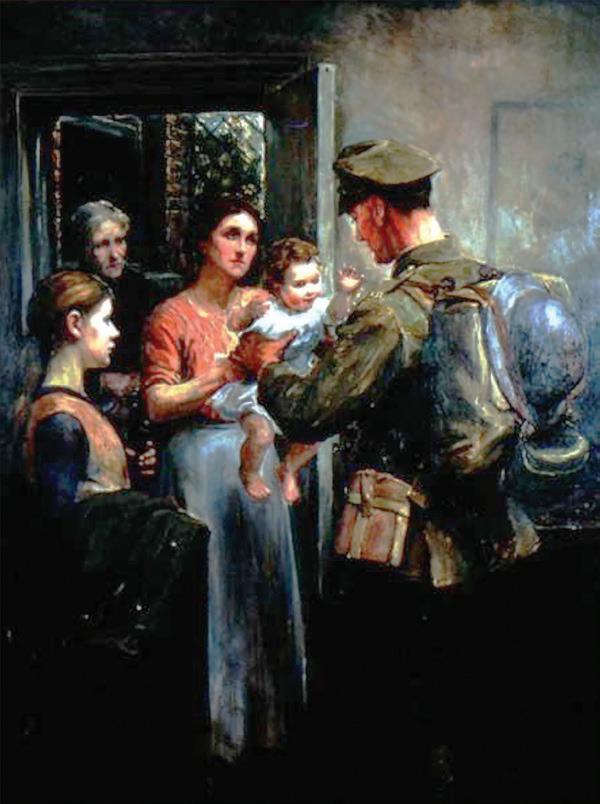
HASS skills: questioning and researching, analysing, evaluating, communicating and reflecting
1 In what ways were governments forced to exercise more control over their people during World War I?
2Recall the proportion of families in Australia that were affected by the casualties of war.
3 What forms of propaganda existed in Australia during WW1?
4 Define censorship in the content of war.
5Explain why conscription was not introduced in Australia in WW1.
6 What was the Spanish Flu?
7 When did BHP start making steel in Australia, why?
8 Why did strikes occur in Australia during WW1?
9Outline the roles women served in Australia during WWI.
10 What changed for women in employment during WW1, and what stayed the same? Interpret
11 To what extent can it be said that World War I ‘created’ the idea of the home front?
12 According to the graph in Source 8.6.20 of Australian enlistments in the war, which campaign inspired the greatest rise in enlistments?
Enlistments during the war
Source 8.6.20 The monthly total of enlistments during the war from September 1914 to November 1918. Note the peaks and troughs, and the gradual decline in numbers. ➜
13 How important was the work of women in the munitions industries in Britain and Australia?
14 How does the stor y of the 24 Australian female doctors who went to the front illustrate the prejudices against women at this time, and how does it demonstrate their strategies to overcome them?
15 What does the stor y of the nurses’ memorial (Canberra, 1999) illustrate about the problems of commemorating women’s contribution to the war effort?
Argue
16 Consider you were a worker during World War I. What arguments would you use to support your case for higher wages during this time?
Apply 8.6 questions
1 Read the additional content: ‘Postcard propaganda: Putting the best spin on the war’ in the Interactive Textbook. To what extent were official war postcards more a form of propaganda than communication?
2 Investigate the experiences of the 7000 people who were suddenly declared to be ‘enemy aliens’ and imprisoned. Describe the conditions they endured, and then conduct an argument as to whether Australia’s treatment of them was a regrettable necessity or a tragic and cruel overreaction.
3 Investigate the iron and steel industry in Australia today. How is this industry different to what it was during World War I? Why?
4 In 1916, Australians earning over £156 a year had to pay income tax for the first time. The average annual earnings in 1916 were about £138. Find out how much an Australian worker needs to earn before they pay income tax today. Is this comparable? Why/why not?
5 What was the Soldier Settlement Scheme? Find out where in Western Australia this scheme operated, and how successful it was.
Key concepts: sources, evidence, cause and effect, significance, empathy
HASS skills: questioning and researching, analysing, evaluating, communicating and reflecting
• Why do we commemorate wars? Should we commemorate wars?
• What is the most appropriate way of honouring and remembering those who have served our nation?
• What is meant when historians refer to the ‘Anzac myth’?
History courses may ask us to study ‘different historical interpretations and contested debates about World War I and the significance of Australian commemorations of the war’. You may wonder how Australians could possibly have different views of the commemoration of World War I. For example, there is absolutely no doubt that Australia made a very significant contribution to the Allied war effort, far out of proportion to its relatively small population. There is also no
doubt that Australian troops fought bravely in the same horrific conditions of modern warfare that their allies also suffered. Finally, there can be no debate about the quality of their service and achievement, because Australian forces really did perform impressively in the tasks assigned to them. It properly falls to us, the present generations, to make ourselves aware of what they suffered and to acknowledge how much they achieved. What, then, is there left to debate?
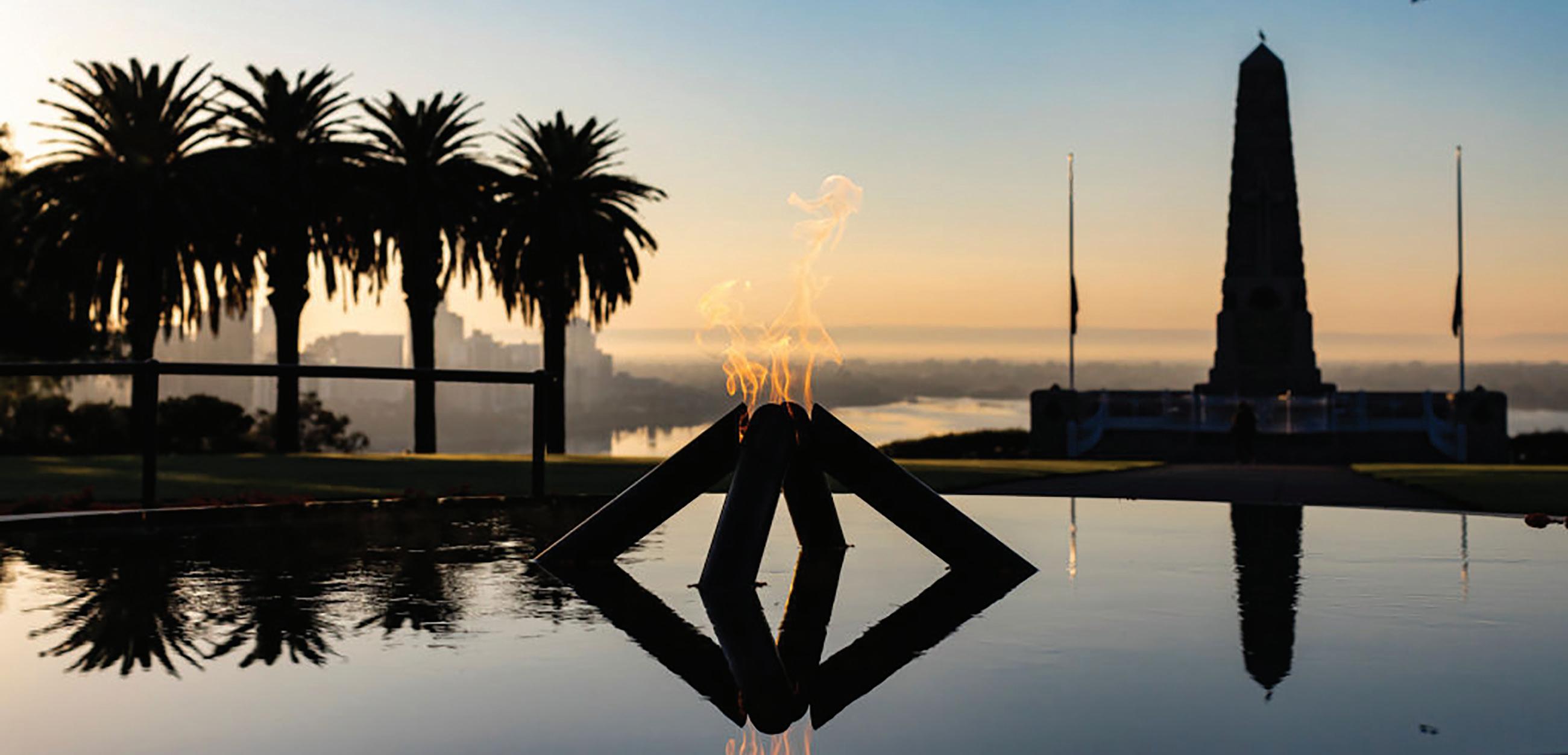
How did men and women feel when the guns finally fell silent on 11 November 1918? Was there wild cheering, relief and excitement to be going home?
Perhaps. Curiously, though, many men were actually quite subdued. For example, the veterans interviewed in the film They Shall Not Grow Old noted that people were very quiet, almost gloomy. One reason for this was that they wondered about why so many people, including their fellow soldiers, had to die. For some, however, they were sad because they had actually enjoyed life in the services. More than one admitted that, despite all the horror and danger, the war had been one vast, exciting adventure, where close friends were made and their lives were strictly controlled and directed. Others admitted they simply wondered what they were going to do in life now. They had nothing planned; the war had seemed set to go on forever.

a pleasure, but often it was not. German soldier and writer Erich Maria Remarque was deeply distressed when he went home, because he found that civilian life had been carrying on much as normal, and that people had absolutely no idea of what he had been through at the front. The British soldiers interviewed in They Shall Not Grow Old told heartbreaking stories about how, when they tried to express what they had been through, people just did not want to know. In Britain, there were no jobs available, and businesses put up signs saying, ‘No veterans need apply’.
The soldiers had assumed that they would at least be recognised for serving their country. They were now devastated to discover that nobody even wanted to talk about the war. Nobody was interested, and everyone just wanted to get on with life. The decade of the Roaring Twenties was, for some, one in which people enjoyed life and forgot the war altogether. These men therefore bottled up their dark memories and lived with them, hauntingly, for the rest of their lives.
We can learn from this that Australians have a duty to acknowledge those who serve.
To properly understand what these men and women went through, we need to trace the last part of their story: going home. This should have been a relief and
Many Australians are, however, rightly cautious about commemorating a war, because they fear that this could so easily tip over into glorifying war. Glorification of war is anything that suggests that war is good, heroic, adventurous or a positive experience for a nation. These ideas are indeed potentially dangerous, because they might make a nation more willing to use armed force rather than diplomacy and negotiation to resolve disputes.
More importantly, those who have served would want us to tell the truth about the war. The artist Will Dyson, for example, was a patriotic Australian who greatly admired our soldiers and their achievements. Having exposed himself to danger by sketching at the front line, he was one of the best informed about the
What was the final cost of the war?
truly terrible nature of this war. He wrote to Charles Bean:
I’ll never draw a line to show war except as the filthy business it is
Source 8.7.3 Will Dyson, quoted in Ross McMullin, Will Dyson: Australia’s Radical Genius, 2006 ➜
Source 8.7.4 Comparative percentages of troops mobilised and troop deaths across six key nations ➜
It is a curious fact that Anzac Day has not always received the attention that it does today. During the 1960s, for example, when the anti-war movement reached its peak in response to the Vietnam War, peace activists often stated that Anzac Day commemorations were just a glorification of war and militarism. Fewer veterans felt proud to march, and crowds at services were small, and usually confined to families of veterans.
In recent years, however, commemoration of Anzac Day, and of Australia’s experience in war, has enjoyed
enormous popularity. It is unusual that the further we get away from the event, the more it has become deeply meaningful to many Australian people. Far from forgetting – as human memory tends to do with time – we now feel deeply moved by this commemoration.
Anzac Day is a good moment to pause and reflect on why we commemorate this event and how we can best do so. More than anything else, we are paying a debt of gratitude to young men and women who voluntarily went to war. This is in no way a glorification of war itself, nor praise of the spirit of militarism. Quite the opposite: we are being asked to look directly at the horror of war and draw lessons from it.
Military historian Peter Dennis states:
Anzac Day commemorates the landing at Gallipoli of Australian forces on that day in 1915; it is the day on which Australians remember the nation’s war dead and all those who have served and suffered in war; and it is also the day on which Australians remember what it is to be Australian. It is a day of both solemn ritual and boisterous celebration.
Source 8.7.5 Peter Dennis, The Oxford Companion to Australian Military History, 2008, pp. 32–7
Commemoration is not the same in all countries. In Australia, Gallipoli is the focus of our national commemoration. Those other Anzacs, the New Zealanders, respect a quite different battle. For them, their great national achievement was the Battle of Chunuk Bair.14 In Britain, America and France, people have generally not even heard of Gallipoli, least of all the disastrous campaign of 1915.
The broader Australian understanding of the Anzac Legend is said to have begun with the writings of Charles Bean, the official war correspondent at Gallipoli in 1915. Whilst at Gallipoli, he began writing reports that were quickly made public at home in Australia. He later published The Anzac Book, which contained pieces of writing, poetry and drawings collected from the Australian soldiers. Bean travelled with the AIF to France in 1916 and continued to send reports. Bean went on to write the 12 volume The Official History of Australia in the War of 1914–1918.
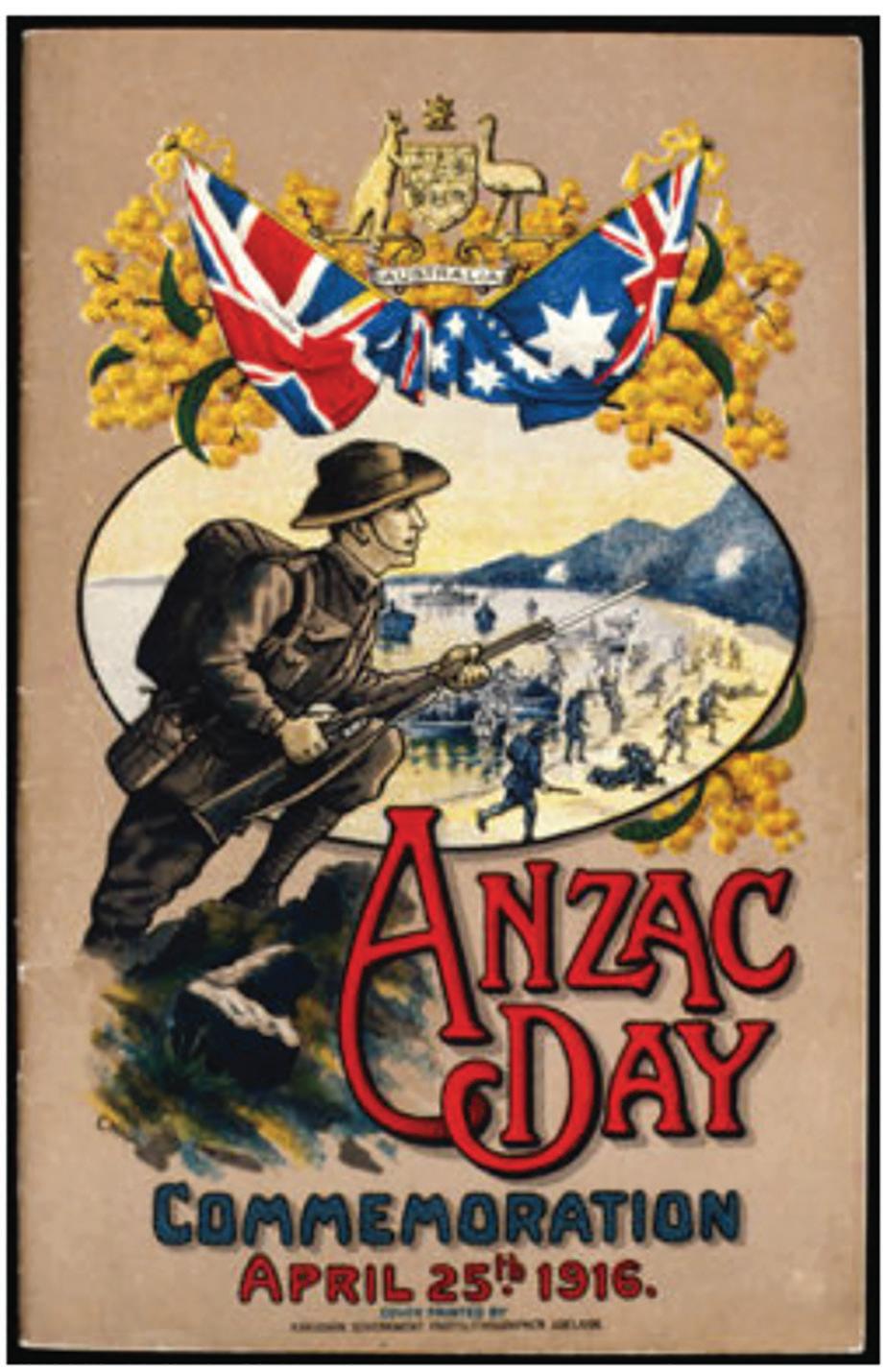
Source 8.7.6 Poster of the first Anzac Day, 1916 ➜
It was Bean’s view that the Australian character was on display at Gallipoli and on the Western Front. His writings connected the key features of Australians at war with that of the Australian bushman. These features included bravery, resilience, mateship, good humour, resourcefulness and a natural questioning of authority. Bean did not dwell upon the harsh realities of war, and presented the Australian soldiers in a traditional, hero-like fashion.
In the case of Australia, our commemoration of World War I actually began while the war was still in progress. This meant that so many important memories, as well as important objects, were saved even before the war ended.
We owe this to Charles Bean. While he was still reporting as war correspondent to Australia, he began to imagine the idea of a new type of museum to preserve historical objects and, more broadly, save the memories and experiences of the men and women who had fought and suffered.
14 For more information about New Zealand’s Anzac Day, see Colin Townsend, ‘The Legacy of Chunuk Bair’, Wartime, Winter 2001, Issue 14.
The Australian Government also realised the importance of gathering and saving artefacts (historical objects). Captain John Treloar was appointed head of the Australian War Records Section, with a responsibility to select and save both documents and objects that could later be used to tell the story of this war.
Empathy is an understanding of the past from the point of view of a particular individual or group, including an appreciation of the circumstances they faced, and the motivations, values and attitudes behind their actions. Pop this concept into your memory bank – at the end of this book is an activity that will test your understanding of this, and other key HASS concepts!
Developing historical concepts and skills 8.4
The skill of historical empathy
Preparation: Take some time to research Charles Bean and especially why he came to believe, even when World War I (the Great War) was still in progress, that it should be commemorated. You may want to start with the details on Bean found earlier in this chapter.
Activity: Imagine that you are a newspaper reporter sent to interview Captain Charles Bean about his work during and after the war. Your aim is to write an article about the idea of a national war memorial and its purpose. How might Bean have responded to the questions below? Complete the interview by recording what he would respond if questioned today.
1 Captain Charles Bean, you have become a leading figure in Australia’s history of the Great War. To what extent do you believe you are a reliable witness to this enormous conflict?
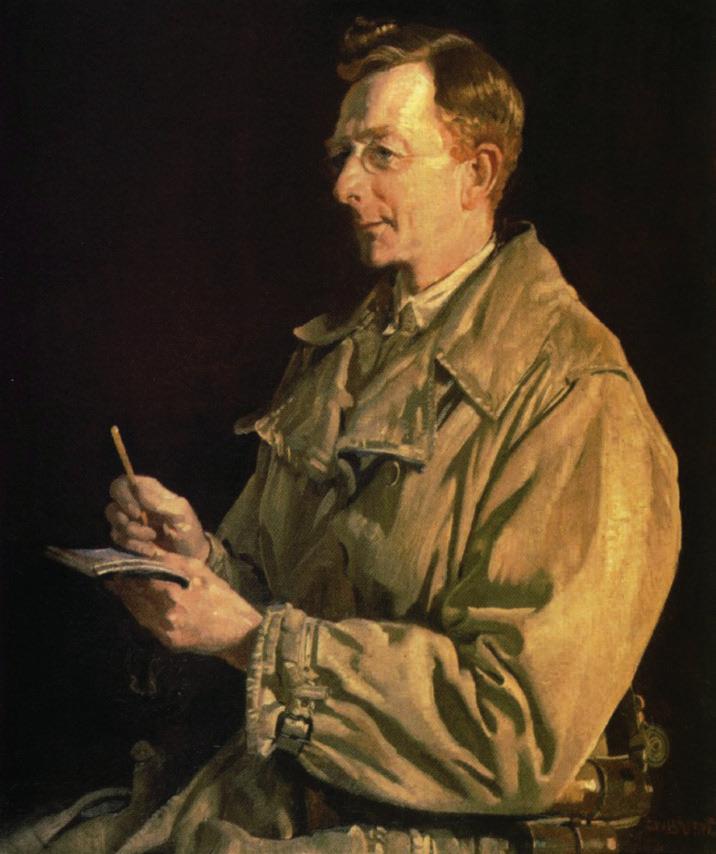
2 Given that you held the rank of officer, and did not have to do any actual fighting, are you sure that you are really equipped to understand what the common soldier went through? How much of the real fighting did you see?
3 When, and why, did you conceive the idea of creating a national war memorial?
4 Why do you believe that Australia should spend time and resources on building a memorial to this terrible war? Would we not be better advised to put money into directly helping the wounded veterans who are now coming home?
5 Is it possible that a national war memorial is really going to glorify war instead of showing its horrors and tragedy? How do we know that it will not inspire future generations to think of war as a glorious adventure and a good way of resolving international conflict?
Key concepts: perspectives, empathy, contestability
HASS skills: questioning and researching, analysing, evaluating, communicating and reflecting
Not all accept the version of Australians as depicted in Bean’s writings. Some find it hard to believe that the Australians were all such heroes, without fault or vice, and it is now clear that other countries developed similar versions of the Anzac Legend for their own soldiers, such as in New Zealand and Canada.
Some of our most eminent historians of Gallipoli, such as Professor Ken Inglis and Dr Martin Ball, show enormous respect (and sympathy) for the men and women who served at Gallipoli, but they are also careful to dispel the many myths that have gathered around the Gallipoli experience. These historians insist that the greatest respect we can pay these men and
women is to clear away the distortions and drill down to find out what really happened during that fateful campaign.15
For most Australians, our nation’s achievements in war are a matter of enormous interest and for many, of national pride. And yet there are other voices – equally credible – who argue that the reality of Australia’s war service has been exaggerated and embellished to the point it has become a myth, one that needs to be questioned and corrected.
Military historians, such as Robert Fleming, have helped establish some of the realities. First, Australia definitely made a big contribution to the war effort, far greater than its size would suggest.
Robert Fleming wrote:
Australia’s role was remarkable, given the nation’s comparative population – in 1914, barely 7 million (compared to 40 million in France, 46 million in Britain, and 68 million in Germany).
Second, it cannot be denied that Australian commanders and soldiers made a very significant contribution to bringing the war to an end in 1918. At first, these soldiers might have felt that they were simply volunteering to help out the Allied war effort but, as the British commanders readily admit, our troops won crucial and deadly battles that helped win the war.
The Australian Army’s participation in World War I began as a loyal response to a call to protect British Imperial interests, but became a significant contribution to the Allied victory over the German and Ottoman armies.
Third, there is no doubt that the bravery and competence of Australian troops made the world more aware of Australia as a nation, and won admiration and respect. Some historians would also say it gave the Australians themselves a new sense of identity as a nation, not just as Victorians, Tasmanians or Western Australians.
The response in 1914 was the more extraordinary in that the Australian nation was only thirteen years old, and had not yet created a unified sense of itself. Each of the six colonies that had recently federated to become states of the Commonwealth of Australia had its own unique history, characteristics and cultural identity.
Source 8.7.9 Robert Fleming, The Australian Army in World War I, 2012, p. 3 ➜
15 To read more about this issue of myth versus reality, see Ken Inglis, Anzac Remembered, 1998.
MARILYN LAKE AND HENRY REYNOLDS
In 2010, historians Marilyn Lake and Henry Reynolds published a book with the startling title What’s Wrong with Anzac? Given the respect we owe to the men and women who have served as Anzacs, it may seem curious to question their contribution. But like all things that unsettle us, it is important to establish exactly what these critics meant.
Critical issues: did war help make the Australian nation?
The main issue that has caused great debate is the common idea that Australia’s involvement in World War I somehow ‘made our nation’. Some would argue that Australians proved themselves in the eyes of the world, and especially of Britain, and finally grew up to a sense of national identity.
Others would disagree, arguing that Australians had already defined themselves, constitutionally, in 1901, with the Federation of the colonies into states. The Anzacs may well have won the respect of their British commanders, but there is no evidence that the national identity was forged by the experience of war. Indeed, a sense of an Australian national identity had emerged even earlier, in the 1880s and 1890s.
The militarisation of Australian history?

Source 8.7.8 Statue of a soldier at an Anzac war memorial in Queensland ➜
The second big question is the idea that the Australian Government –encouraged by former Prime Minister John Howard – has sponsored an intensive campaign of publications with public money to focus attention upon the Anzac Legend and upon Australian military history. This, say the critics, means that military history is taking over our national history, excluding other important achievements made by Australians, especially during peacetime.
Marilyn Lake and her co-authors write:
Like the many Australians who are concerned with the homage paid to the Anzac spirit and associated militarisation of our history, we are concerned about the ways in which history is used to define our national heritage and national values. We suggest that Australians might look to alternative national traditions that give pride of place to equality of opportunity and the pursuit of social justice: the idea of a living wage and sexual and racial equality. In the myth of Anzac, military achievements are exalted above civilian ones; events overseas are given priority over Australian developments; slow and patient nation-building is eclipsed by the bloody drama of battle; action is exalted above contemplation. The key premise of the Anzac legend is that nations and men are made in war. It is an idea that had currency a hundred years ago. Is it not now time for Australia to cast it aside?
Source 8.7.10 Marilyn Lake et al., What’s Wrong with Anzac?, 2010, p. 167
It is true that there has been a publishing boom in books on Australian military history, as we can readily see just by examining the shelves in any commercial bookshop. We know from letters to the editor in newspapers that some Australians, at least, feel that this has gone too far, and that we are no longer reading much about aspects of our national history other than war. In 2024, it was revealed that the Morrison government had allocated over $500 million to refurbishing the Australian War Memorial in Canberra, while other museums around Australia were struggling for funding. How Australia will seek to commemorate World War I will be a subject of debate for many years to come.
historical concepts and skills 8.5
Evaluating the historical significance of an event
Some study tips
When you are preparing for an essay, test or examination in History, there is one easy way to make sure that you have a good understanding about your period of study. You might have a mass of detailed notes in your exercise book or computer, but you may have trouble learning them. You need an instrument to make them simpler, clearer and easier to learn.
To solve this problem, draw up a table with a grid showing the date in one column, then a brief description of the event (what happened), then a note on whether this event caused change or continuity, and finally, most importantly, what the significance of the event was.
A good technique is to ask yourself some simple questions to get your thoughts going. For example: Was this event a victory for the Allies or was it a disaster? Why? How did it change the course of the war, if at all?
The skill of chronology is one of the essential skills of History. It is important to know the names of key events and the date on which they occurred. You need to be able to spell the name of the event and to give an accurate date for it. As a general rule, it is good to explain events in the order they happened, so that your examiner knows that you do know their sequence. You can, however, go back and forth in time if this helps you make a point in your argument.
If you make this grid in hard copy, you can place it on the wall of the room where you study, and learn it by heart simply by glancing at it several times. This is called ambient learning and is one of the most powerful learning techniques.
If you do this, you will be able to explain a sequence of events in the order they happened and, more importantly, make an intelligent commentary on their significance. You will walk confidently into the examination not just with facts but with a line of argument and analysis in your mind.
One of the most powerful ways of making a good historical argument is evaluation, which means weighing up the value of something. You can do this by thinking about an event and deciding whether it has been a change from what existed before or a continuation of it. Hint: in some cases, one event can be both a change in one sense and a continuity in another.
More importantly, it is absolutely vital to be able to explain the significance of an event. Instead of simply listing events in the order they happened, we try to explain their significance. What effect did the event have?
To sharpen your analysis, ask yourself some questions. Did the event have any positive outcomes? Did it give one side in the conflict an advantage? Did it introduce a whole new dimension to the war – for example, by introducing a new weapon? Was the strategy for this battle effective or disastrously ineffective?
Evaluate your progress through this chapter by copying out and completing this table. Try to determine the historical significance of each of the following events. The first example has been filled in for you.
1914
June Assassination at SarajevoA Bosnian nationalist shoots Archduke Franz Ferdinand in protest against Austrian authority.
AugustGerman invasion of FranceGerman forces cross the border into France and beat back the French army in a rapid advance.
SeptemberThe Battle of the MarneThe French rush troops to meet and push back the advancing Germans.
1915
JanuaryFirst use of gas by GermansThe Germans try to solve the problem of trench warfare by using poisonous gas against the Allies.
FebruarySeptember The German U-boat campaign against Allied shipping
The Germans use packs of submarines to try to prevent ships bringing vital supplies to Britain from America.
April Allied landing at GallipoliBritish, French and Anzac forces land at Gallipoli to open a new front in the war.
May Sinking of Lusitania
1916
A single political murder set in motion the entire machinery of European alliances, provoking war.
A German U-boat torpedoes the unarmed passenger ship Lusitania, which sinks in 20 minutes.
JanuaryAllied departure from GallipoliUsing ‘the silence ruse’, the Anzacs evacuate Gallipoli without casualties.
February, continuing until December The Battles of VerdunA running series of bloody battles, in which the French had 400 000 casualties, and the Germans 350 000 casualties.
May The Battle of JutlandA massive sea battle between the Royal Navy and the German navy, with heavy losses on both sides.
July, continuing to November The Battle of the SommeThe British launch an attack against German positions, sending men running across open land against machine guns.
1917
February Germany resumes its campaign of unrestricted submarine warfare Germany decides to sink all ships going to Britain, without warning.
April USA enters WWI In response to U-boat activity and negotiations between Mexico and Germany, President Wilson declares war on Germany.
OctoberAttack on BeershebaSuccessful break of the Turkish lines by British, Australian and New Zealand troops, including the Light Horse charge.
1918
March Russia pulls out of the war (Treaty of Brest-Litovsk)
The new Communist regime in Russia makes a separate peace treaty with Germany.
March to MayThe Spring Offensive (or Kaiser’s Battle or Ludendorff Offensive) A massive German attack breaks through Allied lines.
Key concepts: cause and effect, significance
HASS skills: analysing, evaluating
Go online to access the interactive section review and more!
Section 8.7 review
8.7 Review questions
Recall
1Recall when the first Anzac Day commemoration was held.
2 Who was Charles Bean?
3 What is the difference between a myth and a legend?
4List four qualities of the Australian soldier that have come to be associated with the Anzac Legend. For each, find one example of actions at Gallipoli that could be used to illustrate the characteristic.
Interpret
5Discuss why Anzac Day is typically commemorated in Australia.
Argue
6 Explain why the view of historians Marilyn Lake and Henry Reynolds could be considered to be controversial.
Apply 8.7 questions
1 There is still a lively debate about how we commemorate Australia’s wars. How would you recommend that our nation best remember and honour wars in the future? Consider these issues:
a Do you believe that the act of remembering a war is the same as glorifying war?
b Do you feel that existing commemorations, such as Anzac Day, the Dawn Service and the Dawn Service at Gallipoli, are the best ways of honouring those who have served?
c Can you explain why some battles (such as Gallipoli, Kokoda) seem to fascinate the general public, while other battles (such as Beersheba) are less well-known?
d How would you explain the fact that public interest in our war service has recently been growing with time, rather than decreasing?
e Do you think that Australians today gain a stronger sense of their national identity by involving themselves in commemorations?
f If there is such a thing as an Australian national character, how do you think this is displayed in times of conflict or crisis?
g Can you think of any new and creative ways in which we might commemorate wars and teach future generations about them?
Key concepts: cause and effect, perspectives, contestability
HASS skills: questioning and researching, analysing, evaluating, communicating and reflecting
World War I was very destructive. It involved some 70 million men and women, of whom nine million were killed in action, and countless more returned home seriously wounded and traumatised. As we have seen, it was the first mechanised war, and the technological advances of the Industrial Revolution were used to develop more and more efficient ways of killing enemy forces.
World War I also changed the face of the nations on Earth. Some states (such as the Ottoman Empire) crumbled, to be replaced by new countries (such as Turkey). The war caused the Communist Revolution in Russia, and the USA overtook Europe as the centre of the world’s economy. Colonialism faltered, and Japan emerged as the power of Asia.
The terrible experience of modern warfare inspired a new field of study called international relations in 1919 and led to the creation of an international body called the League of Nations in 1920, both established with the view of trying to prevent further conflicts of this sort. The failings of the League of Nations, and the Treaty of Versailles, have been seen as the origins of World War II, which affected even more people and more countries, only two decades later.
After working through this chapter, consider the following question:
What were the main factors that made World War I such a significant conflict?
Source 8.8.1 Late in the war, American troops found this abandoned trench and dugout with a lone skeleton staring at the sky from the mud. Bodies often went unburied, since it was too dangerous to tr y to bury them. Graphic images like this have often been censored from the public.

That just about wraps up this topic. How did you feel you went working through the chapter? Before you attempt the following activities, visit the Interactive Textbook to rate your confidence with this topic either online or via a downloadable checklist.
In this chapter, you have discovered how World War I had an impact in Europe, and at home in Australia. How did the war affect Australia in the years that followed?
Historians prefer to break up this sort of question into categories, such as those below. See what you can find out about each of the topics, and then write an essay that responds to the following question: To what extent was Australia in the 1920s shaped by World War I?
Consider:
1 social impact – e.g. Spanish influenza, 1919
2 political impact – e.g. the League of Nations
3 economic impact – e.g. post-war boom.
In each case, see if you can find out not only what happened, but also how it was linked to World War I and how it changed Australia in both the short and long term.
I used to think that World War I was …
Now I understand that …
In this visible thinking routine, you are asked to track the difference between what you knew about the war before starting this chapter and what new understandings you have acquired at the completion of this chapter.
Using these stem sentences, write a paragraph explaining what you now understand, additionally, about the war.
1 a I used to think that World War I was caused by the assassination of Archduke Franz Ferdinand.
b Now I understand that World War I was caused by …
2 a I used to think that World War I was deadly because of guns.
b Now I understand that World War I was deadly because …
3 a I used to think that Australians contributed to World War I by supporting the British.
b Now I understand that Australians contributed to World War I by …
4 a I used to think that women contributed to World War I by staying at home and looking after children.
b Now I understand that women contributed to World War I by …
5 a I used to think that World War I affected the home front by taking away the men.
b Now I understand that World War I affected the home front by …
For each key term or name from the chapter, write a sentence explaining its significance:
• war of attrition
• stalemate
• total war
• sniper
• Charles Bean
• silence ruse
• propaganda.

Analysing the significance of a specific battle in the overall context of World War I
Evaluate the importance of one major battle of World War I in terms of the final outcome of the war and victory for the Allies. In your answer, explain the military situation that existed at the time of the battle, describe what tactics were used and how the battle unfolded, and discuss how and why this battle had an important effect on the course of the war.
In your response, you must substantiate your argument by providing key names, dates, statistics and terms relevant to World War I.
Key concepts: significance
HASS skills: questioning and researching, analysing, evaluating, communicating and reflecting
History has many connections with other subjects in the Humanities. Have you considered how what you have learnt about Australian history and World War I relates to the other topics you will cover this year? Here’s a sample:


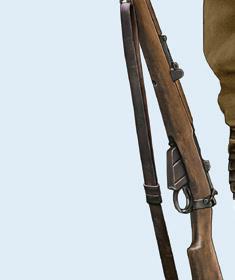
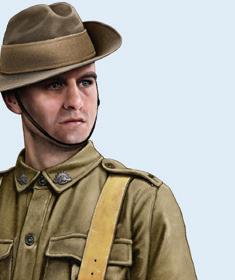



World War I and connections to place – Gallipoli
Travelling to Gallipoli on Anzac Day has been described as a ‘pilgrimage’ in recent times. Why have Australians formed such a deep attachment to this part of Turkey? What is the attitude of the Turkish people to this? Find out what has been done in Gallipoli to cater for these visitors.
Using Gallipoli and the sites of Australian battles at Beersheba and the Western Front, explain what is meant by a ‘cultural attachment to place’.
As you have seen in these History chapters, voting rights in Australia developed over time. See if you can make a time-line of this progress. Don’t forget to include advancements in the voting rights of women and Aboriginal Peoples.
What is meant by ‘terra nullius’, and how does it apply to Australian history? What precedents formed the idea, and which decision did most to break the precedent?
Australia’ contribution to the formation of a global economy
Australia has always been a trading nation. How did its main trading partners change over time? Consider the impact of WWI on Australia international trade.
How independent was Australia’s economy prior to World War I, and how did this change when the war broke out? Research the impact of the war on:
• shipping
• the steel industry
• agriculture
• manufacturing.
Use the example of the Australian economy in World War I to explain the dangers of an economy dependent on one key trading partner. What are the advantages of a diverse economy, and a range of trading partners?
Throughout your studies this year, we have asked you to take special notice of certain key concepts across the four HASS subjects. In the following activities, we would like you retrieve what you know from your memory bank about these key concepts, and demonstrate your understanding of the concepts in writing.
We hope the activities present another opportunity for you to see how the key concepts are related across the HASS subjects. We also hope the activities allow you to summarise your work in HASS in Year 9 and can be looked at again to revise your studies when you start Year 10!
Activity 1 – Create a summary of how the concepts you’ve learned about this year connect to each other
STEP 1: Go through the chapters and identify what each of the concepts in the table below mean. Re-read the definition of the concepts in this book first. Then look up a definition of each concept. Now copy and complete the table below by defining each concept in your own words (one has been done for you):
Concept Definition
Empathy
Democratic values
Justice
Interdependence
Specialisation
Scale
Cause and effect
Historical empathy leads to an understanding and an explanation of why people in the past acted as they did. Empathy involves appreciating historical context and chronology as part of an evaluation of past events.
STEP 2: Identify links between these concepts by grouping them into pairs or groups of three or more. For example: you might decide that empathy, democratic values and interdependence are connected because one of the core values of democracy is equality. To achieve equality, we have to try to understand each other (showempathy). Interdependence in the global economy also works best if we can understand each other better. To understand each other better we need to have empathy for people and communities and cultures that are different to our own.
Once you have decided which concepts you are connecting together, write out your ideas in full sentences until you have used all of the concepts in the table. Share your sentences with a partner. How are the connections you made the same and/or different to your partner’s? Give your partner two pieces of warm (positive) feedback and offer two ideas that might help them improve their sentences.
STEP 3: Create diagrams that explain how you think these concepts connect, AND use one example to support your idea about why they are connected. Use arrows to show these connections. On one side of the arrow, write your reasons for making this connection; on the other side of each arrow, write the example that demonstrates this connection (there is an example of how to do this in the diagram below).
The concept of democratic values is the shared values of Australian citizenship, the diversity of Australia as a multicultural and multi-faith society, and factors that shape identity. It is about equality, tolerance, popular sovereignty and the common good.
Reason: Economic interdependence has included exploitation of workers in developing nations by multinational companies from developed countries.
Example: Fair trade seeks to protect workers from this kind of exploitation. Fair trade is an example of empathy and ethics being applied to achieve better equality for workers in poorer nations.
Empathy means identifying differing views and how individuals and groups are influenced by the beliefs and values of their society.
Reason: Not all groups in society were affected equally by the economic downturn caused by the COVID-19 pandemic. Many of the worst affected industries were dependent on tourists.
Example: Tourism is one of the industries that employs young people. It and many other industries that also employ young people were badly affected, including retail, hospitality and entertainment. Young people were therefore unfairly and unequally impacted by the COVID-19 economic shutdown.
Interdependence is how participants in the global economy interact.
Reason: The actions of one sector of the global economy impact on other sectors, understanding (demonstrating empathy) that there are differences between the access sectors have to resources can help in times of crisis
Example: Some poorer countries could not buy or produce COVID-19 vaccines. The Australian Government provided vaccines to Papua New Guinea so that it could vaccinate doctors and healthcare workers to carry on the fight against the pandemic. This kind of action contributes to the common good.
The concept of democratic values is the shared values of Australian citizenship, the diversity of Australia as a multicultural and multi-faith society, and factors that shape identity. It is about equality, tolerance, popular sovereignty and the common good.
REASON: Economic interdependence has included exploitation of workers in developing nations by multinational companies from developed countries.
EXAMPLE: Fair trade seeks to protect workers from this kind of exploitation. Fair trade is an example of empathy and ethics being applied to achieve better equality for workers in poorer nations.
EMPATHY means identifying differing views and how individuals and groups are influenced by the beliefs and values of their society.
REASON: Not all groups in society were affected equally by the economic downturn caused by the COVID-19 pandemic. Many of the worst affected industries were dependent on tourists.
EXAMPLE: Tourism is one of the industries that employs young people. It and many other industries that also employ young people were badly affected, including retail, hospitality and entertainment. Young people were therefore unfairly and unequally impacted by the COVID-19 economic shutdown.
REASON: The actions of one sector of the global economy impact on other sectors, understanding (demonstrating empathy) that there are differences between the access sectors have to resources can help in times of crisis
EXAMPLE: Some poorer countries could not buy or produce COVID-19 vaccines. The Australian Government provided vaccines to Papua New Guinea so that it could vaccinate doctors and healthcare workers to carry on the fight against the pandemic. This kind of action contributes to the common good.
INTERDEPENDENCE is how participants in the global economy interact.
CHALLENGE: can you connect ALL of the concepts in a diagram like this?
Activity 2 – Writing task: using key concepts meaningfully
In your studies of the Humanities and Social Sciences, you will need to confidently and correctly use the terms related to your subject. Write a short response to the question below, structured in an extended response that has at least four paragraphs (including an introduction) and using all the key concepts listed. Ensure that your use of these terms shows your understanding of what each term means. Ensure that your paragraphs are structured properly (hint: use the rubric from the Year 7 ‘Pulling it all together’ task to remind you how a paragraph is structured). Also make sure that you use evidence to support your ideas (hint: use the examples you collected from the diagrams you constructed for Activity 1).
Question: Identify and discuss how the concepts you have learnt in HASS over Year 9 relate to each other. Use these words correctly in your answer:
• democratic values
• justice
• specialisation
• interdependence
• interconnection
• scale
• cause and effect
• empathy.
HINT: The question is asking you to do more than define each of these concepts and then put these definitions together in 500–750 words of three to four paragraphs. To answer the question effectively, using well-constructed paragraphs, you will need to go through several steps:
STEP 1: Identify the key words of the question. Highlight, underline or circle them. These will form the most important parts of your response.
STEP 2: What do the words ‘identify and ‘discuss’ in the question above mean? Define them both. Write down these definitions.
STEP 3: Use the sentences and diagrams you constructed in Activity 1 to help you plan how you will address the key words in the question (identified in Step 1) in your response. To make an effective plan, you might draw a flowchart, brainstorm or use a graphic organiser. You might need to make more than one plan before you are happy with your final ideas.
STEP 4: Before you start writing, analyse the assessment rubric for information on how you might structure a response that scores high marks. Highlight the key ideas in the right-hand column (the 5-mark column) of the assessment rubric, so that you know EXACTLY what is expected of a response that gets top marks.
QUICK REVIEW: Does the plan you wrote for Step 3 help you get the best marks on the marking key? If the answer is yes, start writing. If the answer is no, go back and adjust your plan. Ask a partner and/or your teacher for feedback on your plan before you start to write.
Assessment rubric: Using key concepts meaningfully
Word limit: 500–750 words
Introduction The introduction does not provide a clear indication of the response to the task or is not attempted.
Topic sentences The topic sentences are unclear and appear unrelated to the task.
Evidence Little or no attempt has been made to use evidence.
The introduction is somewhat clear and explains the intention of the argument. No summation of evidence is provided. The introduction is clear and some indication of the evidence that will be provided is listed. A general indication of the main ideas of the response may be included.
Not all topic sentences are accurate, clearly address the task or support the introduction.
Some attempt has been made to use evidence; however, it appears generalised and may be inaccurate.
Some topic sentences are accurate, satisfactorily address the task and support the introduction.
There is an acceptable level of supporting evidence that is mostly accurate. Evidence may not consistently be used to support the argument.
States the topic/ question and provides some relevant background information. An indication of direction of the argument of the response is provided.
Most topic sentences are accurate, specific, clearly address the task and support the introduction.
Uses relevant evidence with accuracy. Uses evidence at some points where it provides support for the argument/ viewpoint.
Defines the focus of the topic/question, defines key terms and provides relevant background information. Provides a clear direction of the response in terms of line of argument/ viewpoint.
All topic sentences are accurate, specific, clearly address the task and support the introduction.
Uses relevant evidence with accuracy and detail throughout. Uses evidence effectively at points where it provides support for the argument/viewpoint.
Linking statements No linking statements or a conclusion are included within the response.
Effort and organisation
The response is incomplete or disorganised. No attempt to check spelling and grammar, indicating no planning, drafting or proofreading before submission.
Some linking statements are included. Limited attempt at a final conclusion has been made.
The response is poorly presented, disorganised and contains several spelling and grammatical errors, indicating little planning, drafting and proofreading before submission.
Most of the response contains linking statements between paragraphs. Final paragraph contains an attempt at a conclusion.
The response is satisfactorily presented, contains some spelling and grammatical errors, indicating limited planning, drafting and proofreading before submission.
Linking statements make a connection between paragraphs. Final paragraph contains a brief conclusion.
The response is well presented, contains few spelling and grammatical errors, and shows evidence of some planning, drafting and proofreading before submission.
Linking statements make a clear connection between paragraphs. Final paragraph contains a strong conclusion.
The response is neatly presented, checked for spelling and grammar, and shows evidence of planning, drafting and proofreading before submission.
Chapter 1: Shaping voter decisions
balance of power a situation of having enough representatives and/or senators to determine which of the two largest parties or coalitions will win a vote in Parliament.
campaign an organised series of events and advertising with the aim of having voters choose a particular candidate coalition when two or more political parties join together to create a larger group capable of forming government conscience vote a vote in parliament on bills or issues that can be made by an individual’s own beliefs and values, without following or aligning to party policy crossbench a term used to describe independent or minor party members that are not members of the governing party. They sit in the bottom of the U shaped benches in the Houses of Parliament.
fake news deliberately misleading or false news reports
free enterprise a belief that businesses should operate with limited regulation by governments
ideology a set of beliefs about how a country is best run and its political system organised
independent a member of parliament who does not belong to a political party
institution an organisation used by political leaders to gain power or rule a country (e.g. a public service department, police or the courts)
interest/pressure groups groups of people formed to promote change to the law in a particular area or issue
motion of no-confidence A government in a Westminster system such as Australia must maintain confidence of the lower house (Representatives). A motion of no-confidence can be called against the government and a vote taken from all members. If a government cannot achieve a majority then they are expected to resign or call a dissolution of the House to move towards election.
party platform an outline of a political party’s aims, values and the policies they intend to implement if elected to government policy principles that are followed or a proposed course of action to be taken by a group, an individual or a political party rule of law a concept in which all people, institutions, parliaments and governments are accountable to the law. The laws are applied equally, no matter the status of individuals. No one can be above the law, including the lawmakers.
system of government how the institutions used to gain power and rule a country are organised. There are many different systems of government, including democratic and authoritarian governments
Chapter 2: The Australian court system adjudicator a tribunal, magistrate, judge (alone) or judge and jury who decides the outcome of a legal case presented to them adversarial system a system in which two parties present a legal case before an impartial adjudicator who will make a decision in favour of one party
alibi a statement that claims an individual was somewhere else when a crime was committed
liberal democracy a system of government that is a representative democracy and follows the rule of law.
media organisations that publish or broadcast information
balance of probabilities a standard of proof in a civil trial in which the adjudicator (magistrate or judge) must determine based on the facts and evidence which party’s case is more likely
beyond a reasonable doubt a standard of proof in a criminal trial in which the adjudicator (magistrate, judge or jury) must have no doubt or there can be no other logical explanation based on the facts and evidence presented in court that the accused committed the crime bribery the payment of money or giving advantage or benefits to someone in an official position to influence them to behave or act in a way contrary to their duties civil law law that applies only to those who seek a remedy. These are disputes between individuals or individuals and organisations. A wrongdoing has been committed against a party and that party seeks compensation or damages from the person accused of the wrongdoing. This is referred to as tort law coercion the use of force or threats to persuade an individual to do or say something
common law judge-made law; decisions of cases recorded as reference for future cases compensation a payment made to an individual when another has wronged them court an institution for parties to present a case including evidence before an adjudicator who will decide the outcome criminal law law that applies to all people in a community where negative actions and behaviour are deemed contrary or against the values of society. They include theft, burglary, and arson. The consequences are given by the courts and include fines, imprisonment or community service. damages a monetary form of compensation for loss or injury.
forensic evidence evidence gained at a crime scene, such as DNA, fingerprints, bullets and firearms, as well as computers and hard drives, that can establish key facts in a crime and connect suspects or individuals to crime scenes
hierarchy a system where groups or institutions are ranked according to the authority or power they have impartial unbiased or unprejudiced. Not giving favour to any party in a court.
independent freedom from influence or authority of another indictable offences serious offences defined as crimes in the Western Australian criminal code that must be heard before a judge or a judge and a jury. The punishments are more severe.
judge the impartial adjudicator in a District or Supreme Court
judicial review principle of justice in which a case is tested on its legality and if it was conducted in fair and just matter judiciary the branch of government charged with administering the law and judging the validity of laws created by parliament. This is also known as the court or legal system.
jurisdiction the authority given to a legal institution to make judgments regarding certain areas of law or in particular locations (for example, the Western Australian Magistrates Court can only hear simple offence cases that have occurred in Western Australia)
defamation a branch of civil law in which individuals can seek compensation for written or verbal content about them that has led to the ruin of their reputation defendant a person who is accused of a criminal offence or a civil wrongdoing against another expert witness an individual such as a psychologist or a medical expert who is highly trained in a field or occupation and can provide information in a case regarding technical knowledge
jury a group of 12 people chosen at random from the electoral roll who listen to evidence and determine if a defendant is guilty or not guilty justice equity or fairness in the way in which people are treated. Justice can be applied across social, economic, cultural and political areas in society.
legal representation a lawyer such as a barrister or solicitor acts on behalf of an accused in court
liability legal responsibility
magistrate the impartial adjudicator in a Magistrates Court
manslaughter a crime of unintentional death. An individual’s actions while not being malicious have led to the death of another.
miscarriage of justice where a person has been wrongfully convicted and often imprisoned for a crime they did not commit, due to problems within the investigation, trial or appeal processes
natural justice/due process to ensure fairness, a trial must follow strict rules and procedures, including protecting the rights of an accused, witnesses and victims in court
onus/burden of proof a legal concept in which a party has the responsibility of presenting evidence to a certain standard to have an accused found guilty. In a commonlaw system such as in Australia, in most cases this onus falls on the prosecution and plaintiff
plaintiff a person who has brought a civil case before the courts against an individual they believe has wronged them
plea in court an accused must enter a guilty or not guilty statement regarding the crime they are charged with that will determine if they go to trial
precedent a decision from a previous court case that may be binding or persuasive on other courts in deciding future cases with similar circumstances
presumption of innocence a concept in which an accused/defendant cannot be considered guilty until the evidence finds them to be so. They are innocent until proven guilty principle an accepted rule that is followed probative value through examination is able to demonstrate a fact
prosecutor the legal representative (lawyer, barrister) who presents the case against an accused person in a criminal trial on behalf of the state
separation of powers a concept in which the three branches of government (legislative, executive and judiciary) are separate and independent of each other, with each responsible for their own role, to ensure there is no influence across branches or abuse of power
simple offences (called summary offences in some other states) less serious offences (not listed as crimes in the Western Australian criminal code) that can be heard by a magistrate. The punishments given are not as harsh.
statute law laws made by elected parliaments
stayed to be held off; in a court system it means a trial is delayed testimonial evidence oral evidence given by a witness
warrant a document issued by legal or governing authorities that allows police to conduct an arrest, search a property or place or other action.
Chapter 3: Australia in the global economy bottlenecks a slowdown or stoppage in the supply chain that prevents goods from moving through the system. Bottlenecks can occur at any stage of the supply chain, from sourcing raw materials to delivering finished goods
brand value the financial value of having customers who will pay more for a particular brand
comparative advantage an advantage a country has over another country because it can produce a particular type of product more efficiently
consumer a person who buys goods or services for their own use
remand a person charged with a crime, awaiting trial who has not been granted bail may be held in a detention facility
scrutiny observation and examination of activities and behaviours to ensure validity
exogenous shocks unexpected or unpredictable events that occur outside an industry or country, but can have a dramatic effect on the performance of markets within an industry or country.
exports goods and services sold to another country
free trade international buying and selling of goods, without limits on the amount of goods that one country can sell to another, and without special taxes on the goods bought from a foreign country globalisation the increasing interconnection between nations and people through the development of trade, technology, travel and communication imports goods or services bought from another country investment the act of putting money, effort and time into something to make a profit or get an advantage, or the money, effort and time used to do this labour-intensive production industries and methods that need a substantial number of workers and time
mixed market economy an economy that has elements of private business and government to provide goods and services quota a fixed, limited amount or number that is officially allowed specialisation where countries tend to produce certain goods that they are best at producing and then trade them with other countries
structure of an economy the framework that organises how a society produces, allocates, and distributes goods and services supply chain the system of people and things involved in getting a product from the place where it is made to the person who buys it
tariff a charge or list of charges either for services or on goods entering a country trade route a route, often covering a long distance, used by people buying and selling goods
transnational corporation (TNC) a large corporation headquartered in one country that produces or sells goods or services in multiple countries
central bank a bank that provides services to a national government, puts the official financial plans of that government into operation and controls the amount of money in the economy
consumer debt personal debts that are owed as a result of purchasing goods that are used for individual or household consumption. Credit card debt is a common example
Chapter 4: Opportunities, risks and rewards
capital appreciation an increase in the price or value of assets such as shares or property
credit a method of paying for goods or services at a later time, usually paying interest as well as the original money credit limit the largest amount of money that a bank allows someone to spend using a credit card
cryptocurrency exchange a place where digital currencies are bought and sold debt an amount of money borrowed by one party from another, to be paid back at a later date
decentralised describes organisations or their activities that are not controlled from one central place but happen in many different places discretionary spending money spent by consumers on things other than necessary purchases such as food, clothes and fuel dividend a part of the profit of a company that is paid to the people who own shares in it
economies of scale cost advantages gained by companies from increasing production and lowering costs. This happens because costs are spread over a larger number of goods.
franchise a right to sell a company’s products in a particular area using the company’s name fraud the crime of getting money by deceiving people (e.g. credit card fraud) inflation an increase in the level of prices of the goods and services that households buy innovation the creation of new products, services or processes, or the improvement of existing ones
interest a cost against borrowing funds and the profit that accrues to those who deposit funds in a savings account
investment debt money which is borrowed in order to purchase an asset such as shares or real estate. Mortgages are a common example
mortgages a large sum of money borrowed from a financial institution, such as a bank, and used to purchase an asset
outsourcing when a business pays an outside supplier to provide goods and services return to receive a particular amount of profit
risk the possibility of something bad happening; in business, the risks and the rewards can be high
savings the money saved, especially in a bank or other financial institution
scam an illegal plan for making money, especially one that involves tricking people
stock exchange a place where shares in companies are bought and sold, or the organisation of people whose job is to do this buying or selling
Chapter 5: Biomes and food security
adaptation the process of change where an organism becomes better suited to its environment
aeroponics growing plants suspended in the air with a mist-based nutrient delivery system
agriculture the process of growing crops and raising animals for human use and food
algal bloom rapid growth of algae in water anthropogenic biome locations where intensive human interactions have altered the natural biome
aquifer an underground layer of rock that holds and stores water
biodiversity the variety of plant and animal life found in a place
decomposition the process of being broken down to smaller pieces by bacteria and fungi
deforestation clearing a large area of trees
deposition the process whereby sediment, soil or rock is added to a part of the Earth’s surface to build it up
desertification the process of land changing into a desert
biome a large naturally formed community of plants and animals found in a place
climate change the long term shift in the average weather patterns in a given location
crop yield the amount of produce that is grown on a piece of land
domestication growing and adapting wild plants for human use
ecosystem all living things in an area, including how they interconnect with one another
erosion the wearing down of the Earth’s surface, e.g. via waterflow or wind
eutrophication excessive levels of nutrients in a lake or water body
exotic species when a plant or animal species moves from its natural location to a new one
export to sell and send goods to another country
extinction the process of a species having no living members
feral an animal species existing in a wild state, usually after escape from captivity or domestication
fertile soil that is capable of producing a lot of crops
fibre the thread from plants or animals that can be used to make products
food security the physical availability of food and whether people have the resources and opportunity to gain reliable access to it
food supply chain the process of getting food from the farm to the plate
gross domestic product (GDP) the total value of goods and services produced by a country in one year
hydroponics growing plants in water, gravel or sand without soil
indigenous naturally existing in a specific place
introduced species when humans bring an exotic species into an area
livestock animals used for work, food or produce
marine dead zone an area that has a reduced level of oxygen in the water that can cause organisms to die
natural characteristics the natural qualities of a place
pastoral land for grazing sheep or cattle
peri-urban areas places located on the outskirts of a city where there is a transition from urban to rural land uses permafrost permanently frozen soil, mostly found in the polar and tundra biomes phenomenon a fact or situation that exists or happens (plural: phenomena)
poverty cycle the continuation of poverty, often from one generation to another due to the impact of certain factors
precipitation liquid or frozen water that forms in the atmosphere and falls to Earth (e.g. rain, snow)
project (verb) estimate what will happen in the future based on what has happened in the past
replenishment the restoration of a supply to its original level
salinity the movement and amount of salt in a landscape
soil moisture content the amount of water in a sample of soil
spatial distribution the arrangement of something (such as the forest biome) across the Earth’s surface
staple a food that is eaten so often that it is one of the main parts of a person’s diet stunting impaired growth or development, often relating to height surplus more than you immediately need terracing sloped land that has been cut into flat platforms for farming till dig or loosen the soil to prepare it for planting
dual naming when the traditional name of a location is recognised
globalisation the movement of people, money, goods, information and ideas around the world
glocalisation when global businesses or franchises adapt to a local area goods items for sale that can be moved management plan a strategic document outlining goals and actions to be taken mutiny refusal by people (e.g. sailors), to continue to obey a person in authority perception the way in which something is regarded, understood or interpreted remote an isolated area very far away from urban centres services public needs such as transport, communications, utilities and healthcare space-time convergence the decline in travel time between places Tjukurpa the belief system that guides every aspect of the lives of the Anangu tourism when people travel to places outside of their normal area for business or recreation, relaxation or pleasure
Chapter 7: Australian history (1750–1914)
alluvial gold gold that has been deposited in riverbeds and other areas where water has carried it from its source antagonism anger towards someone or something arduous difficult and tough artillery a large weapon of war, for firing projectiles, often distinguished from cannon by the use of exploding shells colonisers individuals who set up permanent settlements in other countries for their home nation
undernourishment when a person does not eat enough to maintain good health
vegetation plants found in a particular area
Chapter 6: Geographies of interconnections circumnavigation sailing or travelling all the way around something
conscription when civilians are forced by law to serve a term in the armed forces of a country conventions meetings between large groups of individuals on common topics egalitarianism a theory of social equality, where there are no fixed classes, and people are not judged by their position or wealth
exploitation to take unfair advantage of something or someone
federation a group of states with one central government that manages all common interests
guerilla-style resistance a form of unconventional warfare where small, irregular armed groups use hit-and-run tactics, ambushes, sabotage, and other unconventional methods to fight against a larger, more conventional military force or regime
immigrants people who move from one country to another. This can be for a variety of reasons.
imperialism the idea of creating an empire through the economic or military takeover of other nations. In this way, imperial powers gain access to greater resources and become more powerful
penal colony a colonial settlement where a country sends its prisoners.
Pinjarup (Binjarub) the Noongar people from the Peel region, south of Perth
primary sources historical sources created at the time of the events being studied, e.g. photographs, speeches, letters and newspapers
secondary sources historical sources written after the events being studied and based on primary sources, e.g. history books, museums, interpretive information, documentaries and statistical tables
self-government when the people in an area are allowed to make their own laws
stockade a rough wooden fort suffrage the right to vote universal suffrage the right to vote for all men and women in a nation, over a certain age, but irrespective of wealth or class.
Wadjuk Noongar the Traditional Owners of the Swan River region in Western Australia
Chapter 8: Investigating World War I
catalyst an event or person that causes great change
conscription compulsory enlistment in the armed forces, based on laws made by the government
nationalist a person who wants their country to be politically independent no man’s land the contested strip of land between enemy trenches on the battlefields of World War I
plebiscite a national vote in Australia used to indicate support or opposition for a topic, and thus direct the government’s actions. It is different to a referendum, as it does not change the Constitution propaganda the use of persuasive information by a government to publicise its military success and/or to demonise an enemy country silence ruse a detailed plan to allow Anzac forces to evacuate from Gallipoli in complete silence, and by stages, to avoid the possibility of a Turkish attack on retreating troops
stalemate a situation in which armies have attacked each other but failed to achieve a definite victory for either side, and have settled down into defensive positions such as trenches
total war a war that is no longer limited to the traditional battlefield but extends to attacks on civilians in cities and involves civilians in the making of ammunition war of attrition after the development of stalemate, enemy armies stop trying to win a decisive victory and just attempt to wear down their opponents by killing as many as possible